Ningyocho, Tokyo
A photogenic, old shopping town, Ningyocho has buildings with a lot of history as well as an over 250 year old restaurant serving the original oyakodon.
Ningyōchō is located next to Nihonbashi, Hamacho, and Kayabacho areas
It’s an old entertainment and pleasure town that also saw a lot of trade
Its name means “doll town” and is full of old, photogenic buildings
Translating literally to “doll town”, Ningyōchō has is a historical location in Tokyo.
I’ve been to the area a couple times. It sits right next to Nihonbashi, towards the eastern side of Tokyo and near the Sumida River.
I’ll share my Ningyōchō experience here in case you’re staying nearby or are looking to check it out. If you’re just looking for food recommendations, skip to the bottom.
How to get there
Ningyōchō Station has a couple of subway lines running through: Hibiya Line and Asakusa Line. Taking a long walk from Nihonbashi Station is also an option.
About Ningyocho
Ningyocho is part of the greater Nihonbashi area, which used to be an area for trade. The Ningyocho area specifically was an area for pleasure before relocating to Asakusa.
It later saw the first Kabuki theater set up in 1624 followed by other entertainment businesses, including puppet theaters, doll makers and so on, which influenced the naming of the town later on.
Current day Ningyocho is known for its small shops and historical feel. After all, Tokyo’s first shopping arcade was set up here in 1951. Because of this, it’s a great place to walk as you’ll come across a lot of old, photogenic buildings.
Housing in Ningyocho
Located in the Chuo Ward and in the vicinity of historical and high-end areas like Nihombashi, rent can be pretty expensive in Ningyocho. The average monthly cost for a 1K studio apartment is 119,100 JPY (USD $757) while a 1LDK single bedroom apartment is 212,800 JPY (USD $1,353) as of June 2024. [J]
Where we stayed
While we didn’t stay in Ningyōchō itself, it was only a short walk away. We stayed at the Hamacho Hotel, which is in the neighboring Hamacho area.
This hotel is a minimalist hotel and part of the recent wave of concept hotels popping up around Japan. It was completed in 2019 and has a restaurant and chocolate bar (bottom) inside. There’s also markets nearby which is convenient.
We stayed in their Terrace Room, a 40m² room with a small, private terrace area. The bed area is sunken which adds more dimension to the room, the bath was huge and the toilet was modern.
The cost of the room on the night we stayed was about USD $200, which is pretty reasonable. It was a nice hotel to stay at.
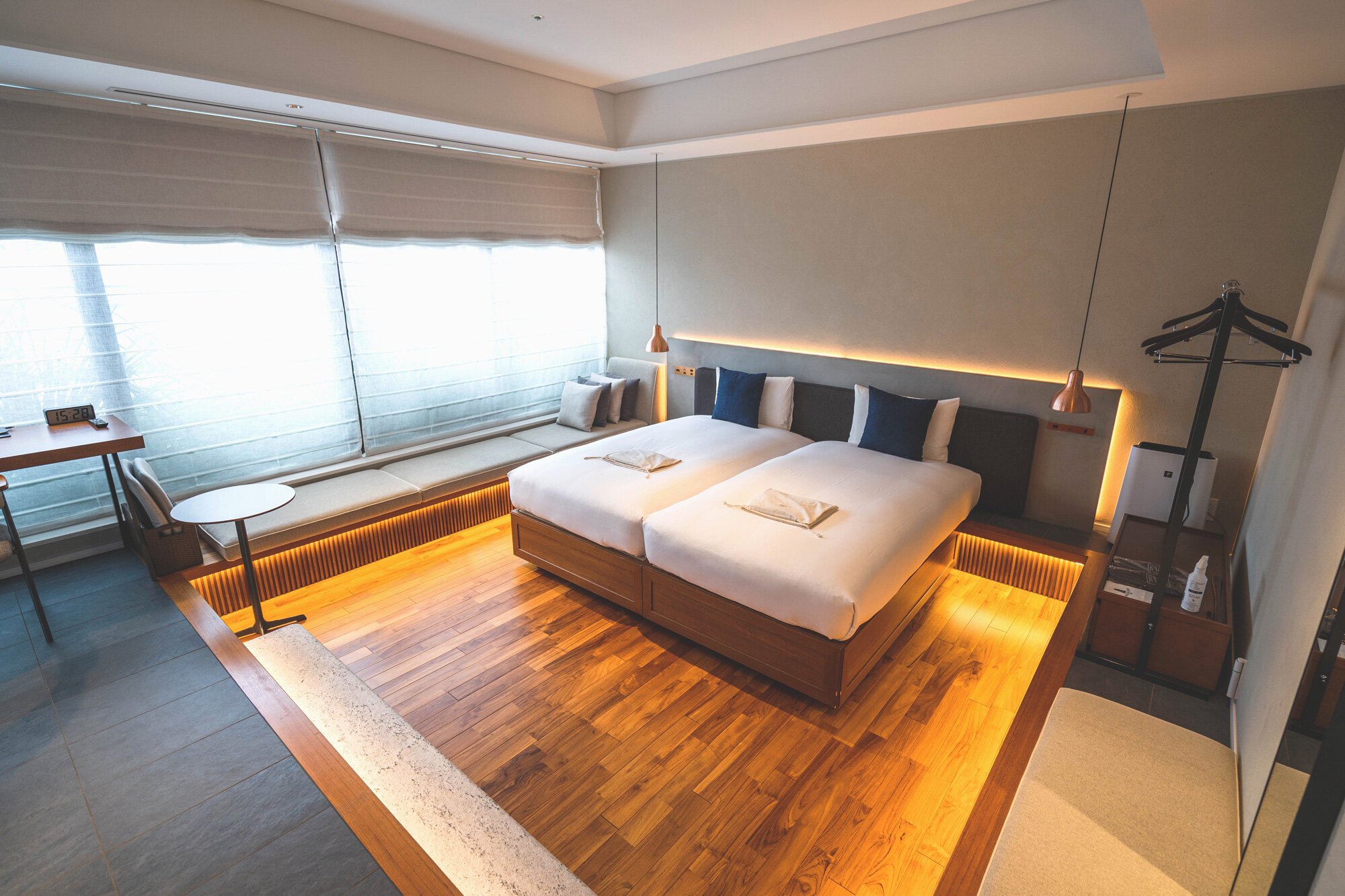
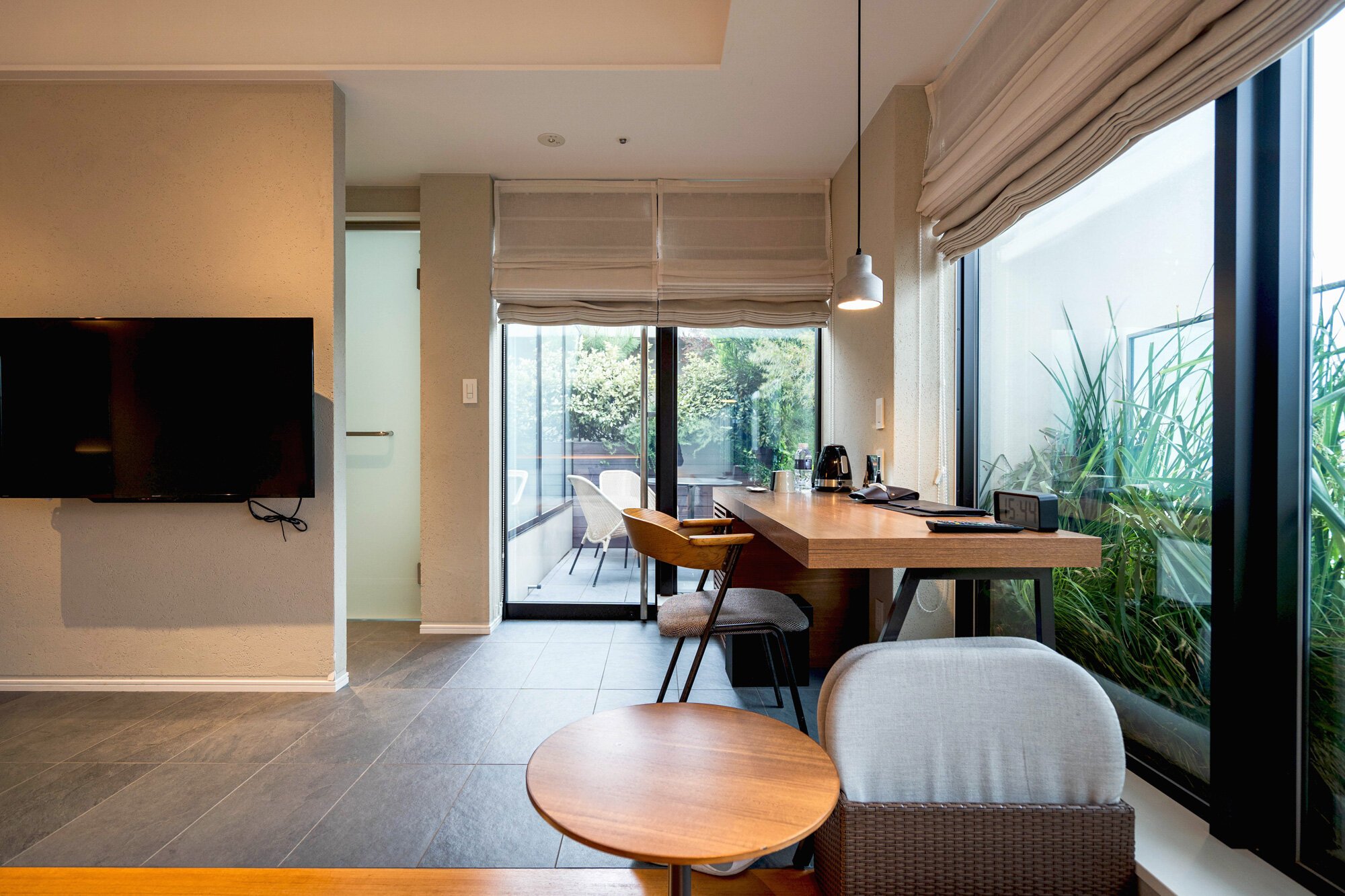
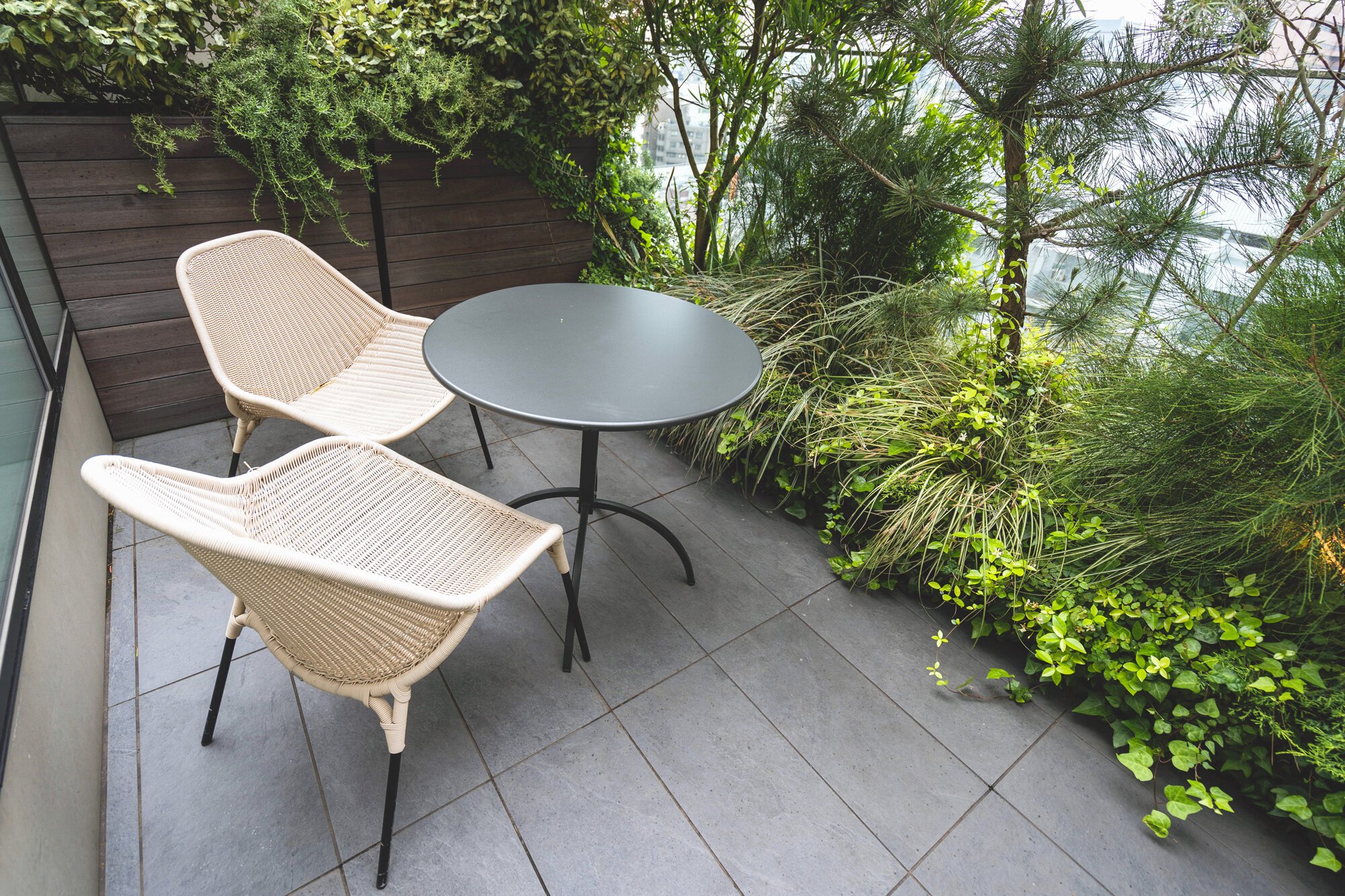

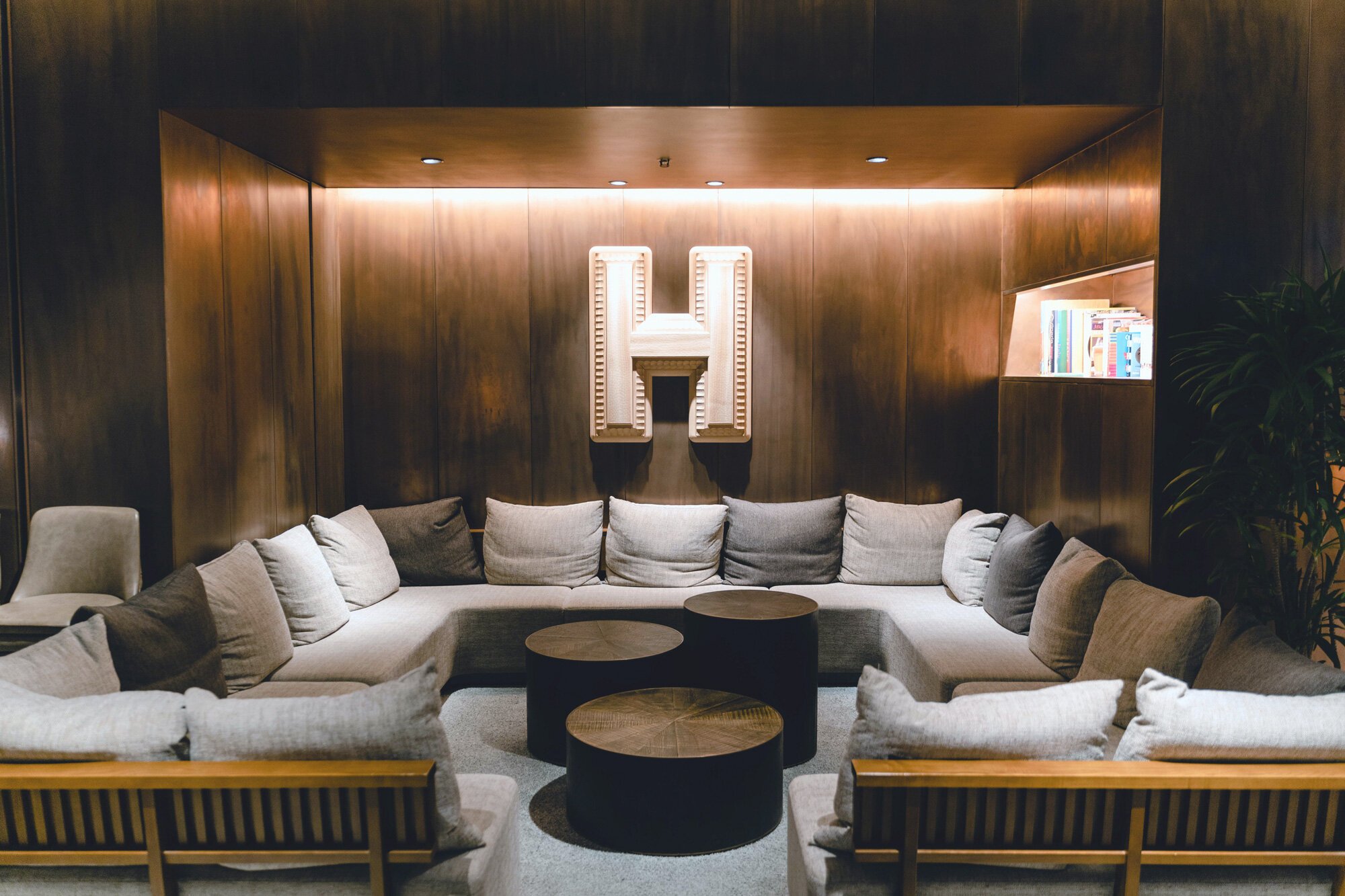
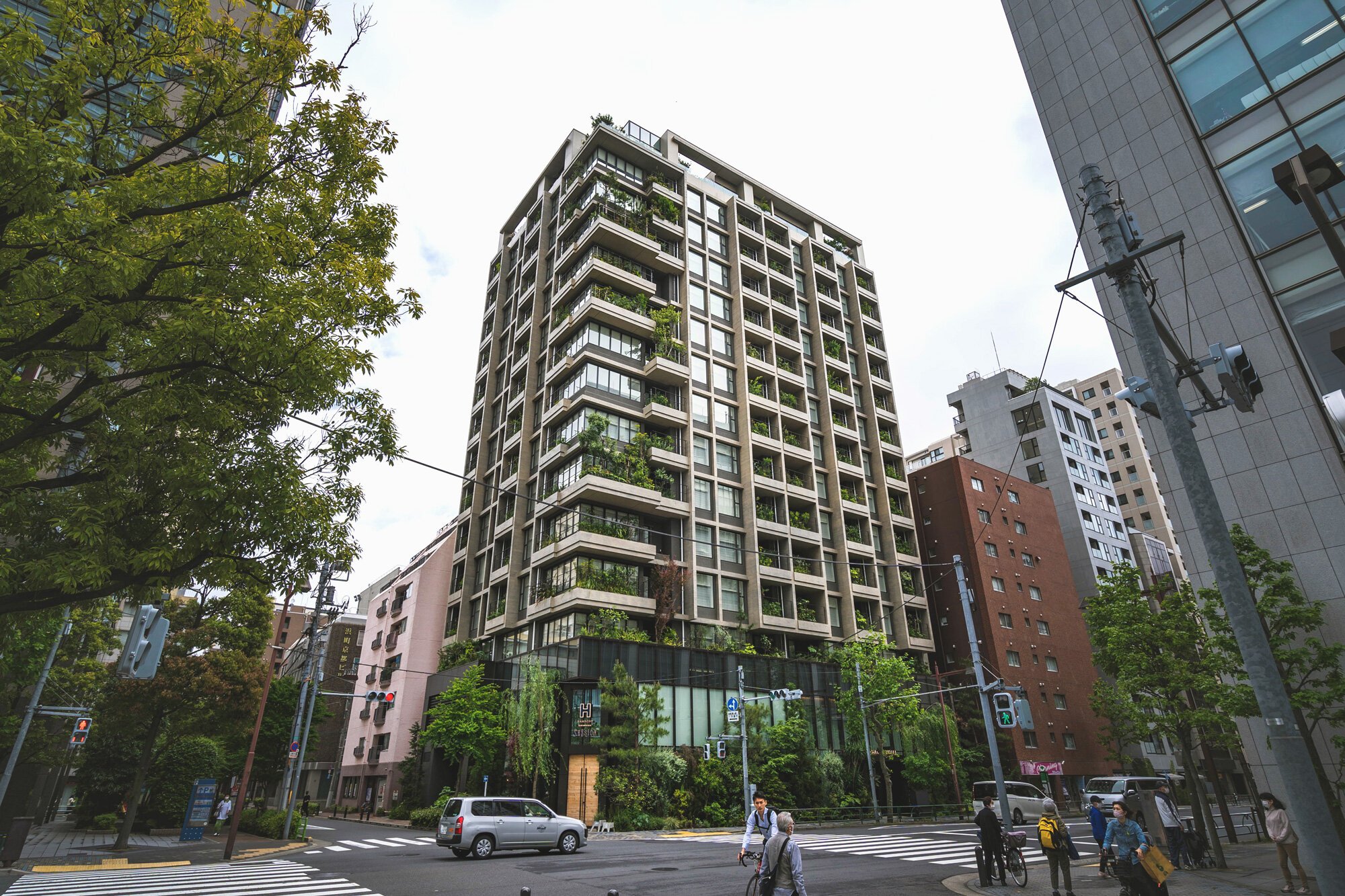
Here’s a video of the hotel and what we did in Ningyocho:
What we did
The times that I’ve visited Ningyocho, there was either no destination or the purpose was to eat at a specific place.
The early spring is a nice time to go because there’s an area called Amazakeyokocho, or “sweet sake alley”. There are shops that serve hot amazake, which is a sweet, rice porridge drink, and it really hits the spot on a cold day while exploring the town.
My recommendation is to pick a place to eat, bring a camera and enjoy the sights of the town while there. Here are some places that I’d recommend.
Where we ate
Tamahide
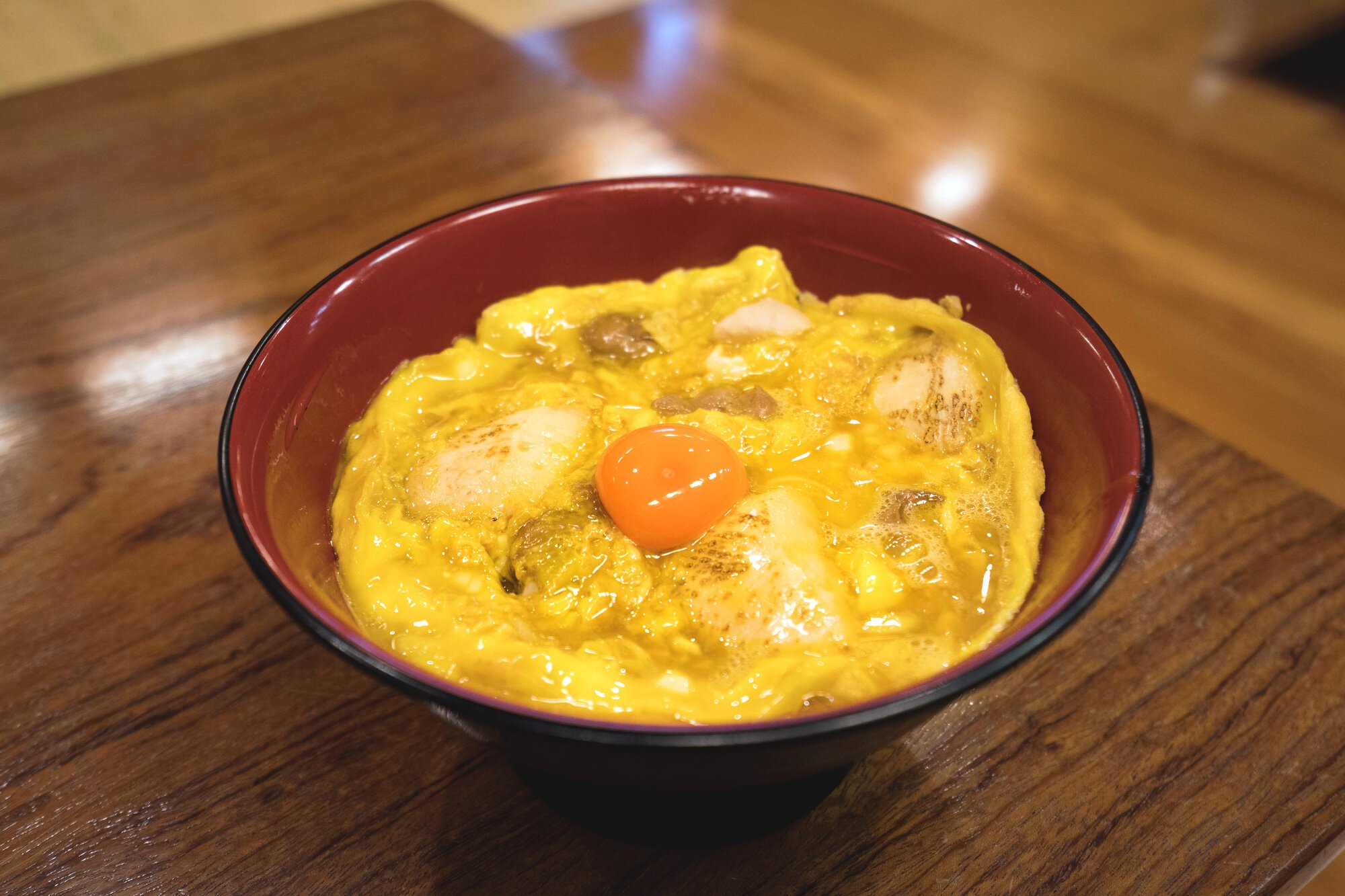
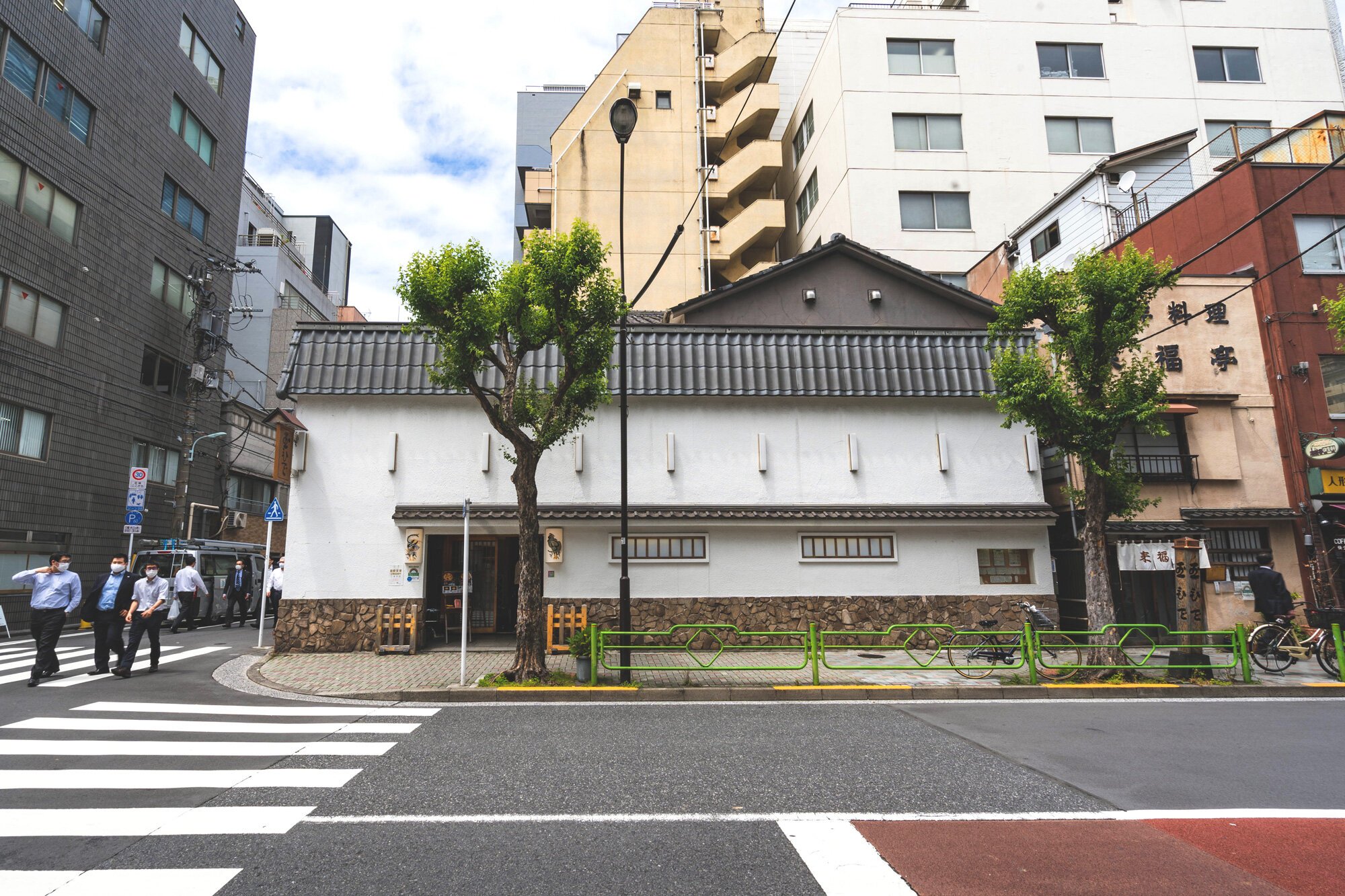
Tamahide is credited as being the original server of oyakodon, which is mainly known to be chicken and egg on rice. They first opened in 1760 which means they’ve been in business for over 250 years.
They originally were a higher end shamo nabe, or gamecock hot pot restaurant. In the late 1800s, they noticed people putting their remaining food on their rice and mixing it up, which is how the idea came about. They tried it, and were originally bashed for it because putting food on top of rice was considered low class and peasant-like. But people secretly enjoyed it and so they’d deliver the meals to them at home.
Fast forward to today and it’s a well known dish. One bowl is 2,800 JPY (~ USD $25.50). Tamahide is usually extremely crowded, so go early. While it wasn’t the best oyakodon I’ve ever eaten, it was great, and it’s quite a privilege to eat at the original spot.
nel
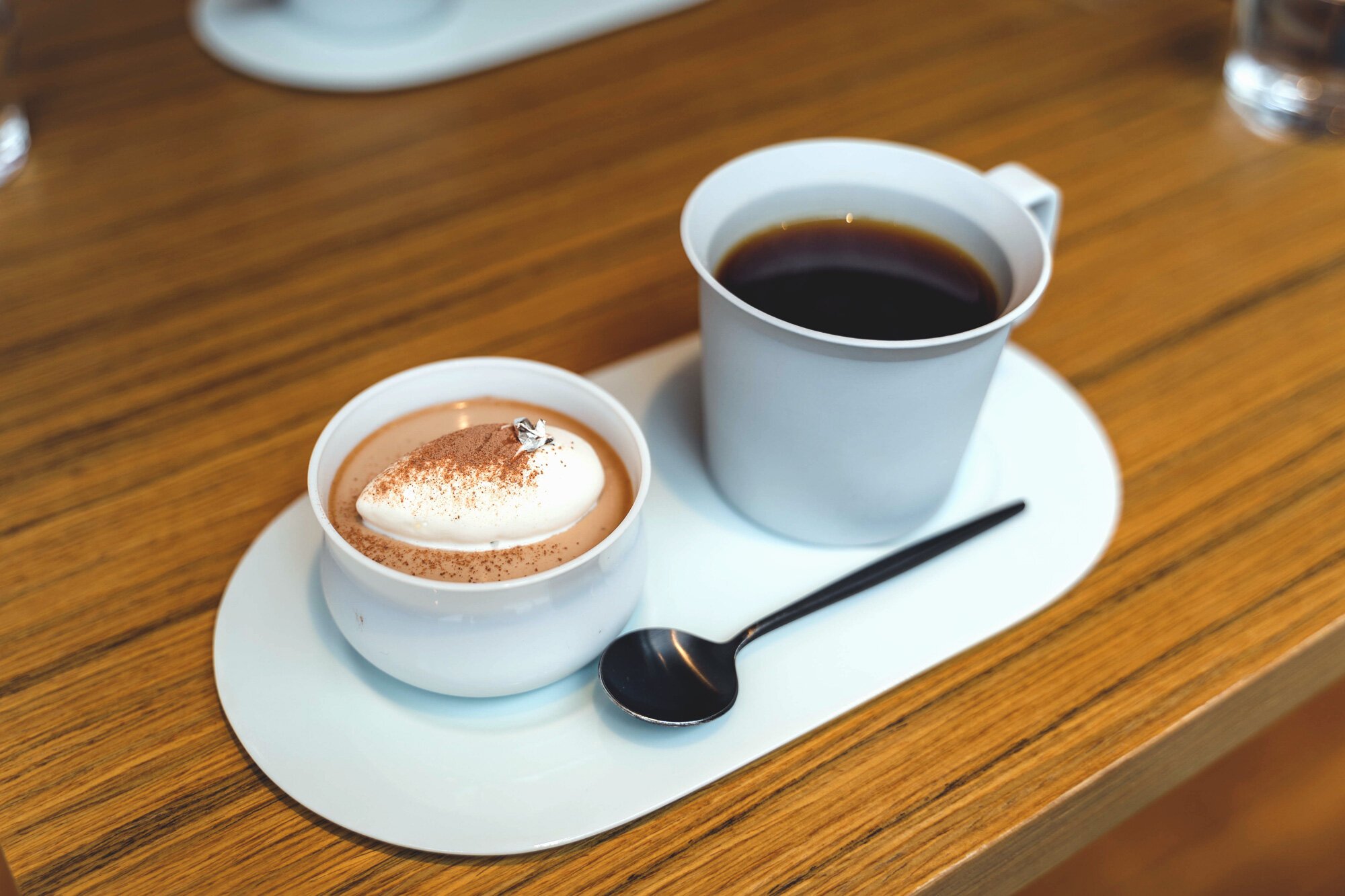


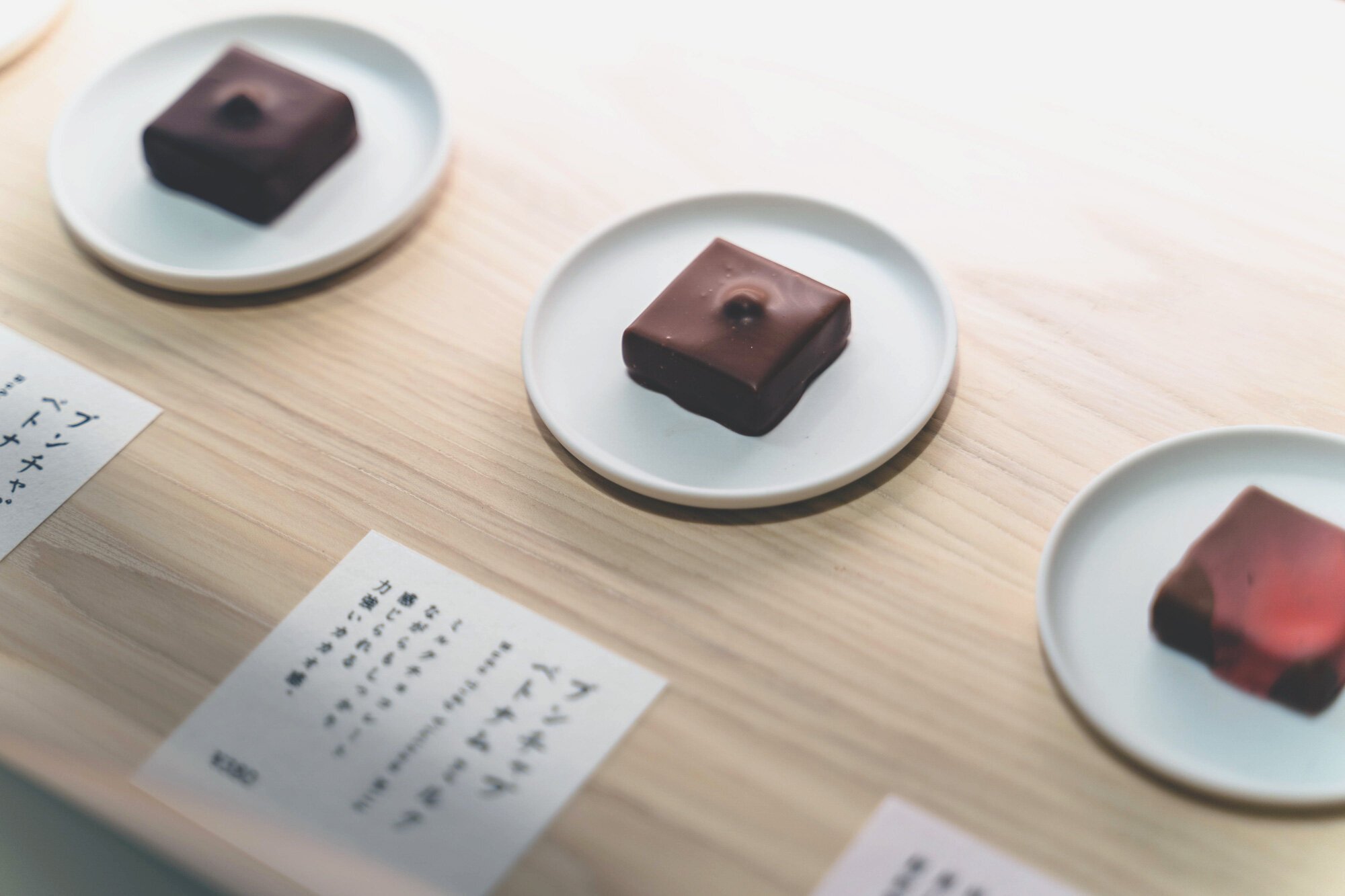
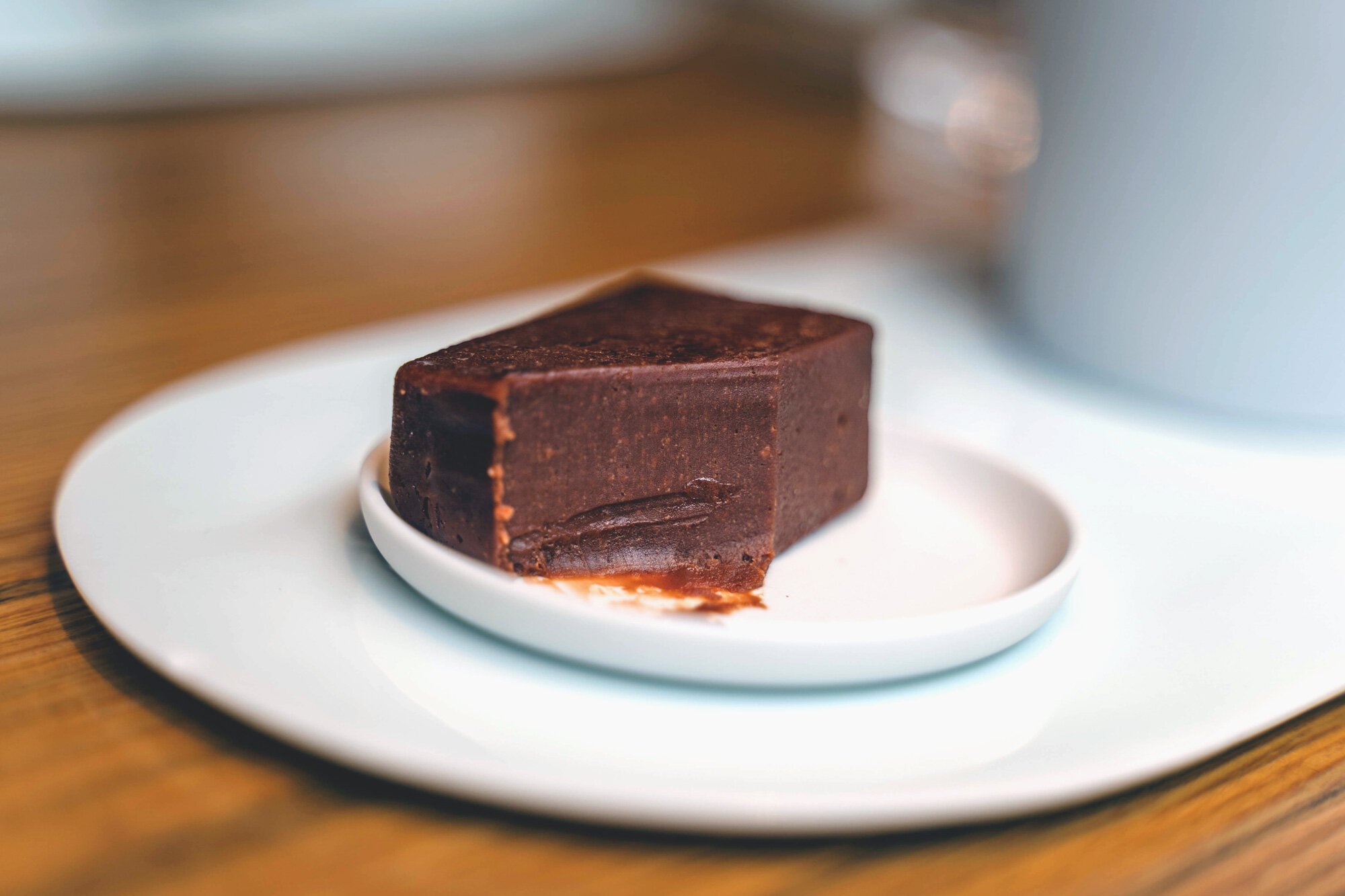

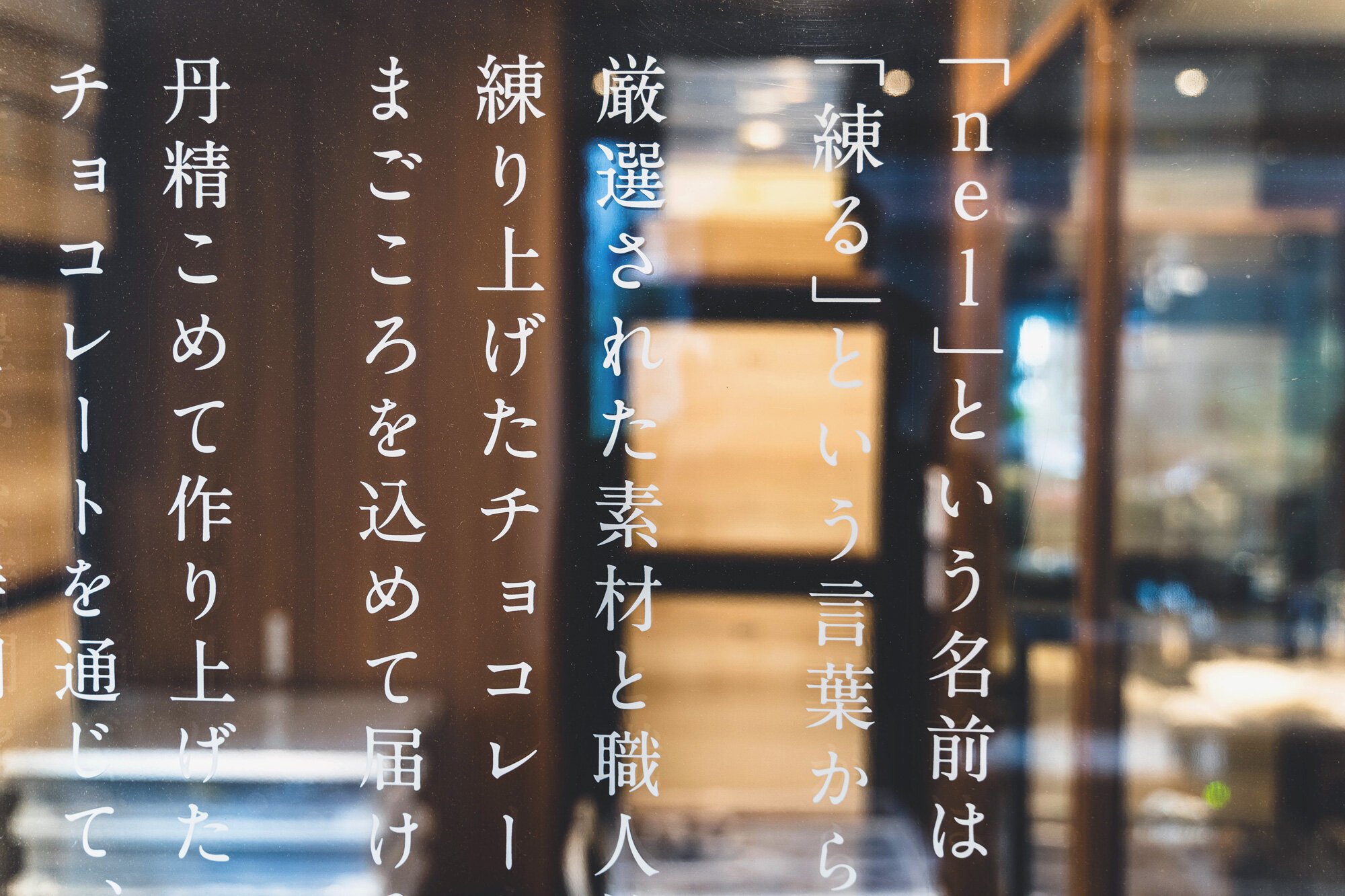
nel is a bean-to-bar, craft chocolate shop located in the Hamacho Hotel. Its name comes from “練る/ neru” in Japanese which is to knead.
The chief chocolatier here has studied under an international award winning chocolatier in Kyoto, worked as a sous-chef, as well as in patisserie in a Luxembourg, France.
They have coffee sets (972 JPY / ~ USD $8.85) and also have a range of different chocolates and chocolate tablets, and their high quality is easy to recognize and taste.
Ningyocho Imahan
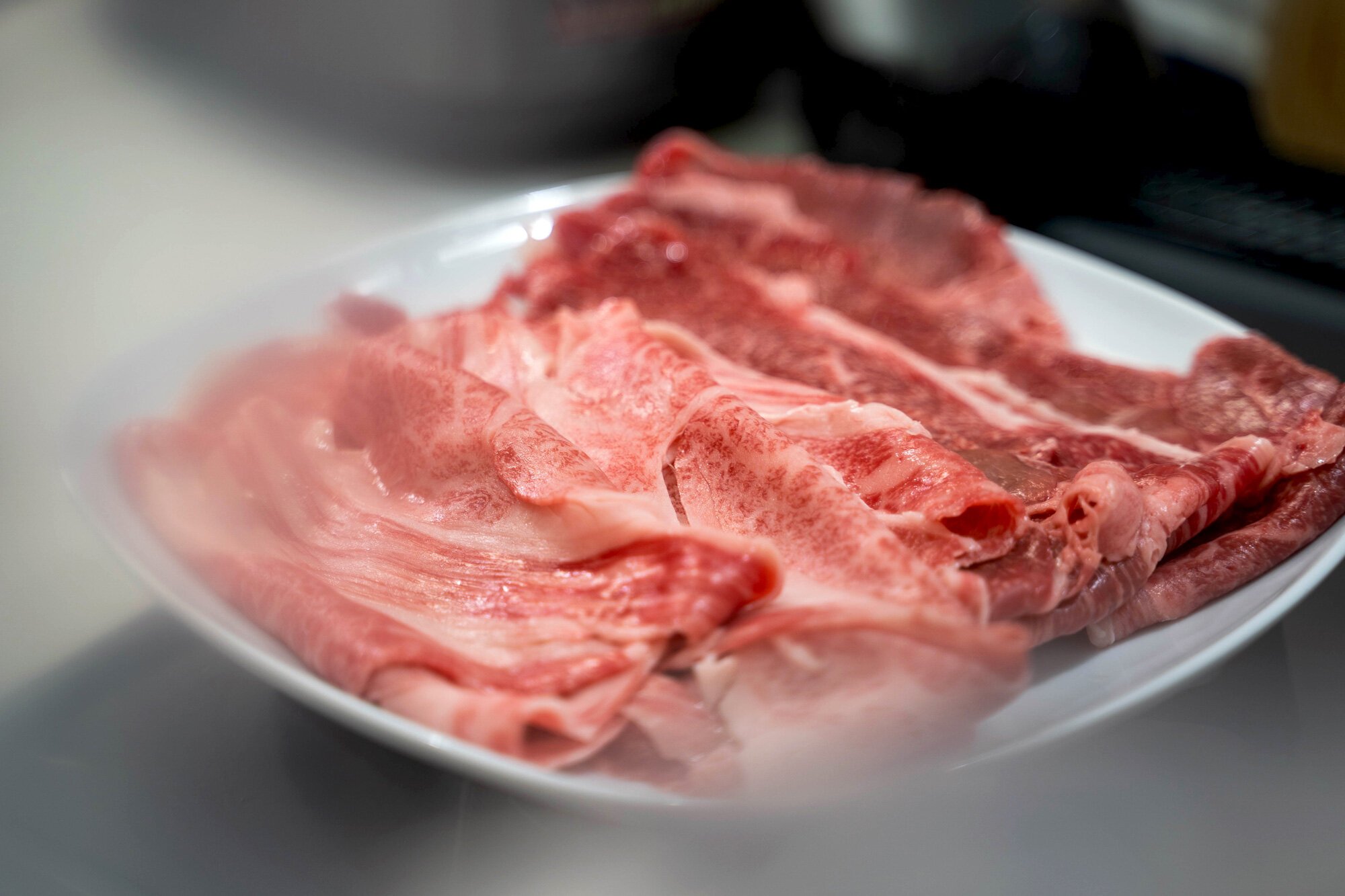
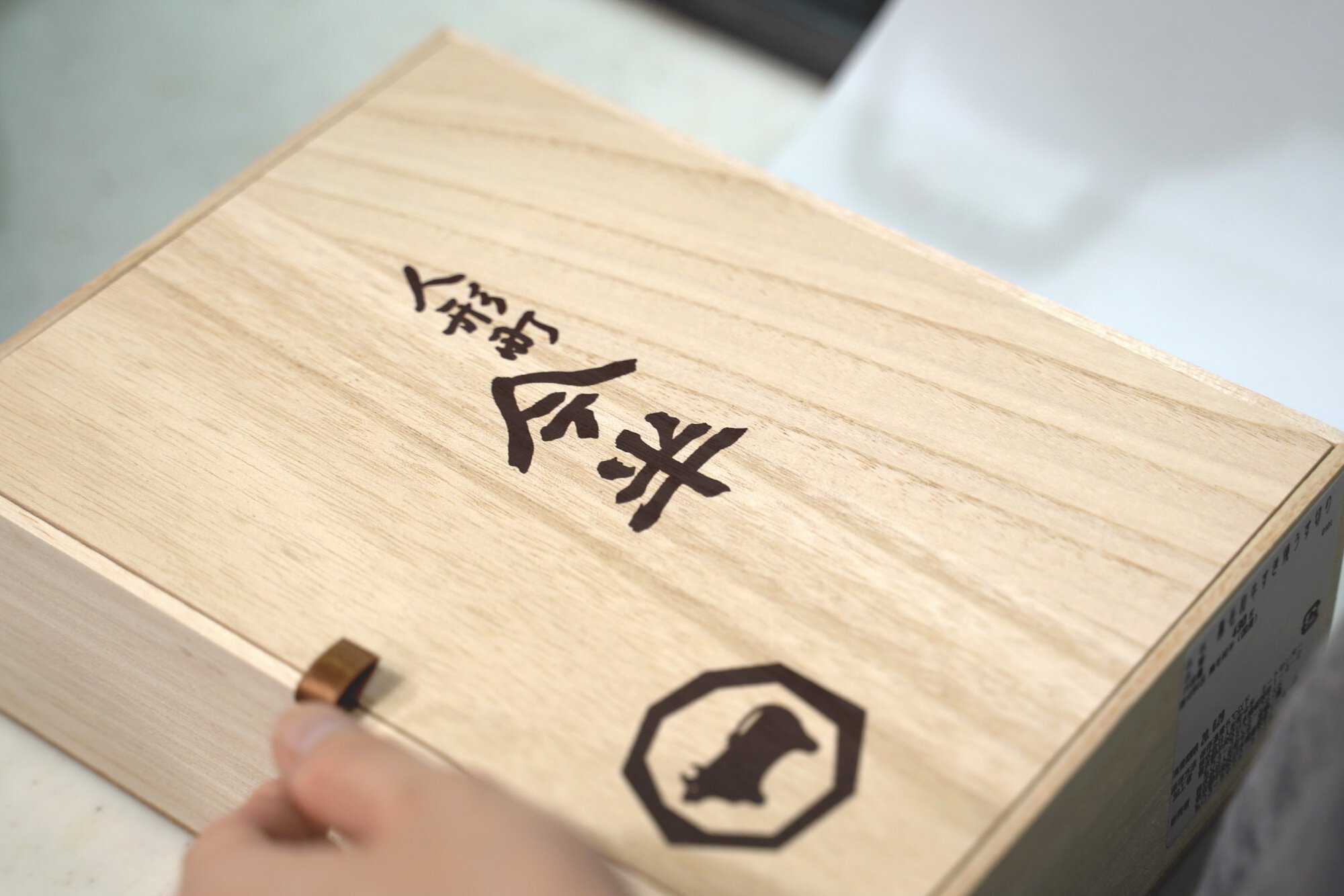
Famous for their Wagyu meals, Imahan dates back to 1895. They specialize in sukiyaki, but also prepare the beef in various different ways.
Their courses, services and overall ambiance are impeccable, and a place that I’d list as a must-do on an itinerary.
We were also gifted a box of their beef and it was nothing short of amazing. We used it to make Kansai-style sukiyaki - here’s a video of that.
Itadaki
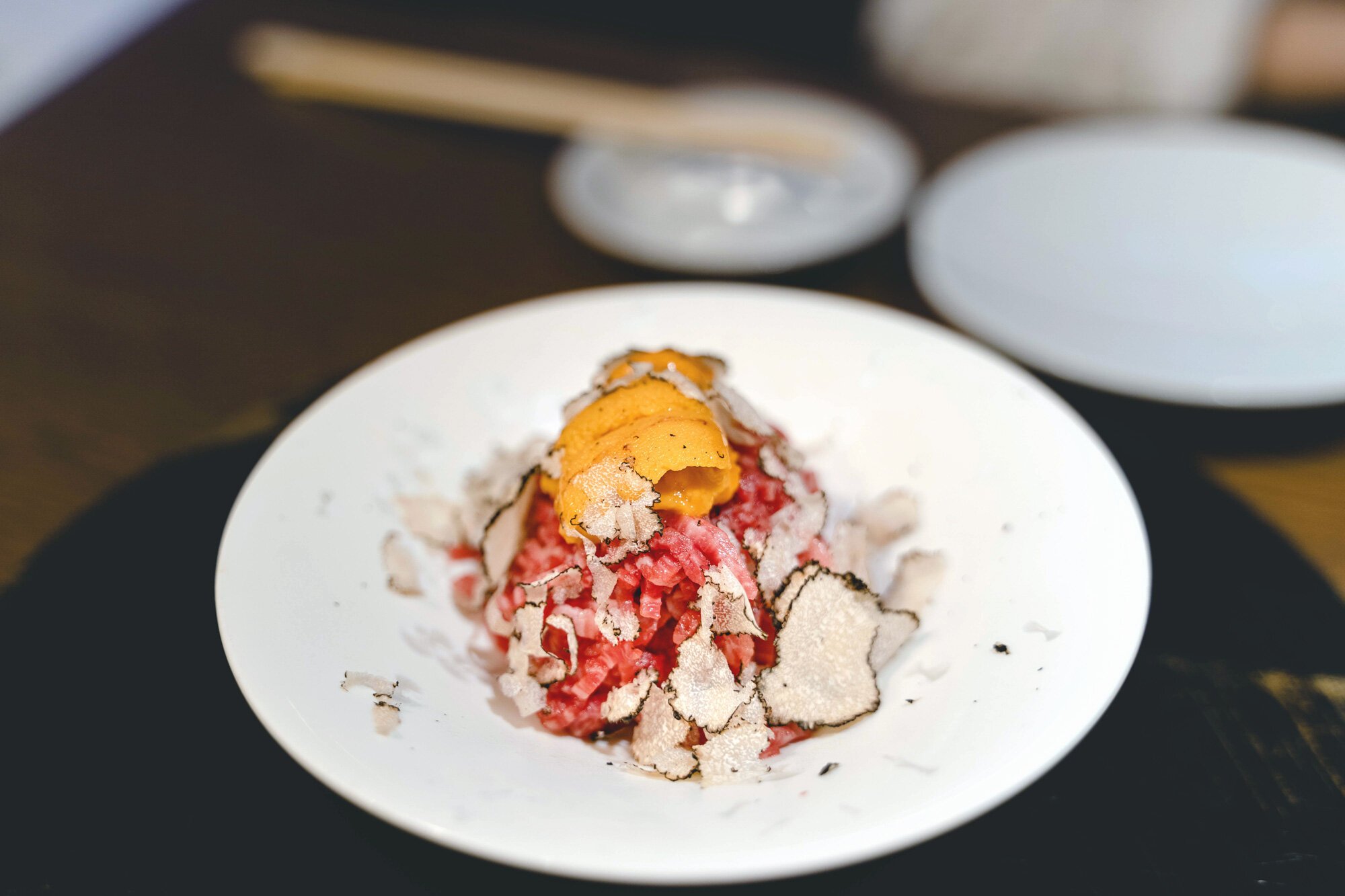

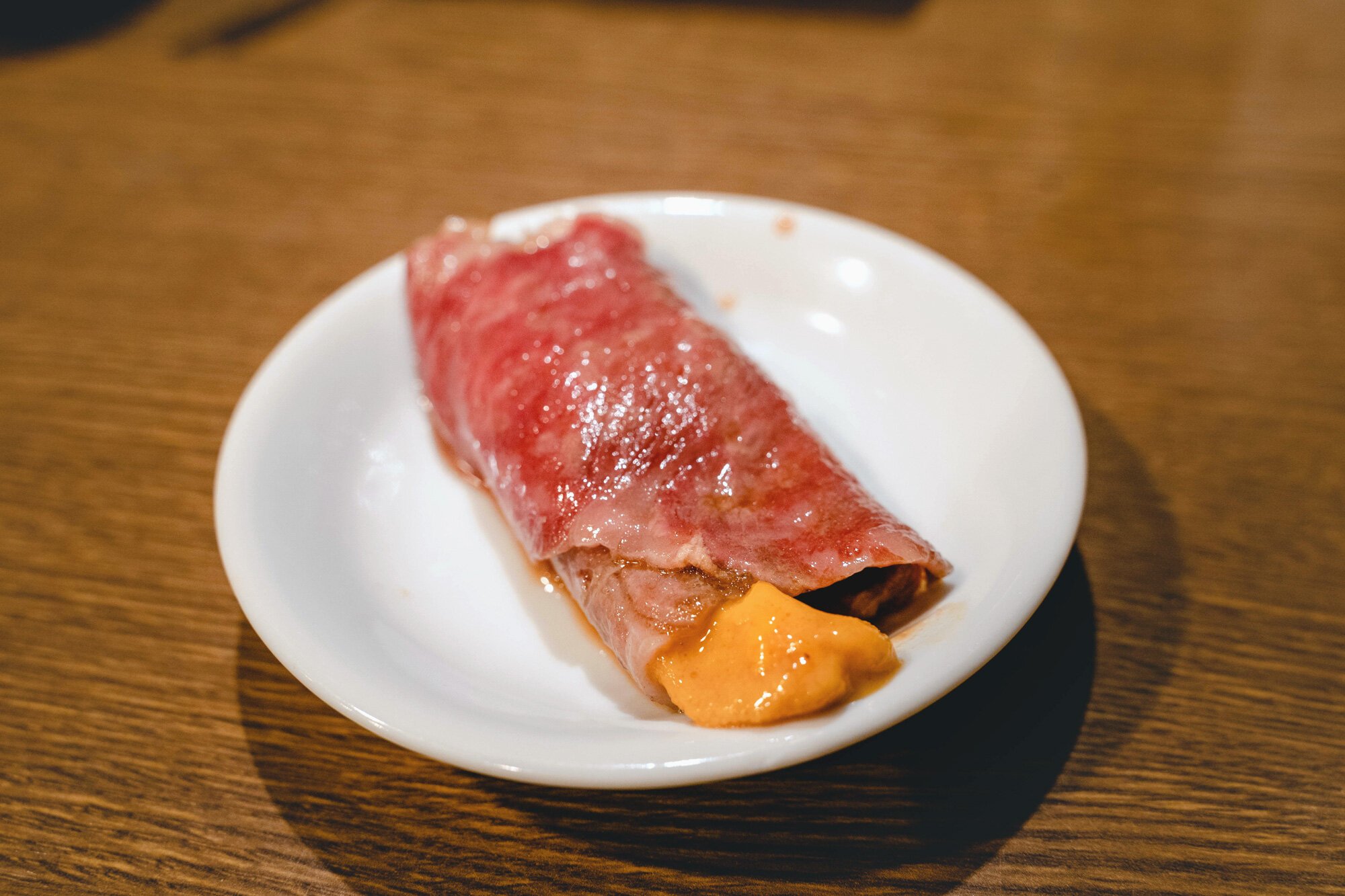
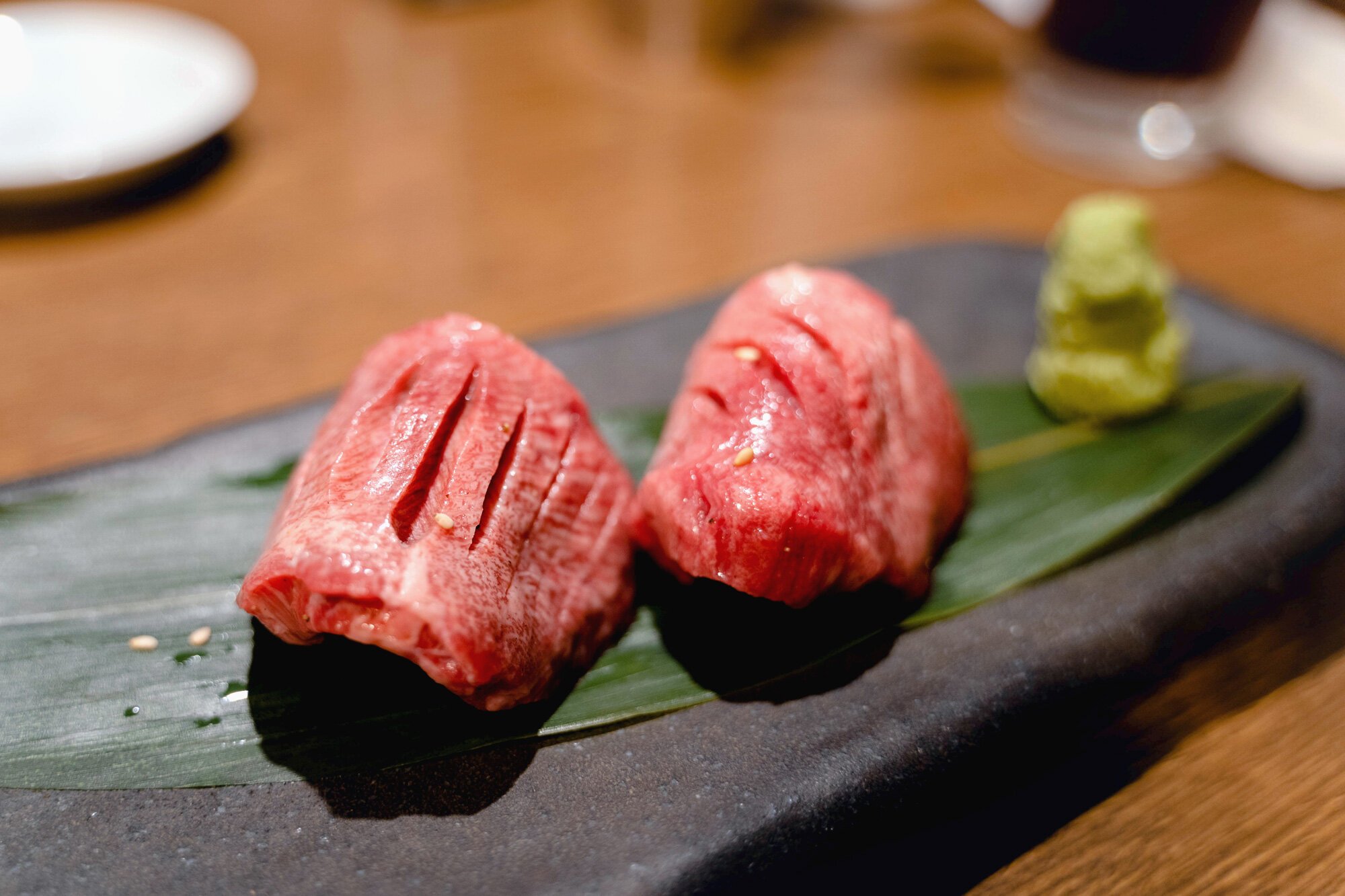
Itadaki is a yakiniku restaurant that specializes in Tajima and Kobe Wagyu beef.
Rated as a very popular yakiniku resturant on Japanese review app Retty, everything here is delicious. The raw beef items may not appeal to everyone, but I highly suggest trying them out as well.
Like most good yakiniku spots, it can get a bit pricey (uni-topped loin is 2,500 JPY / ~ USD $23) but I definitely recommend trying this place out if you’re looking for some good yakiniku in the area.
Unison Tailor

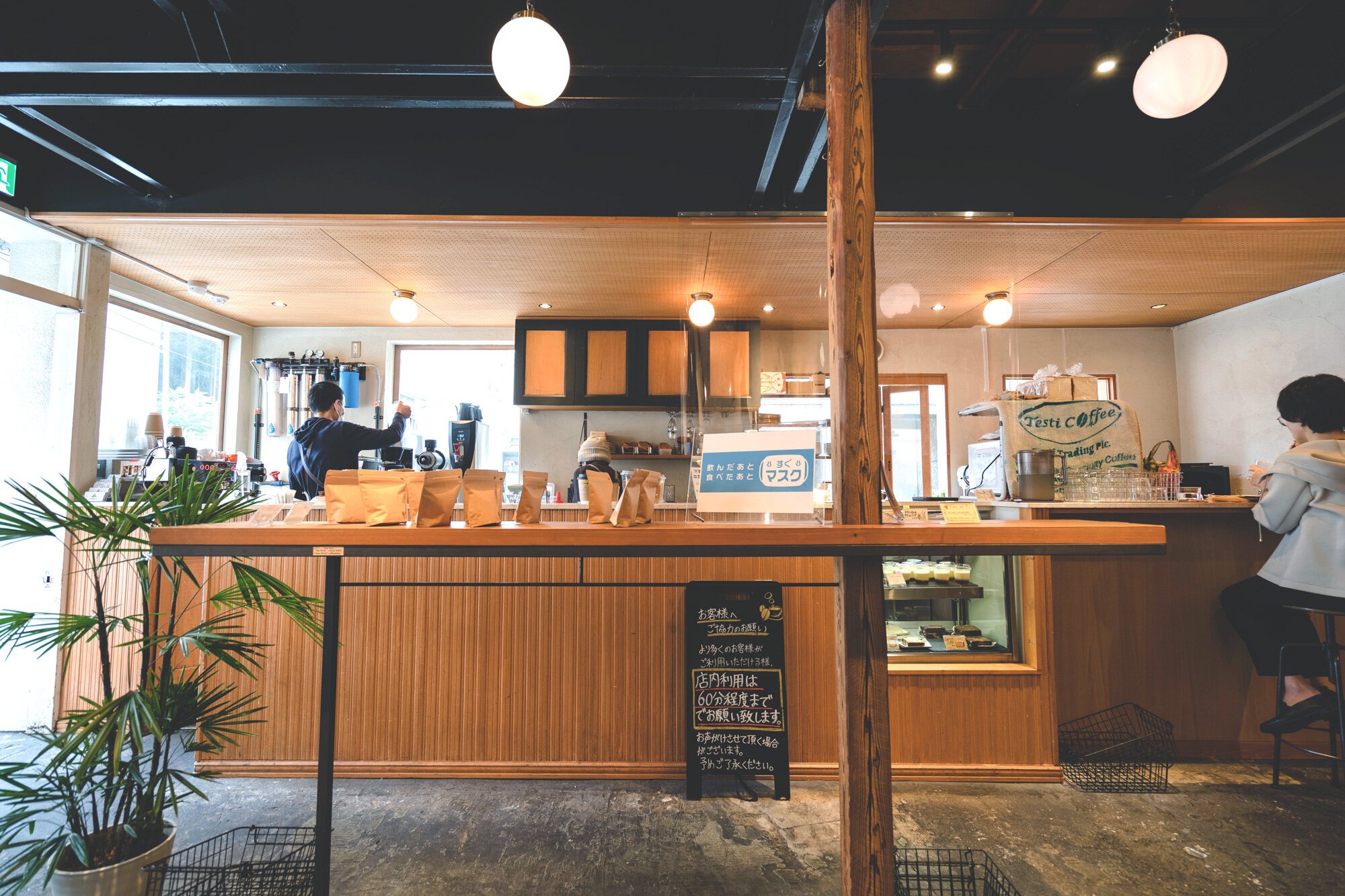
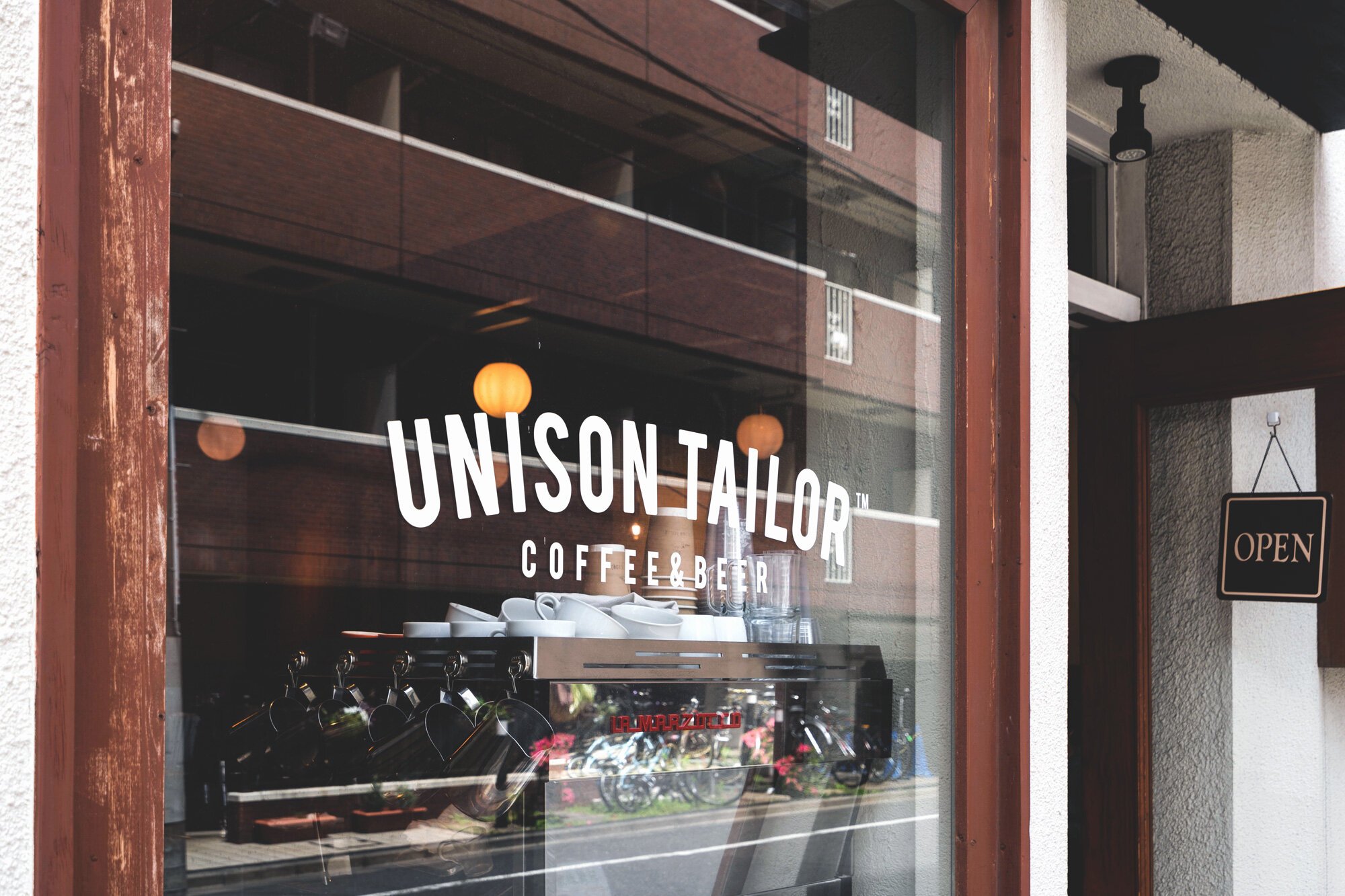
If you’re walking around and exploring the neighborhood, you inevitably will need to take a break. We took ours at Unison Tailor, a small coffee shop.
The shop has a several tables and a small bar counter facing the window. Their menu ranges from baked goods to hot dogs and toast.
We stopped for cups of coffee, which are about 500 JPY (~ USD $4.55), and a flan pudding. Worth hopping in here if you’re looking to take a little break.
Keep in touch:
More travels:
Hirosaki
A unique city in Aomori prefecture, Hirosaki is known for its apples and western architecture.
Hirosaki specifically is the area in Aomori famous for apples
There are many western styled buildings in the city that date back to the Meiji era
I traveled up to Aomori prefecture in February 2021. Amongst the stops on the 3-night trip was Hirosaki.
How to get there
We took the Ou Line limited express train from Aomori Station. We only spent a day in the city and stayed at Hoshino Resorts KAI Tsugaru, which is also located along the same train line.
About Hirosaki
Hirosaki is a small city of less than 170,000 people, and is to the mid-east part of Aomoro prefecture. It’s centered around Hirosaki Station and Hirosaki Castle, and while that central area is somewhat walkable if you really wanted to, things are a bit far apart.
An old wooden building with a post box
There are a lot of interesting buildings that date back to the Meiji era, and these are often the main sights to see. One of Japan’s notable Starbucks is in one of these buildings here as well.
Hirosaki is most known for its apples, and has used the slogan "Apple Colored Town Hirosaki". It really is as it accounts for 20% of Japan’s apple production. A lot of the orchards can be seen as you catch the Ou Line train.
Former Hirosaki City Library
Where we went
It’s pretty convenient to see the main sights in the city. There’s a Dotemachi Loop Bus that starts at Hirosaki Station and goes in a loop that includes Hirosaki Castle.
We rode this to the city hall stop, which is right in front of the castle grounds. The bus comes frequently and only costs 100 yen.
Our first stop was to have lunch at the Taishō Roman Tea Room, which is on the Former Fujita Family Villa grounds. I’ll showcase more about this at the bottom.
We then explored the Hirosaki Castle grounds. The moats were frozen and grounds covered in snow - which was nice - but they say that the best time to visit is spring when all of the cherry blossoms are out.
You can see some of our time in Hirosaki as well as Aomori city and the ryokan resort we stayed at in this video:
After the castle, we walked around the surrounding area and checked out some of the city’s notable western buildings.
Many of them were built in the Meiji era, and they help add a unique character to the city.
Visually speaking, I found Hirosaki to be more interesting than Aomori and Hachinohe cities in the prefecture, and I’m glad that I could stop by.
Hirosaki Former 59th Bank
Former Too Gijuku Missionary Residence
Former Fujita Family Villa
Where we ate
Taisho Roman Tea Room
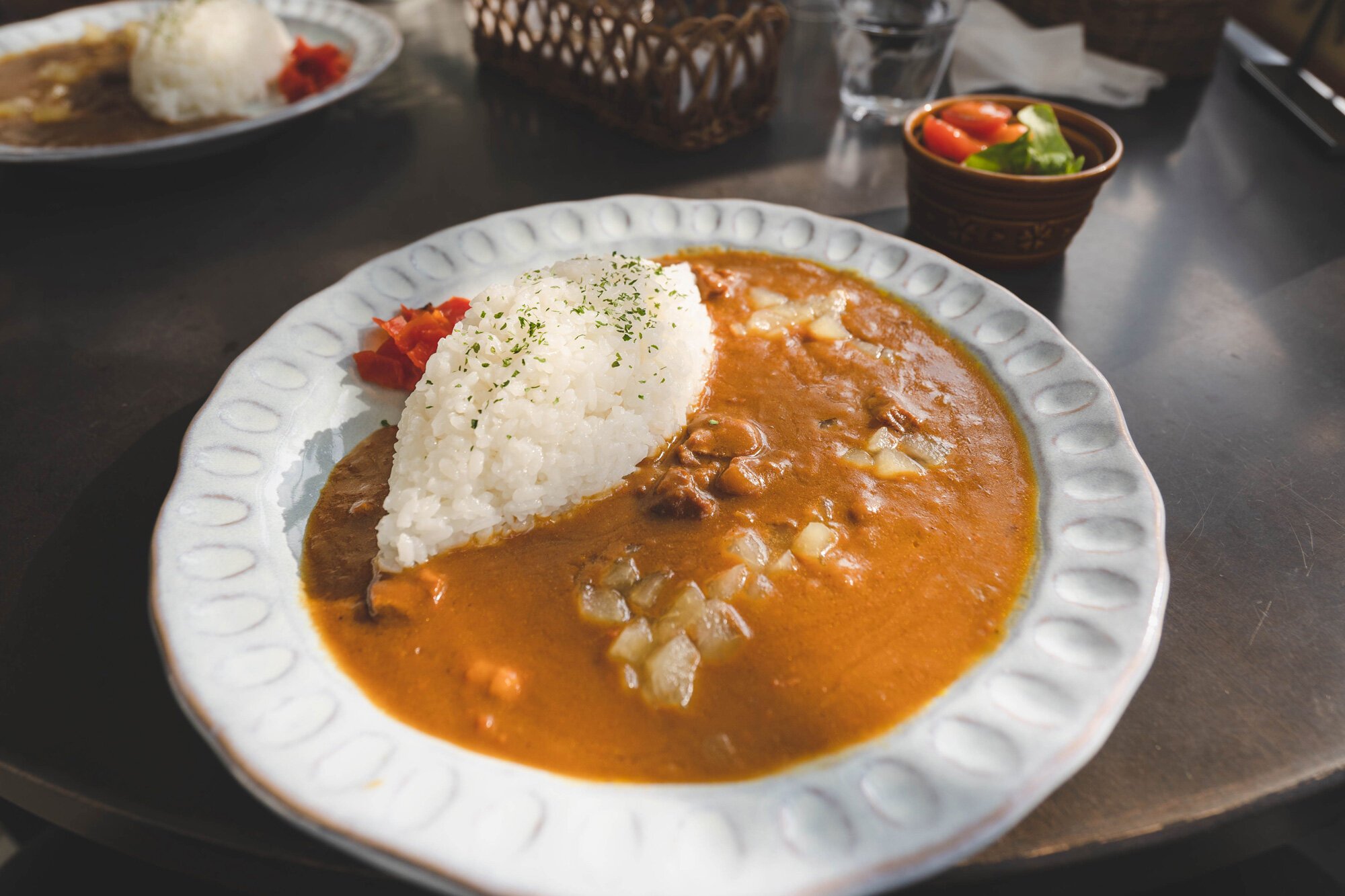

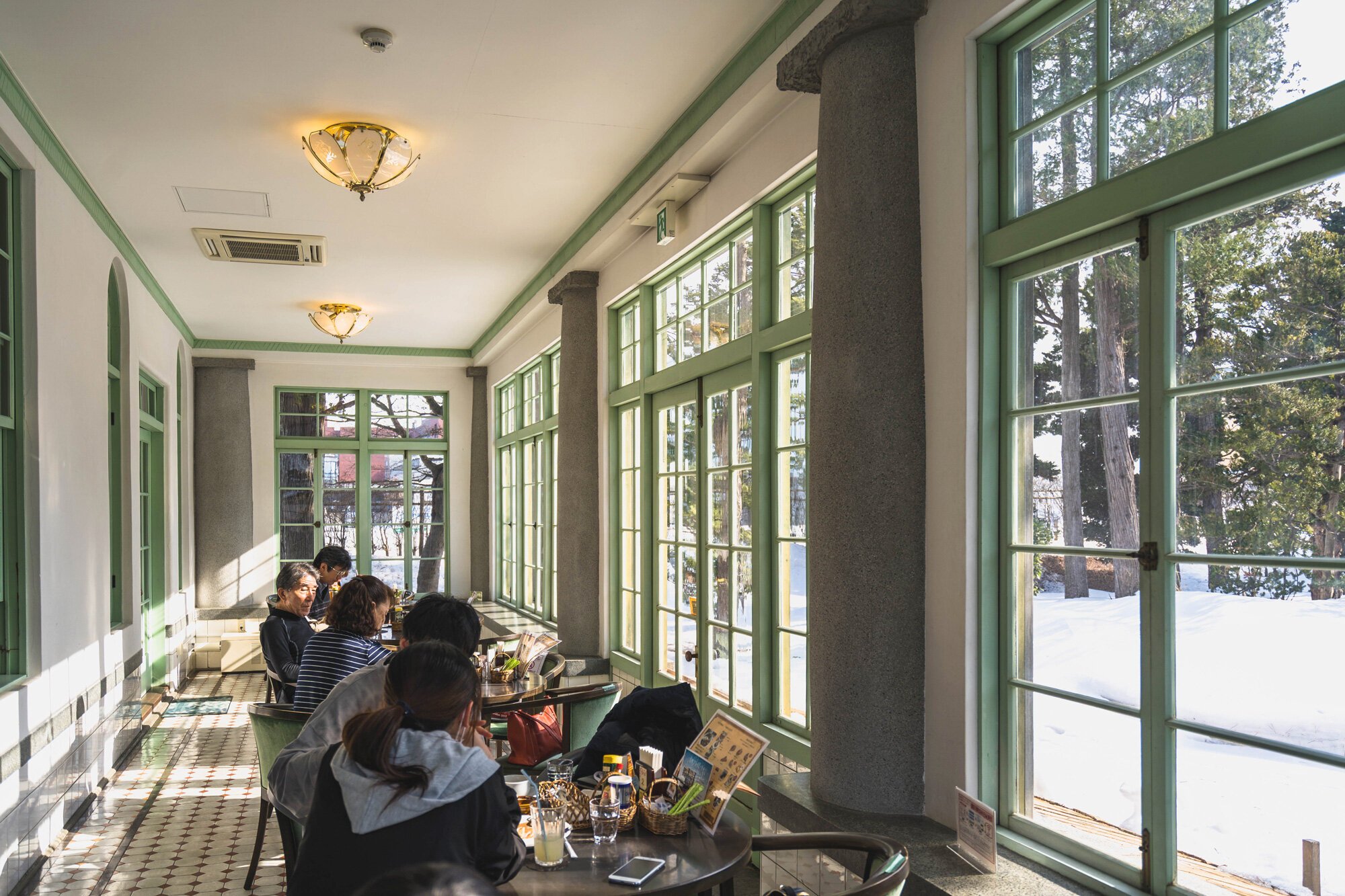
This is a place that embodies Hirosaki.
In the veranda within a Meiji-era western home, the Former Fujita Family Villa, this tea house specializes in foods revolving around the city’s specialty - apples.
In the soft, early afternoon sun, we enjoyed a meal of apple curry followed by some tea and apple pie. Nice atmosphere and good food.
Starbucks Hirosaki Koen-mae
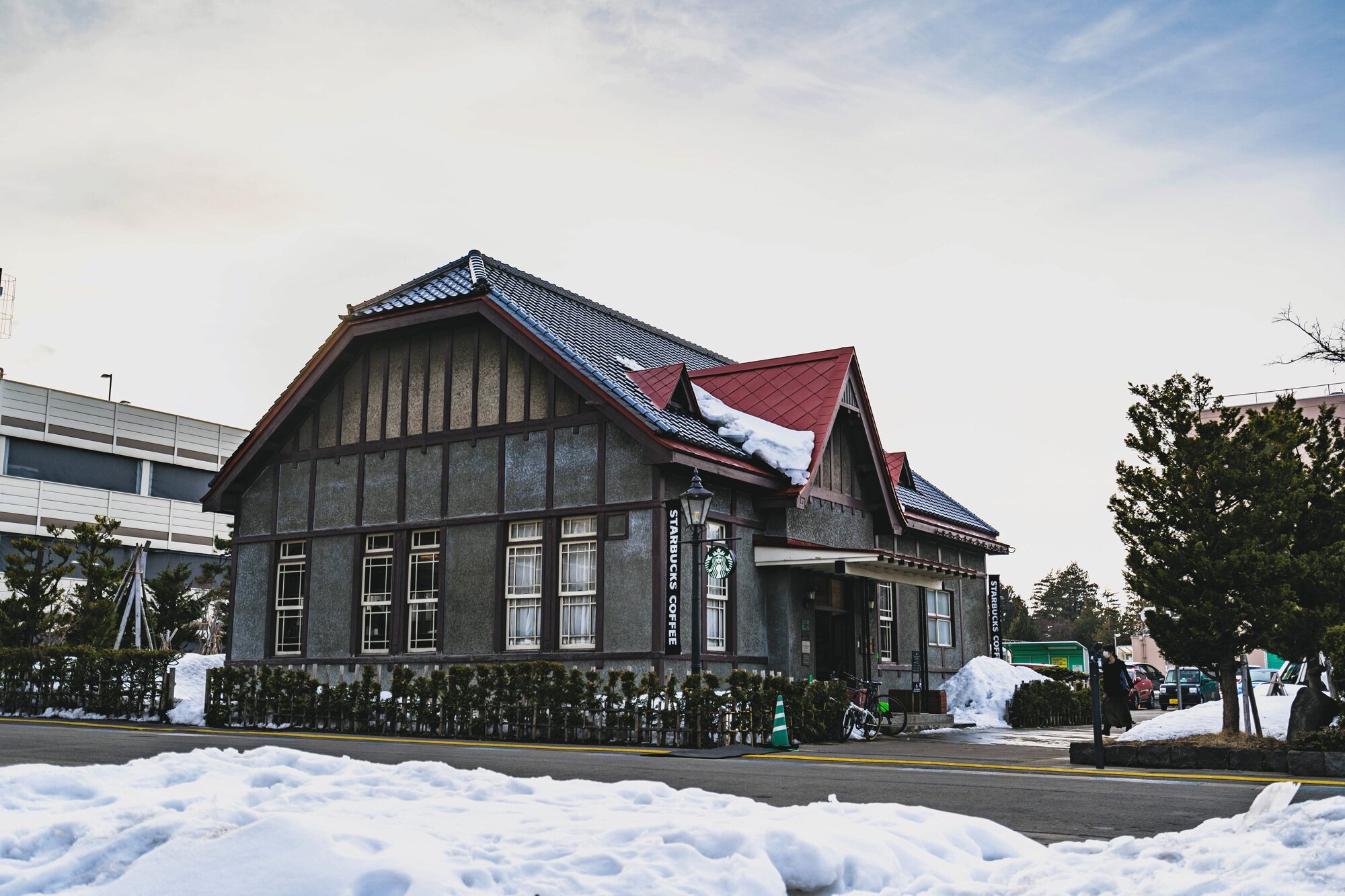
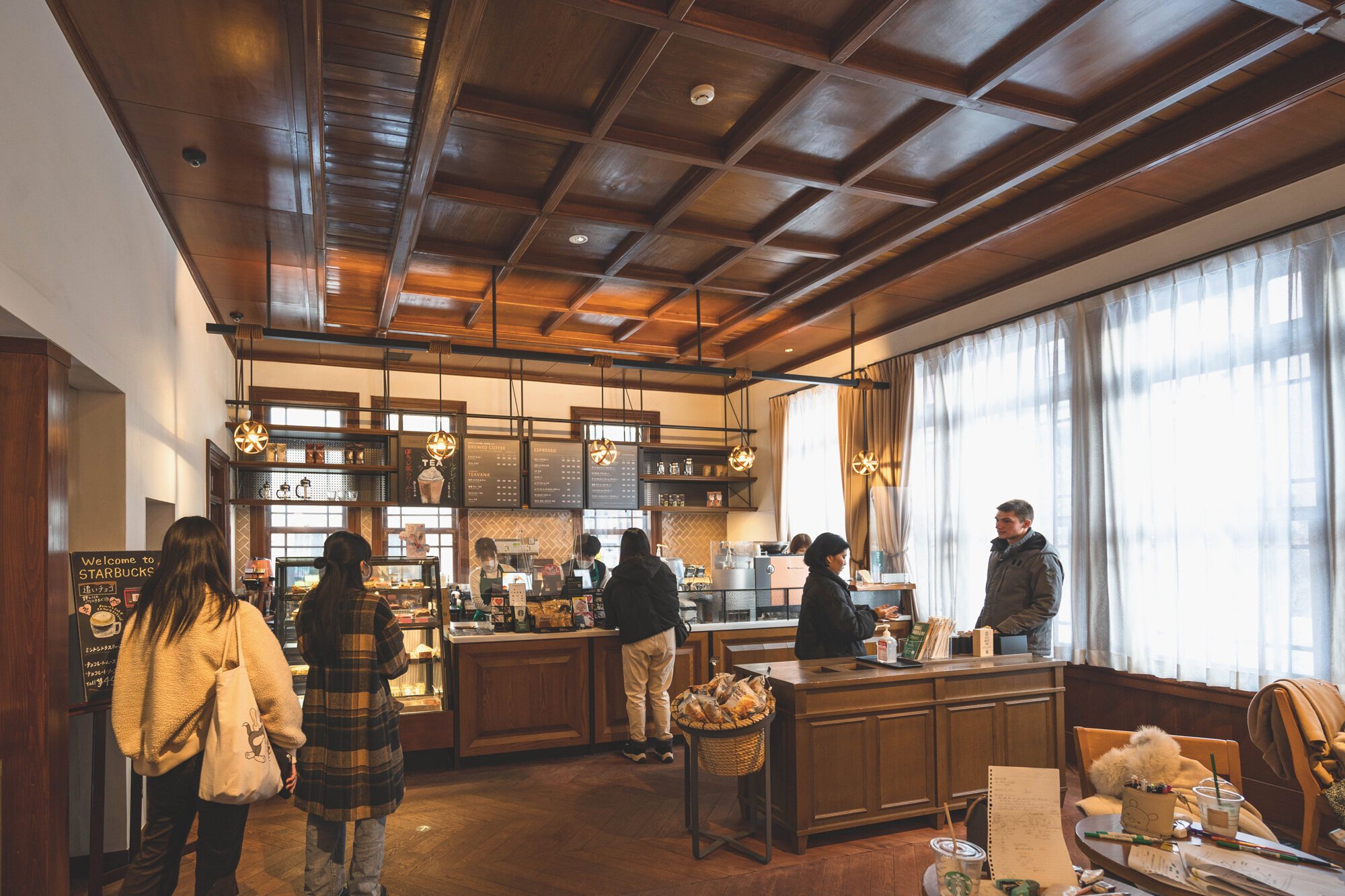
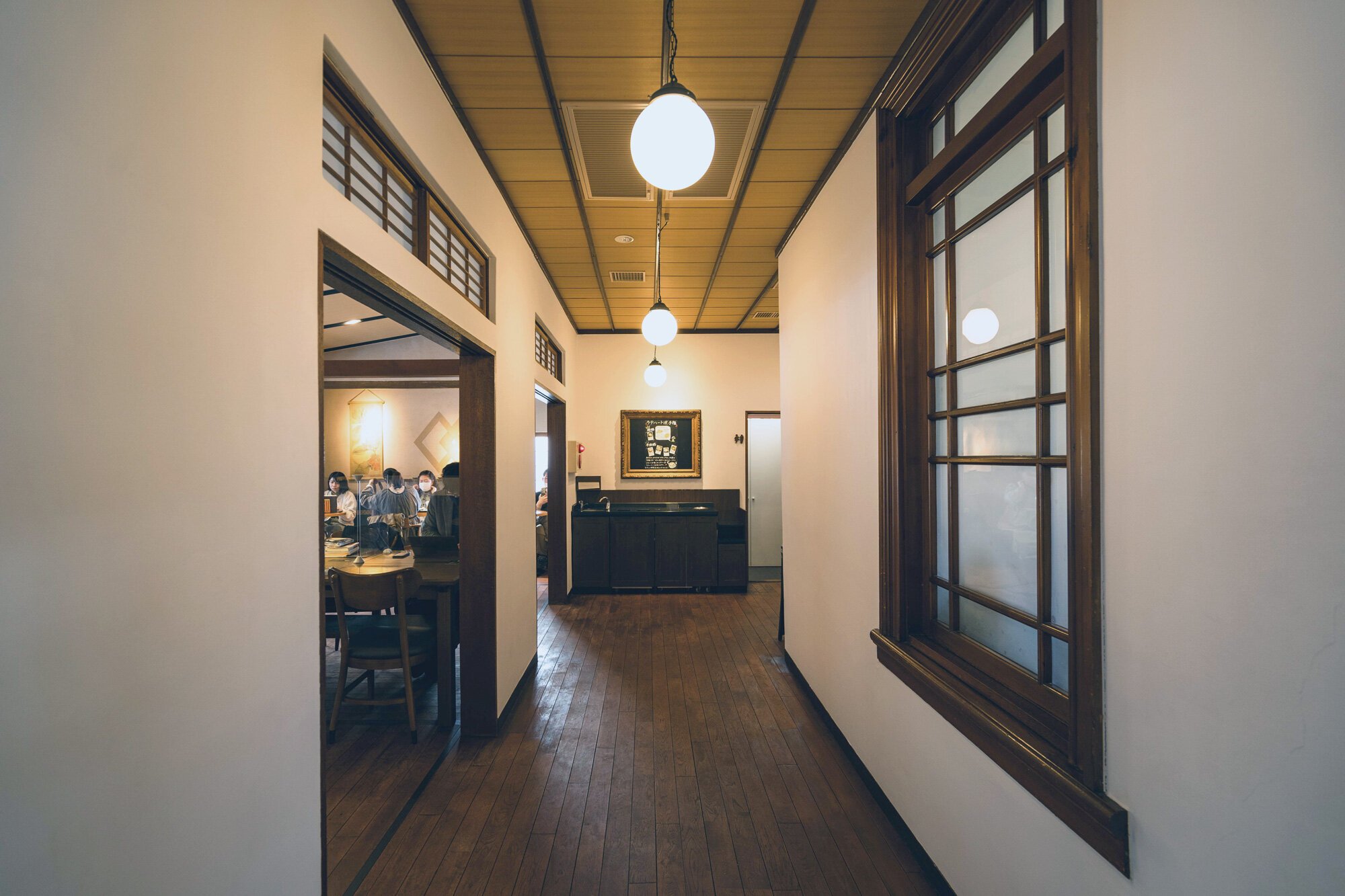

This Starbucks location, Hirosaki Koen Mae, is one of the notable ones in Japan due to the building it’s in and how it’s designed to naturally fit into the environment.
The building used to be the official residence for the commander of the Japanese 8th division, then it became the mayor’s residence before being registered as one of Japan's Tangible Cultural Assets.
Keep in touch:
More travels:
Aomori: Hoshino Resorts KAI Tsugaru
A winter escape in Aomori at the Hoshino Resorts KAI Tsugaru, an amazing boutique ryokan full of local culture.
In Owani onsen, a rural area of Aomori, is Hoshino Resorts KAI Tsugaru, a fantastic retreat that lets guests dive into the local, Tsugaru culture.
Hoshino Resorts is one of the most well known and sought after luxury hot spring and resort ryokan chains in Japan. If you’ve looked around at my Japan travels on my blog or watched some of my videos on YouTube, you may know that I’m a fan of their KAI brand. I’ve been fortunate to have stayed at their KAI Kaga resort while visiting Kanazawa, their KAI Sengokuhara resort while visiting Hakone, as well as others.
While traveling around Aomori in the winter of 2021, I was able to get another chance to stay at one of their locations.
How to get there
We took the Ou Line limited express train from Aomori Station to Owani Onsen Station. Owani Onsen Station is a very local station, and a Hoshino Resorts KAI Tsugaru van will come and pick you up if you tell them when you will arrive.
As you check-in, you can schedule your meals (2 time options per meal) and schedule any activities. We did one, which was to have a drink in an igloo outside (top image), an activity that they only offer in the winter. In the summer, the area transforms into a lake with lanterns.
The Owani Onsen area is very local and not really convenient without a car, but it’s fine since the purpose of going to these types of ryokans is to relax at the resort. And this one allows that just fine.
Library lounge and gift shop
Hoshino Resorts KAI Tsugaru, like other locations in this line, is focused on providing a local experience. A lot of the decor is from the area, using traditional patterns and techniques.
Tsugaru Koginzashi patterns decorate the room and resort
For example, the diamond-like pattern in decorations in the rooms and around the resort, as well as in the lighting in the halls, are called Tsugaru Koginzashi. It’s a traditional embroidery pattern devised by local farmers and primarily used on indigo fabrics, that’s been passed down through generations in the area.
Aomori’s Nebuta lantern decorations
After dinner, a traditional shamisen performance in the local style was performed by national champion Kohei Shibuya and a resident student of his. I have to say that they were impressive - a clip of their performance is in my video.
Rooms
We stayed in the Japanese-style Room TB2, a room that measures between 64㎡ big with 2 beds, a living room, bathroom with shower (you probably won’t need it).
The living room area
The Hot Spring
What makes Hoshino Resorts KAI Tsugaru’s onsen especially unique is the apples floating in the water. Aomori is known for apples, and they help give off a pleasant, sweet scent as you soak in the bath.
The water that flows through Japanese onsen hot springs vary and depend on where the water is coming from. Each has a slightly different combination of minerals carrying different benefits to the skin and body.
Hoshino Resorts KAI Tsugaru’s onsen water is from the Owani hot spring and is pretty clear in color. They report that their water has sodium, chloride, and sulfate.
This combination is said to help in areas such as protecting the skin from drying out, accelerating the body’s natural healing process, and coating the body like a veil to warm up and moisturize the skin.
Dining
Like most ryokan stays, Japanese kaiseki meals are included. Hoshino Resorts KAI Tsugaru’s meals are served in the dining hall that has separated rooms.
Like every other Hoshino Resorts KAI resort, this location had amazing food.
Aomori prefecture is known for maguro (tuna), and we opted to go for the special maguro kaiseki course.
It included dishes such as maguro akami (lean) and chutoro (medium fatty) sashimi, sushi, negima (maguro and green onion) hot pot, Aomori-grown rice cooked perfectly in an earthware pot, a maguro ochazuke set that you can adjust according to taste, and a bunch more. We also made sure to order some Aomori nihonshu, or sake, since the prefecture is also known for that.
Delicious dinner. Some pics are below.
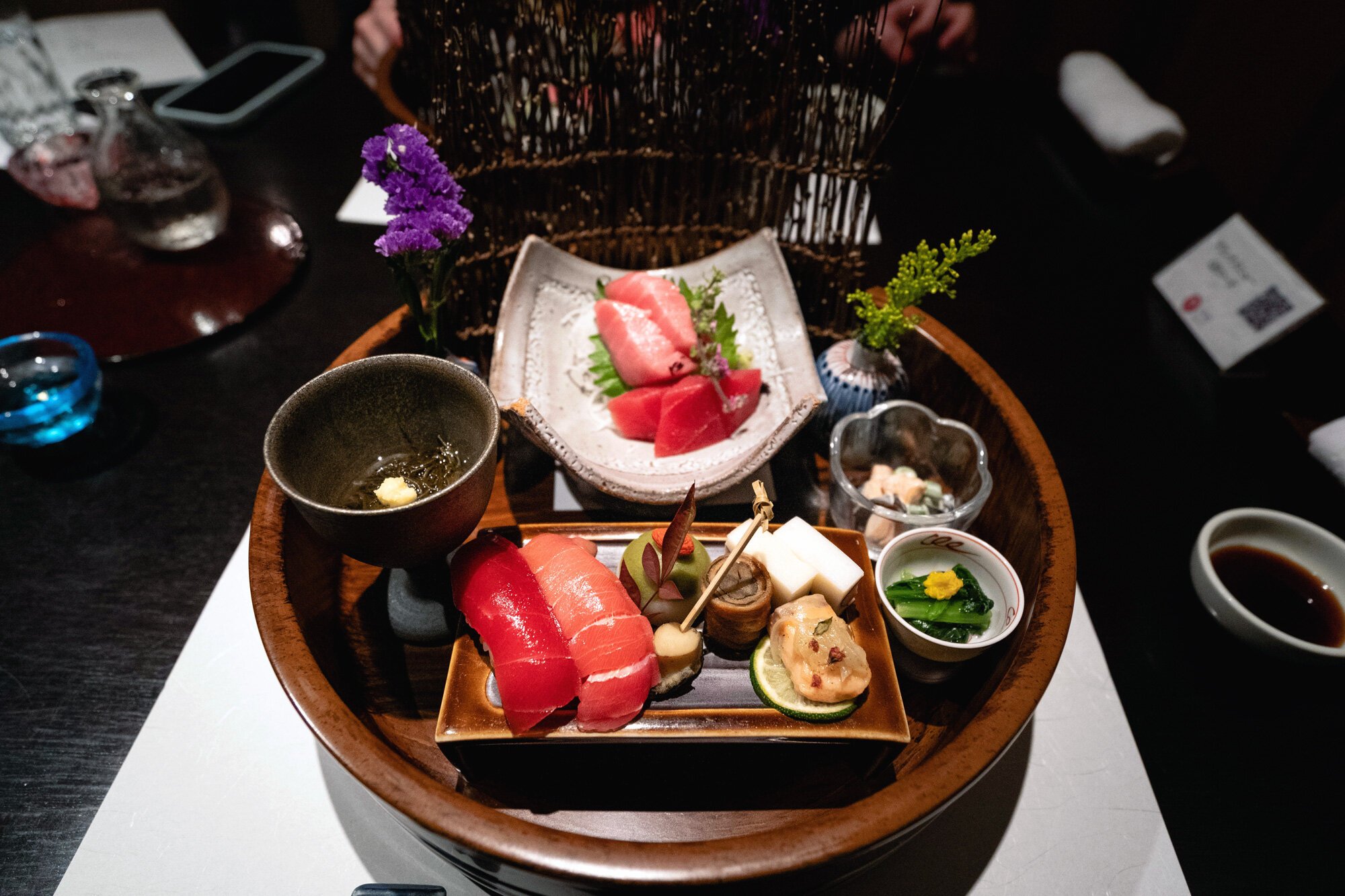
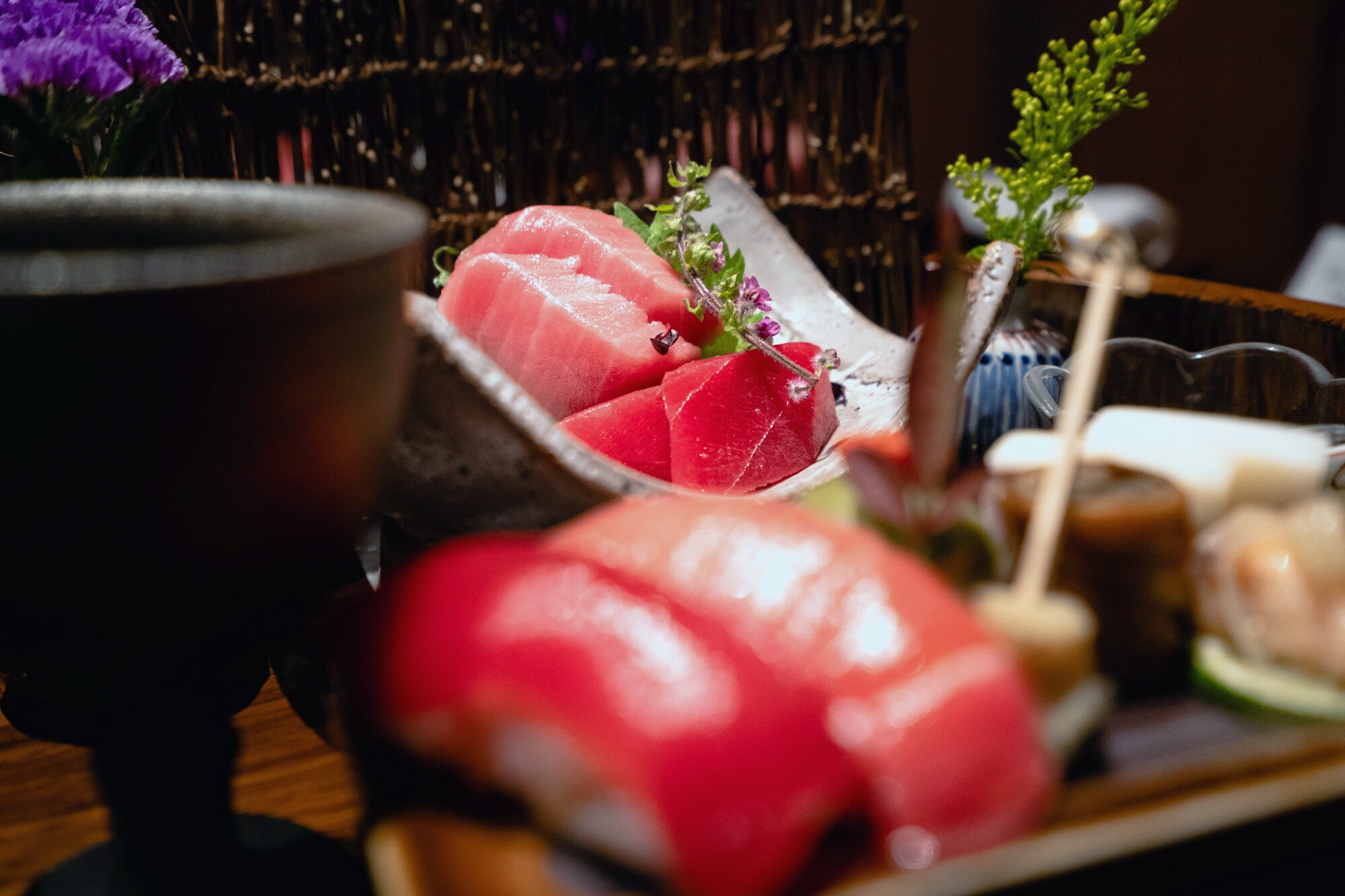
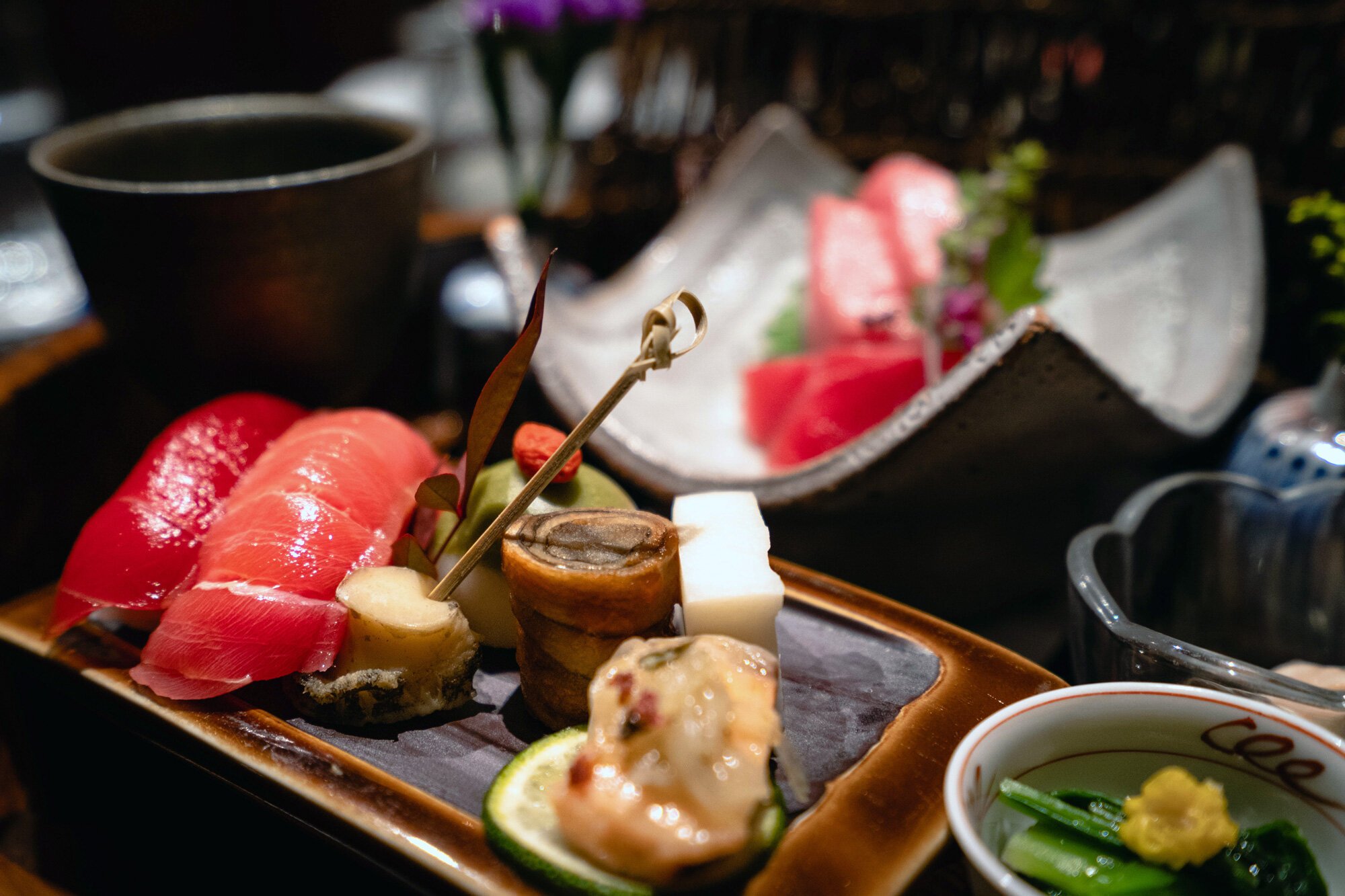
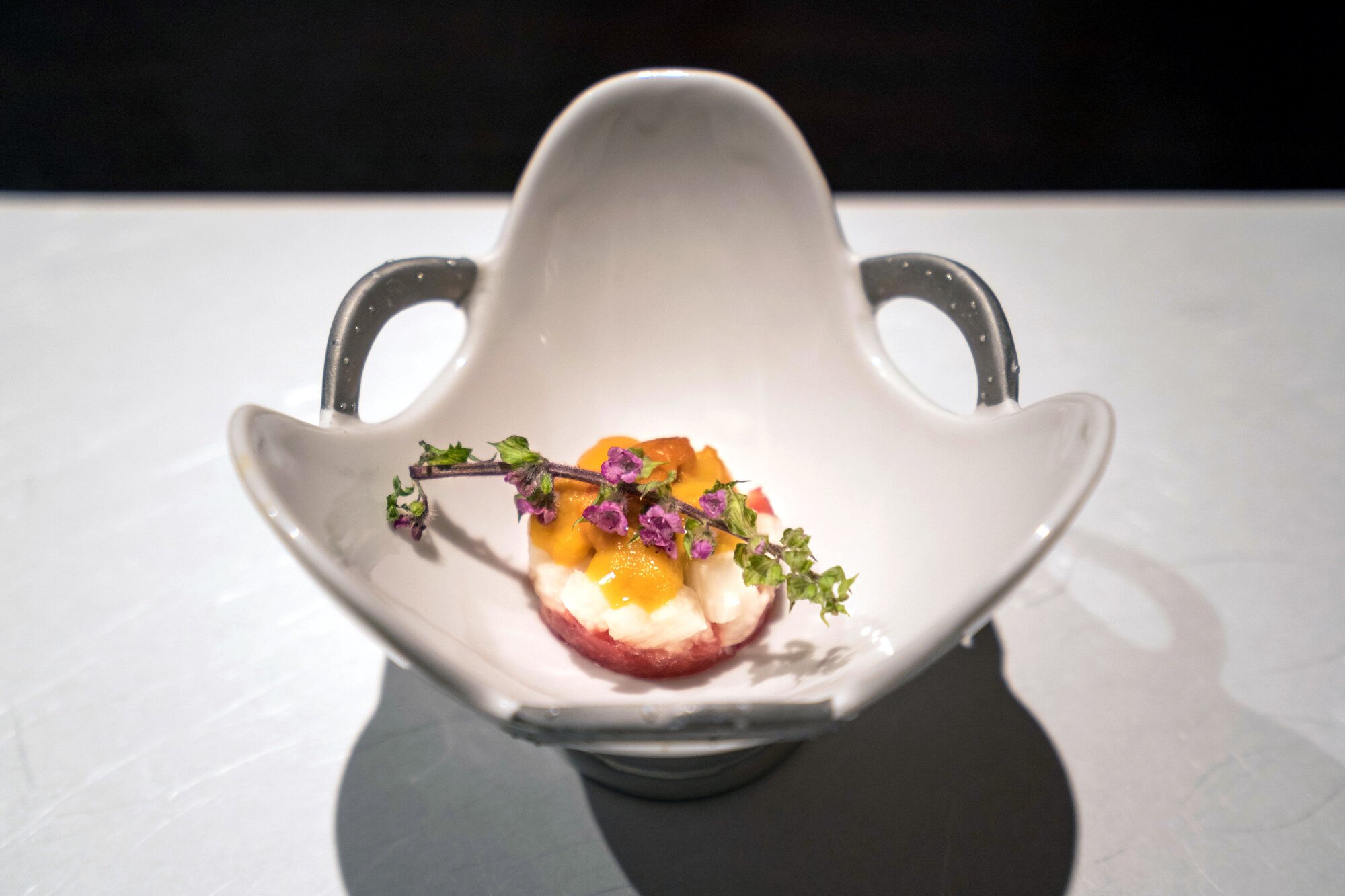
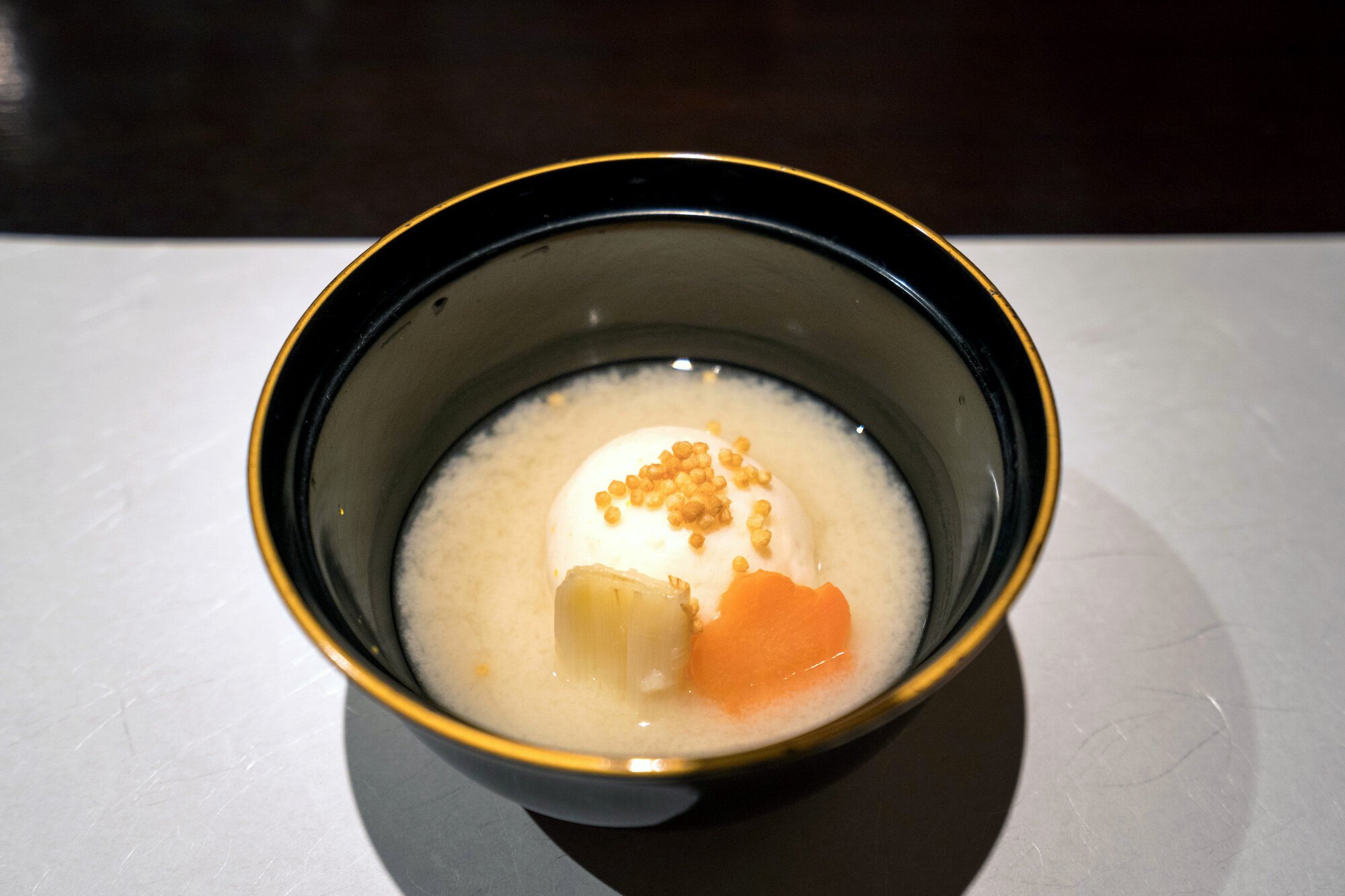
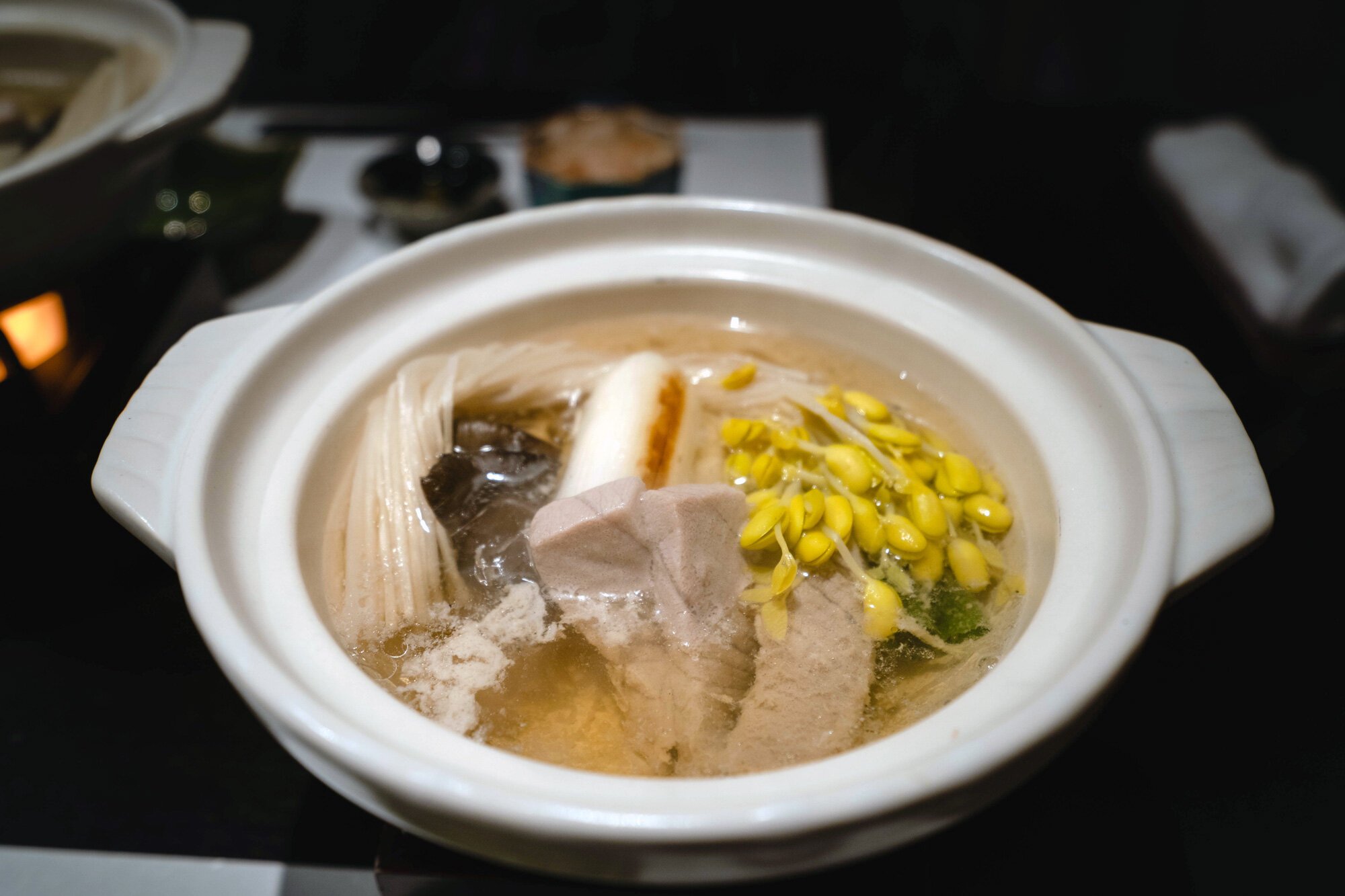
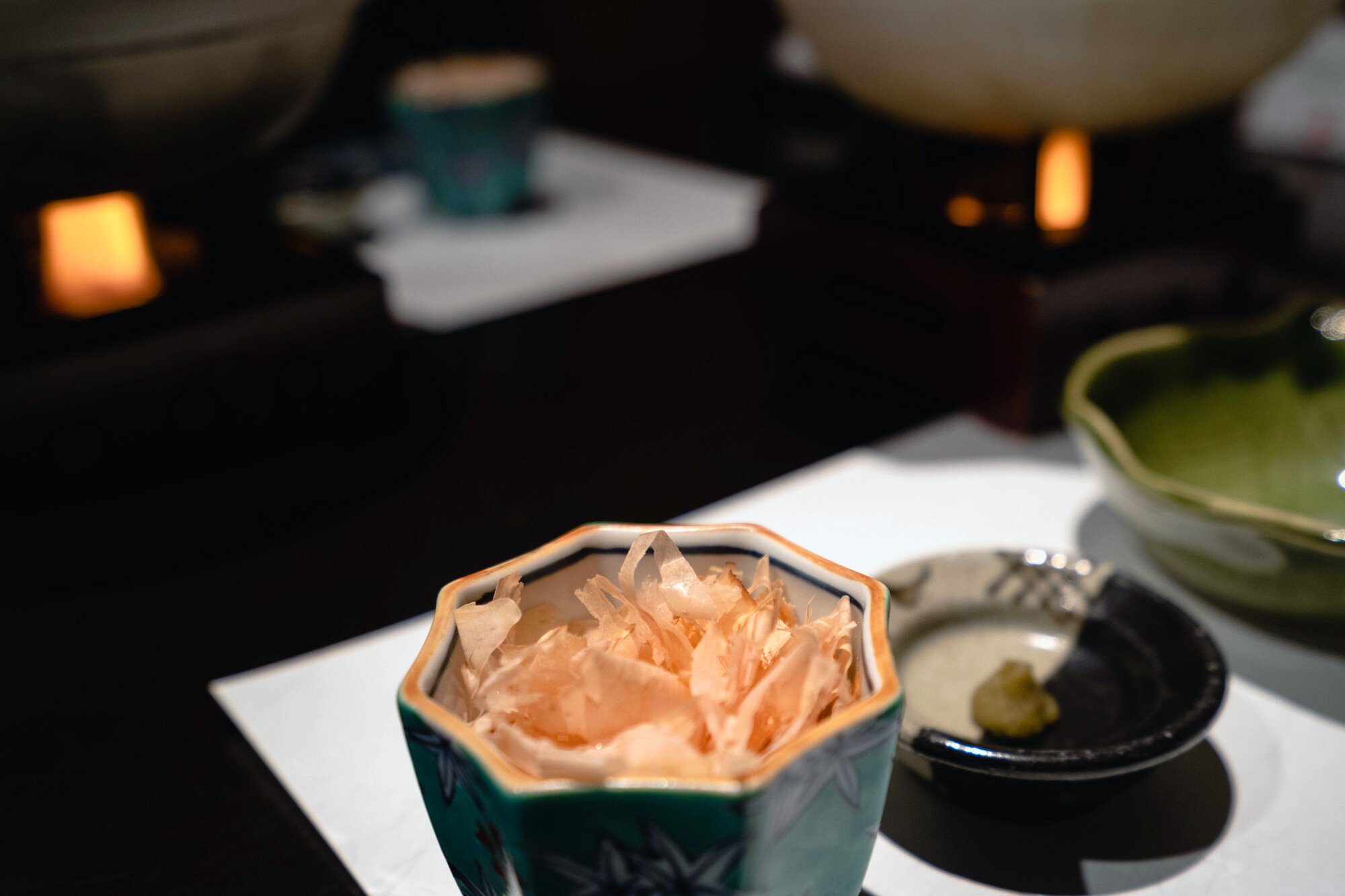
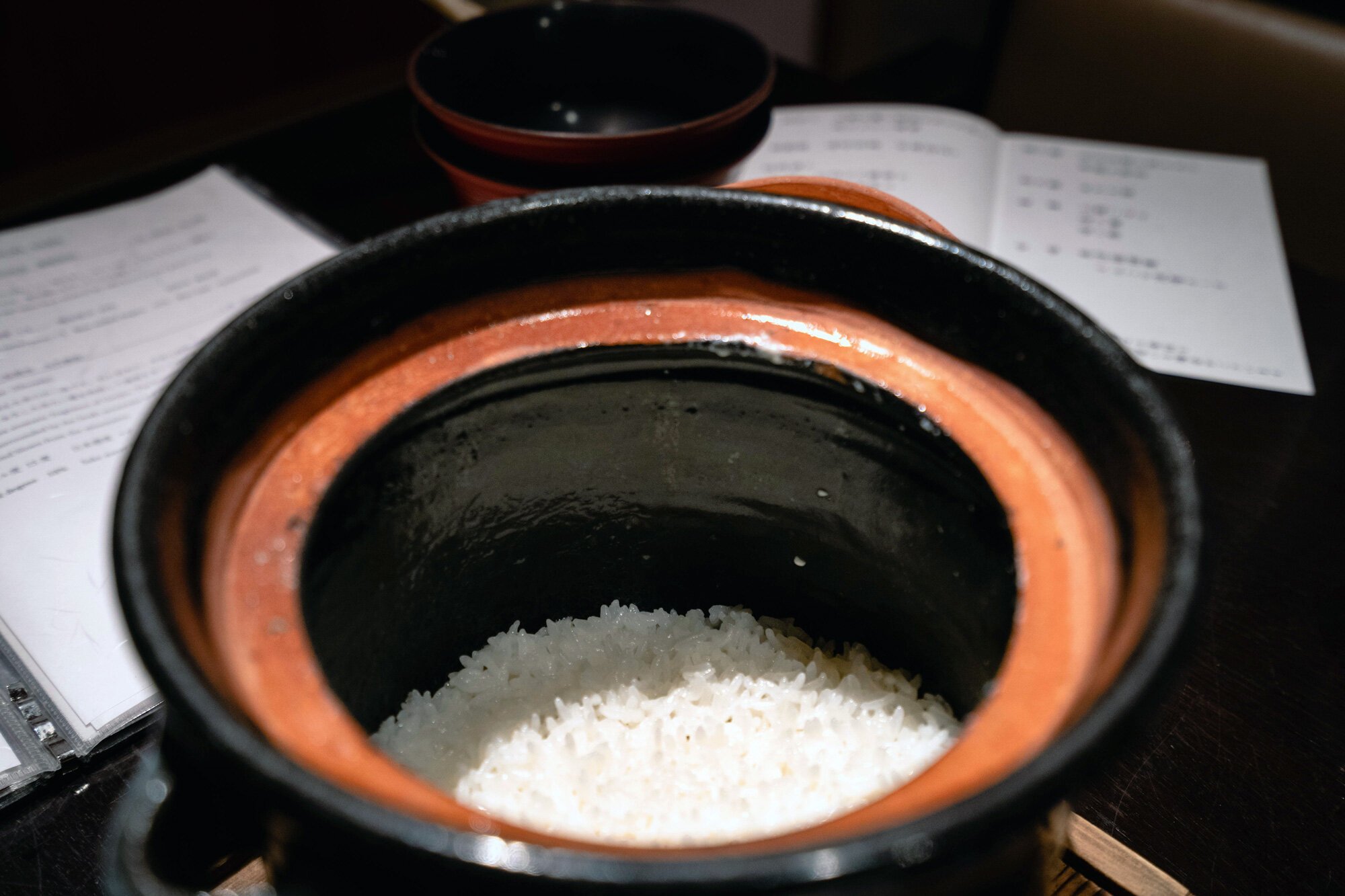
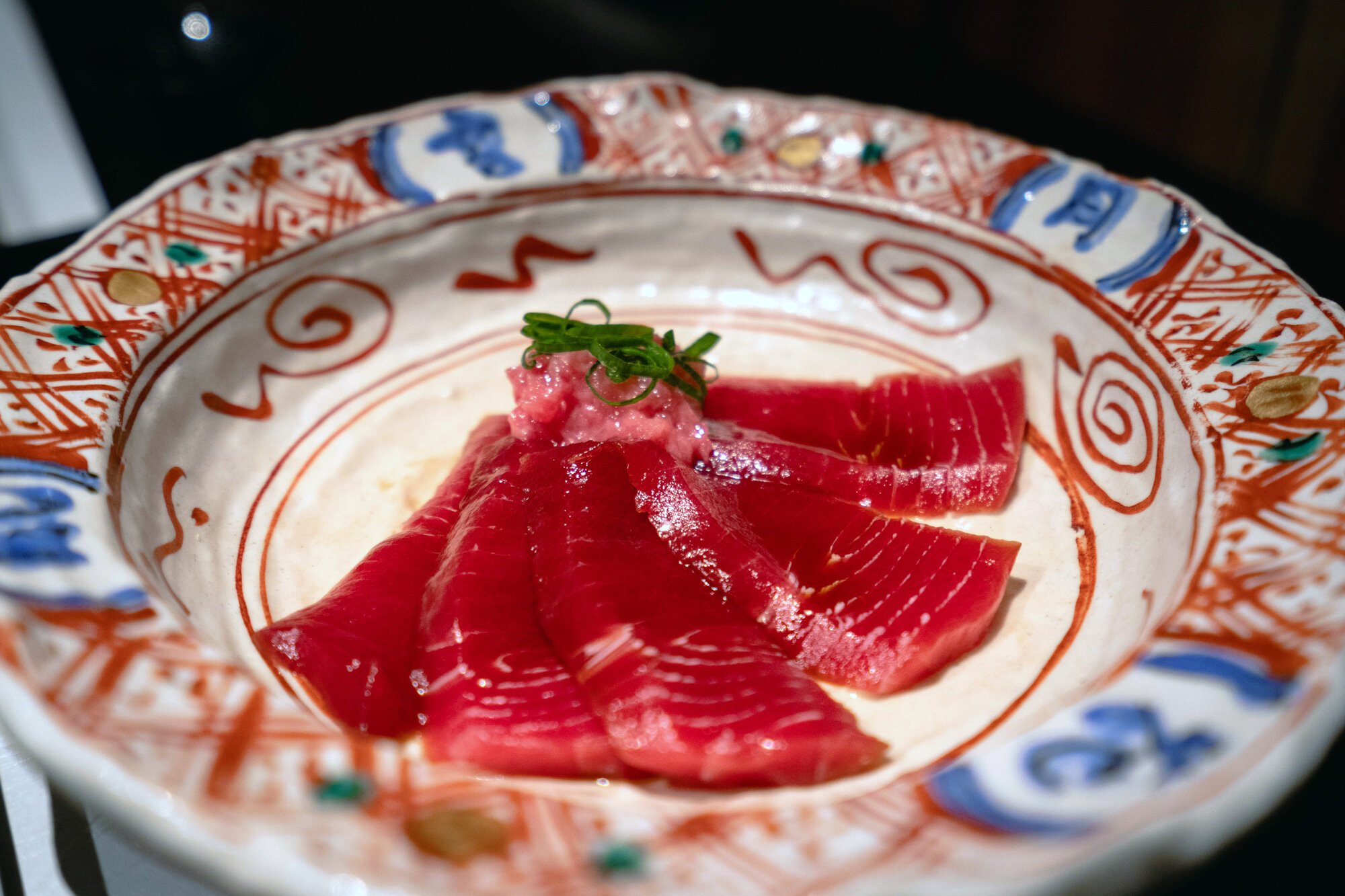
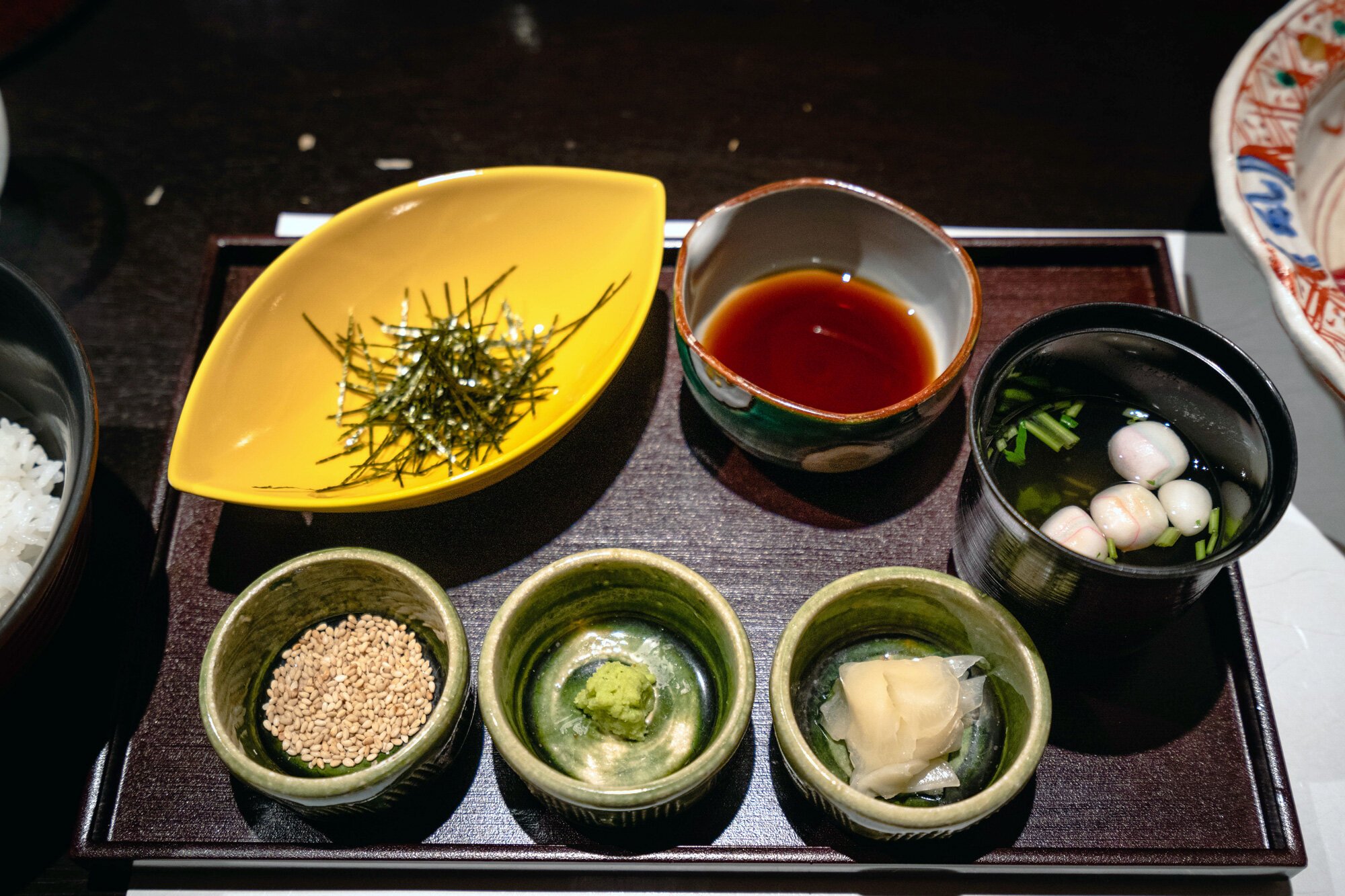
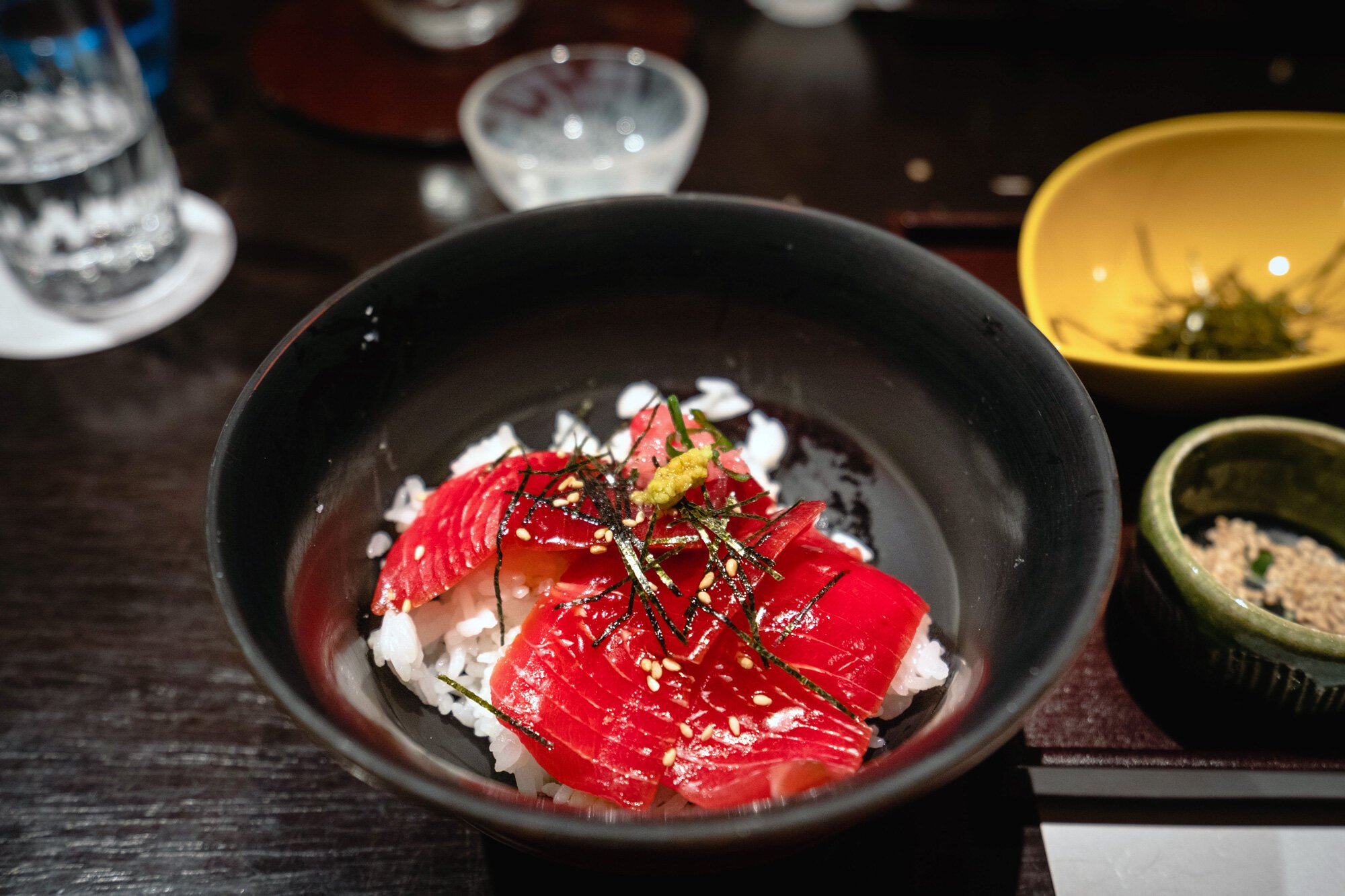
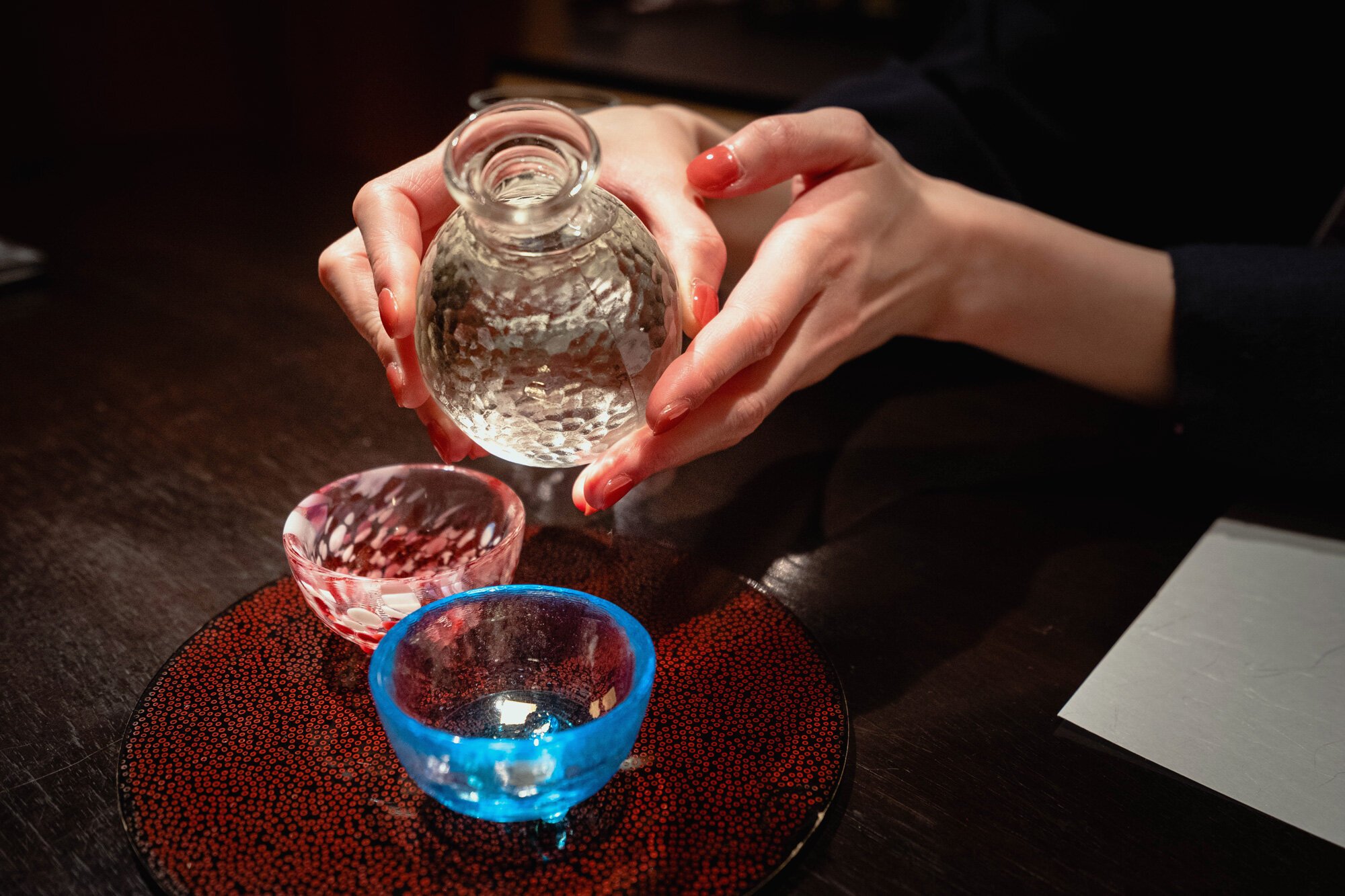
Breakfast was also great and was centered on kaiyaki miso, a local dish where scallops are marinated in miso, cooked in its shell, and topped with lightly beaten raw egg.
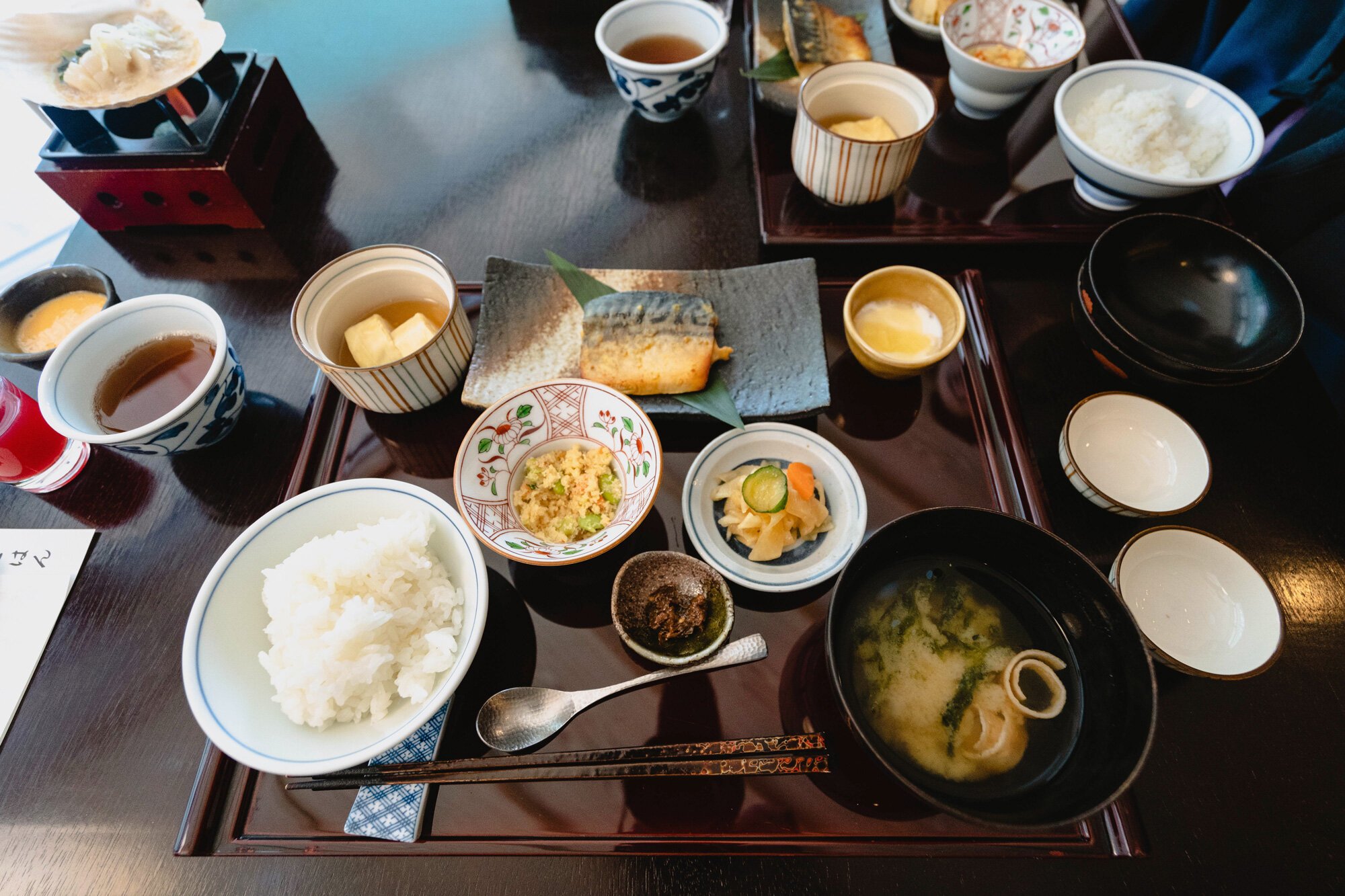
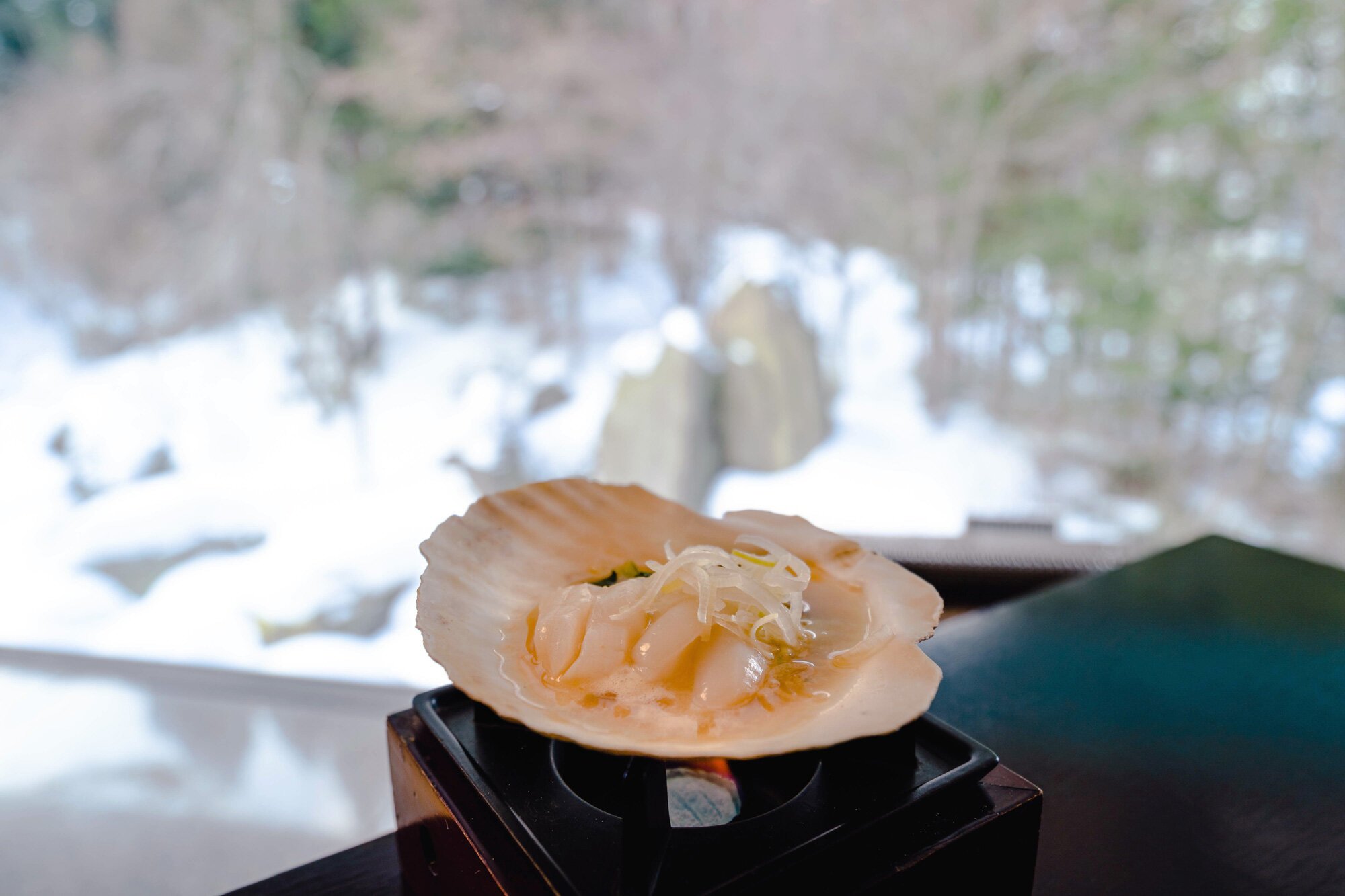
I enjoyed my stay at the Hoshino Resorts KAI Tsugaru and recommend it to anyone traveling in the area. It’s a perfect place to go to for a retreat.
Keep in touch:
More travels:
Aomori City
Stopping at Honshu Island’s northern-most capital.
Aomori City is the capital of Aomori prefecture, which is at the northern tip of Japan’s main Honshu island
Aomori is known for apples, fresh seafood, garlic, and more
I traveled up to Aomori prefecture in February 2021. Amongst the stops on the 3-night trip was Aomori city, the prefecture’s capital.
How to get there
We were dropped off by a shuttle provided to us by the hotel we stayed at the night before, Hoshino Resorts Oirase Keiryu Hotel. However, the Tohoku Shinkansen bullet train stops at Shin-Aomori Station, and can be caught from Tokyo Station.
There is also a (mainly domestic) airport located about a 35-minute drive outside the city center.
About Aomori
Aomori is a small city of less than 300,000 people. The city center has a quaint feel to it, and even the main station, Aomori Station, feels very local.
A few things that the city and prefecture as a whole is most known for apples, fresh fish (especially maguro, or tuna), and garlic.
Where we went
Because we were only there for half a day, we only made a few stops.
The first was catching a view of the Memorial Ship Hakkōda-maru and bay from the Aomori Labridge (MAP). On a sunny day, the view is especially beautiful. (Top image, or you can see it my video below)
Just nearby was our next stop.
Nebuta Warasse Museum
Nebuta Warasse Museum
The Nebuta Warasse Museum is dedicated to the local lantern float art. Large, illuminated floats that depict warriors and animals are marched around the city during the Nebuta Festival each summer, and this museum showcases this culture.
Taxi waiting
Like I mentioned, Aomori is known for fresh seafood, so of course, our main destination was lunch.
Where we ate
Aomori Gyosai Center
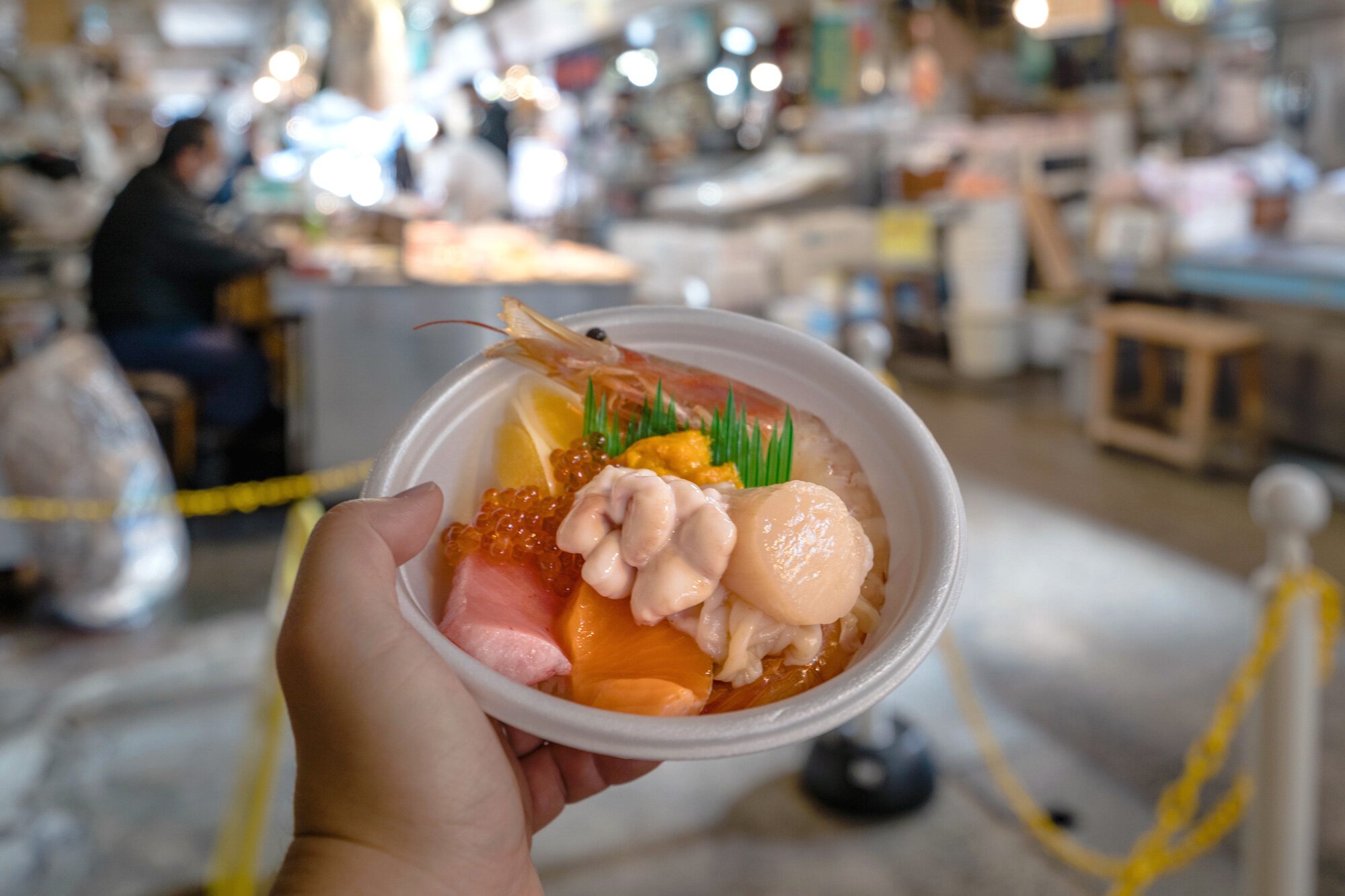
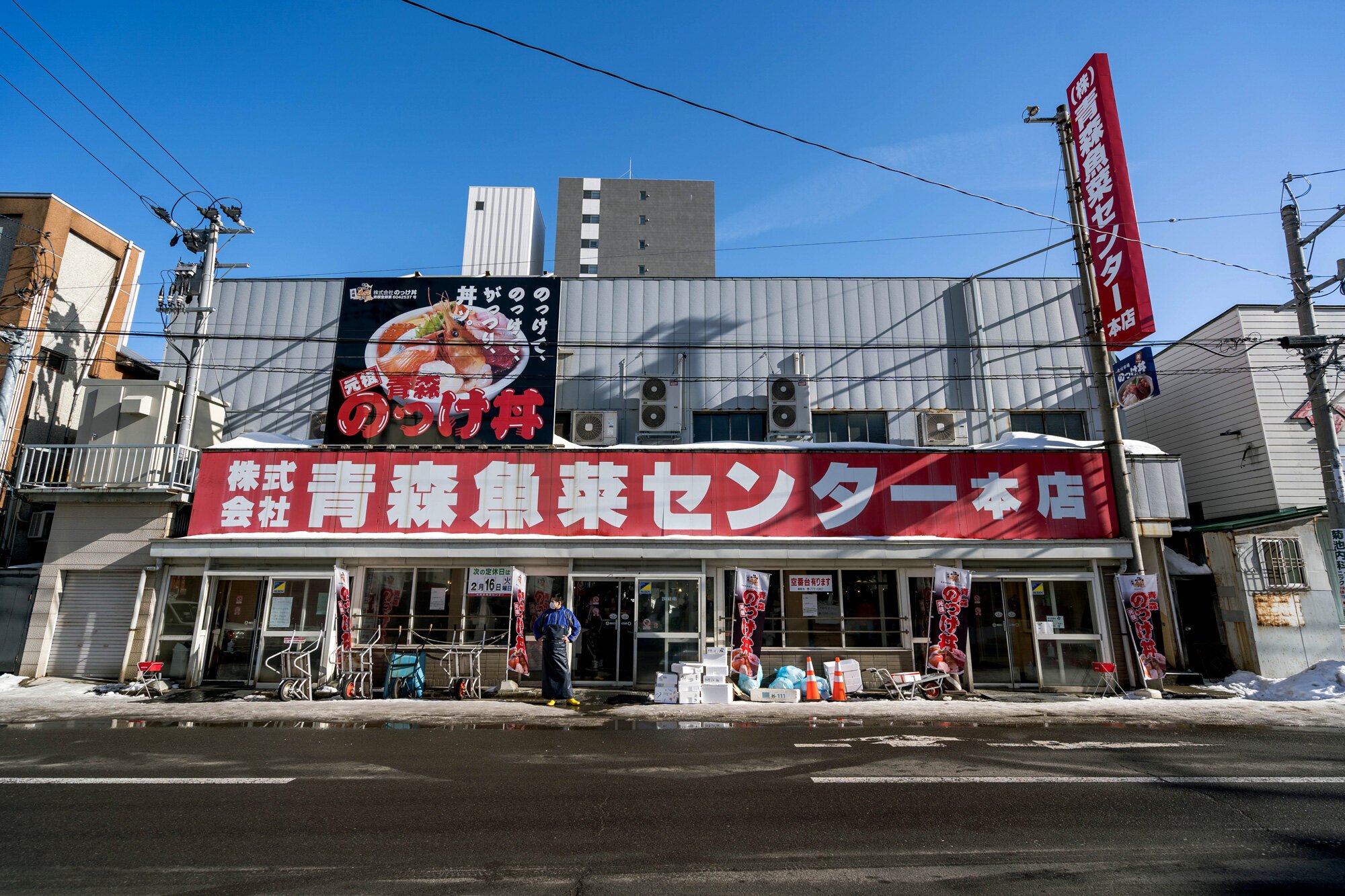
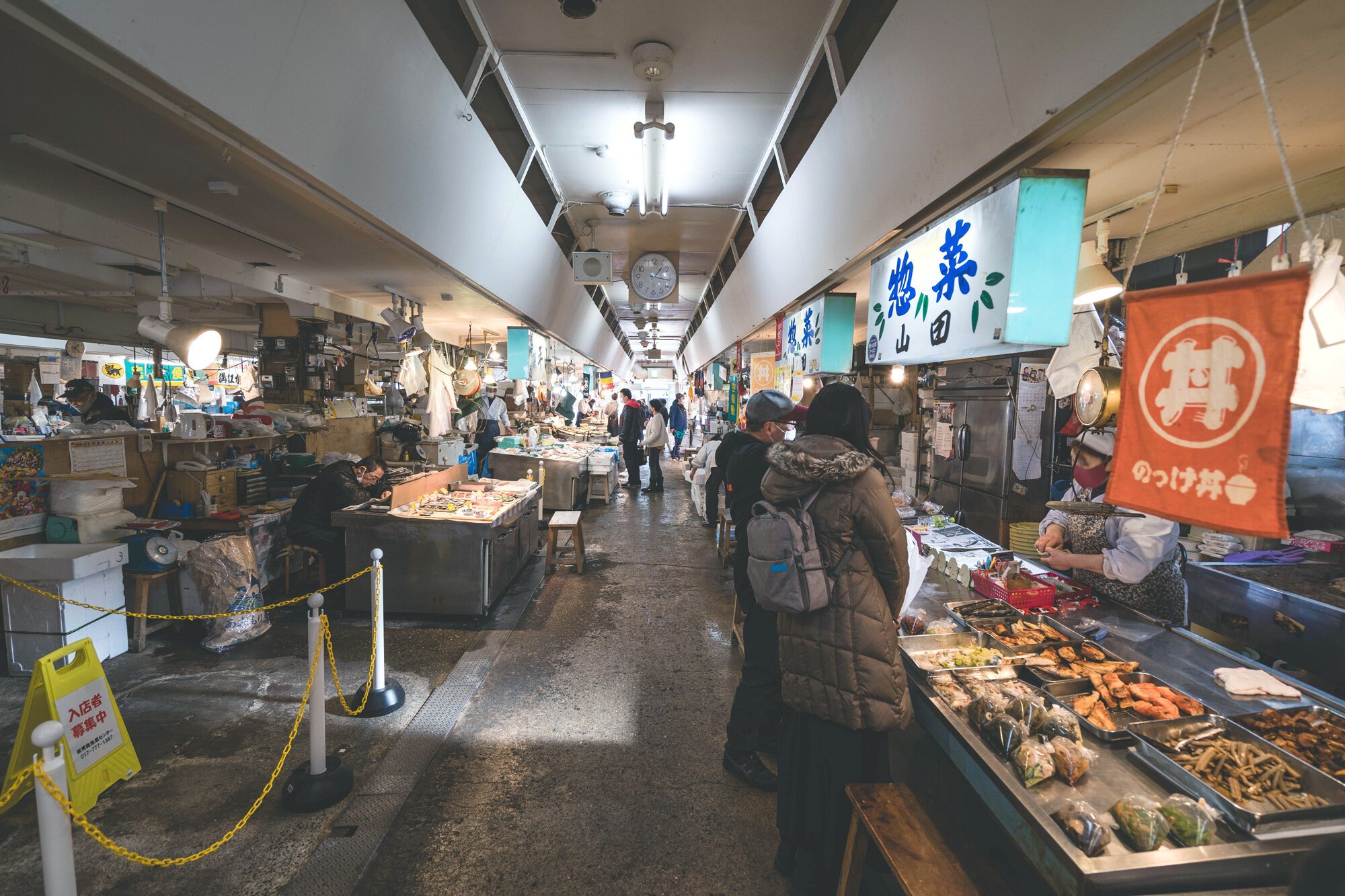
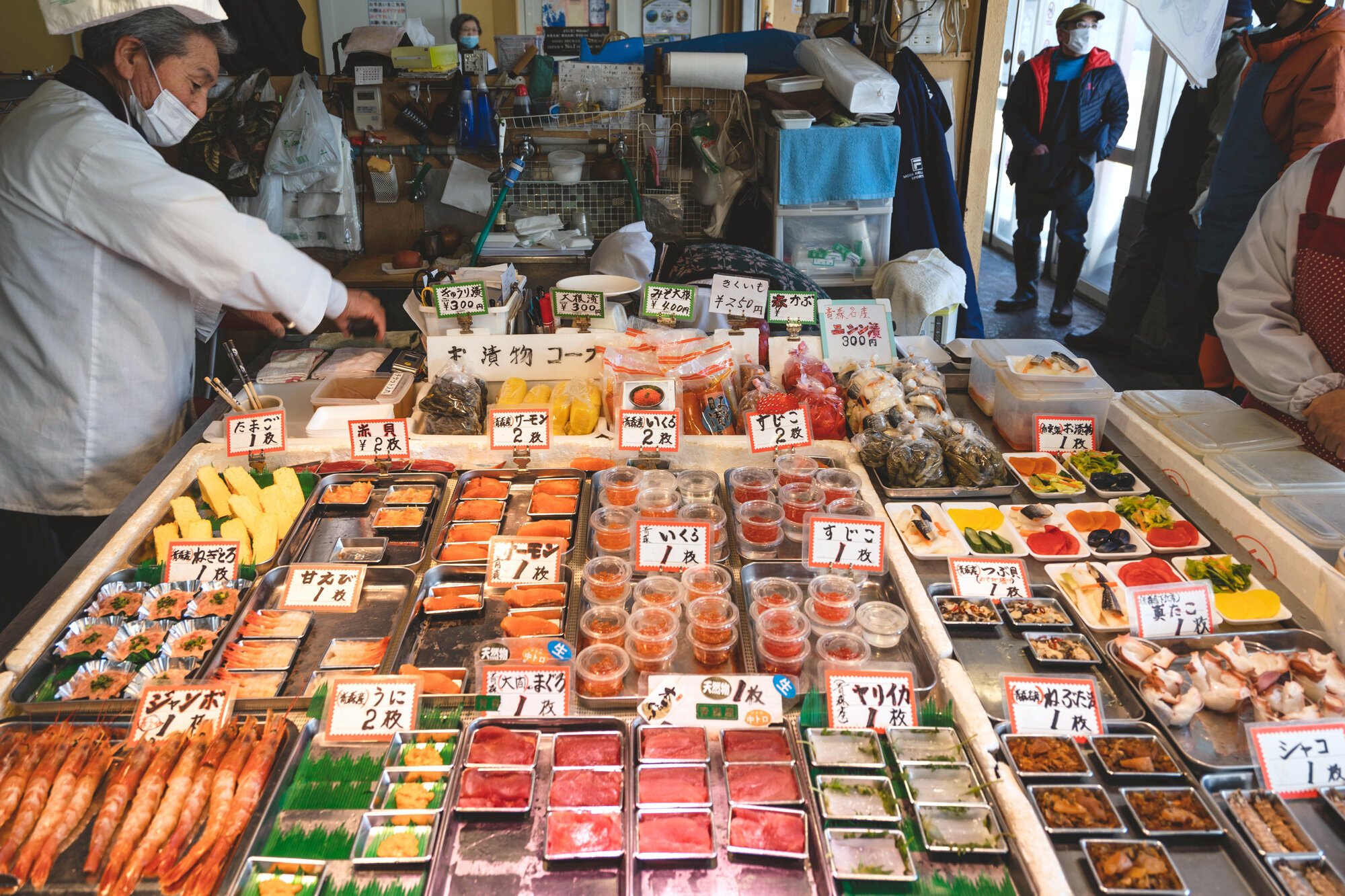
A food hall that focuses on Aomori’s “nokkedon”, which is a kaisendon, or bowl of fresh seafood on rice.
You buy scripts from a booth, pick up your bowl of rice, then browse vendors and purchase the fresh fish of your choice with the scripts. Vendors are mostly selling slices and individual servings, and they’ll place them into your bowl.
There are a few small tables where you can sit and enjoy your personalized meal.
Keep in touch:
More travels:
Aomori: Hoshino Resorts Oirase Keiryu Hotel
A beautiful and relaxing winter retreat surrounded by Aomori’s nature.
On a trip to explore northern Honshu island in February 2021, I was lucky enough to get to stay at Hoshino Resorts Oirase Keikyu Hotel in Towada, Aomori.
Hoshino Resorts is one of the most well known and sought after luxury hot spring and resort ryokan companies in Japan. I’ve stayed at a few in their KAI line, such as KAI Kinugawa (Nikko), KAI Sengokuhara (Hakone) and KAI Kaga (near Kanazawa).
This was the first time I was staying at one of their resorts that wasn’t in that line, and as expected, it was great as well.
Main lobby and check-in area
How to get there
We took the Tohoku Shinkansen bullet train from Tokyo Station to Hachinohe in Aomori prefecture. From there, there’s a daily shuttle bus that you can request that is provided by the hotel. It takes about an hour and a half to get to the hotel.
Hoshino Resorts Oirase Keiryu is located along the Oirase stream, tucked away and completely surrounded by nature.
Because of this, if you want to leave the resort, you’ll need a car.
Luckily, Hoshino Resorts Oirase Keiryu has a handful of tours and activities setup which they provide transportation for as well as equipment to rent. We took part in a couple, and I talk about those down below.
We stayed in the Modern Room, a room that measures 44㎡ with 2 beds, a bathroom, and a sofa looking out at the surrounding nature.
The Hot Spring
Maybe especially so because we went in the winter, but the onsen hot spring here was amazing, probably one of the nicest I’ve sat in.
In the winter, it’s called the “Frozen waterfall onsen” due to being surrounded by walls of ice. The hot water comes from Mt. Hakkoda, and the outdoor bath look out to the natural environment.
There is also an indoor part of the onsen that is quite big.
Dining
Like most ryokan stays, meals are included. Hoshino Resorts Oirase Keiryu’s meals take place at their Aomori Ringo Kitchen, a dining area centered around an all-you-can-eat buffet.
The food here was great, and yes, they had more than apples.
For dinner, the highlights are their roast beef and maguro (tuna) sashimi and negitoro. Their apple pie and self-serve soft serve ice cream dessert is also really good.
For breakfast, their ikura (salmon roe) and salmon flakes are amazing.
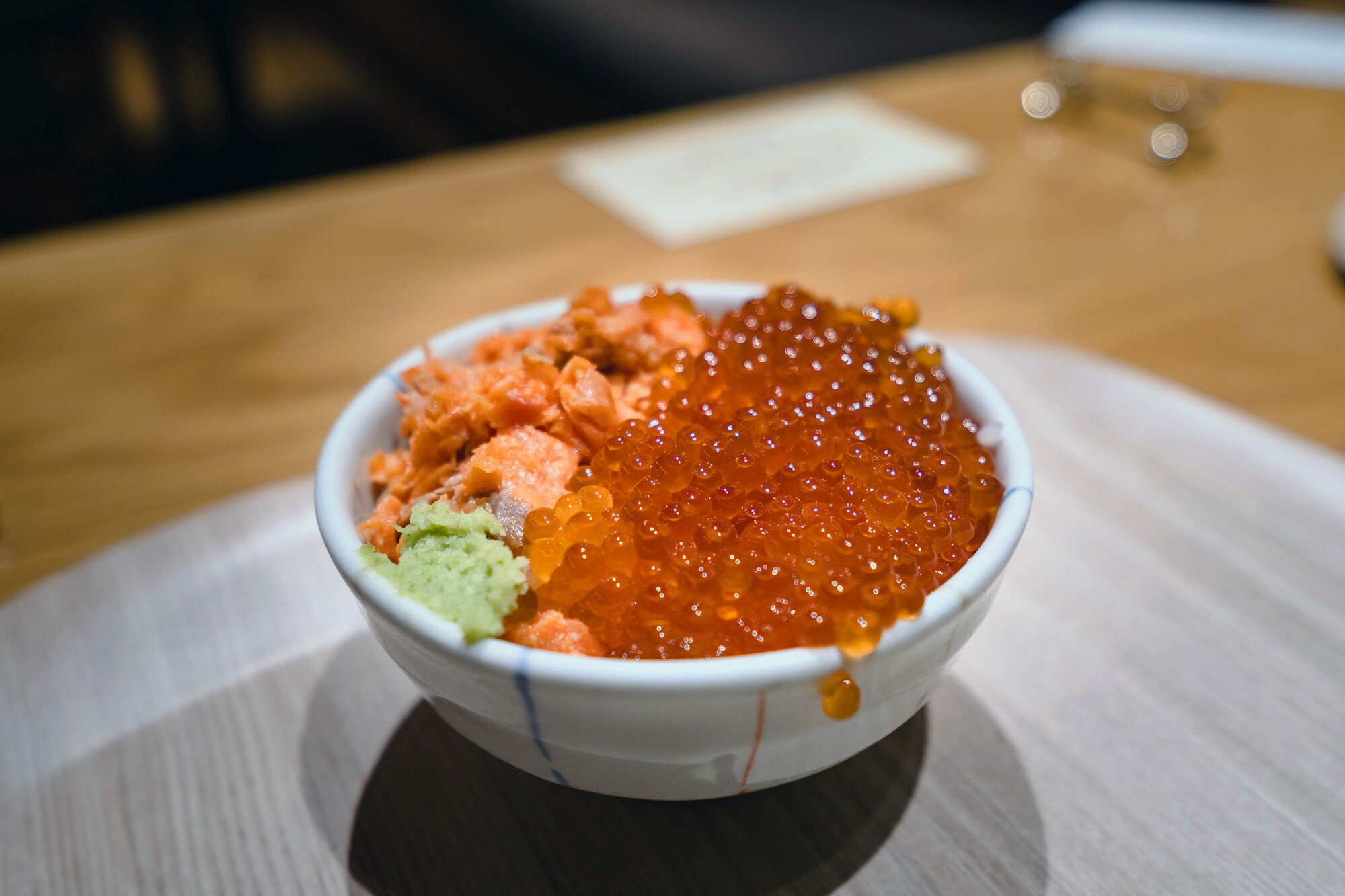
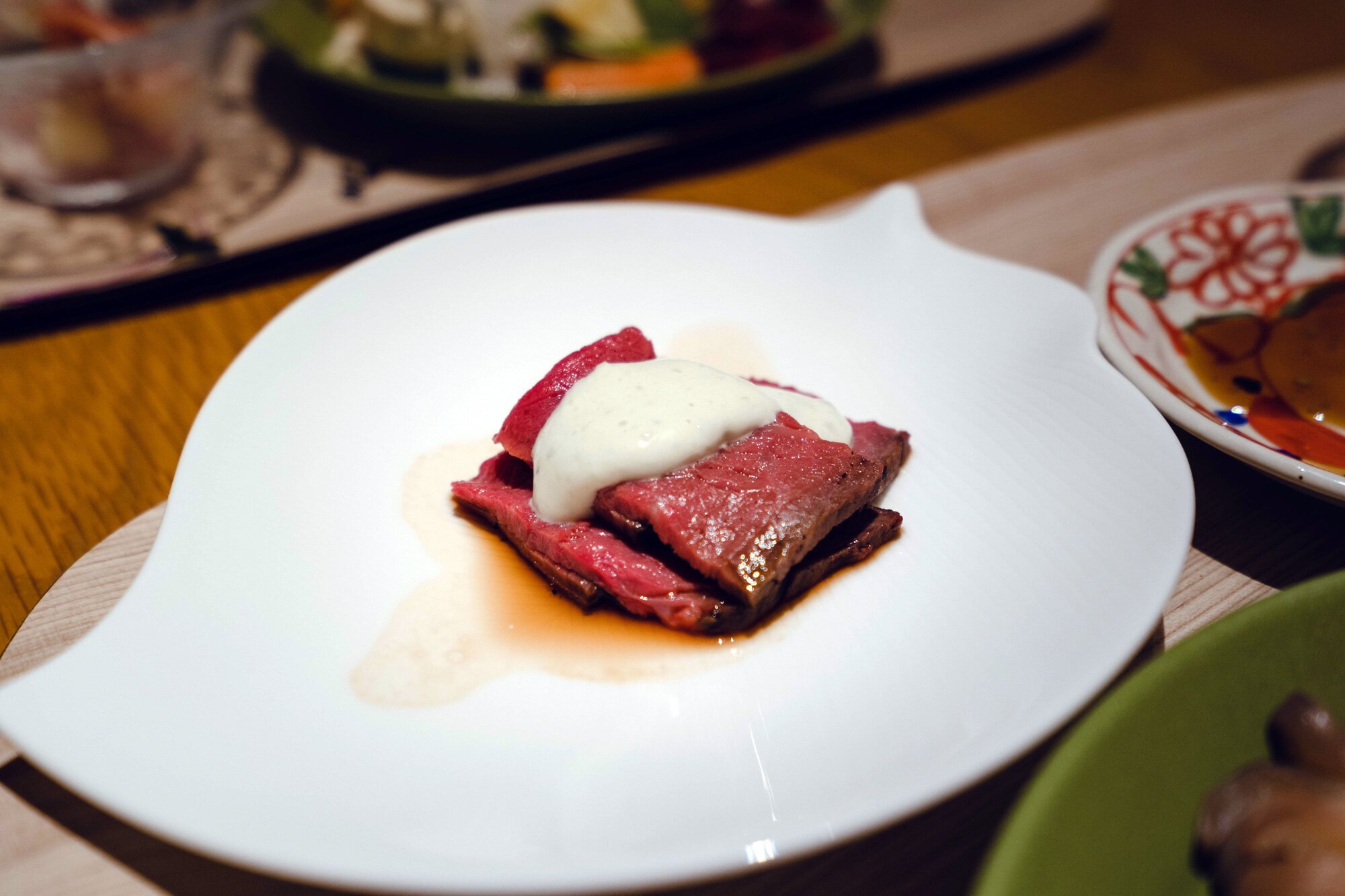

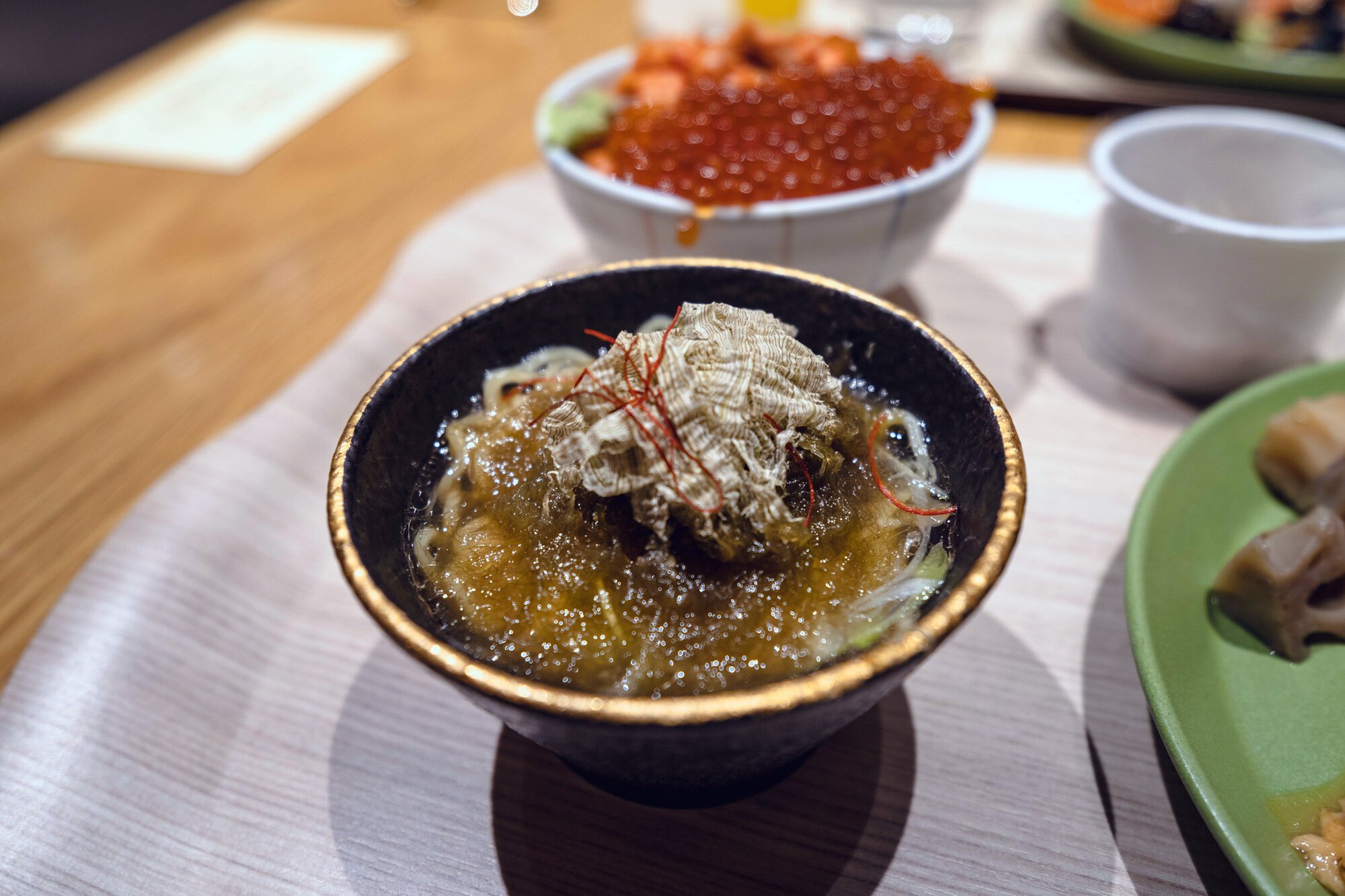
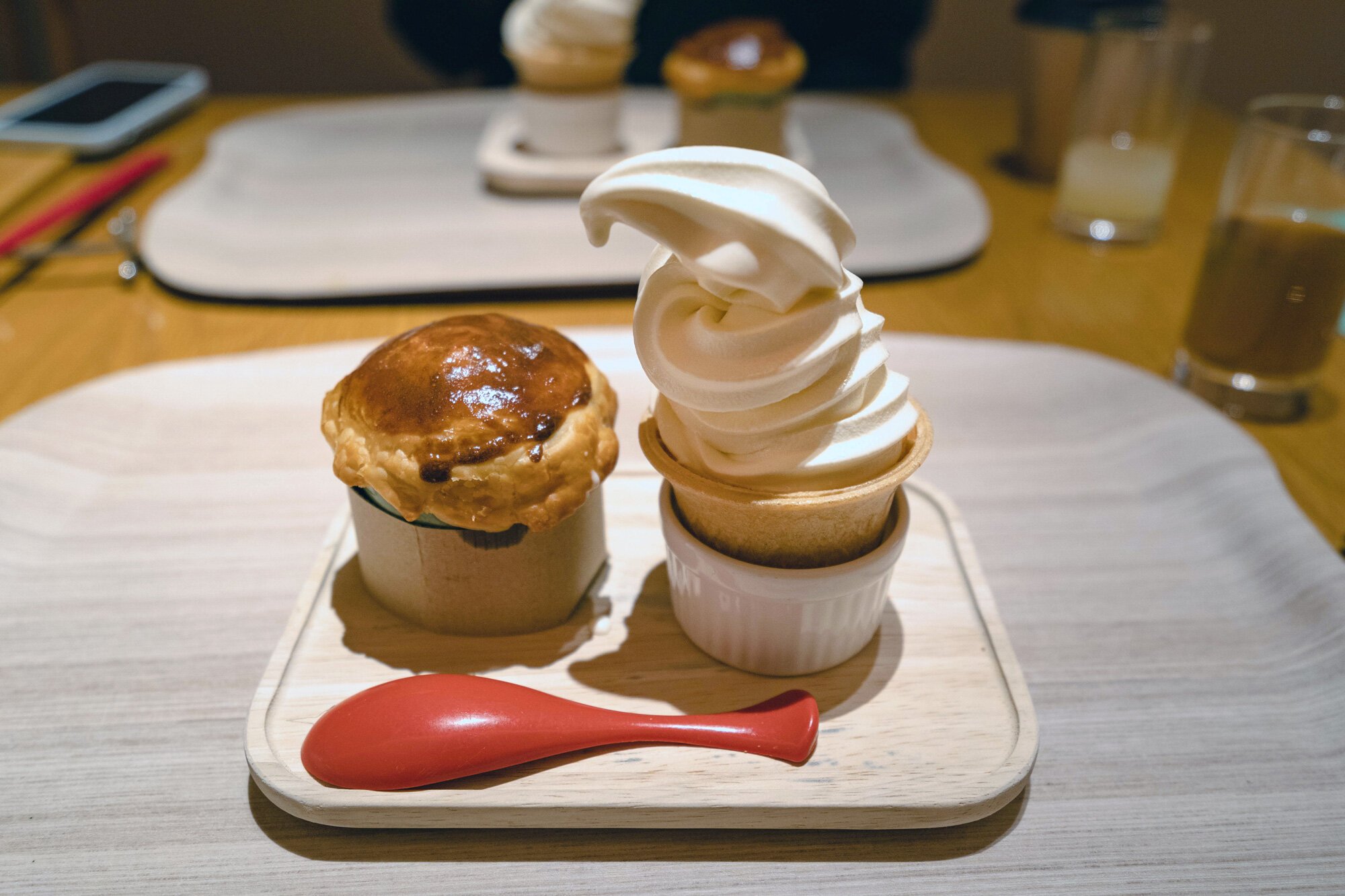
Activities
Because the Hoshino Resorts Oirase Keiryu is secluded in the Towada area of Aomori, you basically need a car to go anywhere on your own. Because of this, they have option activities available that they’ll provide transportation for and offer gear to rent.
We went on two.
Night tour: Frozen waterfall
This was a short trip in a van to Makadoiwa Rock, a nearby waterfall that gets illuminated by LED lights. You don’t need any equipment and the whole trip takes only about an hour.
Snow trekking
This activity is in the daytime and took place twice a day. We opted for the later one that went from 1PM - 4PM. A van takes the group to a parking lot where we each strap into show shoes.
We followed the leader up and around a small mountain area until we ended up at Tatsunuma, a scenic swamp/lake. The guide was very informative, explaining the trees in the area and behaviors of the animals while looking at the tracks we came across.
All in all, this was a really nice stay and this resort was great. It exceeded my expectations and I’d love to visit again.
If you want to see the trip in video:
Keep in touch:
More travels:
Kaga Onsen: Hoshino Resorts KAI Kaga
A nice Kanazawa getaway at the Hoshino Resorts KAI Kaga, an upscale boutique ryokan that lets guest dive into local culture.
A break from life in a small, rural town near Kanazawa.
Hoshino Resorts is one of the most well known and sought after luxury hot spring and resort ryokan chains in Japan. I’ve stayed at their KAI Kinugawa resort while visiting Nikko, as well as their KAI Sengokuhara resort while visiting Hakone.
I was glad to get another chance to stay at one of their locations in 2020, while on a trip to Kanazawa.
HOW TO GET THERE
We took the Thunderbird Express train from Kanazawa Station to Kagaonsen Station, the quickest way at the moment. Kagaonsen Station is a very local station, but a Shinkansen station is currently being built to replace it. From there, there is a bus that will take you near the resort but if it’s difficult, catching a taxi may be easier.
A Hoshino Resorts KAI Kaga staff member greets you at the entrance and guides you to the check-in area. You put your shoes into a locker and wear slippers around the resort. You can then check-in and schedule your meals (2 time options per meal) and any activities such as massages.
The Kaga Onsen area is small and there isn’t much to do or see. This isn’t a big problem though, as the purpose of going to these types of ryokans is to relax at the resort.
Hoshino Resorts KAI Kaga is focused on providing a local experience. A lot of the decor is from the area, using traditional patterns and techniques, and are created by local craftsmen. After dinner, a traditional lion dance is performed that was first performed in the region back in the 16th century.
We stayed in the Japanese-style Room TA3, a room that measures between 41㎡~51㎡ big with 2 beds, a living room, bathroom with shower, and balcony.
The living room area
The Hot Spring
The water that flows through Japanese onsen hot springs vary and depend on where the water is coming from. Each has a slightly different combination of minerals carrying different benefits to the skin and body.
Hoshino Resorts KAI Kaga’s onsen water is from the Yamashiro hot spring and is pretty clear in color. They report that their water has sodium, calcium, sulfate and chloride.
This combination is said to help in areas such as protecting the skin from drying out and accelerating the body’s natural healing process, as well as coating the body, therefore warming and moisturizing the skin.
Dining
Like most ryokan stays, Japanese kaiseki meals are included. Hoshino Resorts KAI Kaga’s meals are served in the dining hall that has separation barriers, allowing each party to have a private room.
The Hoshino Resorts KAI line never fails to have amazing food.
Ishikawa prefecture is known for crab, and there are a few different crab kaiseki courses to choose from.
You can’t go wrong with any. Ours included dishes such as crab sashimi, crab hot pot, and a Shimenawa-Mushi steamed crab that is made by steaming the crab in a saltwater-soaked rope. Just so good.
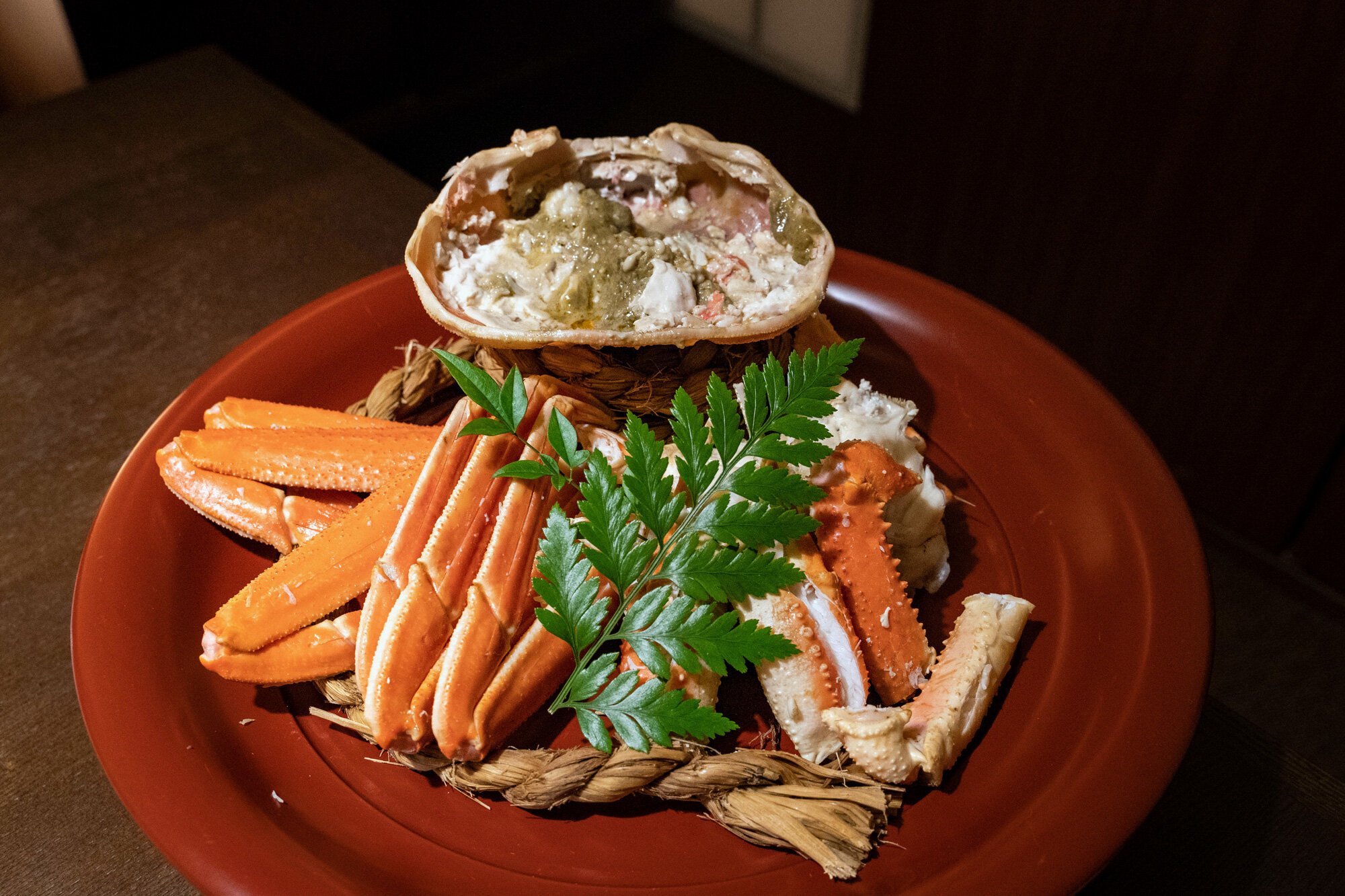
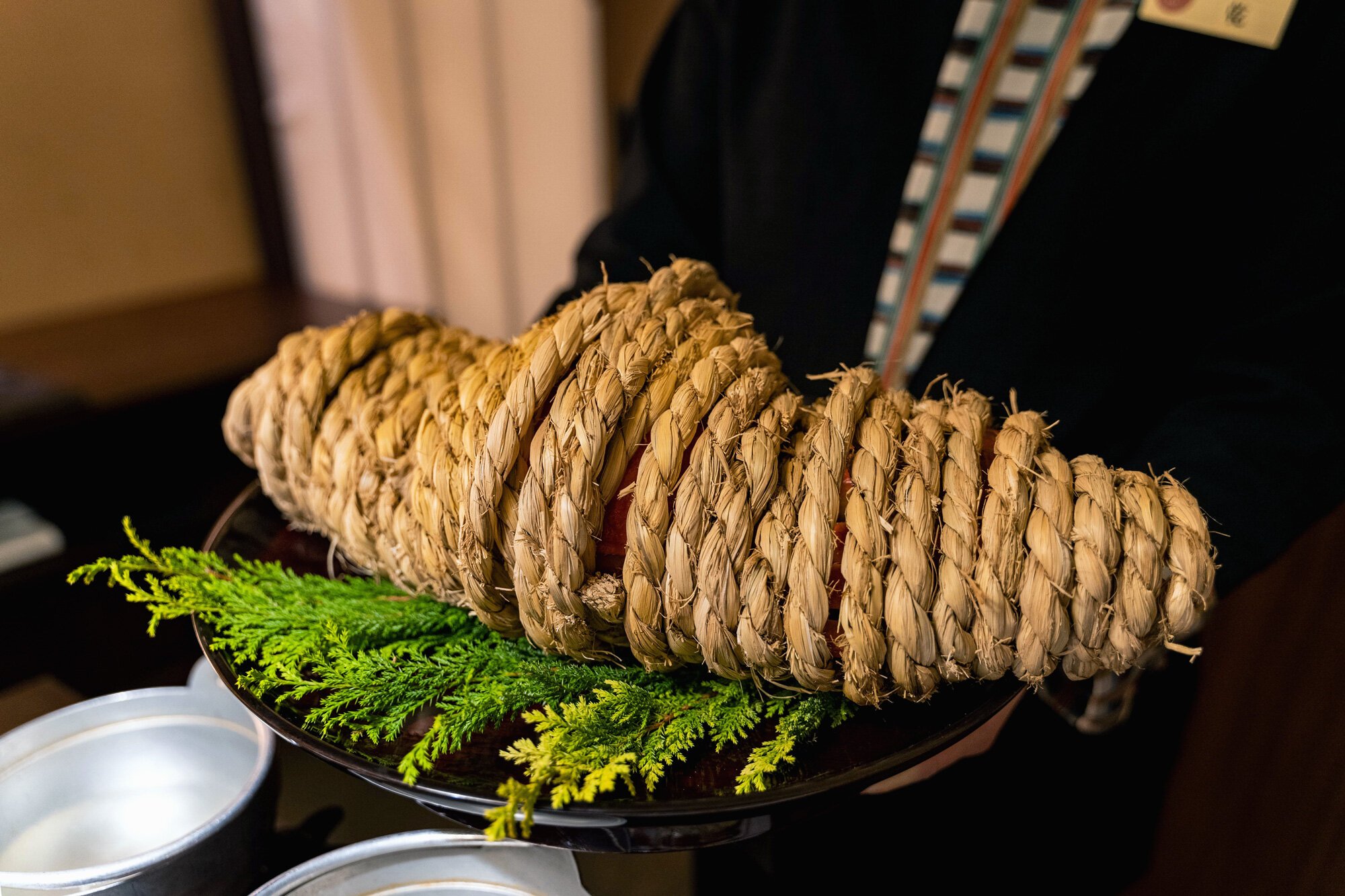

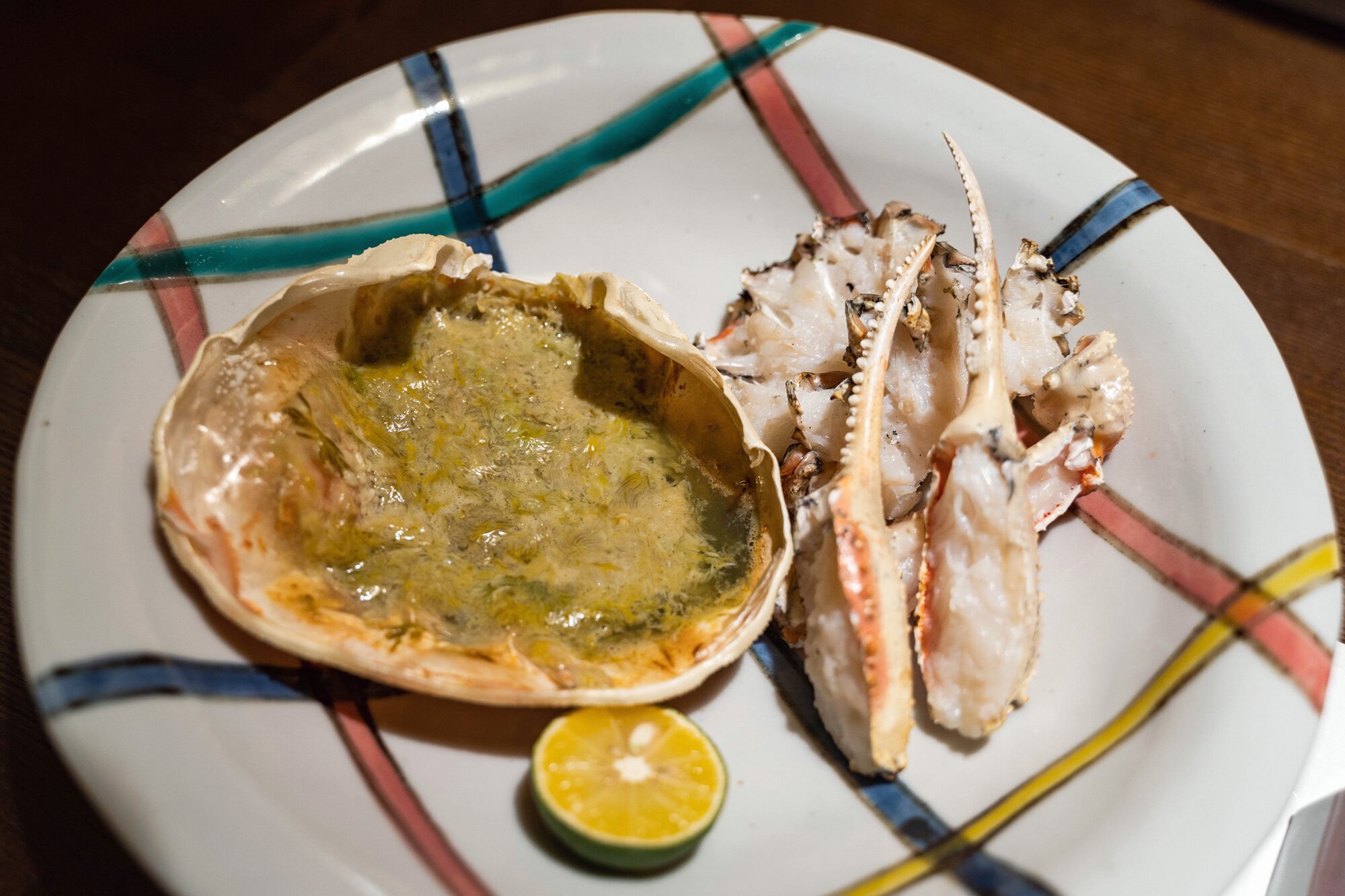
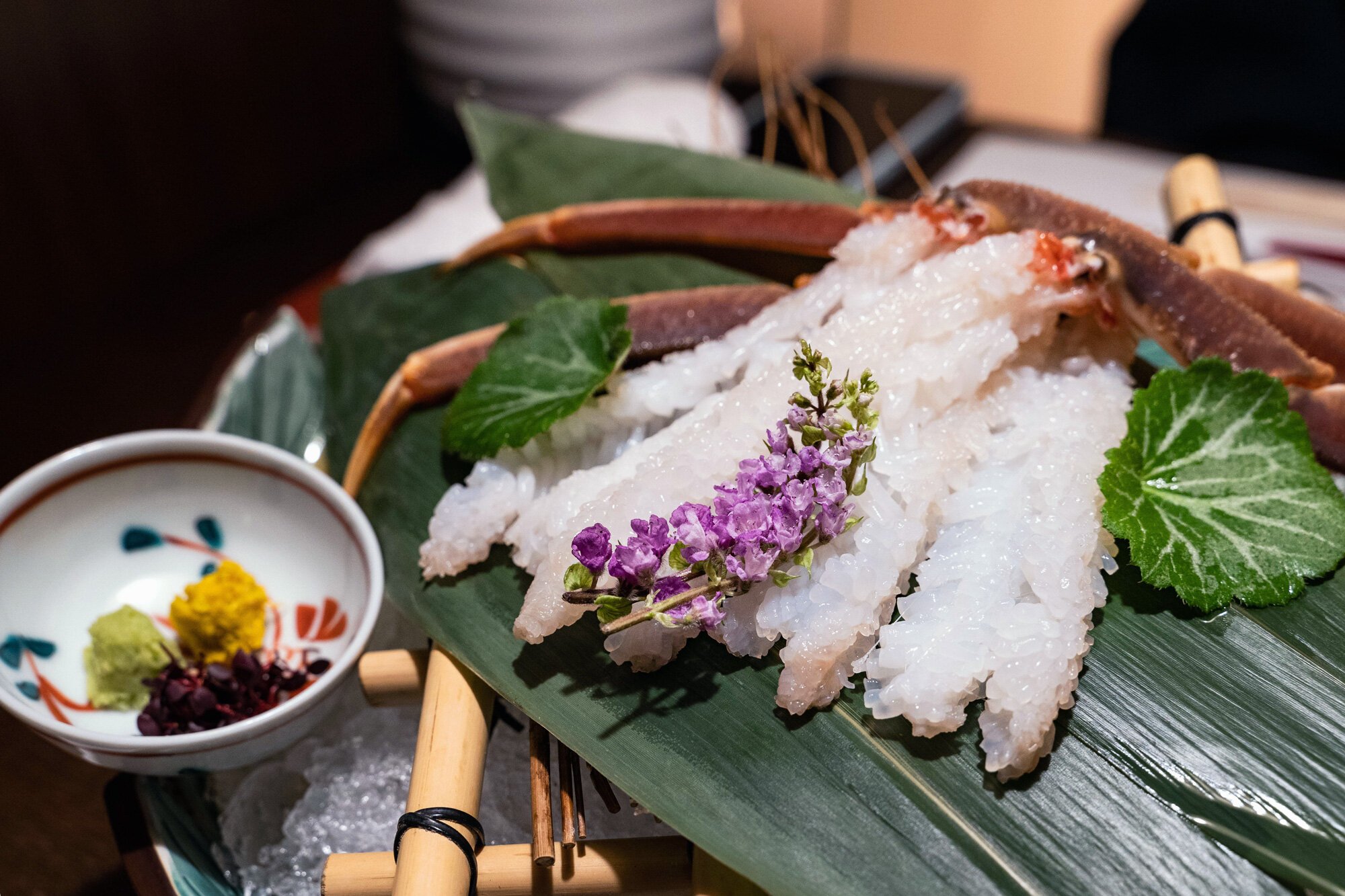
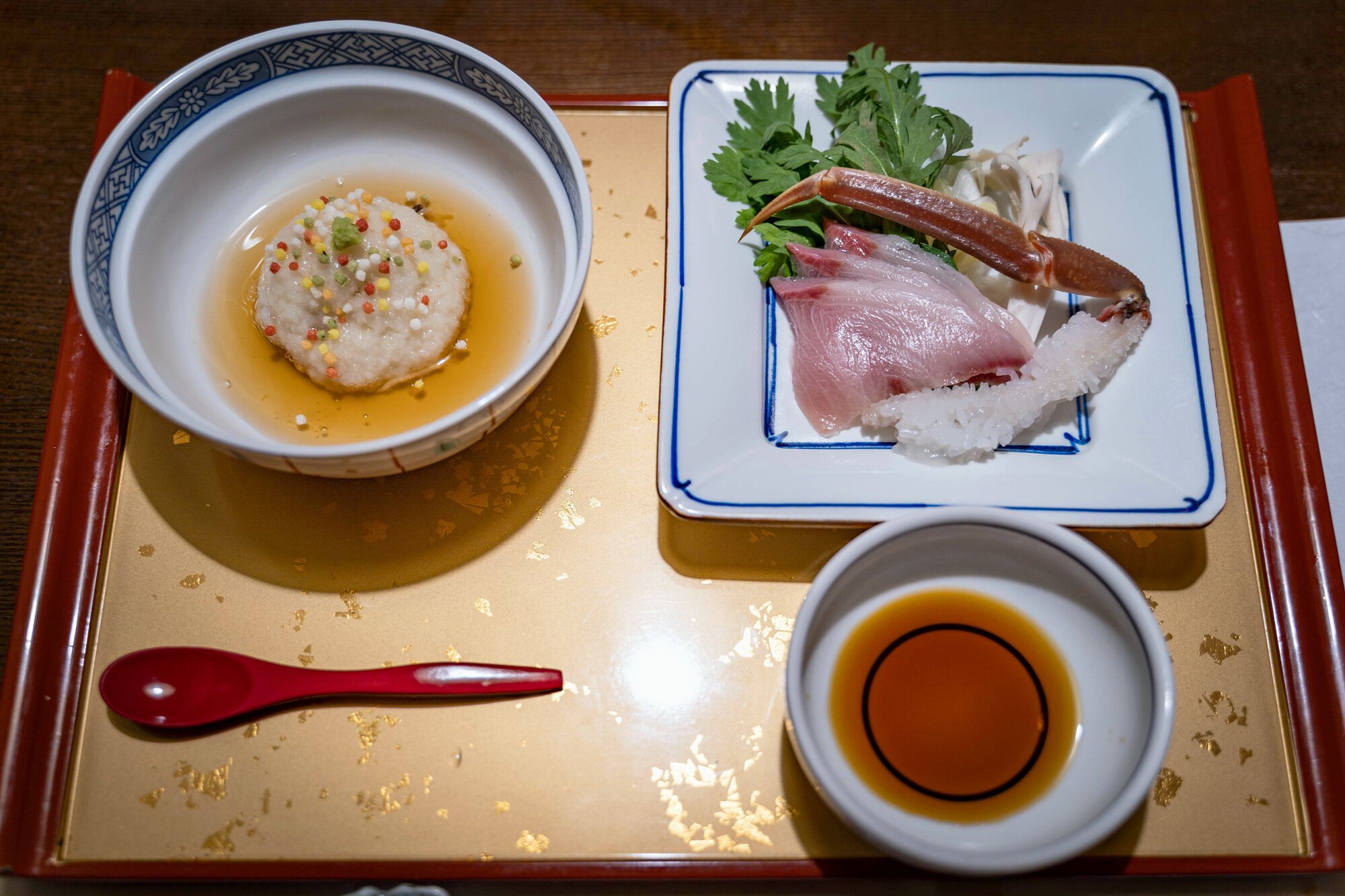
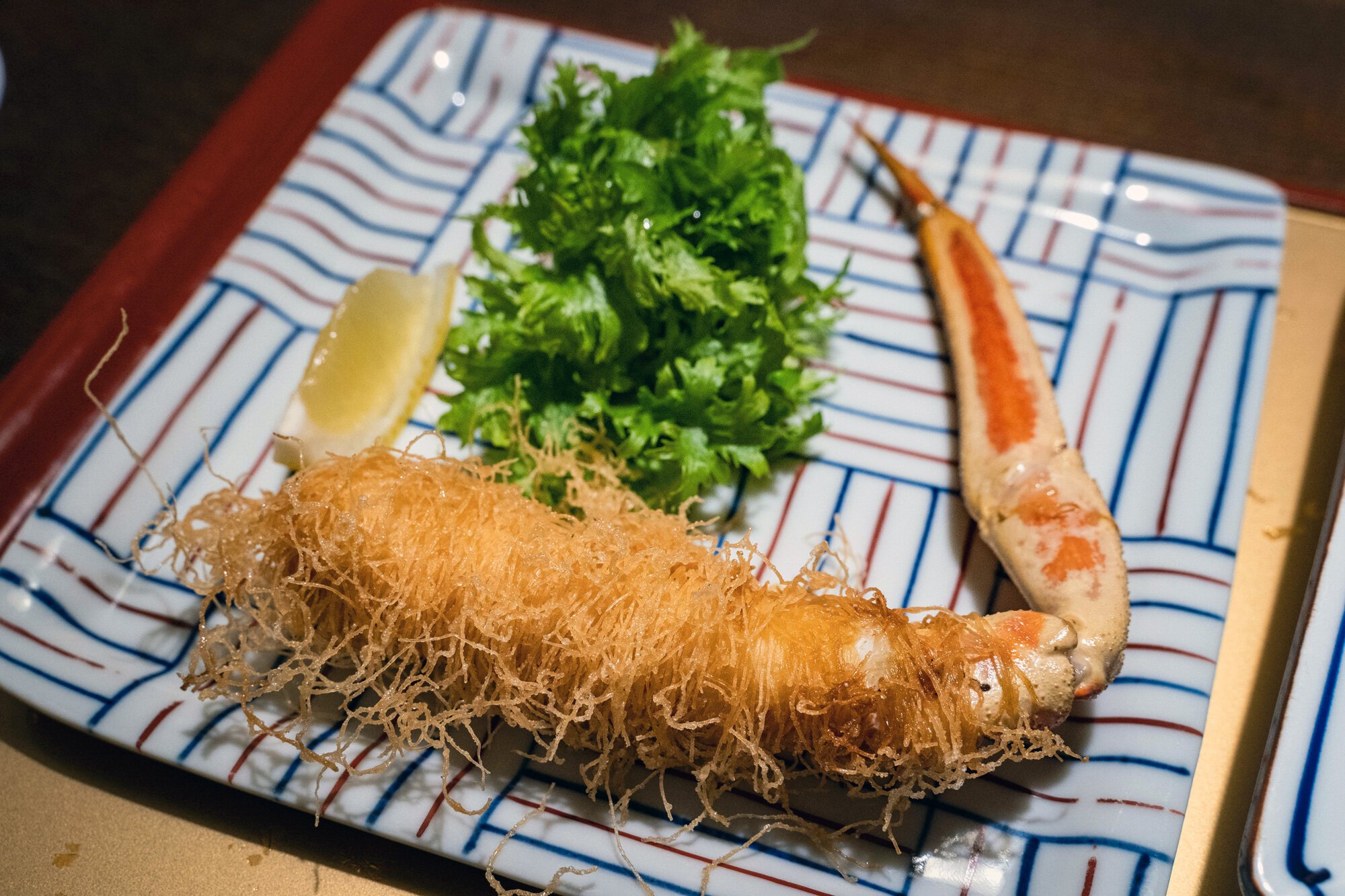
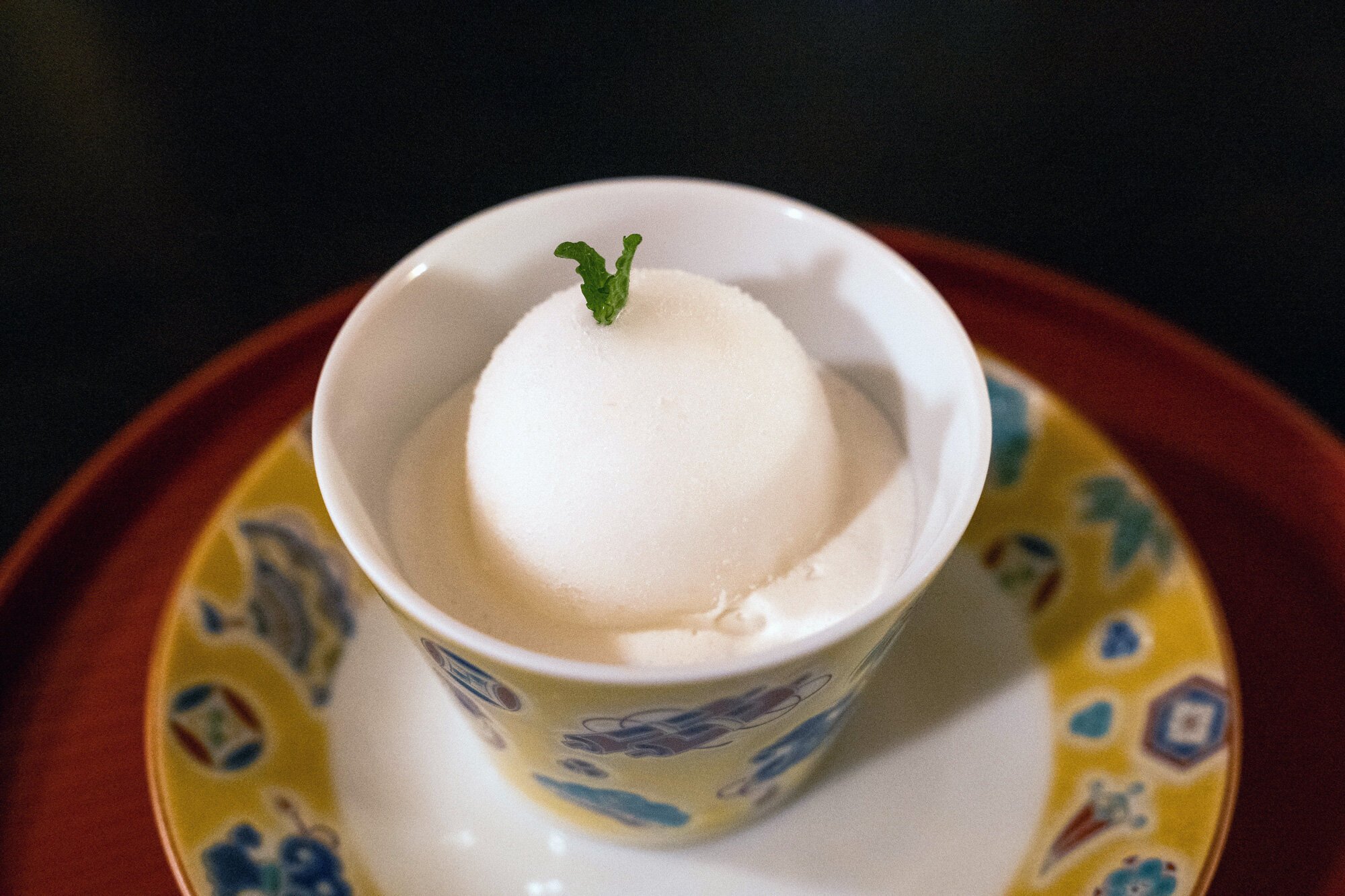
Breakfast was also great and was centered on a seafood nabe (hot pot).
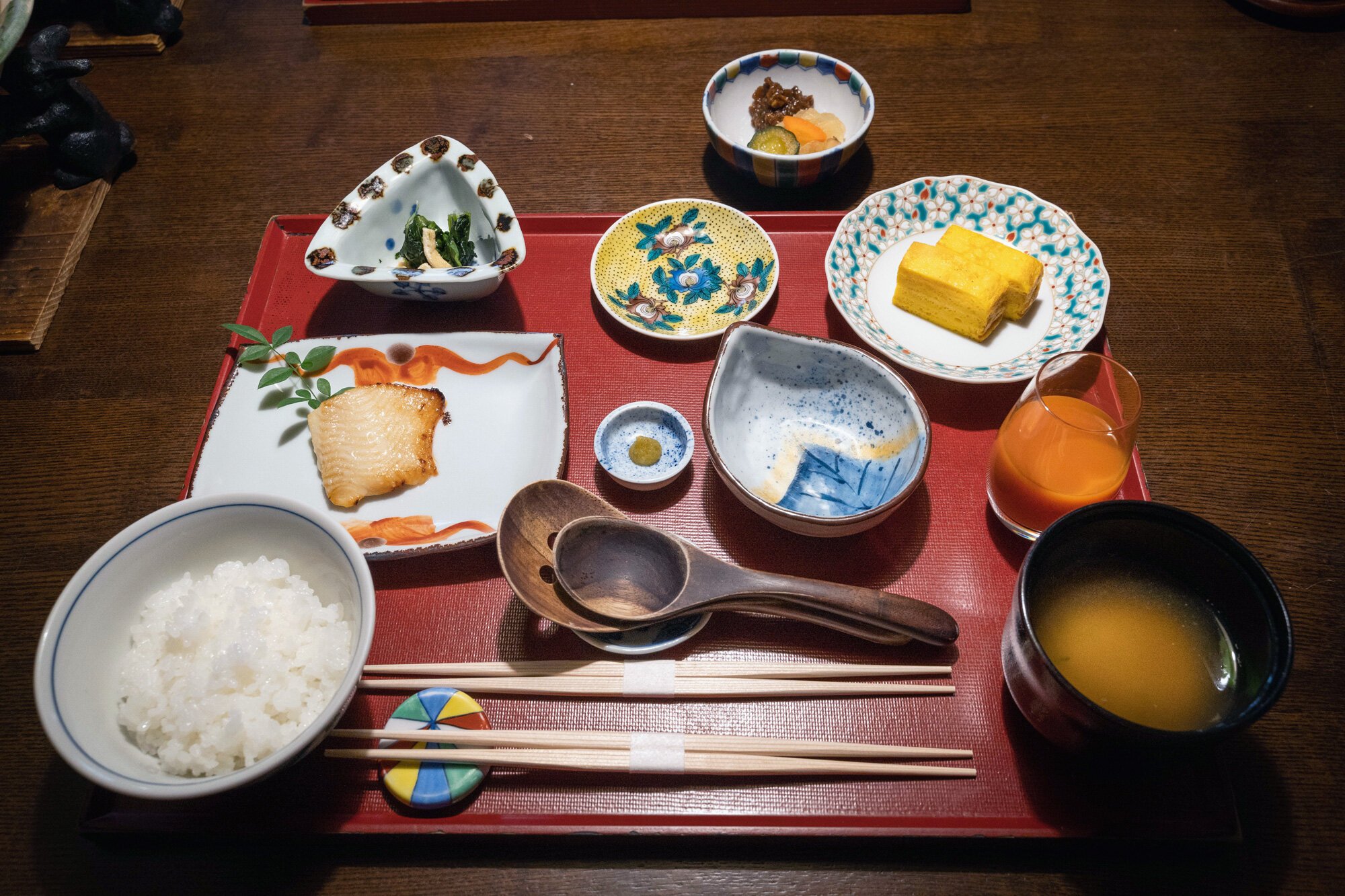
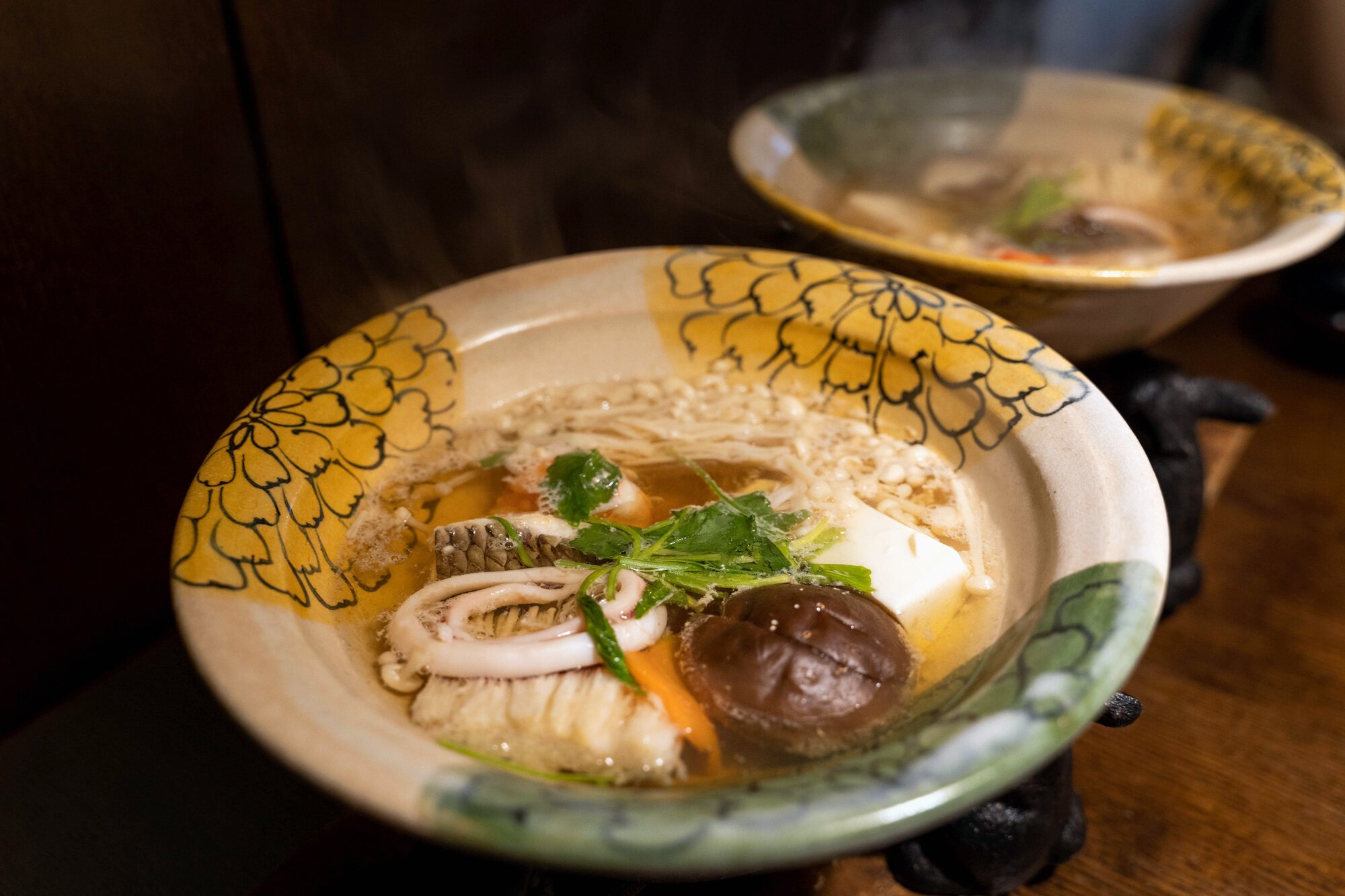
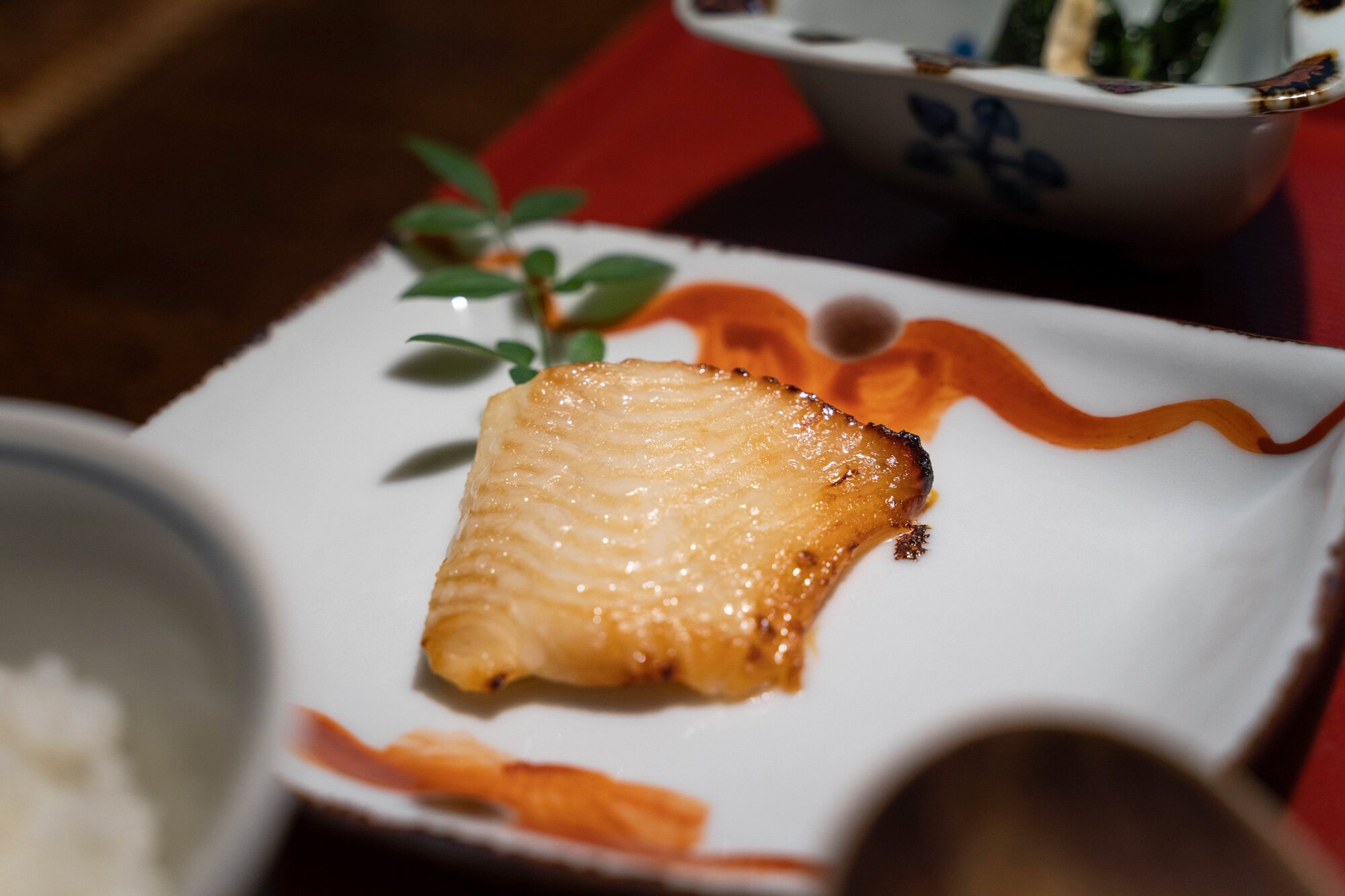

The Hoshino Resorts KAI Kaga was yet another resort in the KAI line that I enjoyed staying at. They really area an elegant onsen retreat. Whenever we have an extra day on a trip where we can afford to relax, we look to see if there’s a KAI location nearby.
I recommend this resort for anyone looking for a luxurious Japanese getaway.
KEEP IN TOUCH:
MORE TRAVELS:
SHARE:
Kanazawa
A first trip to the city that is often compared to Kyoto to explore the sights and good food.
Kanazawa is the capital of Ishikawa prefecture and is easily accessible from Tokyo
It has one of the top 3 landscape gardens in Japan, and has been largely untouched by war and disasters
It’s known for its seafood, especially crab, as well as curry
It’s often compared to Kyoto. Kanazawa is located in Ishikawa prefecture, and is a city with lots of untouched history. It’s gotten popular amongst tourists recently, both domestic and foreign, and I finally made a trip there.
How to get there
I flew from Tokyo’s Haneda Airport, which is about a 1-hour flight. From the local Komatsu Airport, there’s a bus that goes into the city. On the return, we caught the Hokuriku Shinkansen, which is a bullet train ride of about 2.5 hours to Tokyo Station.
About Kanazawa
Kanazawa has a lot of history, and has largely been untouched as it was spared from war bombings and catastrophic natural disasters. It was also one of the wealthier regions in Japan during the Edo Period, so there’s definitely a lot to see.
It’s also known for good food. The city borders the Sea of Japan, so seafoods like crab are quite famous here.
The Hokuriku Shinkansen bullet train was opened in 2015, and the increased access to the city from major hubs like Tokyo is helping it grow into one of the top travel destinations in Japan.
Where we stayed
Because most of the major attractions are to the southeast of Kanazawa Station, we decided to stay in that area. While there are some Japanese-style ryokans and more relaxing resorts, we chose a regular hotel due to our plans to be on the go for most of the time.
We stayed at Tokyu Stay, a hotel which opened in February 2020. It’s a typical hotel but with slight larger rooms, an up-to-date shower/bath unit, separate toilet, and an in-room washer/dryer unit.

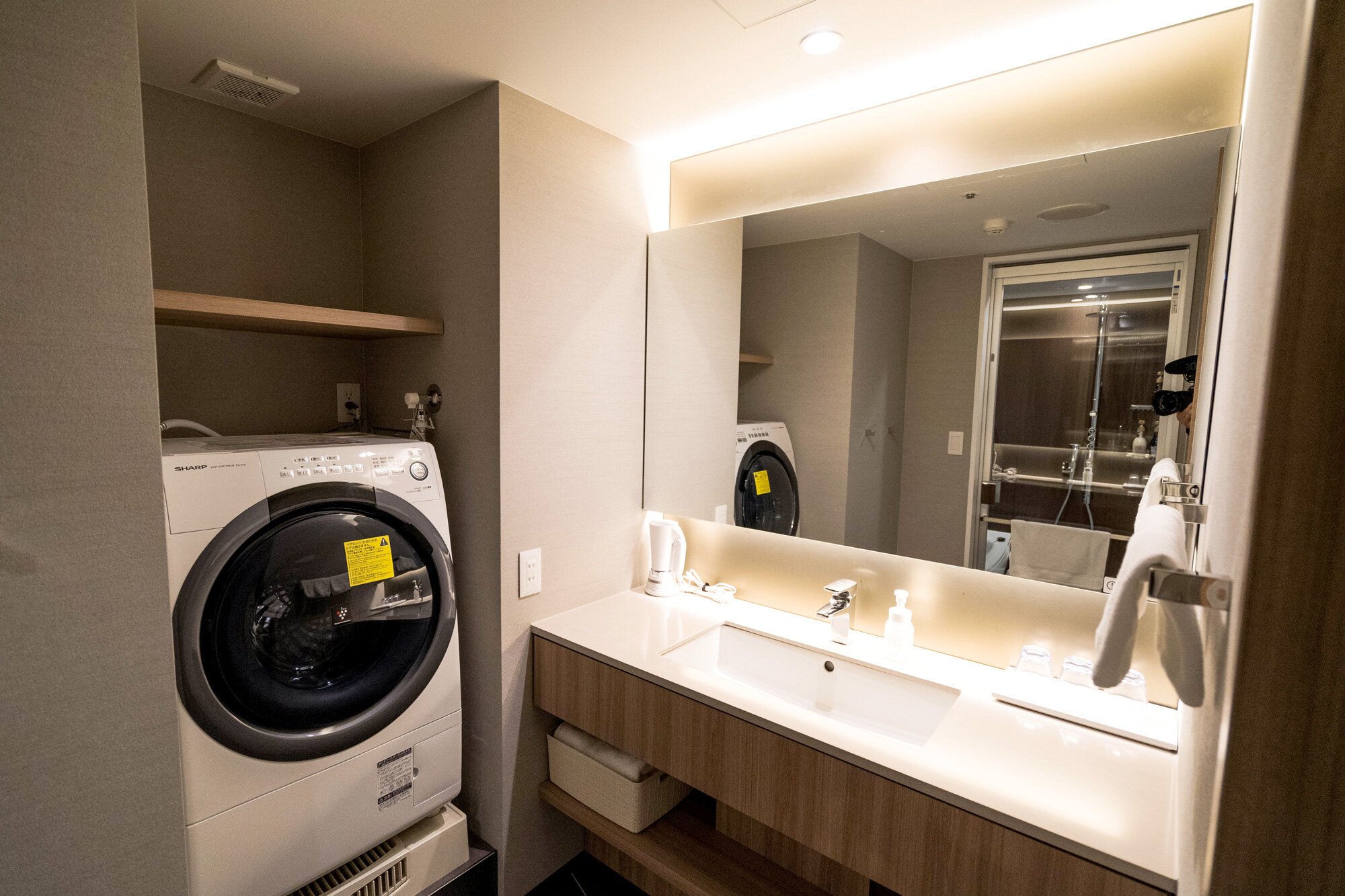
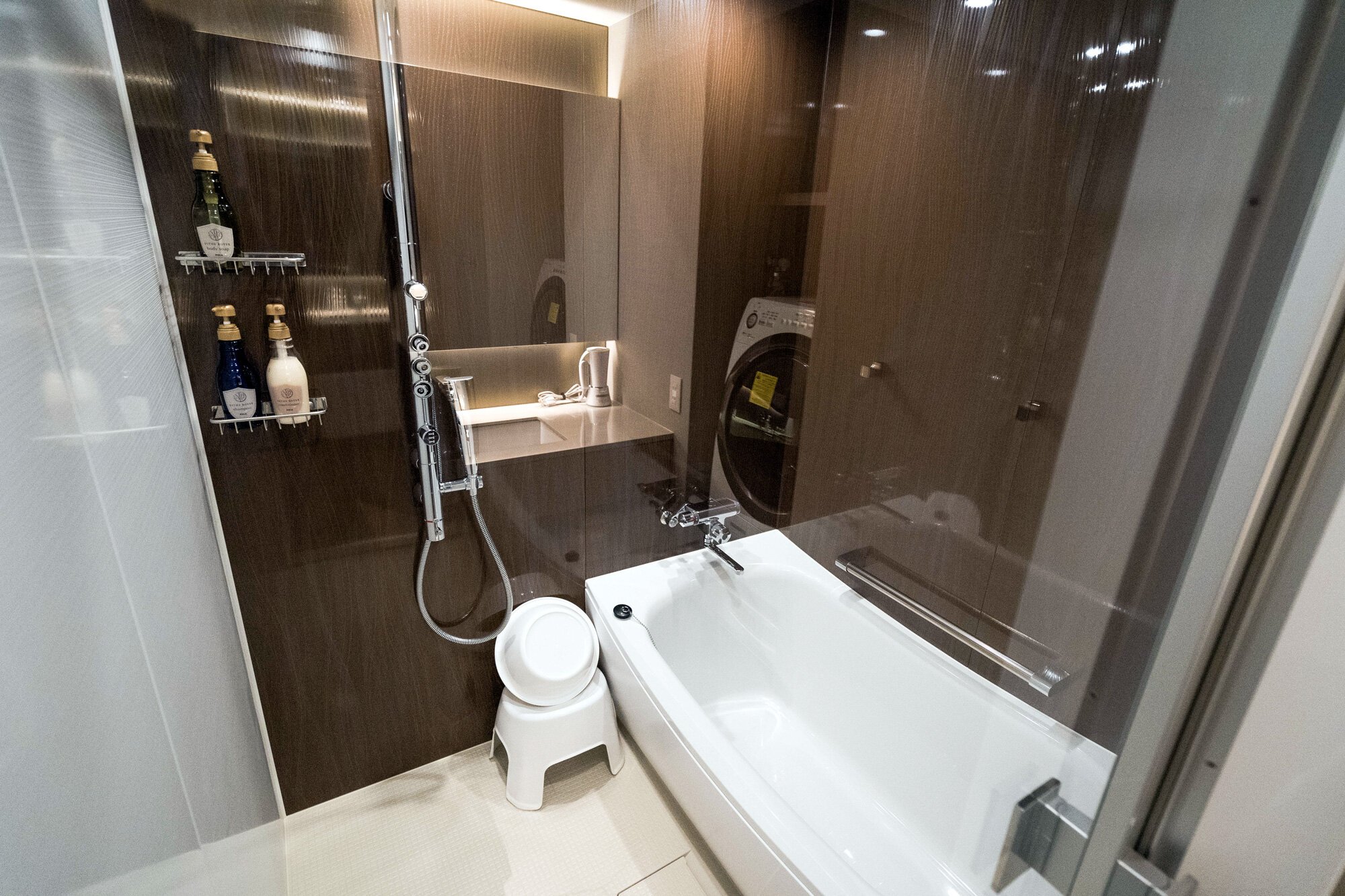

There’s a bus stop a short block away as well as a convenience store, and is convenient to get to a lot of the main sights in the city.
What we did
There were two priorities: See the sights that make Kanazawa famous and eat some good food. I’ll put the food at the end, but first, here are the sights we visited.
Omicho Market
Omicho Market is the city’s central seafood market and it dates back to the Edo Period.
The market is lined with vendors selling fresh seafood, from crab - what Kanazawa is known for - to oysters, uni, dried fish used to make dashi, and various fish and shellfish. There are also more restuarant-oriented shops that will serve the fresh fish prepared as sushi or kaisendon bowls, and they seemed to be quite popular.
We stopped at a vendor for a quick stand-up, eat-and-go, and got oysters, shrimp and uni. The first two were good but the uni was on ice, so it wasn’t served at the right temperature.
Kazuemachi Chayagai
Stumbling on Kazuemachi Chayagai was a coincidence while en route to our destination. It’s a few small alleys of old, restored teahouses that date back to the 1800s. It borders the Asano River and is vaguely resembles the Pontocho area alongside Kamo River in Kyoto, but on a smaller scale.
Higashichaya
One of the top destinations to visit in Kanazawa. Higashichaya is an old teahouse district. These districts were designated areas in the Edo Period for restaurants to have geisha to entertain.
Higashichaya is the largest of the three remaining districts in Kanazawa.
The area is very photogenic with its alleys, wooden facades, and the occasional visitors dressed in yukata or kimono. It does get pretty crowded though.
We stopped for some Japanese tea and snacks here - more on that below.
Kenroku-en
Ranked in the top 3 landscape gardens in Japan, Kenroku-en is easily the top destination in Kanazawa.
It was developed by the Maeda clan and was built between the 16 to 1800s. My mom had shown me photos of it when she visited, and it was at the top of our must-go list for this trip.
Its name refers to the 6 points of garden beauty that comes from Chinese landscape theory - extensiveness, quiet seclusion, artificial construction, antique elegance, abundant water and wide views.
It definitely succeeds with each of the criteria as it’s a beautiful garden.
Kanazawa Castle
Next to Kenroku-en is Kanazawa Castle. It’s still undergoing reconstruction, but it was nice and free to walk through.
Oyama Shrine
Also in the same area is Oyama Shrine, which is dedicated to the Maeda clan’s first lord, and was built by his successor.
It’s not big but it’s pretty unique, the main gate in particular. It was designed by a Dutch architect and incorporates an odd mix of Asian and European styles. The garden area is pretty nice too.
Nagamachi Samurai District
A beautiful area right in the middle of a typical, modern-day neighborhood. Nagamachi Samurai District was a neighborhood for samurai and their families to live.
There are small museums and cafes in the area, but with its photogenic walkways and canals, we just preferred to enjoy the atmosphere of the area.
That pretty much summed up the trip - just take in the city. And of course, the food. Here’s some places that we went that I’d recommend.
What we ate
Kozakura

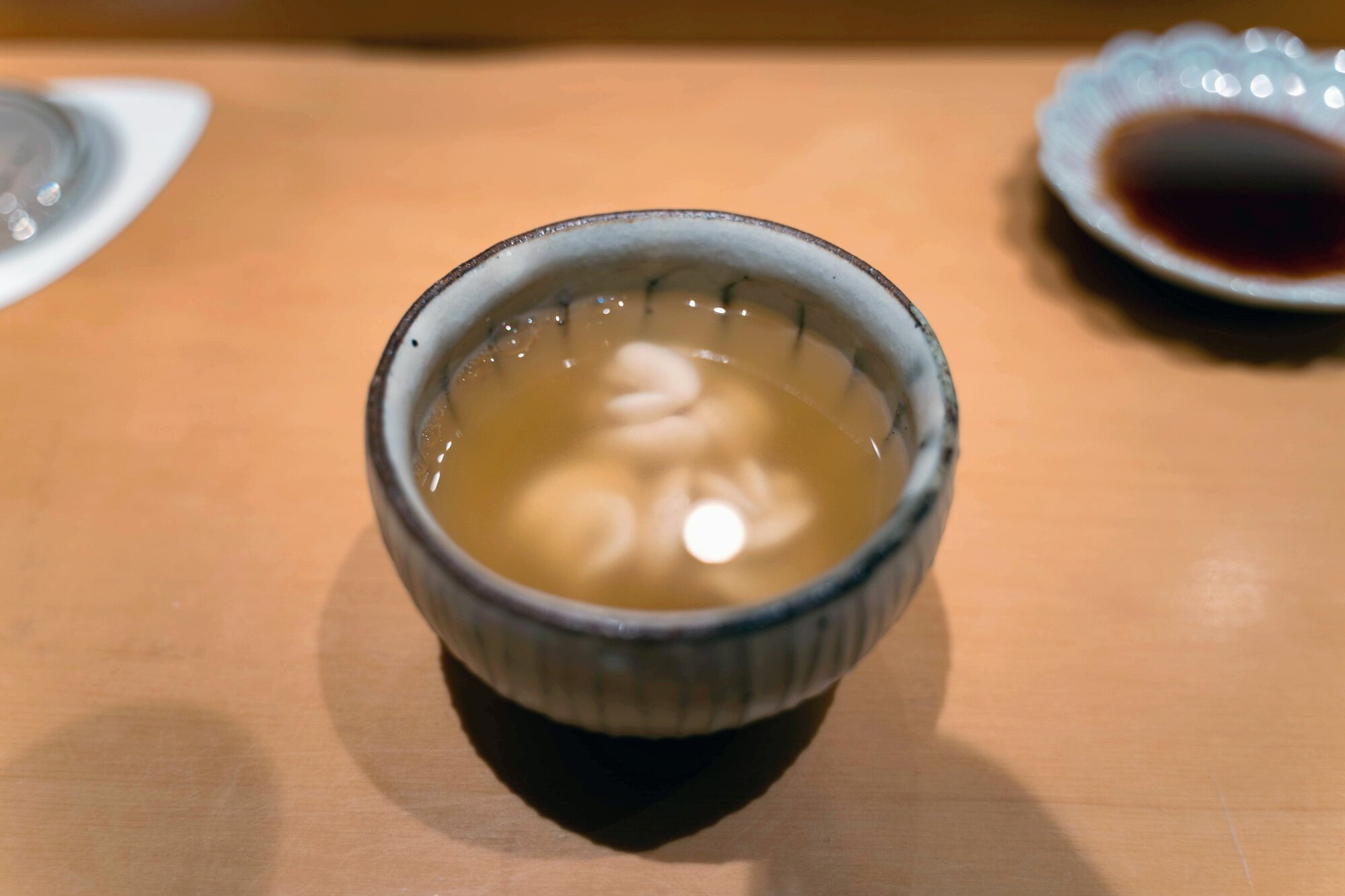
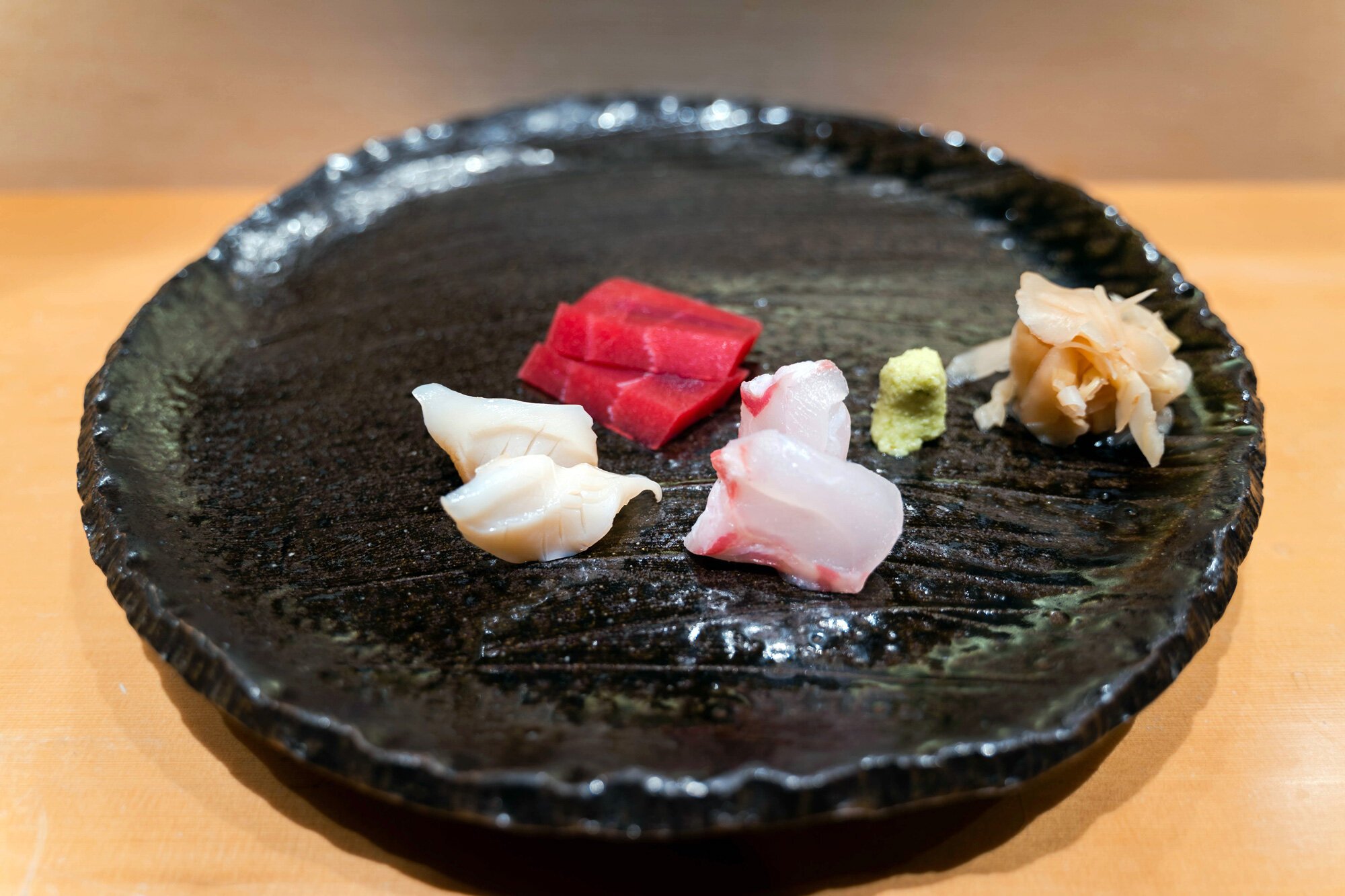
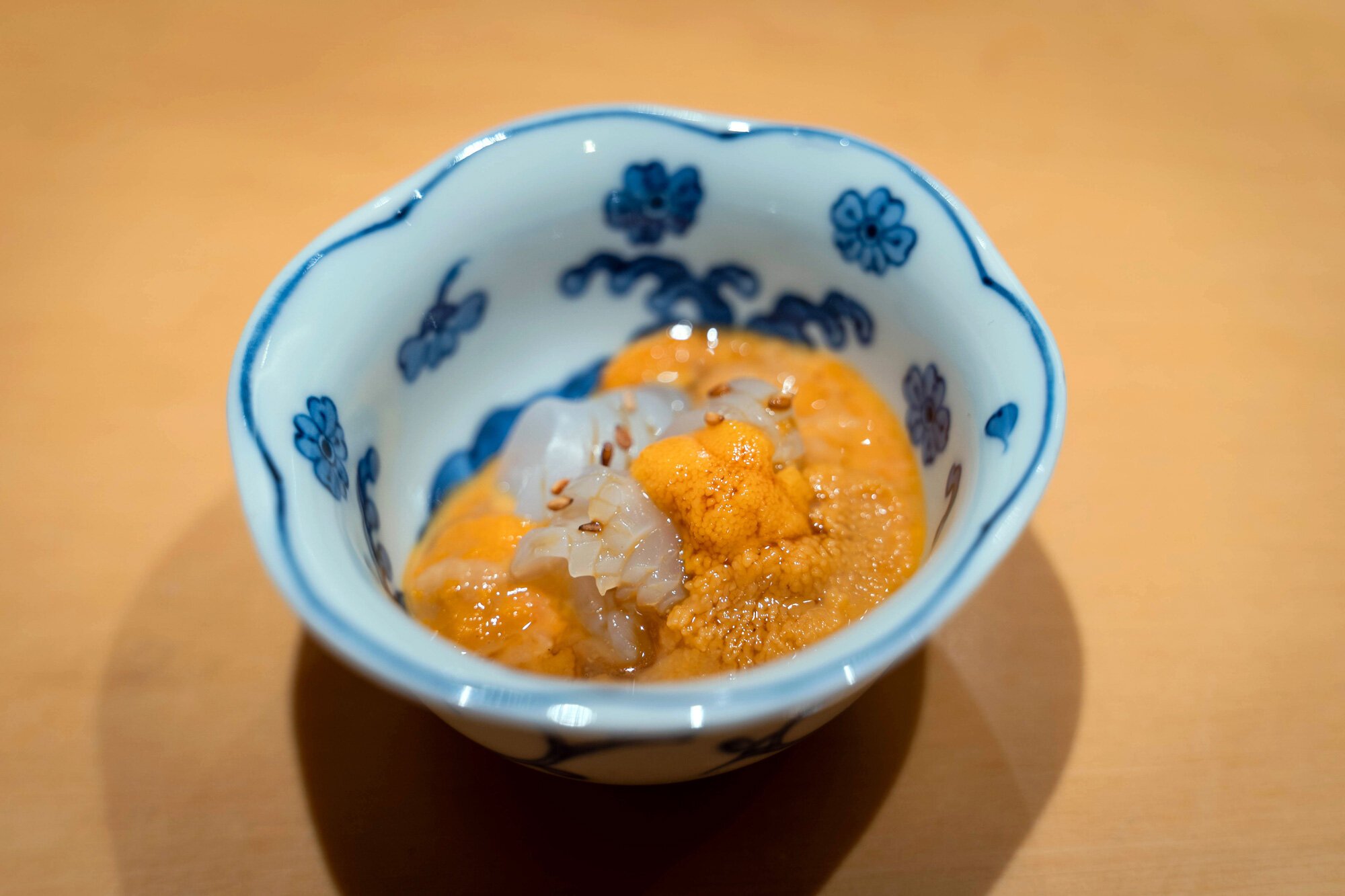
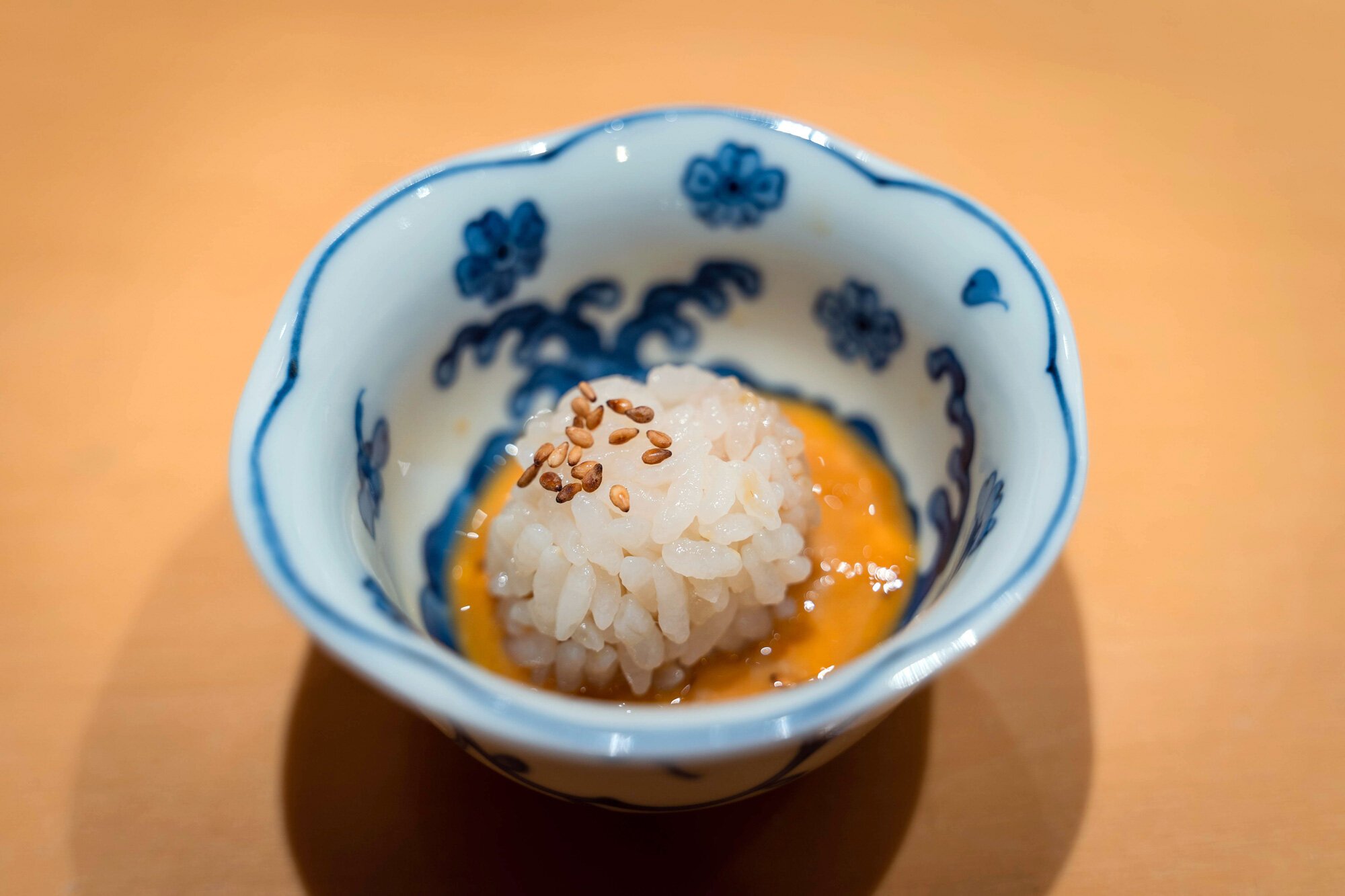
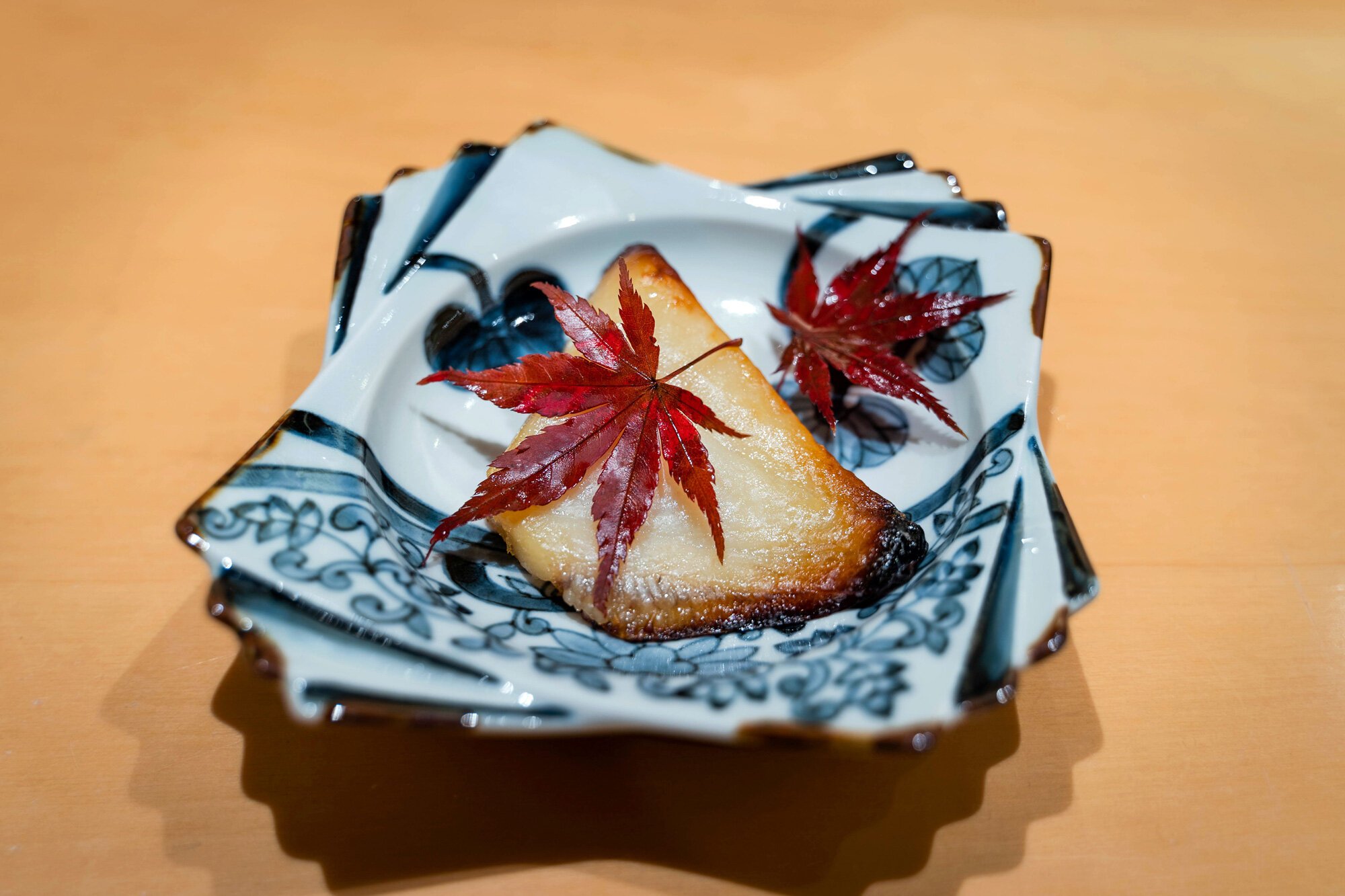

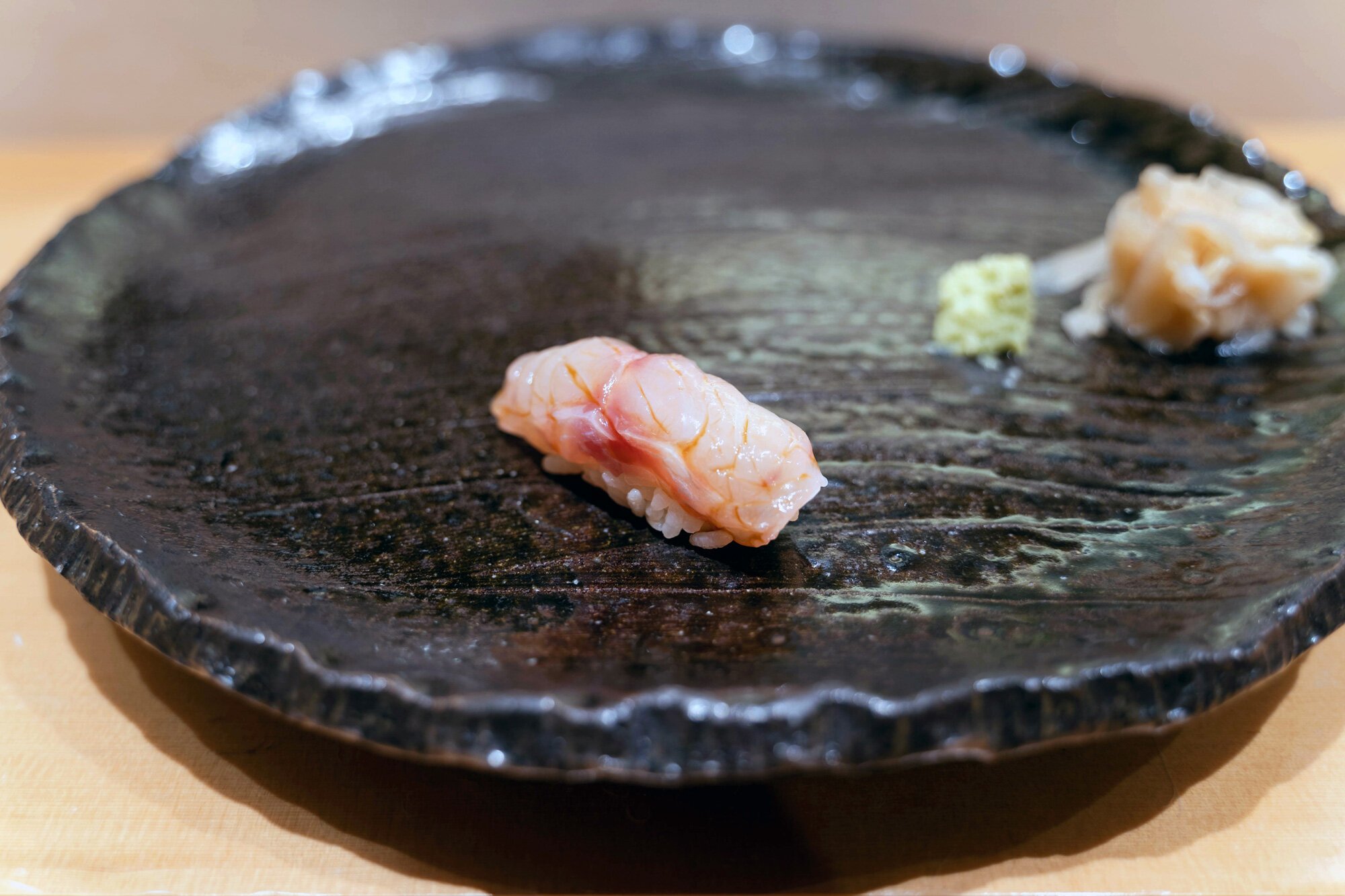
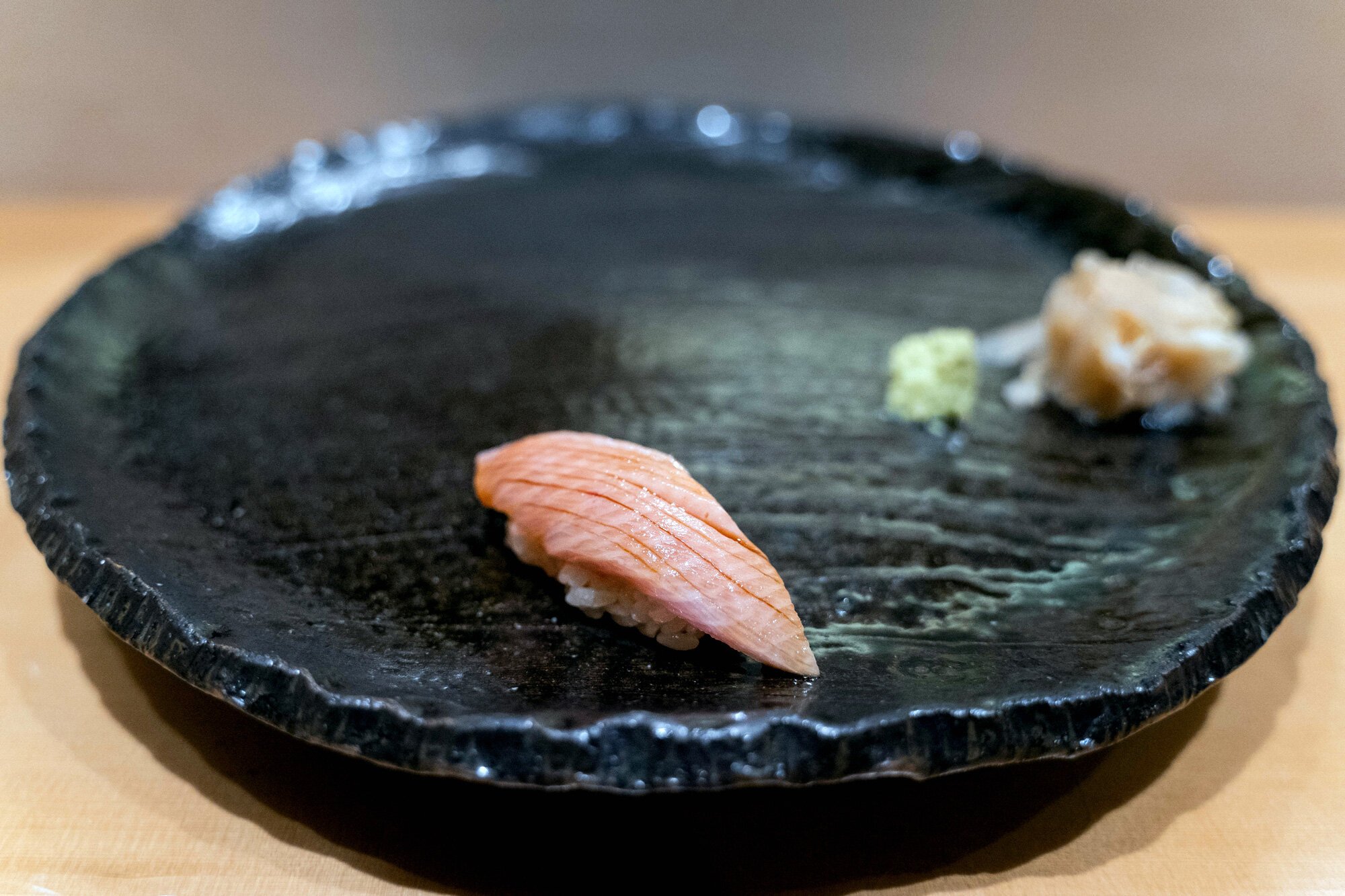
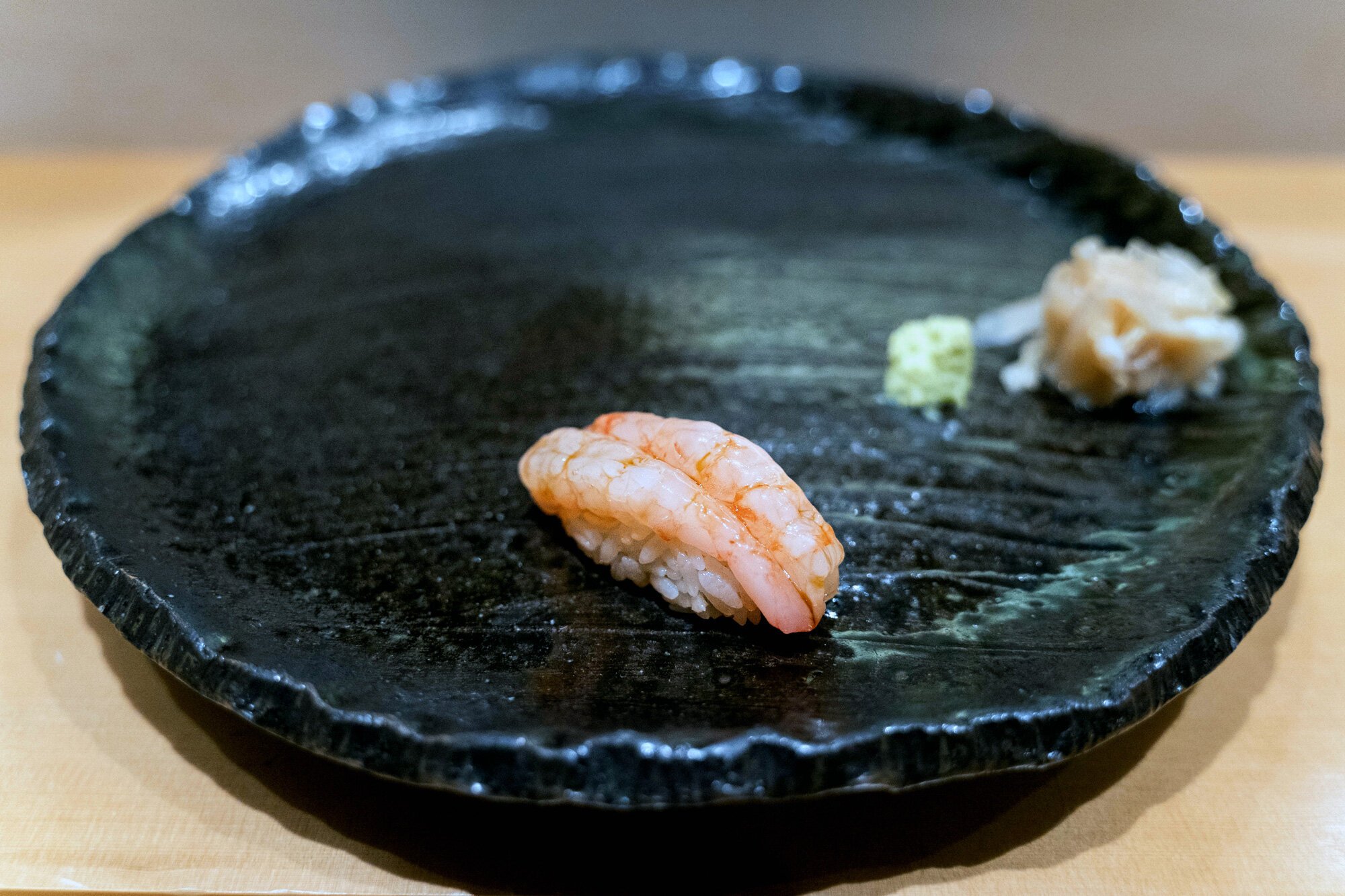
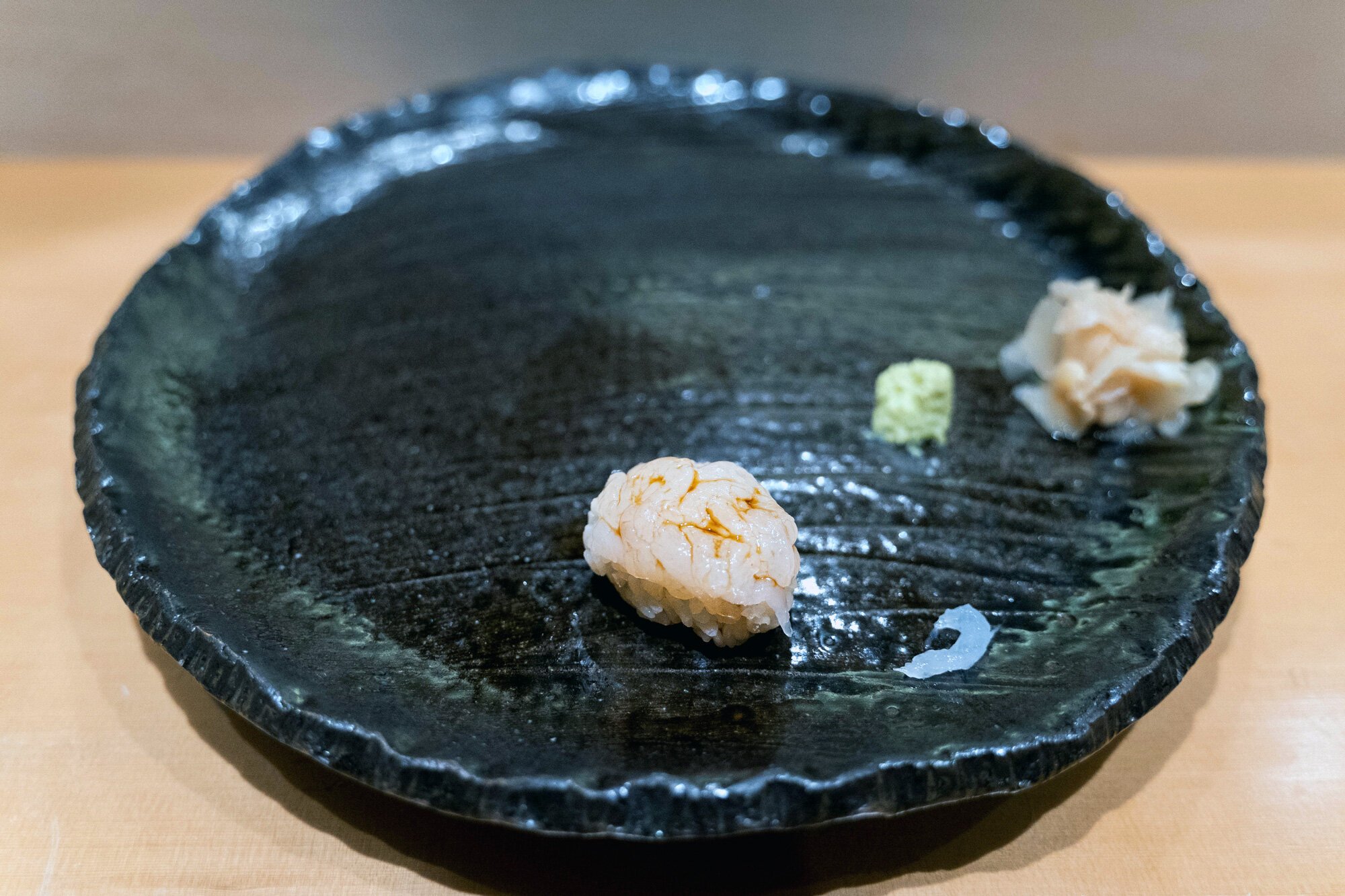
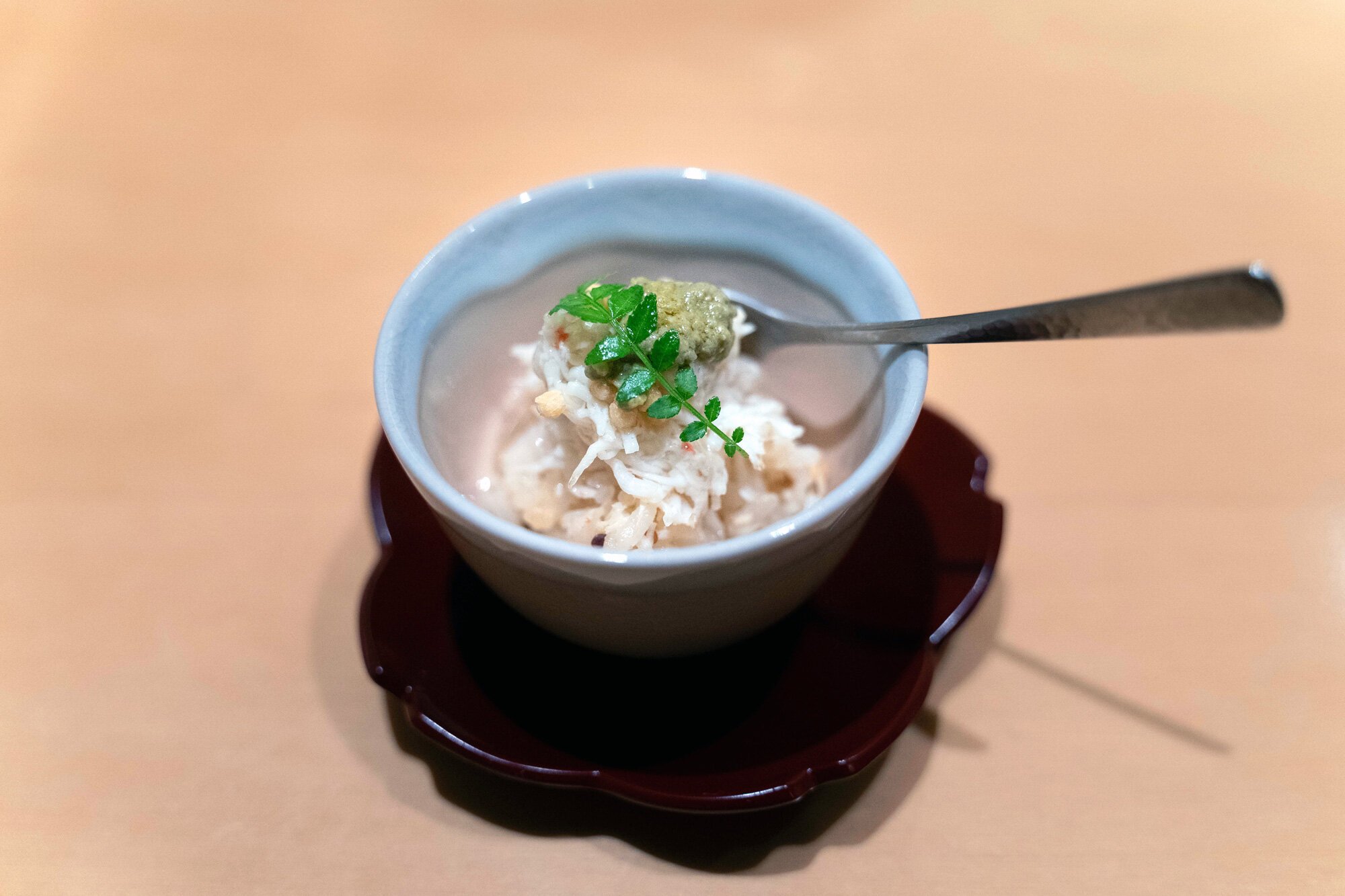
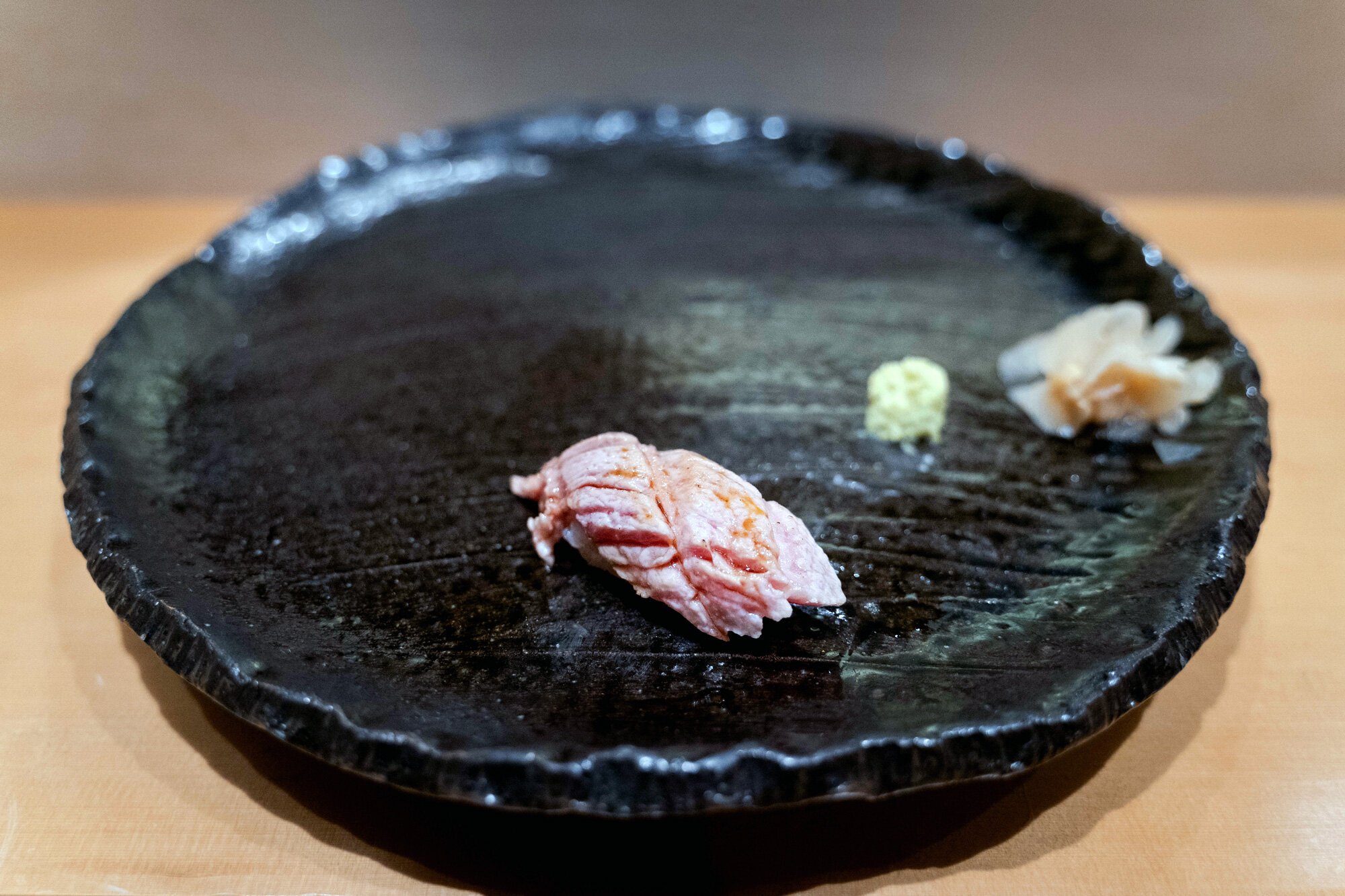
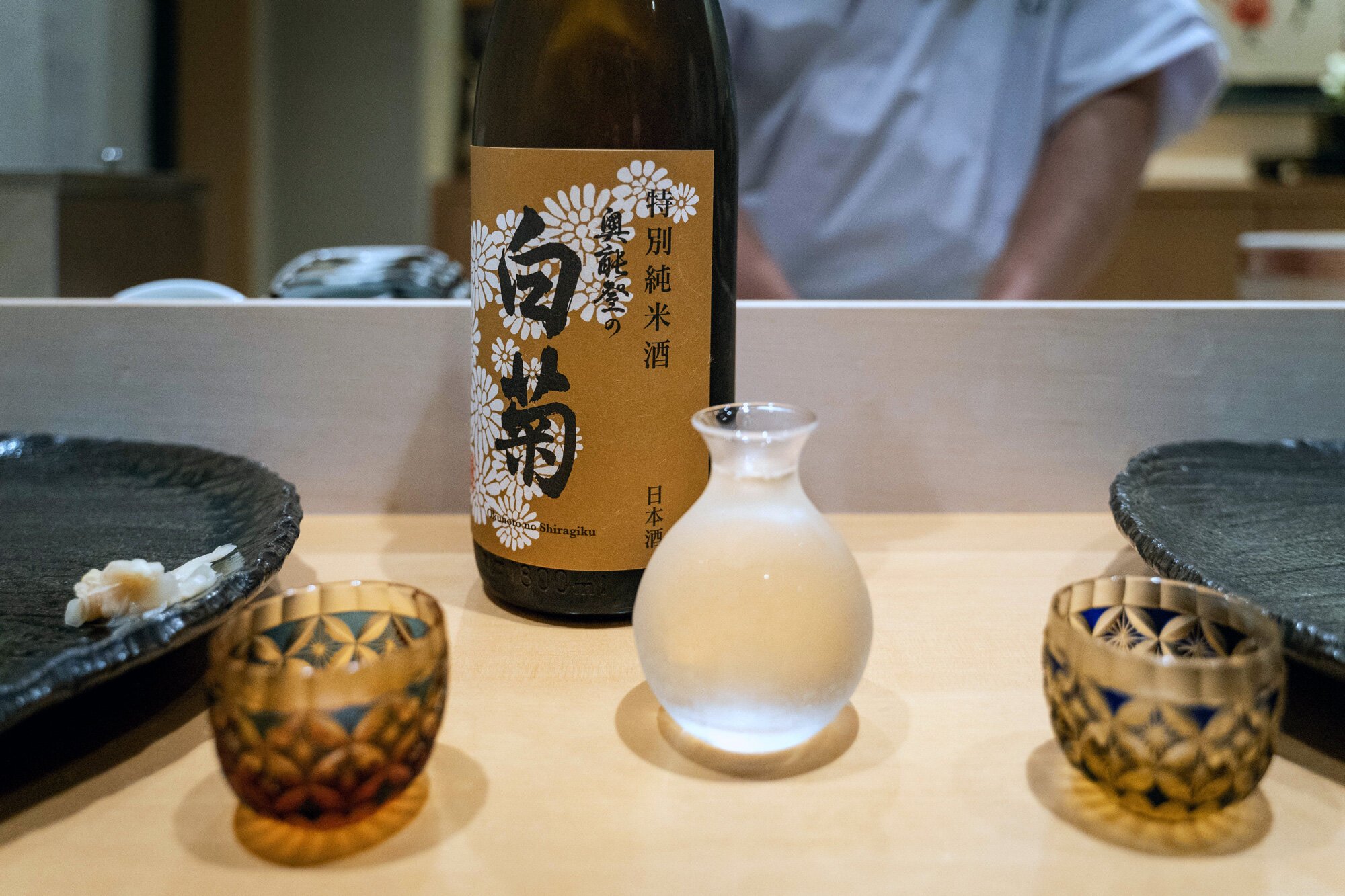
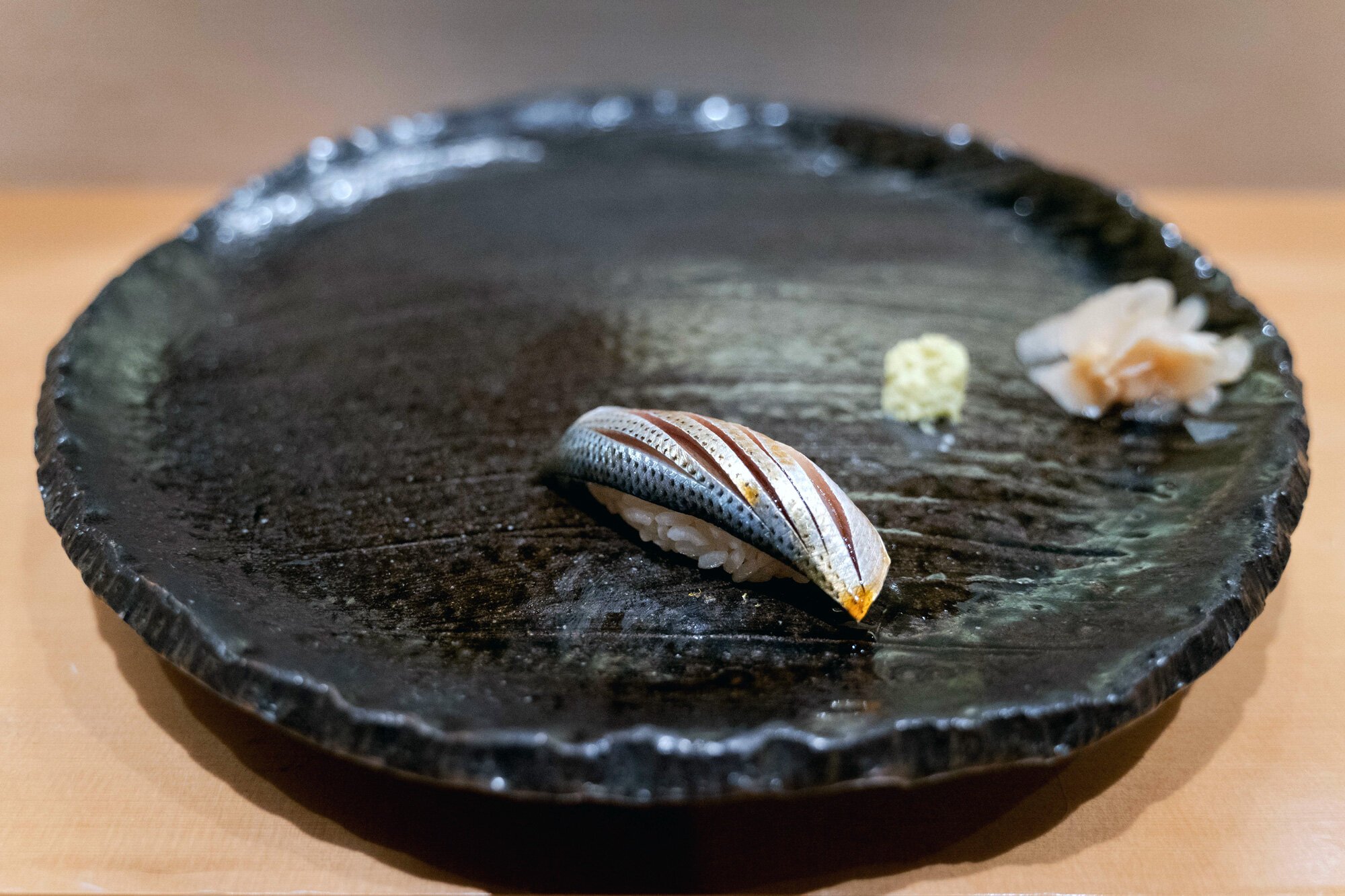
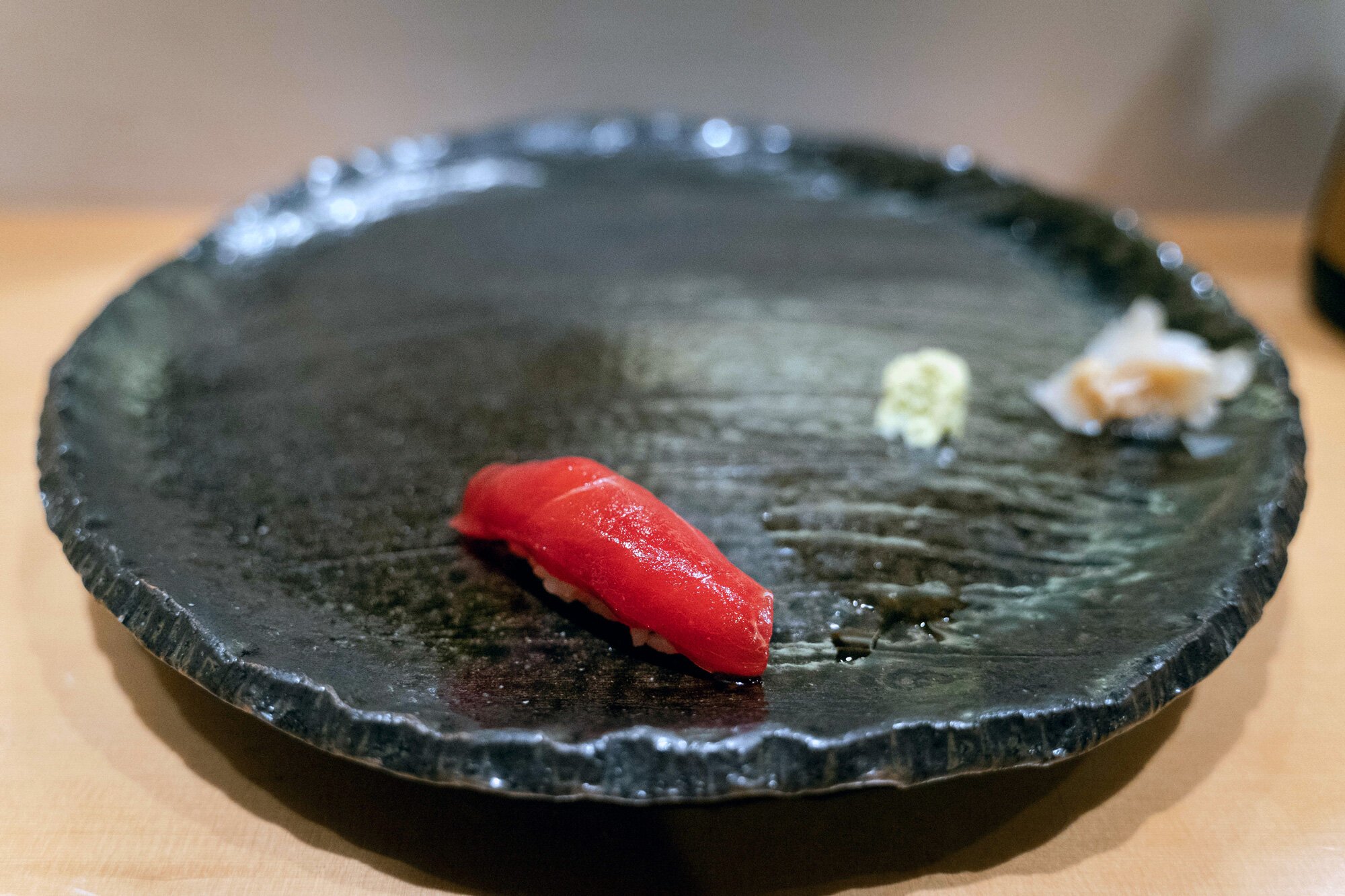
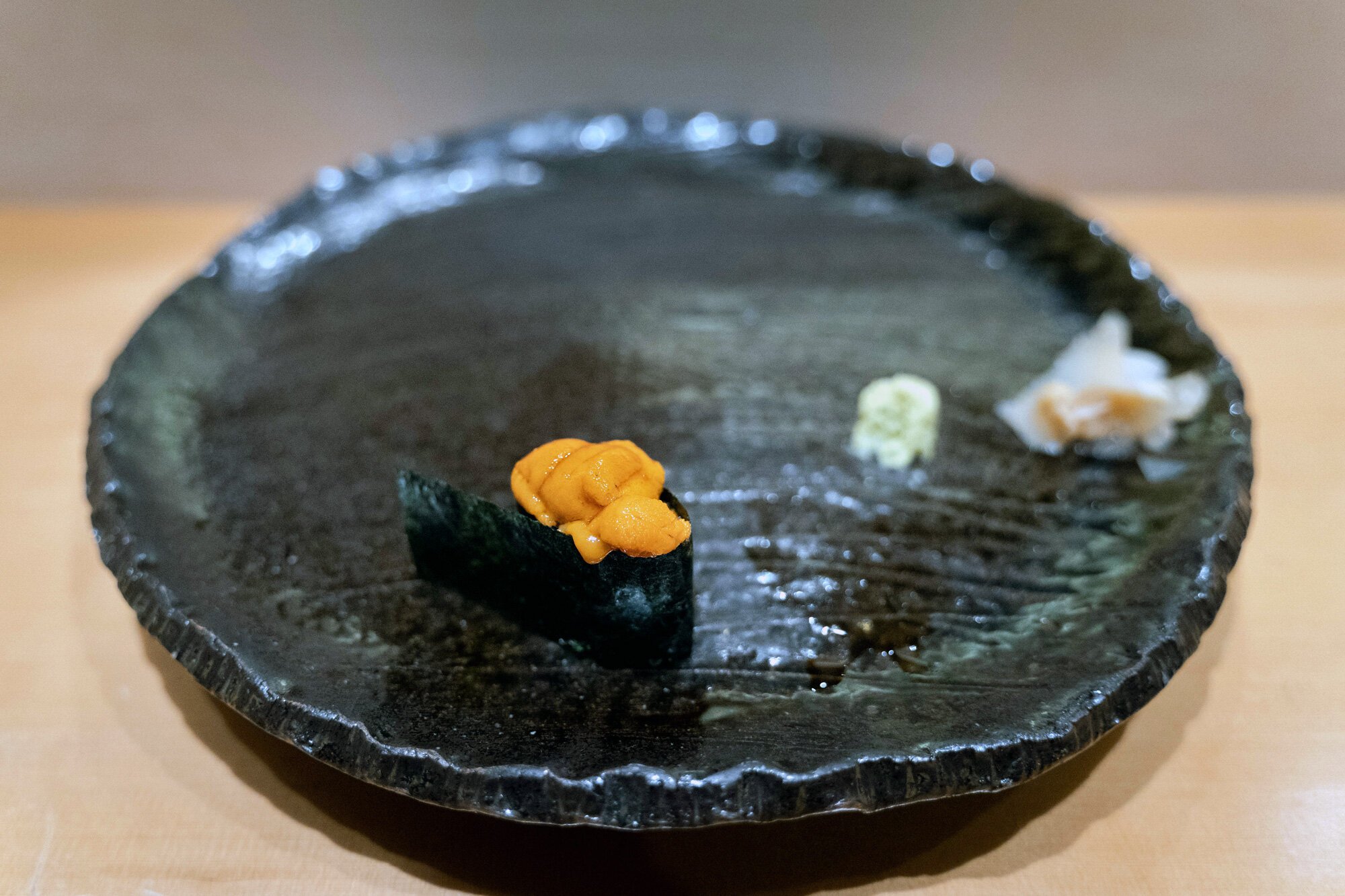
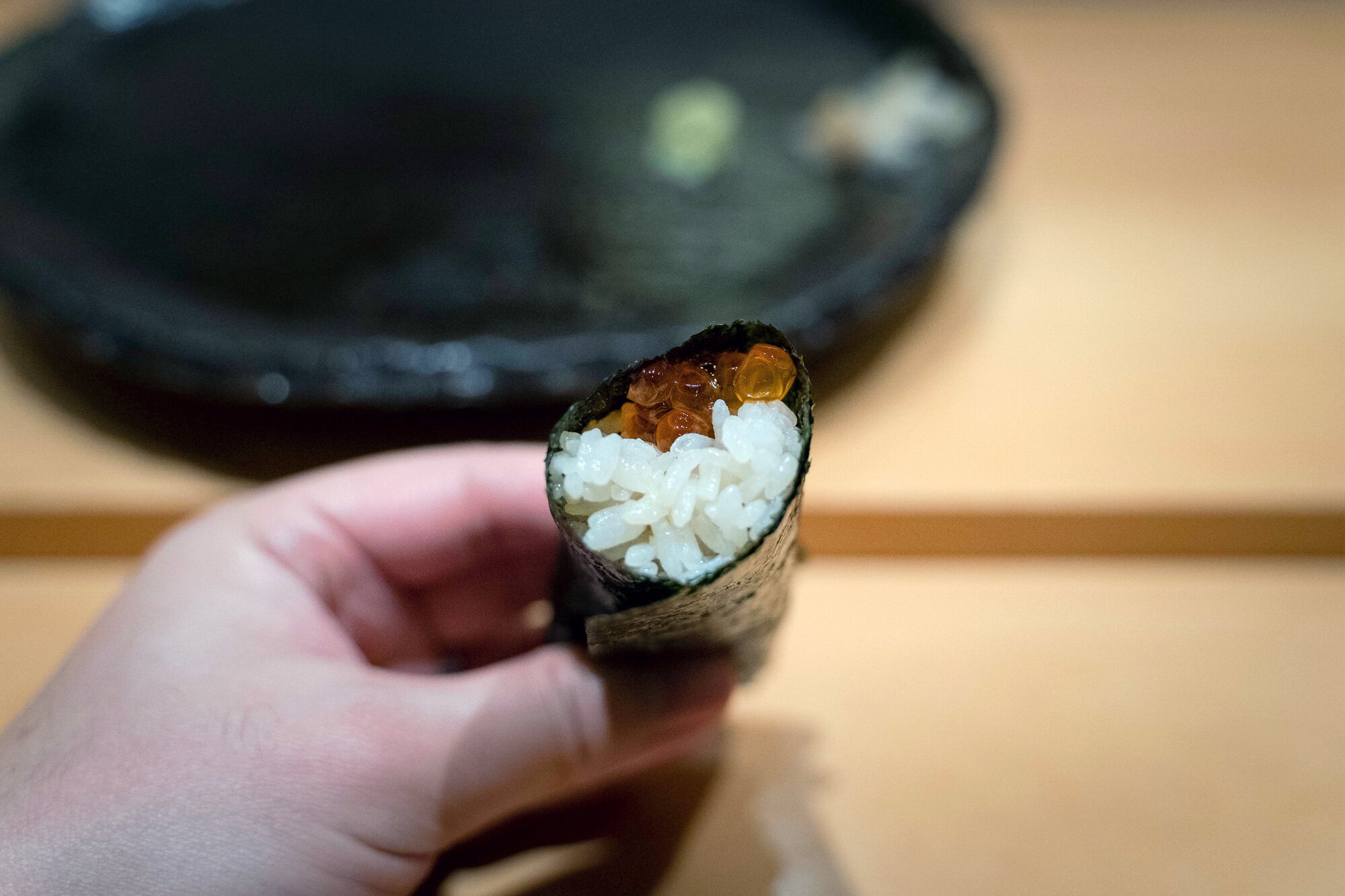

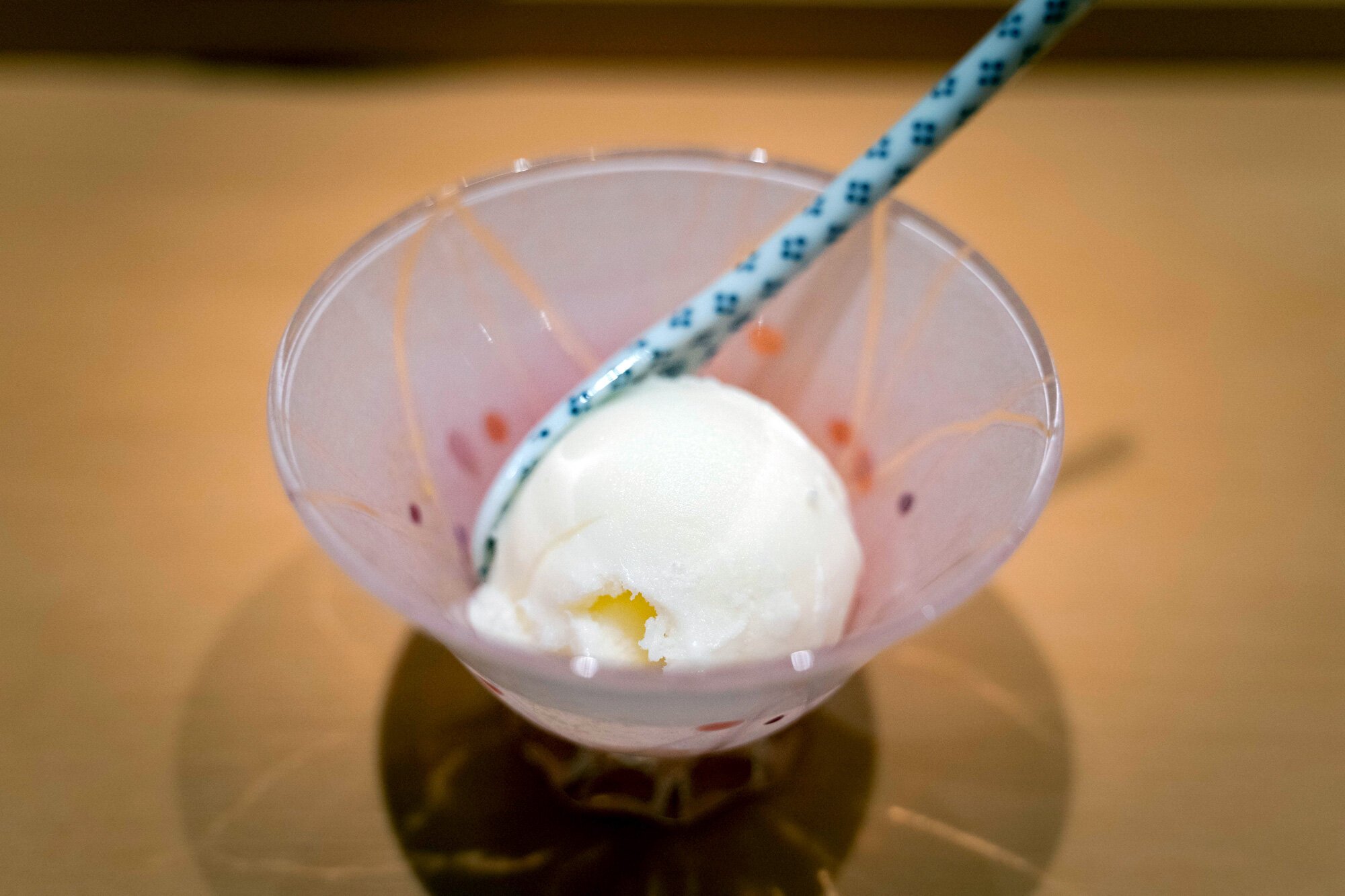
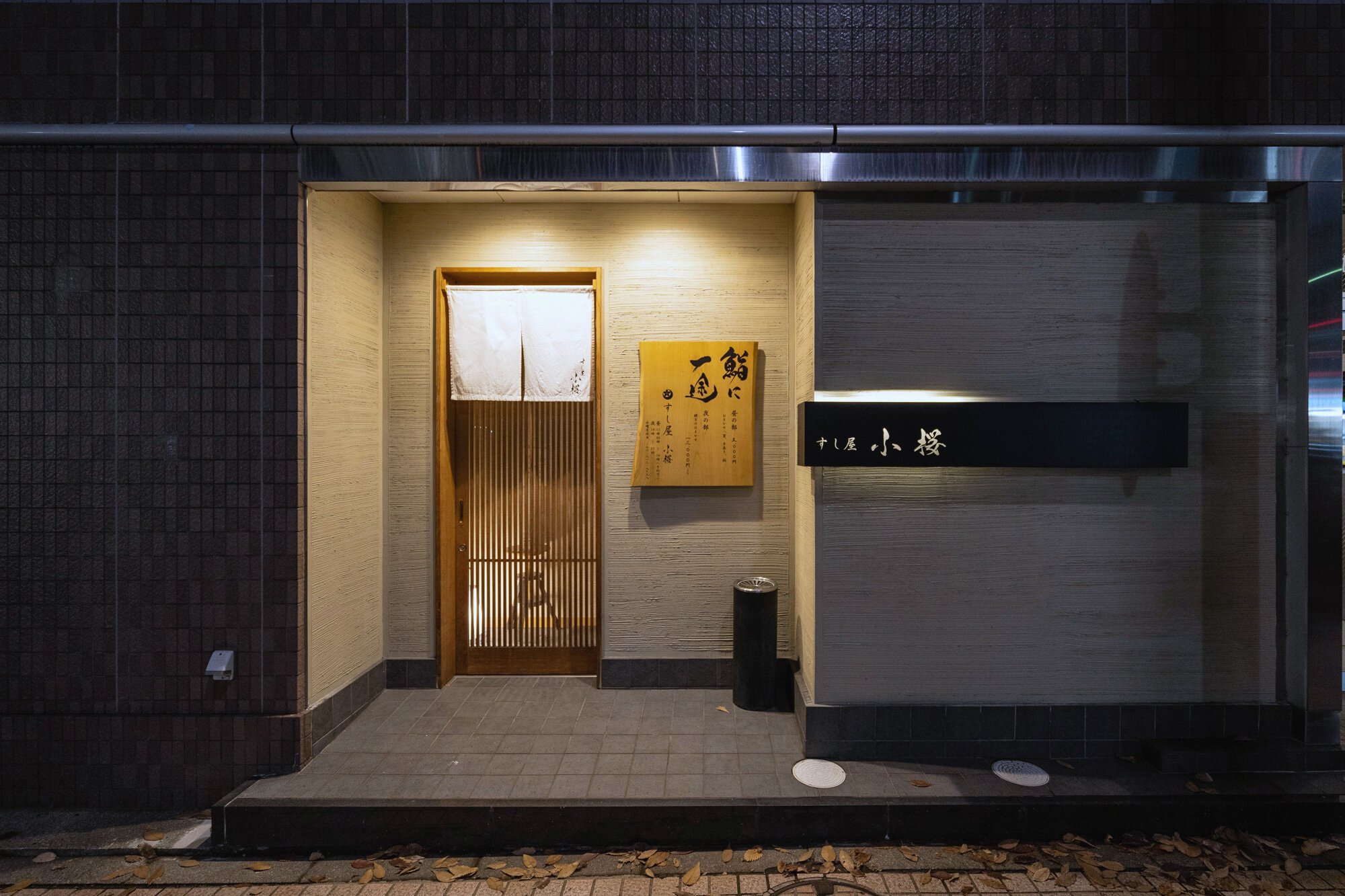
Rated a popular sushi bar by Japanese food review app Retty, Kozakura is an intimate omakase restaurant with 6 seats. It can be booked up quite far in advance, but luckily we were able to get a reservation.
While the chef doesn’t speak English, he is quite friendly and is very skilled at his craft. Needless to say, all of the dishes were delicious, especially the anago nigiri sushi that I wasn’t able to take a pic of due to it needing to be eaten quickly right off his hand.
There’s also a good selection of nihonshu (sake), including ones made in the prefecture. A very good meal.
MAP
Turban Curry
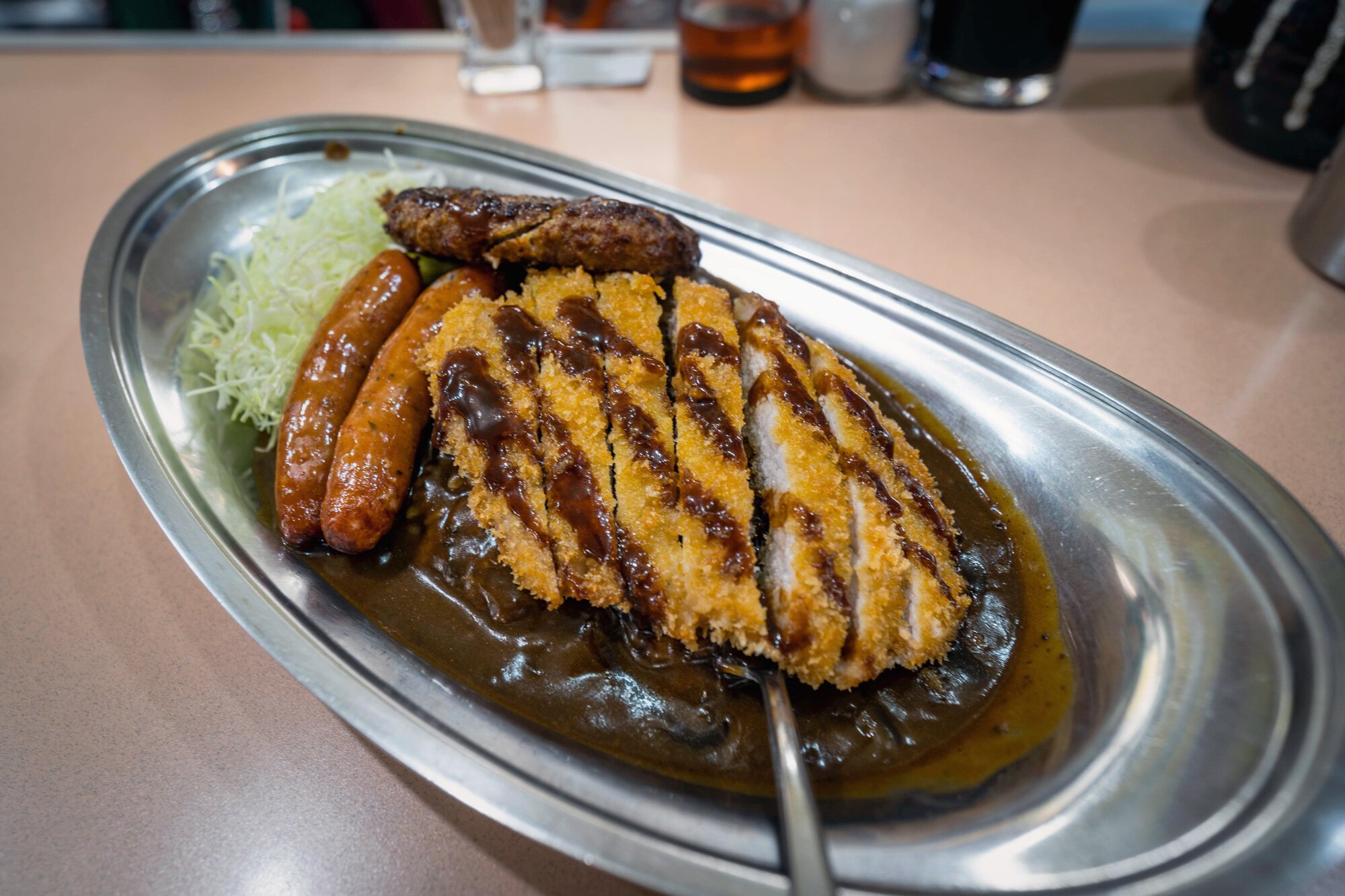
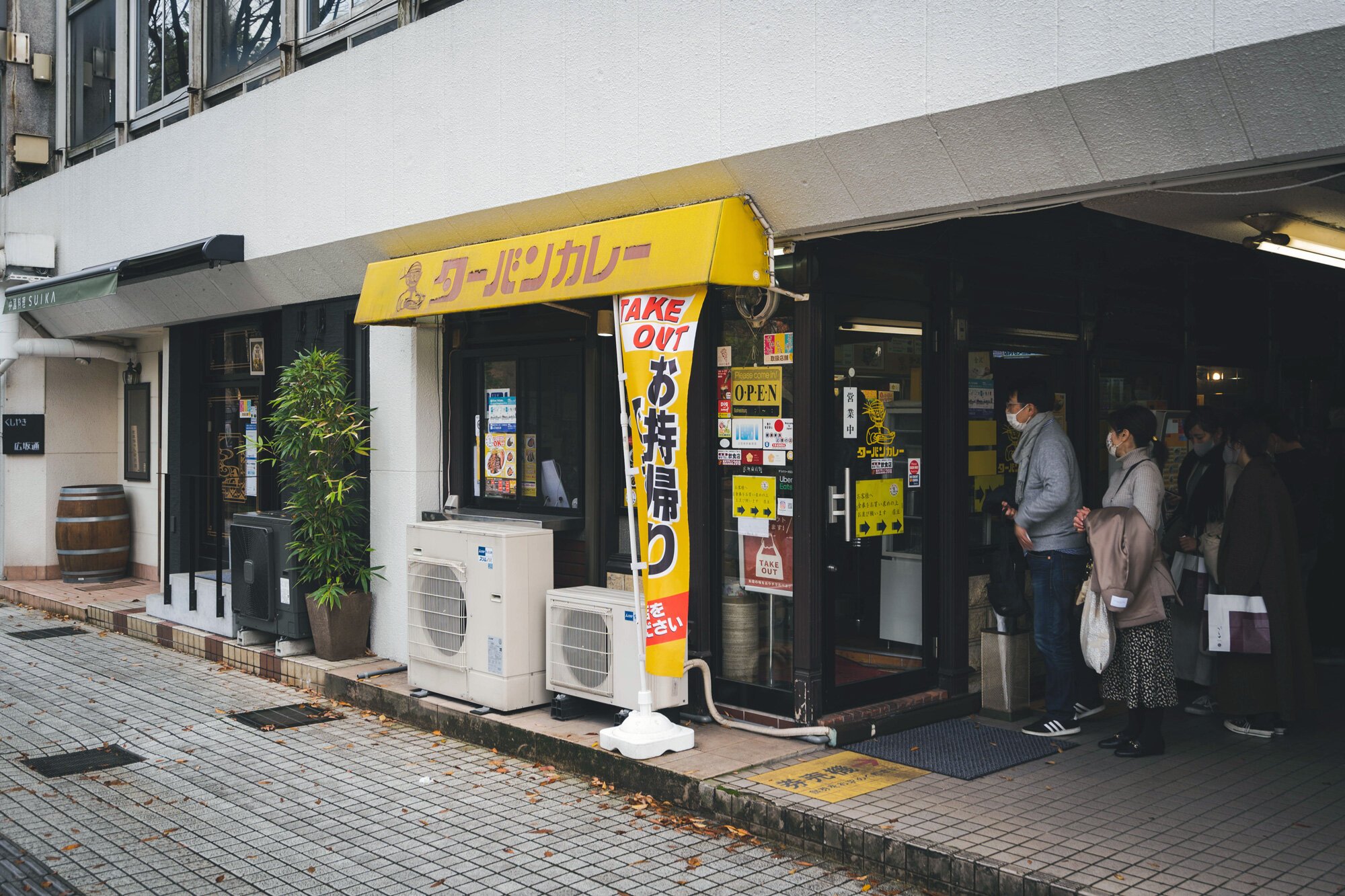
Curry is famous in Kanazawa and the area has its own style. It’s often darker, served on a stainless steel dish and topped with tonkatsu.
Turban Curry is one of the main curry spots and it originated right in Kanazawa in 1971. The L-Set (which I recommend) comes with tonkatsu, 2 sausages and a hamburger patty over white rice.
While it’s not the best curry ever or anything like that, it is really good and deeply satisfying - I recommend it.
Menya Taiga
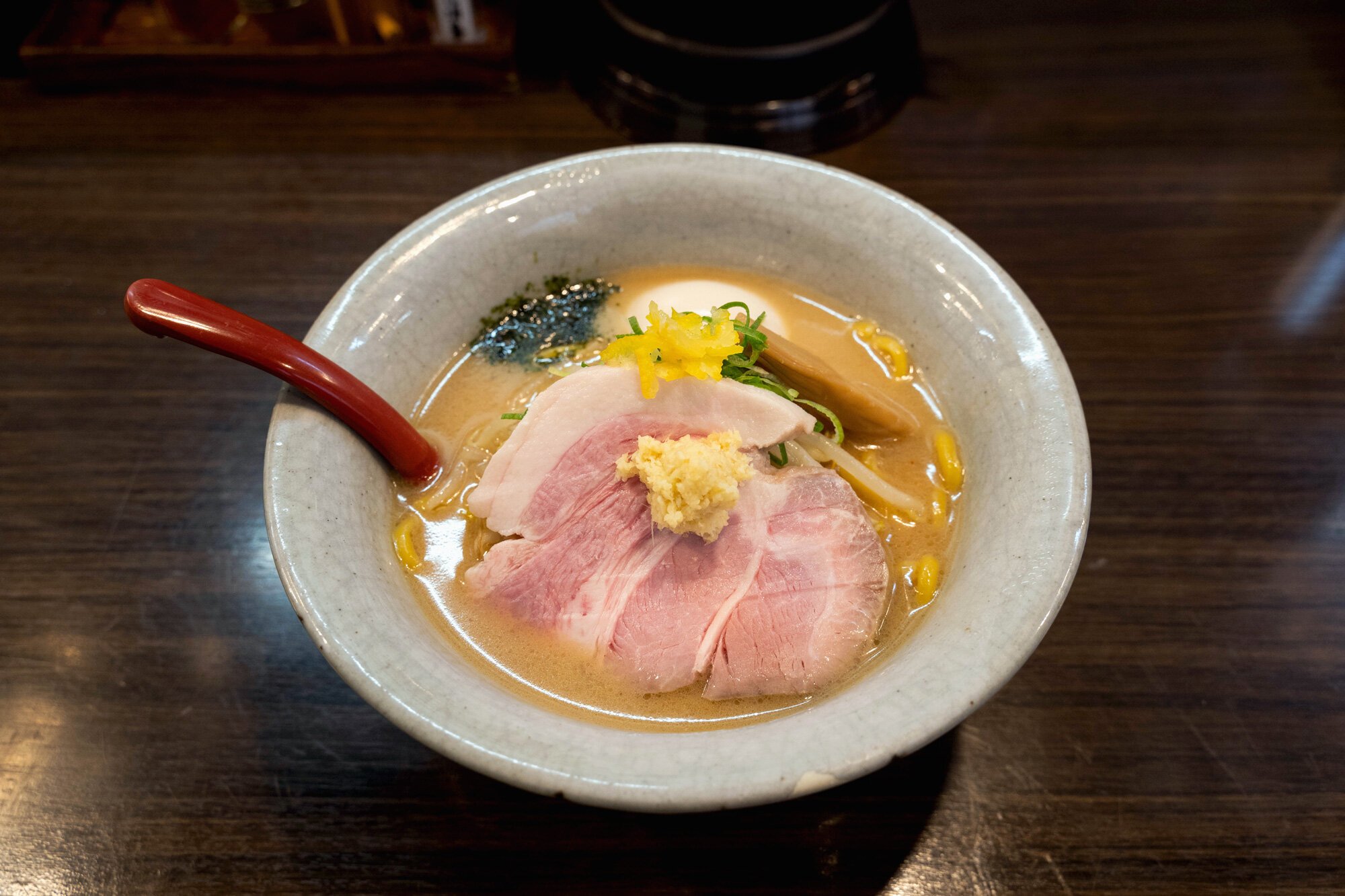
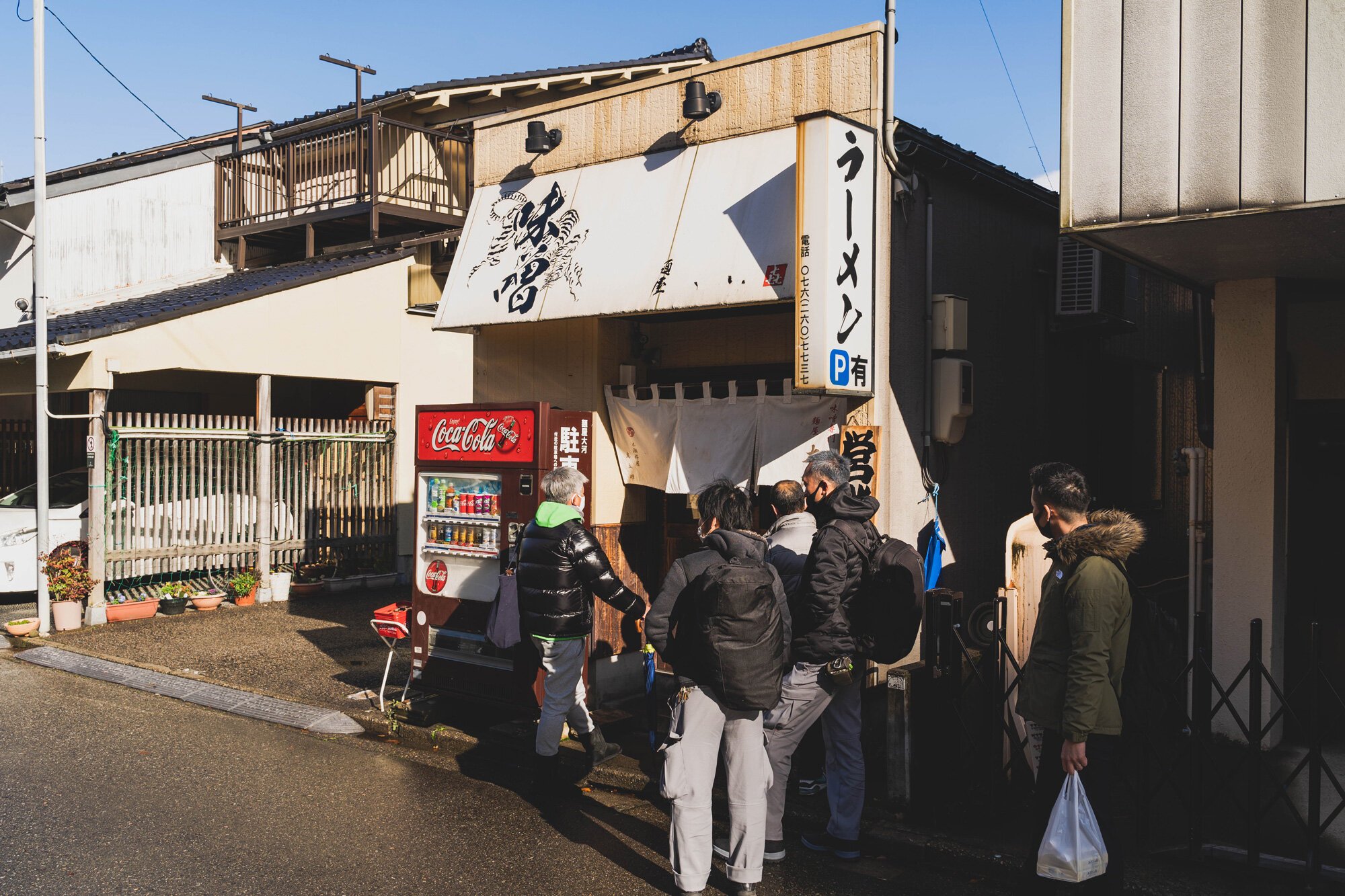
Eating the local ramen is one of the great things to do when traveling around Japan. Kanazawa doesn’t really have their own unique style, but Menya Taiga is consistently recommended as the standout ramen shop in the city and is rated as a very popular ramen shop on Japanese review app Retty.
And yes, it’s really good. The soup is miso-based with noodles on the thicker side. It comes with a generously thick piece of meat, ginger and yuzu citrus. The staff is friendly and unlike most ramen shops, they take card. It’s just a short walk from Kanazawa Station and makes for a great lunch.
MAP
Fumuro-ya


What’s better than to eat at a Japanese tea shop while in a place like Higashi Chayagai. Fumuro-ya is just that, and is a tea shop from the area that specializes in fu.
Fu is a wheat-gluten food that’s made in several different ways. It often has a slightly chewy texture to it. The set that I ordered consisted of hot fu that you dip one by one into black sugar and roll it in kinako powder.
The cafe itself is more traditional where you sit on a tatami floor. Nice place to take a rest while exploring the area.
Keep in touch:
More travels:
Kusatsu Onsen
Ranked as one of the top onsen areas in Japan, Kusatsu Onsen is a quaint town to relax in with only hot springs on your mind.
Kusatsu Onsen is a hot spring town in Gunma prefecture
Amongst onsen areas in Japan, it consistently ranks in the top 3
It is said to offer the most natural hot spring water of any onsen area in Japan
A small town for onsen hot spring lovers. Kusatsu Onsen is one of the premier hot spring areas in Japan, and the town is even centered around it.
Located in Gunma prefecture, it’s a trip of about 3-4 hours from Tokyo by car/bus.
How to get there
I went by car, and it’s the easiest way to get to Kusatsu Onsen. There are no train stations in the area. From Tokyo, catching a Kosoku Bus from Shinjuku or Tokyo Station is a decent option.
About Kusatsu Onsen
The Kusatsu Onsen town area is small, with a little more than 6,000 residents. It’s a popular destination to drive to, particularly for Japanese residents living in nearby prefectures.
One of the aspects that makes Kusatsu Onsen unique is, well, its water. There are 6 hot spring sources in the area: Yubatake, Shirahata, Bandaiko, Sainokawara, Nigawa, and Jizo.
This makes the area have the largest amount of naturally heated spring water out of any area in Japan.
The main town area is built around the Yubatake spring. Its wooden troughs are meant to naturally cool down the piping hot water, and filter and collect “yunohana” hot spring mineral deposits which can be sold later.
A lot of the buildings in the area are distinctly Japanese. The 7-11 in the main area made their signs brown and white, which is what convenient stores and chains do when they set up a location in these cultural areas.
Where we stayed
There are many Japanese-style ryokans and hotels to choose from. We stayed at the Matsunoi, an older, more traditional, family-run ryokan with dinner and breakfast included.
Rooms were Japanese-style with tatami flooring. Guests sleep on futons laid out, and the shared natural onsen bath is downstairs.
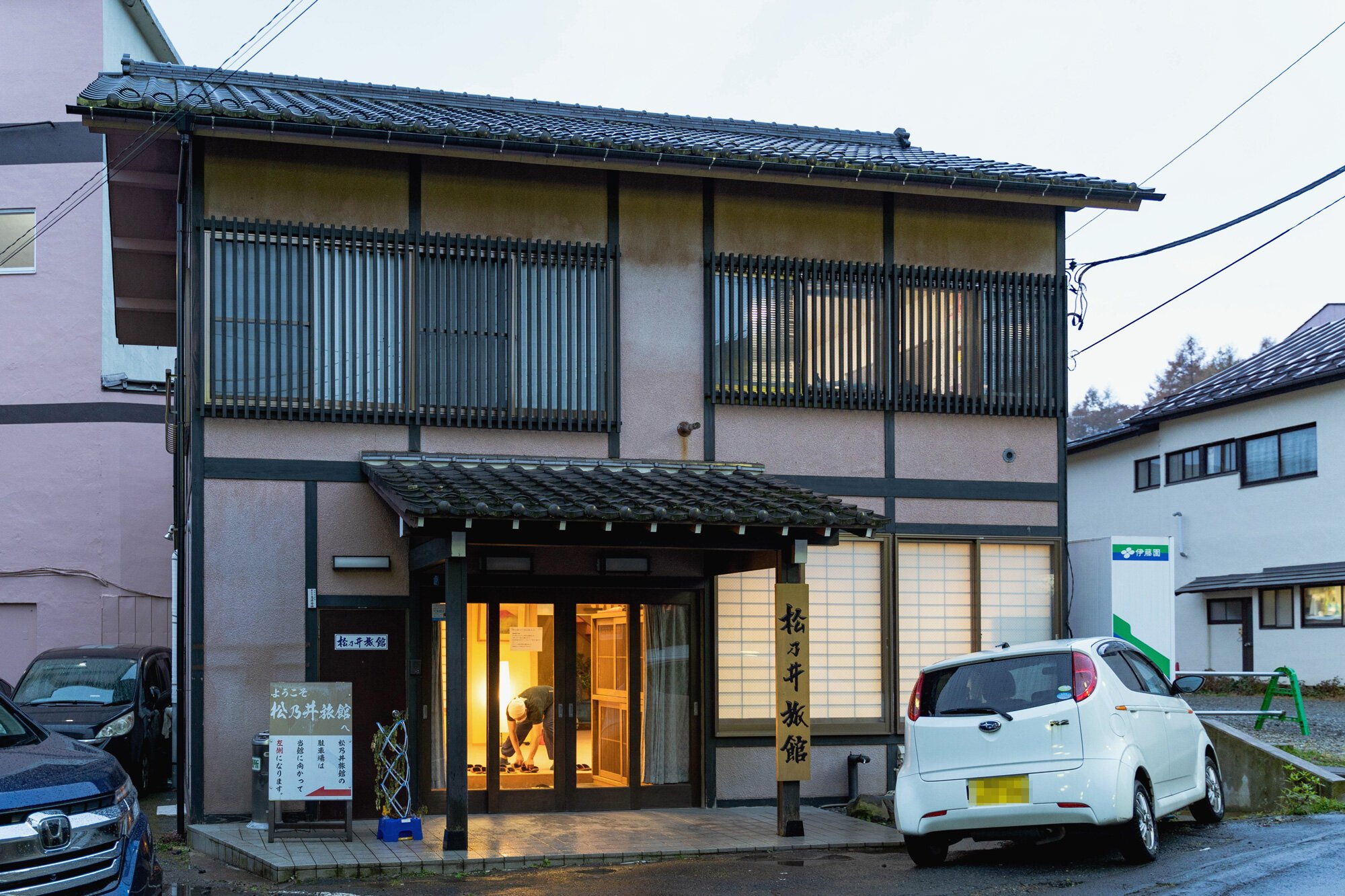
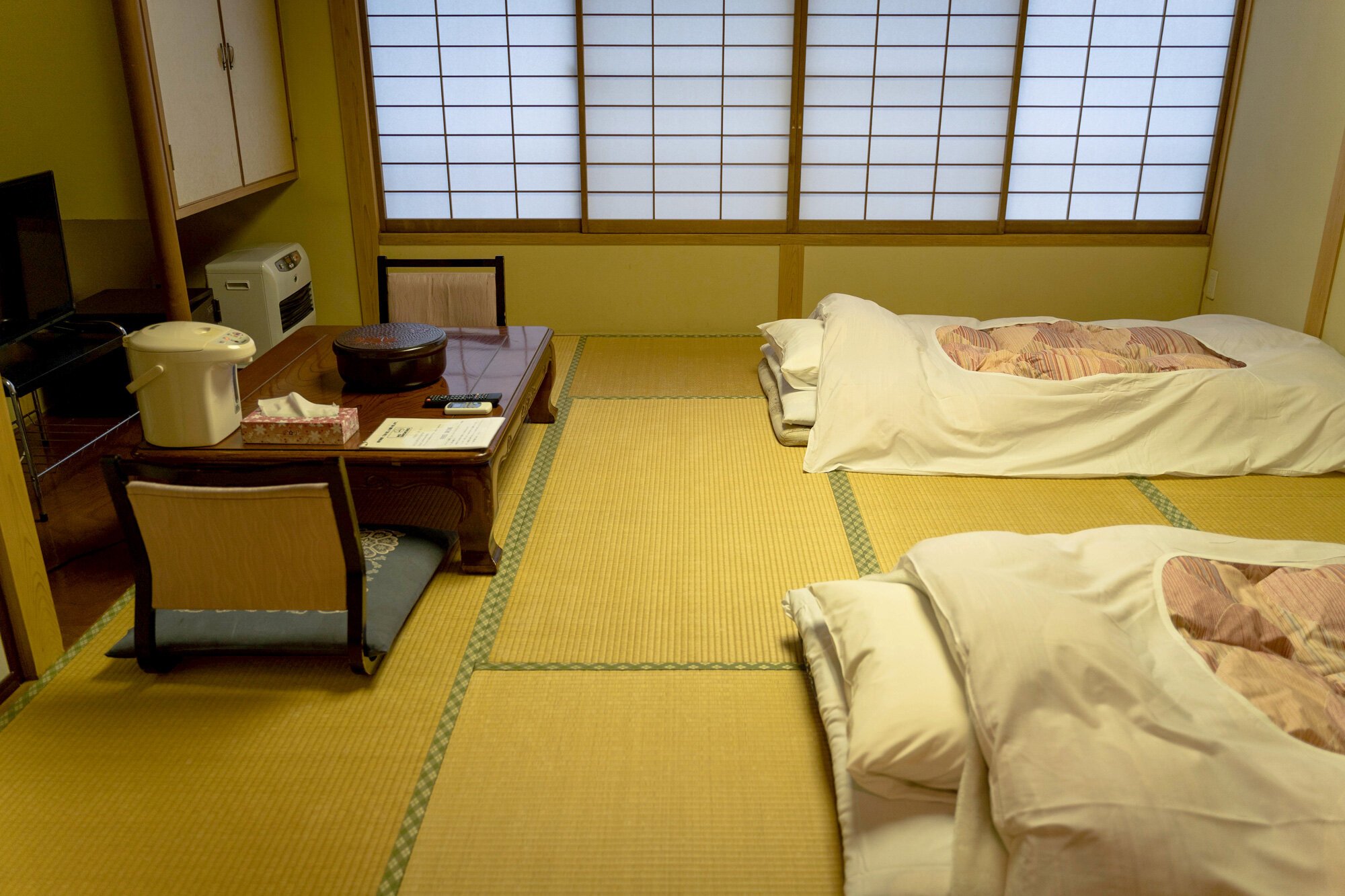
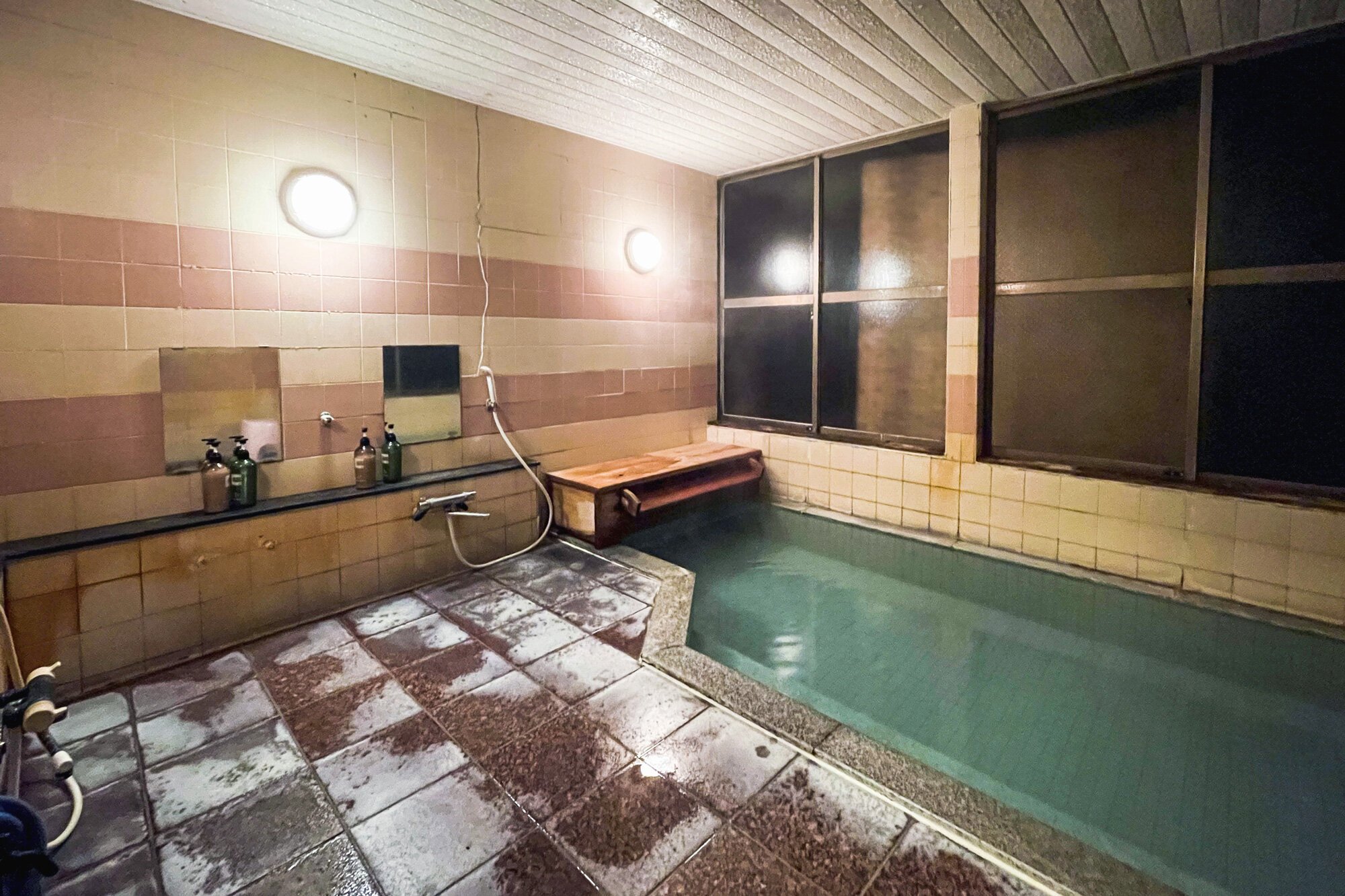
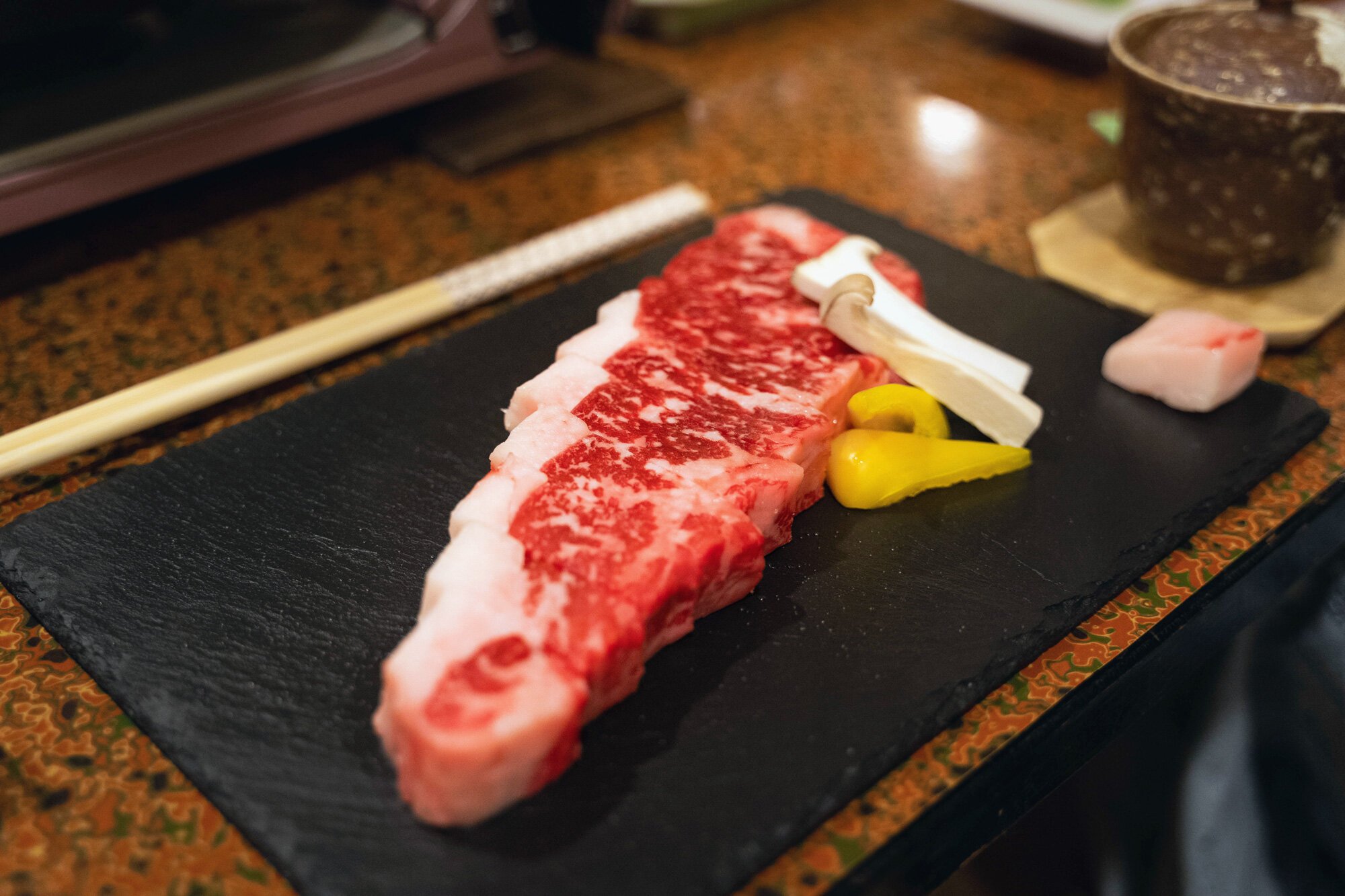
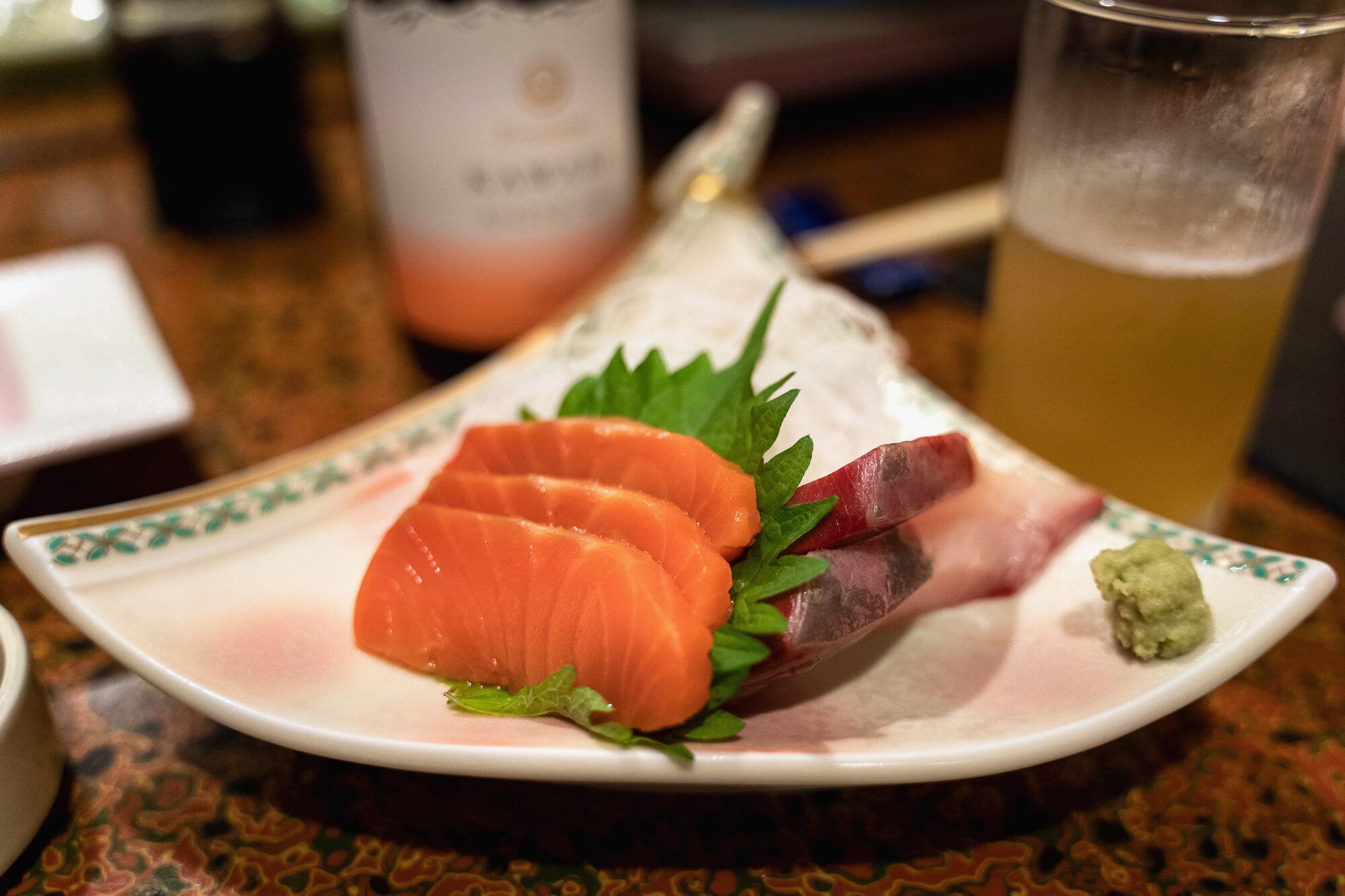
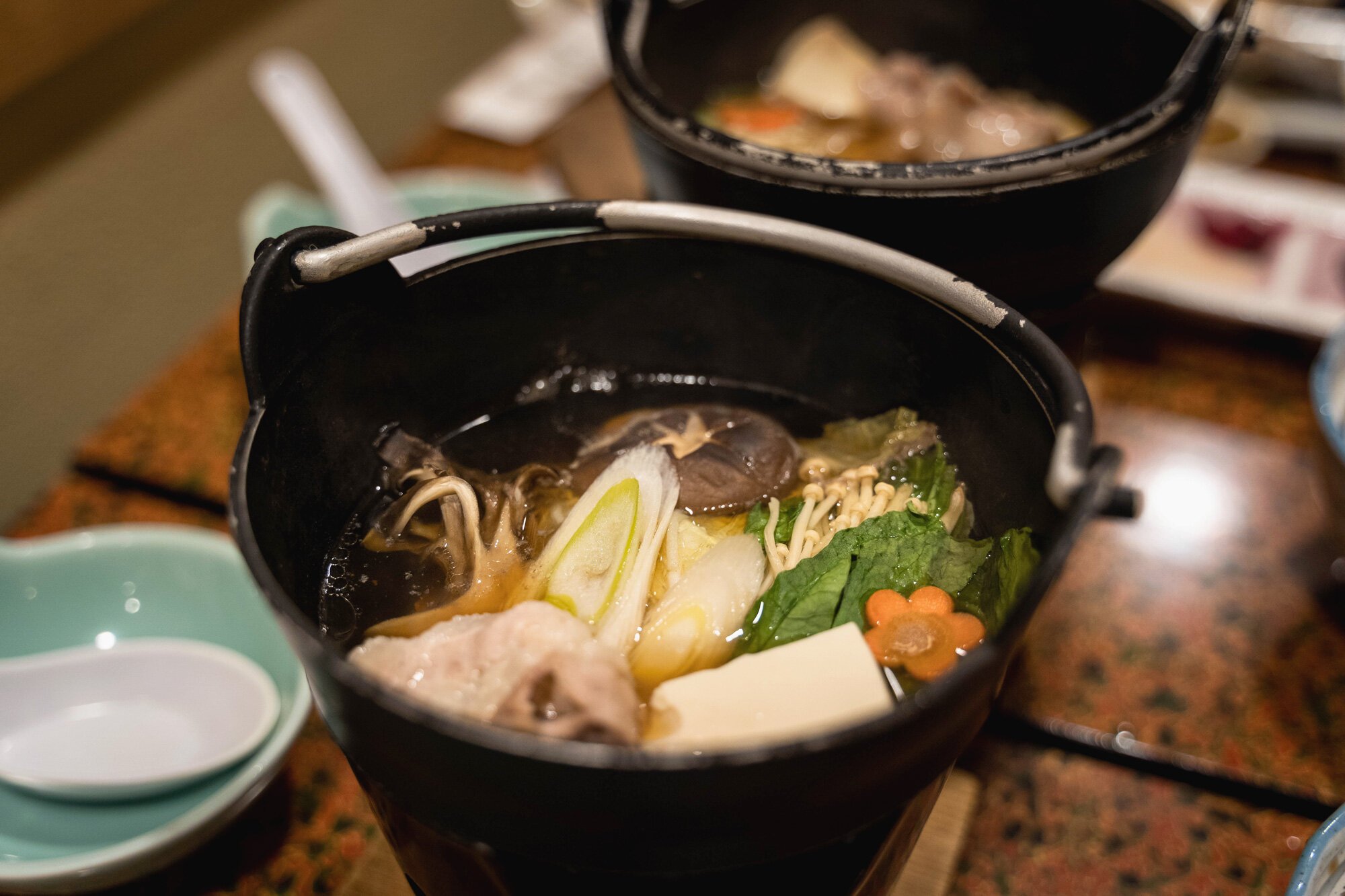
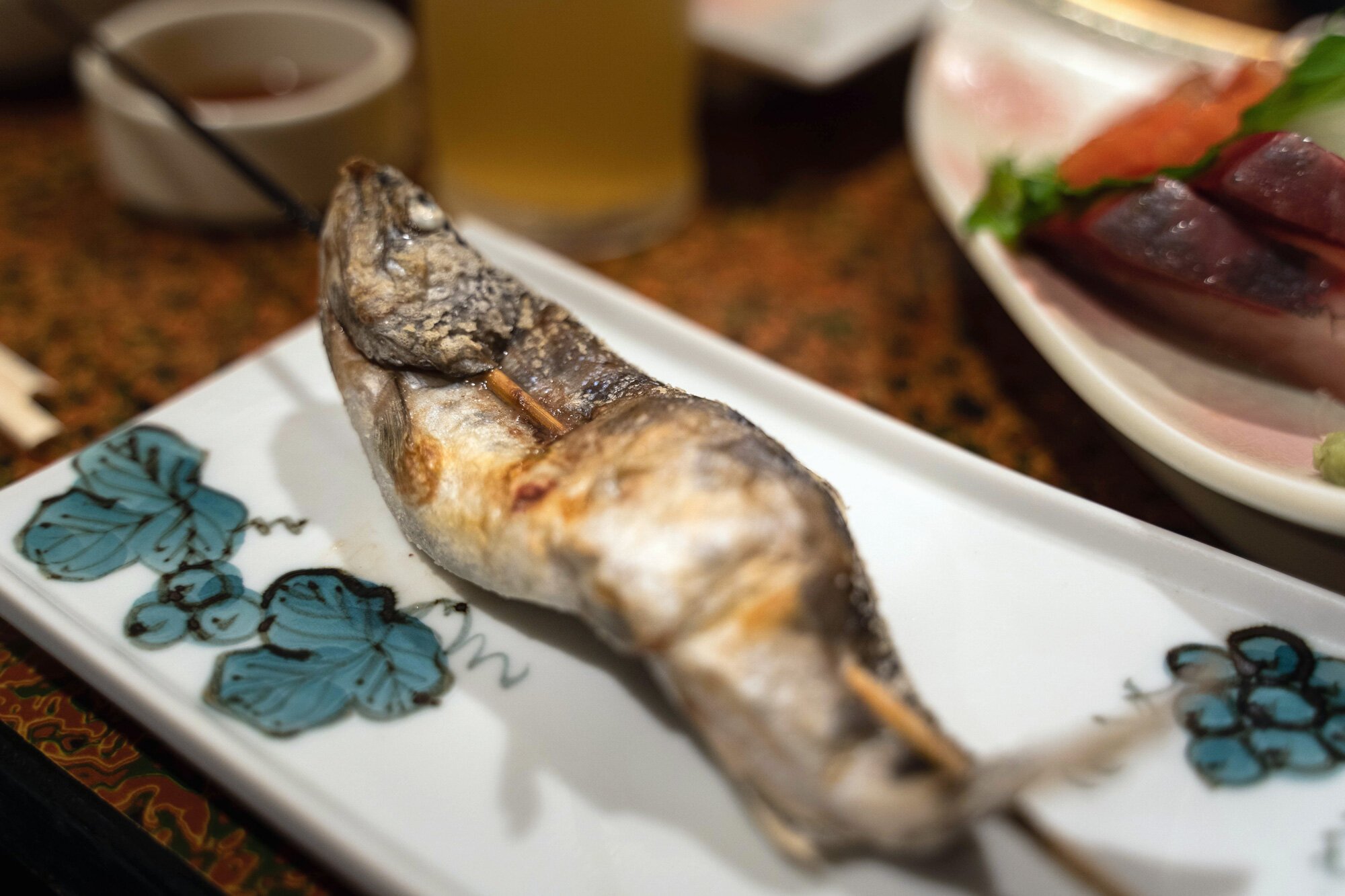
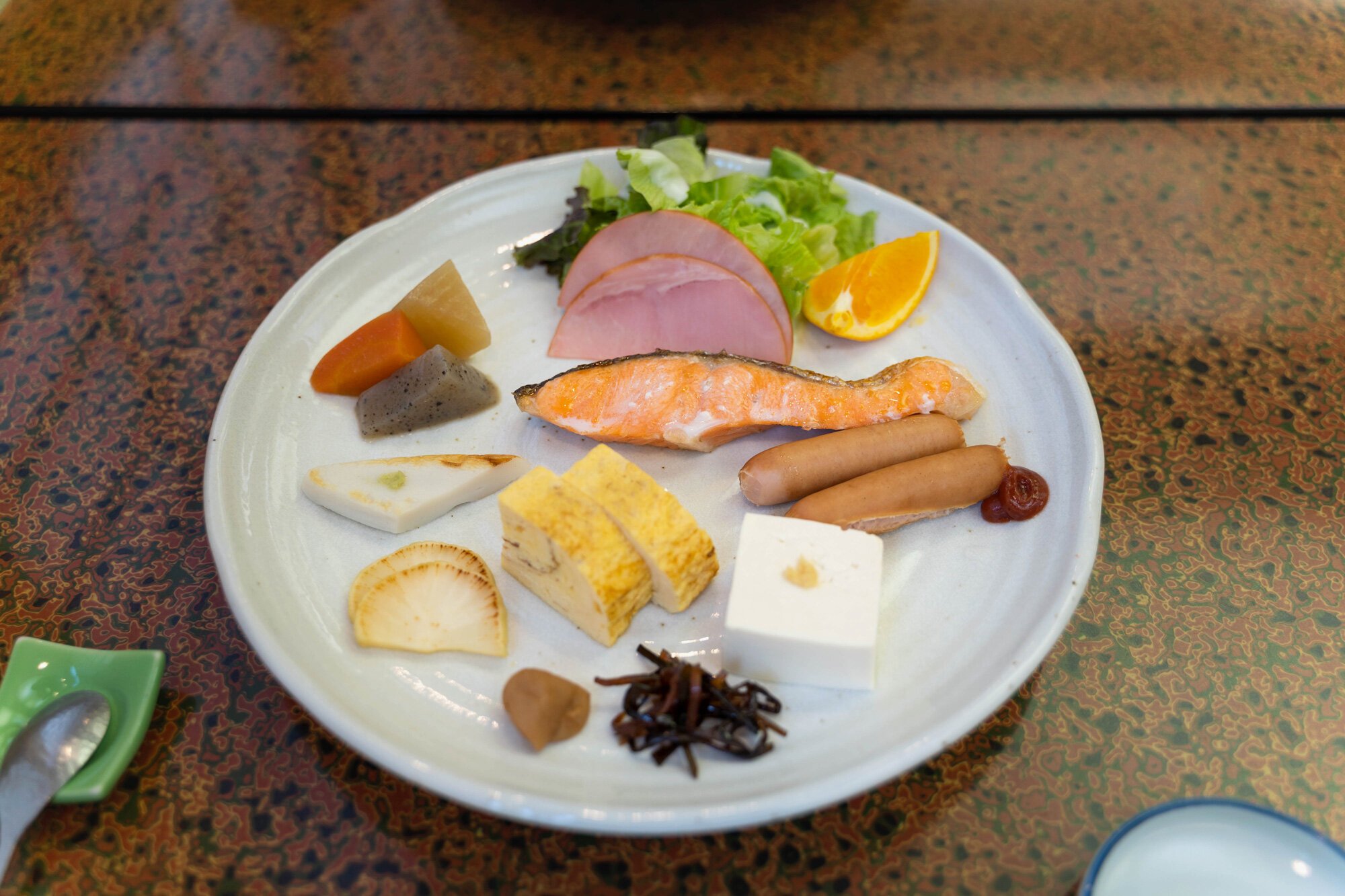
The ryokan overall had friendly service and is a short 5-minute walk from the main, Yubatake area. At its price point of roughly USD $130/person/night with the upgraded local Wagyu “Joshugyu” dinner, it’s a pretty good deal.
What we did
As with most onsen trips, the main focus is relaxing in the onsen. On the 2-day, 1-night stay, I went down to the bath around 3 times.
While the bath at the Matsunoi Ryokan wasn’t luxurious and didn’t have a view, the steady flow of hot spring water was actually quite relaxing. The water itself had a silky feel to it, leaving your skin feeling nice and smooth.
Yubatake
Basically being what the Kusatsu Onsen town is built around, it’s hard to miss Yubatake.
We came here both in the evening and in the daytime, and they’re both quite photogenic different views. In the evenings, the area is lit up and the illuminated clouds of steam make for nice pictures. That is probably one of the reasons why many younger Japanese flock here.
In the area, you can catch a show of people doing yumomi, a method of swishing the water to a chant in order to cool it down.
Sainokawa Park
On the way to Sainokawa Open-Air Bath (didn’t get to go) is a nice walk along a rocky riverbed of flowing, hot spring water.
We went in the fall, so the colorful leaves created a beautiful landscape to be in. You can see the steam rising from the water all the way up.
With only one night in the area, we were barely able to experience what Kusatsu Onsen actually has to offer. But we were able to kick back and relax.
That’s the point of onsen trips after all!
Keep in touch:
Akihabara, Tokyo: The Non-Otaku Guide
A manga, anime and electronics hub, Akihabara is known for otaku culture. But there are other things to see and do here - here’s some that I recommend.
Akihabara is an entertainment hub in Tokyo
It is known for otaku geek culture
With many train lines going through the area, it’s convenient
Manga, anime, electronics, maid cafes, Japanese “idols” - Akihabara is Japan’s central hub for all things otaku, or geek.
It probably puts me in the minority of foreigners living in Japan, but despite interning at VIZ Media in college, I don’t really have an interest in manga or anime related things.
I’ll share my Akihabara experience here just in case some of you are looking for a different Akihabara. If you’re just looking for food recommendations, skip to the bottom.
How to get there
Akihabara Station has multiple lines running through it. The two most convenient and most used are the Yamanote Line and Chuo-Sobu Line. The Hibiya subway line also runs through here, and the Ginza Line goes to nearby Suehirocho Station, which is also in the Akihabara area.
About Akihabara
Akihabara is located on the eastern side of Tokyo and has traditionally been an area of commerce.
In the late 1800s, it was a freight hub with a large, wholesale market for fruits and vegetables. In the 1920s, radio component merchants began to prosper. After World War II, the black market came alive due to lack of government authority, which sparked the growth of businesses and subcultures. In the 1950s, vinyl record shops lined the streets and Akihabara continued to develop into the electronics and subculture hub that it is today.
Akihabara is a town for otaku, or obsessive geeks that tend to be on the extreme side. It’s known today as the capital for Japanese manga and anime. Themed cafes, maid cafes, probably a bunch of other peculiar cafes, young girl “idol” concerts, “gacha gacha” toy dispensers, various vending machines, figuring shops and more can be found in this area.
The crowd is, well, what you’d expect. As a visiting friend put it, “You can’t tell Japan has a low birth rate problem, but looking around here, it all makes sense.”
Straightforward, but you’ll notice the crowd here looking quite different from other areas in Tokyo.
Housing in Akihabara
Located on the city’s main Yamanote Line and minutes away some of the major working areas, rent in Akihabara is on the high end. The average monthly cost of a 1K studio apartment is 112,700 JPY (USD $717) while a 1LDK single bedroom apartment is 184,800 JPY (USD $1,175) as of June 2024. [J]
Where we stayed
Akihabara is a pretty convenient place to stay. Around a 5-10 minute walk from both Akihabara and Suehirocho stations is Nohga Hotel Akihabara.
This is the second in their hotel line, and they’re very focused on being local. A lot of the interior decorations are from nearby areas, and the decorations also reflect the electronics and music scene of the area.
We stayed in their Deluxe Twin room, their biggest, and everything here was great. Staff were nice, food downstairs was great, and they have a nice bar to come back to and wind down the day. I have a feeling this hotel will become more and more popular for tourists.
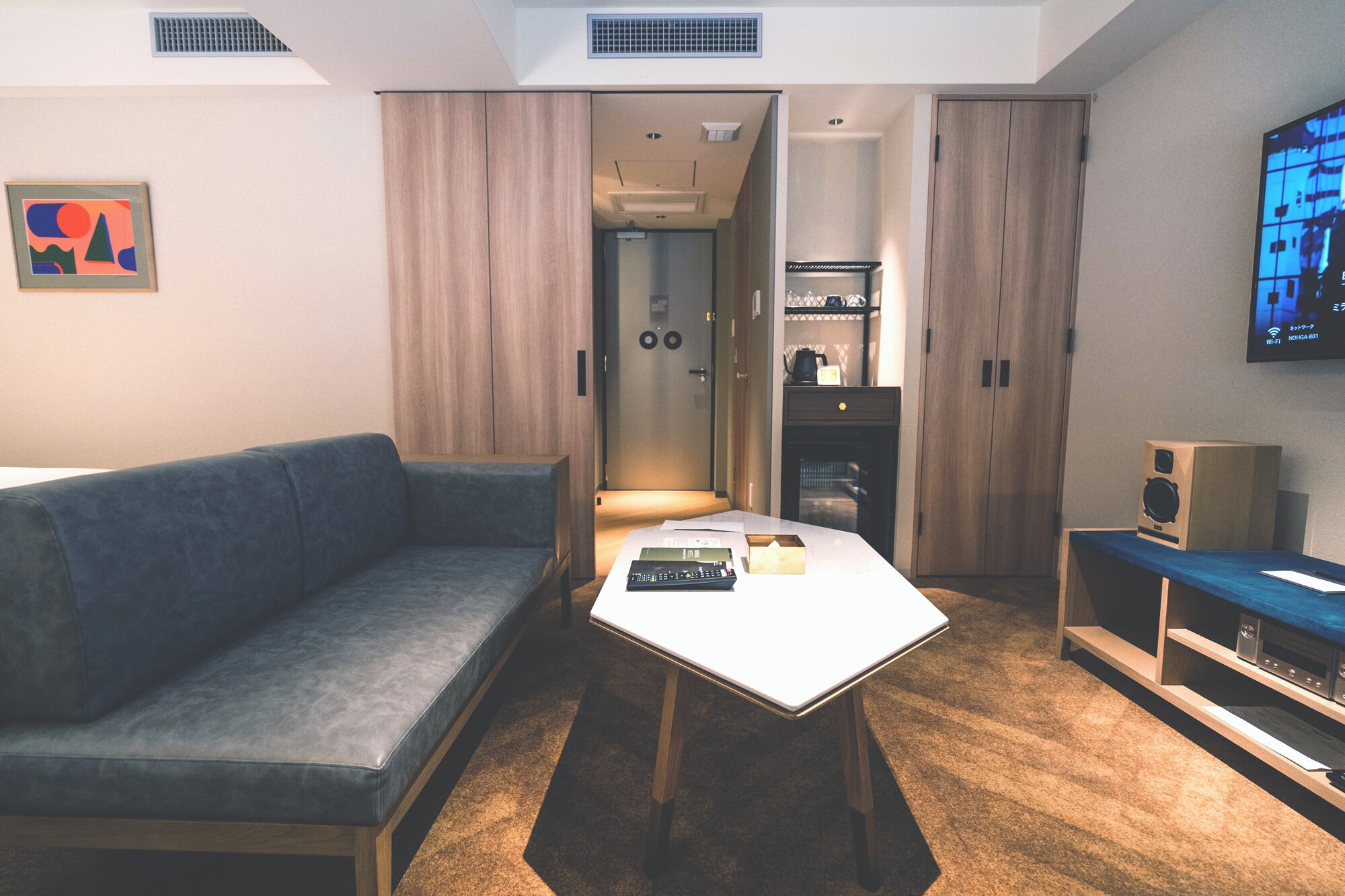
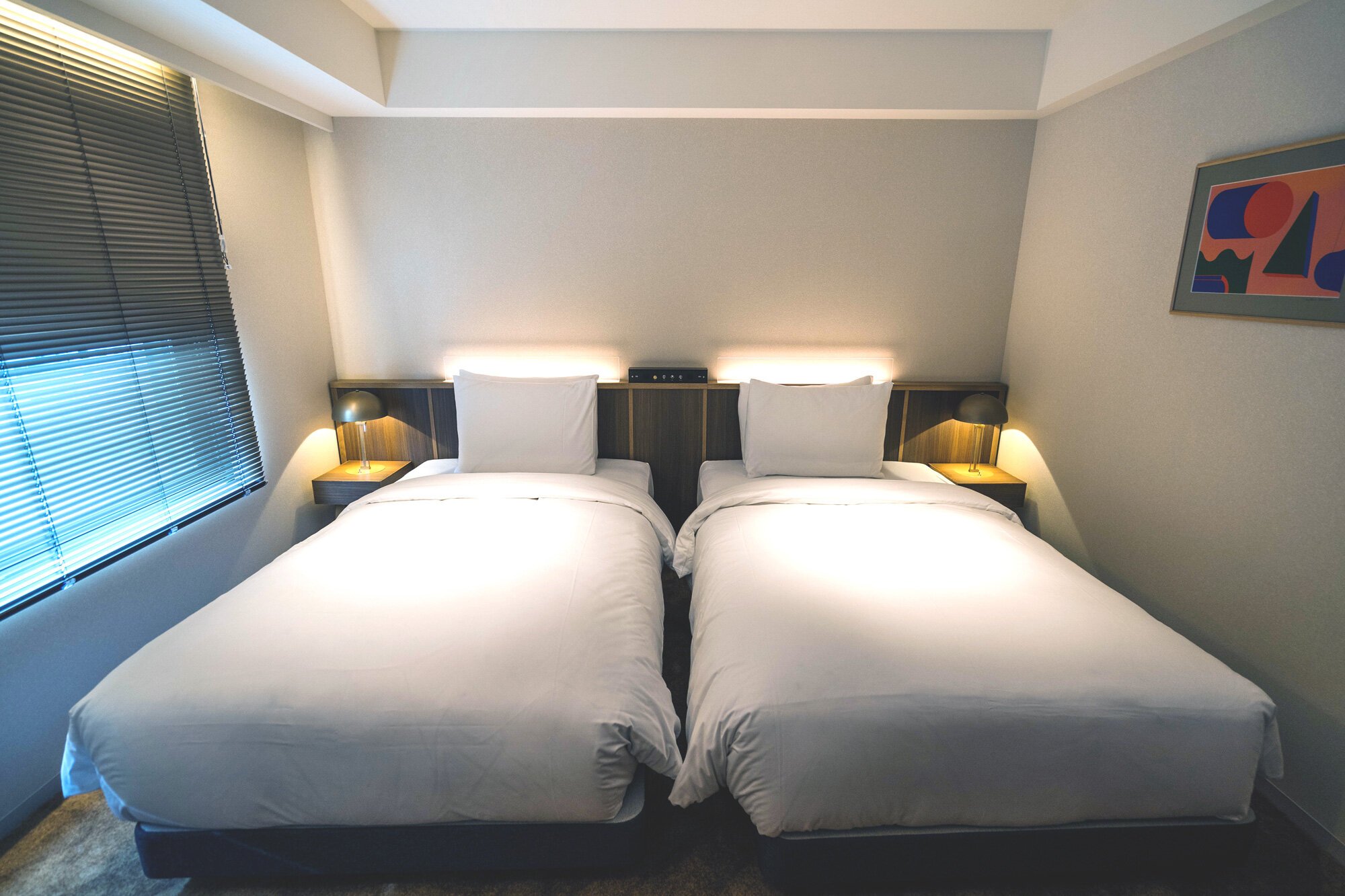
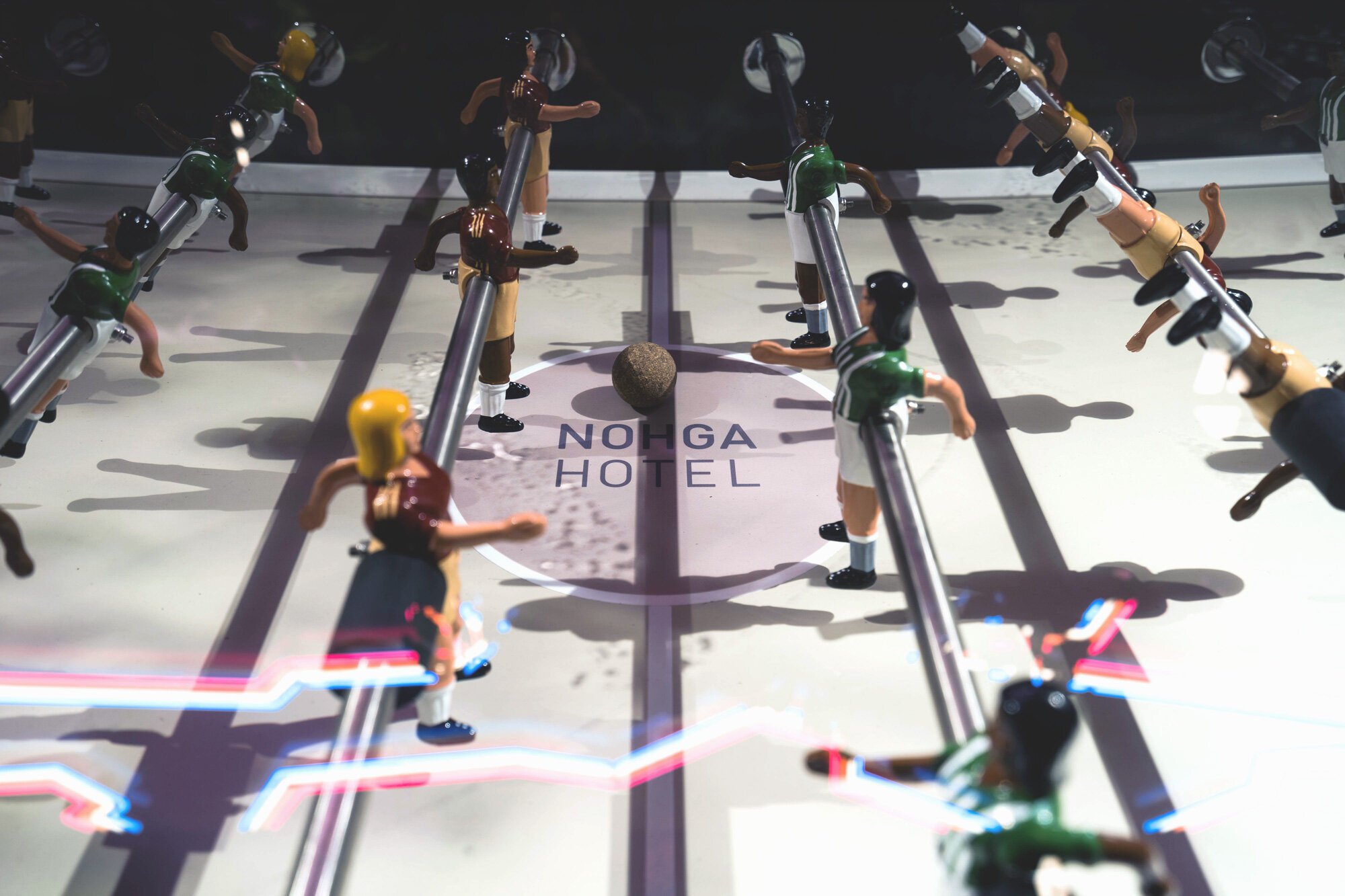
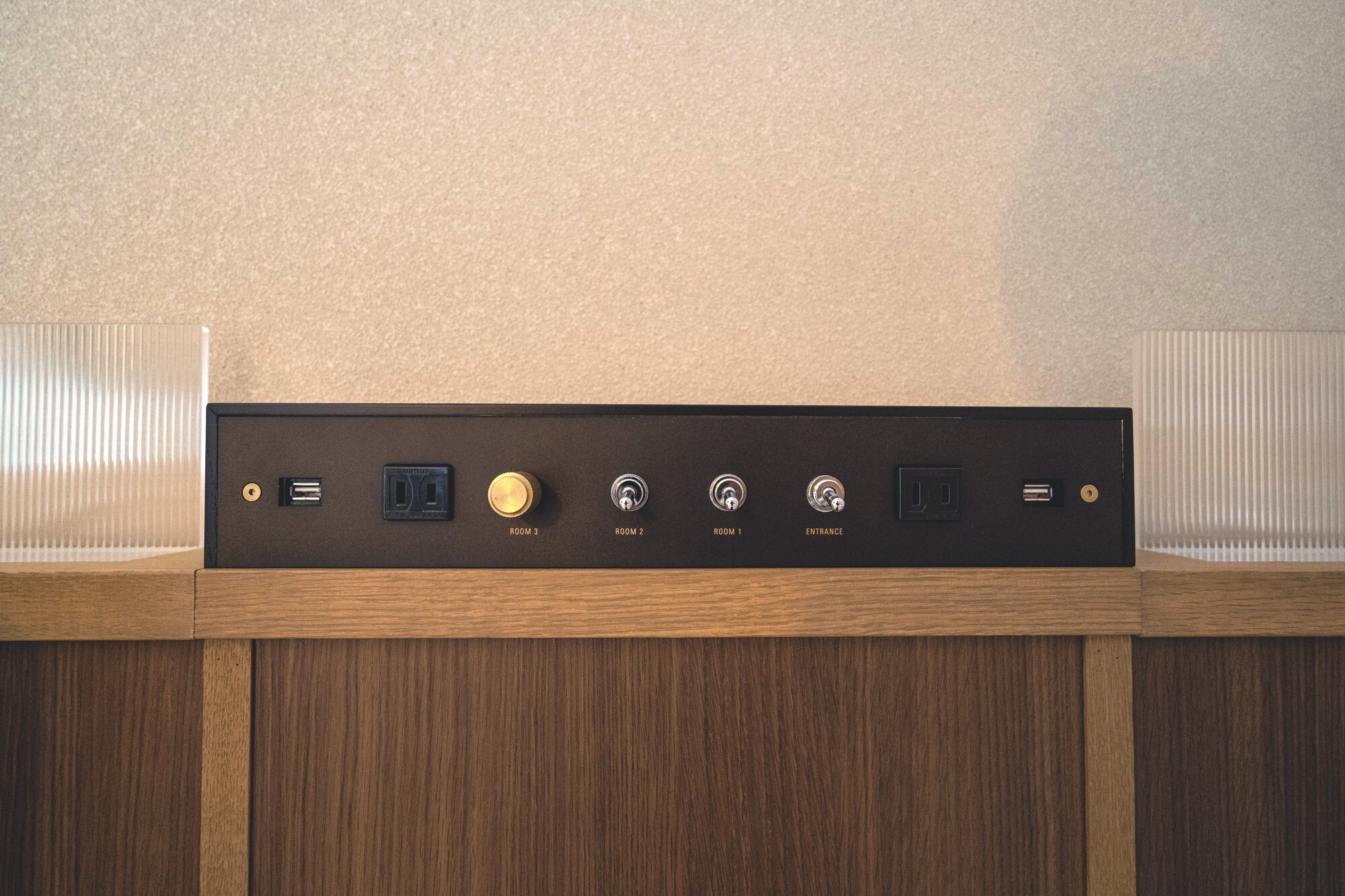
After renovating and repurposing Manseibashi, an old train station, into a mall called mAAch ecute, it became one of the more “adult” destinations in the area.
Underneath the old tracks, between pillars, are small shops of smaller, up and coming designers. There’s also a small model of the Akihabara area when the station was still in use. Small tables and chairs line the riverside, and it’s a nice place to go in the evening.
https://www.ecute.jp/maach [J]
MAP
2k540 Aki-Oka Artisan
We didn’t get to it this time, actually, but there’s something similar on the north side of Akihabara called 2k540 Aki-Oka Artisan.
It’s another under-tracks area that has been repurposed into a gallery of about 50 boutiques that sell miscellaneous goods and handcrafted items.
The concept here aims to bring craftsmen and artisans back into the city center, giving people a chance to easily purchase locally made products.
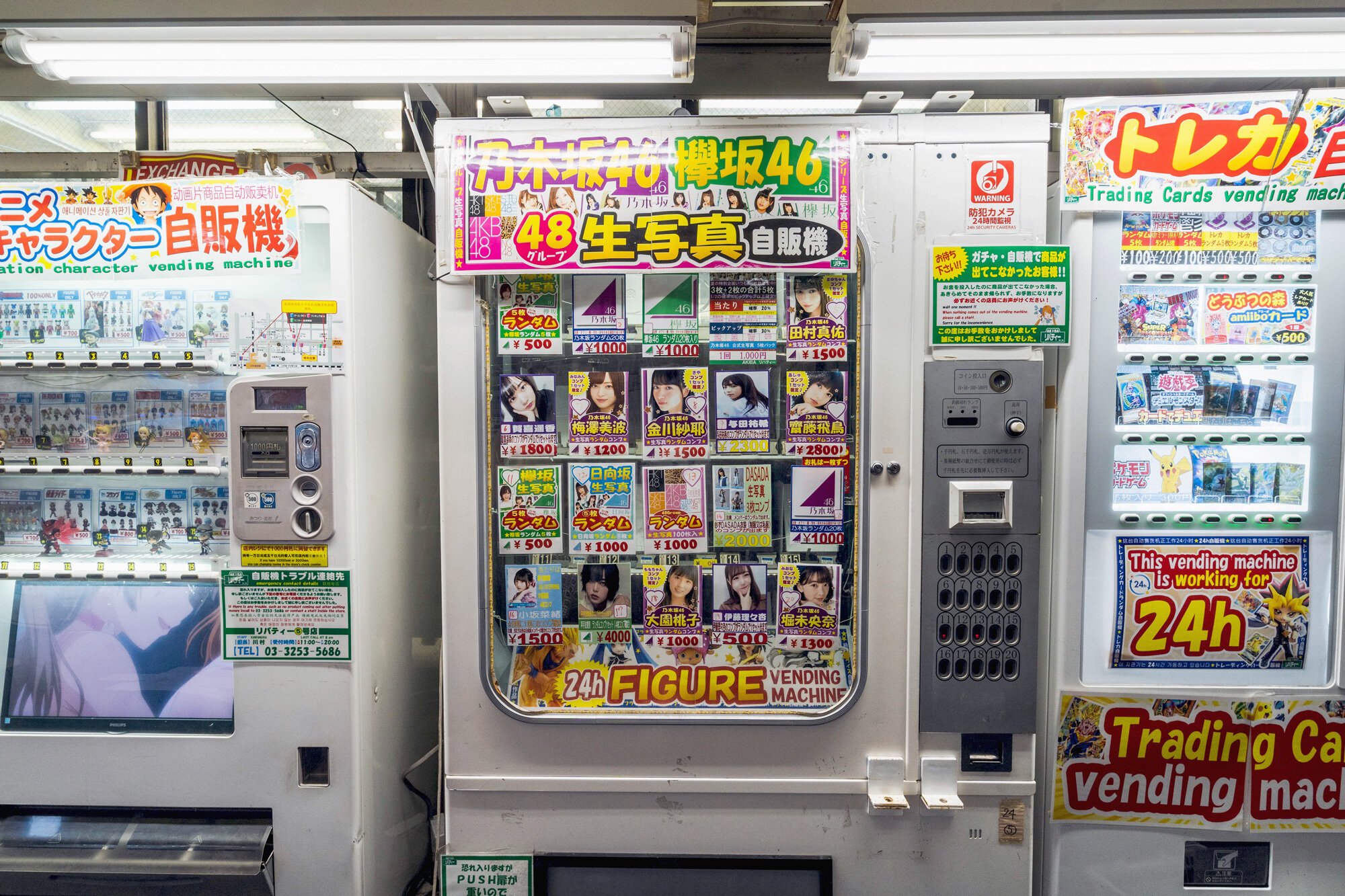
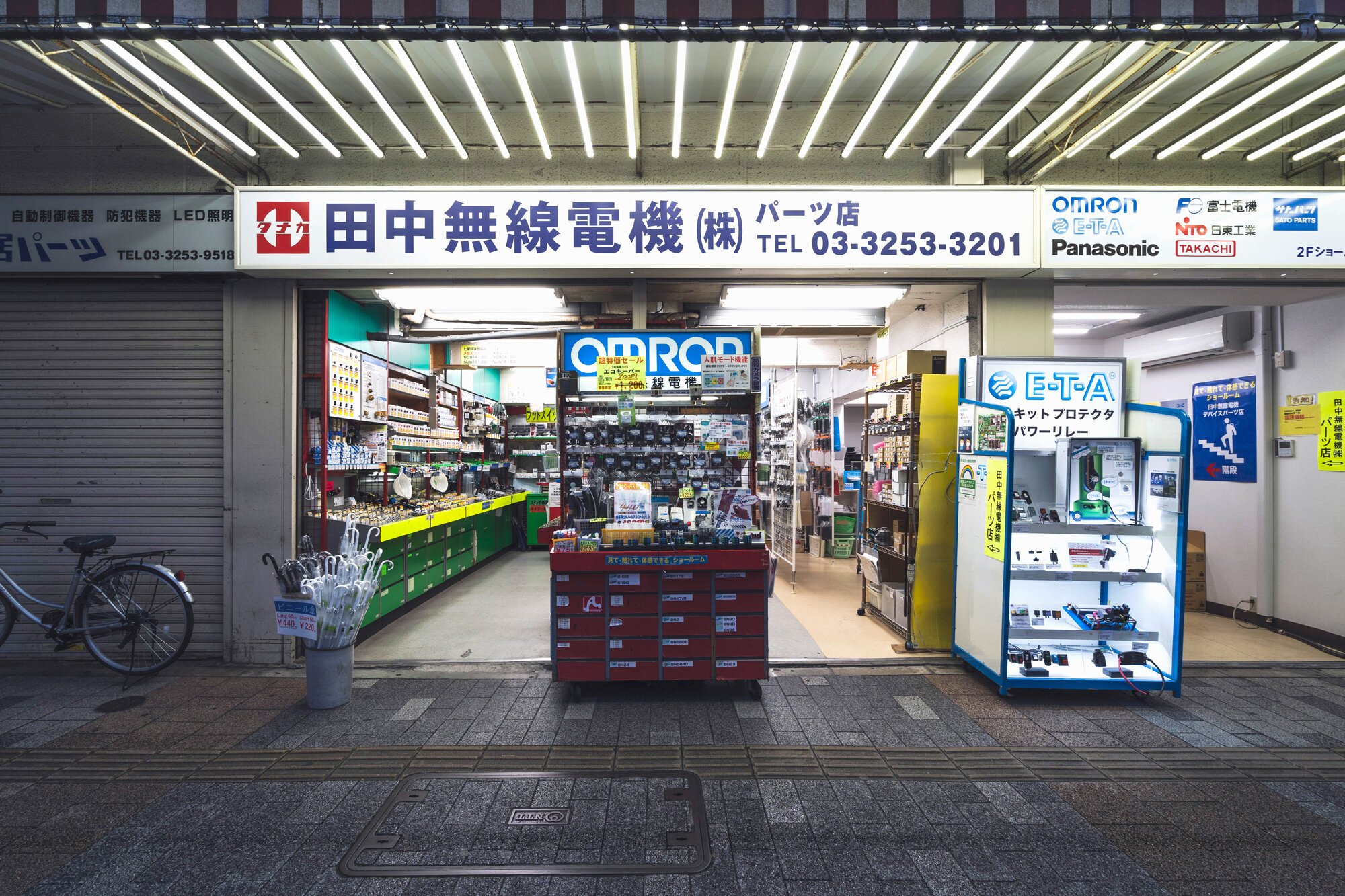
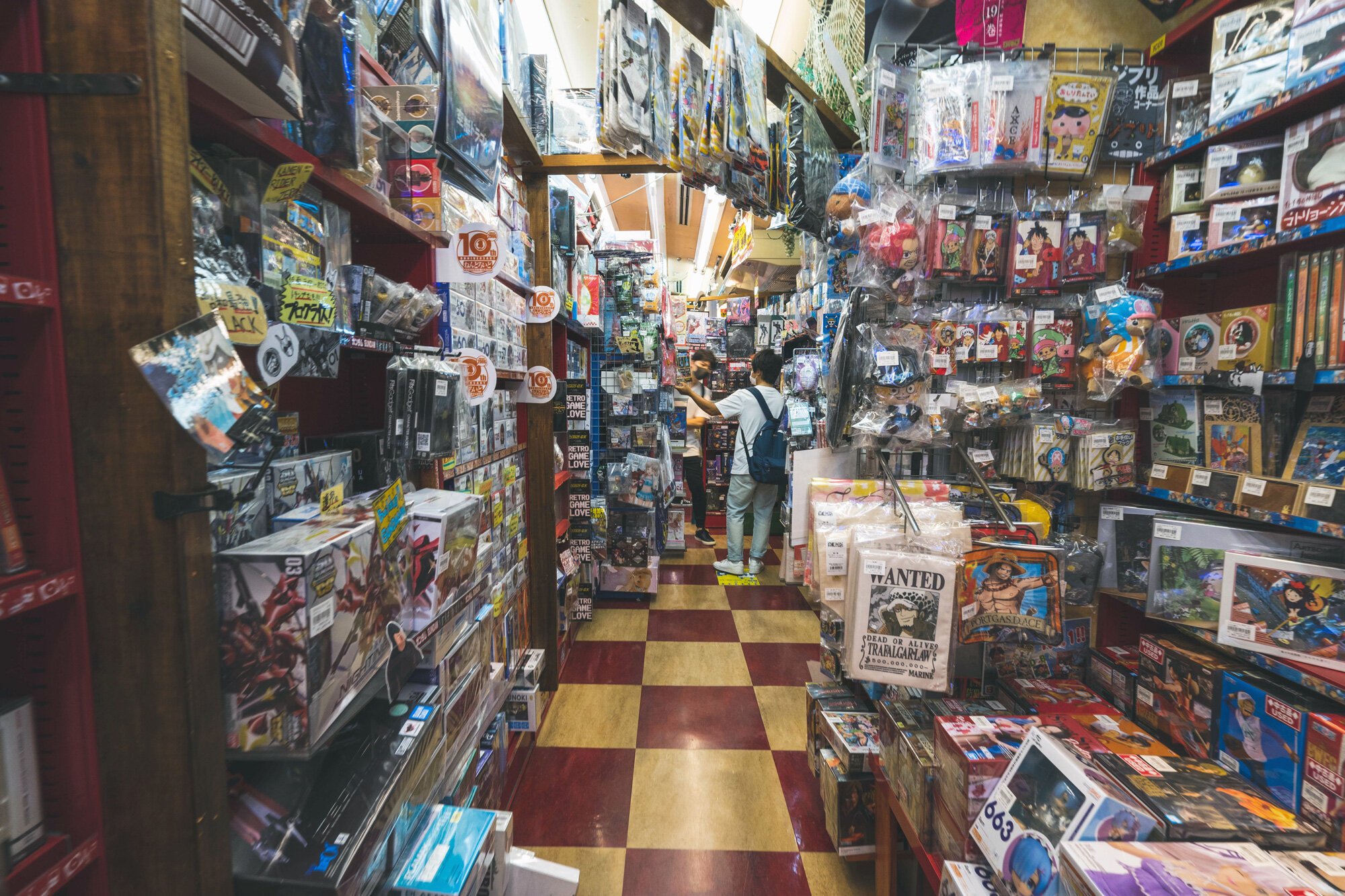
You don’t have to seek out electronic shops or the otaku vibe, you’re instantly surrounded by it as soon as you step out into Akihabara.
Some shops and street side vending machines are interesting to stop and look at as they really are a different world.
Kanda Myojin Shrine
On the eastern side of Akihabara, towards the Ochanomizu area, is Kanda Myojin. It’s one of the more popular shrines, especially around New Year’s, as it’s a go-to place to pray for business prosperity in the year.
The shrine sits up top a hill, so you’ll have to climb up the Myojin Otoko-zaka stairs.
Otsu Coffee
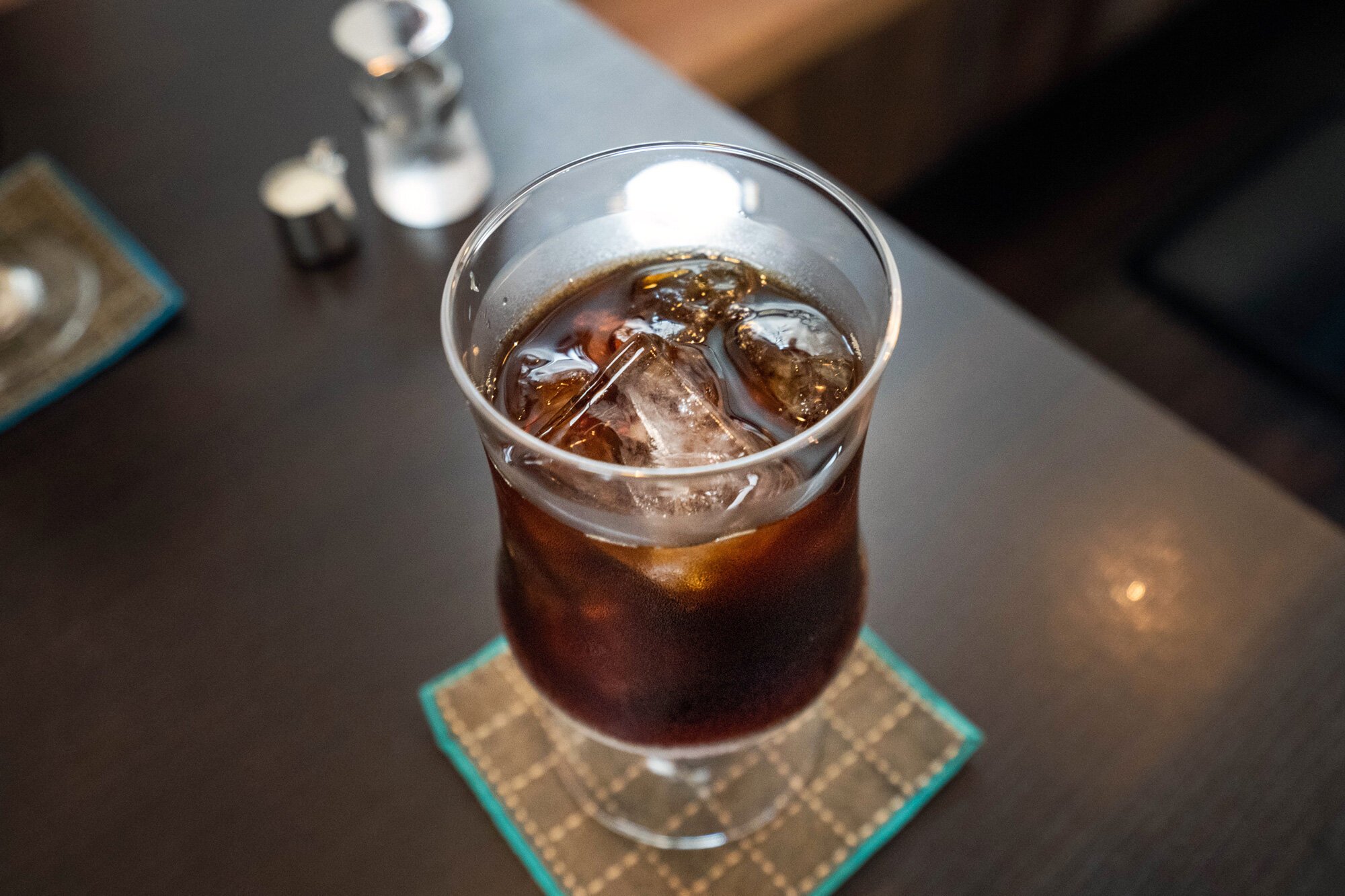
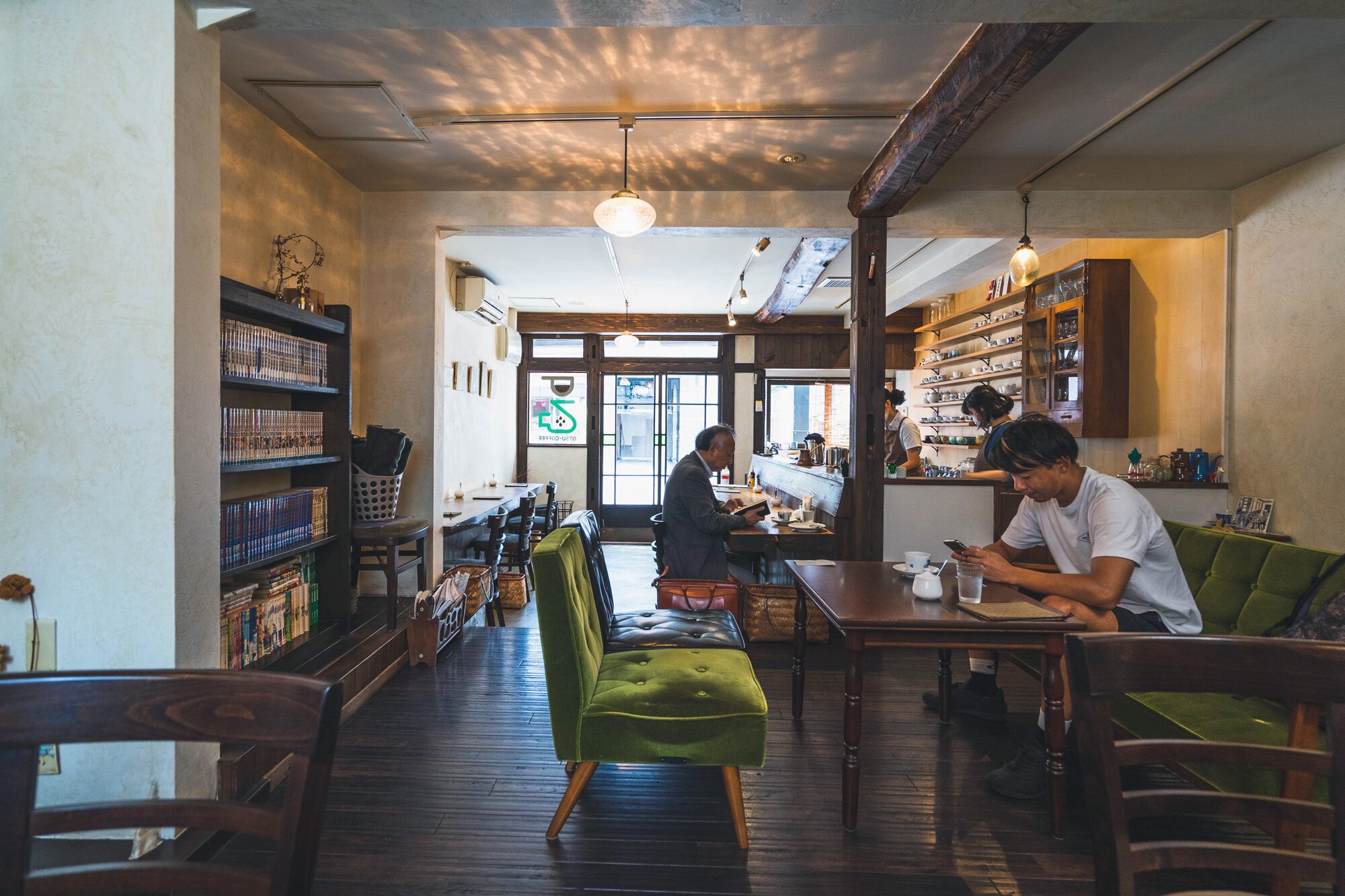
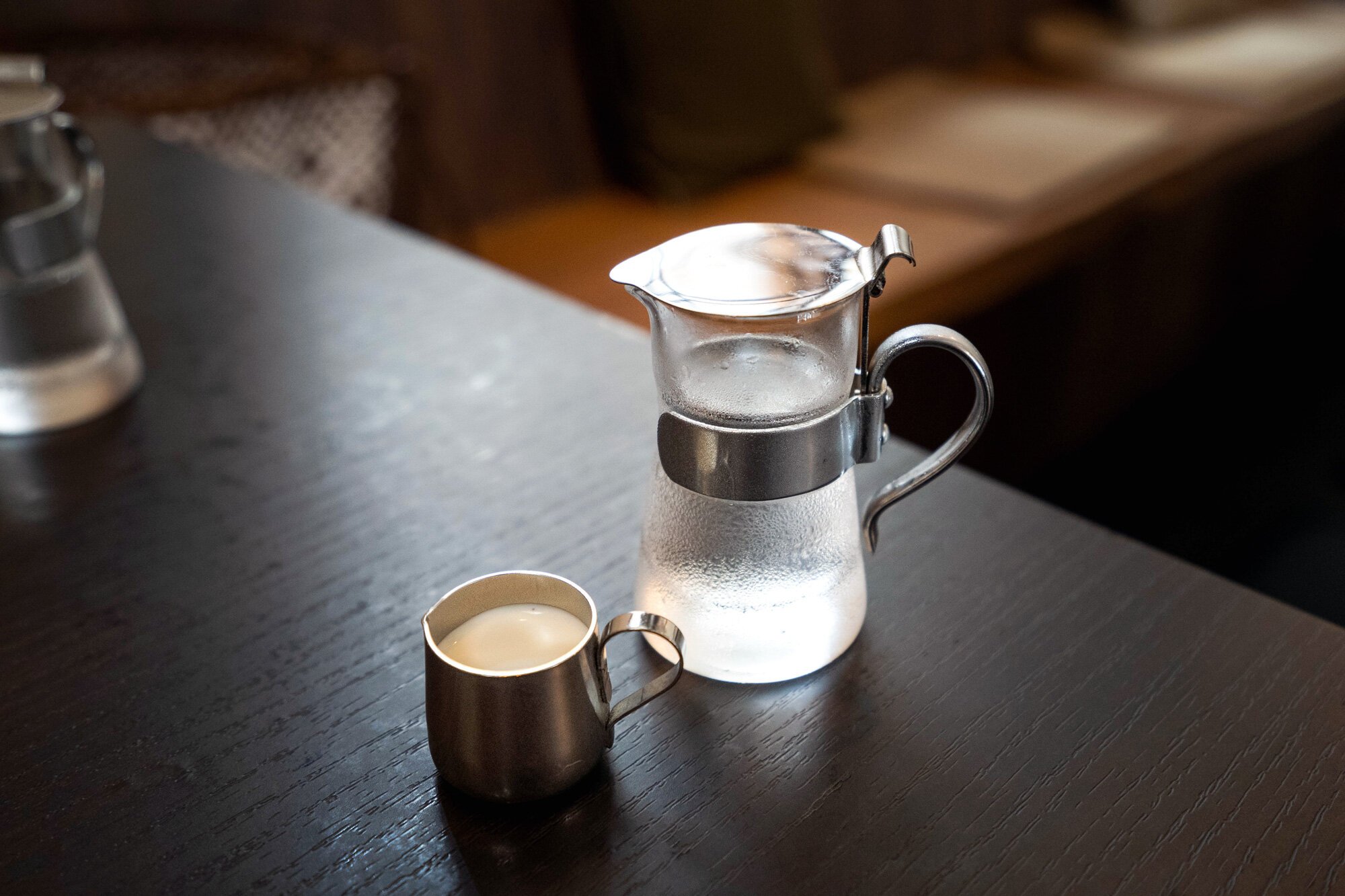
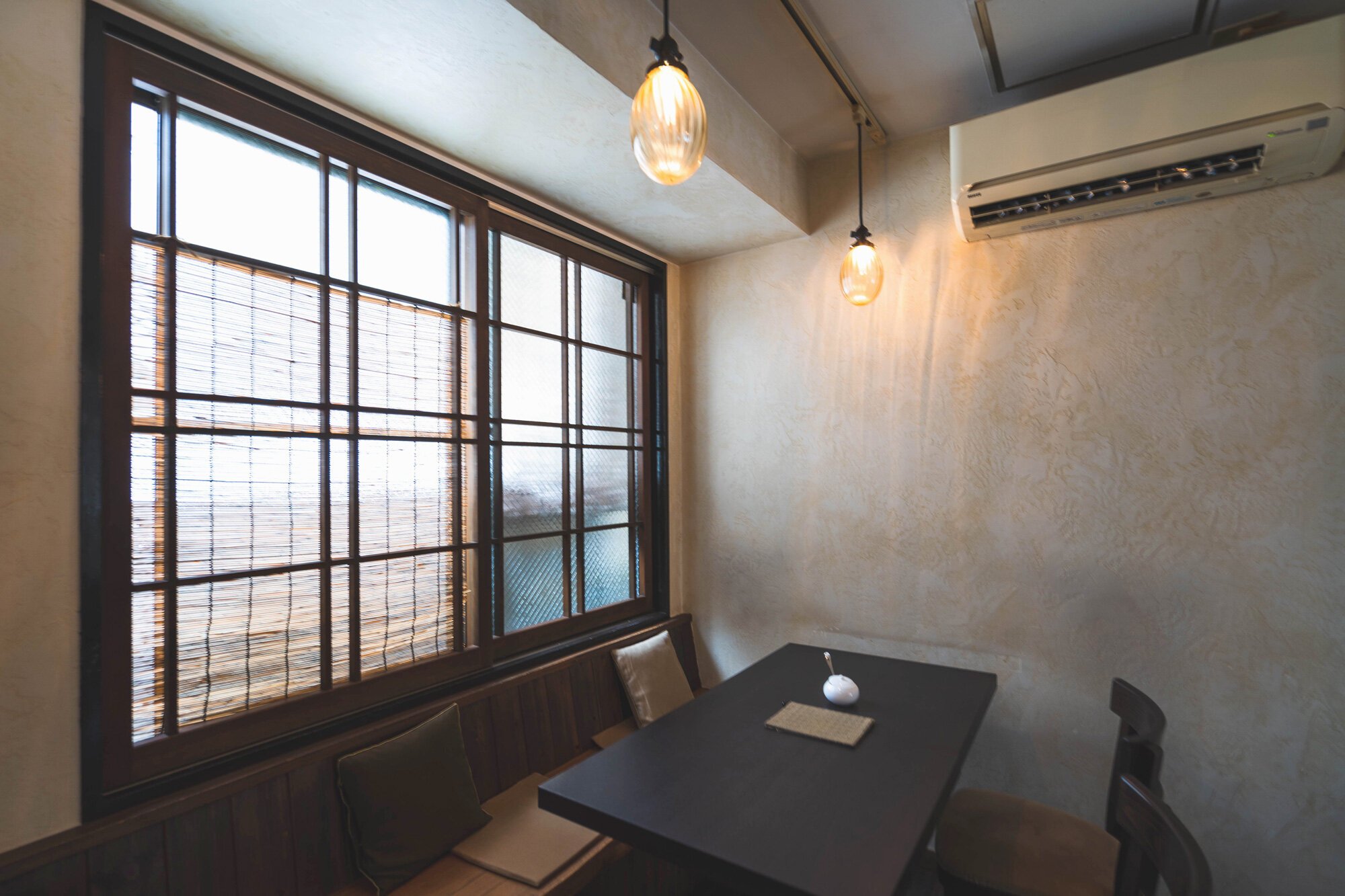
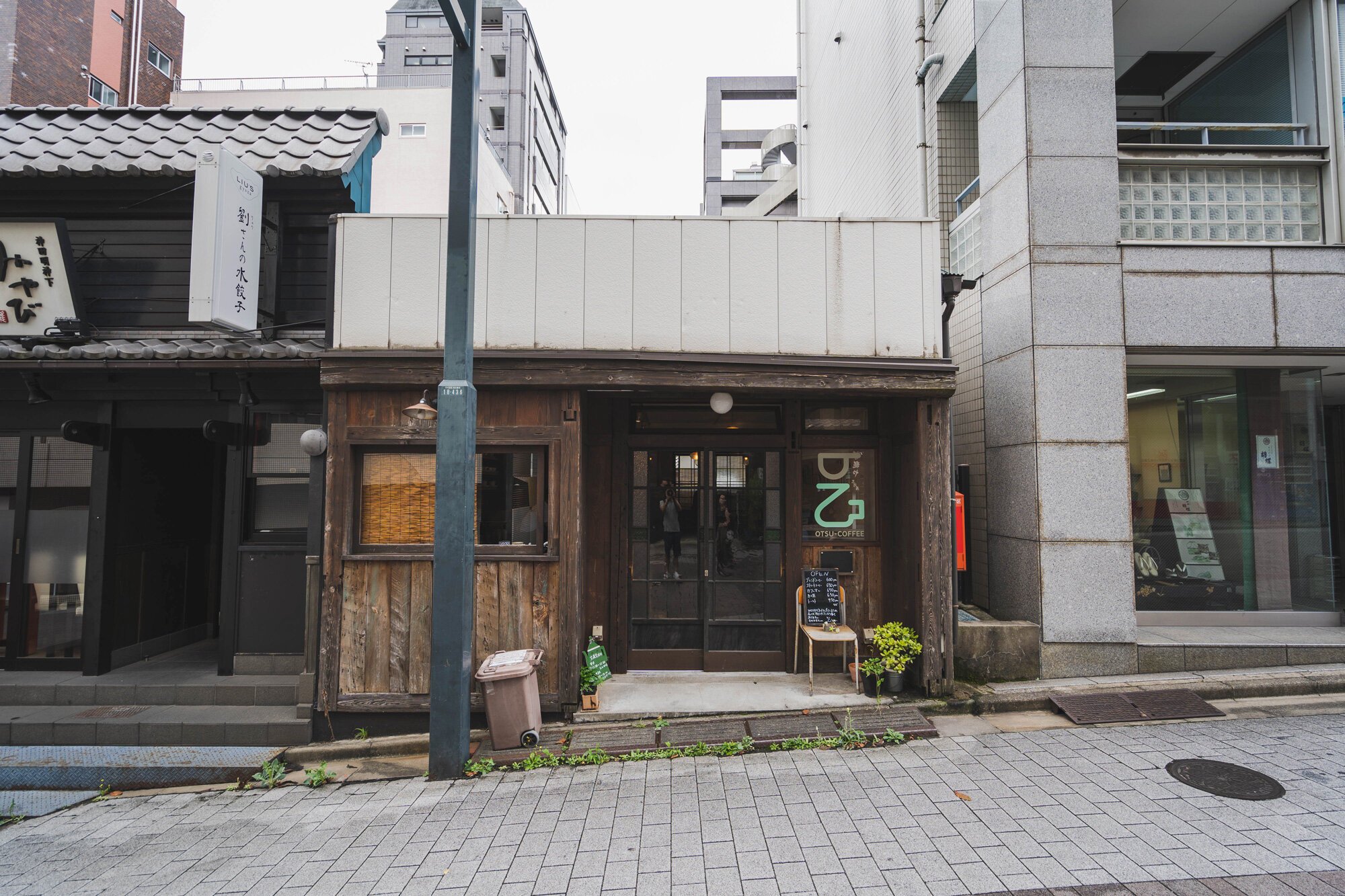
Otsu Coffee is a popular kissaten coffee shop along the main path to Kanda Myojin Shrine. It’s rated as a 2-star popular cafe on Japanese review app Retty.
A smaller, older building, the cafe isn’t some trendy, go-to spot with people posing with their drinks. With shelves of cups behind the bar, the baristas steadily pour each cup as guests quietly sit and read, perhaps one of the manga from the in-store shelf.
Namaiki
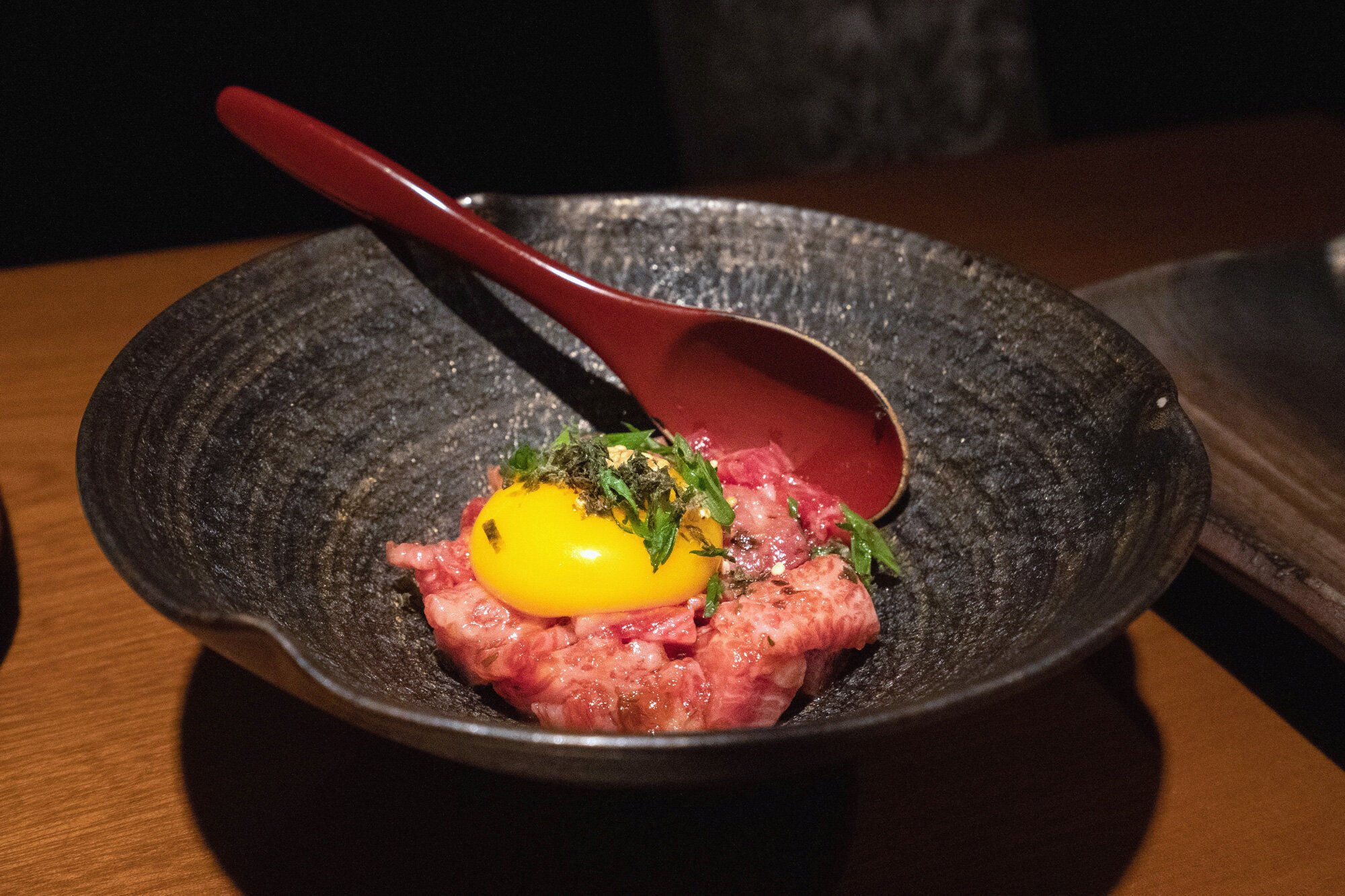
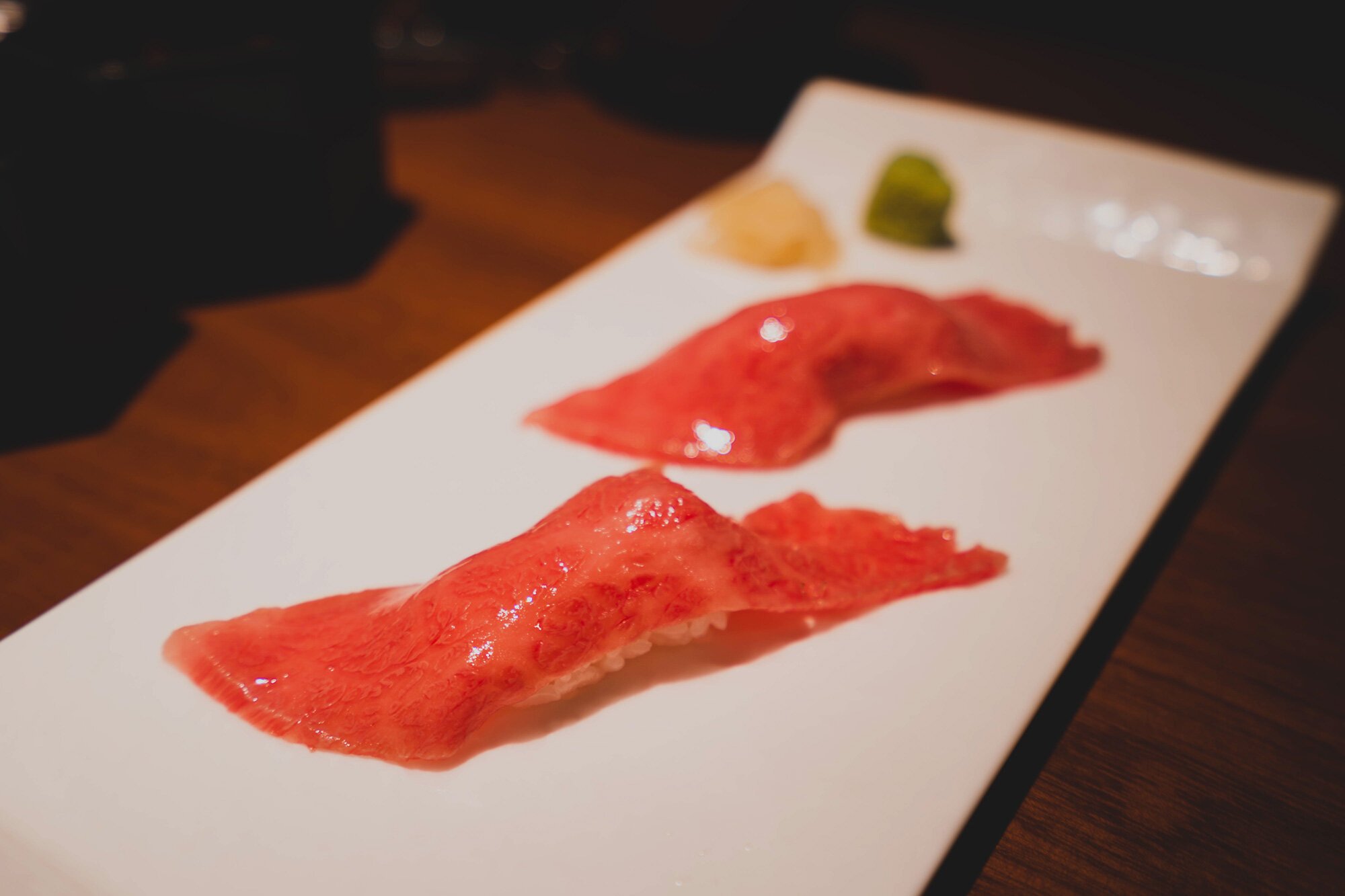
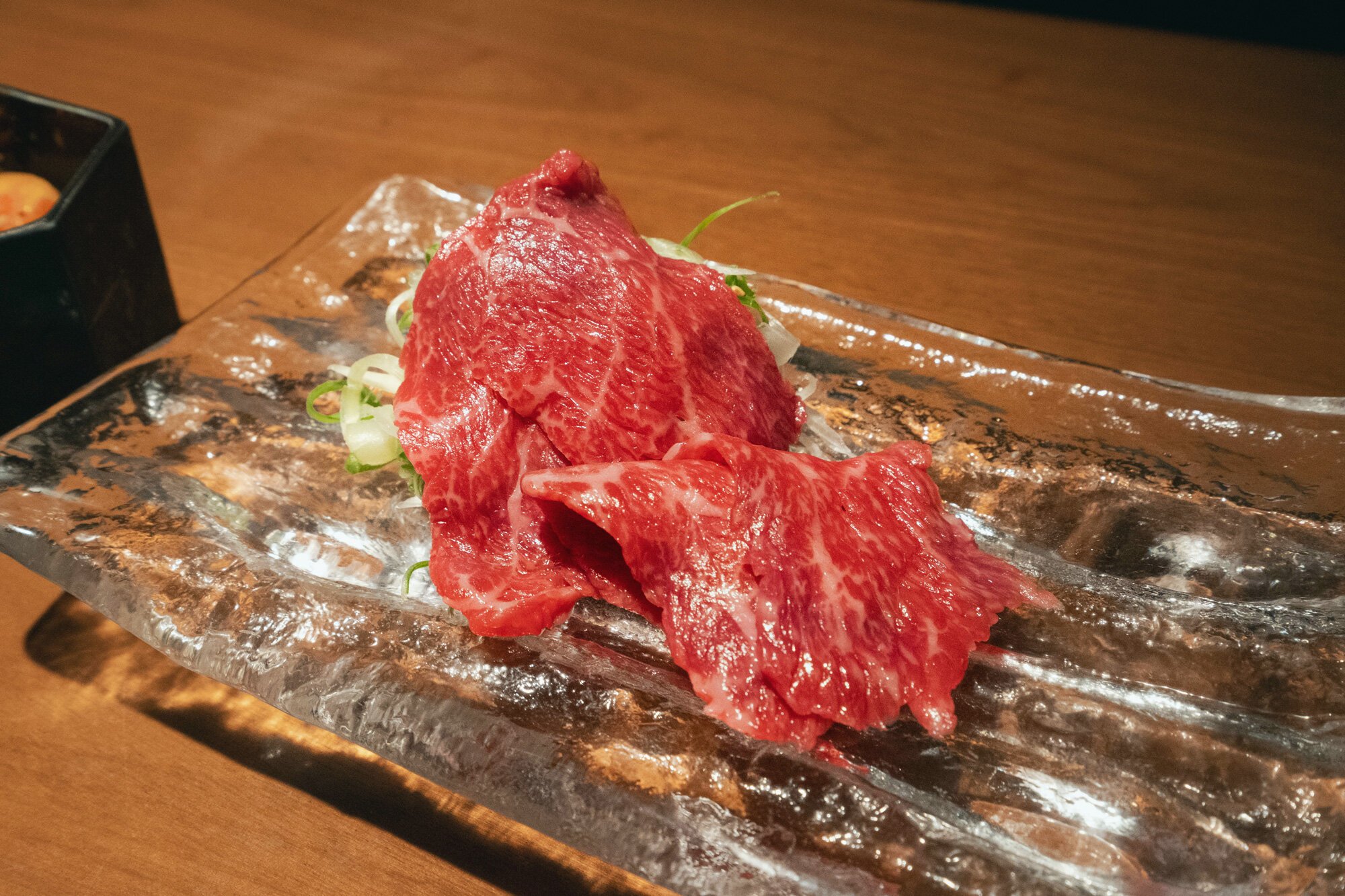
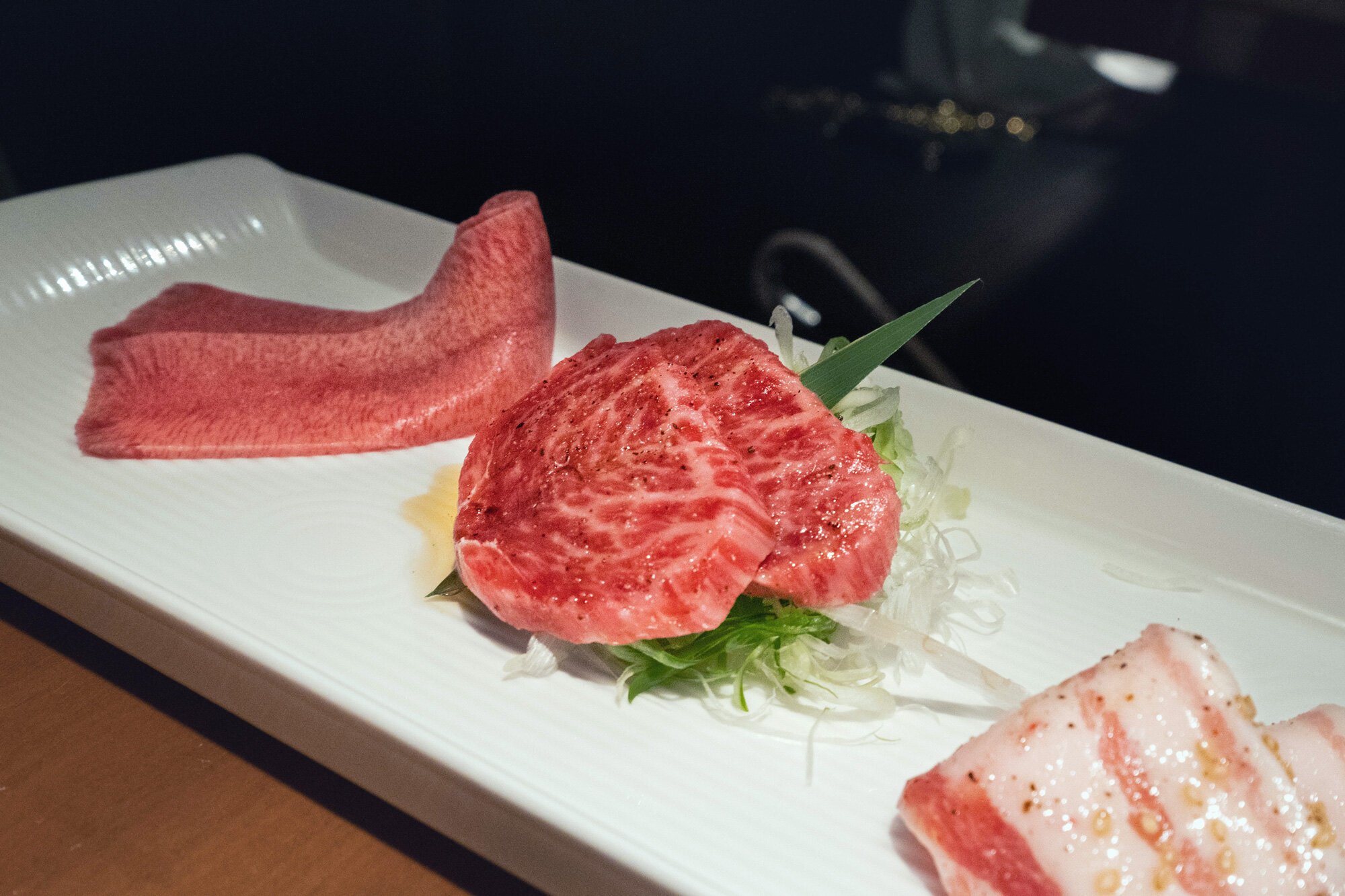
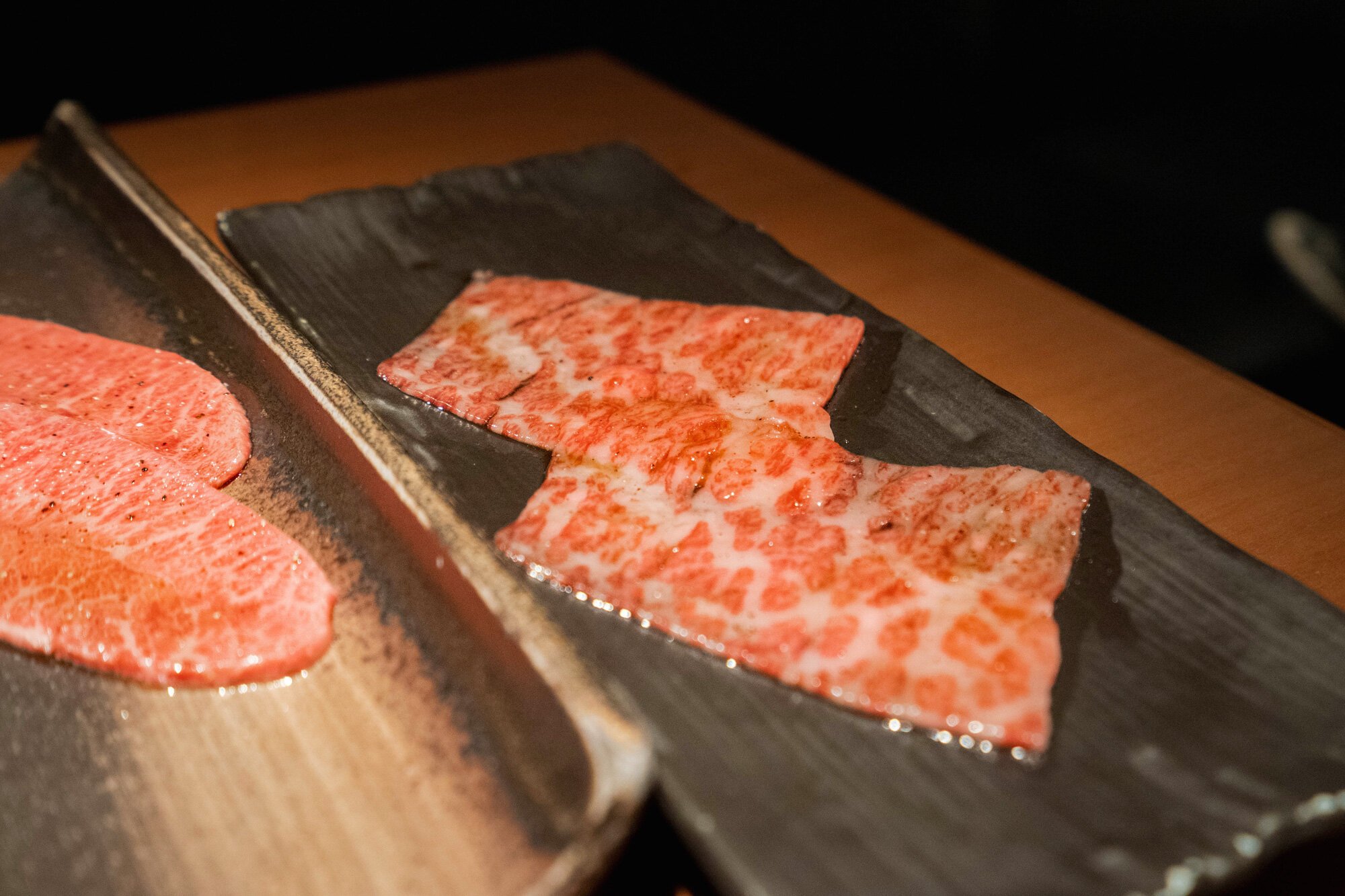
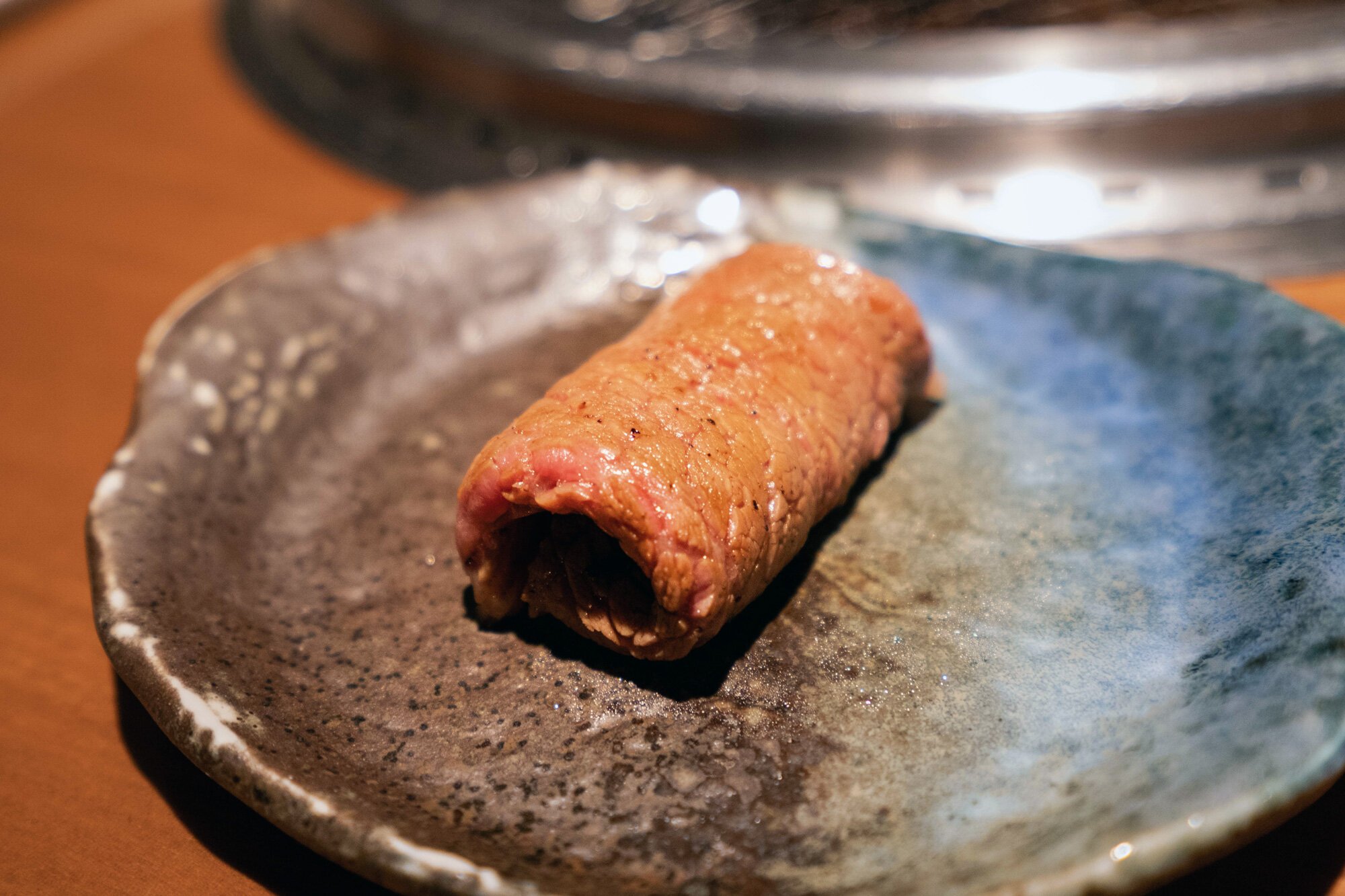
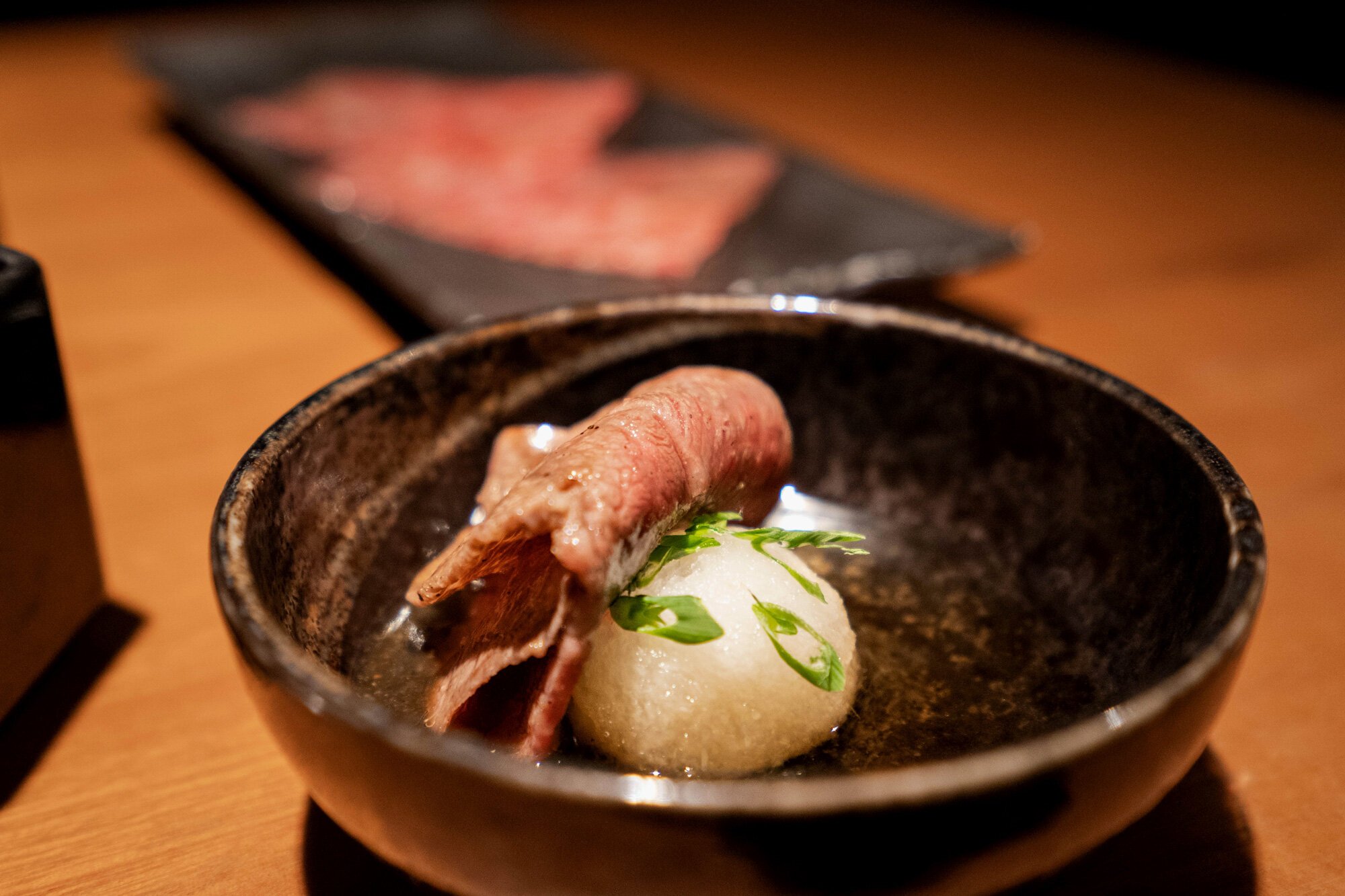
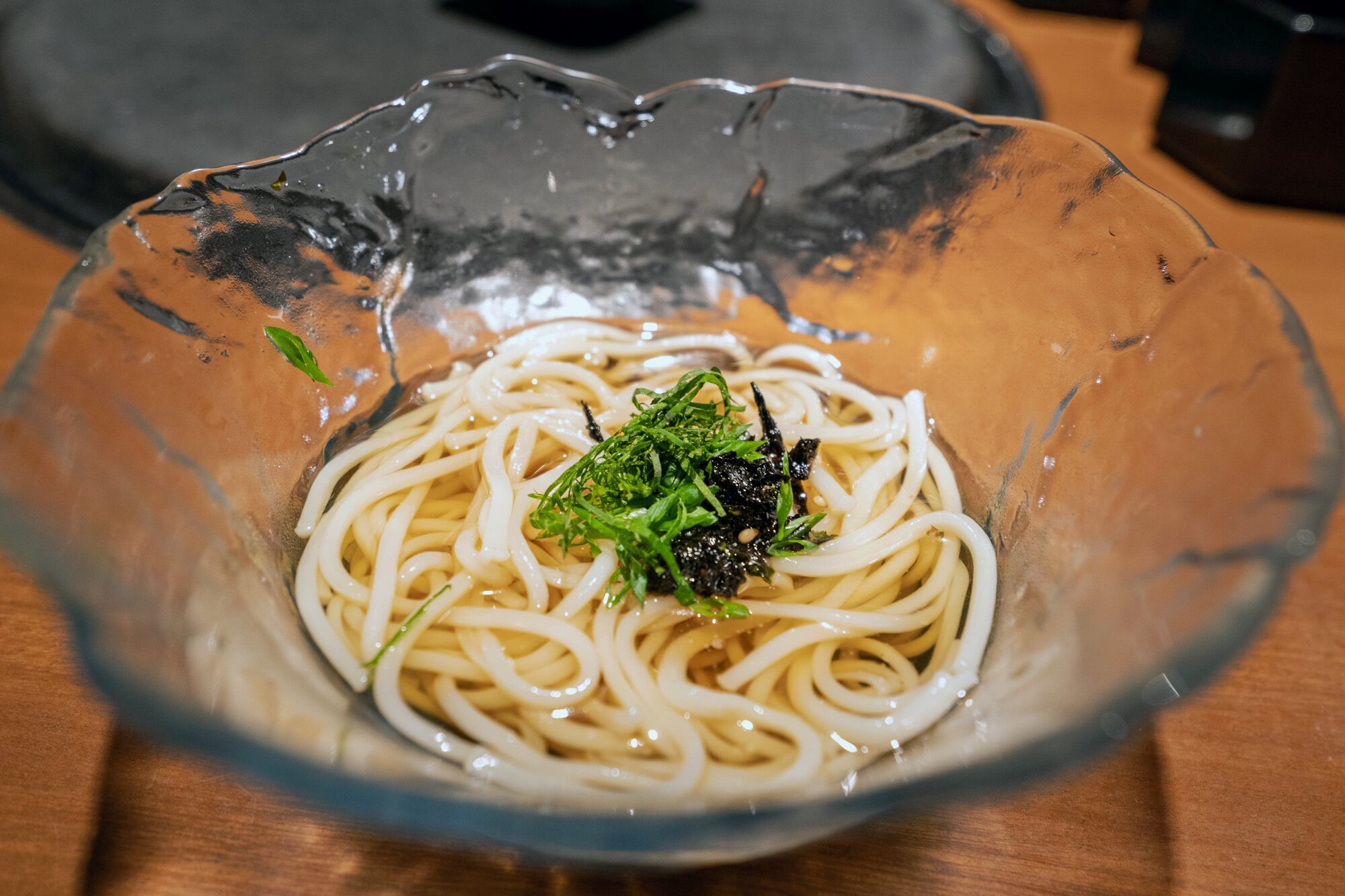
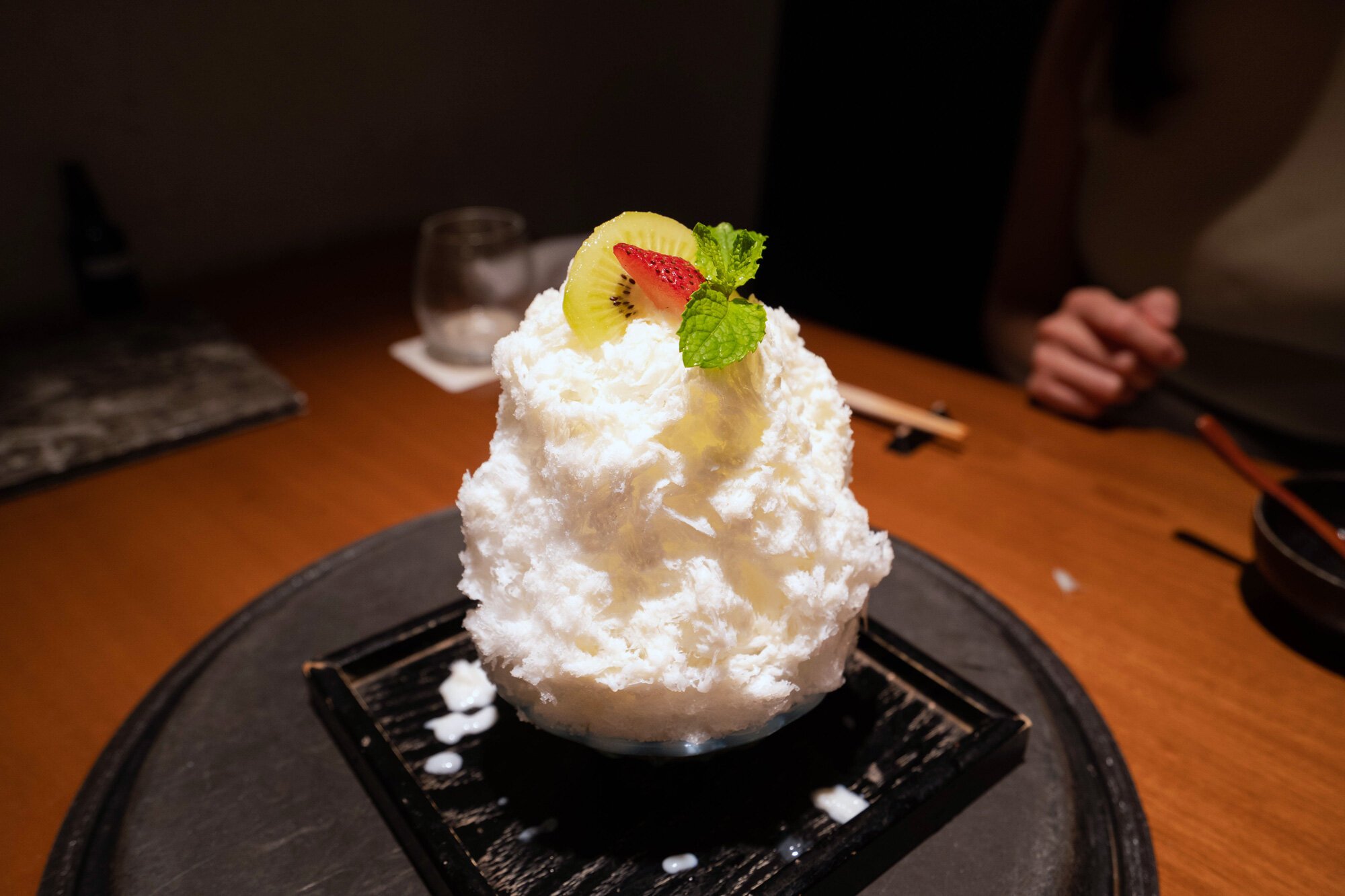
After eating here for the first time, Namaiki is going on my list of yakiniku places to take friends and family visiting Tokyo. It was ridiculously good.
Specializing in raw beef, Namaiki has a dinner menu that lets you try an assortment of both raw and cooked beef for just under USD $70 per person. Service is great, there are at least a couple of staff in each sectioned room, and they cook and serve the beef for you so that you eat it just how it’s supposed to be eaten.
It’s a 3-star spot on Japanese review app Retty, so getting a reservation can sometimes be difficult. But the food here is so fresh, tasty and tender… definitely worth trying.
Hitachino Brewing Lab


Probably one of the most well known Japanese craft beers overseas, Hitachino Nest has their Hitachino Brewing Lab at mAAch ecute in Manseibashi.
A small pub underneath train tracks, the brewing lab also has outside seating as well as tables alongside the Kanda River. It’s great in the evenings.
In addition to food and beer, they also have whisky, which they started making more recently. I can’t recommend it yet, but it’s one of the only places you can get it for those who are interested.
Vault Coffee
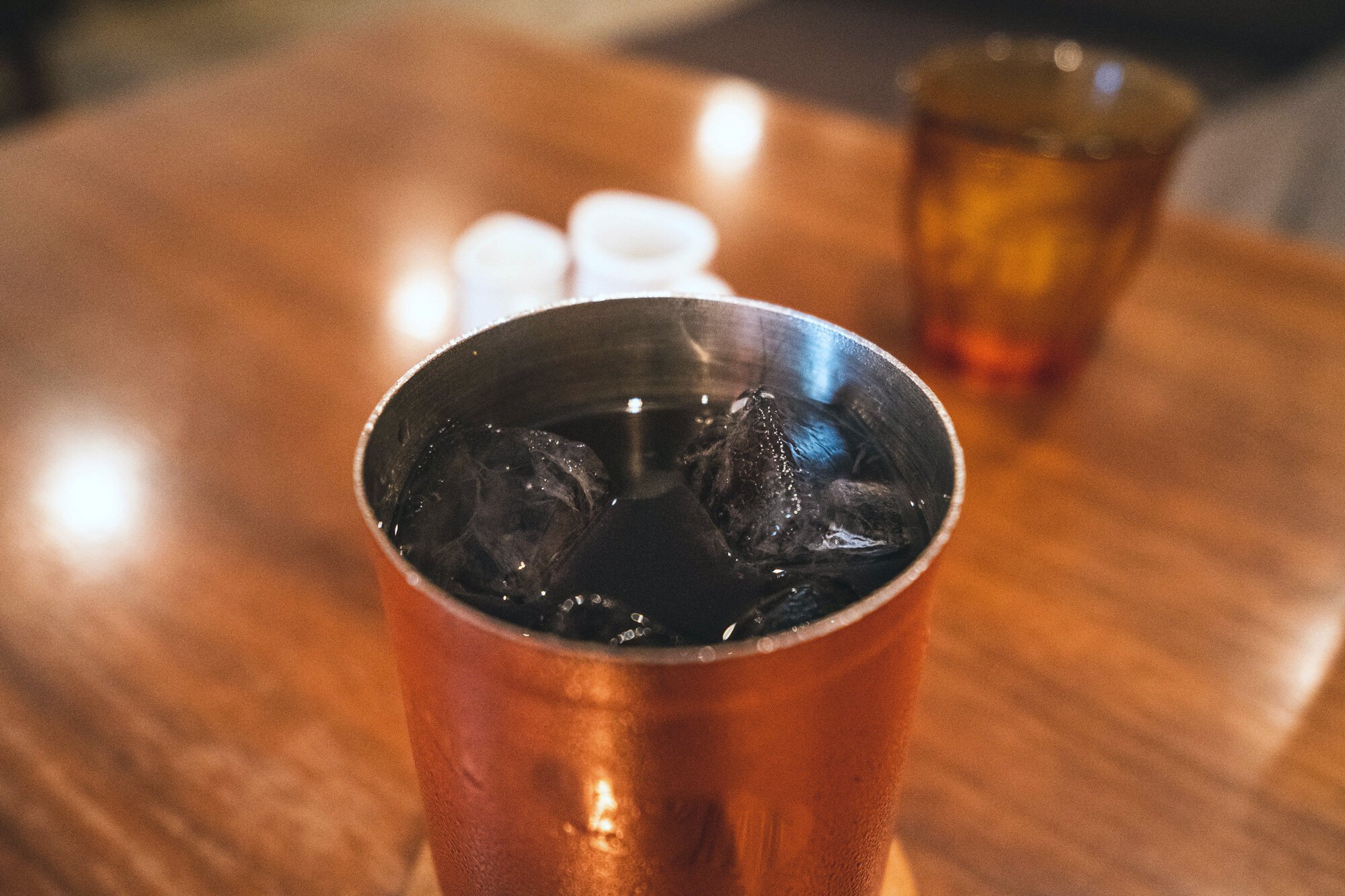
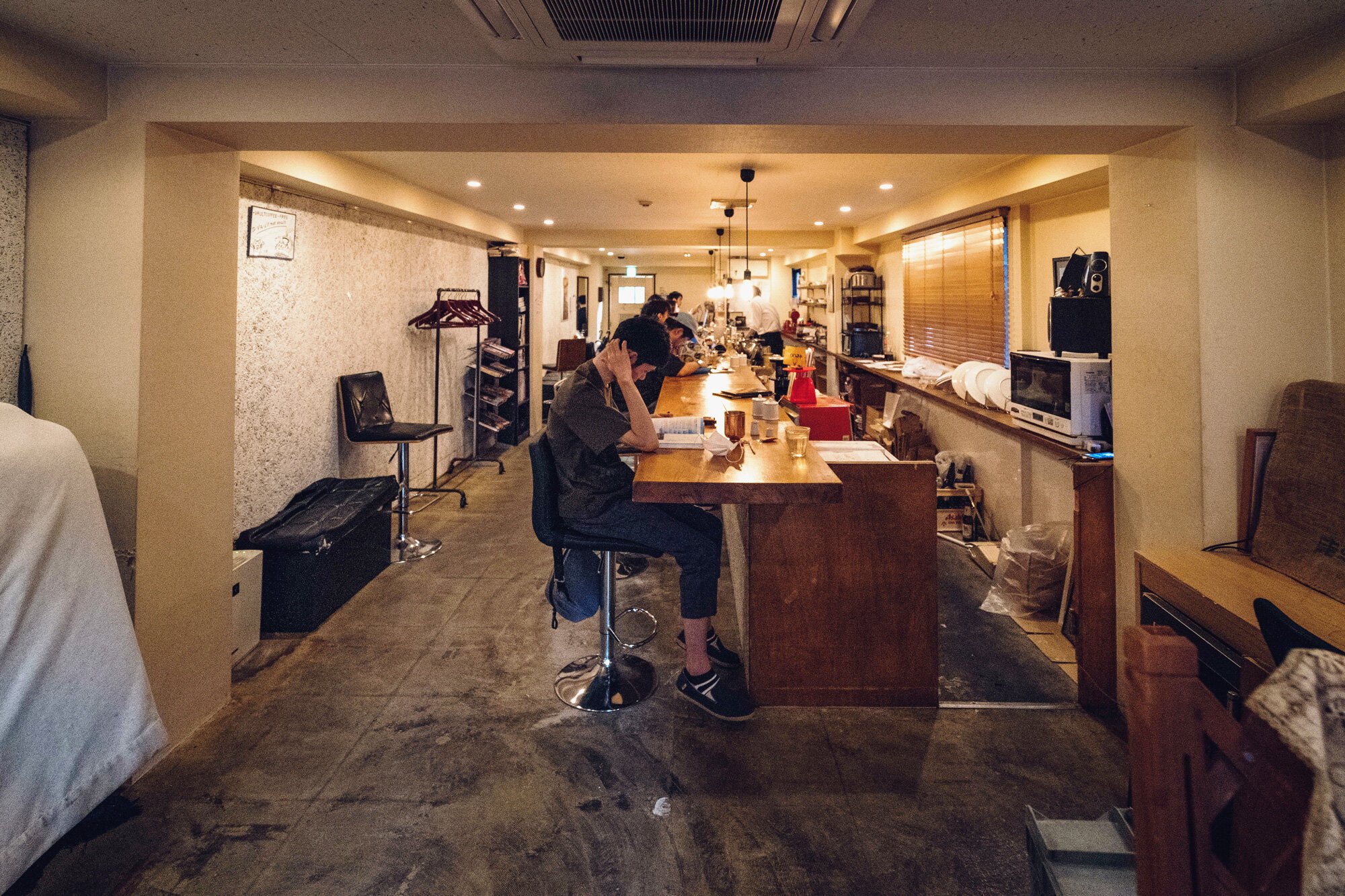
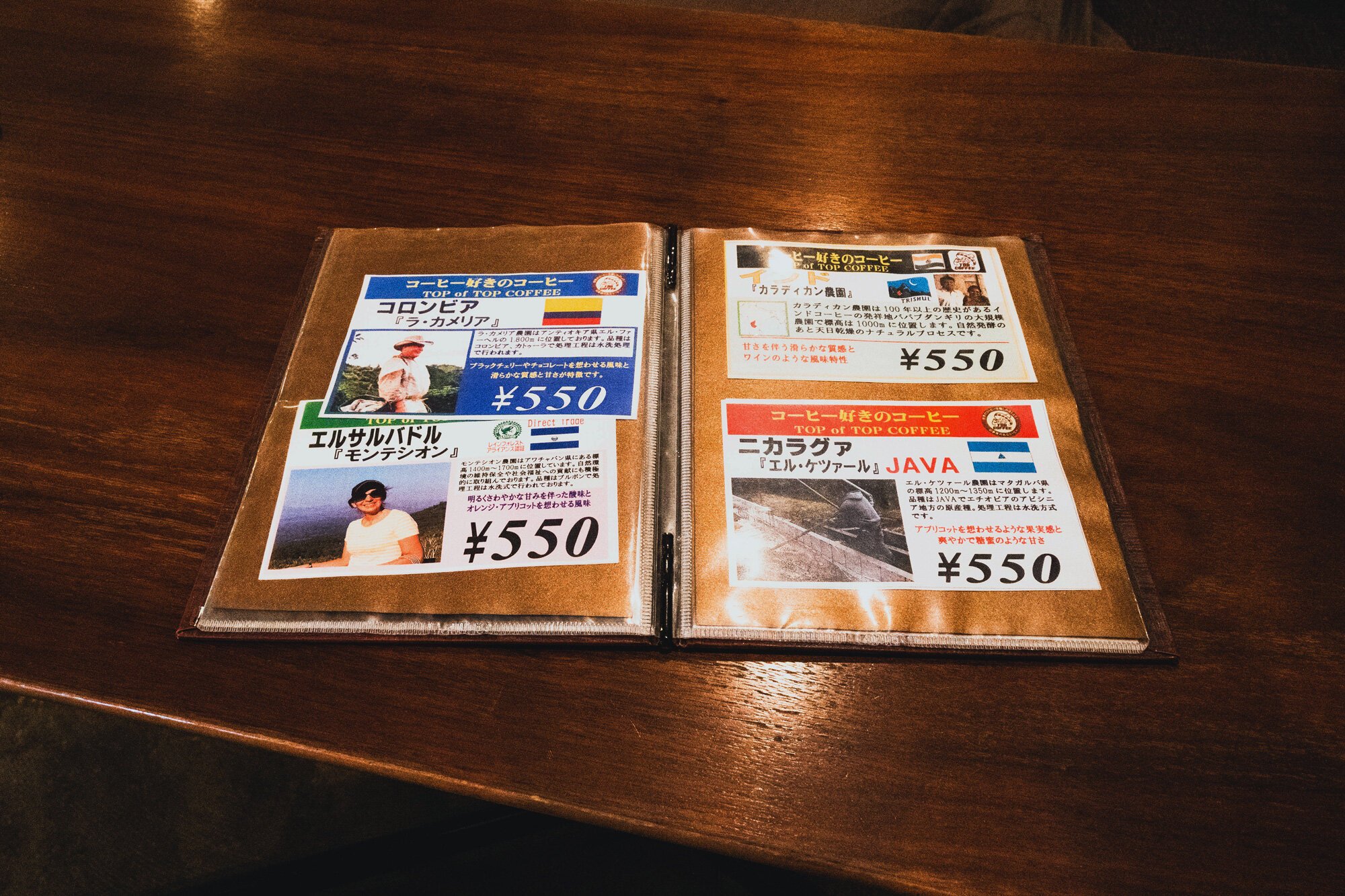

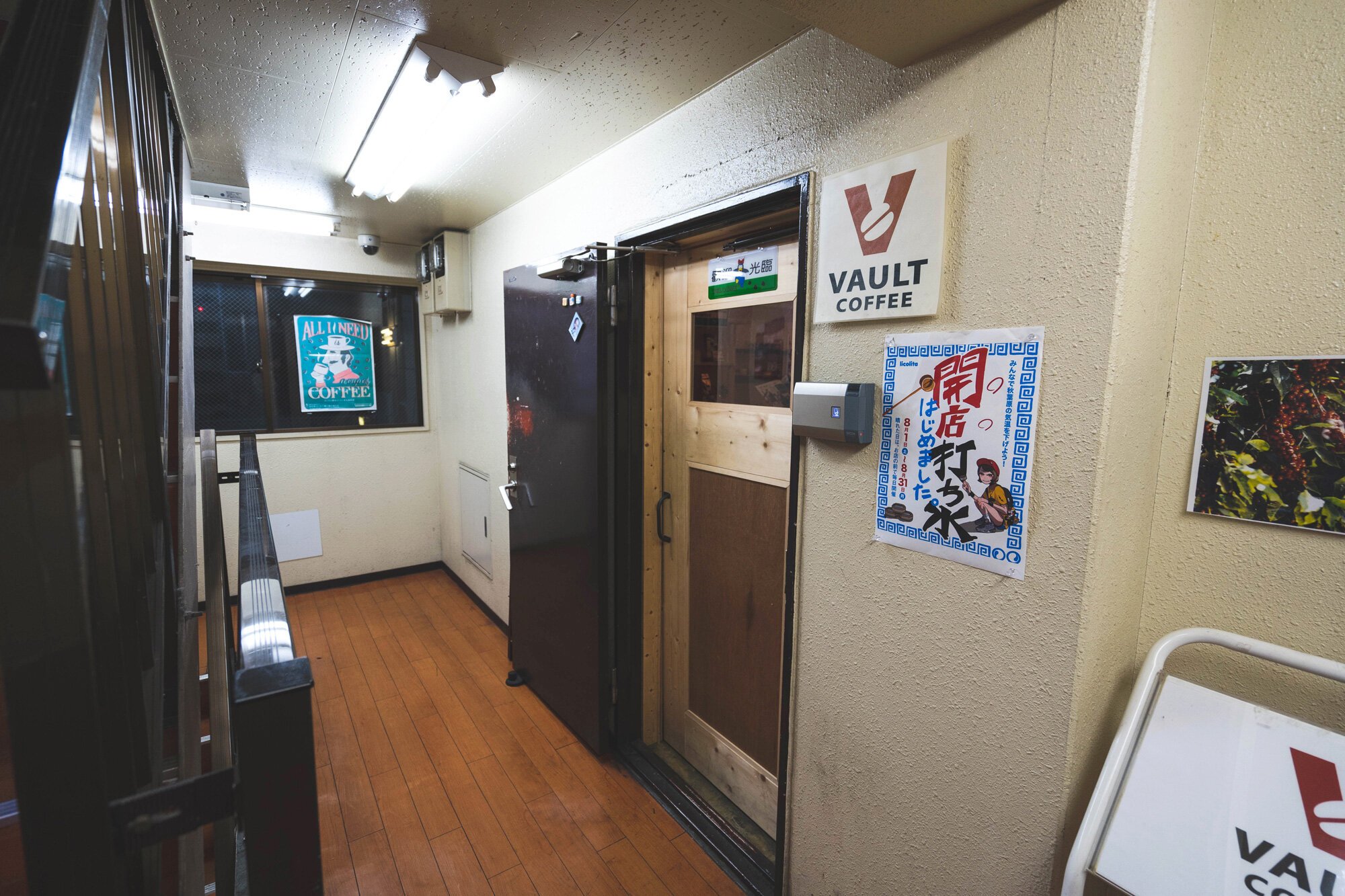
Down an alley and up on the third floor of an old, rundown building is Vault Coffee.
Rated as a popular cafe on Japanese review app Retty, this kissaten coffee shop looks more like a makeshift room. It has a wide range of different coffee beans to choose from and if you like dark coffee, this place is great. Delicious.
It’s a pretty central yet quiet spot, and you’ll find a people with laptops open, working as they sip their brew.
Pizza & Bar Nohga


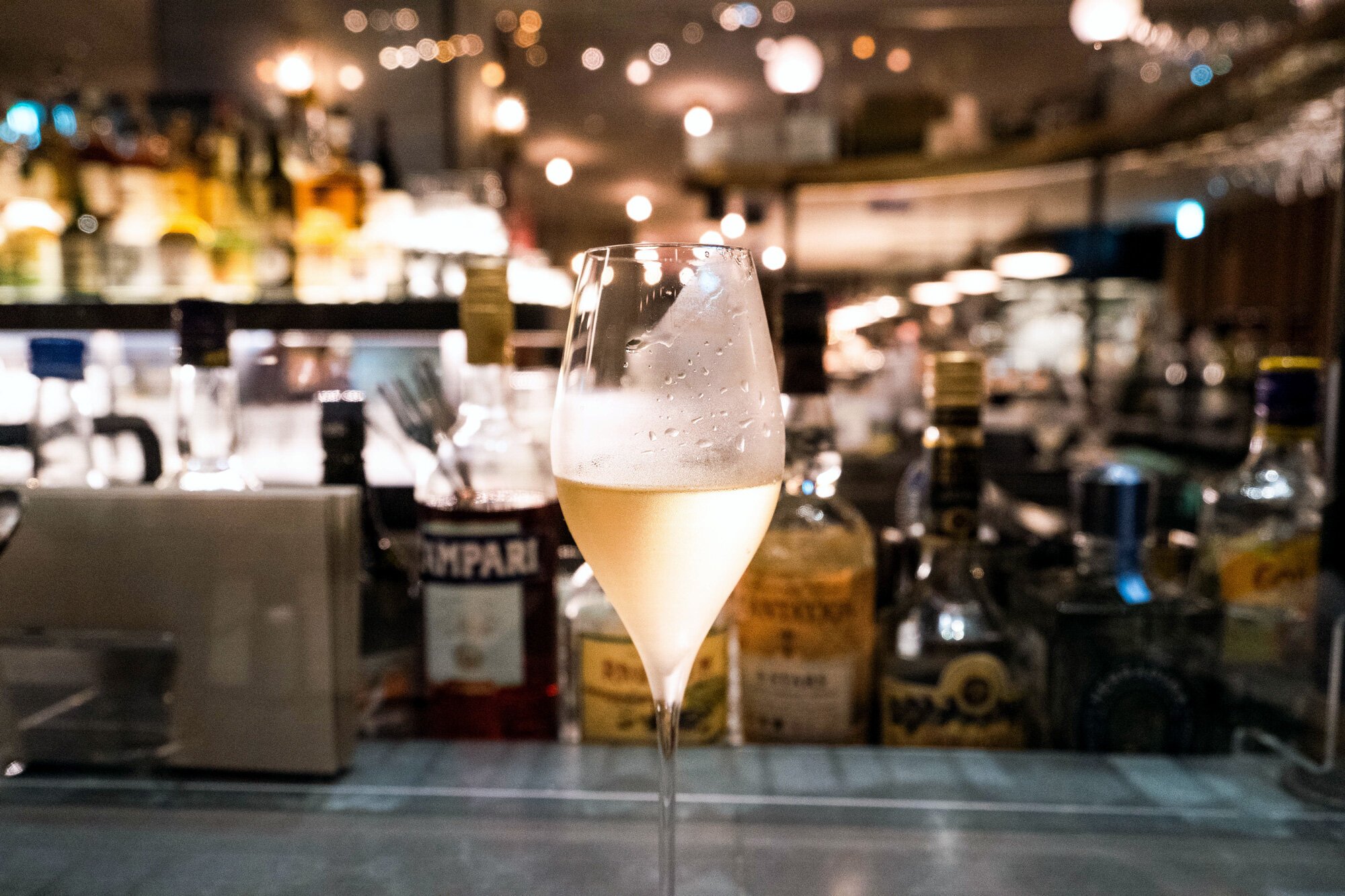
Some great brick oven pizza. Pizza & Bar Nogha is on the ground floor of the Nohga Hotel Akihabara, and is somewhat of a sanctuary amongst fast food places and electronics shops.
I’ve had a lunch and breakfast here and everything was tasty. My favorites are their pizza and craft cola.
The bar is also stylish and gives off a modern yet rustic vibe. Service is good and it’s a nice place to wind down the evening.
Keep in touch:
More travels:
Daikanyama, Tokyo
Thought of as Tokyo’s Brooklyn, Daikanyama is a posh and stylish neighborhood near Shibuya with a laid back vibe that attracts trendy locals.
Daikanyama is a stylish and fashionable area one train stop from Shibuya
It is often thought of as Tokyo’s Brooklyn
Trendy and posh types frequent this area for its cafes, boutique shops and laid back vibe
I liked Daikanyama from the first time I visited. It’s typically not a destination for a first timer in Tokyo, but may appeal to many as it lets you get away from the hustle and bustle without going too far.
Daikanyama is located in the middle of a triangle made up of Shibuya, Ebisu and Nakameguro.
How to get there
The Tōyoko Line runs through Daikanyama Station. From Shibuya, it’s the very next stop. You can also walk as well (If it’s cherry blossom season, I suggest you do as you can pass by Sakuragaokacho) and it’ll take about 15-20 minutes. It’s also easily accessibly from Ebisu Station which is on the Yamanote Line, and it’s about a 15 minute walk from there.
About Daikanyama
Daikanyama is located in the Shibuya Ward and attracts locals on the more stylish side on weekends.
After the Great Kanto Earthquake in 1924, the Japanese government built a concrete apartment building implementing earthquake-proof design. It set the standard for the area, and most buildings there are concrete low-rises even today.
Housing in Daikanyama
Because it’s considered a highly desirable and high-end place in the city, the area’s average rent is also one of the highest in Tokyo.
The average rent for a 1K studio as of June 2024 is 137,200 JPY (USD $873), up from 131,800 JPY (then USD $1,259) in September 2020.
A 1LDK single bedroom apartment is 269,600 JPY (USD $1,714) on average in June 2024. [J]
Its location puts it near Shibuya, Ebisu and Nakameguro, and it’s on the same train line as Jiyūgaoka. It often attracts similar crowds as those who frequent Aoyama, Omotesando, Marunouchi and others.
Tsutaya Books: Daikanyama T-Site
Known as a book/CD/DVD chain across Japan, Tsutaya has one of the flagship locations in Daikanyama. This location, known as Daikanyama T-Site, is one of the main destinations in the area.
Made up of 3 separate but connected buildings, Tsutaya Books is located in an area that acts somewhat like an outdoor park. It’s concept is to be “A library in the woods.”
There’s cafes and shops in the area as well, including a Starbucks in Tsutaya Books itself, and makes for a good place to grab a bite, read and get some work done.
https://store.tsite.jp/daikanyama/
Boutiques & Shops
Walking around the Daikanyama neighborhood, you’ll come across a lot of boutiques on the street and in small shopping complexes. The one above is Sarugaku.
Most boutiques tend to be on pricey side. Some brands found in the area are A.P.C., Paul Smith, Supreme, Oliver Peoples, Decente Blanc, Maison Kitsune, Japanese baby brand Familiar and others.
More than just fashion brands, you’ll find shops that are about the craft.
Okura (pictured above) is the flagship store for the Blue Blue Japan brand, which sells indigo-dyed clothing and accessories utilizing traditional Japanese techniques. Their method for dyeing that they use dates back to the 10th century, and results in artistic, retro craftsman-looking clothing. The shop itself is in an old Japanese warehouse.
Sticking with the craft vibe, I’ve seen artists actually working on the production of their clothing, like this guy washing down denim jeans in the street.
My friend who first told me about Daikanyama described it as a fashionable place where all the stylish people in Tokyo go. I think it lives up to that image quite well.
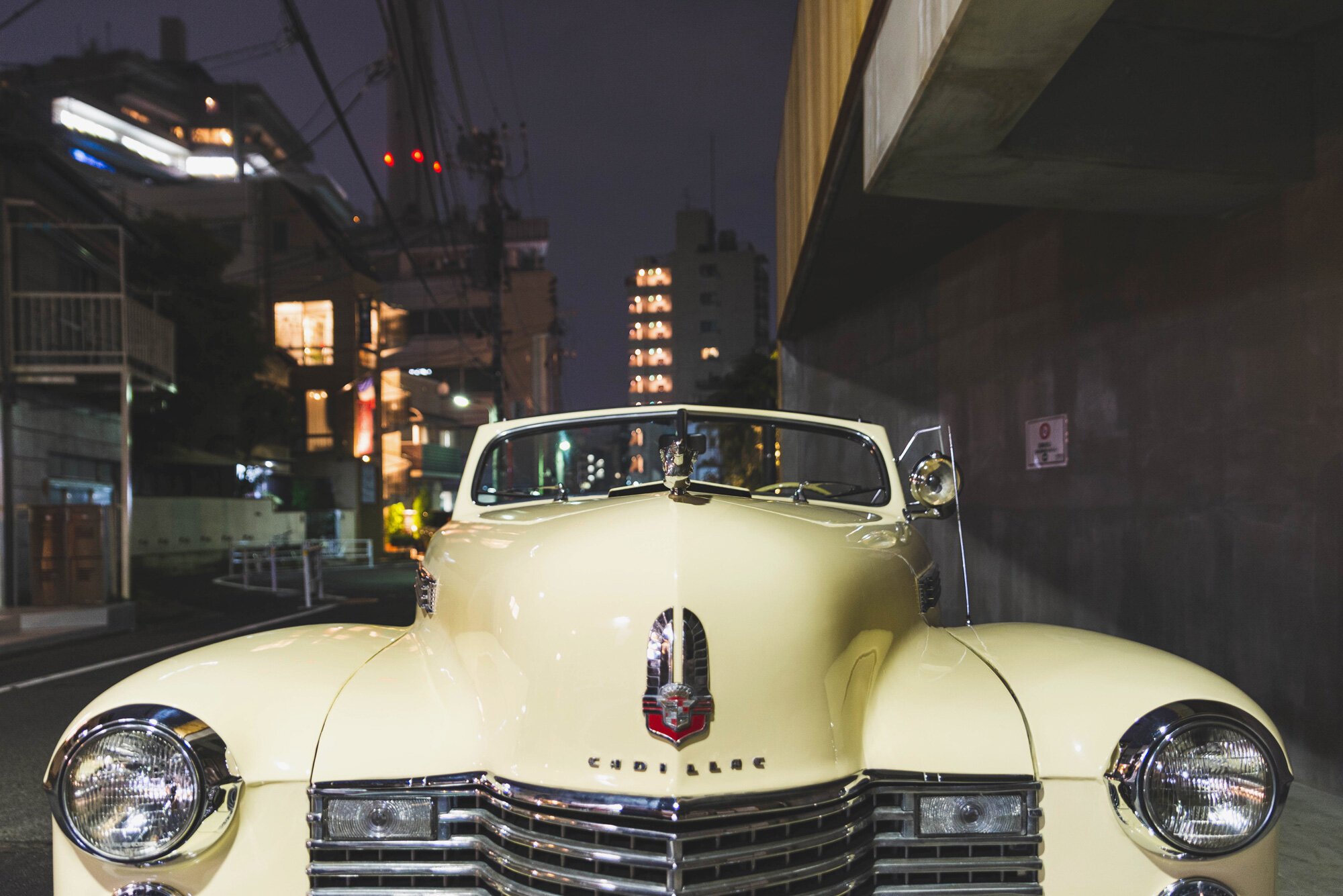
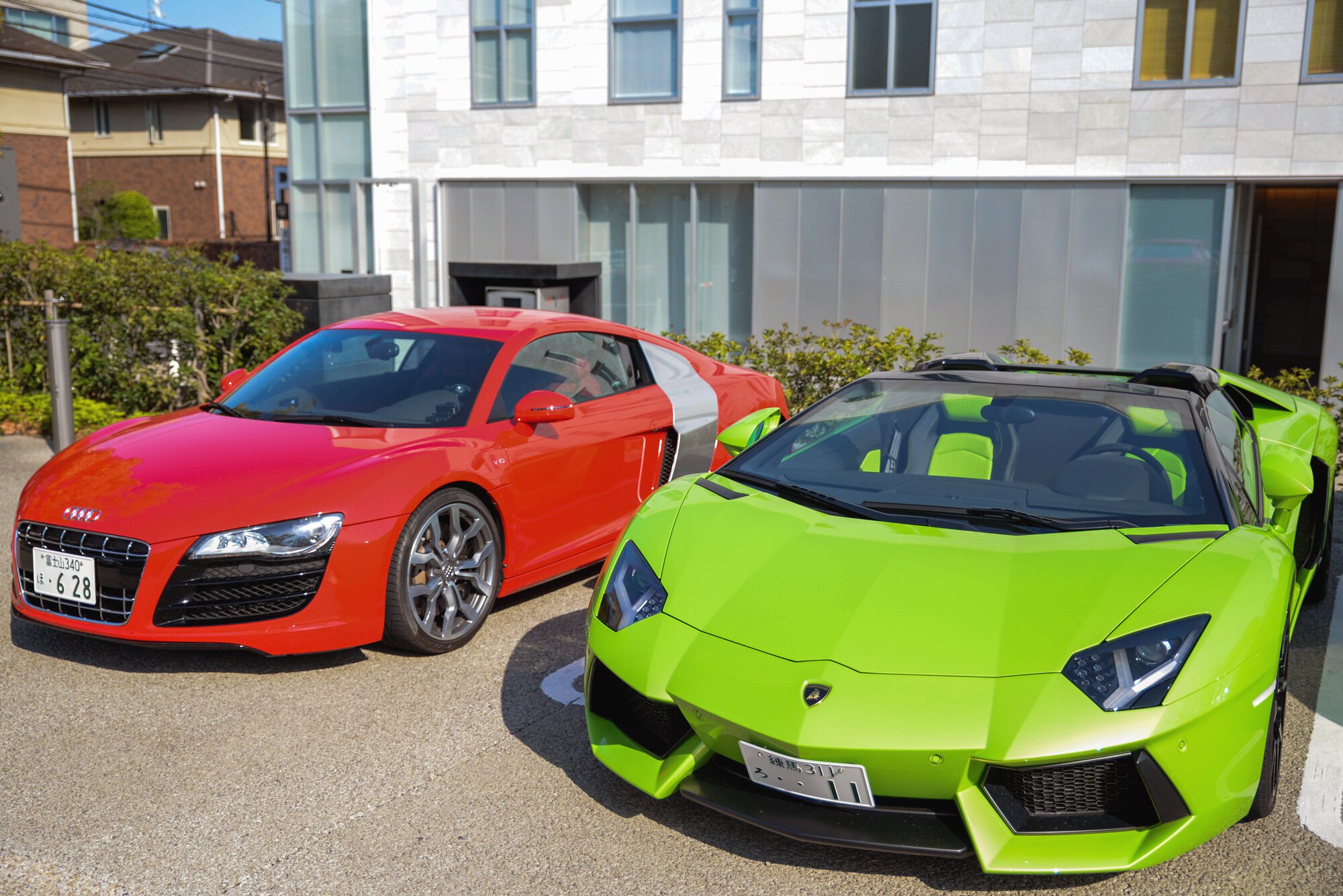
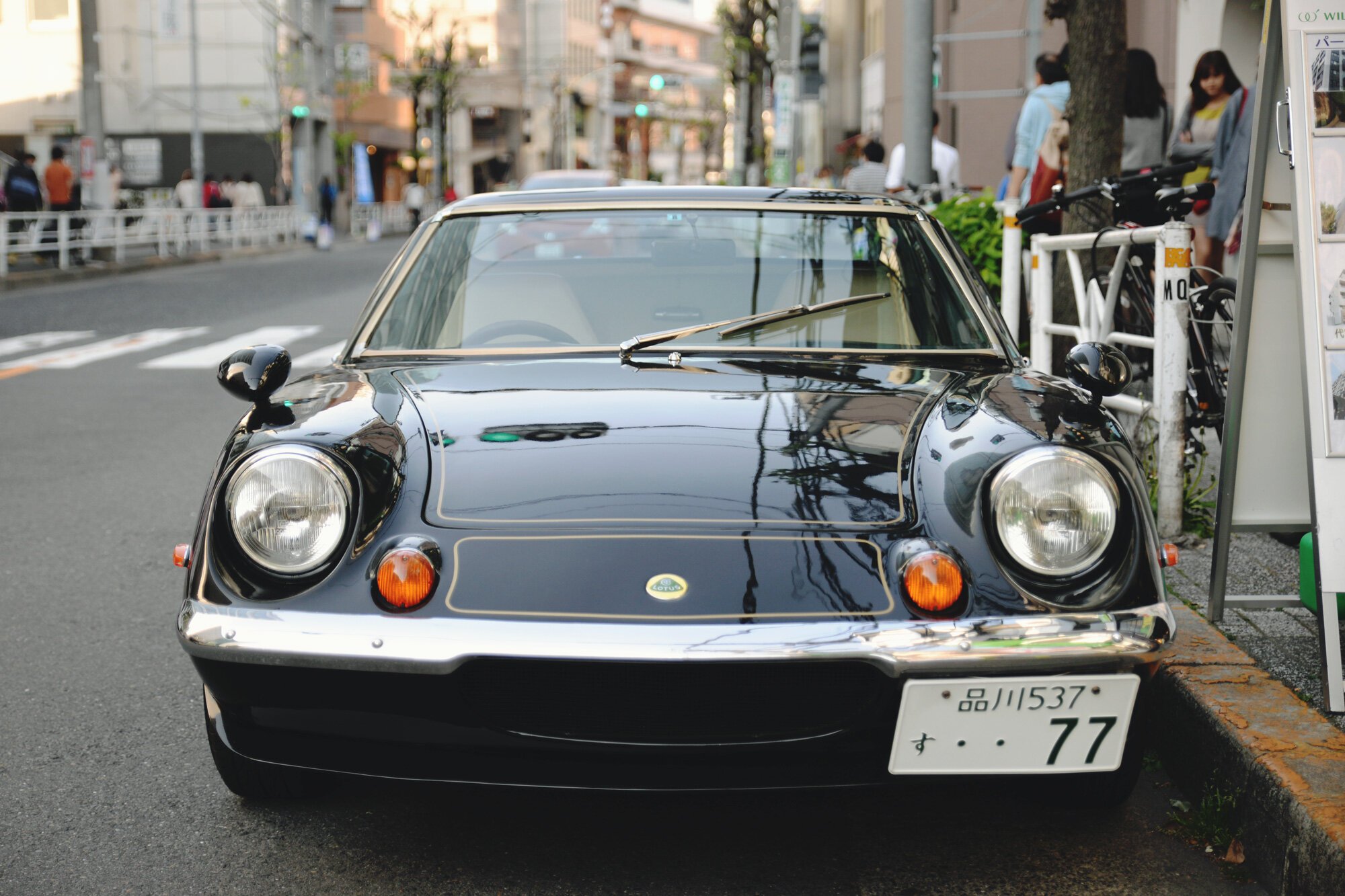
Coffee Elementary School

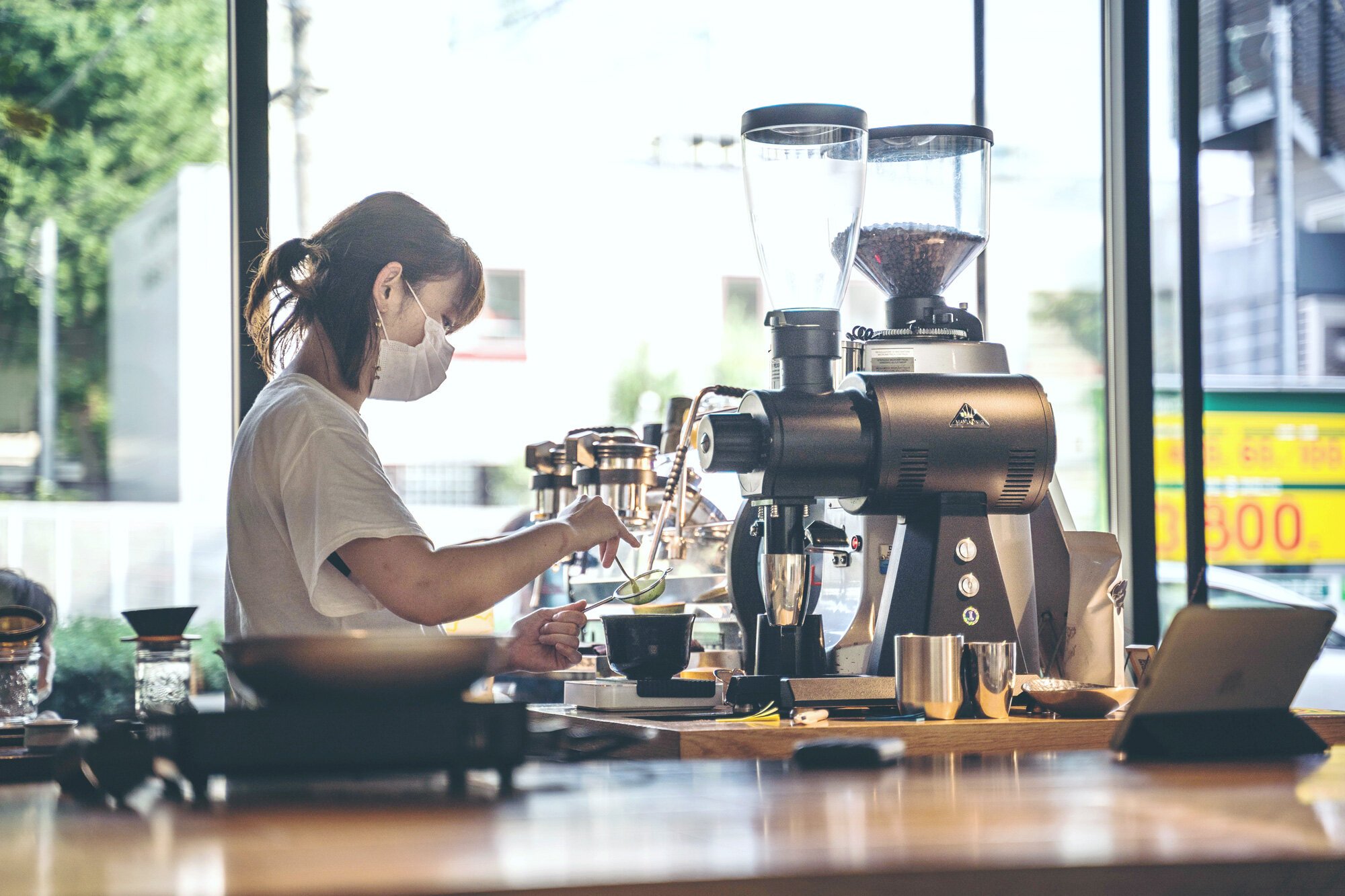
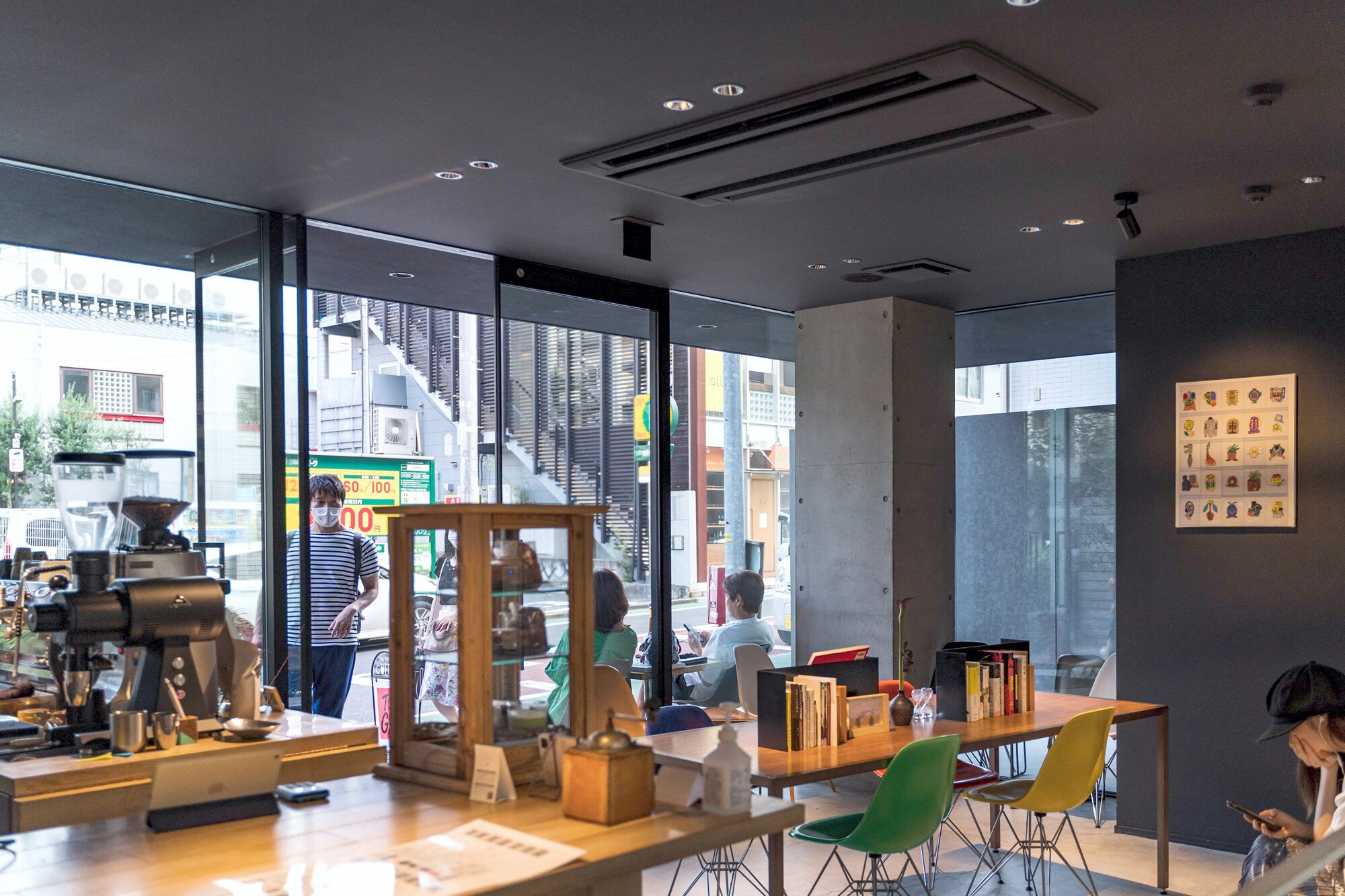
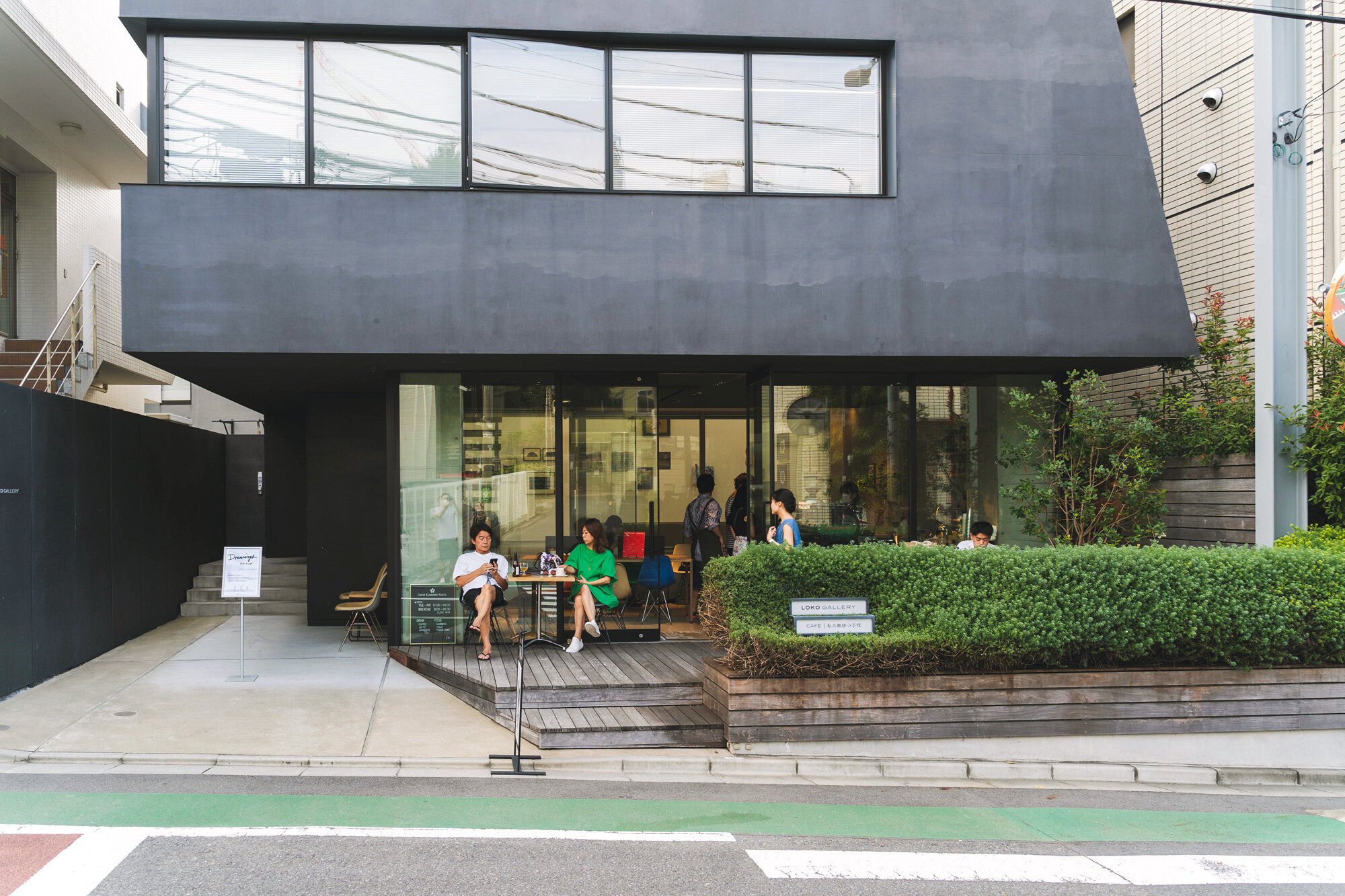
Coffee Elementary School is probably not a coffee shop you just happen to come by as it’s a bit separated from the main area of Daikanyama.
Started and operated by a former elementary school teacher who decided to change careers, Hisashi Yoshida got his new start at Makahara (I recommended its affiliated shop in Nakameguro) and is passionate about making quality coffee and foods.
I learned about Coffee Elementary School after seeing it featured on an episode of Buzzfeed Worth It. It has a relaxing atmosphere, is connected to a modern art gallery, and serves quality coffee.
While I didn’t get to talk to Yoshida personally, he walked us out like he did with all his customers when we left, thanked us and waved bye.
https://coffeeelementaryschool.com [J]
MAP [New]
* This shop has moved to Kinshicho.
Ivy Place
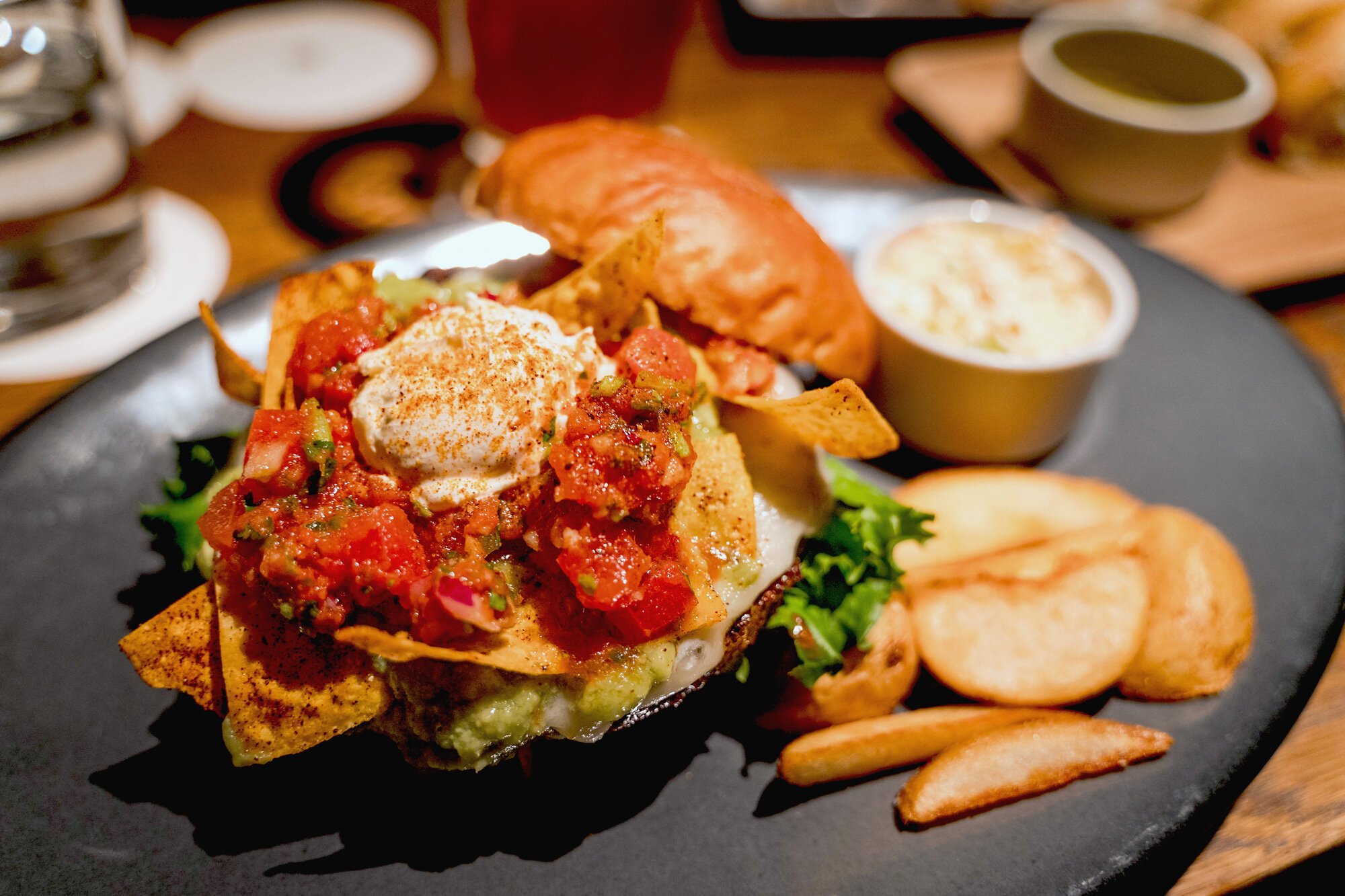
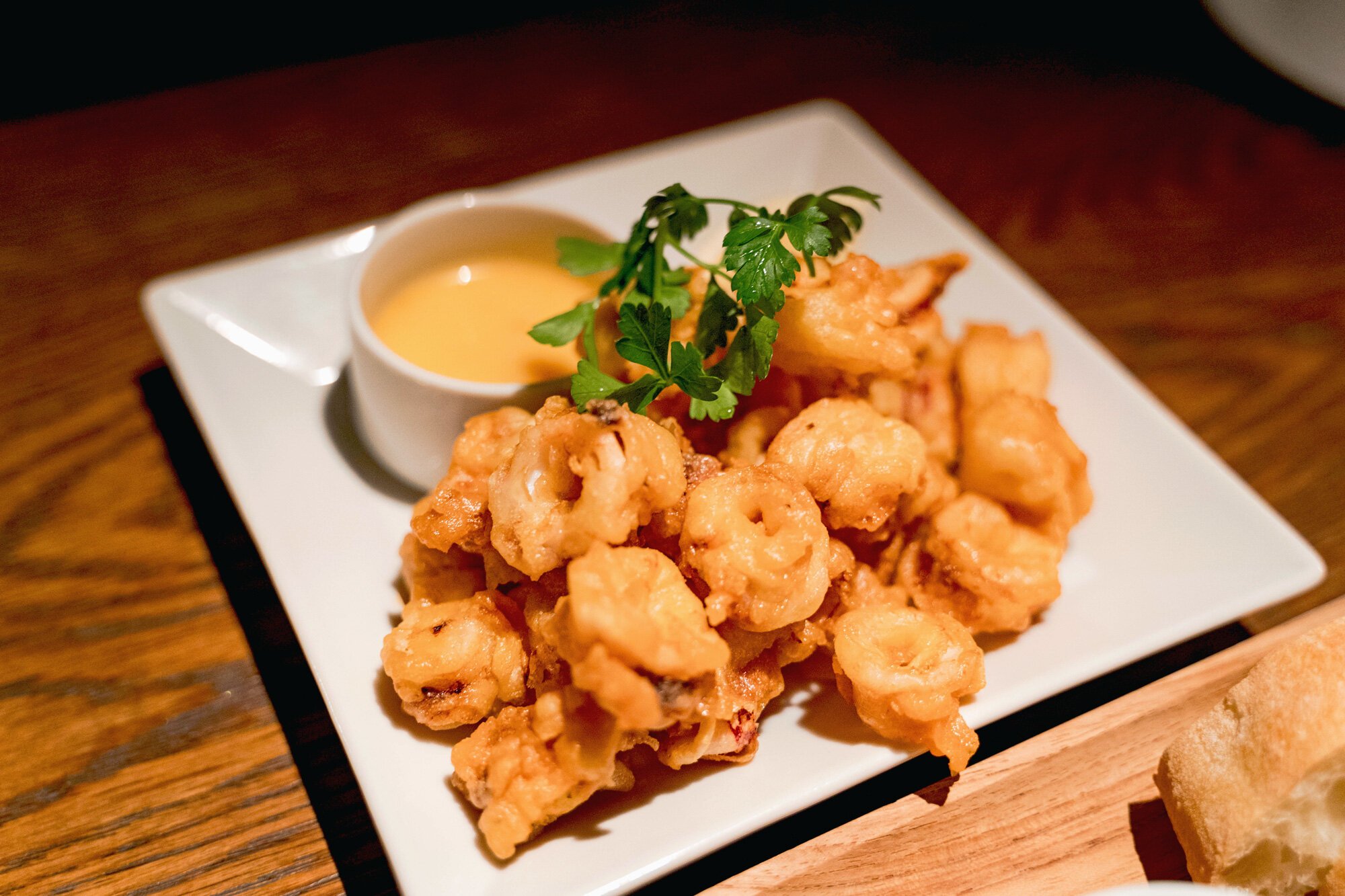
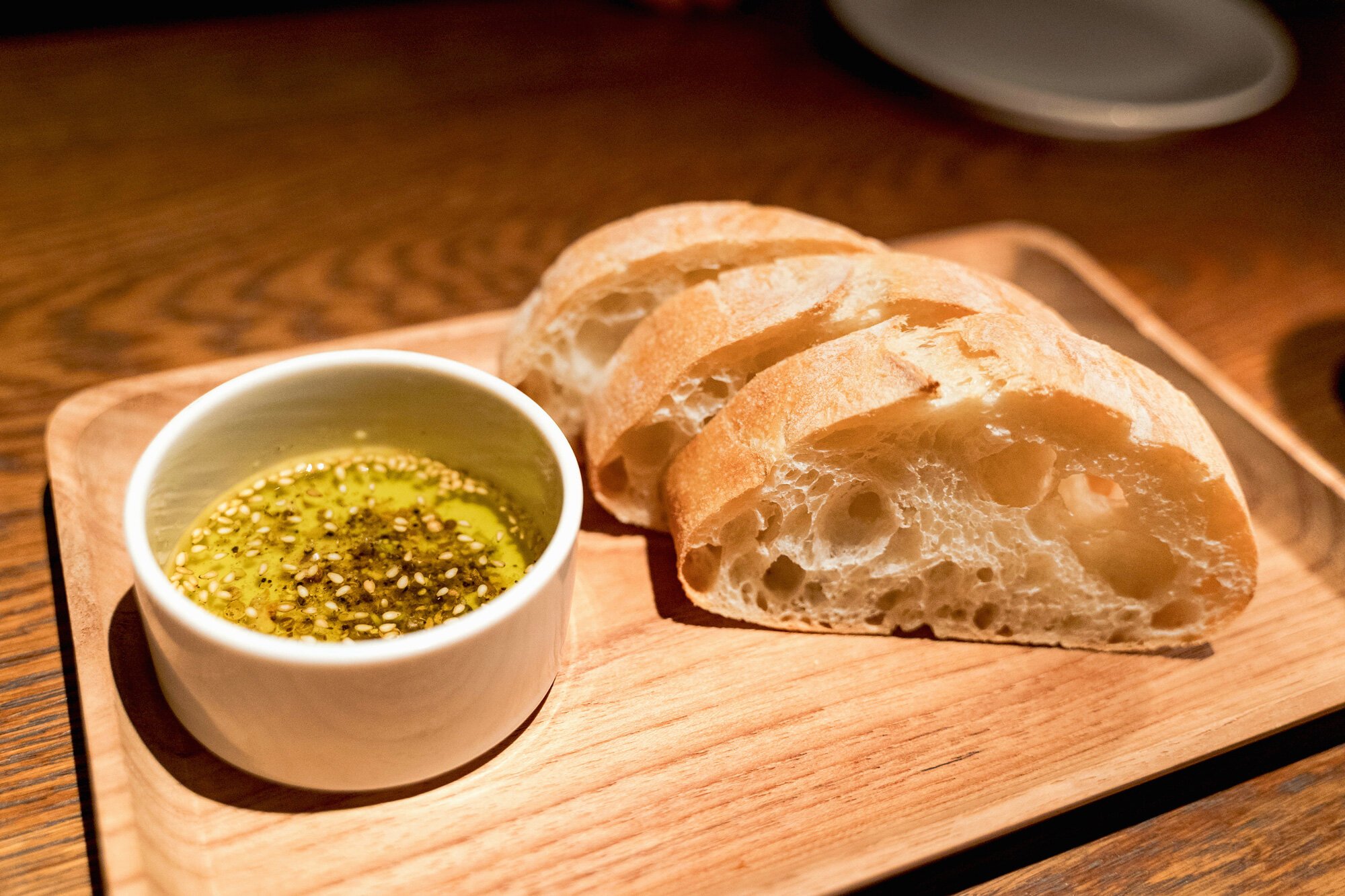
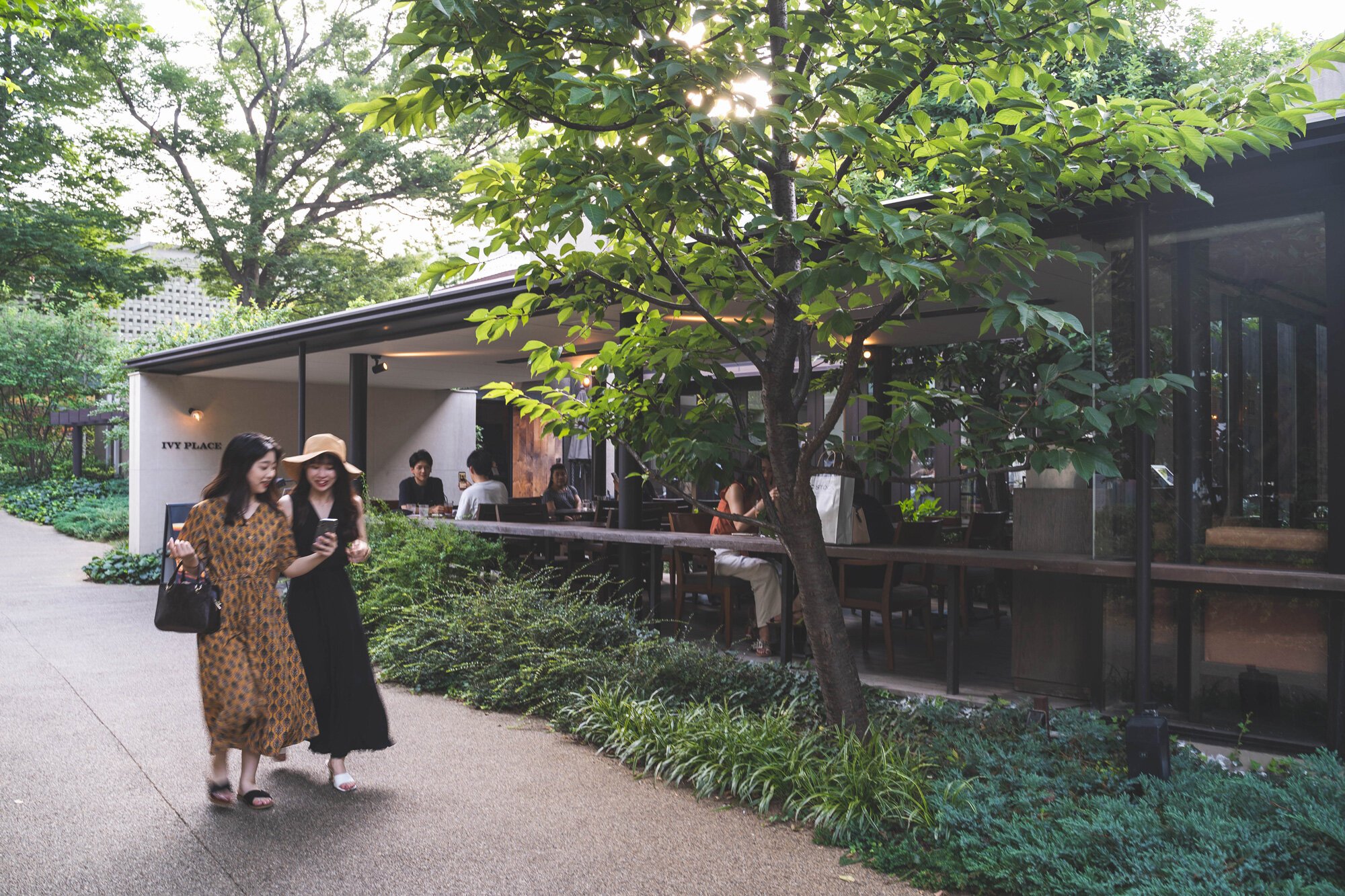
Ivy Place is one of Daikanyama’s trendy eateries, located right in the Daikanyama T-Site area.
Affiliated with other trendy spots T.Y. Harbor, Cicada, The Roastery and others, Ivy Place brings a more American cafe vibe to the area.
There are three sections - the cafe, the bar and the dining area. There’s an outdoor patio space which is great for lunches, and the dimly lit vibe inside makes for a great spot to grab some drinks with friends.
Spring Valley Brewery
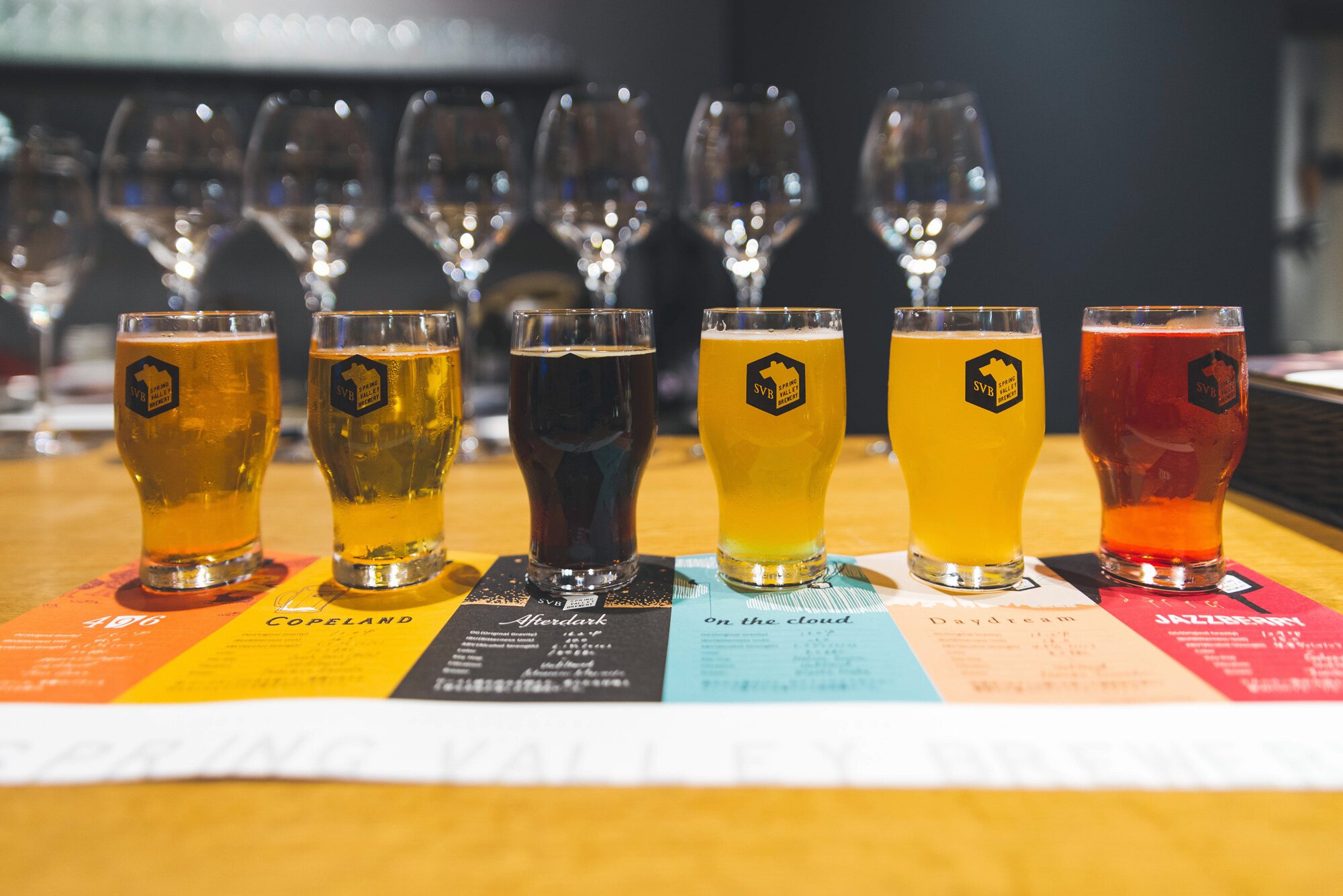
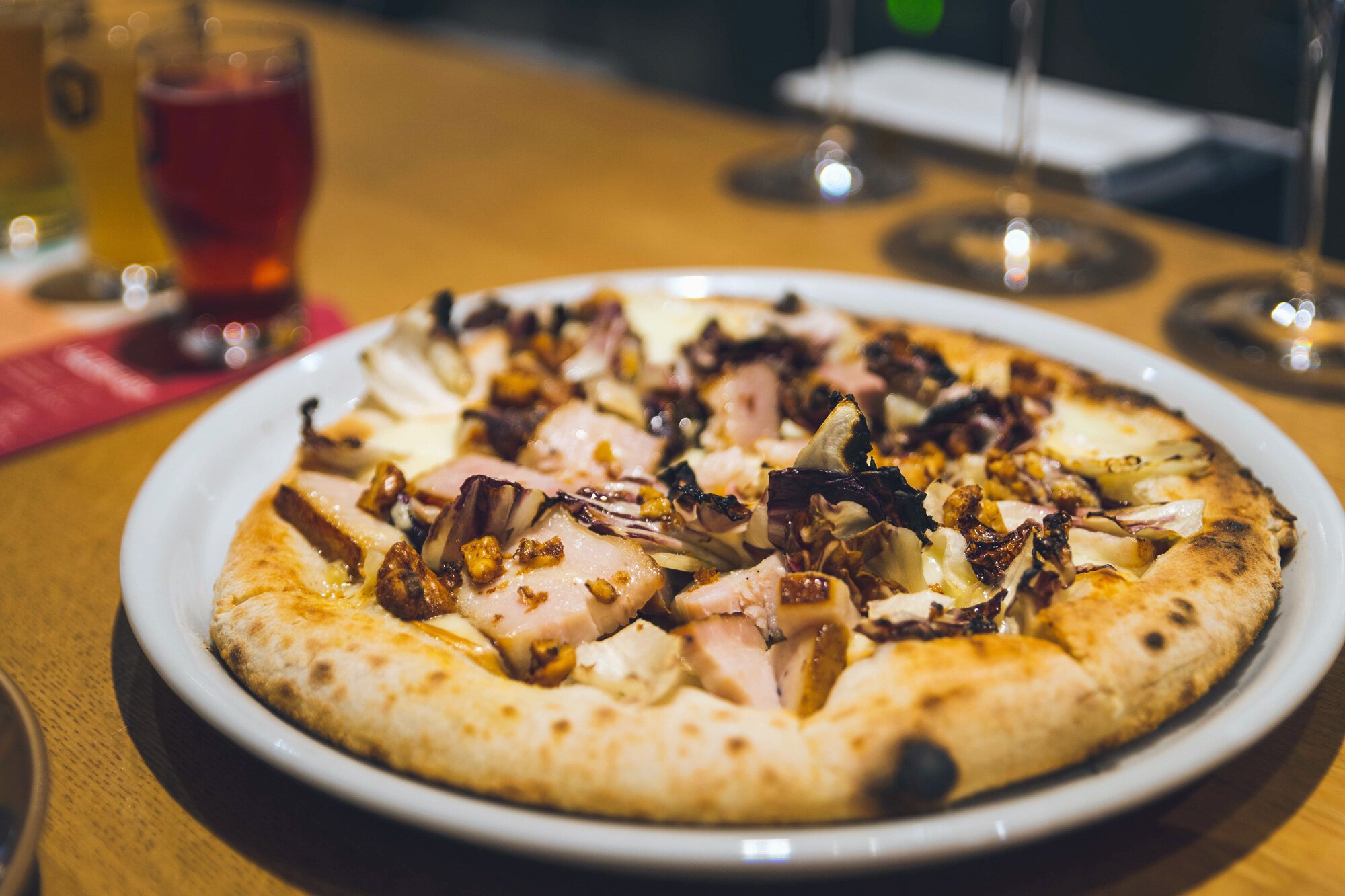
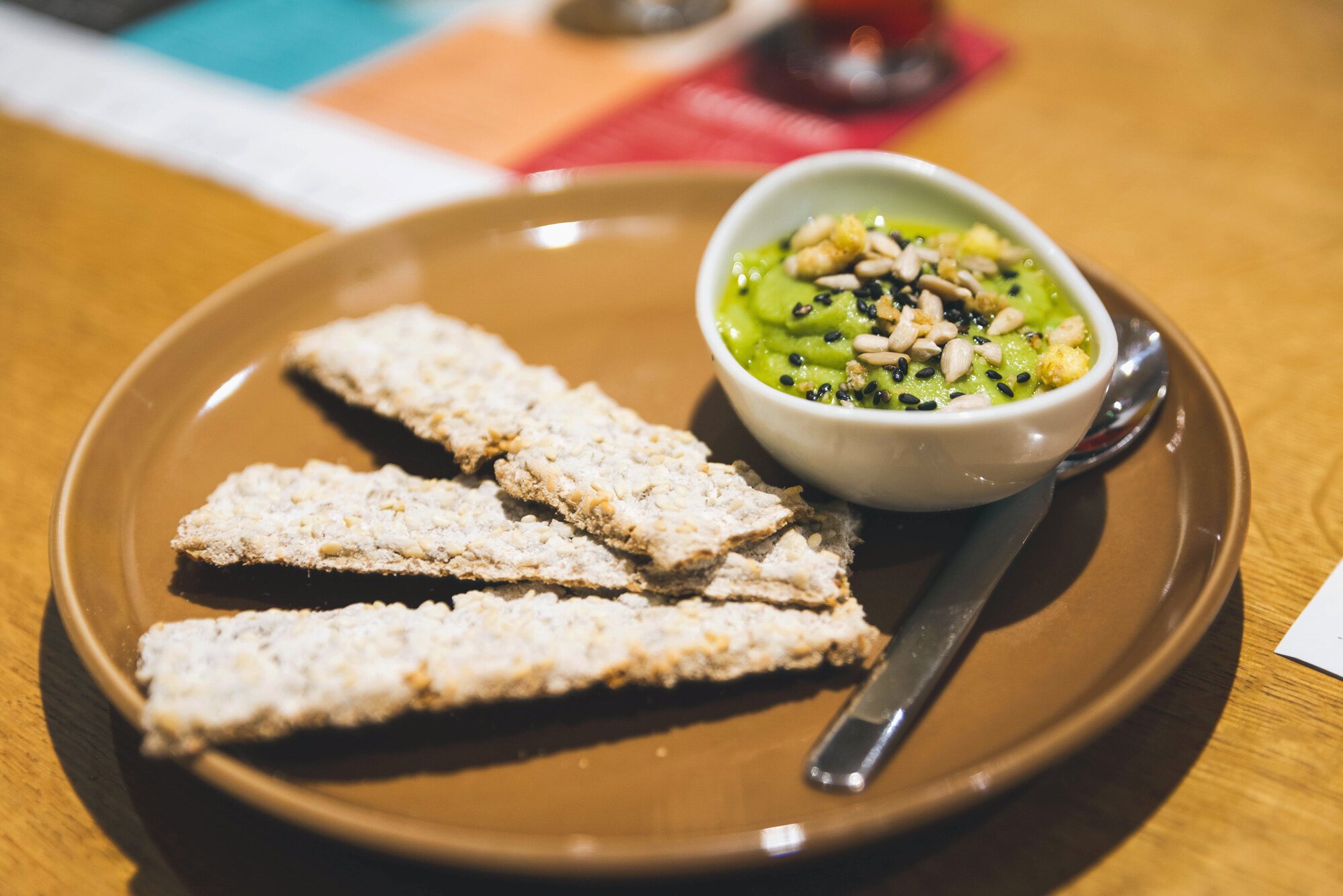
With a western brewery vibe to it, Spring Valley Brewery imagines a word where friends can gather and toast with their favorite beer, even non-beer drinkers.
This quest to broaden beer’s appeal and make its taste more accessible has led to beers such as On the Cloud (fruity, white wine scent), Daydream (hint of yuzu and sansho Japanese pepper), Jazzberry (raspberry).
It’s a great place to gather a group of friends and hang out for an evening.
Keep in touch:
More travels:
Nakameguro, Tokyo: Starbucks Reserve Roastery
A premium Starbucks experience with a unique, Japanese twist at their second largest location in the world.
The second largest Starbucks in the world as of 2020, Tokyo’s Starbucks Reserve Roastery is an impressive coffee experience and is situated in the hip, artsy neighborhood of Nakameguro.
How to get there
Starbucks Reserve Roastery Tokyo is a several minute walk from Nakameguro Station, which is accessible via the Tōyoko and Hibiya lines. It’s located along the Meguro riverside, one of the main destinations in the area.
Starbucks Reserve Roastery Tokyo was the 5th of its kind, and the opening was a huge event.
It’s been a popular destination for locals and tourists alike, so much so that it’s typical to have to go to the building next door in order to pull a number for a time slot. They use a system called AirWAIT, and you’ll be able to check how many people are in front of you in real-time.
Because tourism is almost non-existent in this 2020 summer, I seized the opportunity and checked it out.
Starbucks Reserve Roastery Tokyo was formerly the biggest Starbucks in the world, edging out Starbucks Reserve Roastery Shanghai (which I also visited) in 2019 before being dethroned later that year by Chicago’s. It is 4 stories and 32,000 sq. ft. (2,973 sq. meters) big.
Sakura cask at Starbucks Reserve Roastery Tokyo
It’s centered around a 56-foot (17 meter) high copper cask, decorated with 2,100 copper cherry blossom flowers and leaves, handcrafted by Japanese artisans.
This perfectly aligns not only with Japan, but also with the neighborhood since the Meguro river right next to it is known for its cherry blossoms. I personally consider it to be one of Tokyo’s top 5 photogenic cherry blossom spots.
The attention to detail at this location is fantastic, and something very Japanese.
The shop was designed by top Japanese architect Kuma Kengo, who has designed other Starbucks locations like the one in Dazaifu, Fukuoka, as well as the Tokyo Olympic Stadium and many other buildings.
The ceiling brings forth images of Japanese wood crafts, and was indeed inspired by origami. Much of the wood in the shop, from counters to tables to walls, are made of Japanese cyprus.
Even the staff demonstrated the Japanese “omotenashi” hospitality mixed with a friendly touch. There were no shortage of smiles (despite masks) and even when I felt my camera may be distracting, they’d give a thumbs up, invite me to take closer shots, and even offered to start brewing coffee for a better shot.
The first floor
The first floor focuses on coffee, baked goods and the gift shop.
Taking up the majority of the floor are the main coffee bar and the bean roasting facilities. The first floor’s roaster is at the base of the copper cask, flanked by the main bar which serves an enormous range of coffees.
From 5 different brew methods comes coffees like whiskey barrel-aged cold brew, and concoctions with names such as Melrose-Tokyo, Shakerato-bianco and Pepper nitro with with a Jerky-twist.
Princi, a bakery from Milano, has one of their three Tokyo locations here. From artisan sandwiches to tarts to sourdough bread, there’s likely something that will be appealing.
After trying their mango baguette and Princi loaf, I was sold! Basically they’re my new favorite bakery. We even went to their Daikanyama location the next week to buy more.
The gift shop area has everything coffee and Starbucks related, including clothing and a collaboration castella cake with famous, nearby Japanese bakery Fukusaya [J].
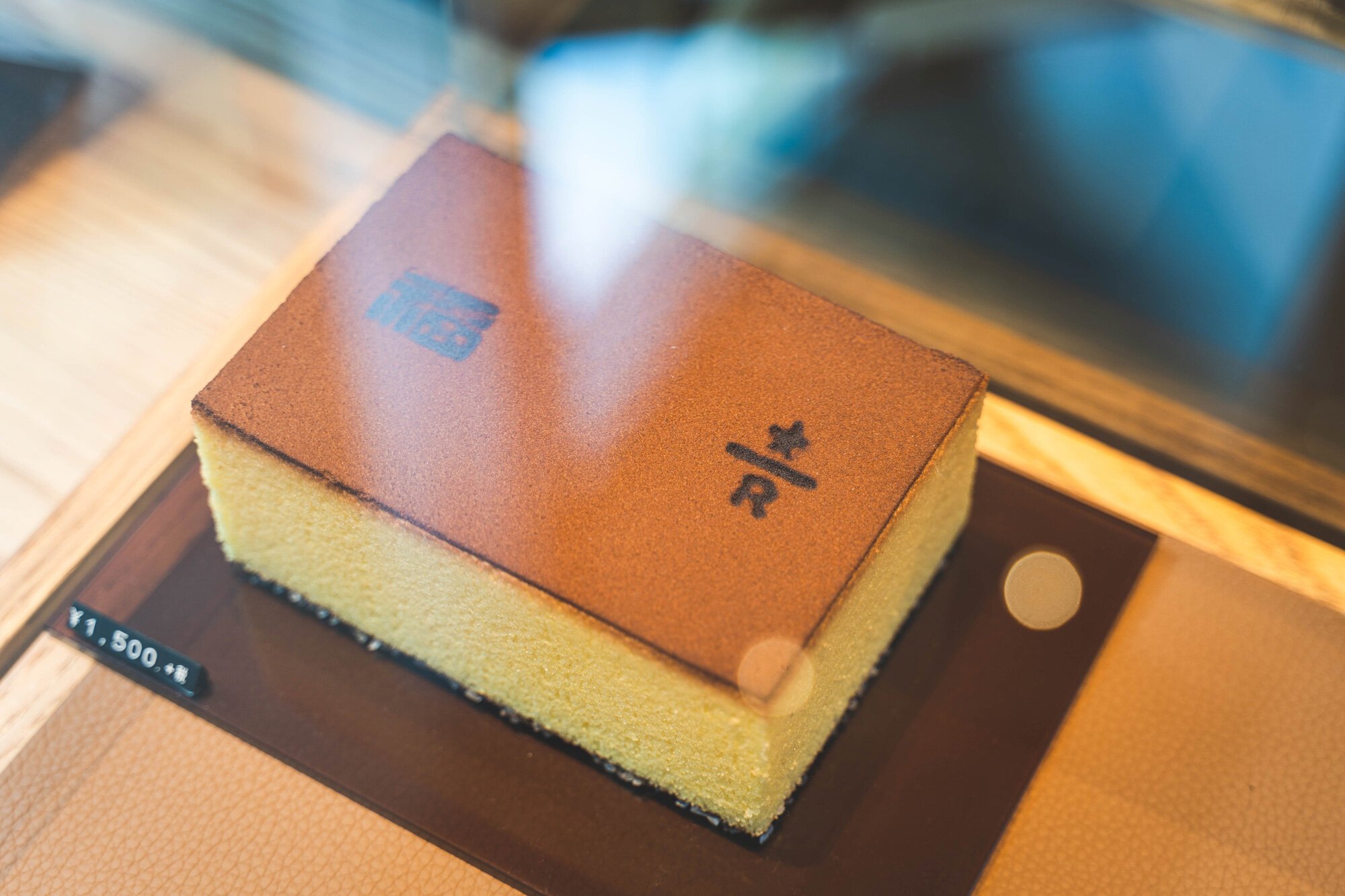
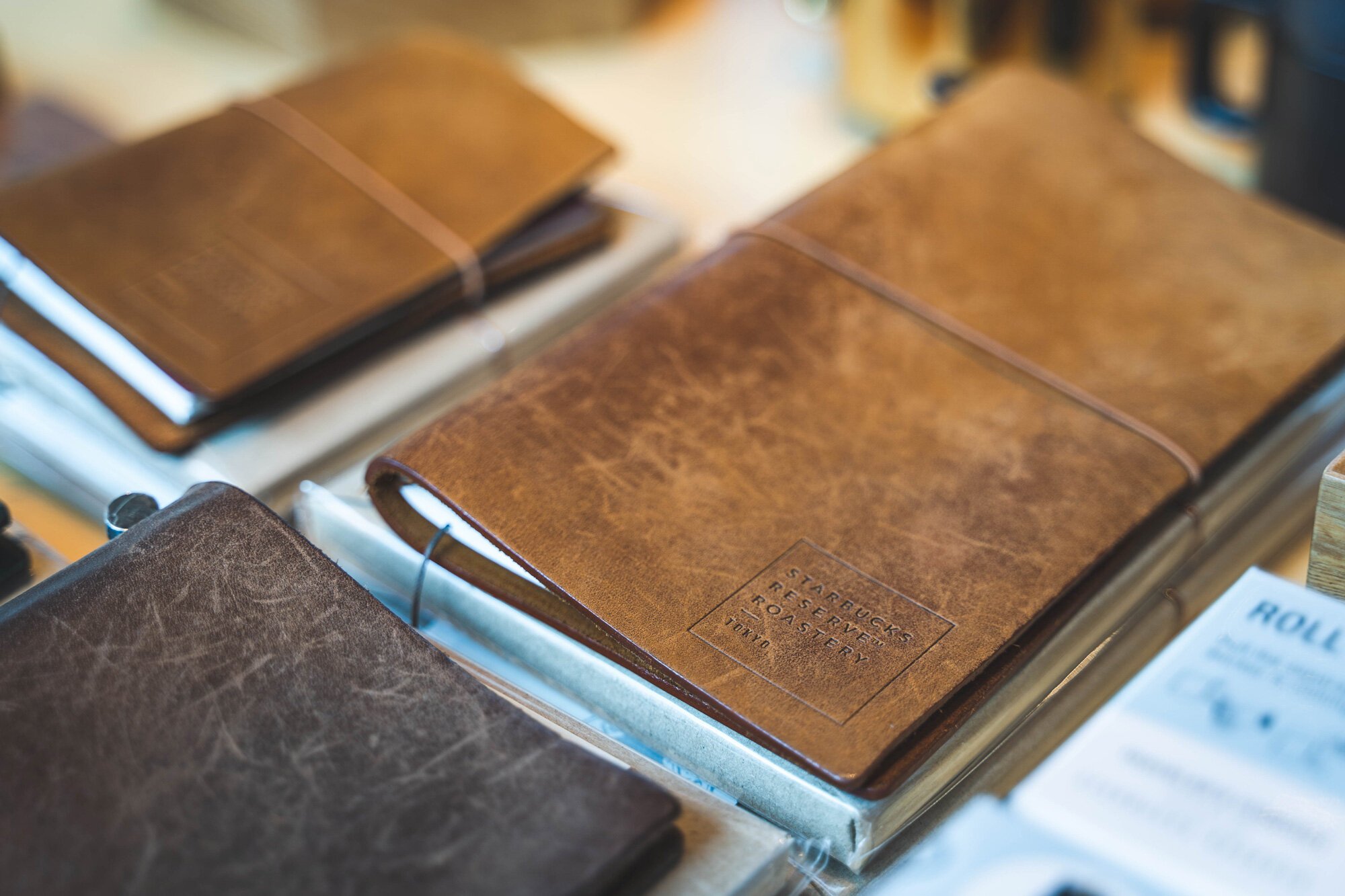
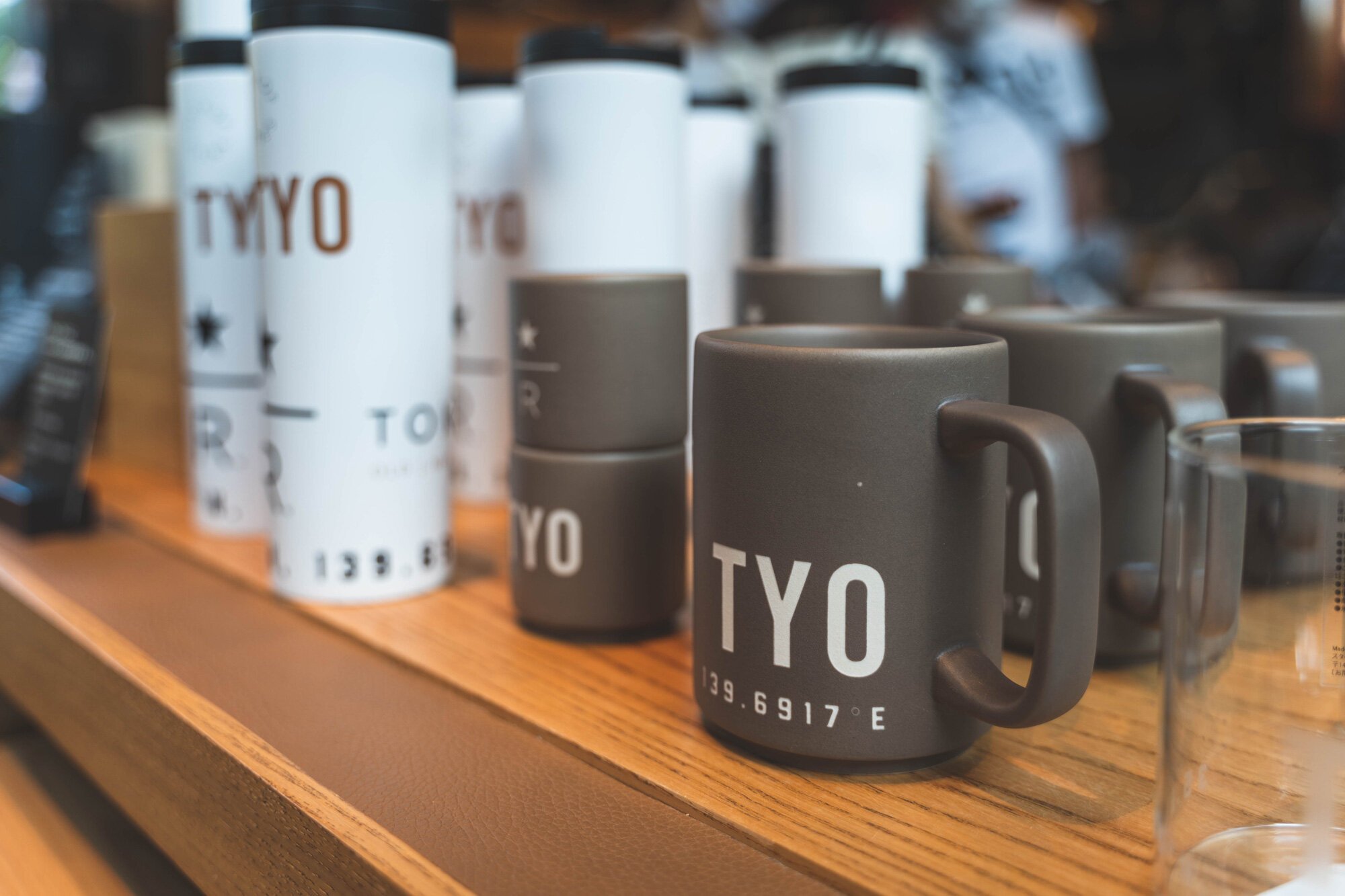
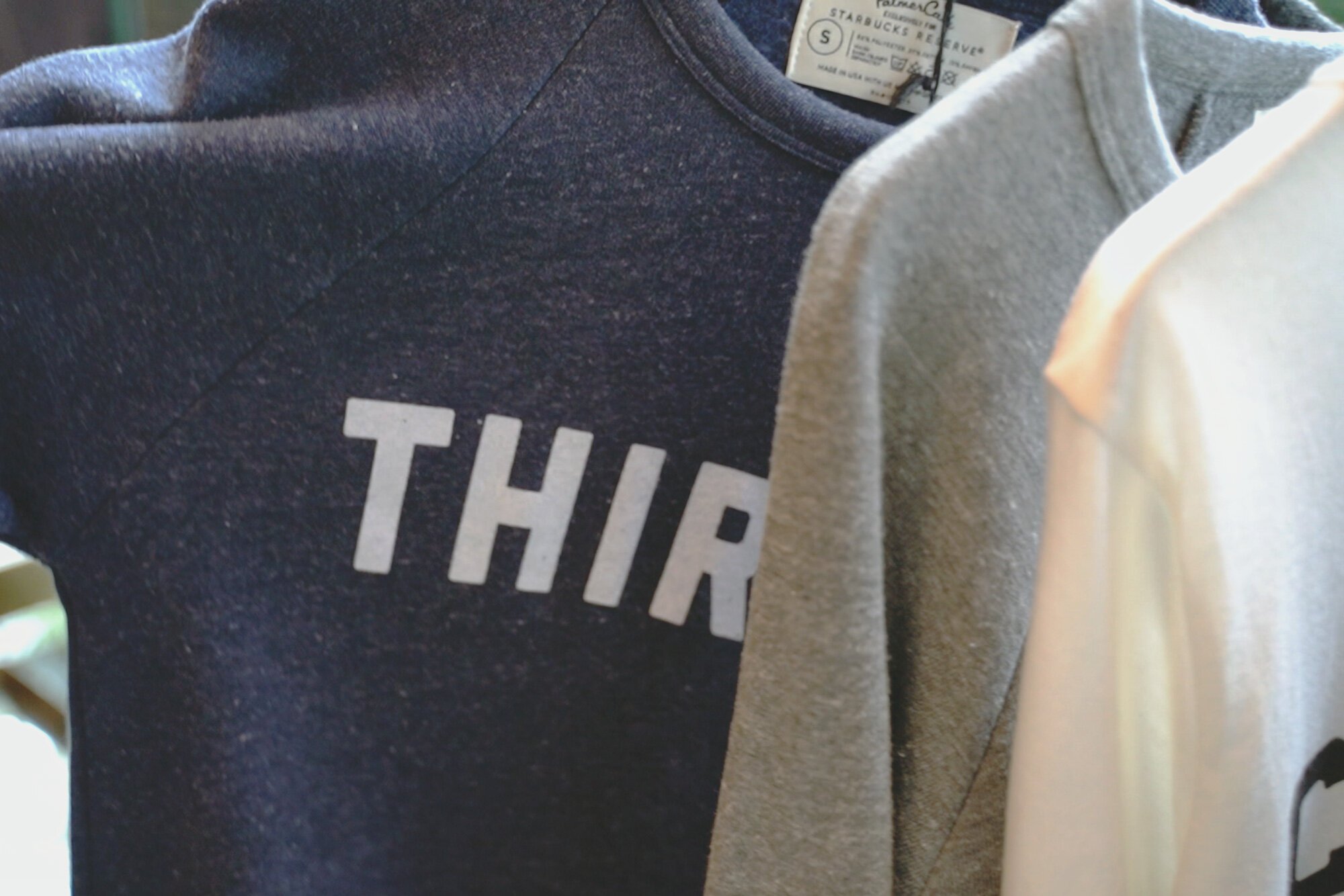
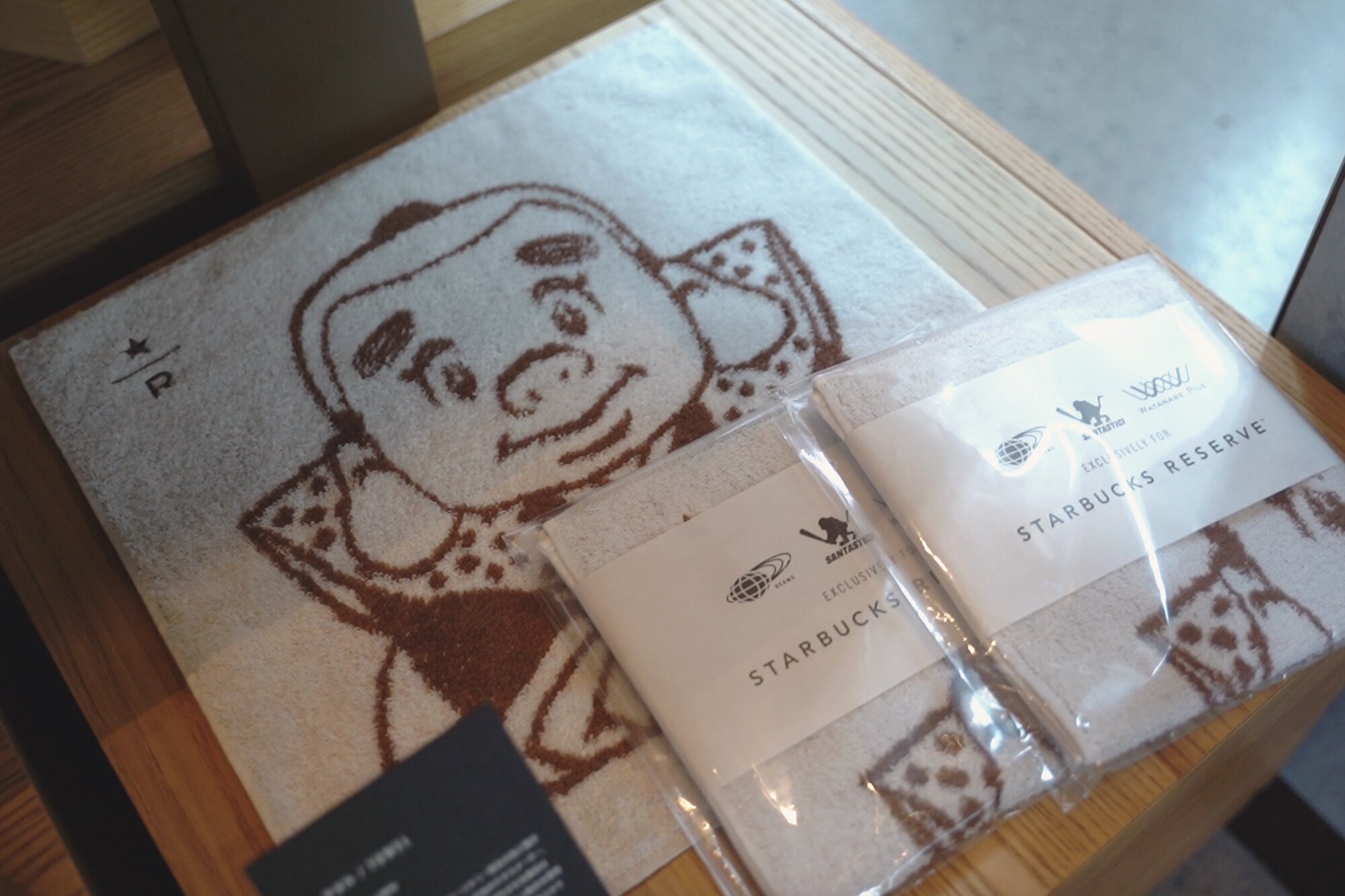
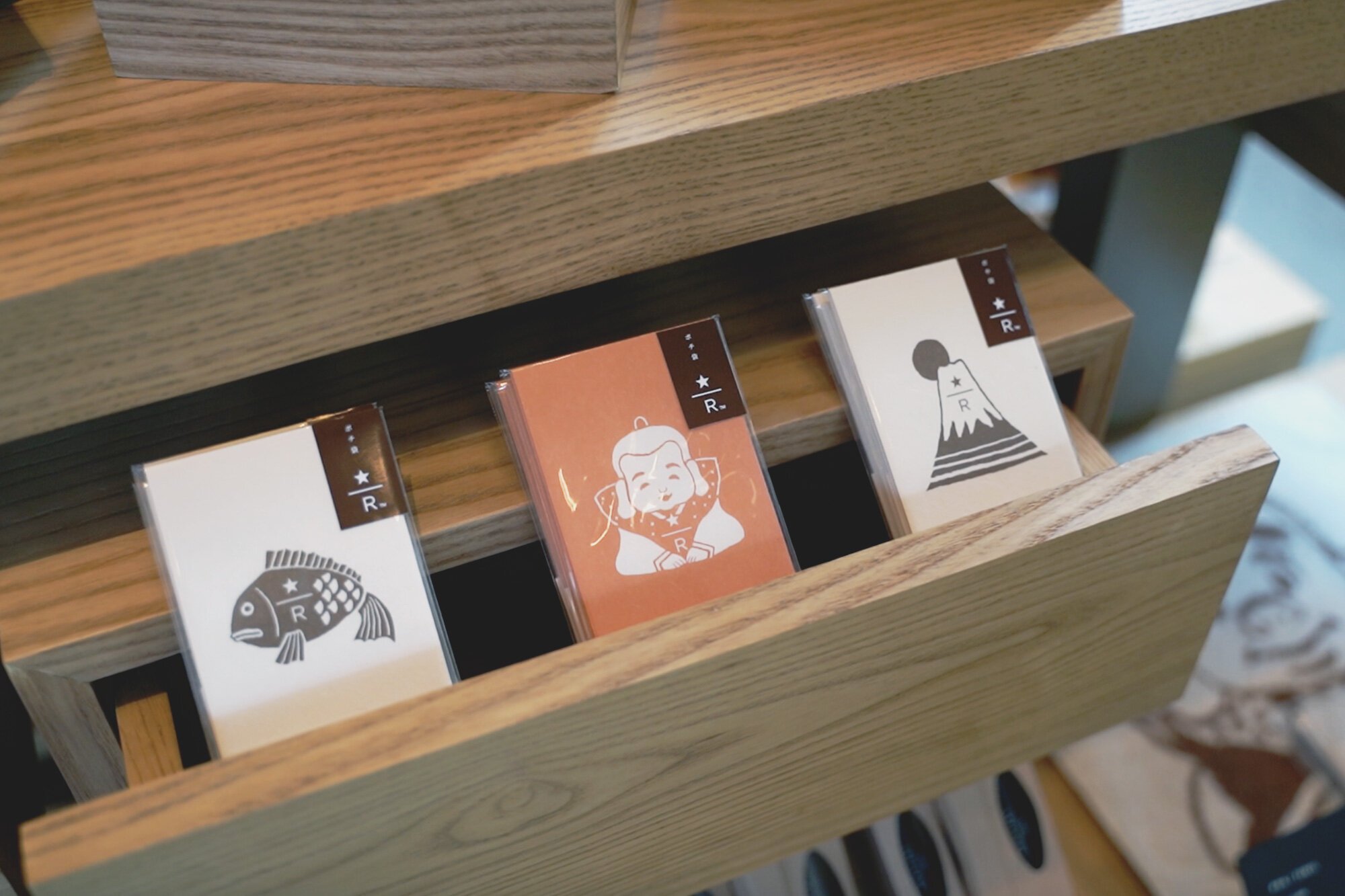
The shop was actually smaller than I expected, especially after seeing the size of Shanghai’s location and the fact that Japanese love buying souvenirs. In any case, there’s likely something you’ll at least consider purchasing.
The second floor
The stairs to the right of Princi leads up to the second floor, which is Starbucks’ tea-focused floor - TEAVANA.
There’s a main counter, a seating area, a separate tea section that brings you closer to the different types of tea, and a wall for tea items available for purchase.
The third floor
The third floor was where we decided to take a seat. It’s divided into a few sections - a second roasting facility, an outdoor seating area and the ARRIVIAMO Bar.
The bar is where coffee craft and mixology comes together, and a handful of skilled bartenders create and serve a range of coffee-inspired cocktails and mocktails.
We ordered two drinks: A Silver Needle Highball and a Starbucks Reserve Espresso Martini.
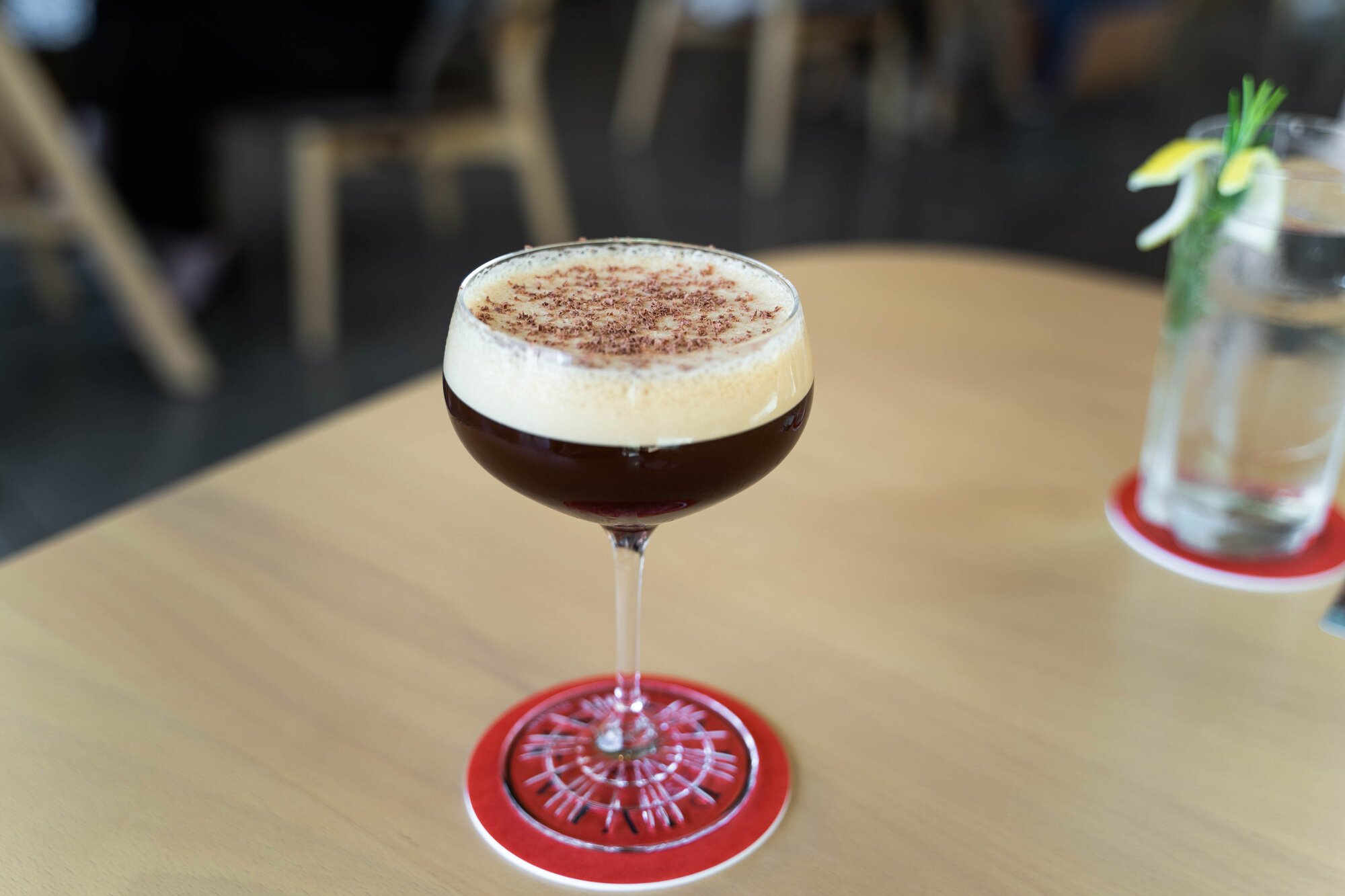
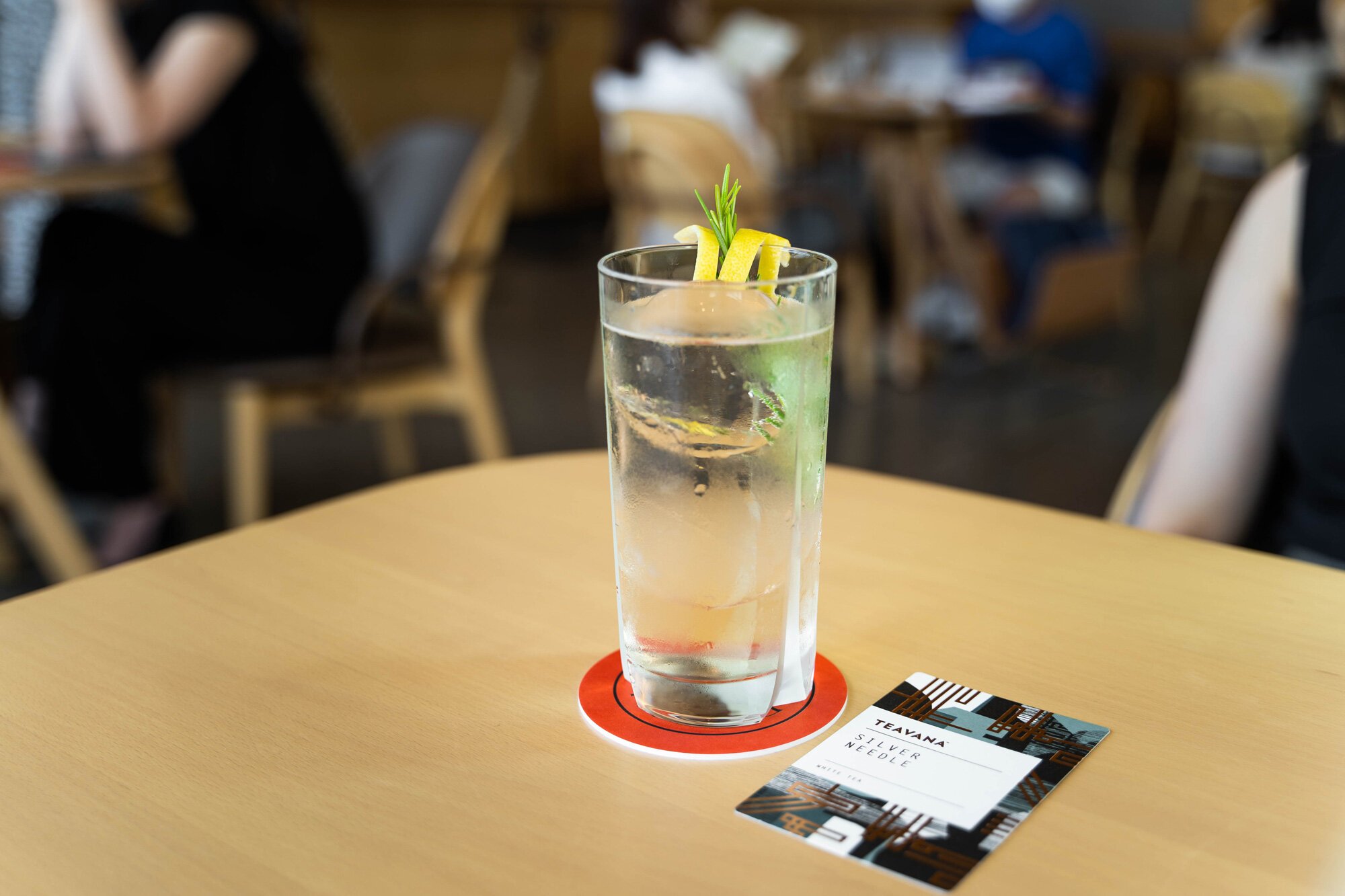
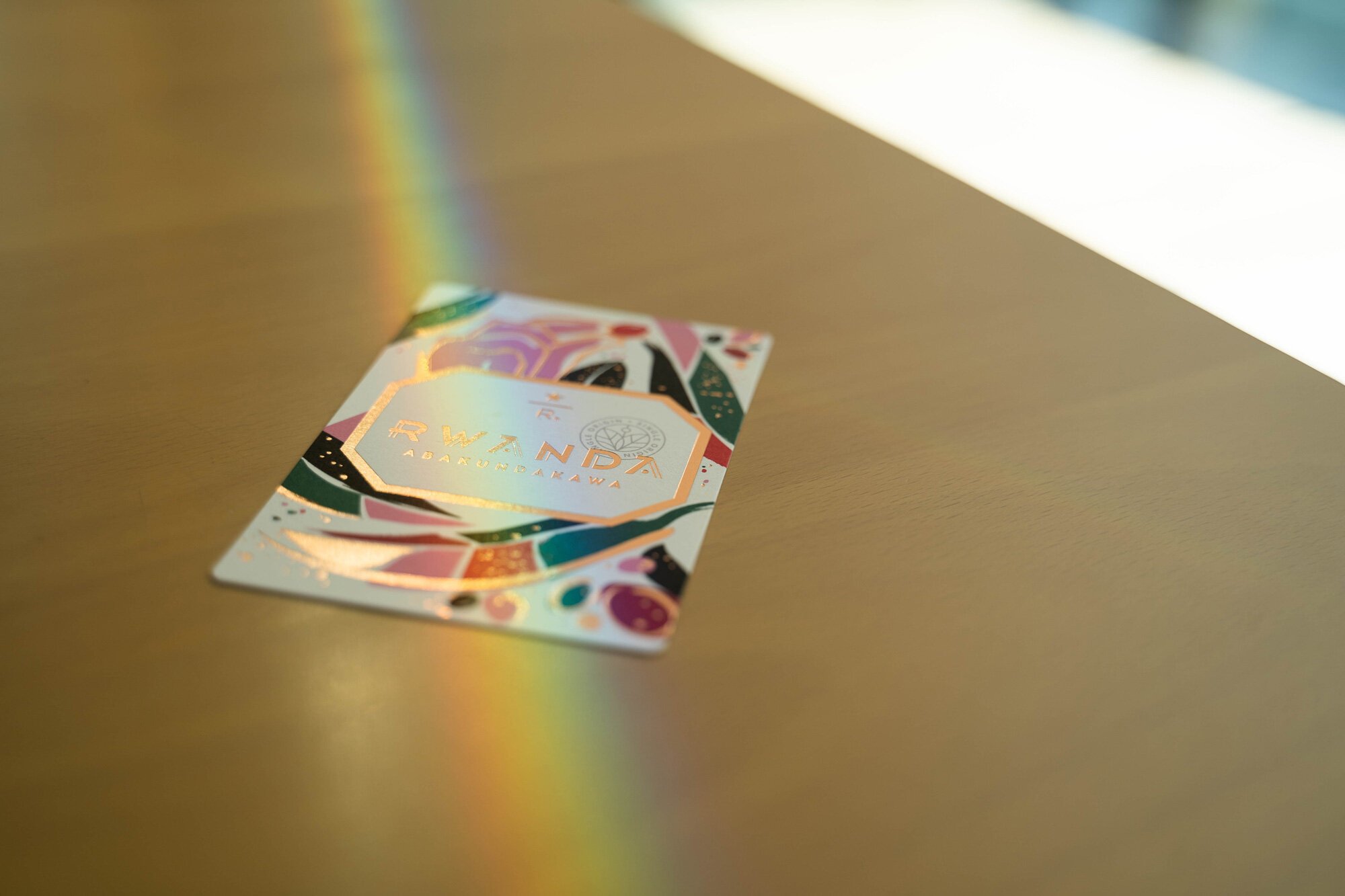
The Silver Needle Highball was made with white tea and was officially described as having a gentle scent, light floral taste and silky texture. It was very subtle and smooth, the most refined highball I’ve ever had.
The Starbucks Reserve Espresso Martini was made with single origin Rwanda Abakundajawa coffee (officially described as having a medium roast and body, with hints of tangerine zest, graham crackers, and nougat, and being smooth and sweet), single malt vodka, vanilla syrup and bean to bar chocolate. After debating the steep ¥2,000 price, I went for it and have zero regrets. It was ridiculously good.
The fourth floor
The top floor is called AMU Inspiration Lounge, and is mainly a seating area. There’s both an indoor area and outdoor deck space.
Like the third floor deck, it looks out to a view of the Meguro river, which will be beautifully covered in pinkish-white cherry blossoms during the spring.
What was cool about our visit, and it was completely coincidental, was that it was on the 24th anniversary of Starbucks’ opening their first shop in Japan.
The first shop was in Ginza, Tokyo, and the first order was a double tall latte.
Everything here was amazing and once again, I found myself really impressed by Starbucks Reserve Roastery.
It’s a culmination of a global coffee chain focusing on the craft and details, and adding their own artistic twist to it in order to create a premium experience for coffee fans.
Worth a visit.
Keep in touch:
More travels:
Nakameguro, Tokyo
Most famous for its cherry blossoms, Nakameguro is a hip, artsy neighborhood home to some great food, including "the best pizza in Tokyo,” and Starbucks Reserve Roastery Tokyo.
Nakameguro cherry blossoms illuminated at night
Nakameguro is a laid back neighborhood just a few minutes from Shibuya
It is best known for its cherry blossoms
Many hip, artsy people visit here, an area full of cafes and boutiques
The reason I first visited Nakameguro was for its famed cherry blossoms - a 2.4 mile (4km) tunnel over the Meguro River made up of about 800 trees.
This one to two week period gets really crowded, and after seeing how beautiful the flowers are at day and during the light-up festival at night, it’s easy to see why.
I’ve taken photos here a few times, and it’s in my video for top 5 photogenic cherry blossom spots in Tokyo.
Another image that comes to mind when thinking about Nakameguro is that it’s an expensive residential area. There are many cafes, boutiques and galleries that attract the artistic, fashionable and hipster from around Tokyo.
How to get there
Two train lines run through Nakameguro Station: The Tōyoko Line and the Hibiya Line. From Shibuya on the Tōyoko Line, it’s only 4 minutes. From Ebisu on the Hibiya Line, it’s only 2 minutes.
About Nakameguro
Nakameguro simply means “inside Meguro” and it is indeed located in the Meguro Ward.
The area went through a revival in the ‘90s and has become an area for artists and designers to open up studios and shops.
Meguro Ward is amongst the most expensive wards in Tokyo to live. One of the reasons, perhaps, is it’s said to be strong against earthquakes. [J]
In any case, Nakameguro is generally considered to be one of the most appealing areas in the ward, and is often compared to similarly stylish areas such as Daikanyama, Jiyūgaoka, Ebisu and Aoyama.
Two of the main areas of Nakameguro are along the Meguro River (above) and under the train tracks, also known as Nakameguro Koukashita.
Housing in Nakameguro
Nakameguro is considered a highly desirable area to live and is amongst the most expensive in Tokyo. The average price per month for a 1K studio apartment is 131,500 JPY (USD $836) while a 1LDK single bedroom apartment is 231,300 JPY (USD $1,469) on average as of June 2024. [J]
Meguro Riverside
The roads along the riverside are lined with shops that range from street fashion to bakeries to crafts and cafes.
I personally haven’t shopped or ate at many but places like Mark Matsuoka Grill [MAP], Cheese Cake Johan [MAP], and green bean to bar Chocolate [MAP] seem to be amongst the popular spots.
Also along the riverside is one of the newer Nakameguro destinations, Starbucks Reserve Roastery Tokyo. It’s one of only several of its kind in the world and the Tokyo location is 4 floors and 32,000 sq. ft. of Starbucks’ finest offerings. If you haven’t been to one, it’s worth checking out.
Nakameguro Koukashita
Under the train tracks and out to the southwest is Nakameguro Koukashita, a line of restaurants and boutiques.
It actually starts directly under the station with Tsutaya, a well known bookstore chain. Like many of their locations, their Nakameguro one is thoughtfully designed, and has spaces for browsing, talking and meeting. Also in the complex is a Starbucks and a few other cafes.
Towards the southwest are individual shops. Most are restaurants and cafes that are casual yet slightly fancy. As you get further from the station, there are more up-and-coming designer boutiques.
Exploring the areas adjacent to both of these main streets is something that I’ve found to be interesting recently.
There are numerous little artisan coffee shops and stylish eateries, but also hole-in-the-wall izakayas, vegetable stands and even fish markets like Sakana Bacca [MAP].
The cherry blossoms may have been what initially brought me to Nakameguro, but more and more, I’m feeling that there’s a whole lot more to the area that I’ve yet to experience.
For visitors, it’s a good place to dive into the stylish world of local Tokyo craft.
What we ate
Seirinkan
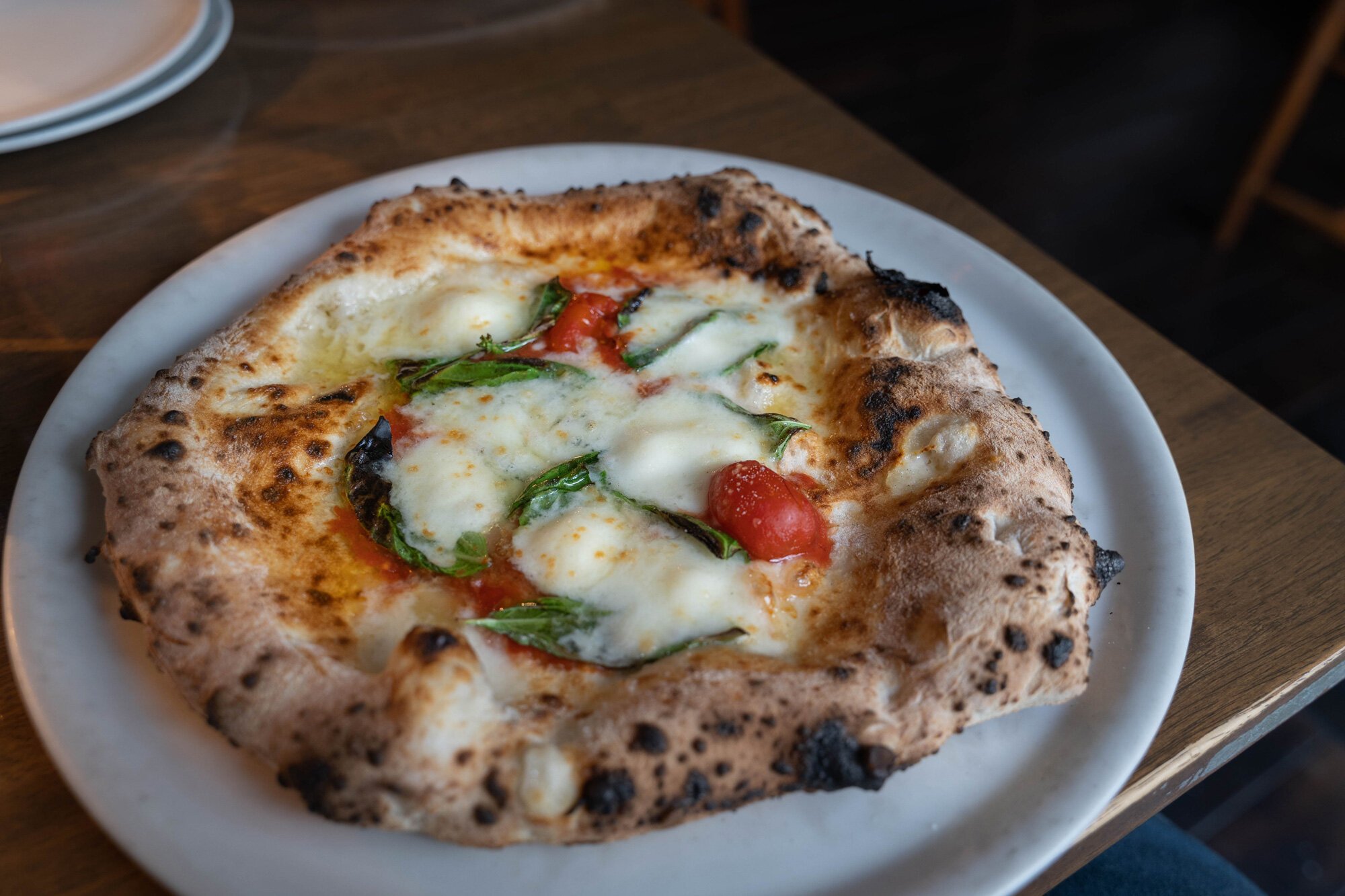
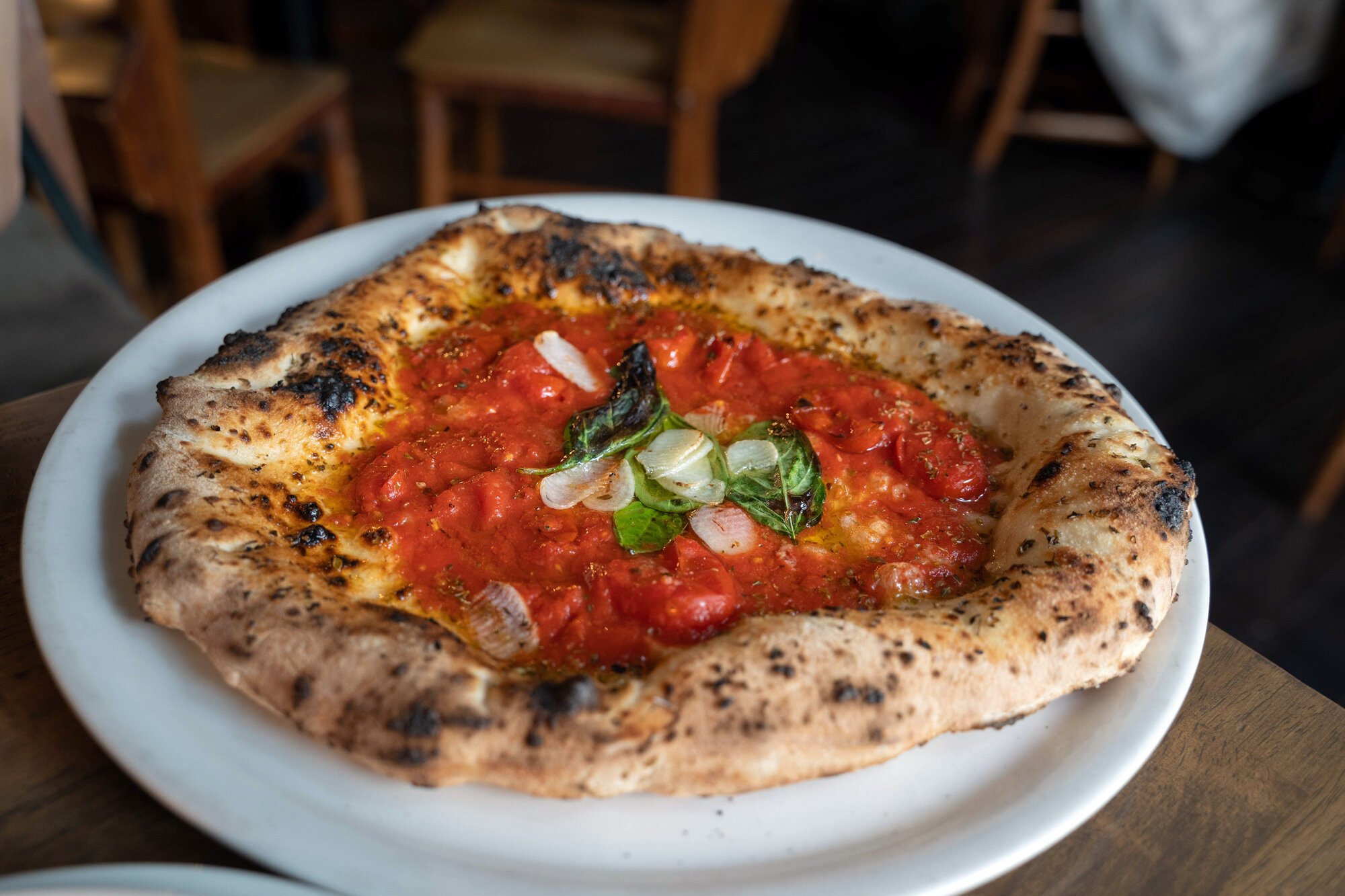
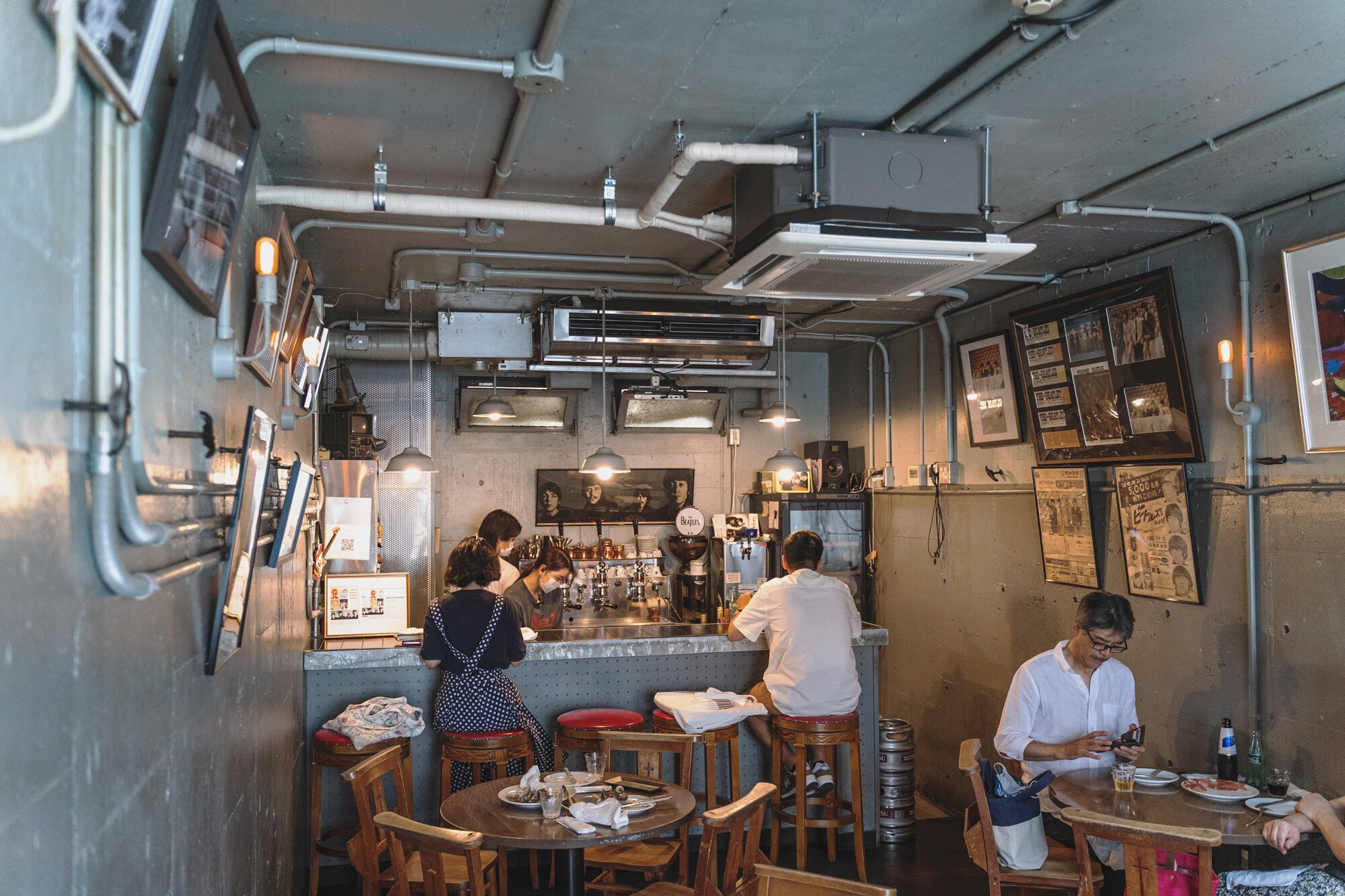
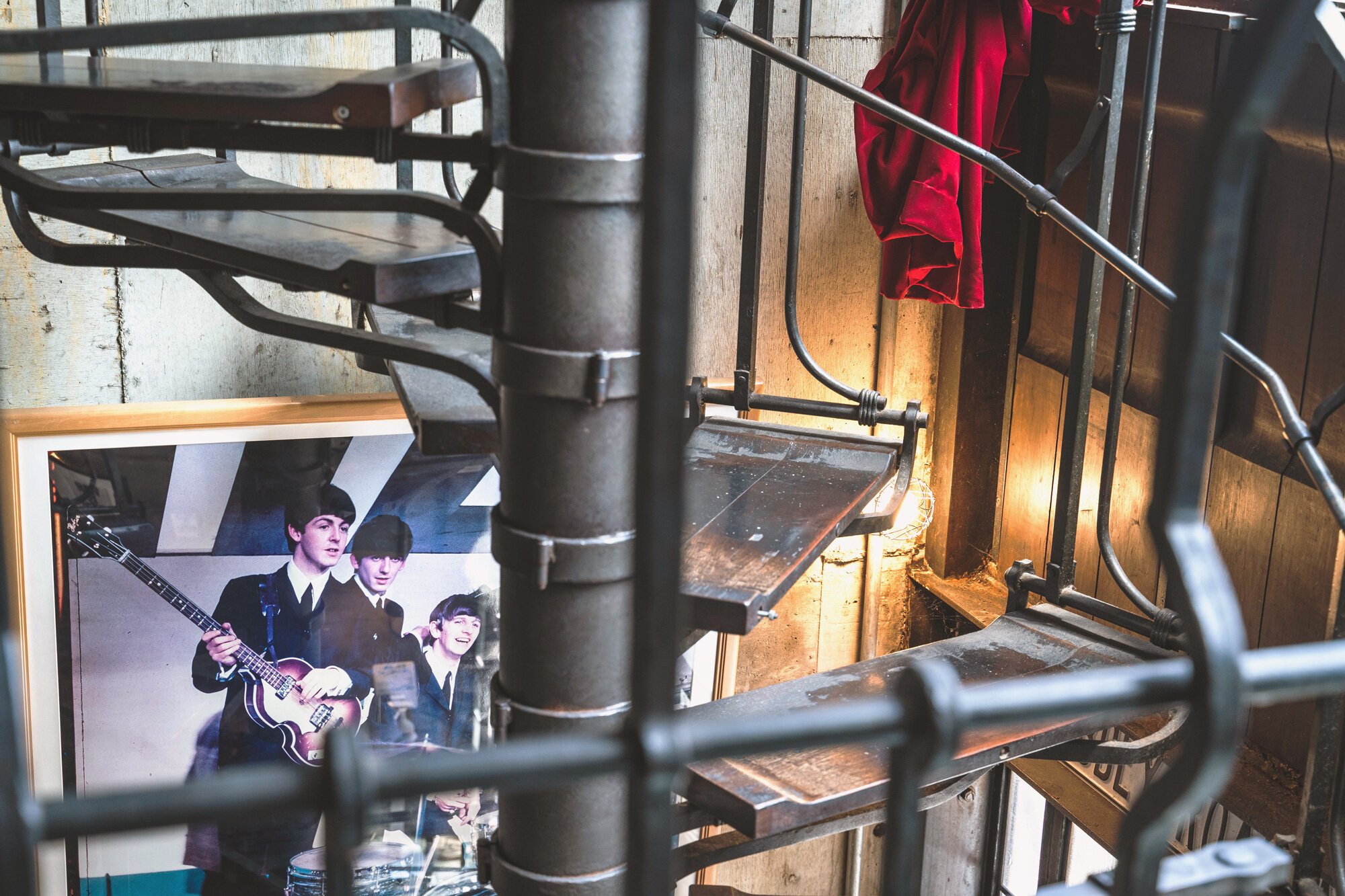

Seirinkan is often considered the best pizza in Tokyo, and that statement may be correct.
It’s been featured in places like CNN and enjoyed by many including David Chang, who went on to say “the best pizza in the world is in Tokyo” on his Netflix show “Ugly Delicious.”
The shop itself is in a modified factory-like building and its decor makes it somewhat of a Beatles shrine. You have to go up a pretty scary spiral staircase, but don’t let it deter you from getting a seat.
Unlike a lot of other top pizza chefs, Seirinkan’s never actually trained in Naples and he utilizes Japanese ingredients, prioritizing freshness over origin.
Now I’m generally not a crust fan, but wow, this one (and pizza as a whole) was amazing. I understand the hype.
Udatsu Sushi
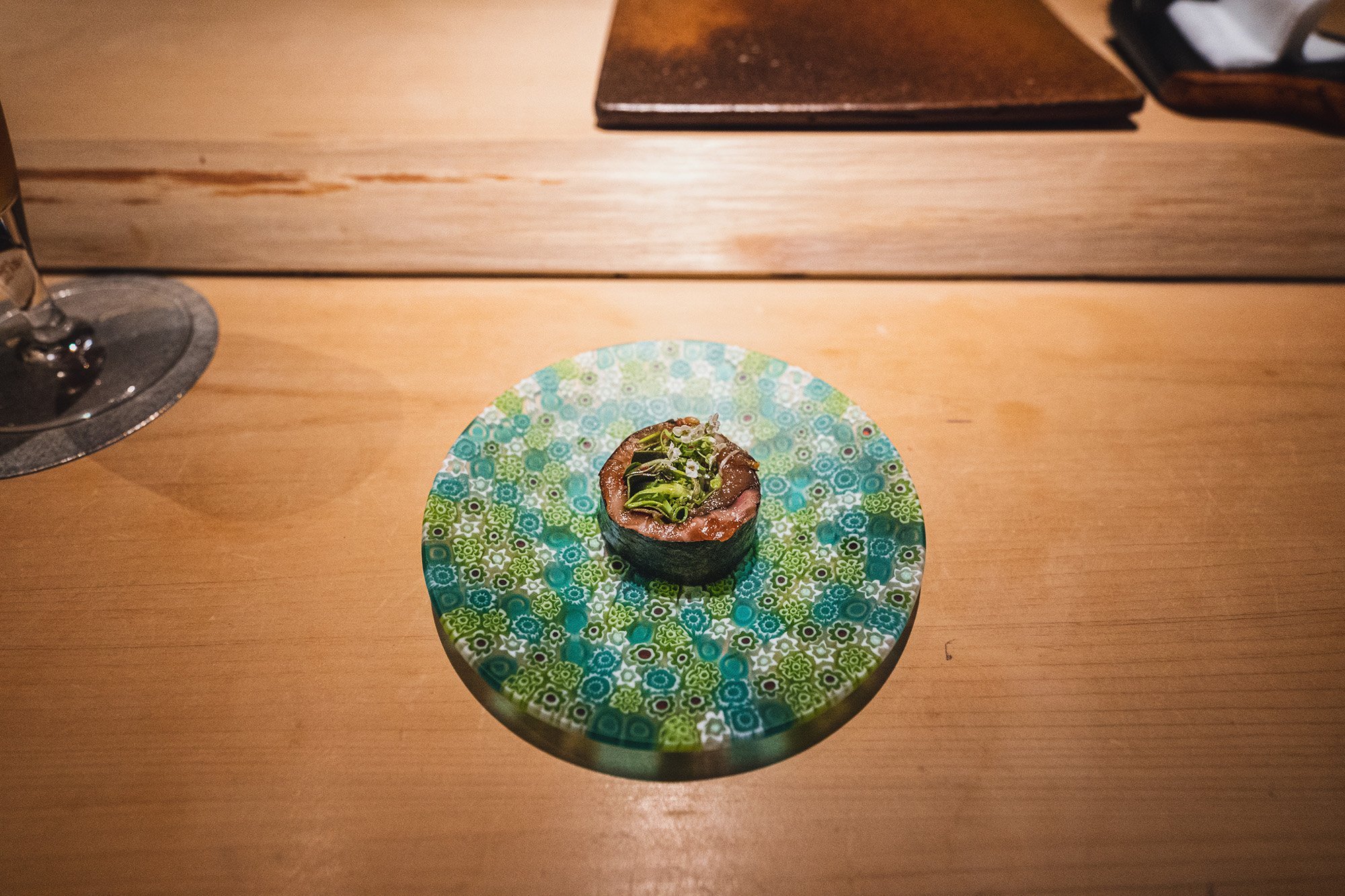

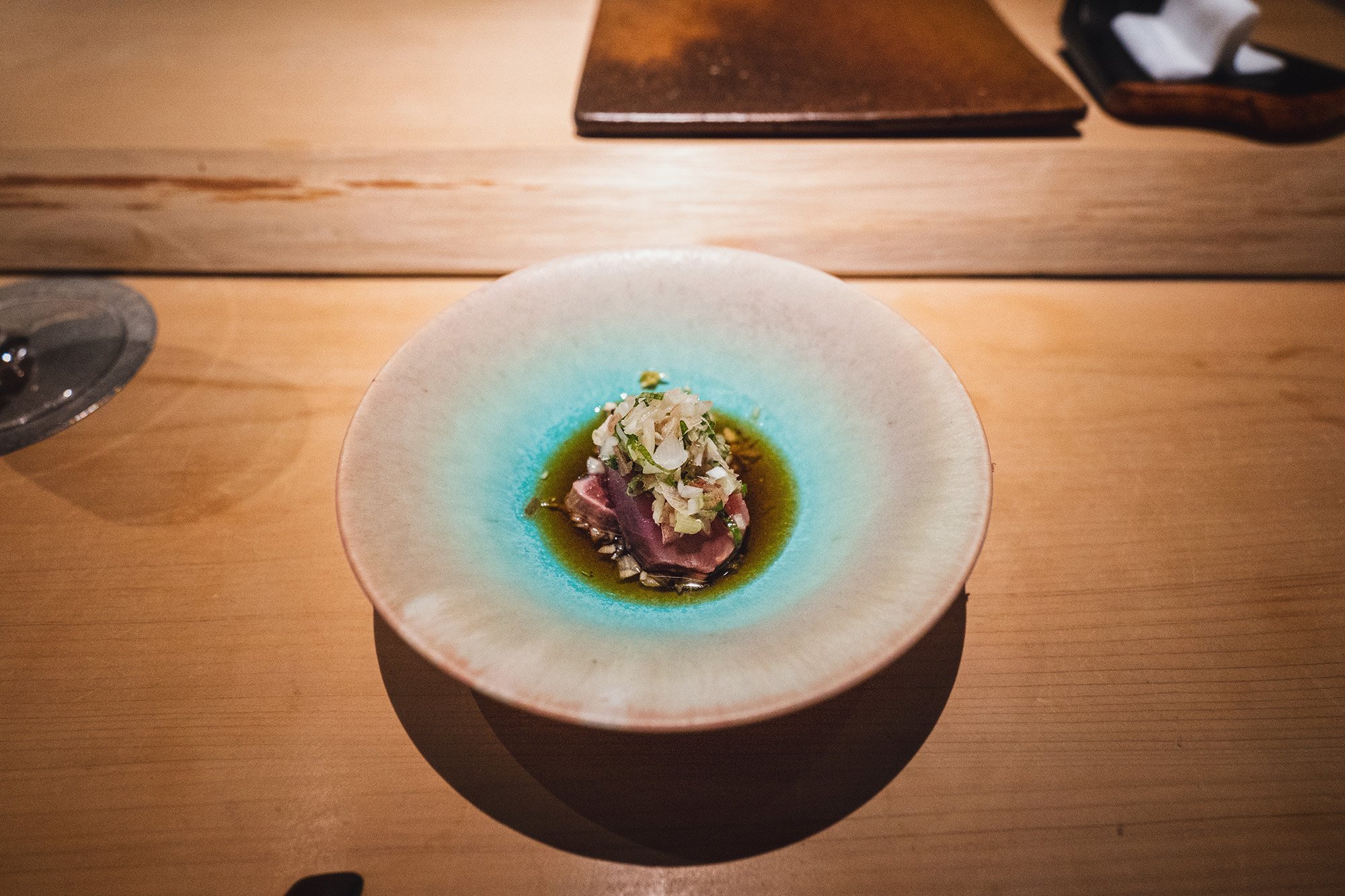
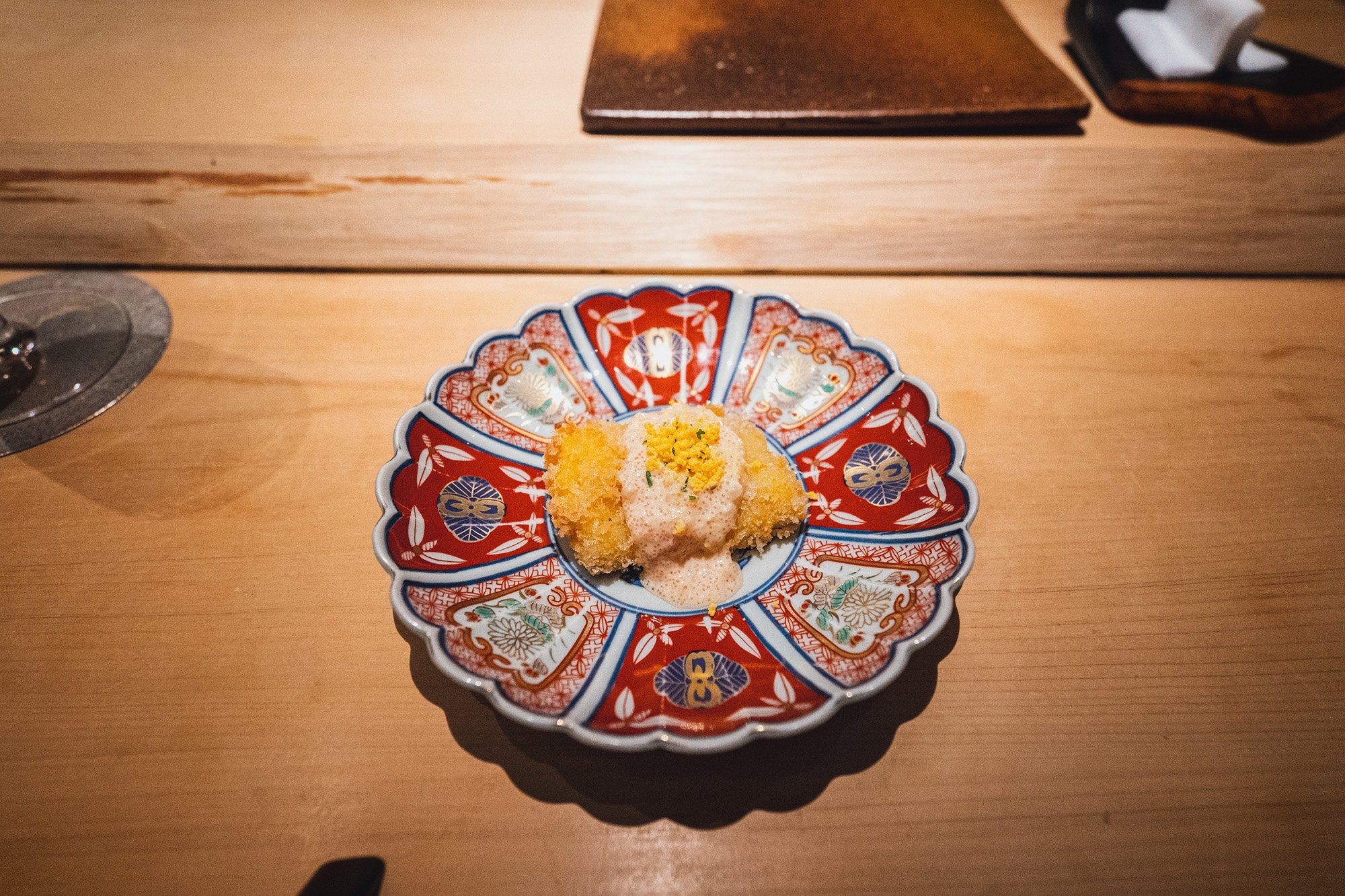
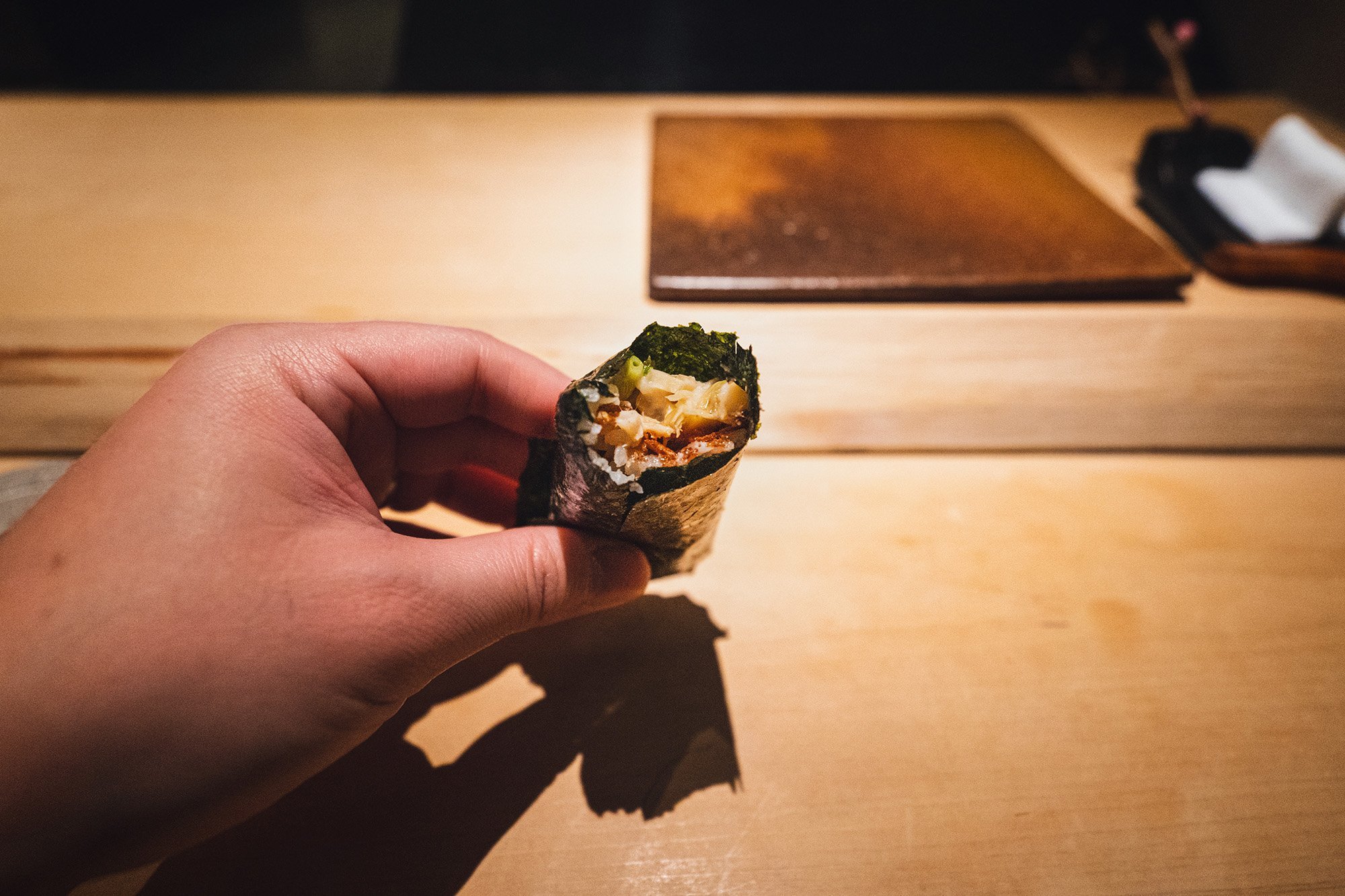
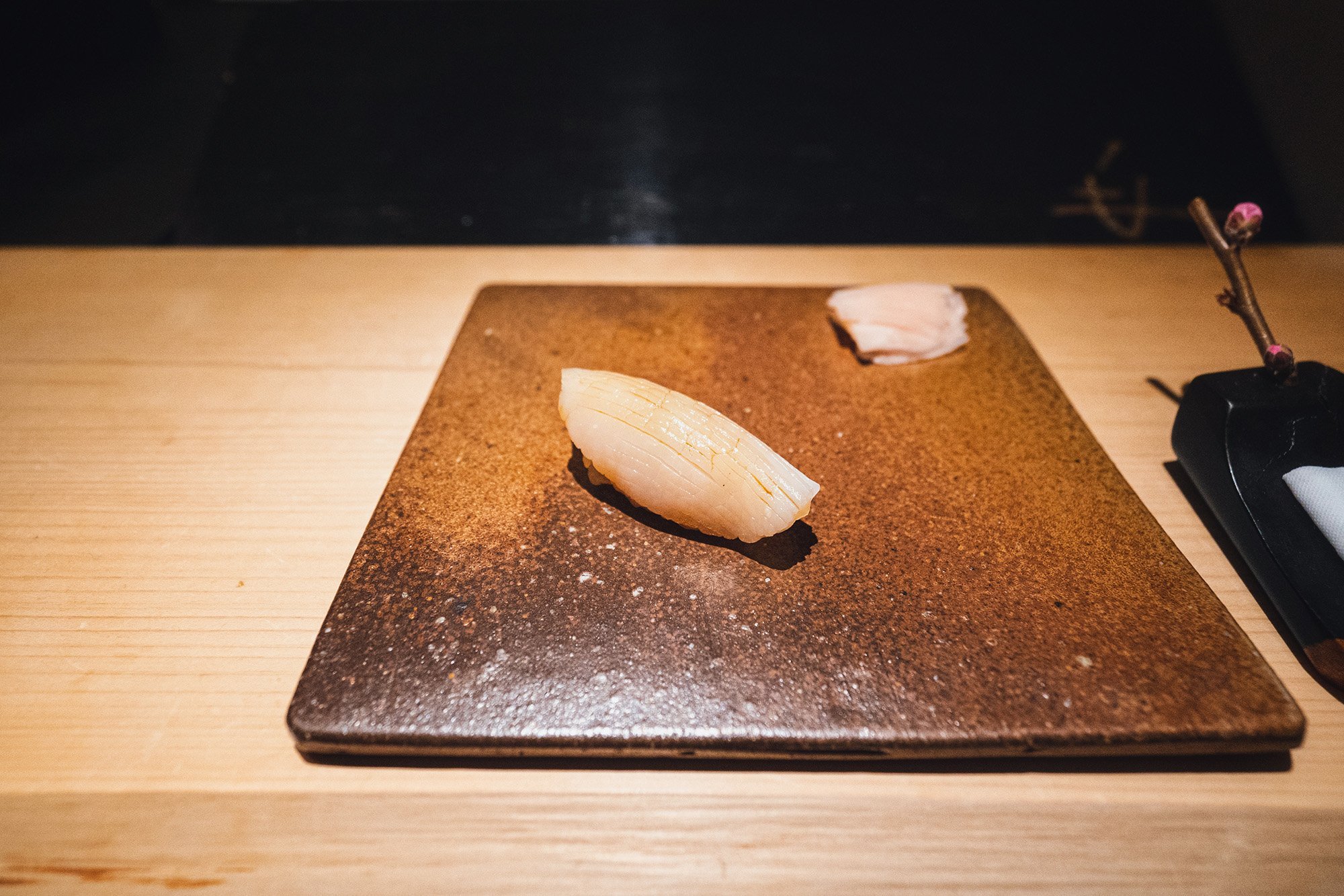
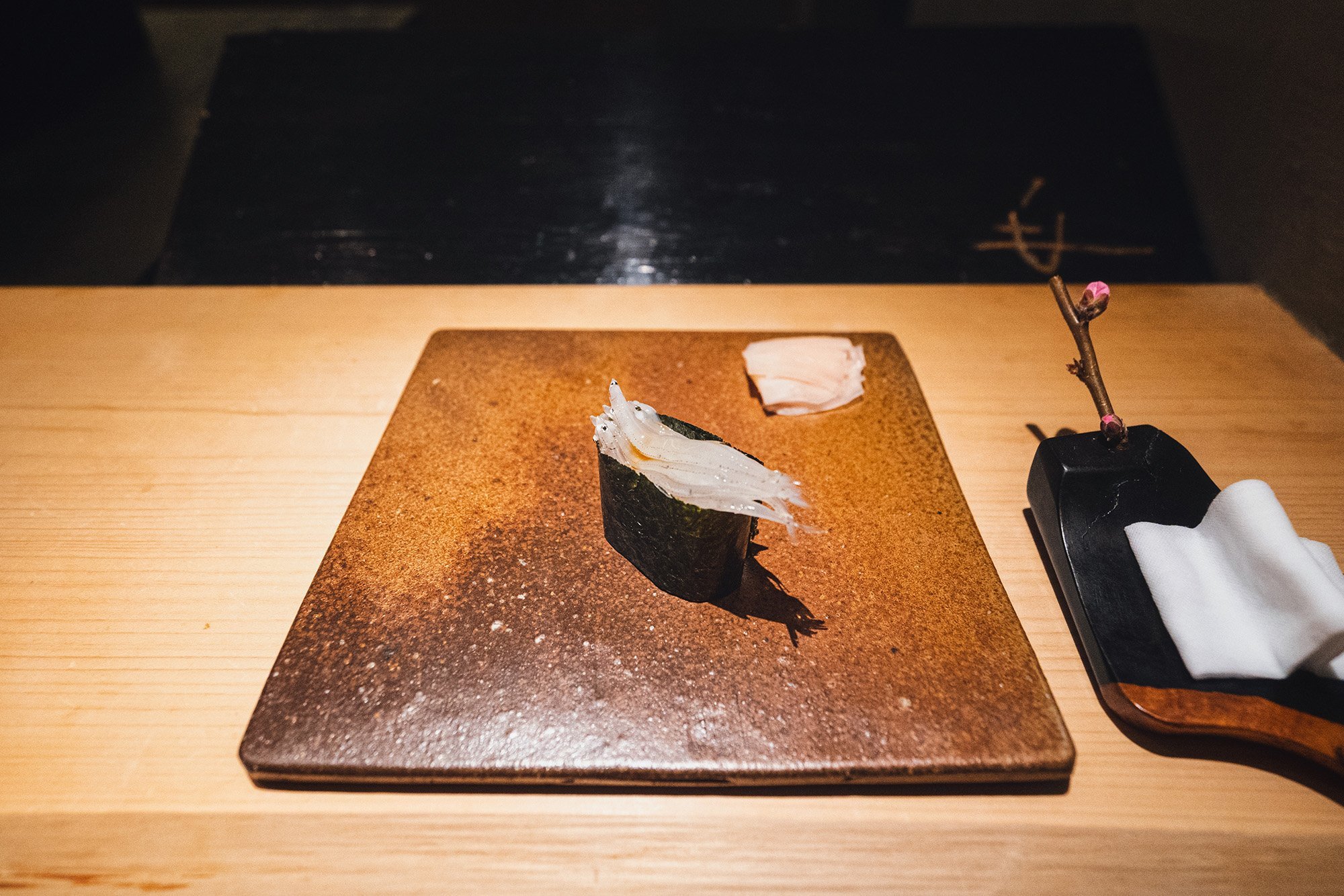
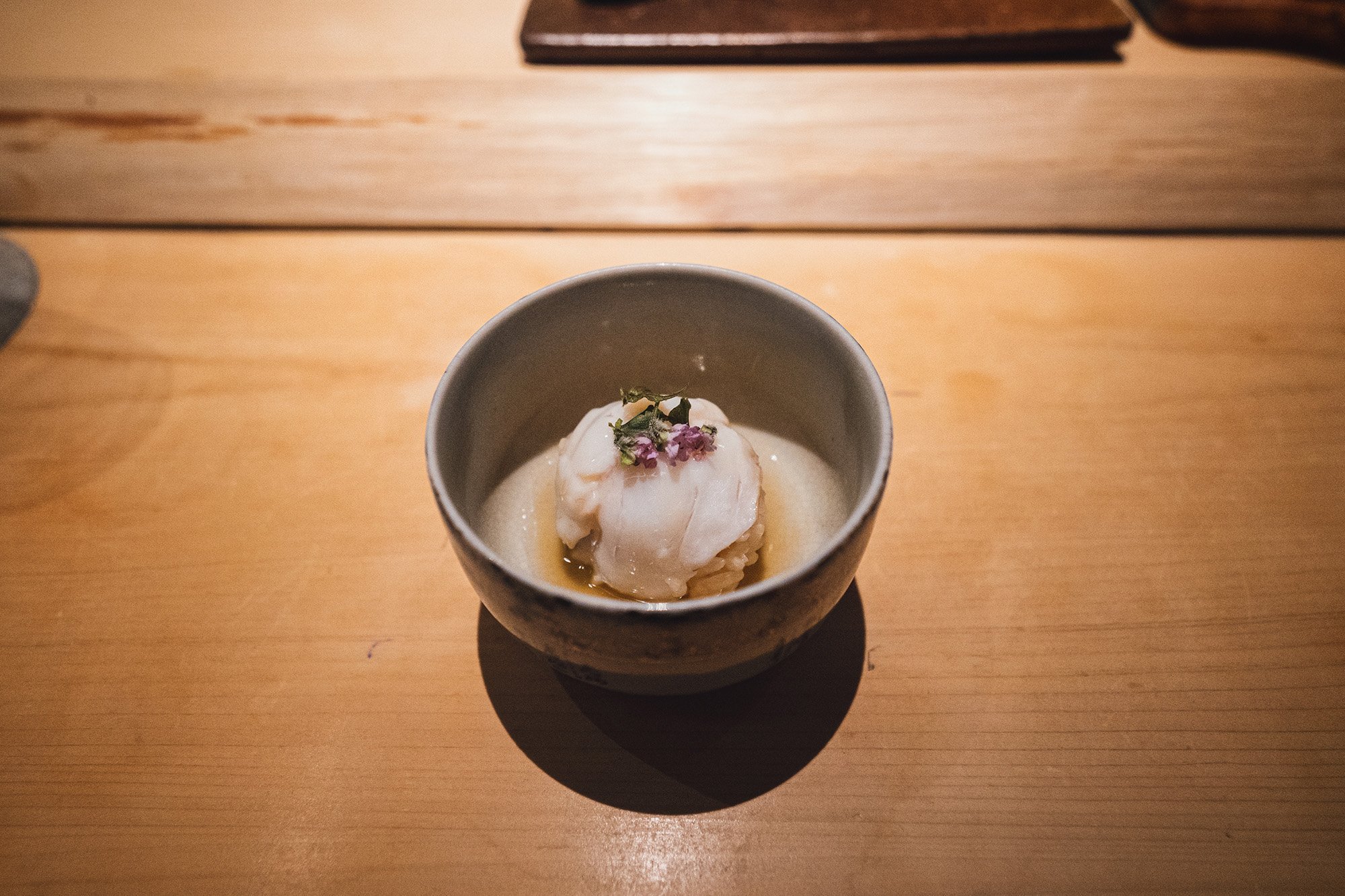
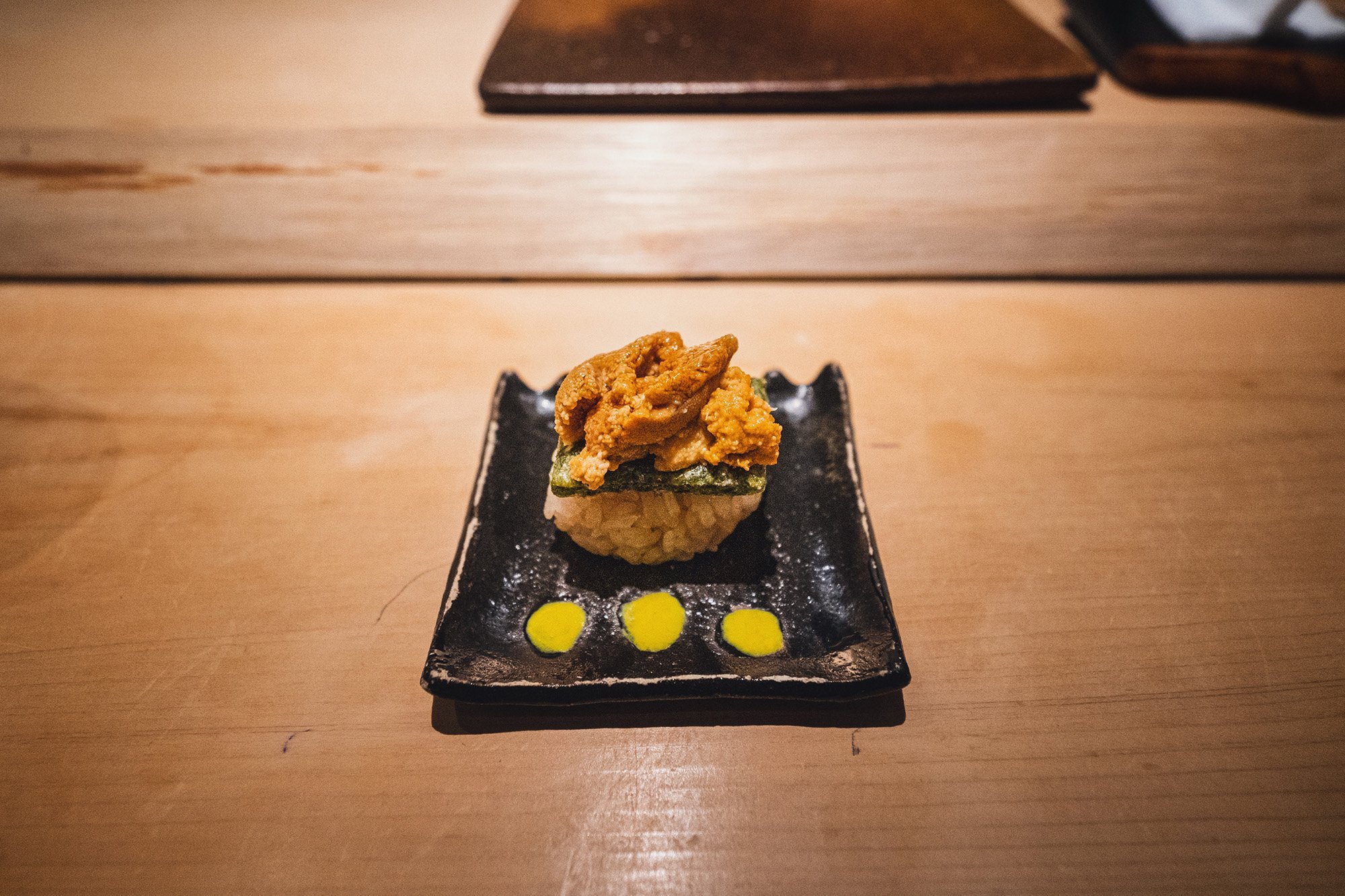
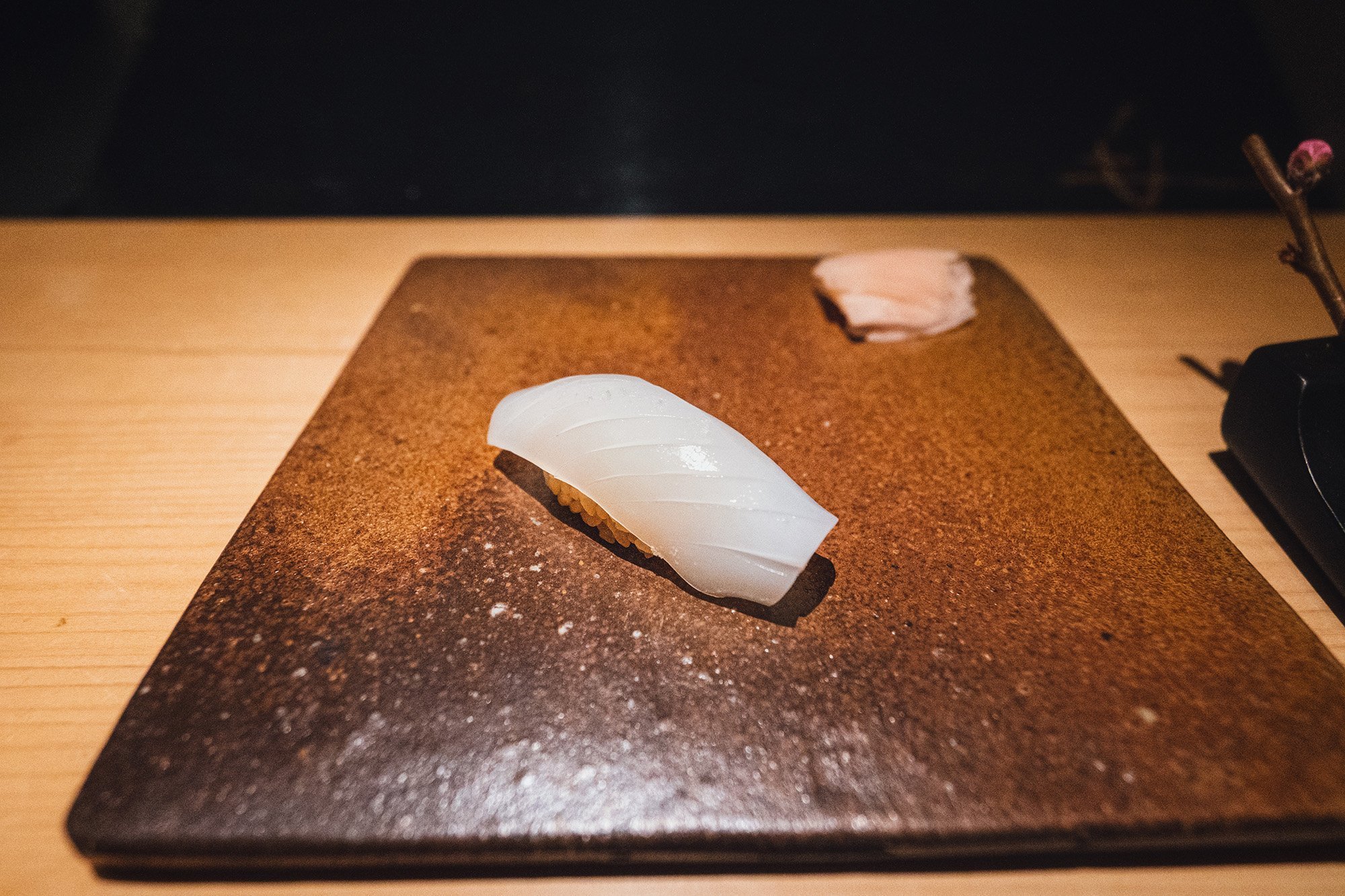
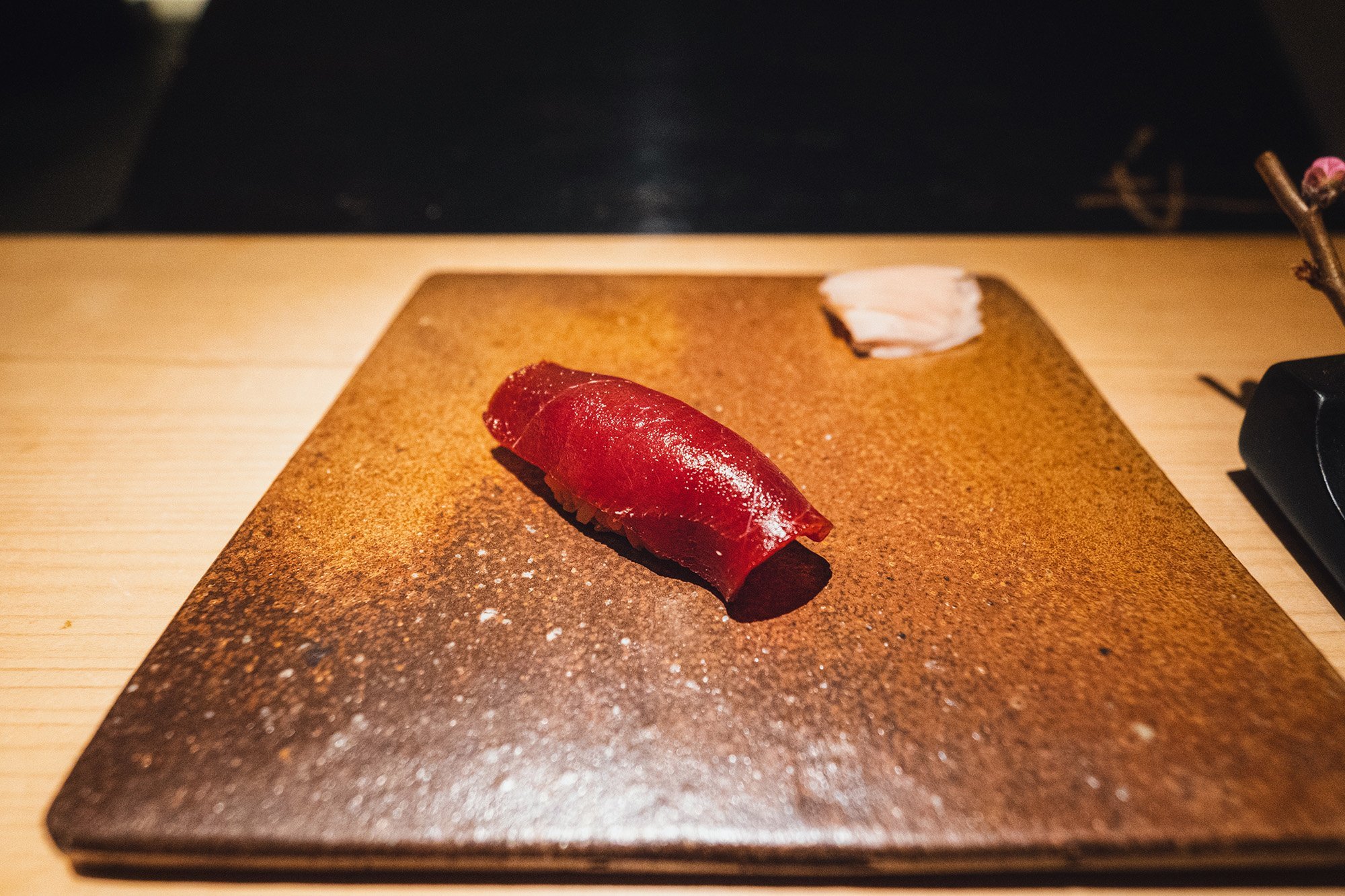
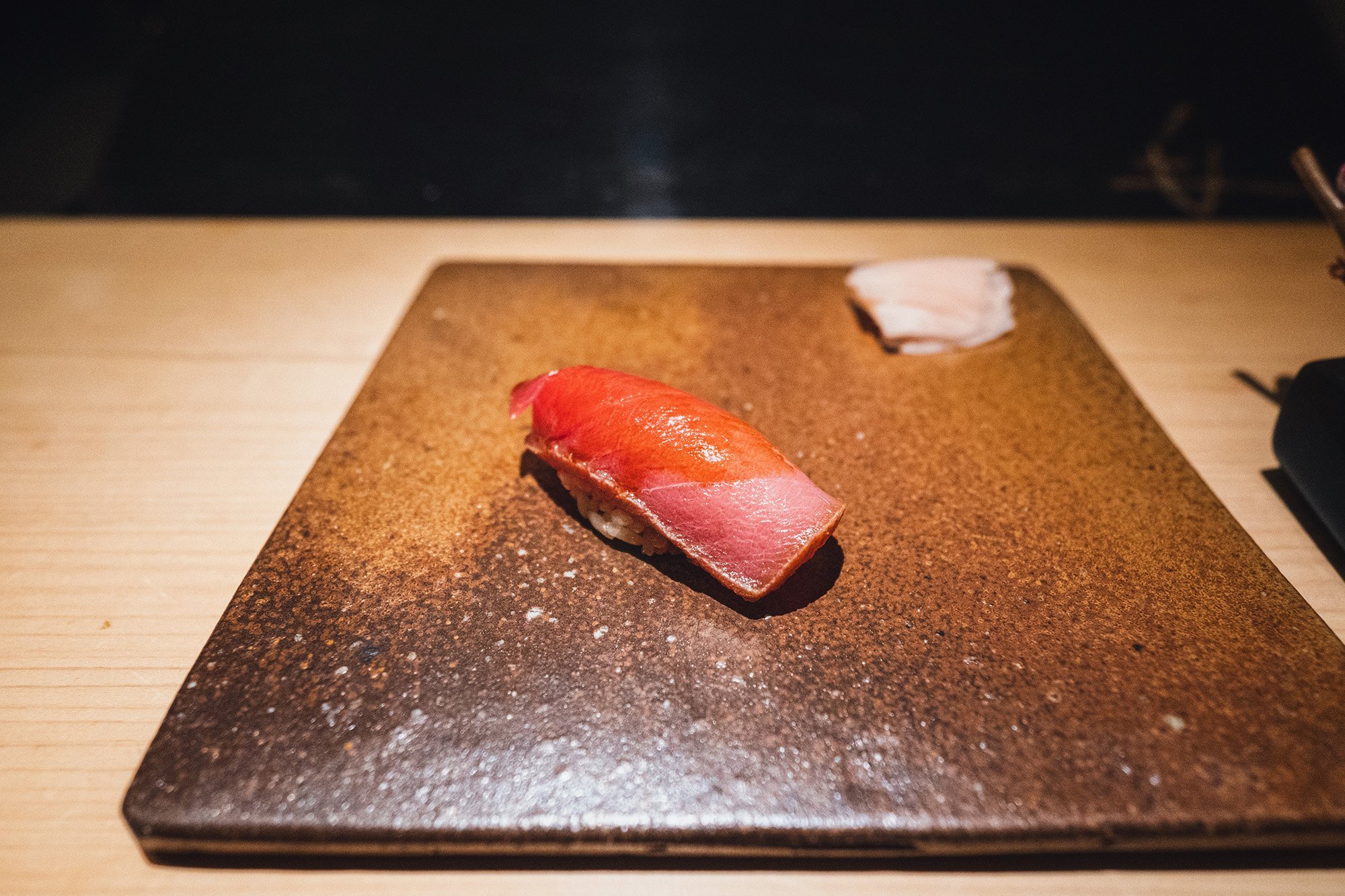
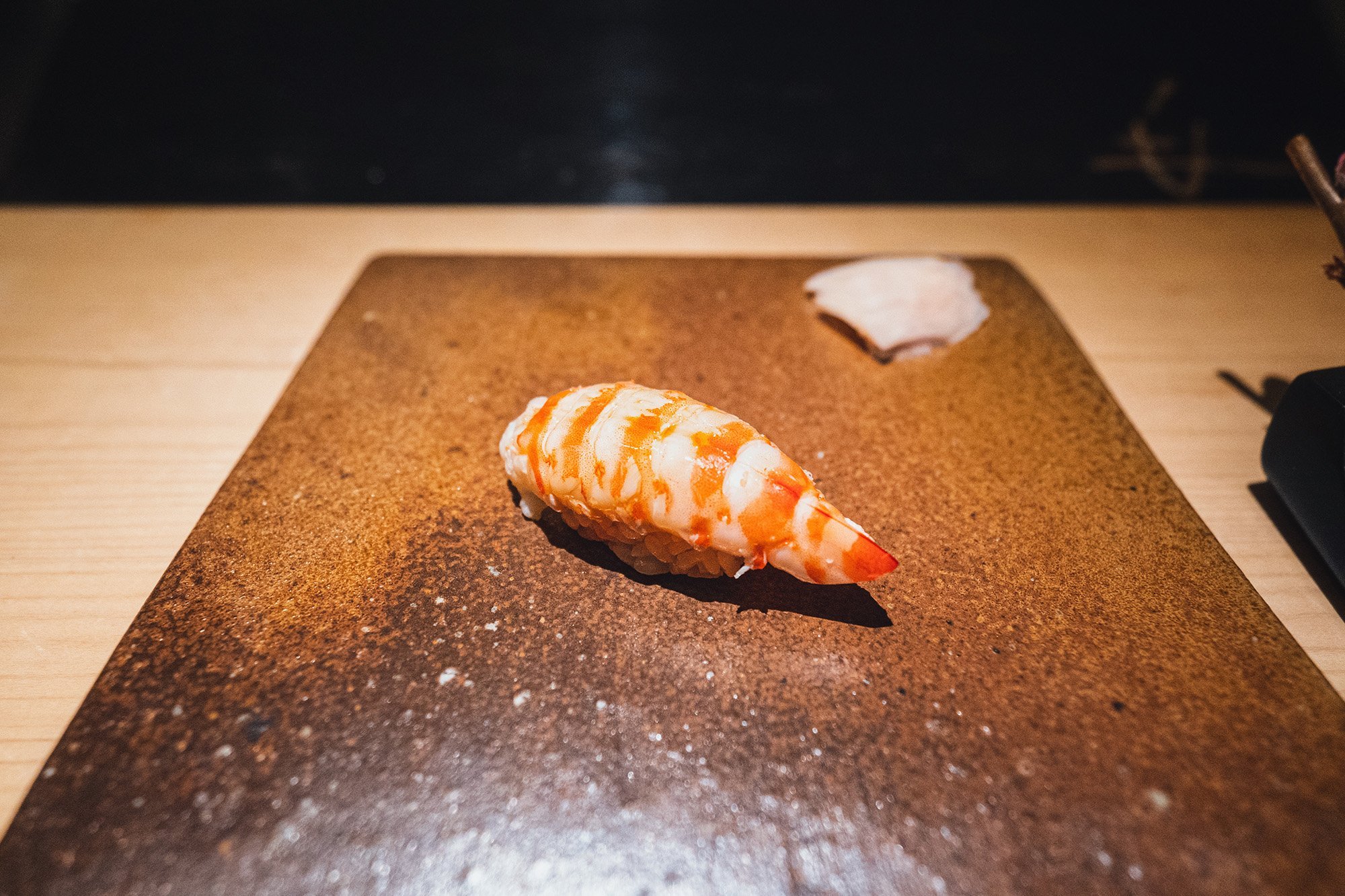
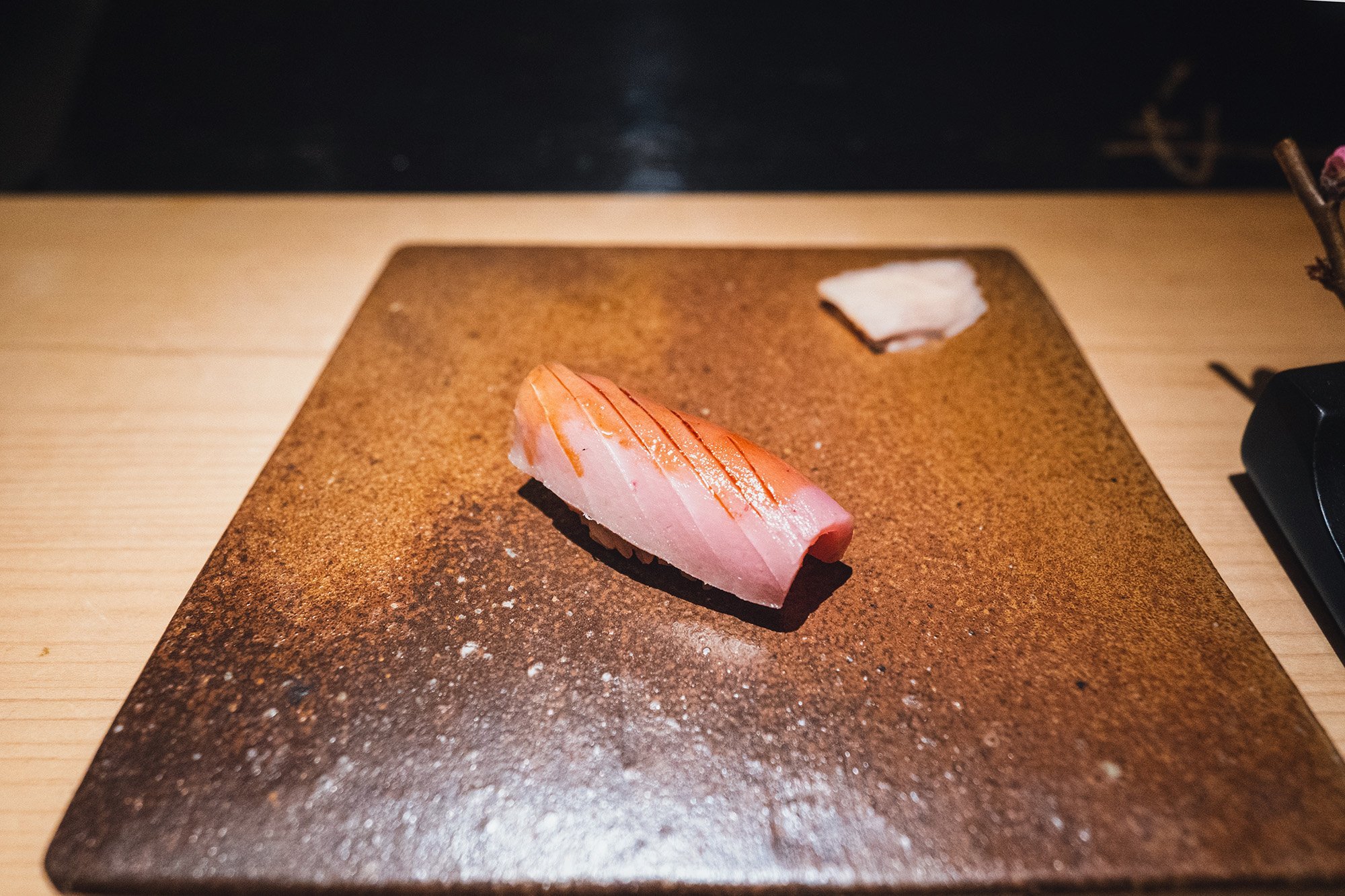
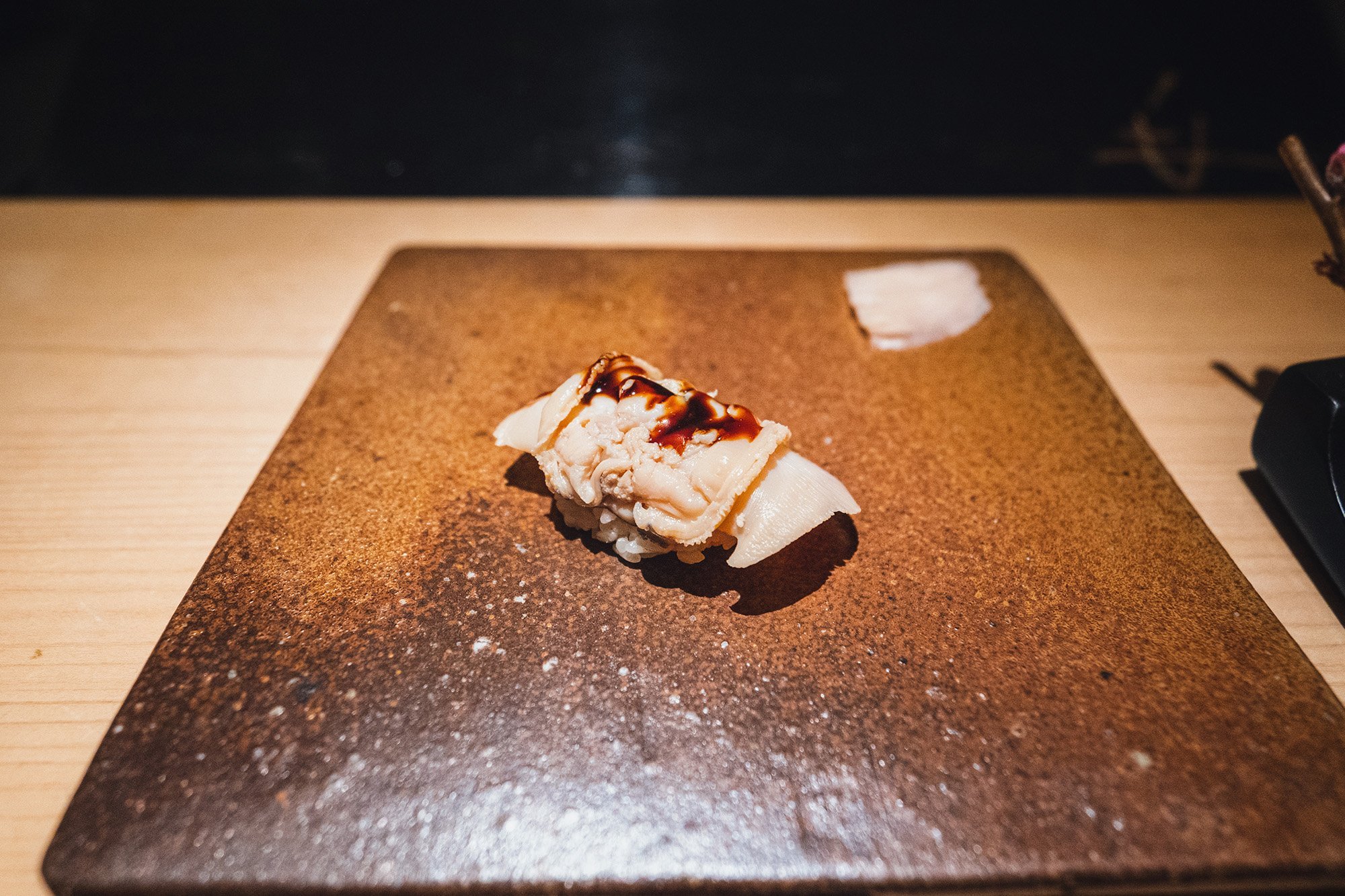


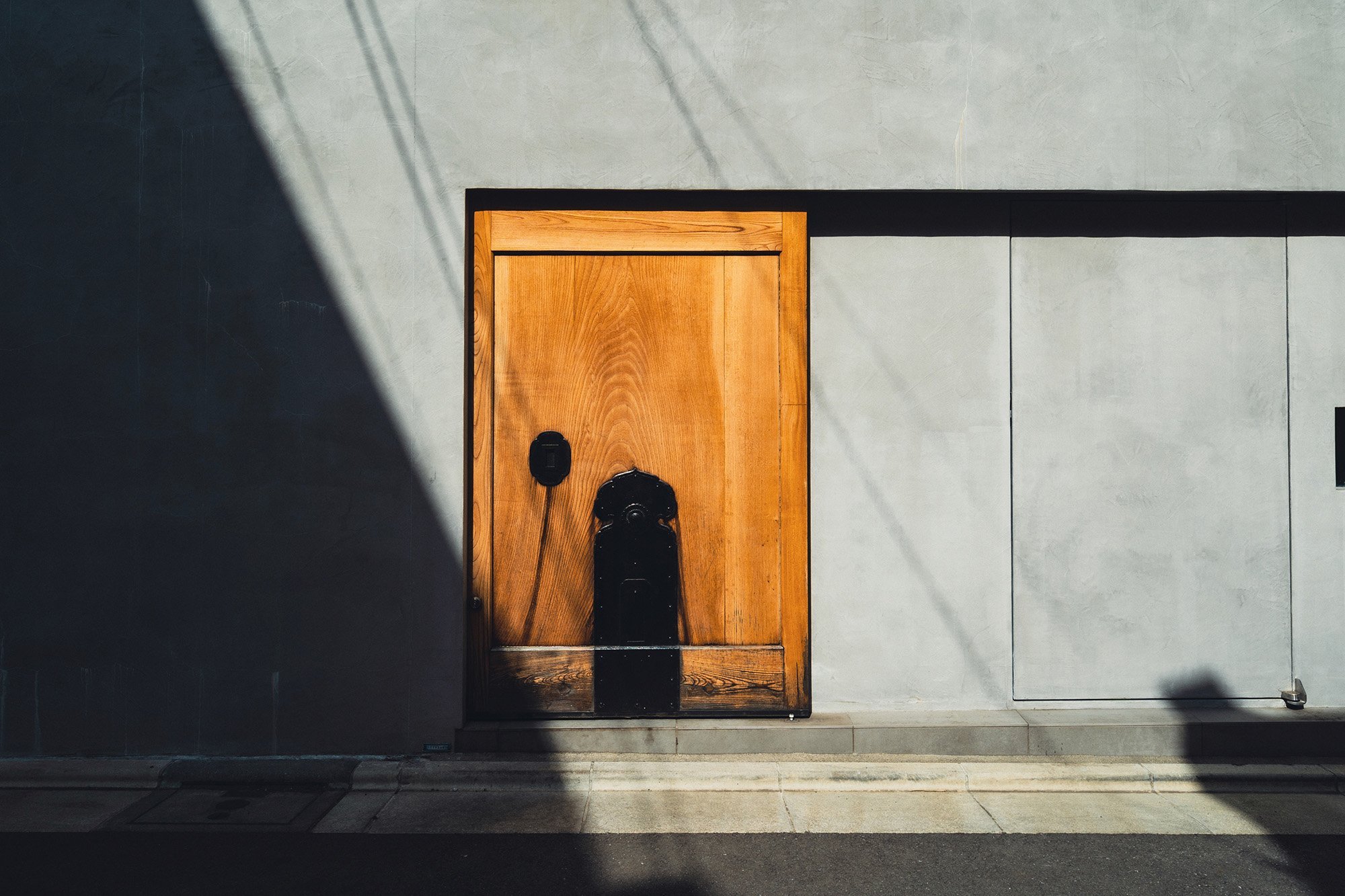
Udatsu Sushi is in a residential area and is such a treat. Behind a concrete facade and wooden door is an artistically designed space with a chef that serves equally impressive sushi.
Our lunch course featured about 17 different dishes, each crafted to perfection.
The chef grew up in a family that ran a meat shop but was drawn to sushi. After gaining experience at a Michelin starred sushi restaurant, he opened this omakase. He uses two different shari (sushi rice) in order to best match with the fish, and dishes like his handroll that had ingredients such as takenoko (bamboo shoots), garlic chips and miso are playful with flavor and texture.
I have to say that I really enjoyed the experience. I’d love to go back here for a meal and I definitely recommend it.
Junkadelic
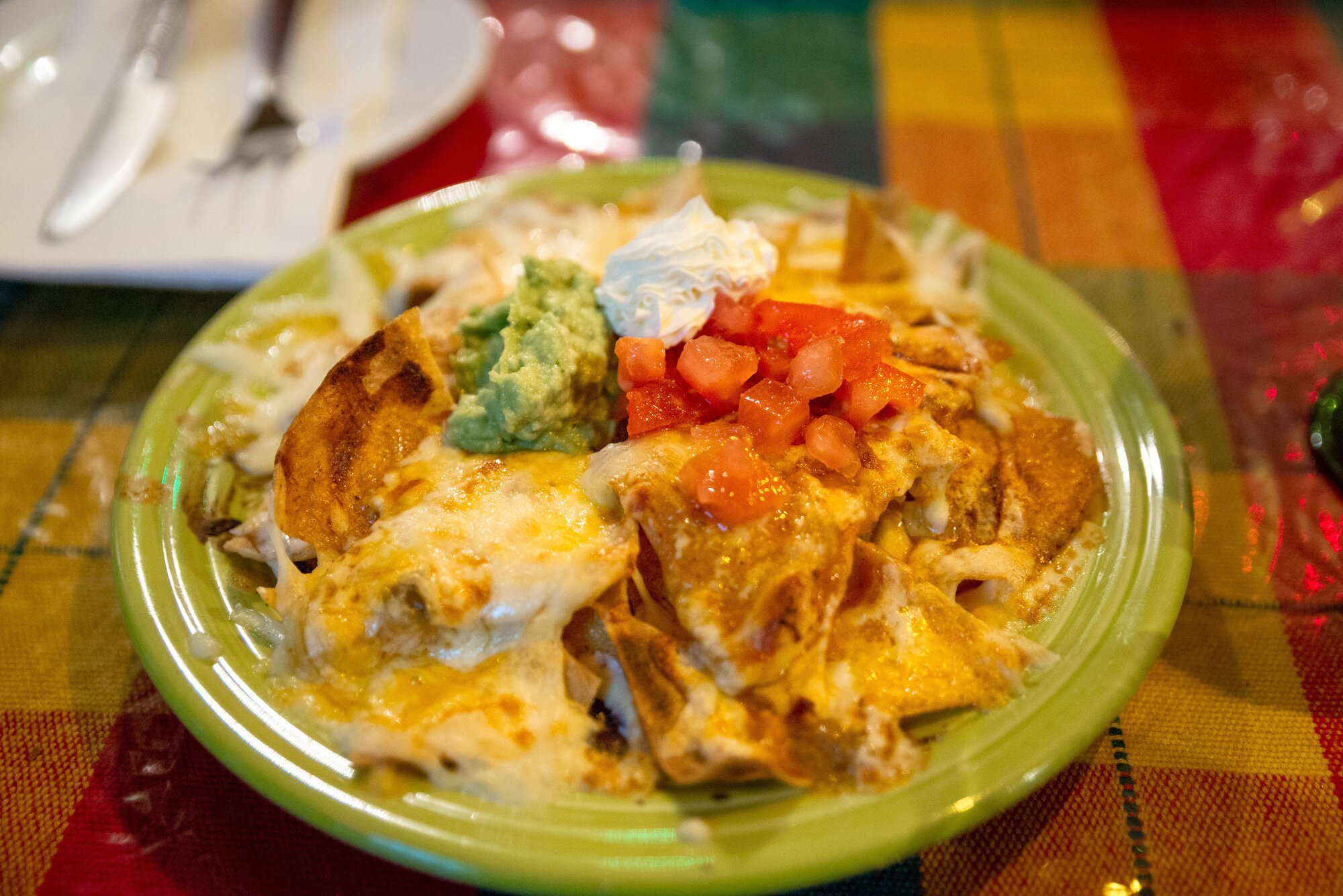
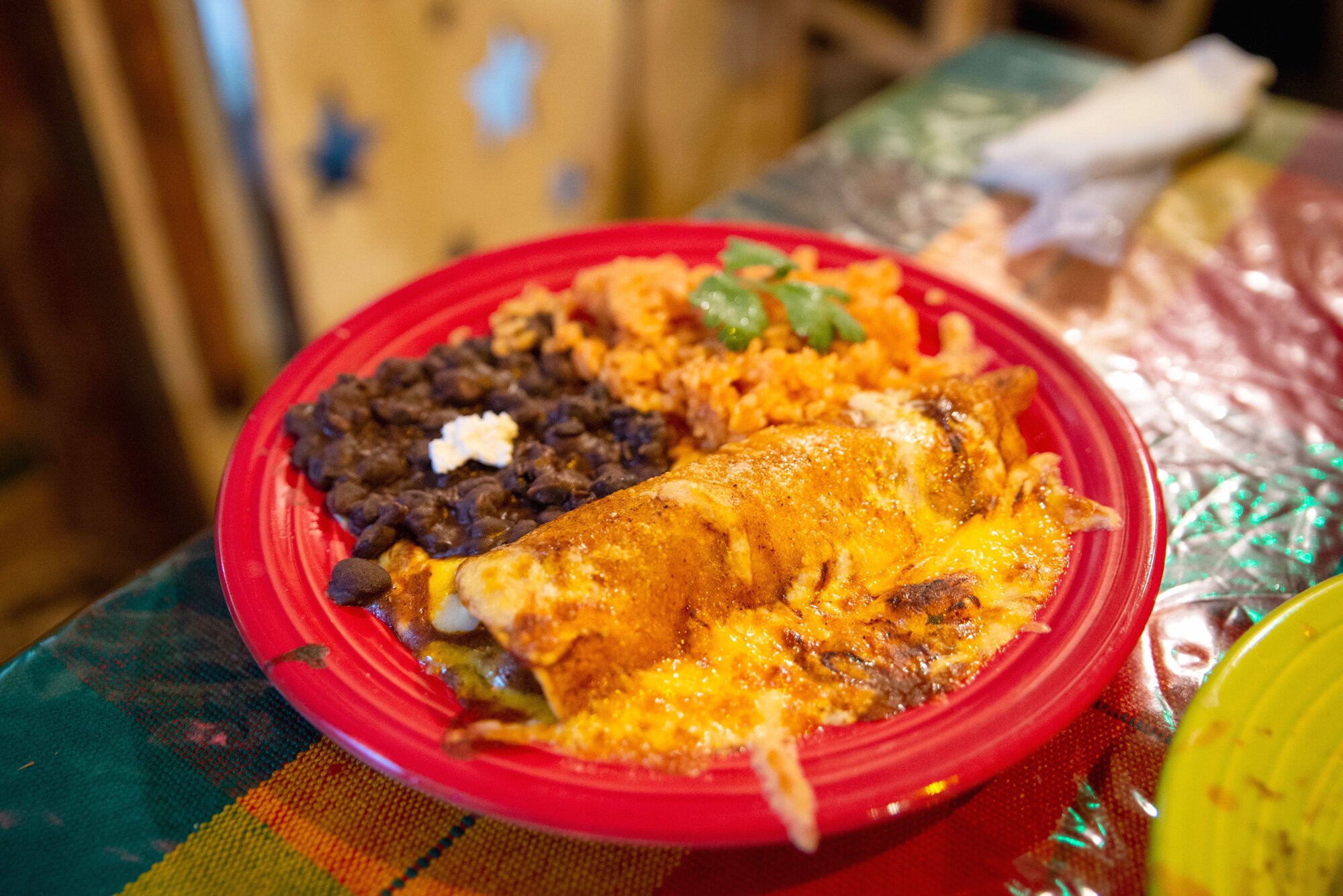
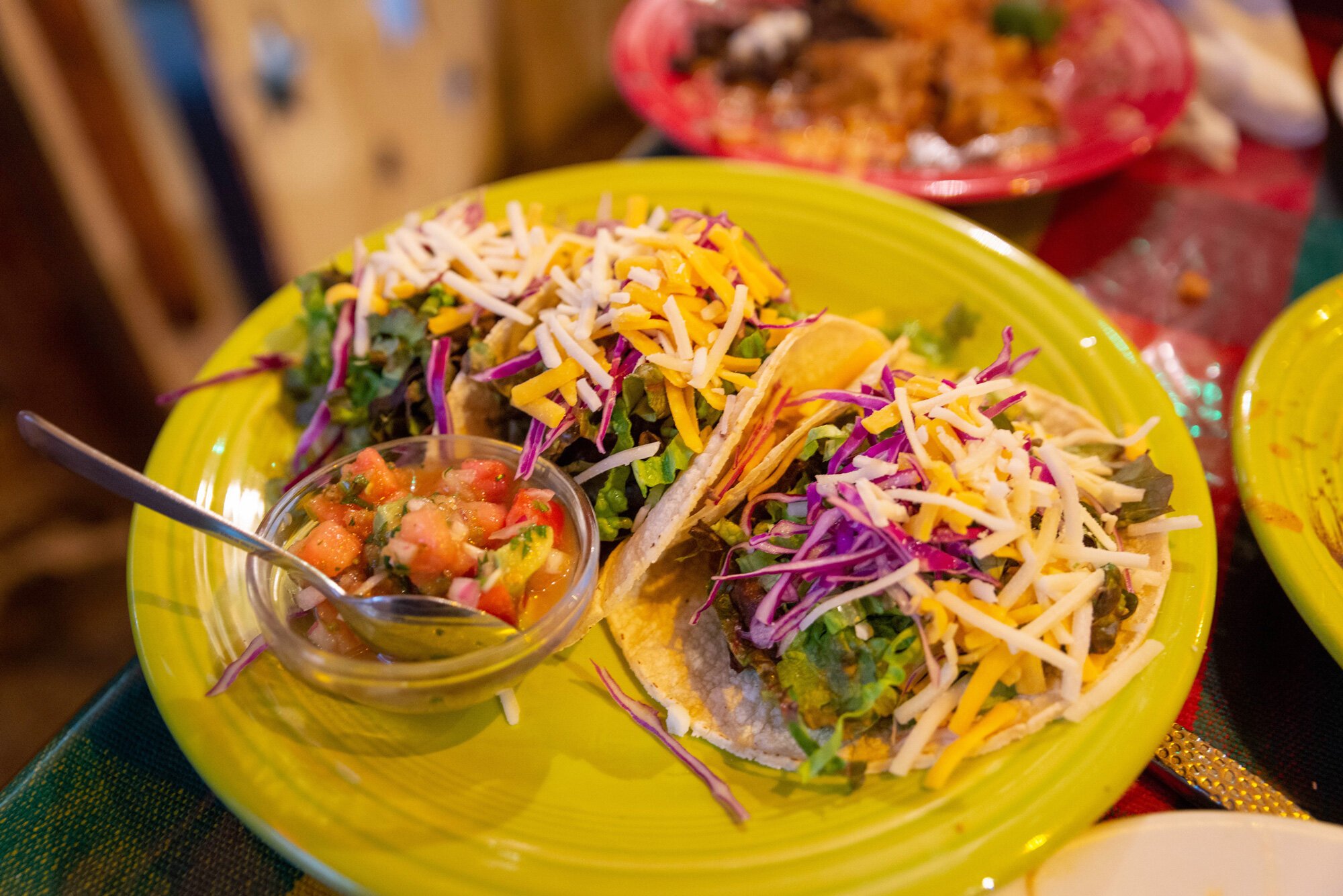
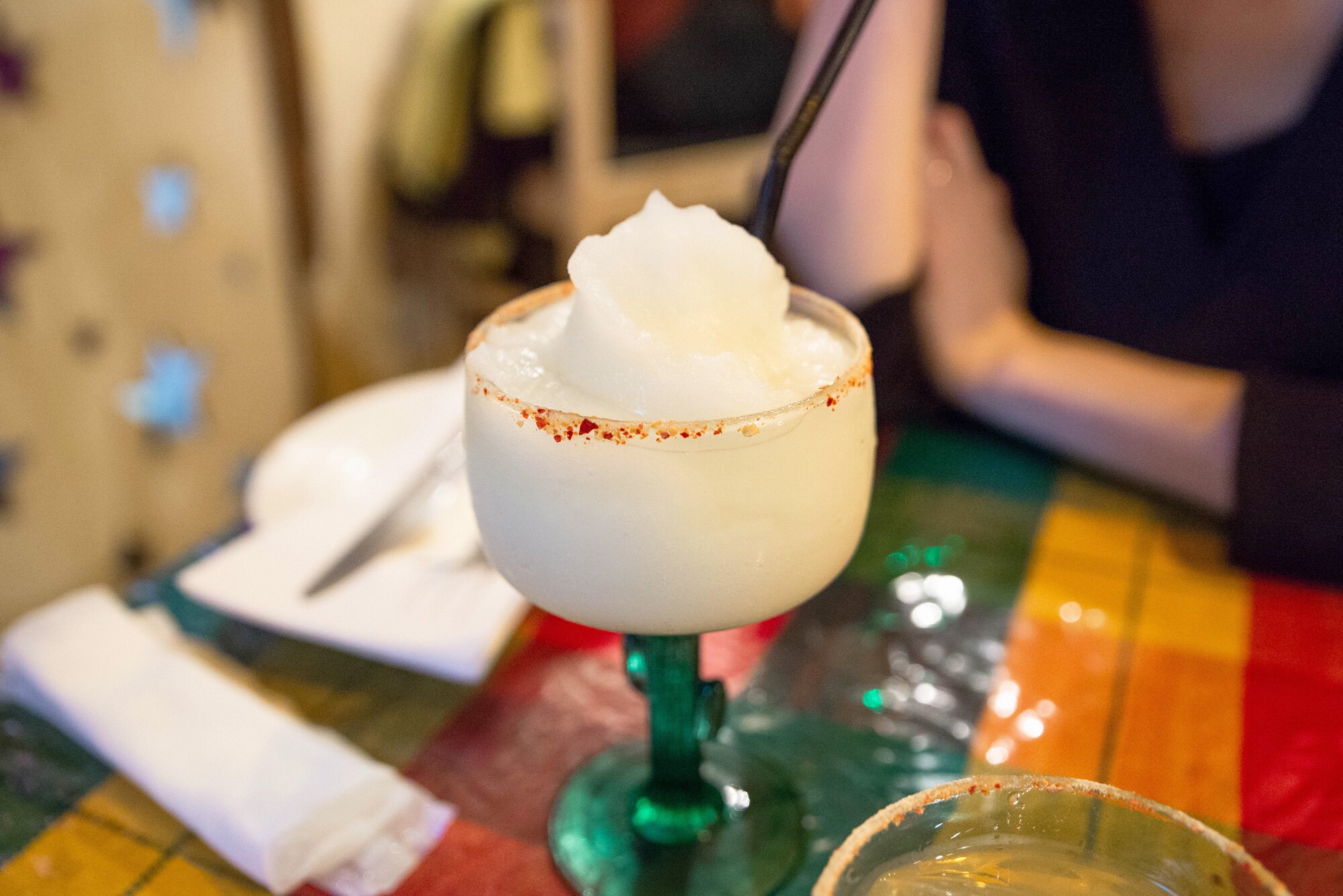
The best Mexican food I’ve had in Tokyo.
As someone who’s spent several years in California, I’ve been on a hunt to find decent Mexican food in Tokyo. So far, Junkadelic is it.
The concept is based on experiences the owner had in San Diego, and Junkadelic’s food and decor aims to mimic that vibe in Tokyo. It’s not one of those hyper-localized international places - it does make you feel like you’ve transported someplace else for a bit.
A great place when you need a break from Japanese food and are craving some Tex-Mex.
Happy Pudding Makahala
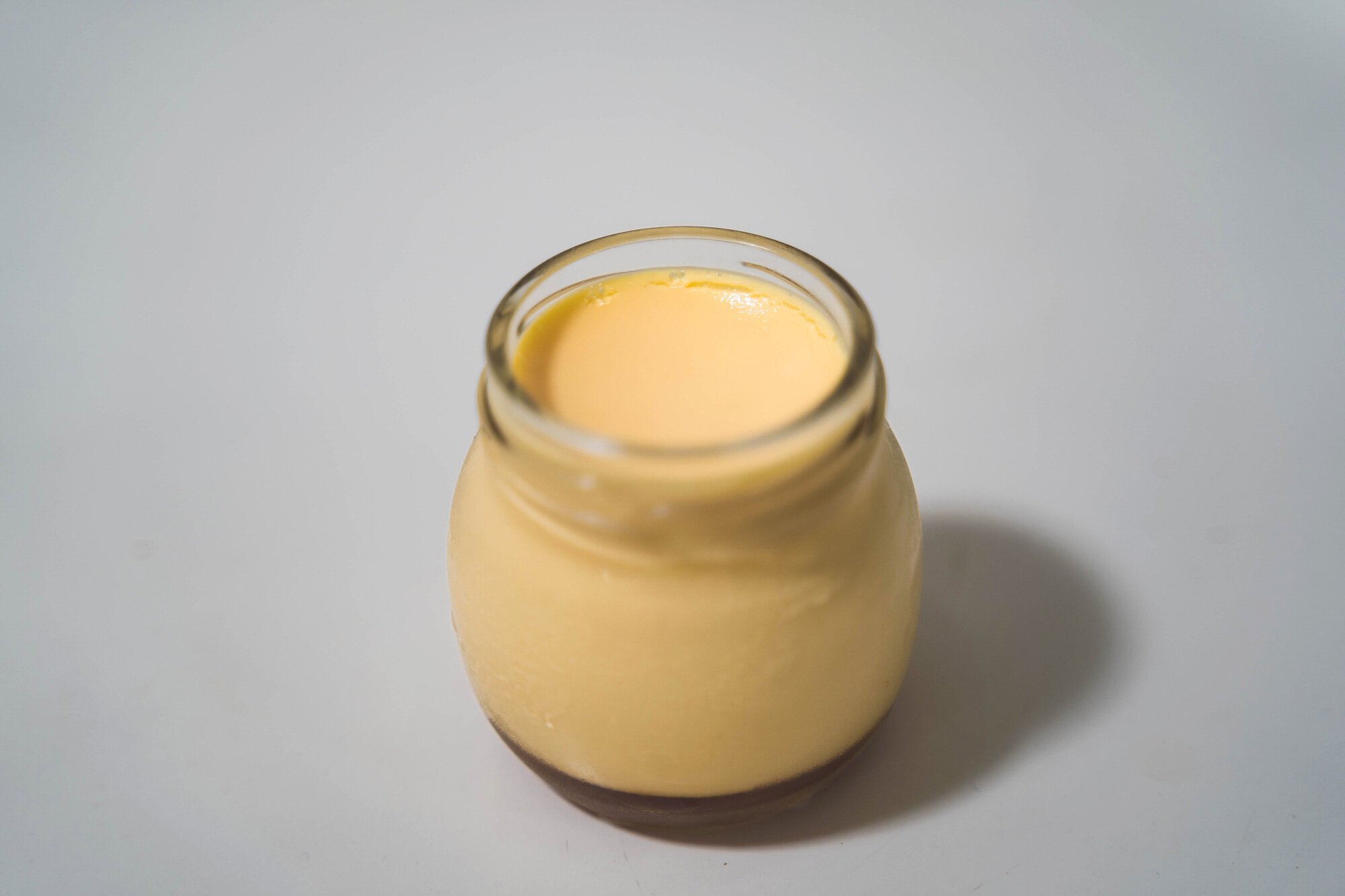
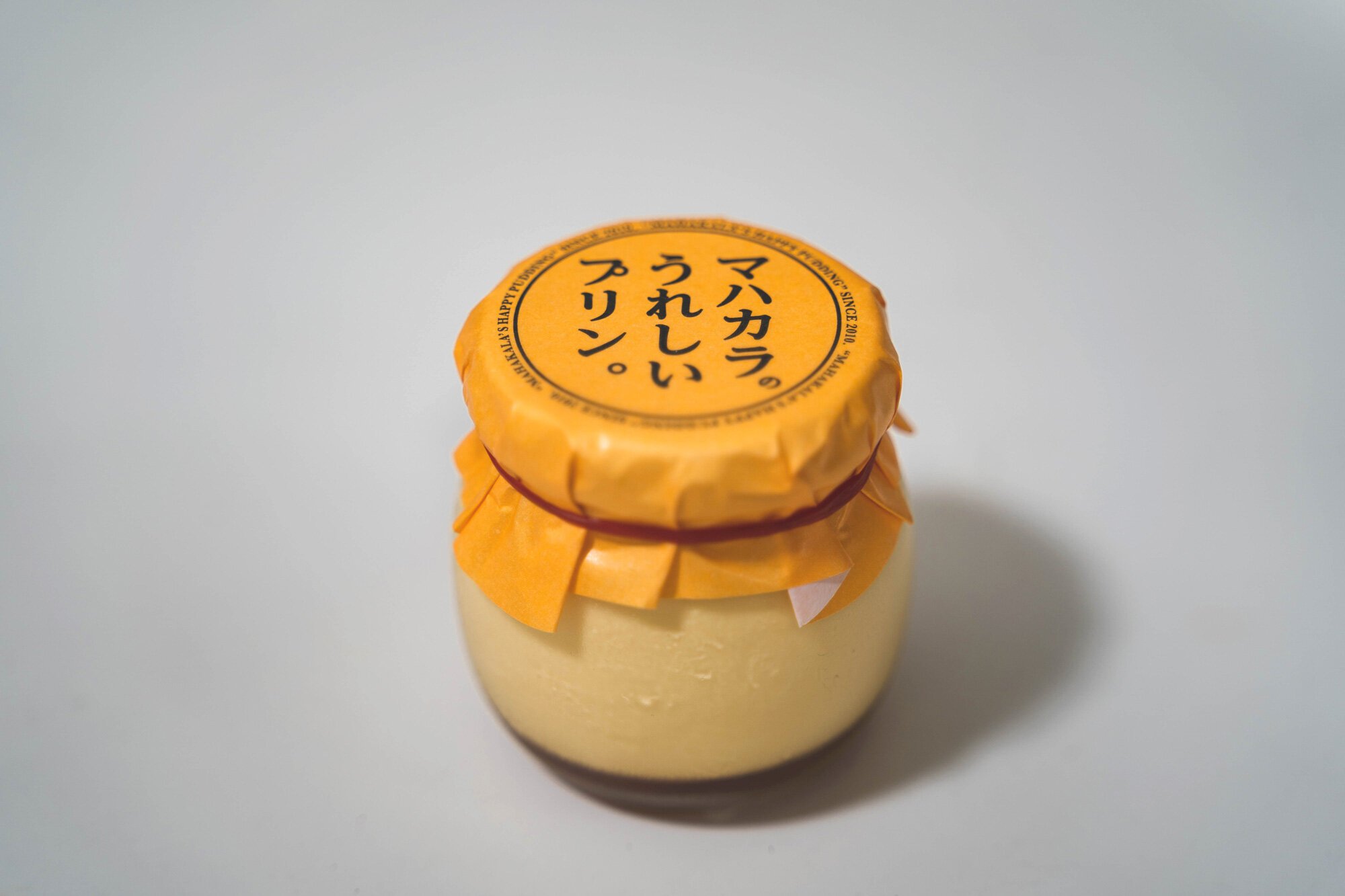
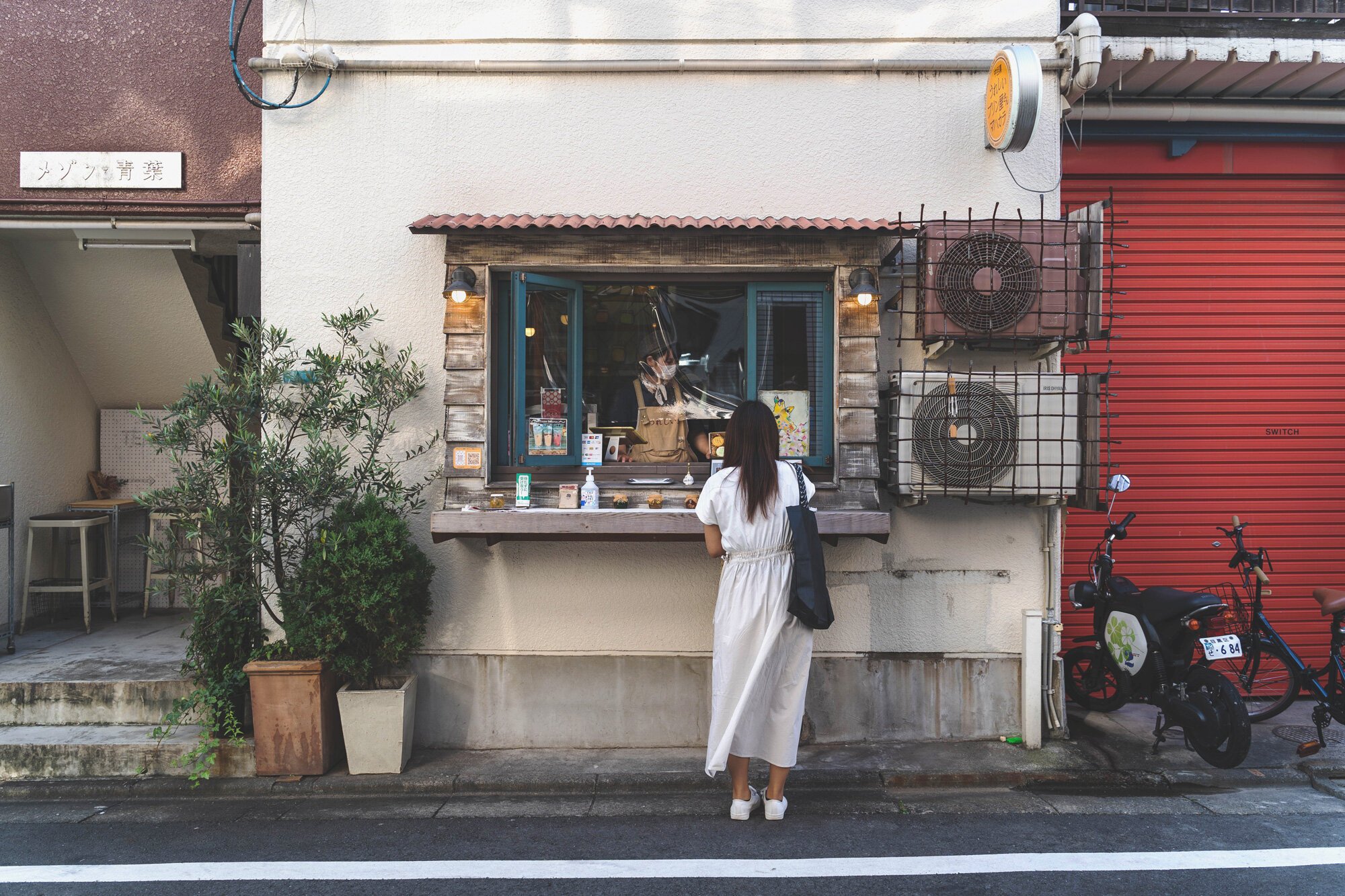
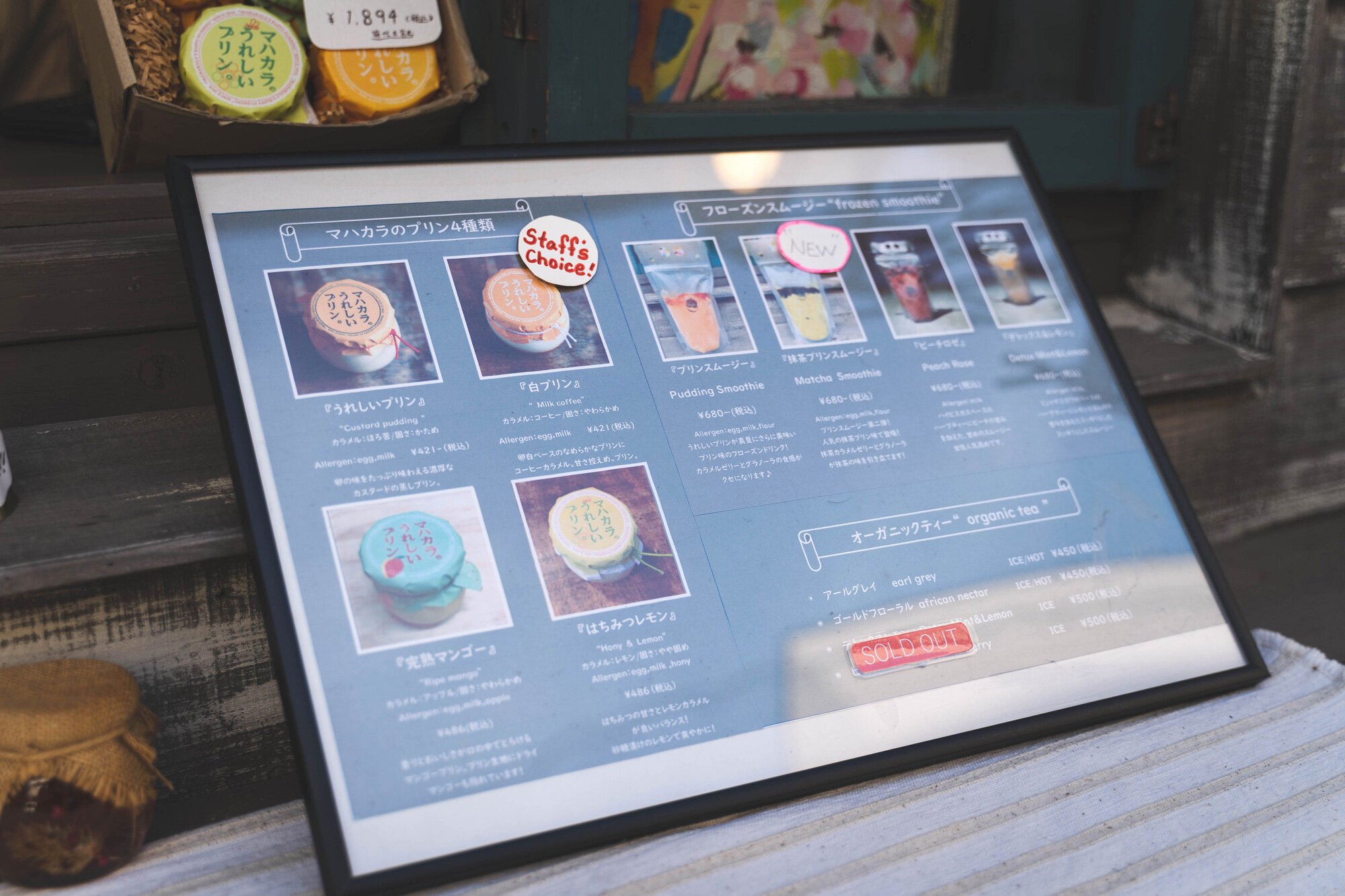
You can’t really go wrong if there’s “happy pudding” in the name right? Happy Pudding Makahala is located right off the Meguro riverside - a small shop for easy takeout.
It was originally a dessert item at a kushikatsu izakaya, but due to its popularity, the standalone shop was born. It’s a premium pudding - using high-end eggs from an area in Hyogo prefecture, near the owner’s hometown.
The custard pudding is rich and smooth, and they also have special seasonal flavors such as mango, matcha, sweet potato and more.
Keep in touch:
More travels:
Karuizawa
Karuizawa is a smaller resort area in Nagano prefecture. It’s abundant with nature, including Shiraito Falls. Here’s my 3-day trip there.
Karuizawa is a smaller town area in Nagano prefecture
Western foreign residents long ago promoted it as a resort area
Many wealthy Japanese have vacation homes here
An escape from city life. That’s the image that comes to mind for most Japanese people when they think about Karuizawa.
Located in Nagano prefecture, it’s a relatively short trip from Tokyo, and many head there to get away for a bit and exchange the concrete jungle for a greener one.
How to get there
While I went by car, Karuizawa is easily accessible from Tokyo Station via the Hokuriku Shinkansen bullet train. It takes just over an hour to Karuizawa Station.
About Karuizawa
The Karuizawa area is home to less than 50,000 people, but is a popular destination for vacationers.
It was marketed as a resort area by Western foreigners living in Japan in the 1800s, and has since taken on that image.
Some of the buildings and shops in the main town areas may have a Western look to them due to that era, and you’ll come across some vacation homes of wealthy Japanese people while driving through the mountains.
Where we stayed
There are a few notable Japanese-style hotels to choose from. We stayed at the Karuizawa Marriott Hotel, a resort that has Japanese-style rooms with a tatami mat area, Western-style rooms as well as dog-friendly ones.
Our room was a twin room with a private, open-air, bath attached to it. Karuizawa is an area abundant with nature, so it was only fitting to be able to sit peacefully in the hot spring water outdoors but while enjoying it in the privacy of our own room.
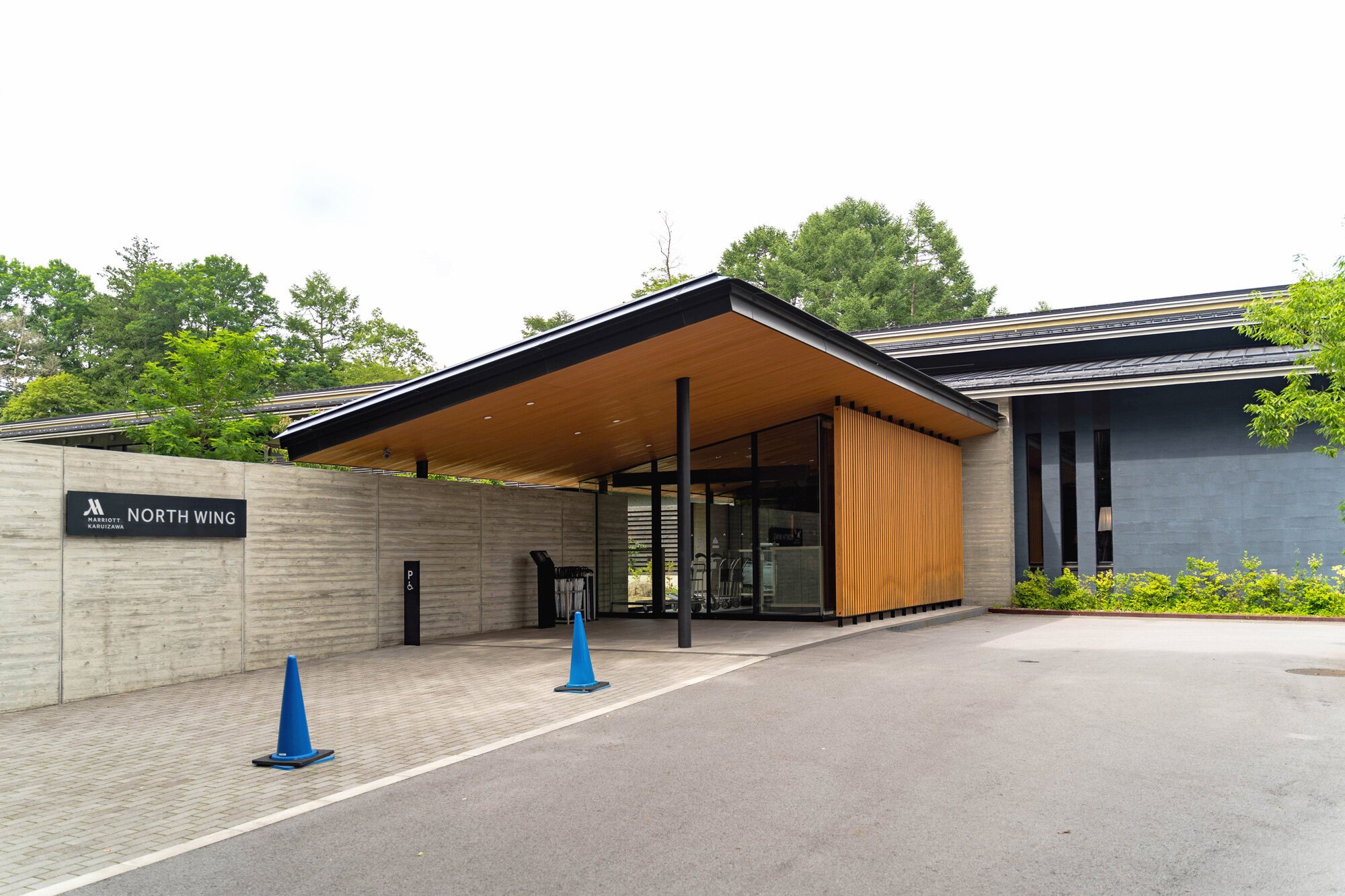
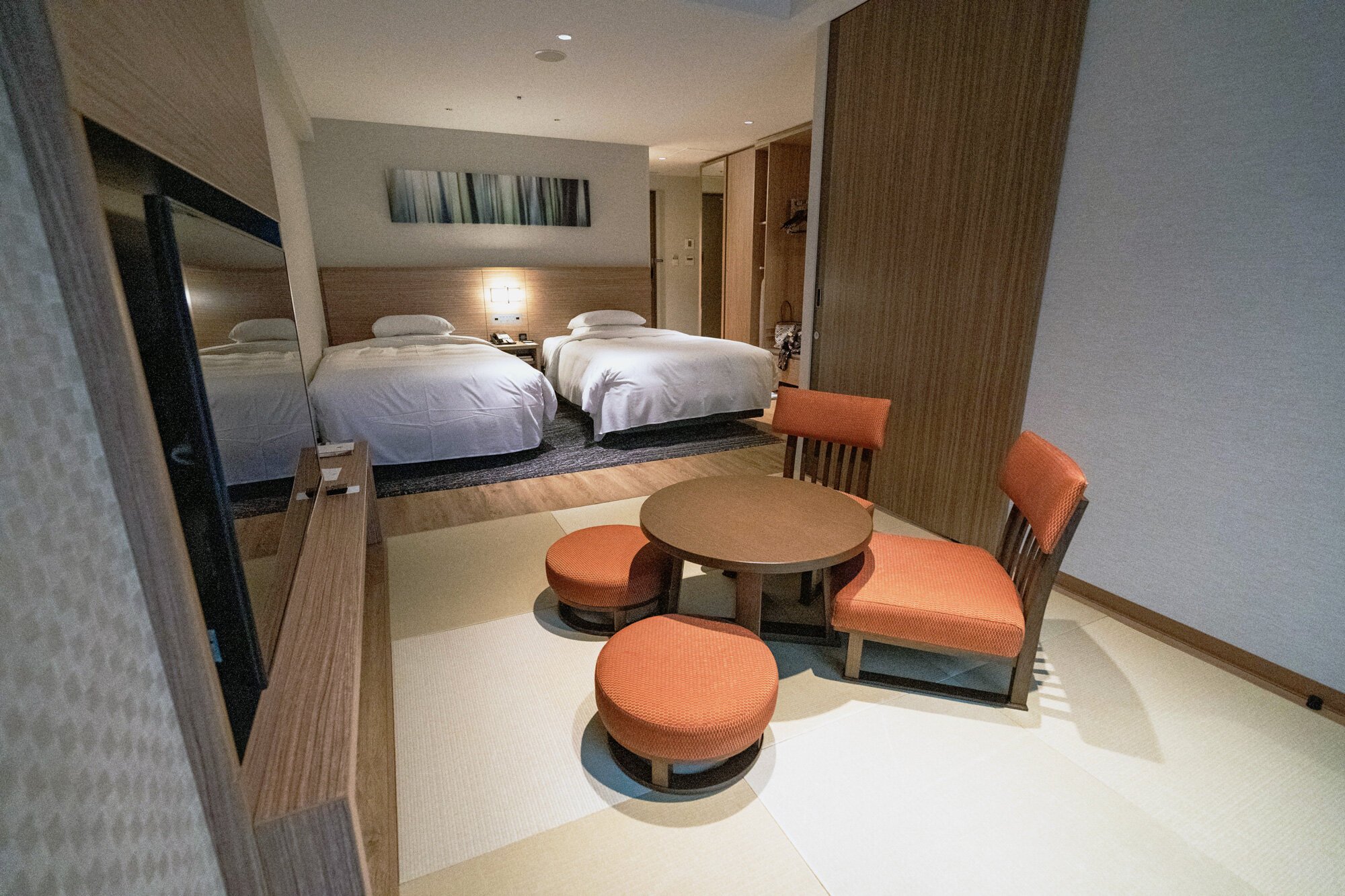
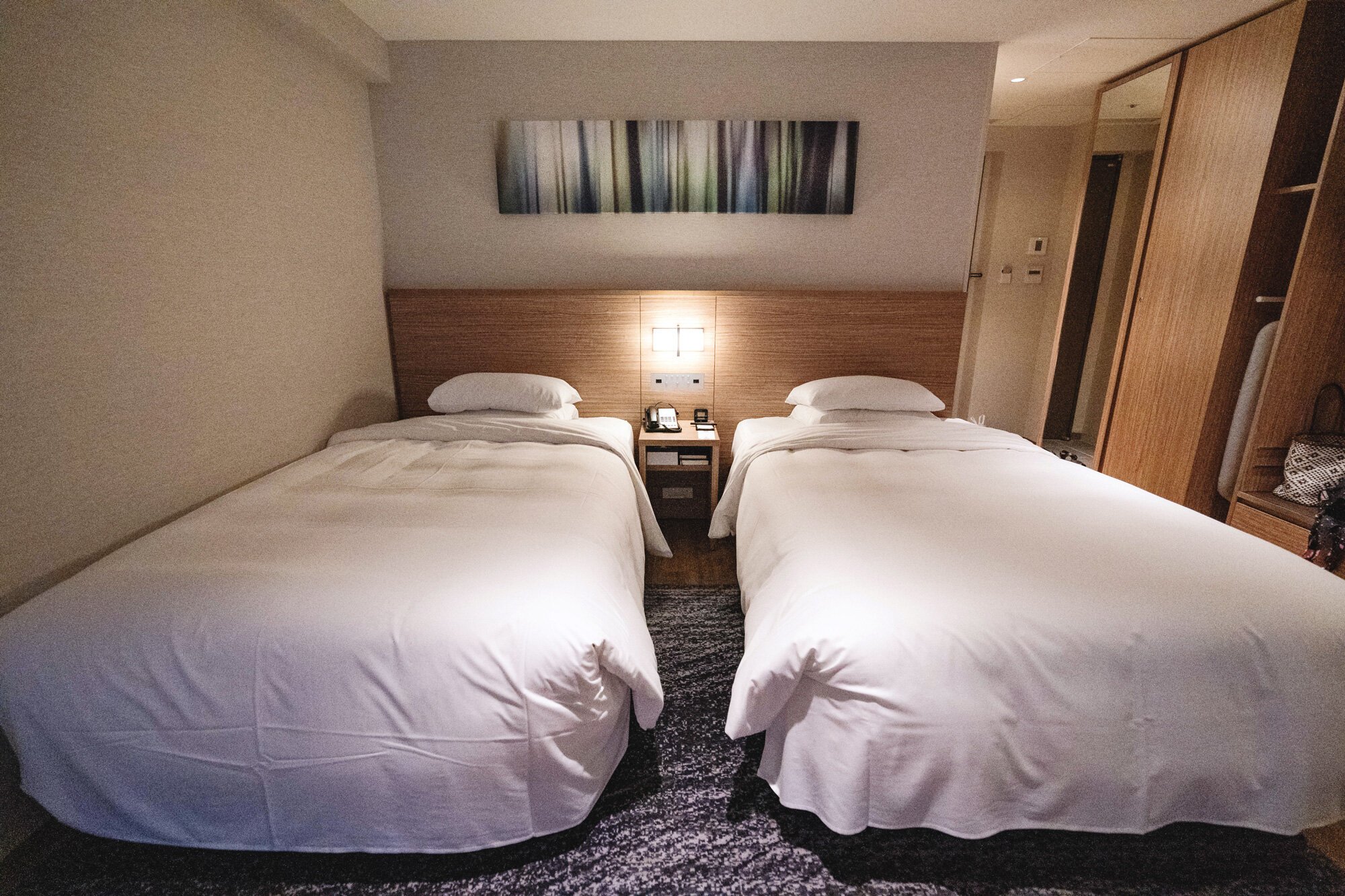
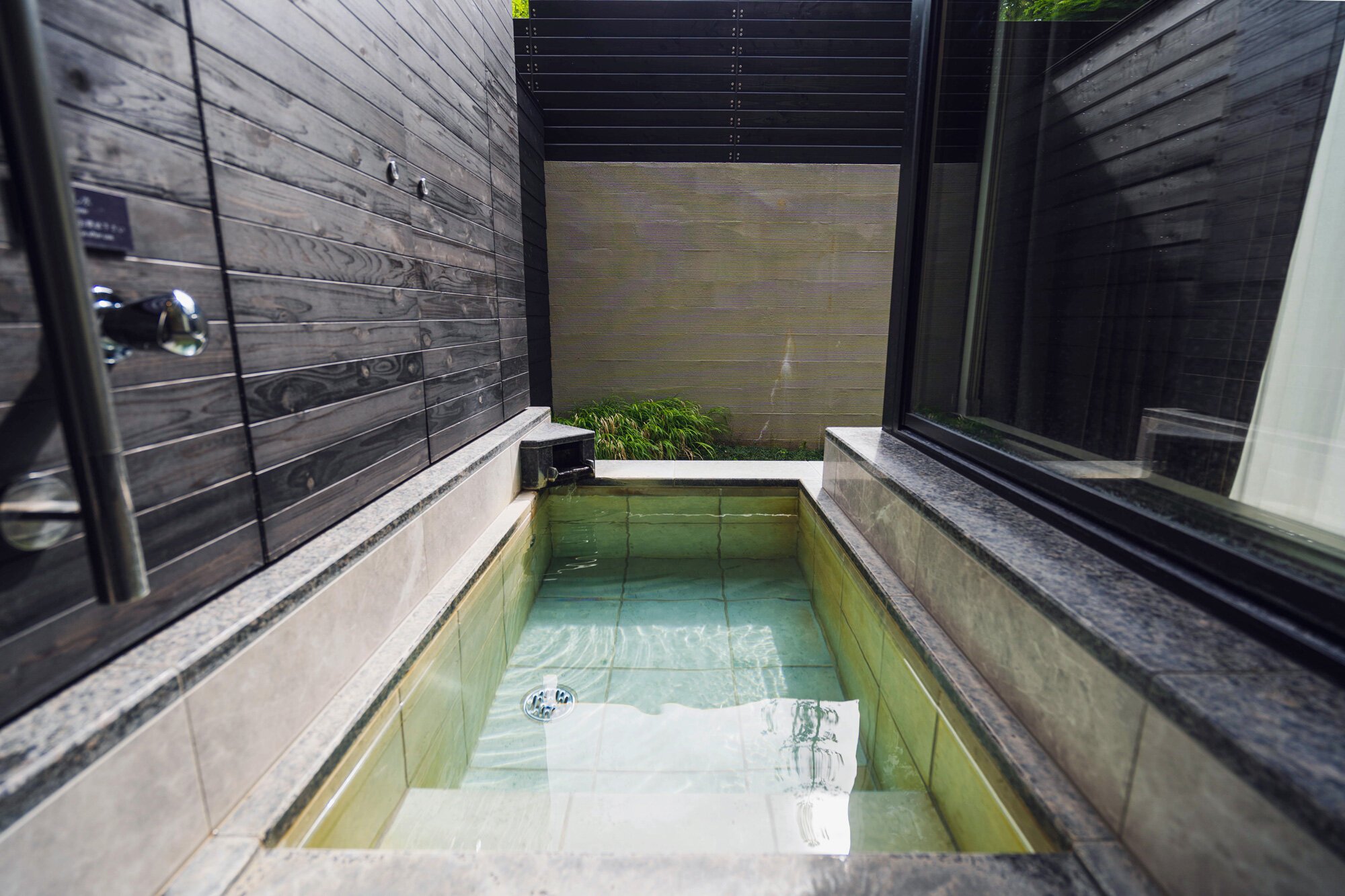
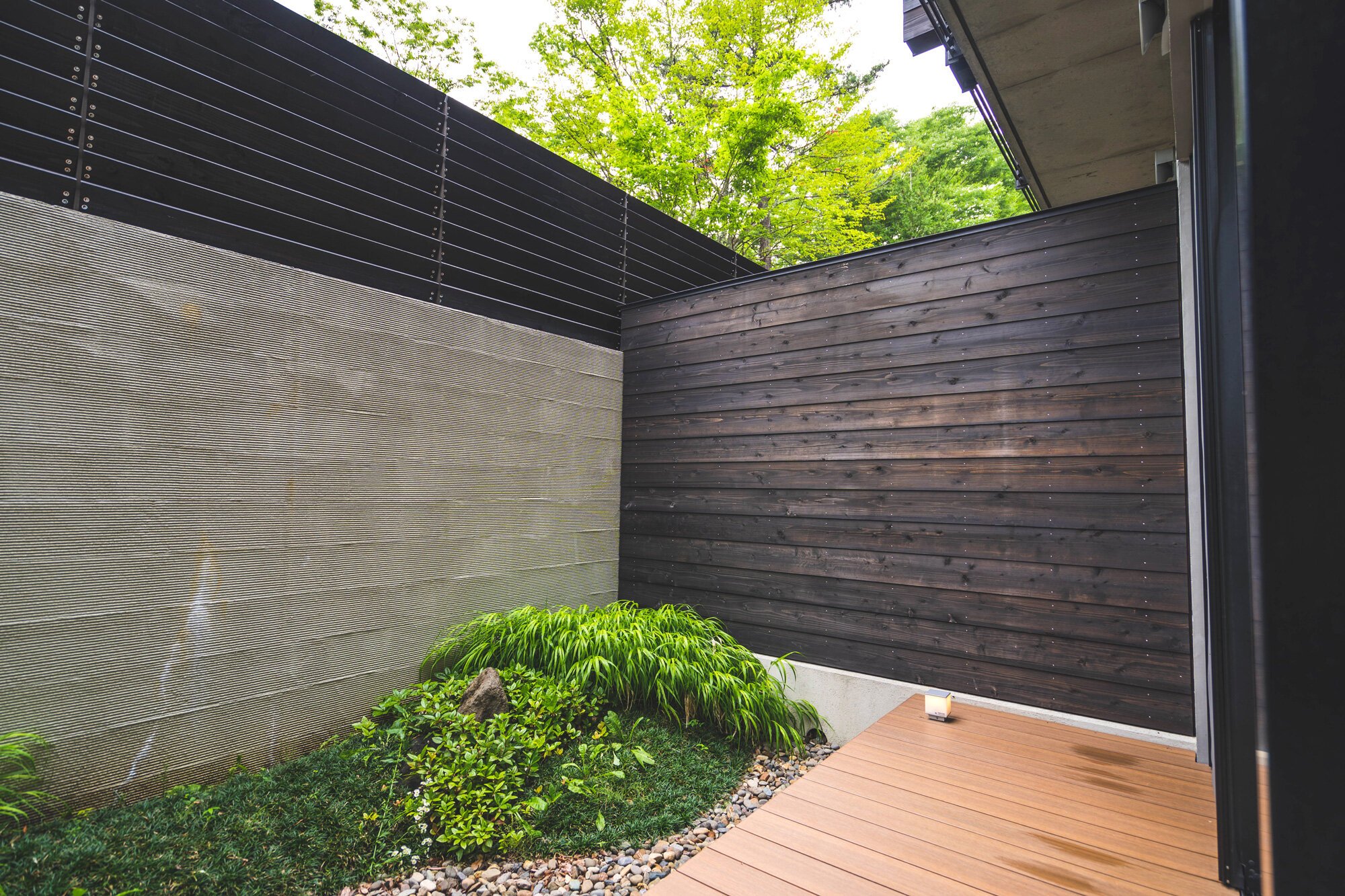
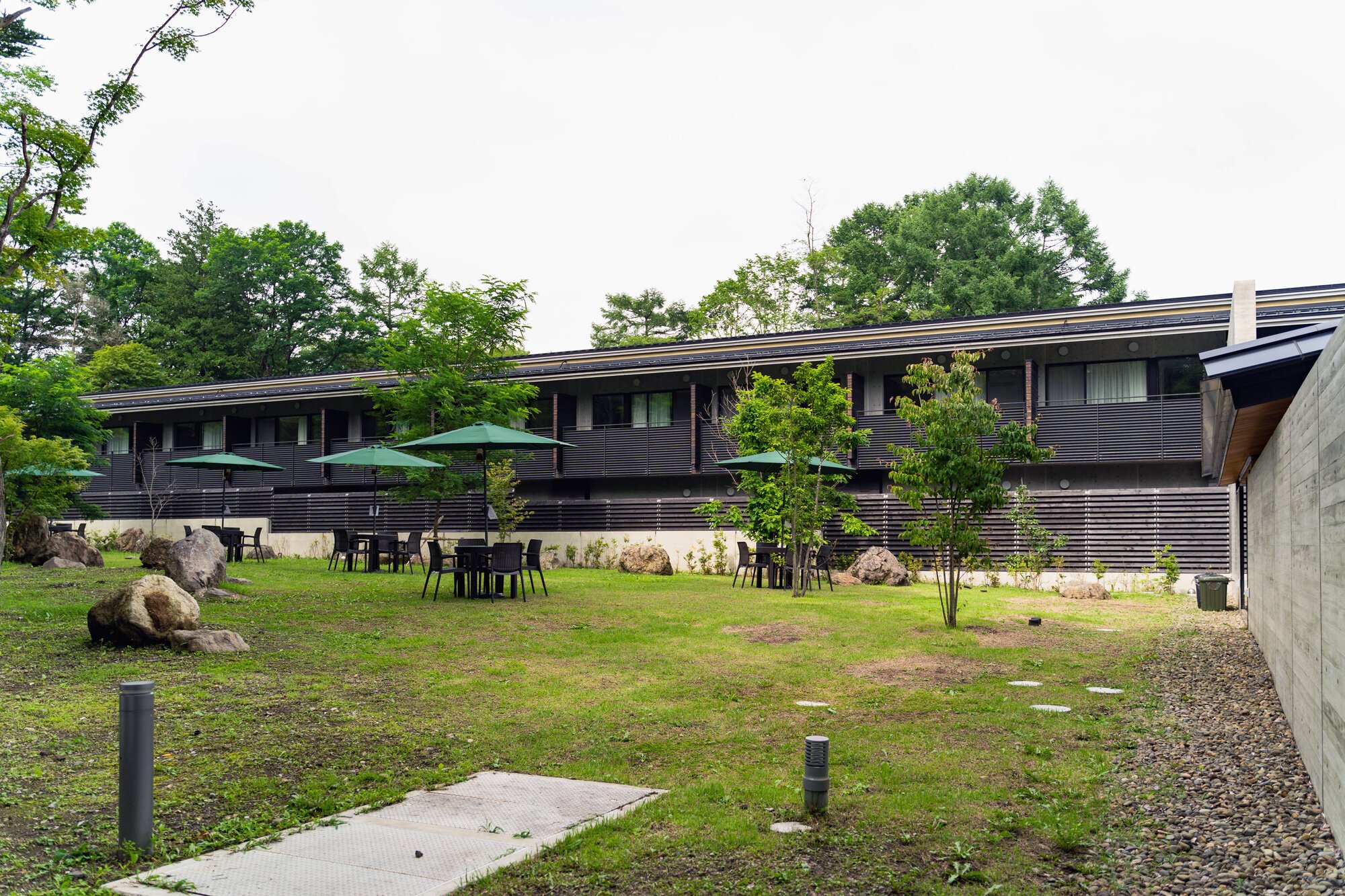
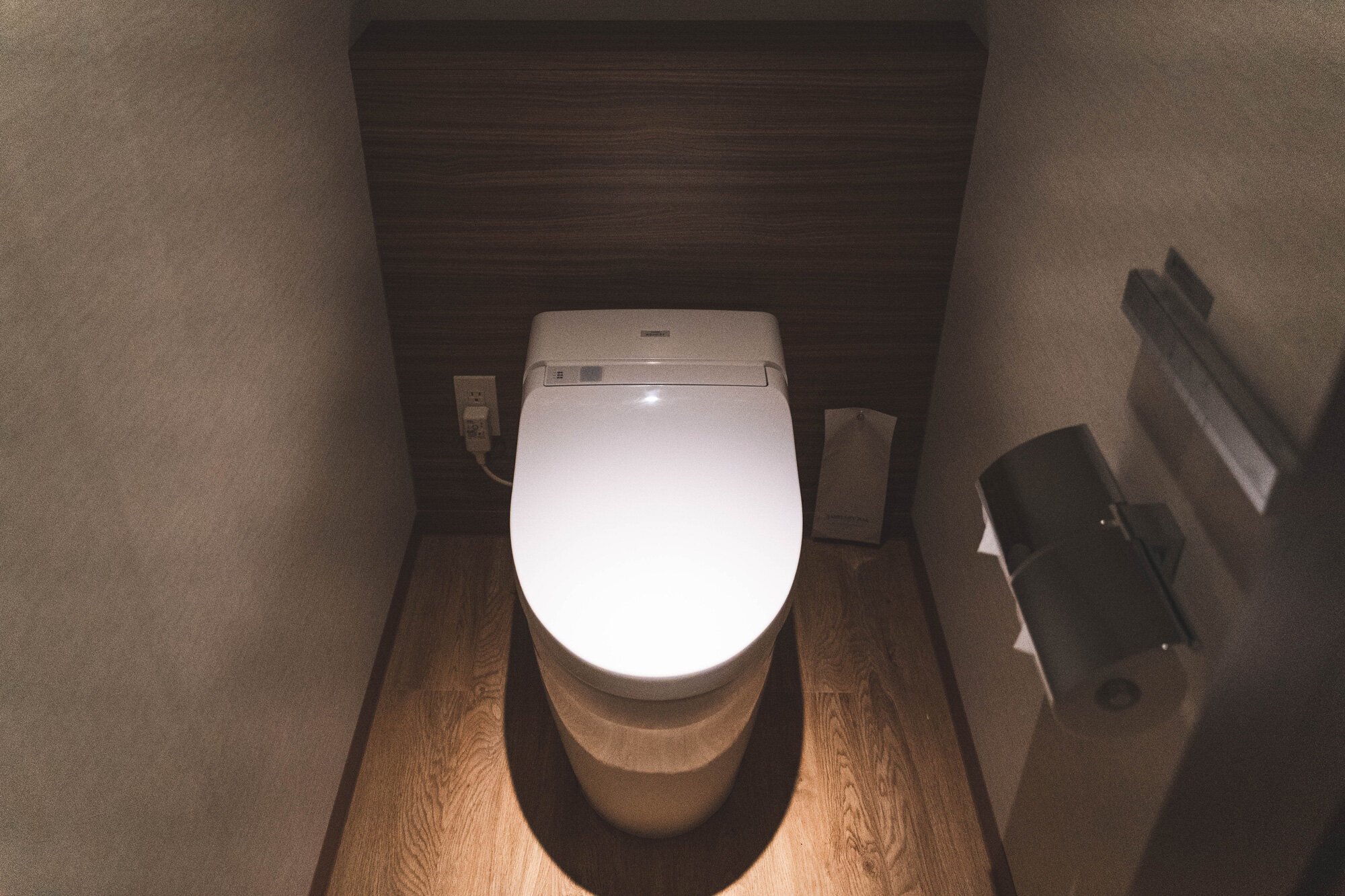
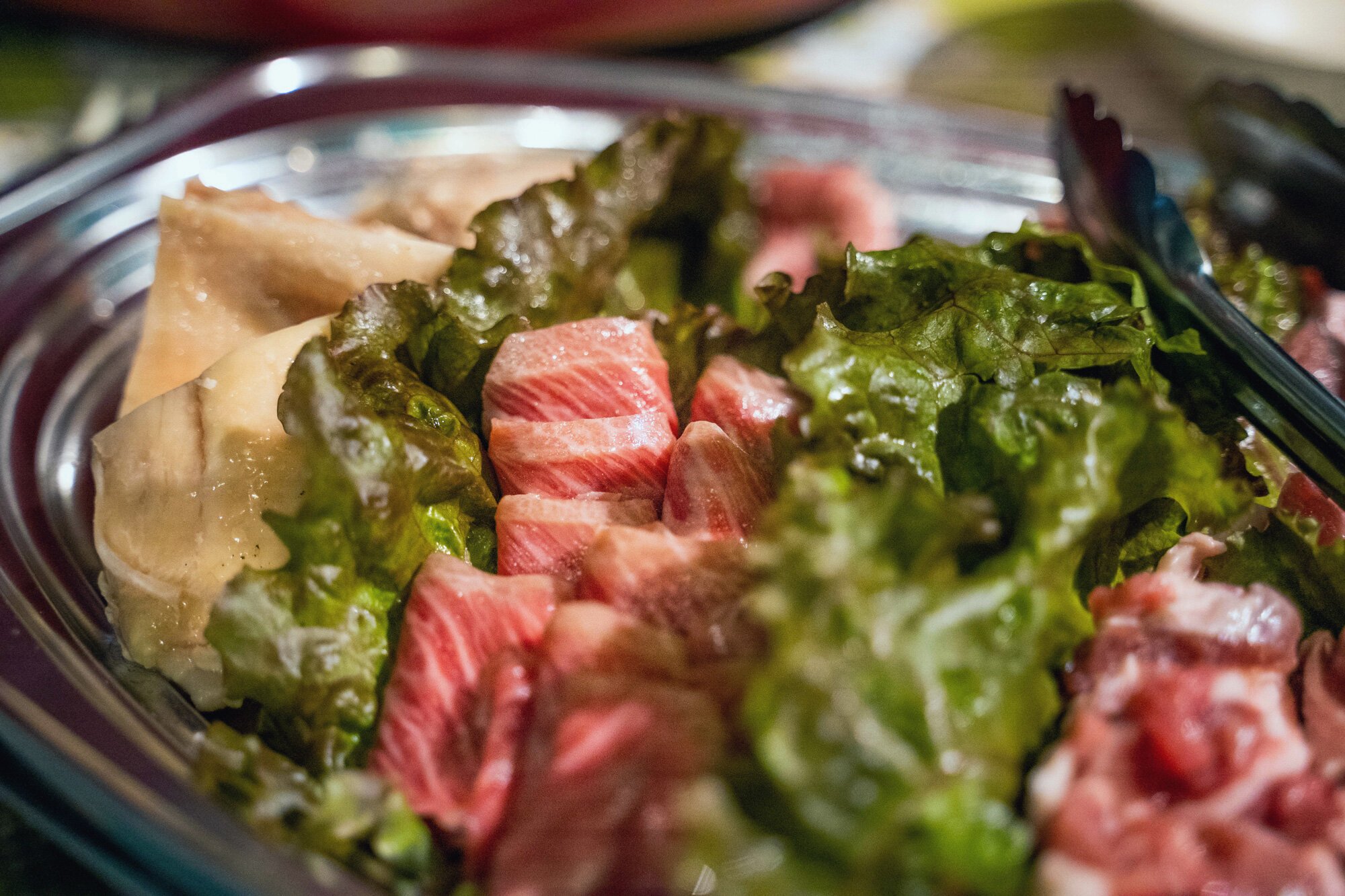
One thing that we added on was an outdoor BBQ. It wasn’t a little pricey, but they gave so much food, and set up and cleaned up everything for us. It’s a good option if you’re arriving later in the day and don’t want to venture anywhere.
https://www.marriott.com/karuizawa
What we did
Karuizawa Brewery
Something that surprised me about Karuizawa and Nagano prefecture as a whole was how much craft beer there is from the area.
We stopped by the Karuizawa Brewery for a tour on the way to check into the hotel. The tour is short, maybe only 15 minutes, and there wasn’t a lot going on (probably due to COVID-19 restrictions). I wouldn’t say it’s a must-do, but it’s a nice stop for those who want to take a look at how a Japanese brewery goes about making their beers. And you get a free draft plus can to take home, which doesn’t hurt.
https://brewery.co.jp [J]
Harunire Terrace
Located in Naka-Karuizawa, the area’s secondary town, Harunire Terrace makes for a nice spot to do some eating, drinking and shopping.
A lot of the shops are smaller boutiques focusing on locally-made products or food items from the area. Some of Karuizawa’s best eateries have locations here, and there were a couple of places that I got to try which I enjoyed - I’ve put more details at the bottom.
The terrace is run by Hoshino Resorts, one of Japan’s premier ryokan chains, and is very much immersed in the surrounding nature. It’s outdoors, on the shores of the Yu River, and is dog-friendly.
https://www.hoshinoresorts.com/harunireterrace
Shiraito Falls
Karuizawa travel video
Probably the main destination for almost everyone visiting Karuizawa: Shiraito Falls.
The falls are located to the north of the main area and up a mountain. Visiting the falls is free, but there’s a toll of 500 JPY to enter the area for those going by car.
The Japanese name for the falls is Shiraito-no-taki (白糸の滝), which means waterfall of white threads, which is fitting. The falls aren’t that tall at all - only about 3 meters high - but they’re quite wide.
I found myself mesmerized by how the water simply came out of the mountain (you can see it better in the video above). It doesn’t flow in from a river or a stream, it’s actually groundwater that is surfacing here.
Prince Shopping Plaza
Our last stop was the Prince Shopping Plaza, a big, spread out outlet mall. It’s located directly next to JR Karuizawa Station making it really convenient, and it has huge range of Western and Japanese brands, as well as shops selling local cuisine and ingredients.
There’s also a lot of green park space to sit in, and like many other places in Karuizawa, the outlet is dog-friendly.
Where we ate
Kawakami An

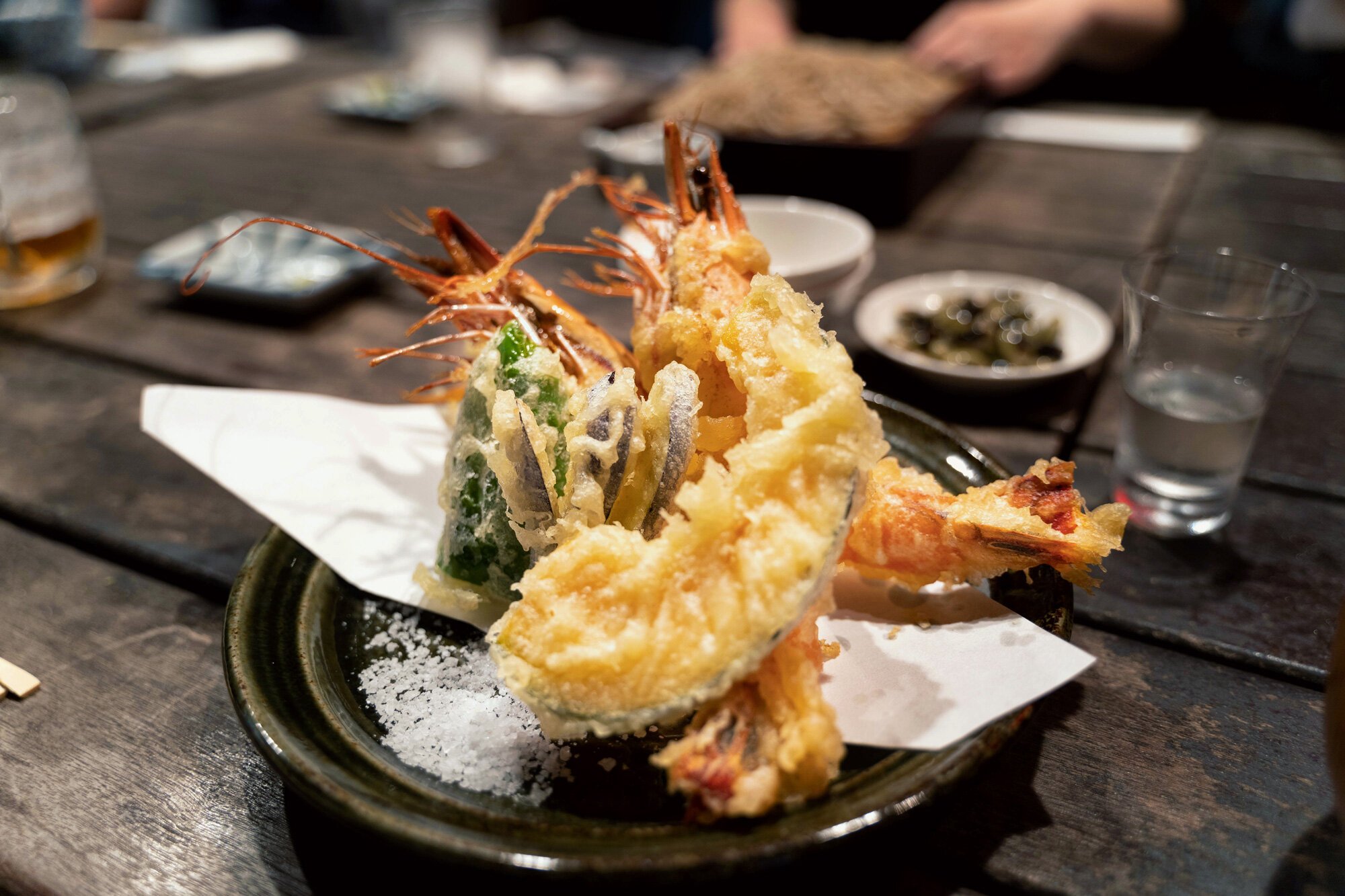

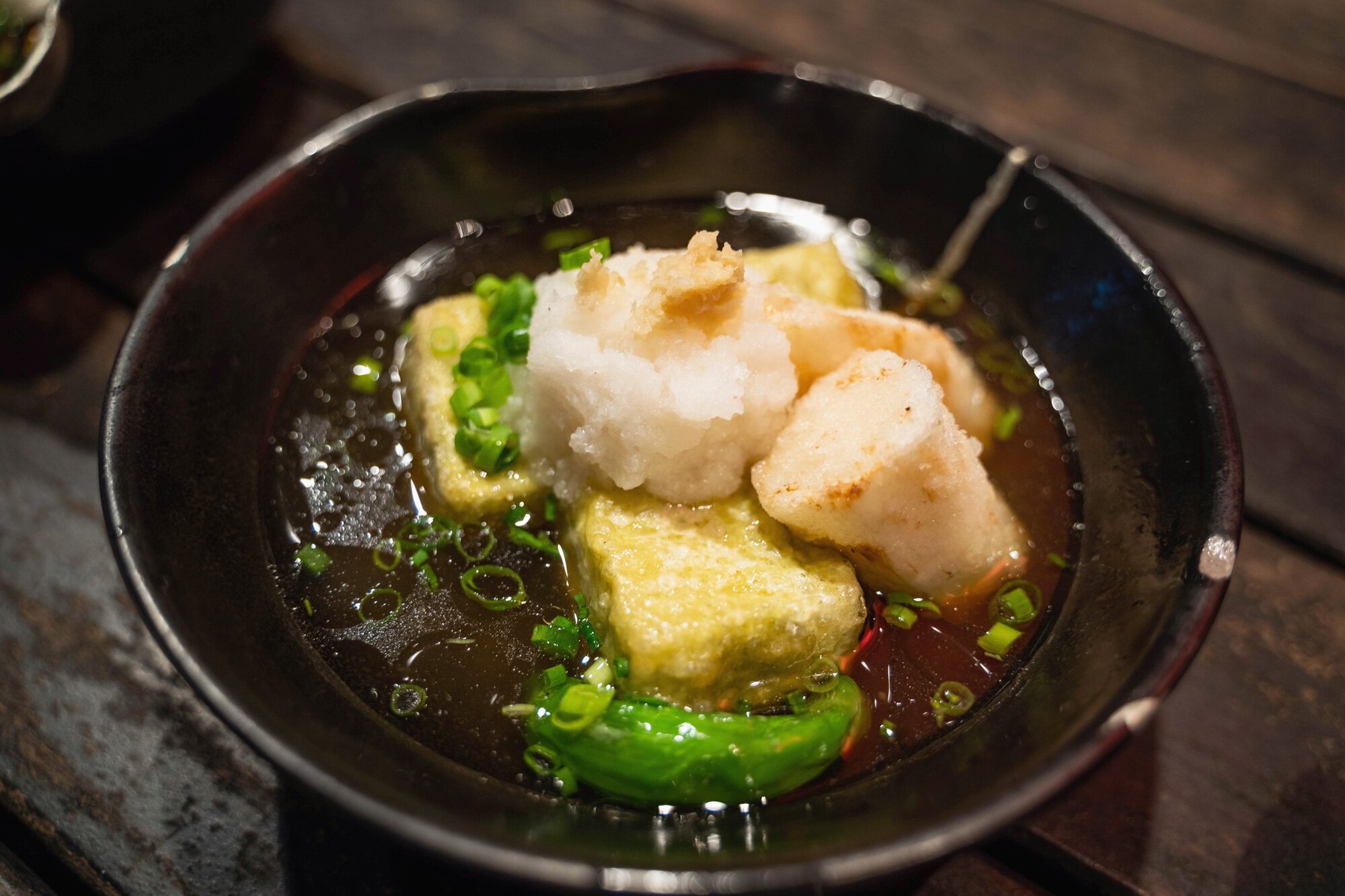
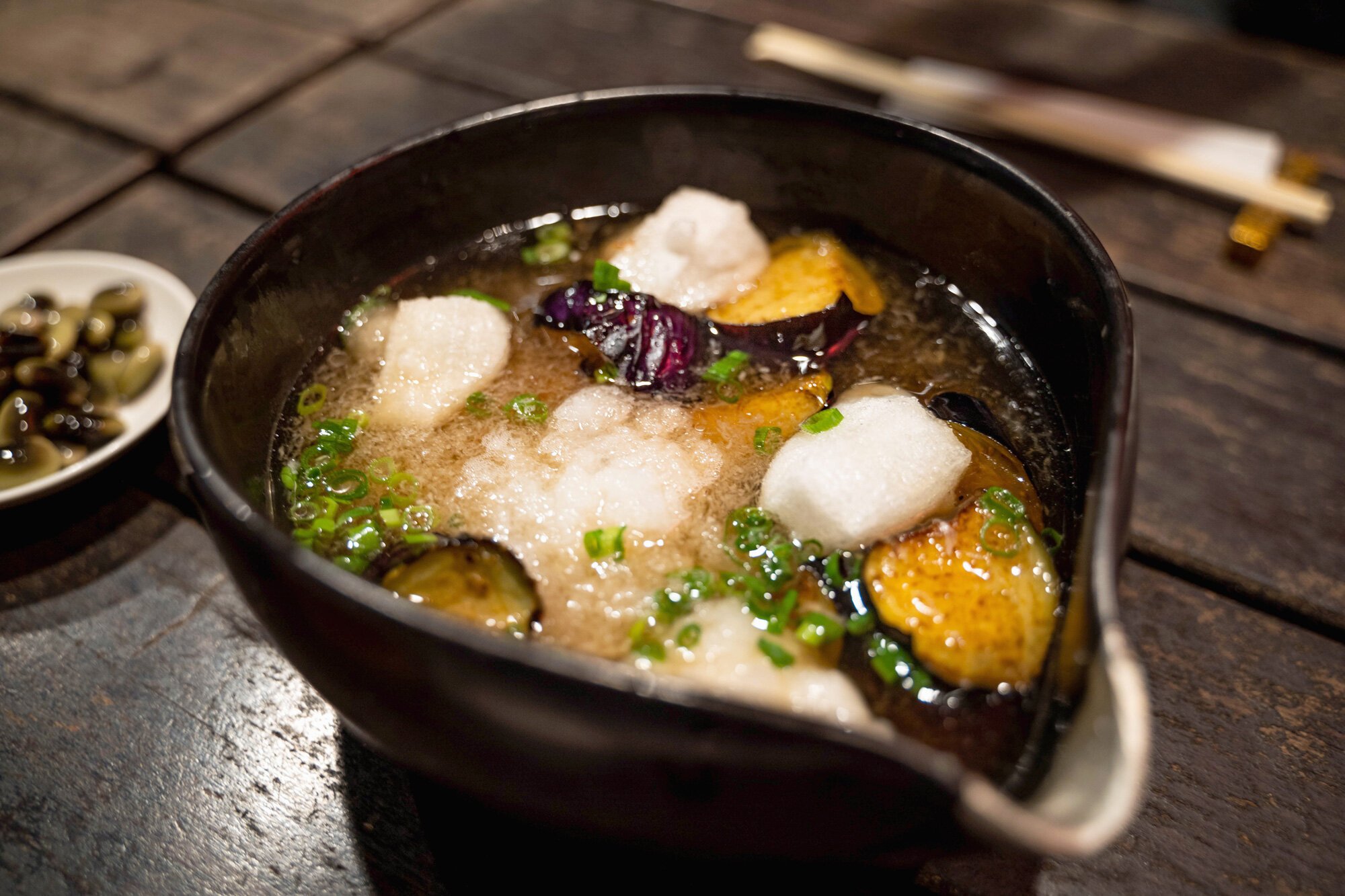
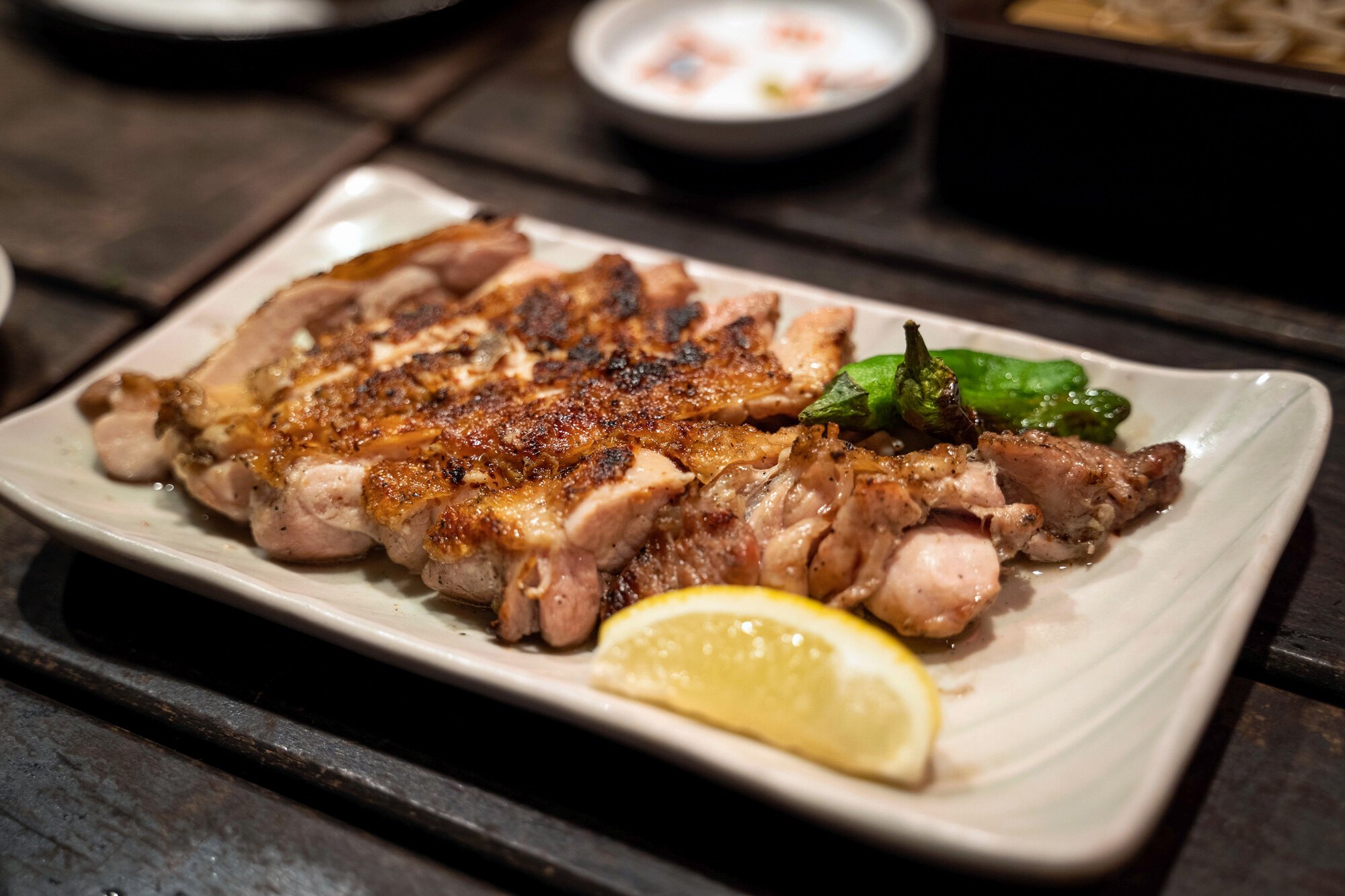
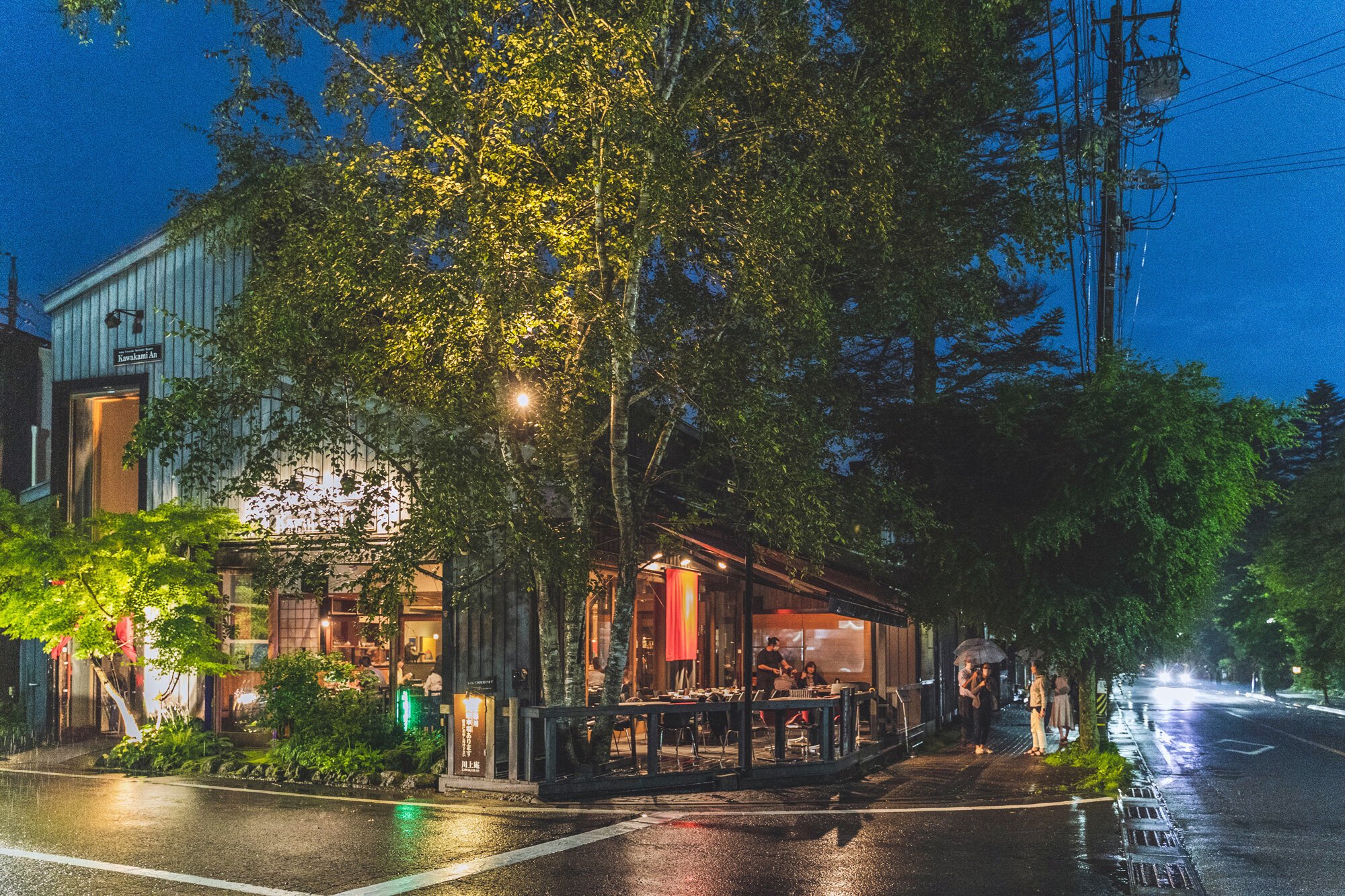
Nagano prefecture is known for soba, or Japanese buckwheat noodles, and Kawakami An is the most well known place for it in Karuizawa.
Their noodles are homemade and they have a variety of soba sets to choose from. And of course they have beer and nihonshu (Japanese sake) to go with it as well.
The restaurant has both indoor and outdoor seating and is dog-friendly. There’s a second location at Harunire Terrace, as well as locations in high-end areas of Tokyo.
My recommendation: Duck broth dip with cold soba. Tempura is really good too.
Sawamura
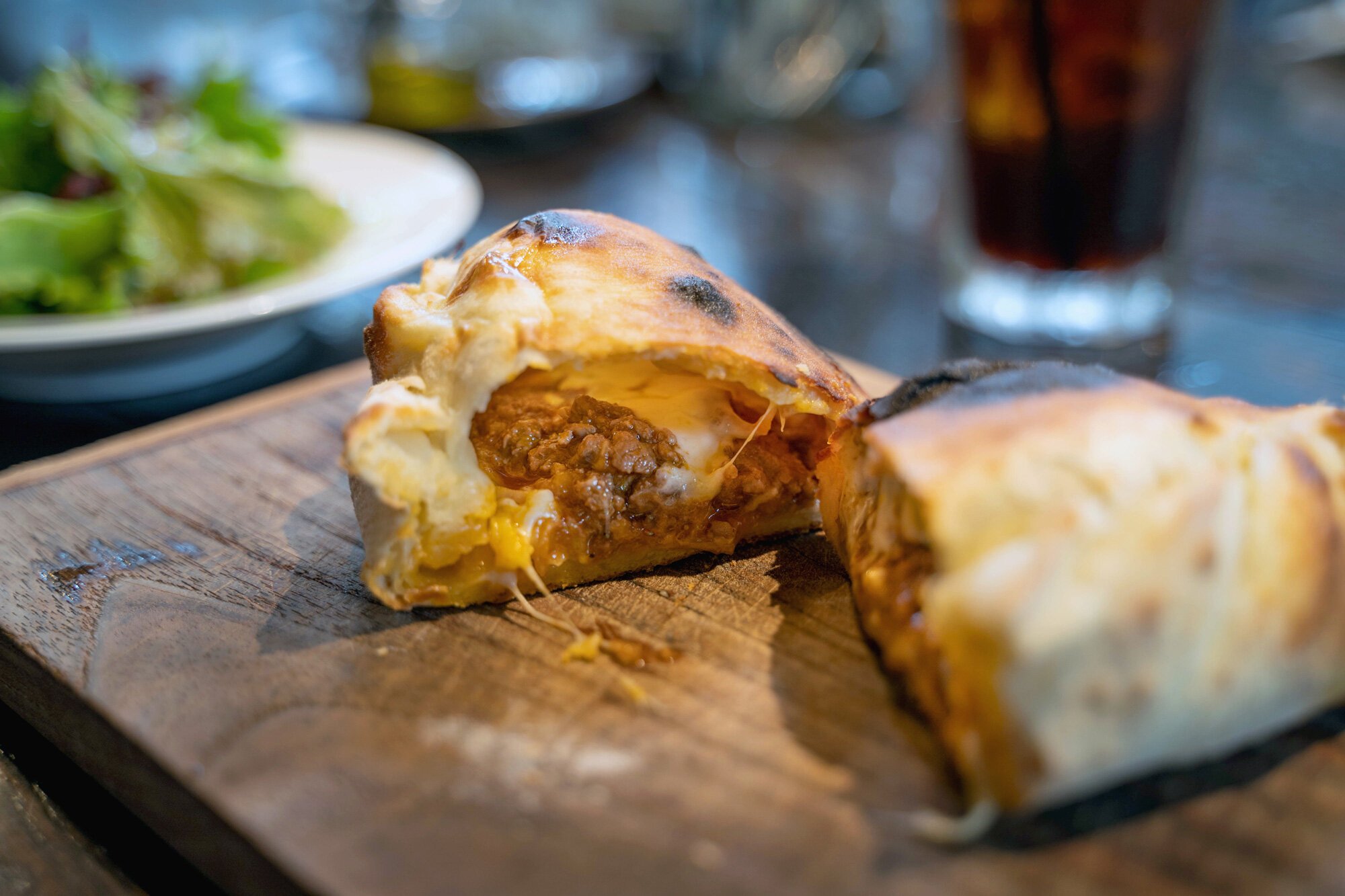
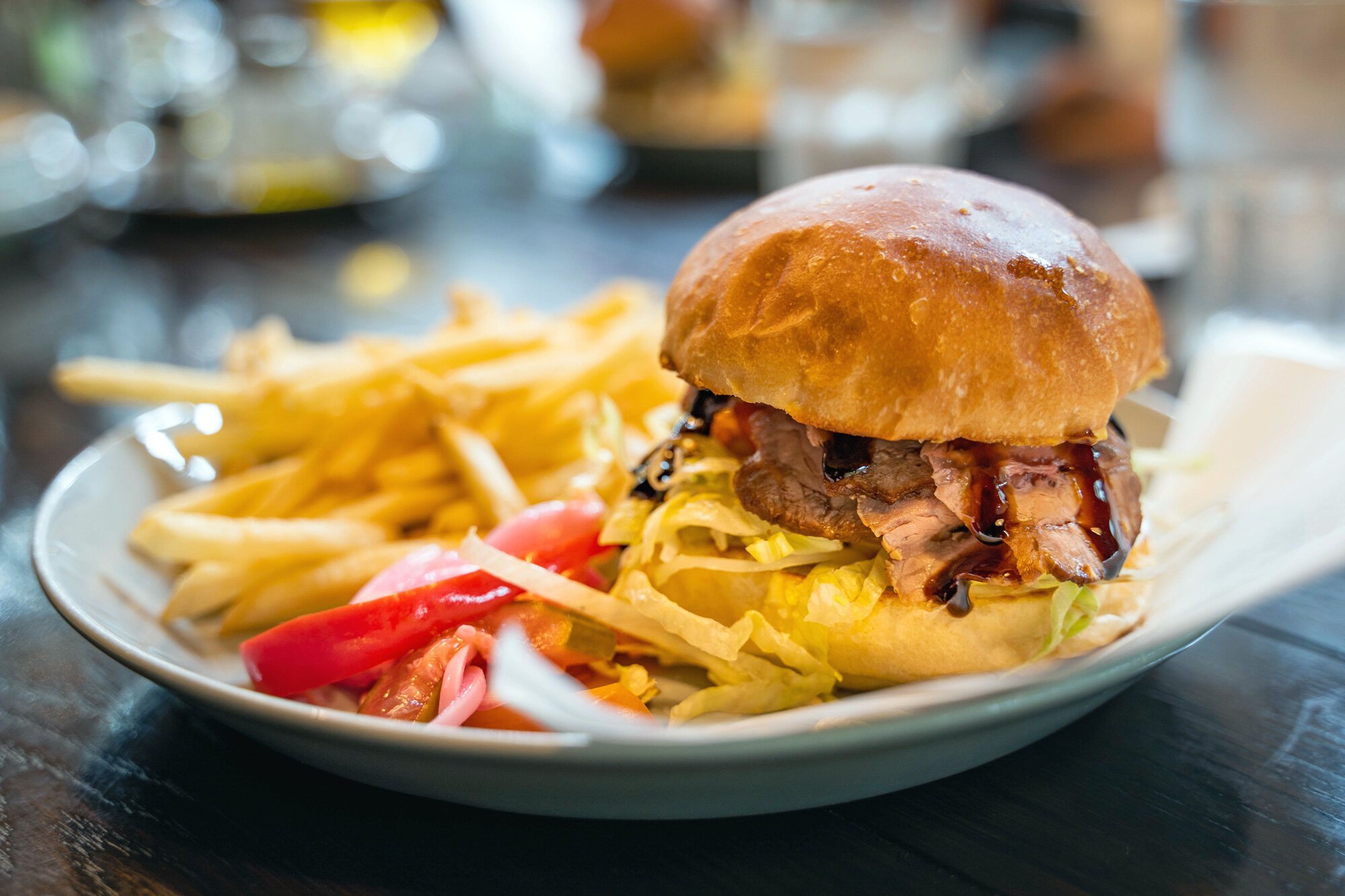
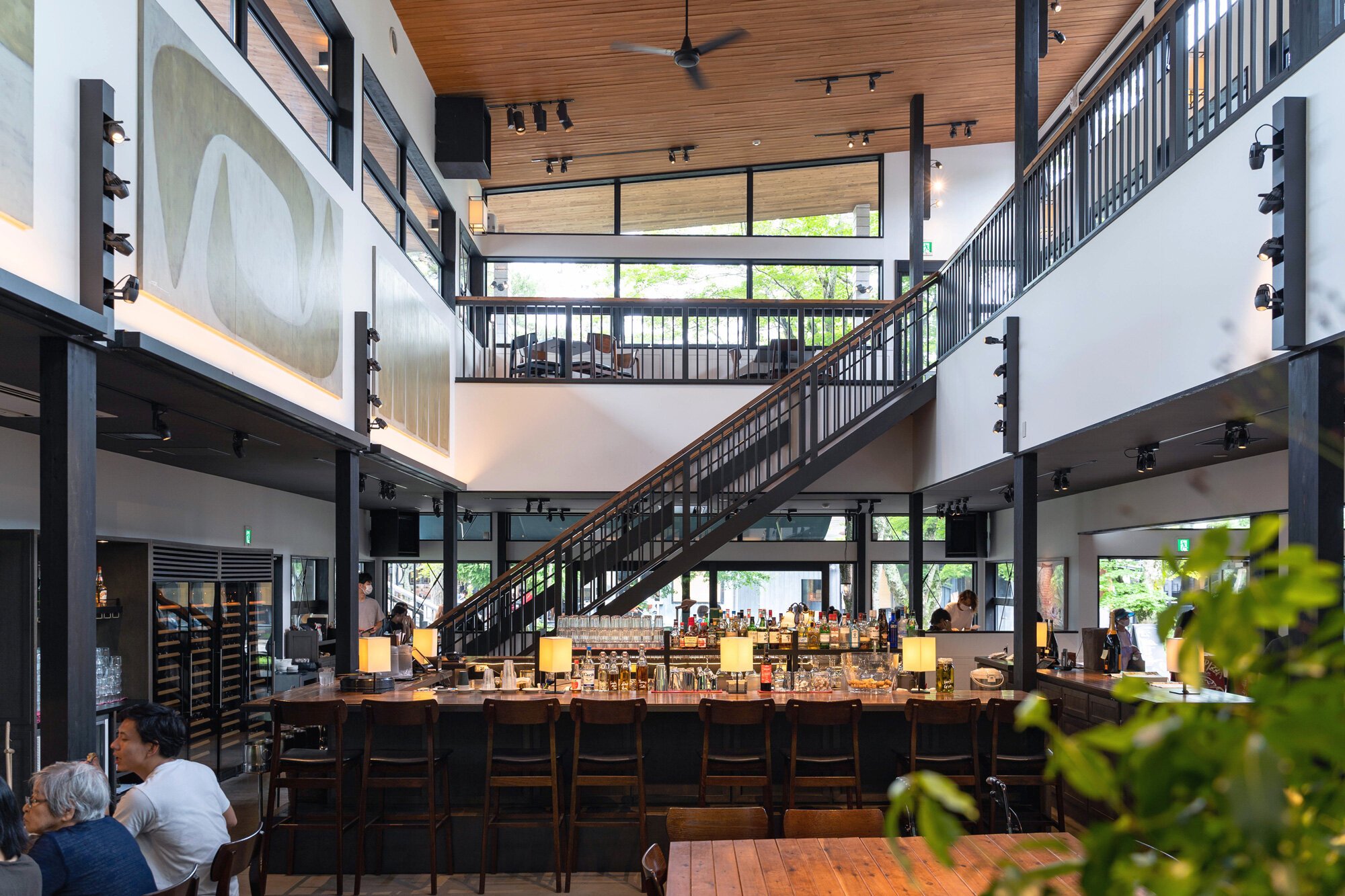
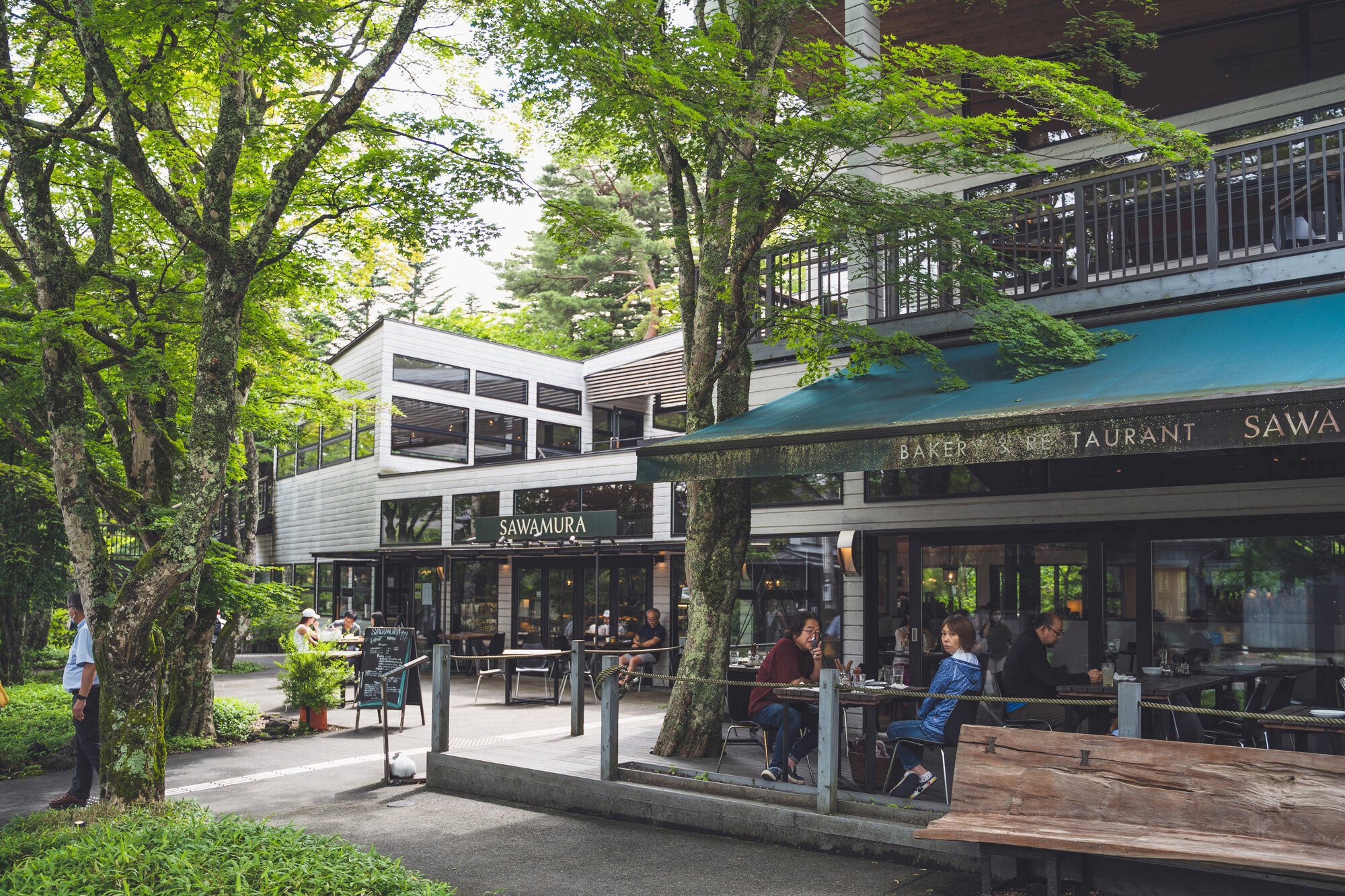
A European-style bakery with a Japanese touch. We stopped at their Kyu-Karuizawa location once and we also took out once for breakfast.
Sawamura uses top ingredients - 20 different kinds of flour, 4 homemade yeasts, mineral-rich Khanh Hoa salt, raw sugar cane from the Amami Islands and more - to produce the one-of-a-kind breads that they aim to make.
They have 2 locations in Karuizawa, in Kyu Karuizawa and Harunire Terrace, as well as locations in Tokyo and Nagoya.
Harvest Nagai
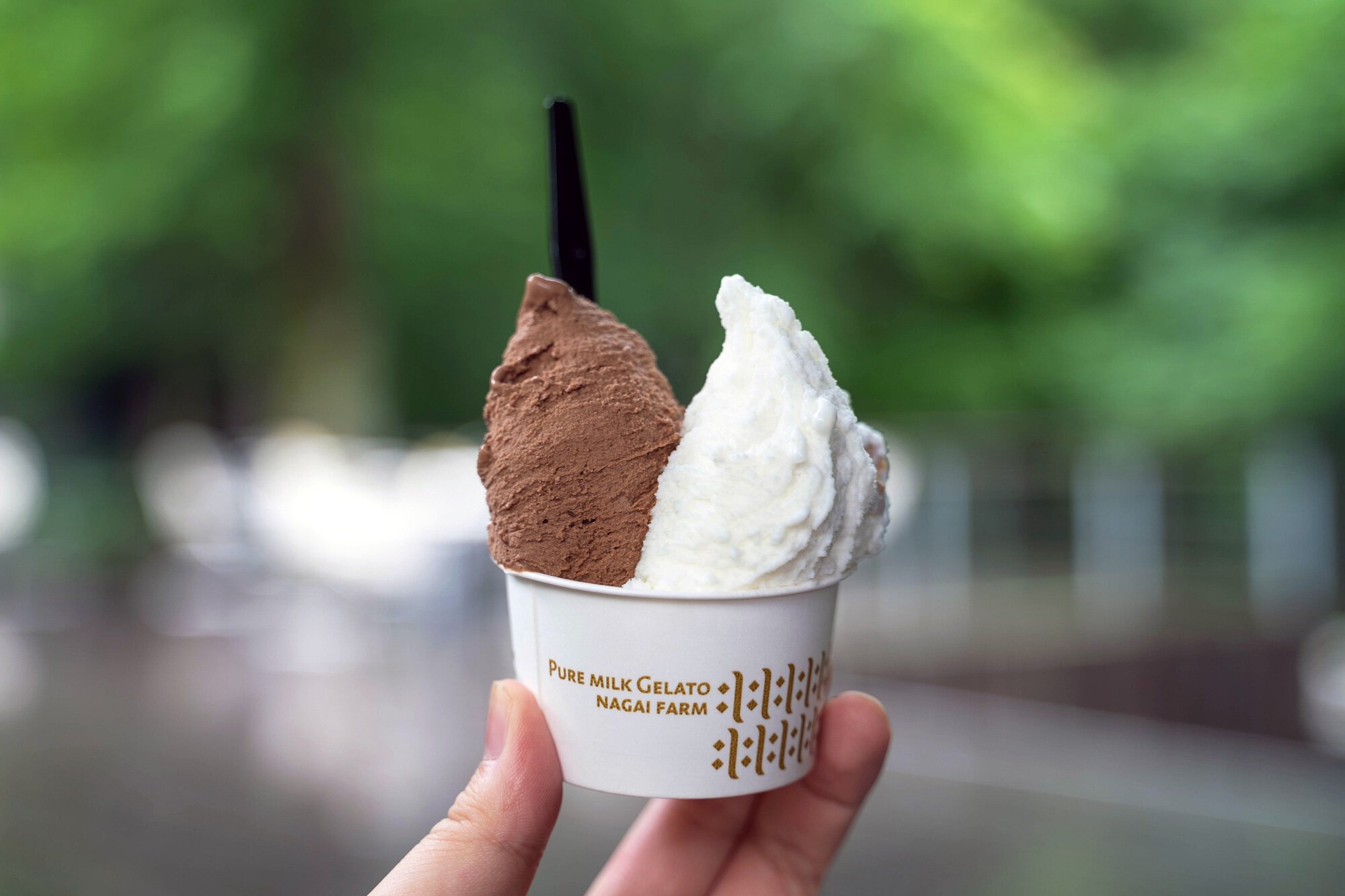
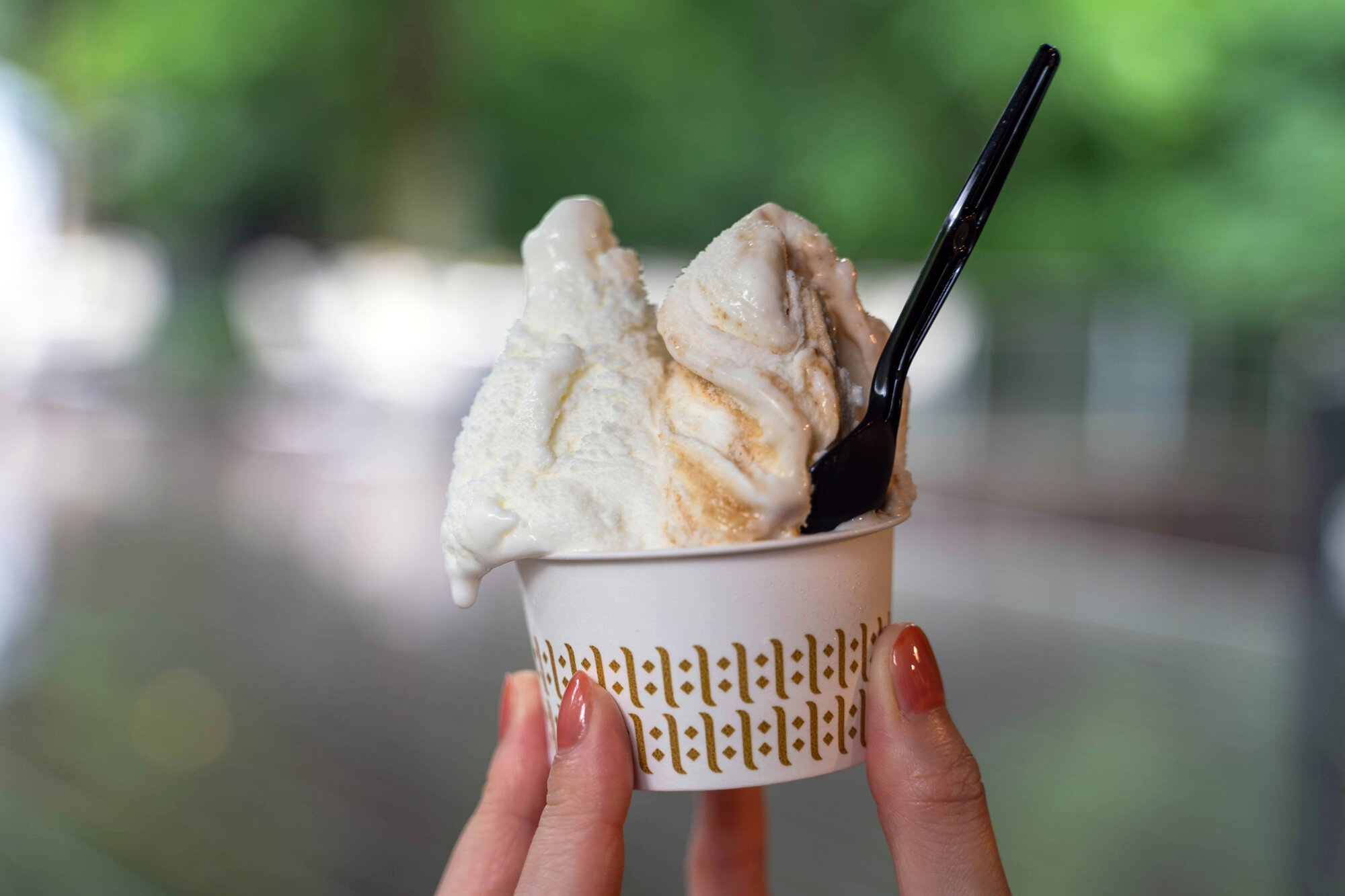
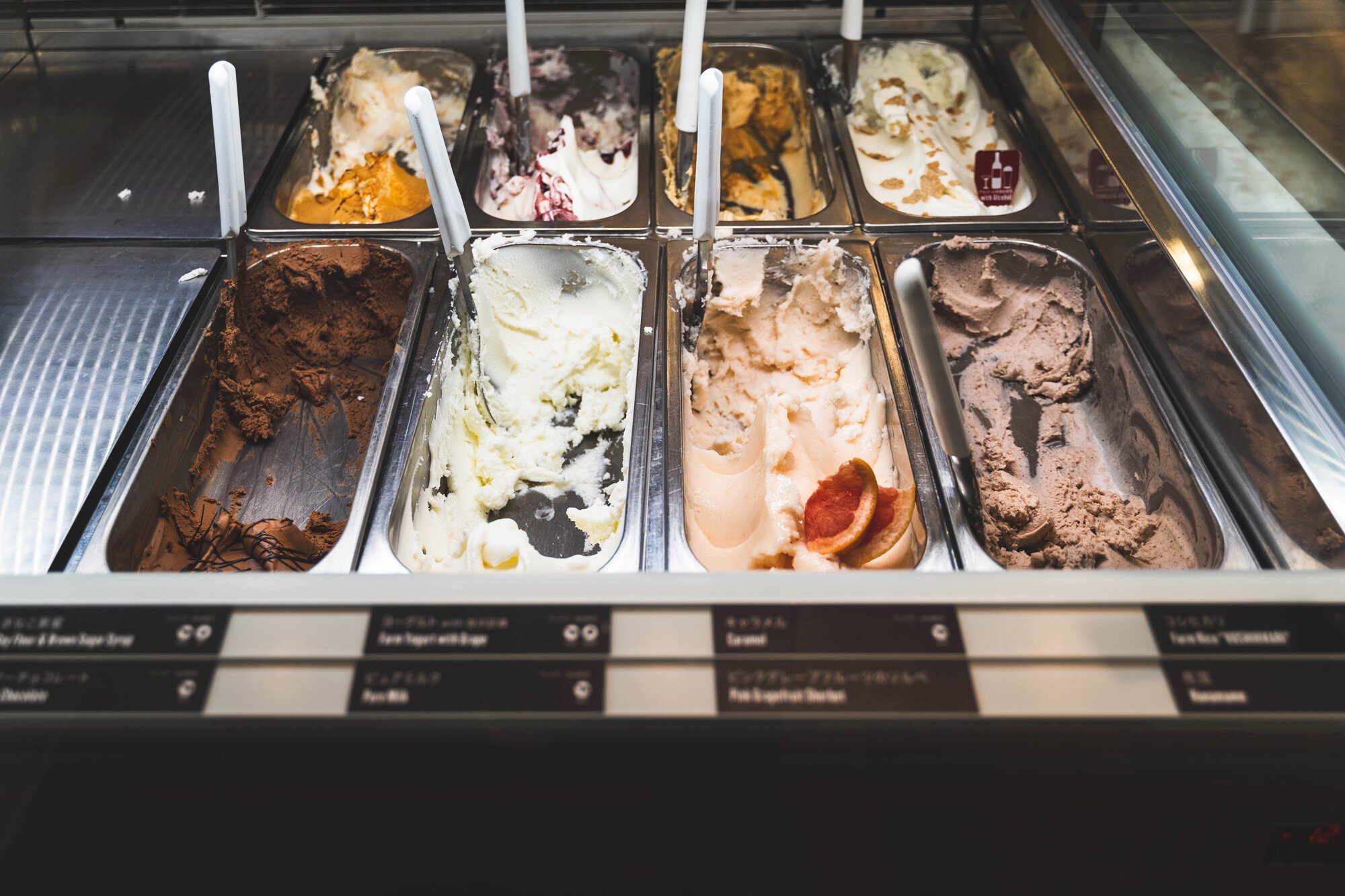
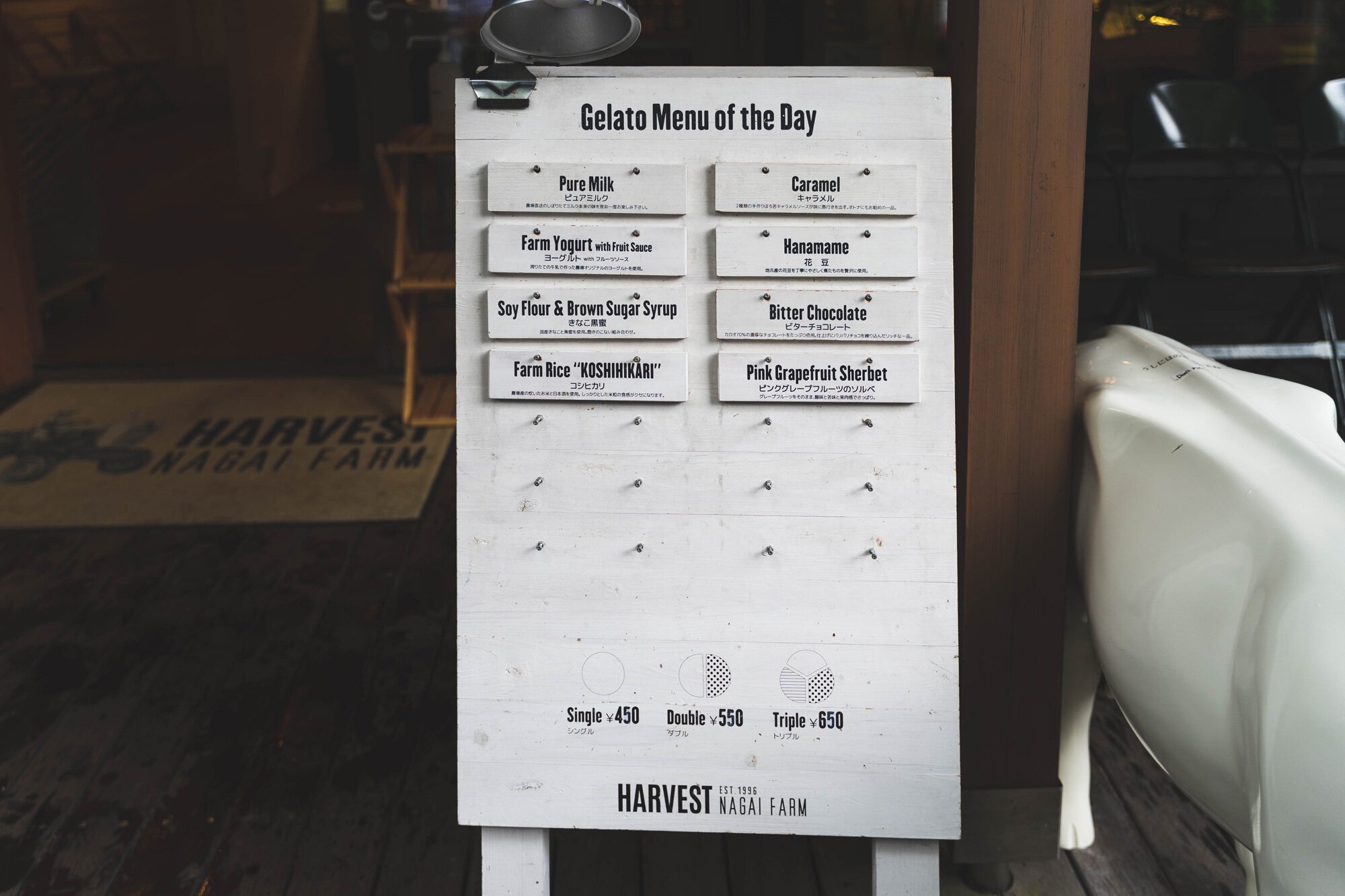
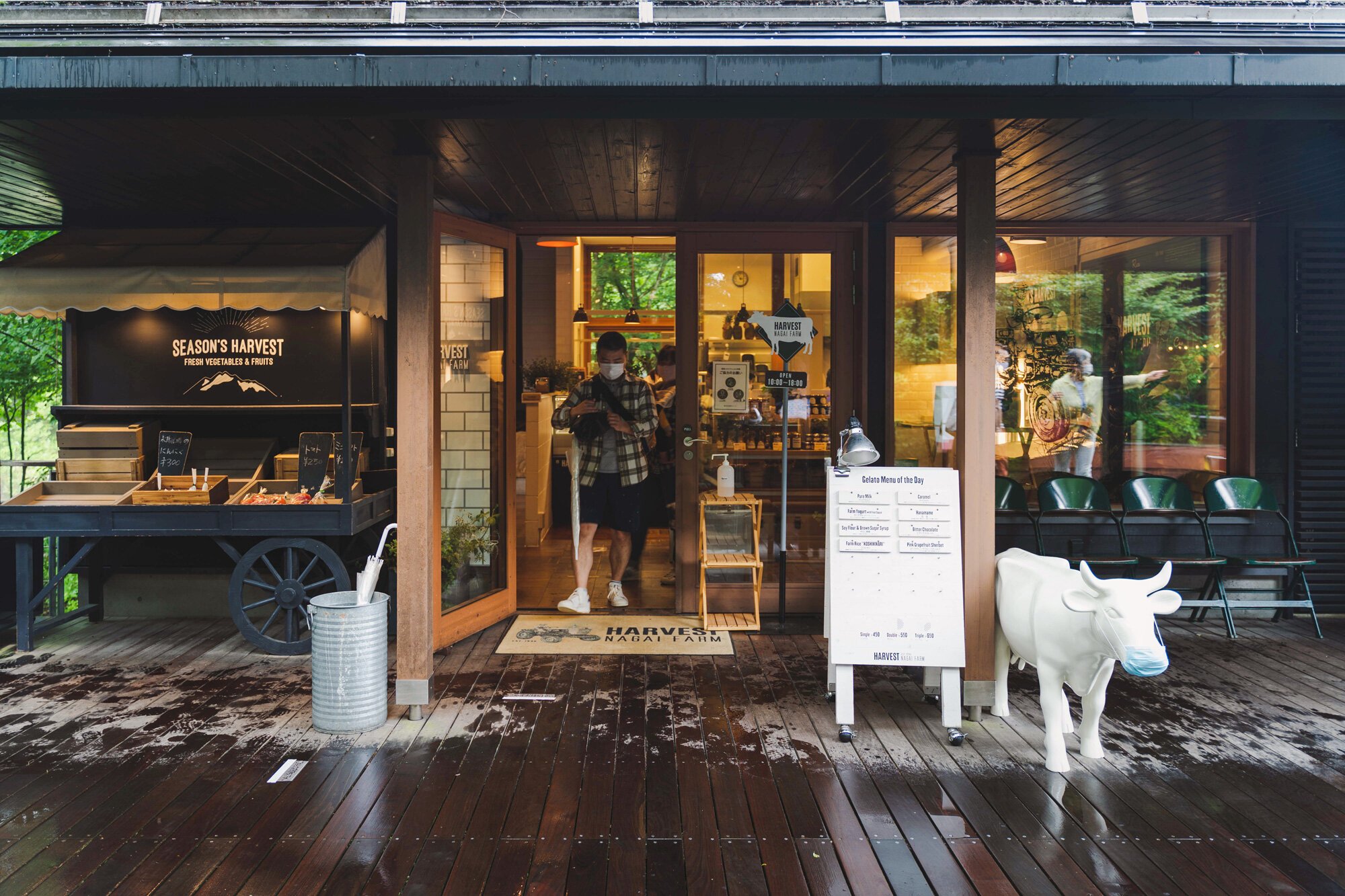
It’s only right that a place like Karuizawa has a farm-to-store brand that brings fresh fruits, vegetables, rice and dairy products from the prefecture to a place like Harunire Terrace.
Harvest Nagai Farm is just that, and they bring their fresh produce from their farm in Tomi, just a 35-minute drive away.
Their main attraction is their range of gelato flavors, all of which are incredibly delicious, creamy and uniquely Japanese.
My recommendation: Koshihikari rice, Pure milk, bitter chocolate gelato.
Maruyama Coffee
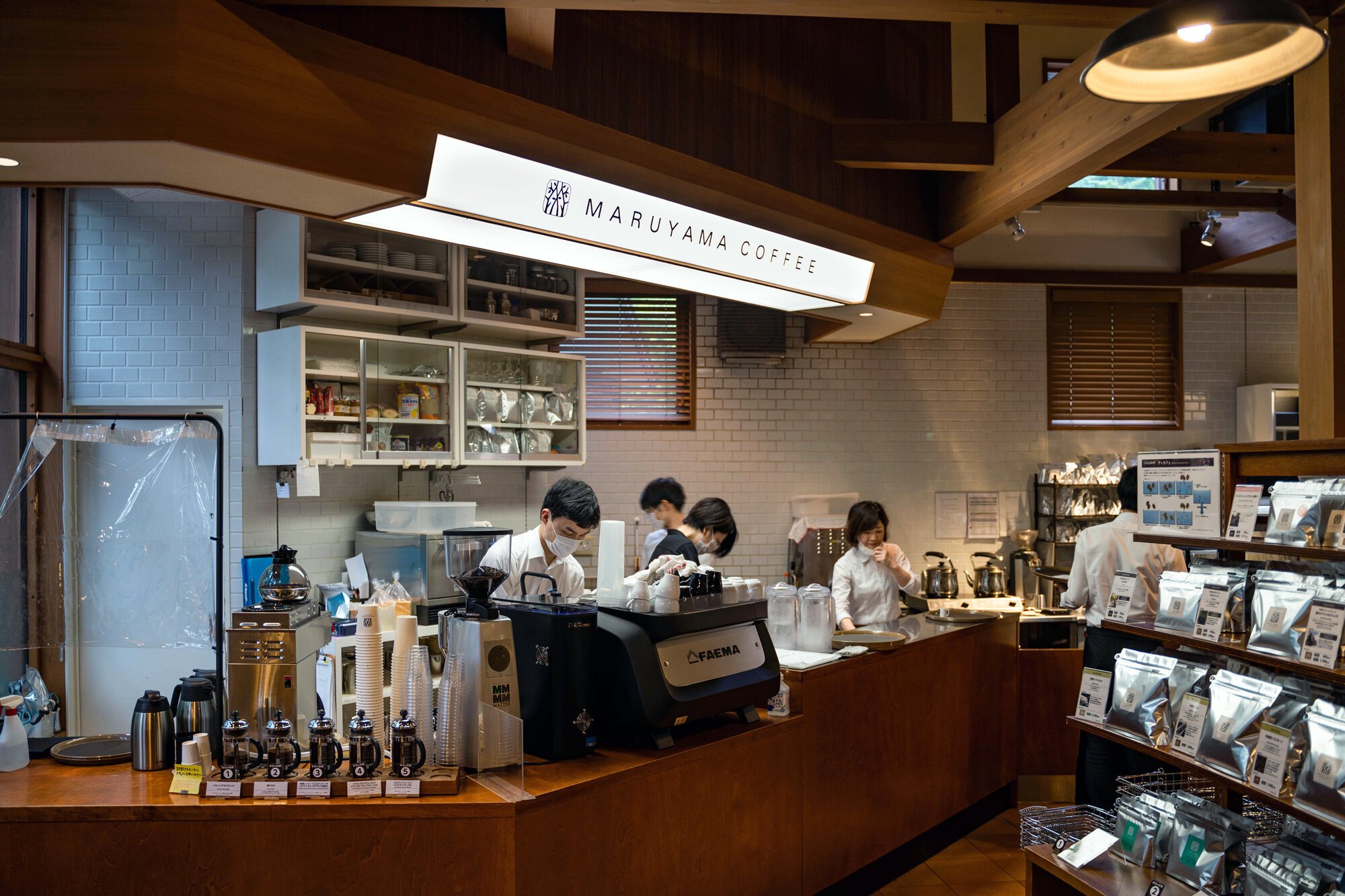
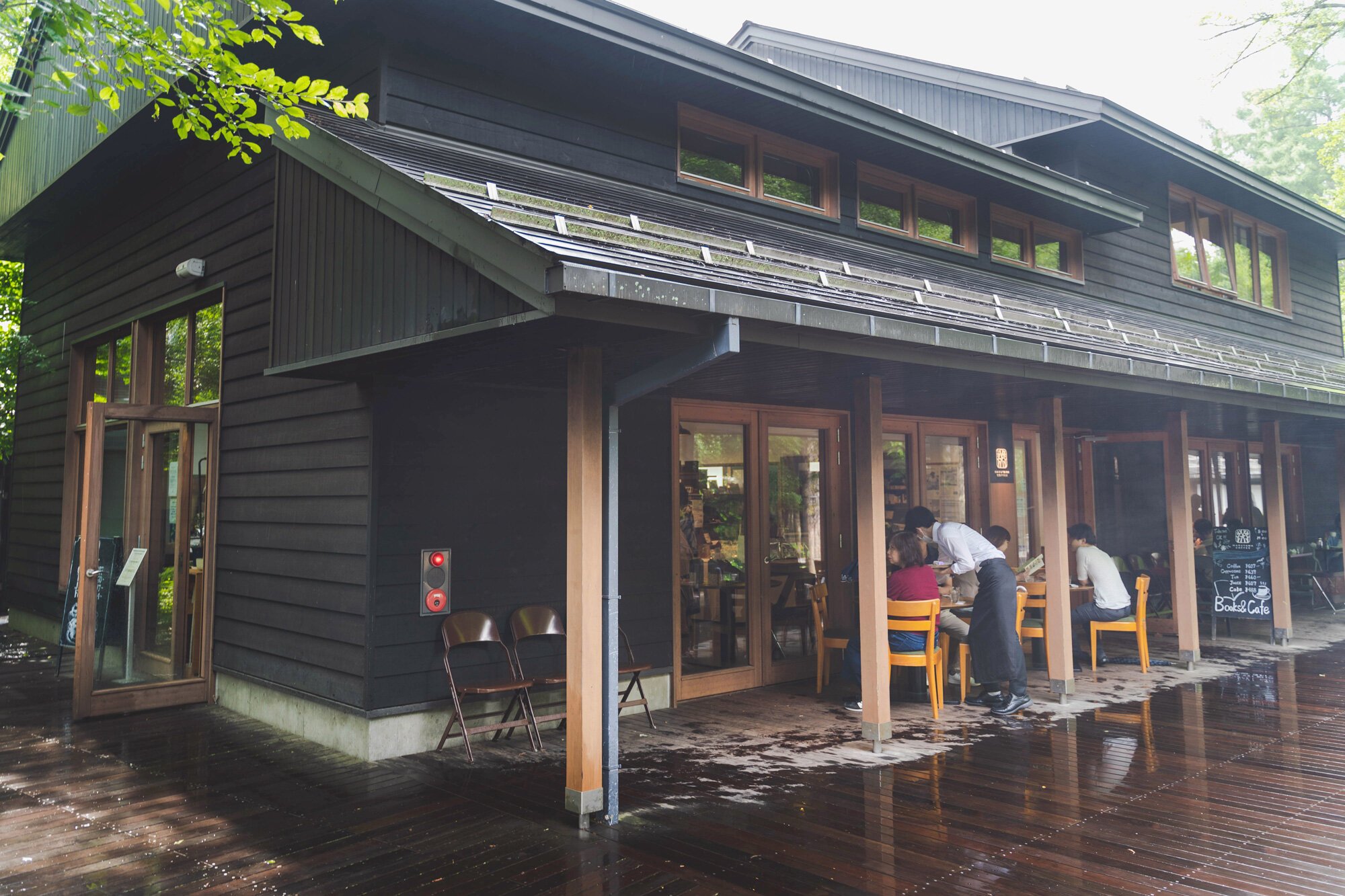
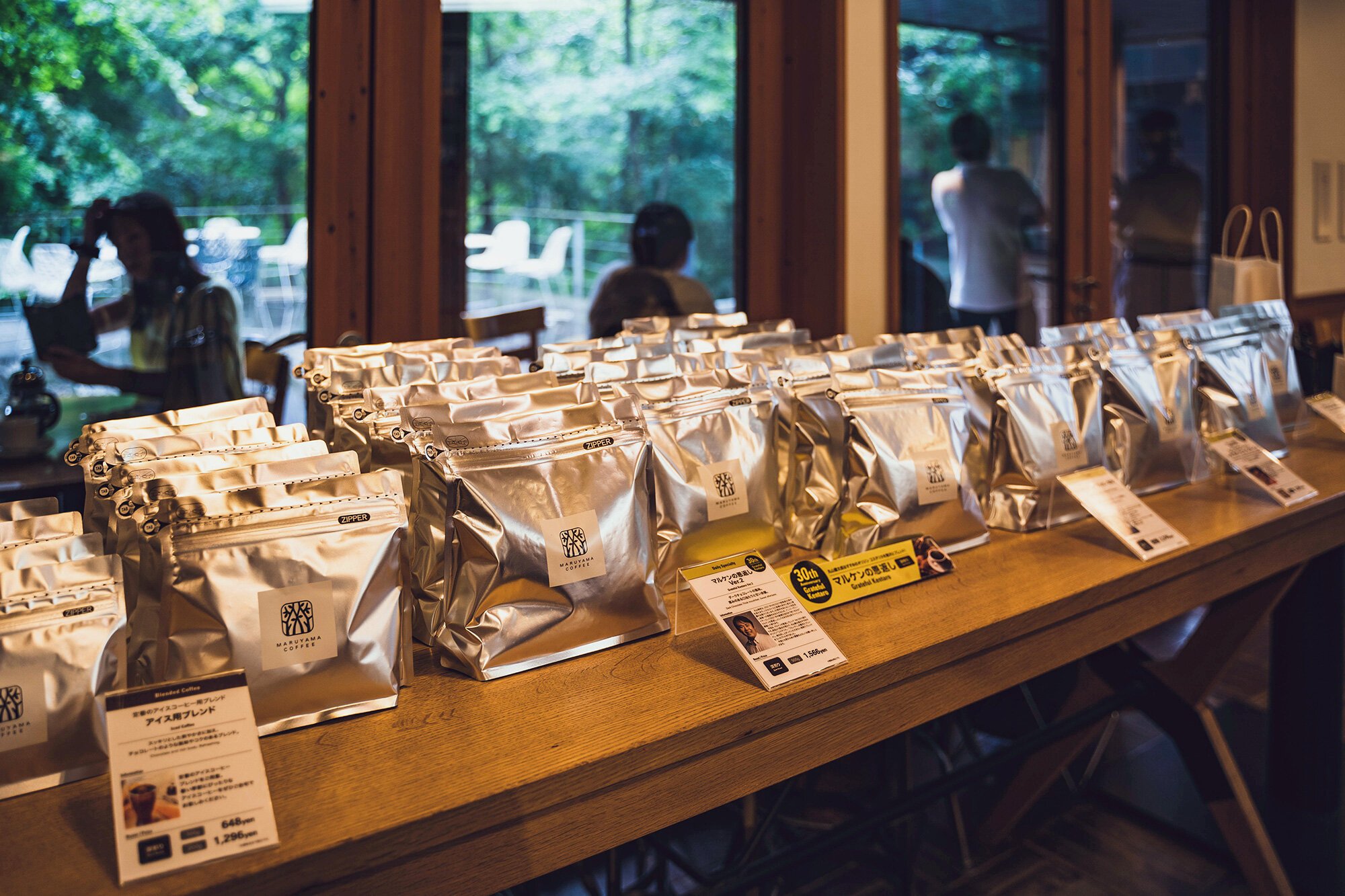

Maruyama Coffee is one of the notable Japanese coffee brands, and it arose out of Karuizawa.
Its founder, Kentaro Maruyama, spends half of the year traveling the world to visit coffee farms and buys beans direct from the source. Next to each bag being sold in the store is an information card talking about the farm as well as a photo of the owner.
Their baristas are also of top skill, and they had a run of champions at the Japan Barista Championship from 2009-2013.
The Harunire Terrace shop is a cozy spot to stop by for a cup and shop for some bags to bring home for yourself or as a gift. I’m glad I did.
Keep in touch:
More travels:
Nakai, Tokyo: Somenokomichi Festival
A small, residential area near Shinjuku, Nakai puts on an annual festival in recognition of its fabric-dyeing heritage.
Nakai is a small, residential neighborhood just northwest of Shinjuku Station
The area is historically known for kimono fabric dyeing and screen printing
Every February, the Somenokomichi Festival honors this tradition
Tokyo may be viewed as just a big city on the surface, but drift just a little away from the main hubs and you’ll find yourself in very local neighborhoods.
Nakai, which is in the Shinjuku Ward, is one of those areas. If you’re in Tokyo in February, you might be in luck.
How to get there
Nakai is just a 10-minute train ride from Shinjuku Station. Both the Oedo Subway line and Seibu Shinjuku lines will take you there.
Somenokamichi Festival
For one weekend in February, the quaint neighborhoods of Nakai and Ochiai comes alive for the Somenokomichi Festival.
The area was home to about 300 fabric-dyeing businesses from the early Showa era to the 1930s, and were concentrated around the Kanda and Myoshoji rivers.
In recognition of this history, about 50-60 pieces of Kimono fabric are flown to create a “River Gallery,” and it’s the central, most photogenic part of the festival.
About 87 shops in the area display specially made curtains, called “noren",” in front of their shops.
In the neighborhood alleys, shops and craftspeople set up tables and sell their homemade fabrics and other items.
At some shops, you can watch as professionals dye fabrics and make handmade products. The festival also holds English tours available for booking.
I went for the first time in 2020. While it’s not a big festival or anything, it’s nice to get to see a local area of Tokyo celebrate its craftspeople. And it’s not overcrowded!
http://www.somenokomichi.com [J]
Owariya
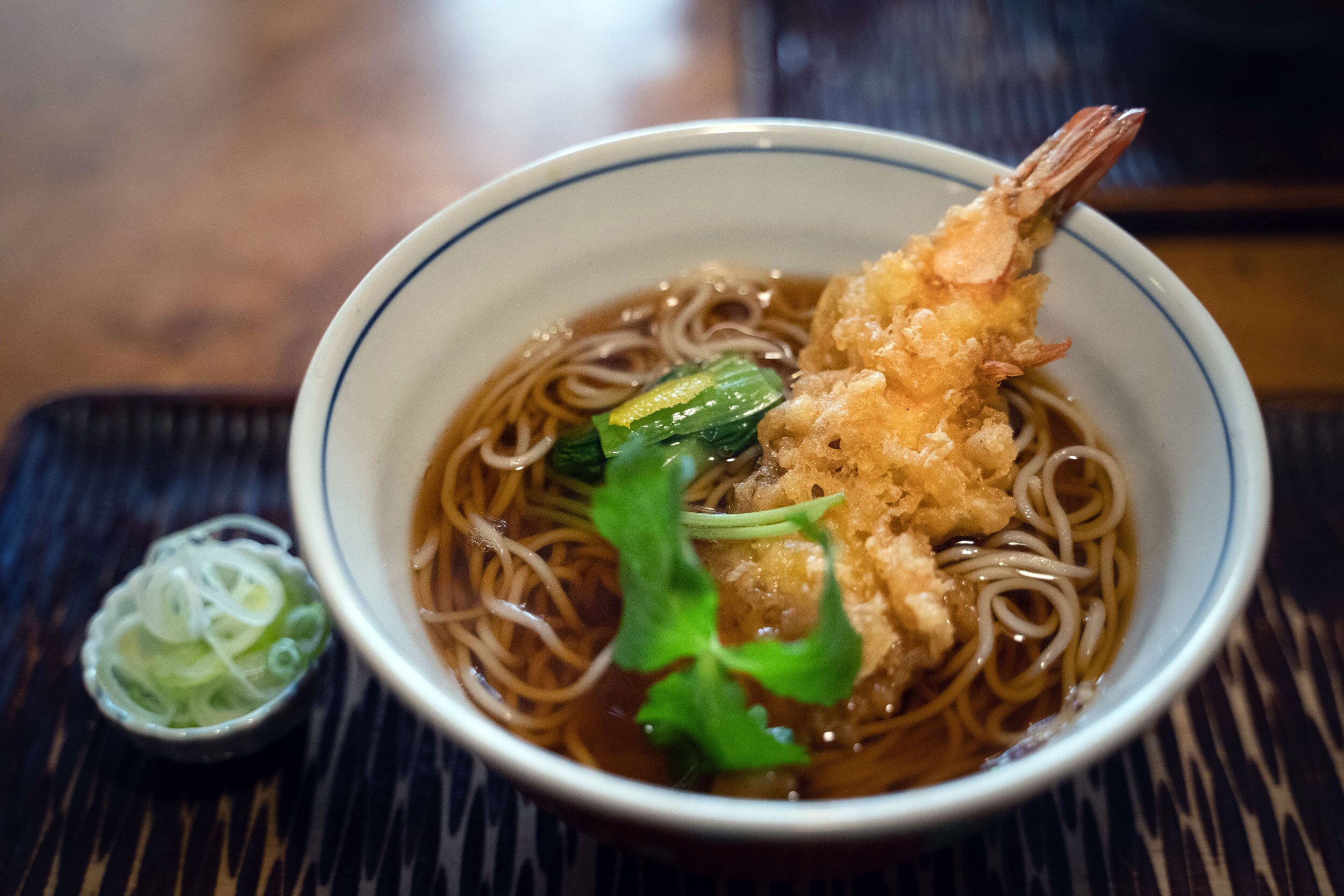
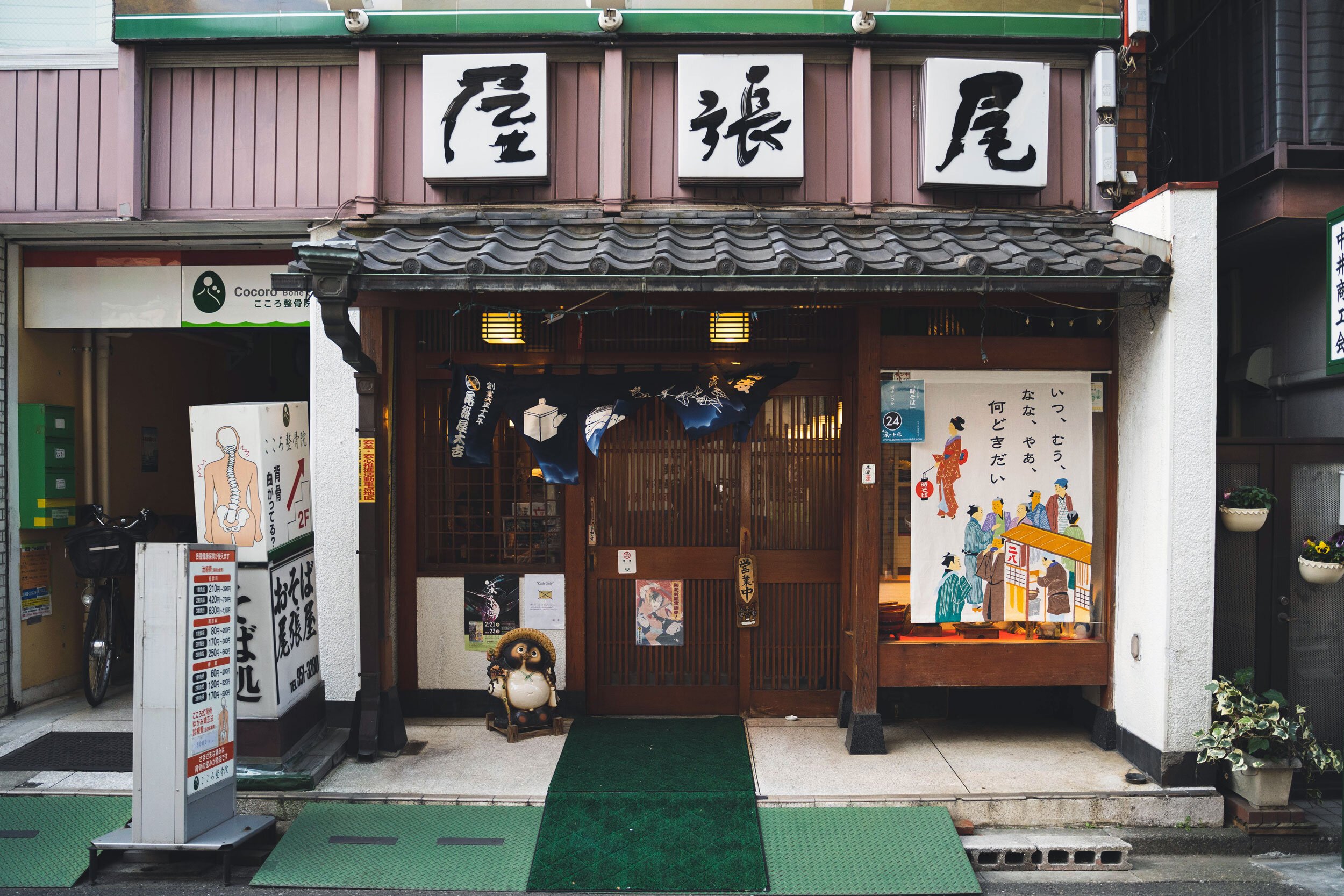
Just a couple blocks north of Nakai Station is a soba (buckwheat noodle) shop. True to Tokyo’s flavor, the broth is strong.
To be honest, it was good but not a must go or anything. I went during lunch time, so I popped in and had a bowl of tempura soba. Satisfied.
MAP
Keep in touch:
More travels
Nakano, Tokyo
Thought of as the second Akihabara, Nakano is an otaku haven as well as a photogenic, retro Tokyo playground.
Nakano is a neighborhood just a few minutes west of Shinjuku
The area is known as the second, less commercialized Akihabara, full of otaku entertainment
It’s a fantastic, less crowded sakura cherry blossom spot in the spring
Some say Akihabara has become just another tourist spot. So where else can people go to get their anime and manga fix? Or how about a place just to experience an authentic, retro Tokyo vibe?
Nakano.
For otaku and non-otaku alike, Nakano is a great area to visit because it still holds a lot of older, “Showa” Tokyo, post-World War II vibes.
How to get there
Nakano is really easy to get to as it’s just a 4~7 minute train ride west from Shinjuku station on either the JR Chuo or Sobu line.
About Nakano
For otaku and non-otaku alike, Nakano is a great area to visit because it still holds a lot of older, “Showa” Tokyo, post-World War II vibes.
After moving to Tokyo, it took me a while to discover Nakano and it wasn’t until I went to check out the cherry blossoms (More on that later on) there that I realized how cool the area was. I think it’s one of the more underrated areas in the city.
Nakano, particularly the north side of JR Nakano Station, has a bunch to explore whether you’re into anime and manga or not.
While not a hub for high fashion, there are over 3,000 shops in what is called Heartbeat Nakano [J], a shopping association consisting of 59 shopping areas divided into 10 blocks.
Walking north from the station, you’ll go through Nakano Sun Mall, an approximately 250 yard (225 meter) shopping arcade of restaurants and miscellaneous shops. At the end of this is Nakano Broadway.
Housing in Nakano
Being a larger neighborhood on a convenient train line, Nakano is seen as a desirable place to live by many. The average monthly cost for a 1K studio apartment is 98,100 JPY (USD $624) while a 1LDK single bedroom is 181,000 JPY (USD $1,151) as of June 2024. [J]
Nakano Broadway
An indoor shopping complex that dates back decades, Nakano Broadway has about four floors of shops selling anime and manga items, figurines, “idol” goods, collectables and more. Mandarake, a large chain for second-hand collectables, has a large presence here, and many come to sell and trade collectables.
It’s quite the geek playground.
It’s not limited to things Japanese either. I’ve seen a fair share of Star Wars goods, shops selling American toys from the 80s and 90s, military surplus items, classic Rolex watches - anything collectable, really.
https://nakano-broadway.com [J]
MAP
If you’re not into that type of thing?
Sanbancho (North Exit Alleys)
On the east side of Nakano Sun Mall and Nakano Broadway is an area of alleys with numerous bars and izakayas. Big signs displaying Japanese lettering and old steel and painted glass street lamps make you feel as if you’ve been transported back to old Tokyo.
The people are much the same with many dressed in retro fashion, living life by their rules, doing what they want. It’s a far and refreshing cry from the rush of black suits going through Shinagawa or Shinjuku Stations.
Nakano-dori Ave Sakura
Nakano is one of the best areas to see sakura, or cherry blossoms, in Tokyo.
To the north of JR Nakano Station, cherry blossoms line Nakano-dori Ave for about 2 km. Unlike many other cherry blossom spots around Tokyo, this one is big and isn’t as crowded.
There’s a cherry blossom festival at Arai Yakushi Park [MAP] on the weekend during the season’s peak, and a nice photo spot where the Seibu Shinjuku train passes under the pinkish-white sakura flowers. [MAP]
Nakano is one of the most underrated areas that I’ve come across in Tokyo. Otaku folk love it, but so do many others who want that more authentic Tokyo experience.
Daily Chiko
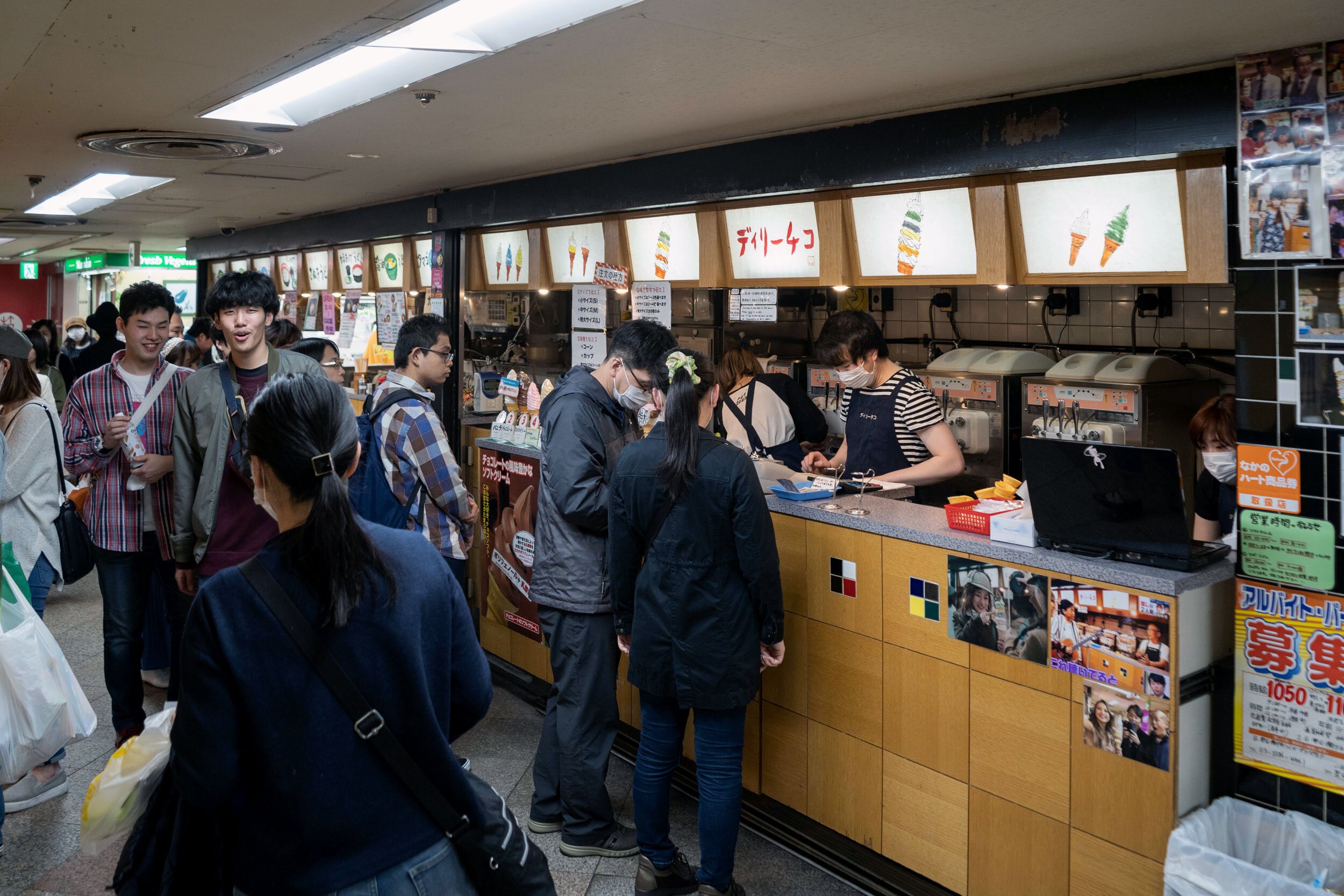
In the basement of Nakano Broadway is this popular soft-serve ice cream shop. If there’s no line or crowd of people enjoying their snack, you’ll notice this place by all the photos of Japanese celebrities on the walls.
Their most noted for their 8-layer challenge, an 8-inch (20 cm) tall colorful stack of soft-serve for about US $5. You can choose the smaller cones, of course, and they typically have flavors like vanilla, chocolate, ramune soda, matcha, etc. Refreshing.
MAP
Bia Hoi Chop
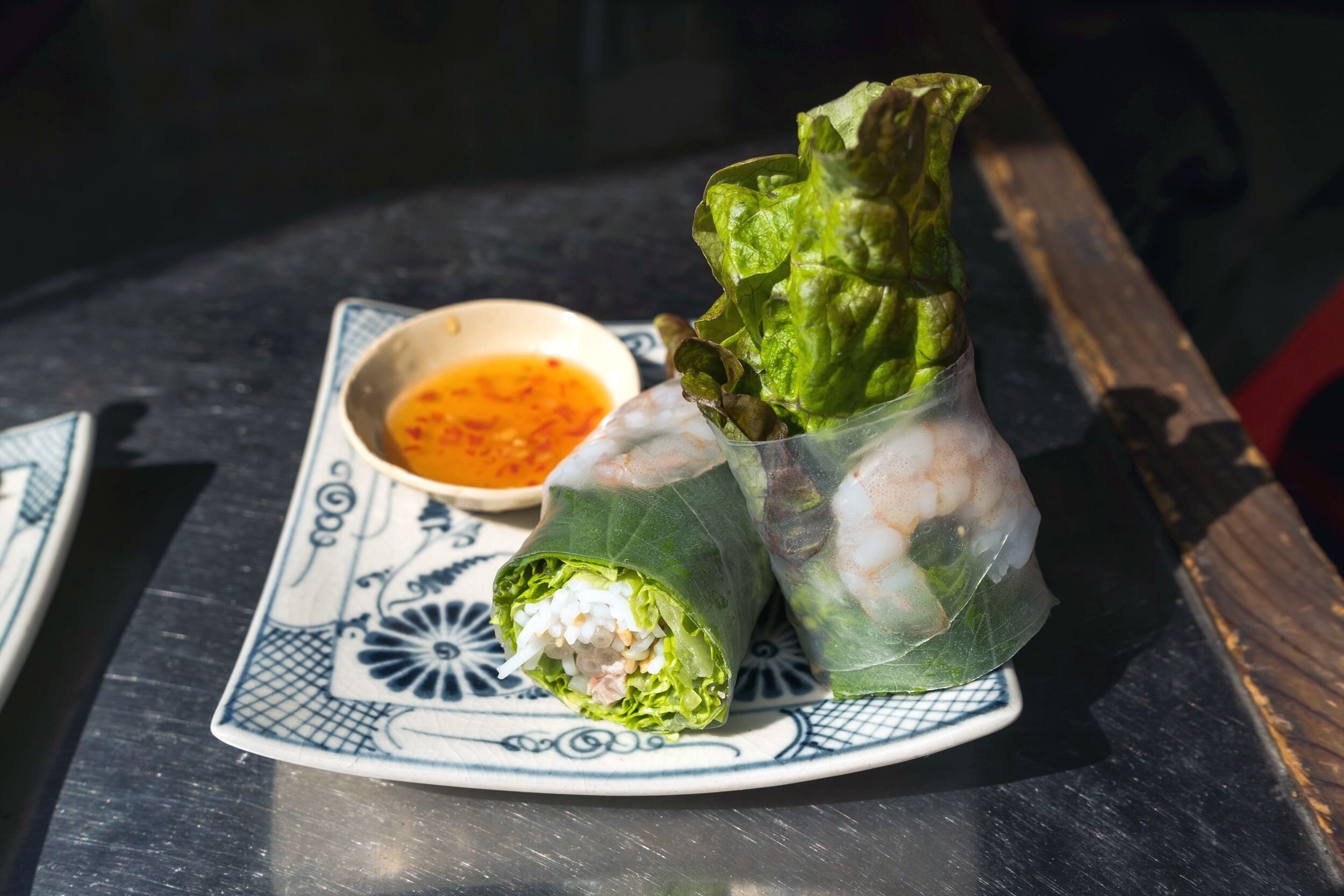
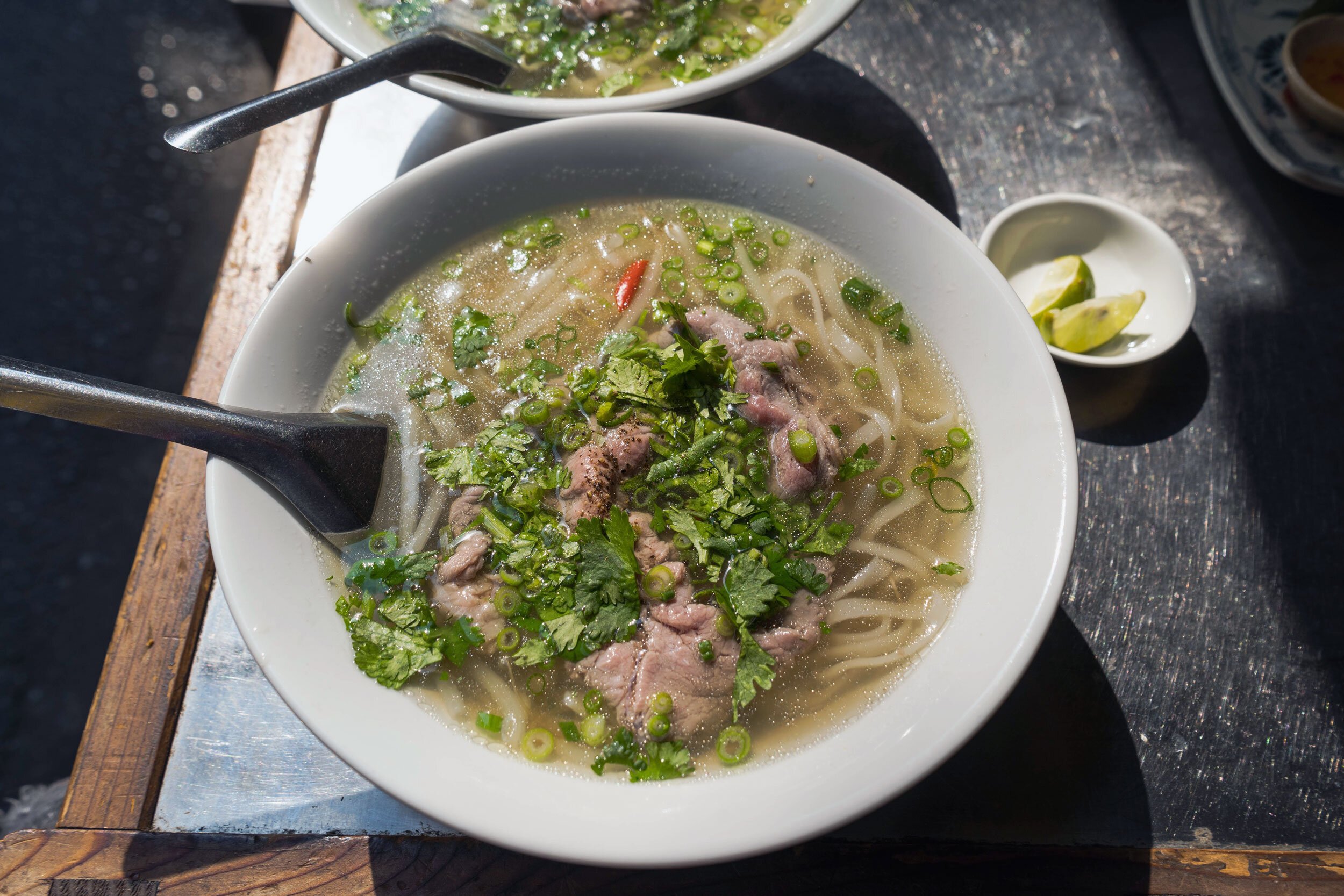
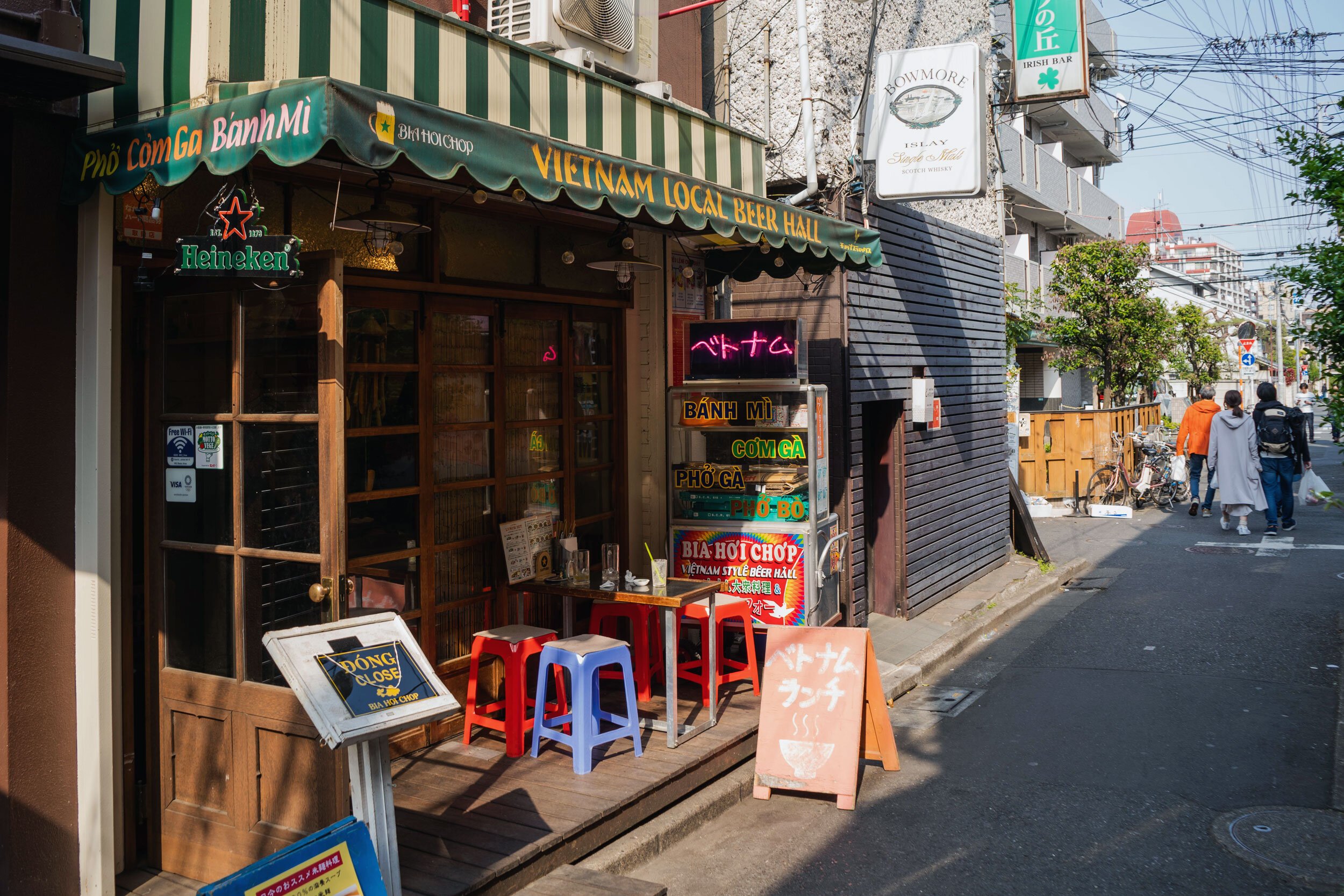
In the alley area of Nakano, is Bia Hoi Chop, a good option for anyone looking to take a break from Japanese food. Rated as a 1-star popular and highly recommended restaurant on Japanese food app Retty, this casual Vietnamese cafe is perfect to stop at for a bite to eat while exploring the area.
The ambiance is very laid back, with food being served to customers on plastic stools in a space decorated in colorful wall art. Perfect to match the area’s subculture vibe.
Keep in touch:
More travels:
Tokyo: Winter Illuminations
Some of the gorgeous winter illumination spots around Tokyo.
When it comes to illuminations during the Holidays, Japan doesn’t hold anything back. There are gorgeous displays in many cities around the country that are worth making a trip for, including a number of locations in Tokyo that are nothing short of gorgeous.
Almost all of them are free to see, and run at varying schedules between November and February.
Here are the ones I’ve been to that I recommend if you’re in town during the season.
Marunouchi
The stretch of Marunouchi Naka-dori Ave between the Gyoko-dori walkway (directly in front of Tokyo Station) and Hibiya Station gets beautifully lit up between early November and mid-February.
The warmer, champagne-colored, low-energy lights are a nice contrast to the cooler blues that are common around Tokyo during the season, and makes for a nice walk.
Some buildings along the street like the Marunouchi Building have their individual decorations or events happening as well. Tokyo Midtown Hibiya also has their own lights, so it’s easy to see at least a few illuminations in one area.
STATIONS: Nijubashimae, Hibiya, Tokyo, Yurakucho
TRAINS: Chiyoda Line, Hibiya Line, Mita Line, Yamanote Line, Keihin-Tohoku Line, Yurakucho Line, Chuo Line, Marunouchi Line, Utsunomiya Line, etc.
MAP
Tokyo Midtown Hibiya
At the southern end of the Marunouchi Naka-dori Ave illuminations is the second Tokyo Midtown location at Hibiya. The courtyard at the main street level entrance hosts their HIBIYA Magic Time Illumination between mid-November to mid-December.
The main attraction is the “Starlight (Christmas) tree” (until Christmas) that you can walk into. In it is a light show with small, digital animations synchronized to music.
STATIONS: Hibiya, Yurakucho
TRAINS: Chiyoda Line, Hibiya Line, Mita Line, Yamanote Line, Yurakucho Line, Keihin-Tohoku Line
https://www.hibiya.tokyo-midtown.com
MAP
Tokyo Midtown
The illuminations at Tokyo Midtown in Roppongi is one of the most impressive ones. More than just lights, it’s more like an event, putting on a show for a few minutes. Each year differs slightly but tends to focus on a space theme.
While it’s not exactly Christmas-y, it is an installation that will wow. It’s also within walking distance from the Keyakizaka lights near Roppongi Hills nearby.
STATIONS: Roppongi, Nogizaka
TRAINS: Oedo Line, Hibiya Line, Chiyoda Line
MAP
Keyakizaka (Roppongi Hills)
Running right alongside the Roppongi Hills area is Keyakizaka-dori Street. Down below running alongside the street are LED lights alternating between an icy white and red. When viewing them from the bridge above, the surrounding buildings frame a view of Tokyo Tower in the background.
These illuminations are within walking distance from Tokyo Midtown, so you can conveniently check out both. They typically run between mid-November until Christmas.
STATIONS: Roppongi
TRAINS: Oedo Line, Hibiya Line
MAP
Omotesando
What better a way to add to one of Tokyo’s most fashionable areas than to have its main avenue lined with champagne-colored lights during the Holiday season.
The lights run from Omotesando Station to Meji-jingumae Station from the end of November until the start of January. The main avenue is already a nice walk to come across some young trendsetters and models, and the illuminations in the evening adds a magical touch.
STATIONS: Omotesando, Meiji-jingumae (Harajuku), Harajuku
TRAINS: Chiyoda Line, Ginza Line, Hanzomon Line, Fukutoshin Line, Yamanote Line
MAP
Omotesando Hills
In the middle of the Omotesando area is Omotesando Hills, a higher end shopping mall. The building, designed by Tadao Ando, is in a diamond-like shape that creates an open space in the center. Each year, the mall teams up with artists to put together a Christmas installation.
Being that it’s right on Omotesando-dori Ave, it’s easy to pop in and check out the year’s decorations.
STATIONS: Omotesando, Meiji-jingumae (Harajuku), Harajuku
TRAINS: Chiyoda Line, Ginza Line, Hanzomon Line, Fukutoshin Line, Yamanote Line
MAP
Shibuya Blue Cave (Yoyogi Park)
In the section of Yoyogi Park that connects Harajuku to Shibuya, there’s a path that lights up in the most vibrant blue during the Holiday season. This “Blue Cave” might mess with your eyes for a bit, but it’s impressive being surrounded in so much blue.
Because it’s not too far from the Harajuku/Omotesando area, it’s possible to check these illuminations out after Omotesando and Omotesando Hills. It’s free to the public and runs between the end of November until the end of December.
STATIONS: Harajuku, Meiji-jingumae (Harajuku)
TRAINS: Yamanote Line, Chiyoda Line, Fukutoshin Line
Shinjuku Southern Terrace
Of course Shinjuku has lights as well. Around the most southern part of the station on street level is a promenade-like space. You’ll find Starbucks, Shake Shack, Eddie Bauer, Delirium, and more.
There’s a section of that area that is lit up, and in it, a little path to walk on and enjoy being surrounded by the lights until mid-February.
STATION: Shinjuku
TRAINS: Yamanote Line, Chuo Line, Sobu Line, Shinjuku Line, Odakyu Line, Keio Line, Saikyo Line, Shonan-Shinjuku Line, etc.
MAP
Caretta Illumination
The courtyard at the Caretta mall in Shiodome is filled with tiny LEDs and spires or trees that put on musical light shows during the Holidays.
Crowds of people gather around the area to see the synchronized show, each running a few minutes in evenings between mid-November and mid-February.
STATIONS: Shiodome, Shimbashi
TRAINS: Yurikamome Line, Oedo Line, Yamanote Line, Ginza Line, Asakusa Line, Joban Line, Keihin-Tohoku Line, etc.
Yebisu Garden Place Illuminations
The Yebisu Garden Place illuminations transforms the terrace into a very Christmas-y space in the evenings. The main attractions are the Christmas tree that sits up on street level and a Baccarat chandelier, one of the biggest in the world, that sits down at the bottom of the sloped walkway.
Free for the public to walk through and runs from early November to mid-January.
STATIONS: Ebisu
TRAINS: Yamanote Line, Hibiya Line, Saikyo Line, Shonan-Shinjuku Line
MAP
If you’re looking to try to conveniently see more than one, here’s a few combinations I recommend:
Omotesando → Omotesando Hills → Shibuya Blue Cave (Yoyogi Park)
Tokyo Midtown → Keiyakizaka (Roppongi)
Marunouchi → Tokyo Midtown Hibiya
Keep in touch
More travels
Jiyugaoka, Tokyo
Considered one of Tokyo’s stylish areas, Jiyūgaoka is known for its cafes, patisseries, and boutique shopping with a little European ambience.
Jiyūgaoka is considered one of Tokyo’s fashionable, sophisticated areas by locals
Many are attracted to the area’s cafes, patisseries and boutiques
From Shibuya, Jiyūgaoka is only about a 15-minute train ride
Jiyūgaoka was someplace I always wanted to visit but didn’t until my fifth year in Tokyo. I should’ve visited earlier.
Known for its quaint and fashionable vibe, sweet shops and boutiques, it’s considered to be one of the more appealing areas in Tokyo. Locals typically categorize it as an “oshare na machi” which means stylish town, along with other areas such as Aoyama, Daikanyama and others.
How to get there
Two train lines run through Jiyūgaoka Station: The Tōyoko Line and the Ōimachi Line. The majority of people will be catching the Tōyoko Line, which takes you to Jiyūgaoka in about 15 minutes from Shibuya Station.
About Jiyugaoka
The area is located in the Meguro Ward, and in addition to being an appealing area, it is a widely considered to be a desirable place to live as well. This is reflected in the housing costs as they are typically higher than average.
Jiyūgaoka means “freedom hill” in Japanese and is named after nearby Jiyūgaoka-gakuen High School (roughly translating to “liberal hill high school”). The area began to grow rapidly after the end of WWII.
Today, Jiyūgaoka tends to attract a lot of women as there are a lot of cute cafes, sweets shops and boutiques aimed at a middle-upper-middle class lifestyle.
Buildings seemingly European-inspired can be found in the area, further increasing its appeal as a little escape from “typical Tokyo”. One of the areas mimics Venice (pictured at top), and while small, offers a little pocket of fantasy. Marie Claire Promenade (below) with its bench area in the middle of the street - something almost non-existent in Tokyo - is another.
What I like about Jiyūgaoka however, is that it’s balanced.
While I do like the stylish parts of Tokyo, I also like the old alleys, tiny pubs and run down shops - and Jiyūgaoka has both.
Stray off the promenade area and the environment changes a little. Cafes turn to small izakayas, boutiques turn to bars, and more people are focused on drinking their beers than taking photos with cute drinks.
Housing in Jiyugaoka
Because of its fashionable reputation, rent in Jiyugaoka is higher than average. The average monthly cost for a 1k studio apartment is 91,900 JPY (USD $584) and a 1LDK single bedroom apartment is 184,900 JPY (USD $1,176) as of June 2024. [J]
Events
There are two main events that happen in Jiyūgaoka.
One is the Marie Claire Festival, which happens in May, where food stalls line the promenade and live performances can be enjoyed.
The second is the Jiyūgaoka Megami Festival, held in October, where over 1,000 shops and eateries open stalls and have sales.
Jiyūgaoka is rarely visited by travelers on their first trip to the city. Because of this, it makes for a great destination for anyone who wants to get a taste of Tokyo that locals like while not dealing with the masses of tourists.
Kosoan Tea House
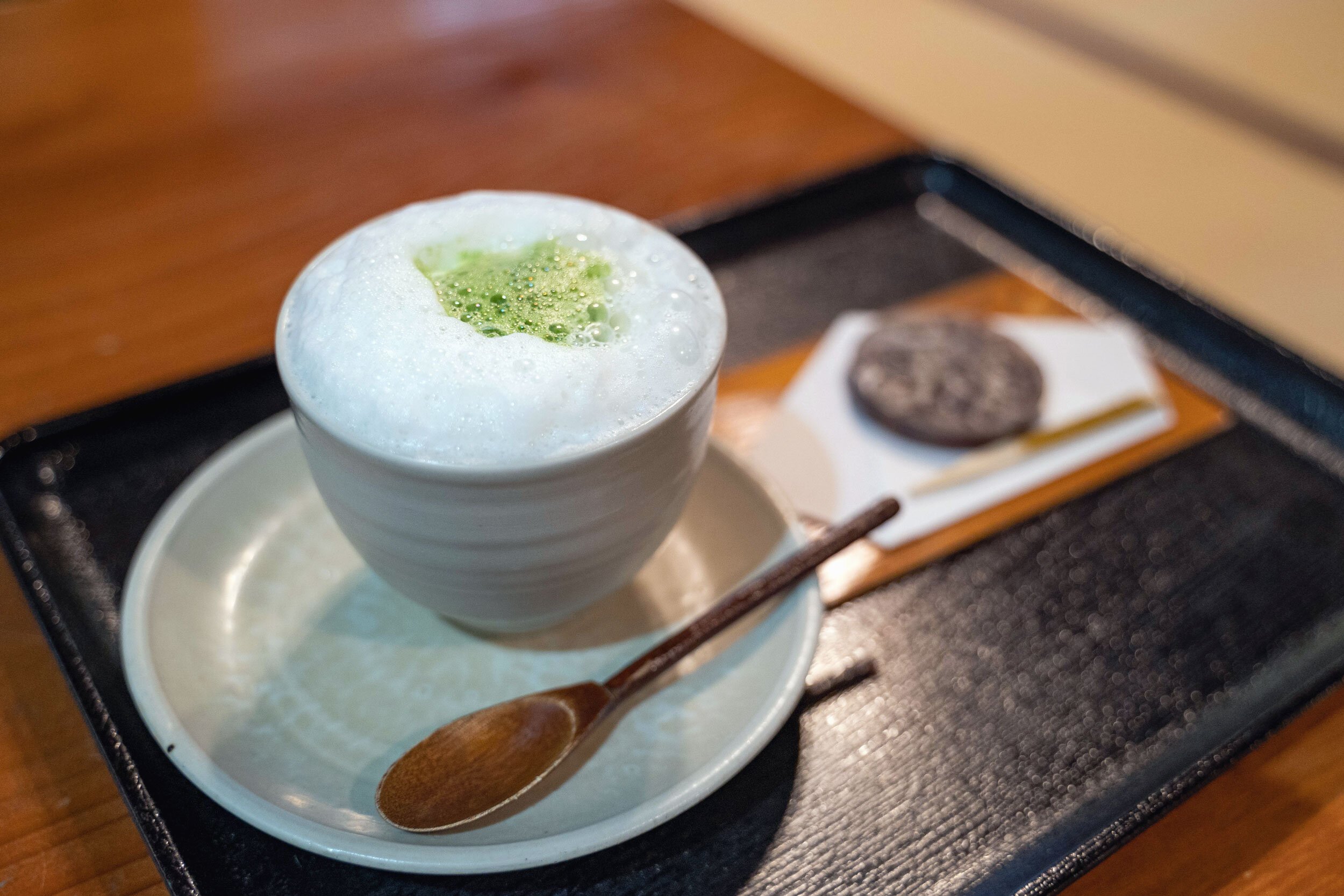
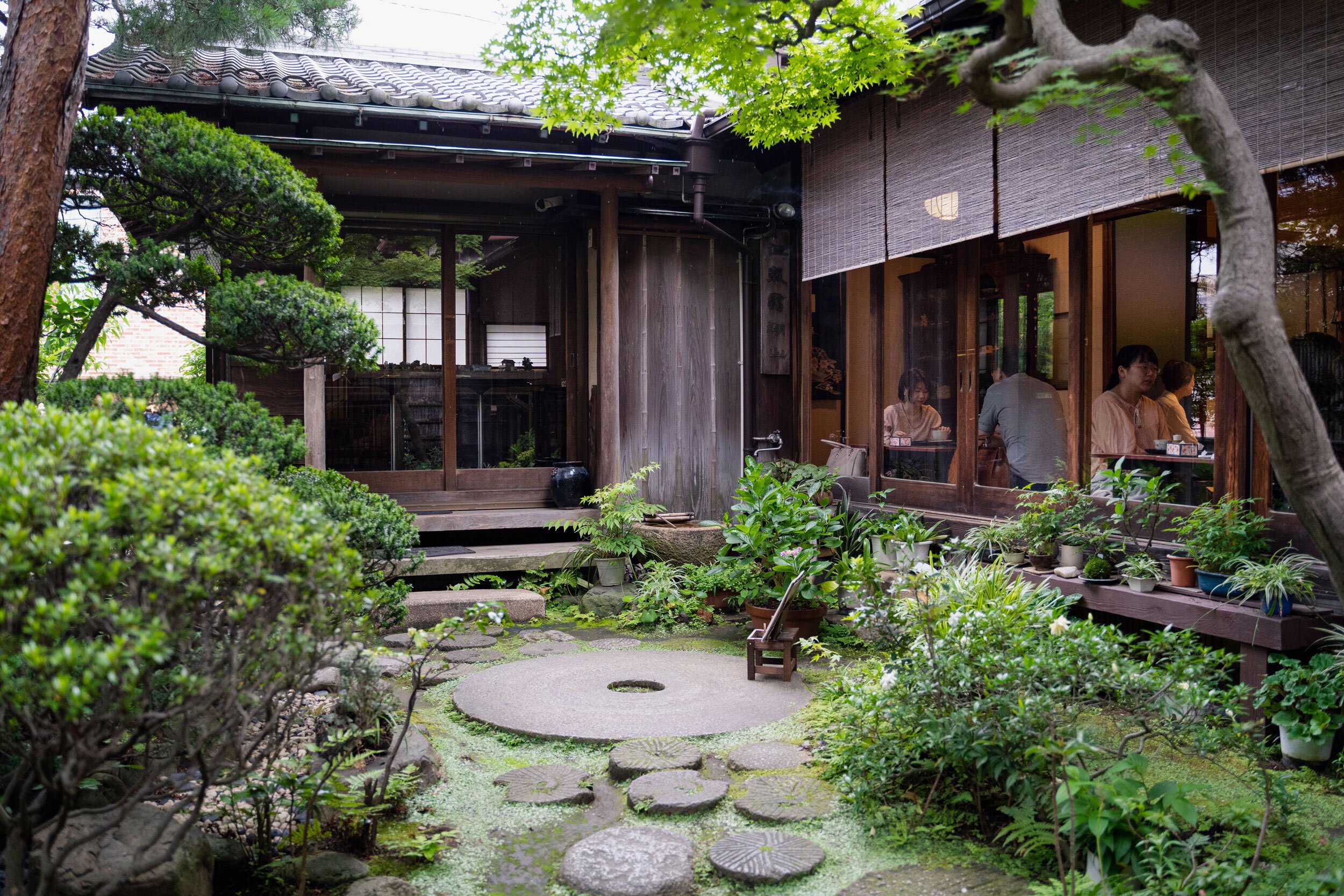
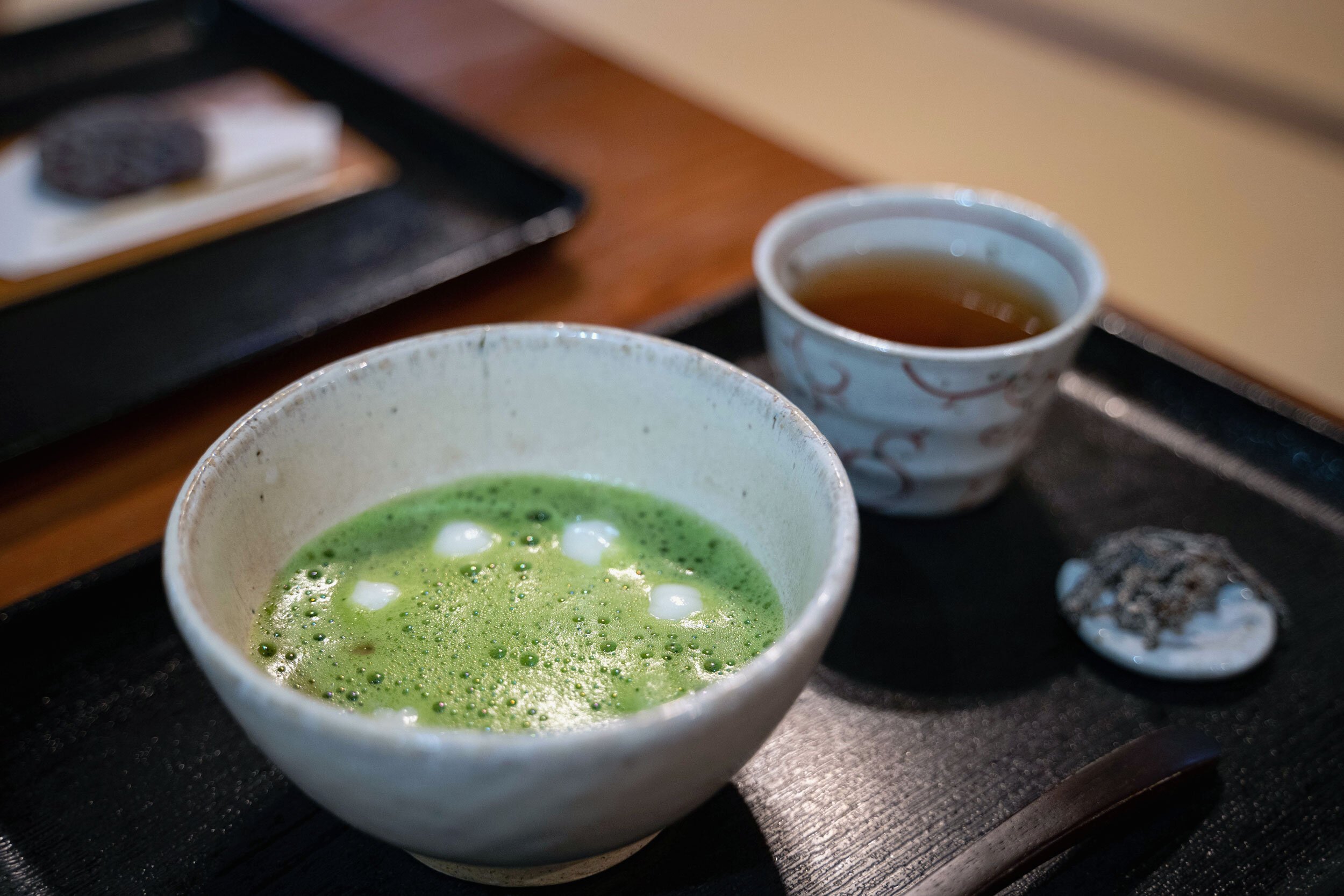
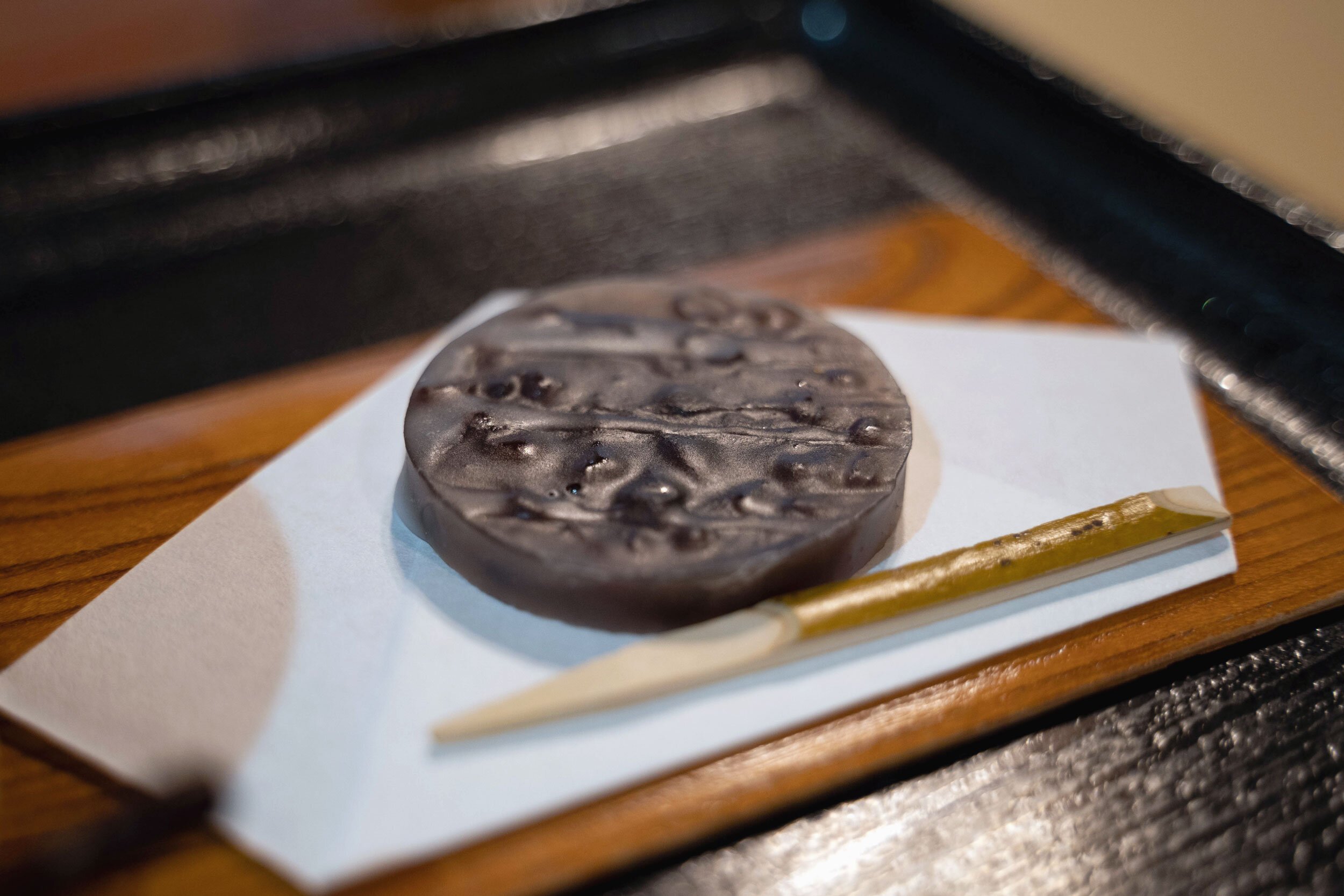
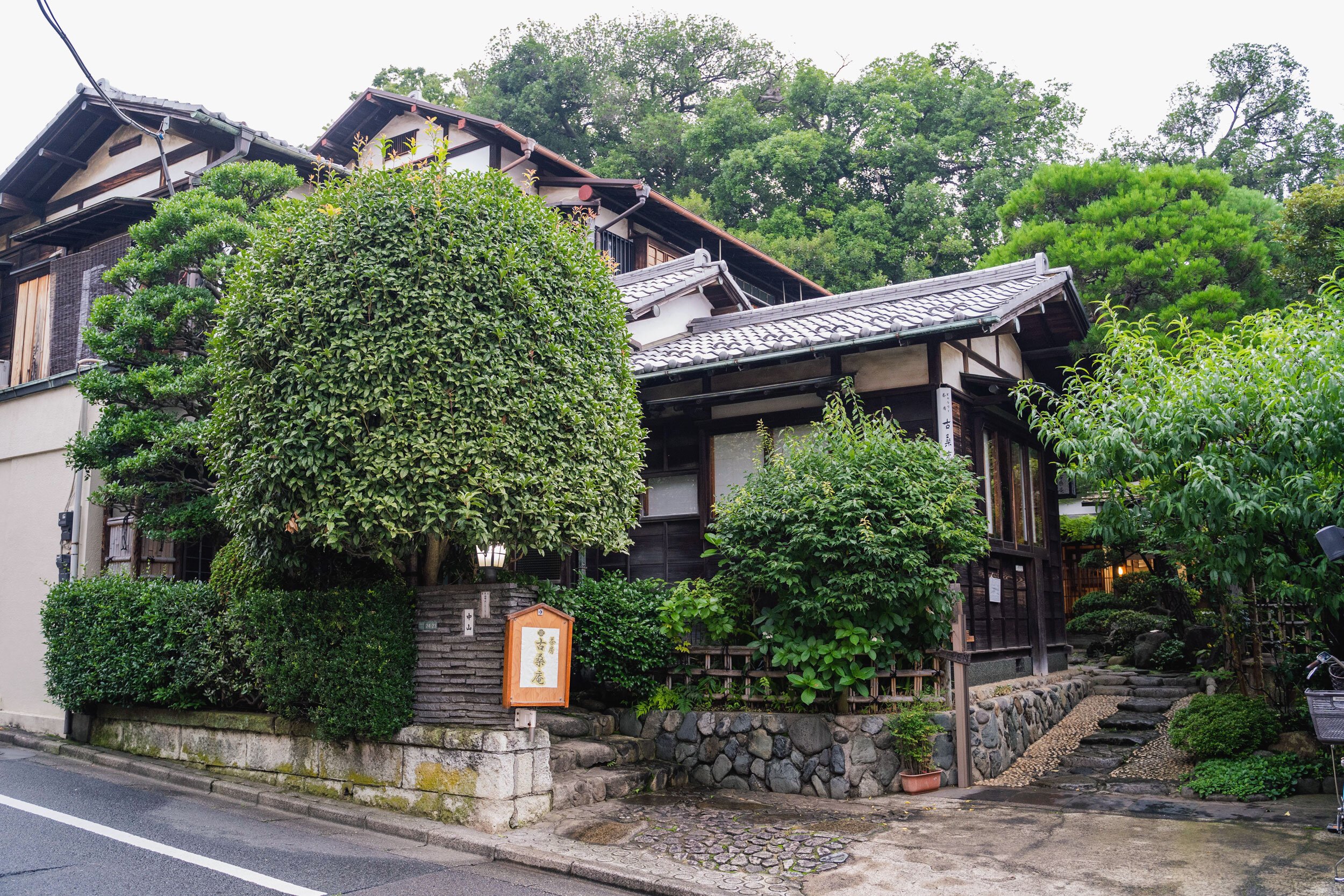
Relaxing in a traditional Japanese setting, drinking Japanese tea. If that’s something you wouldn’t mind doing in Japan, Kosoan is a good place to do it.
Kosoan is in an old Japanese house up a hill in Jiyūgaoka, and because there are no signs, it’s easy to miss. The entrance is in the courtyard - a nicely maintained Japanese landscape. You remove your shoes as you enter and sit on tatami mats as you enjoy you tea in a peaceful atmosphere.
My recommendation: Anything matcha.
Milk Land
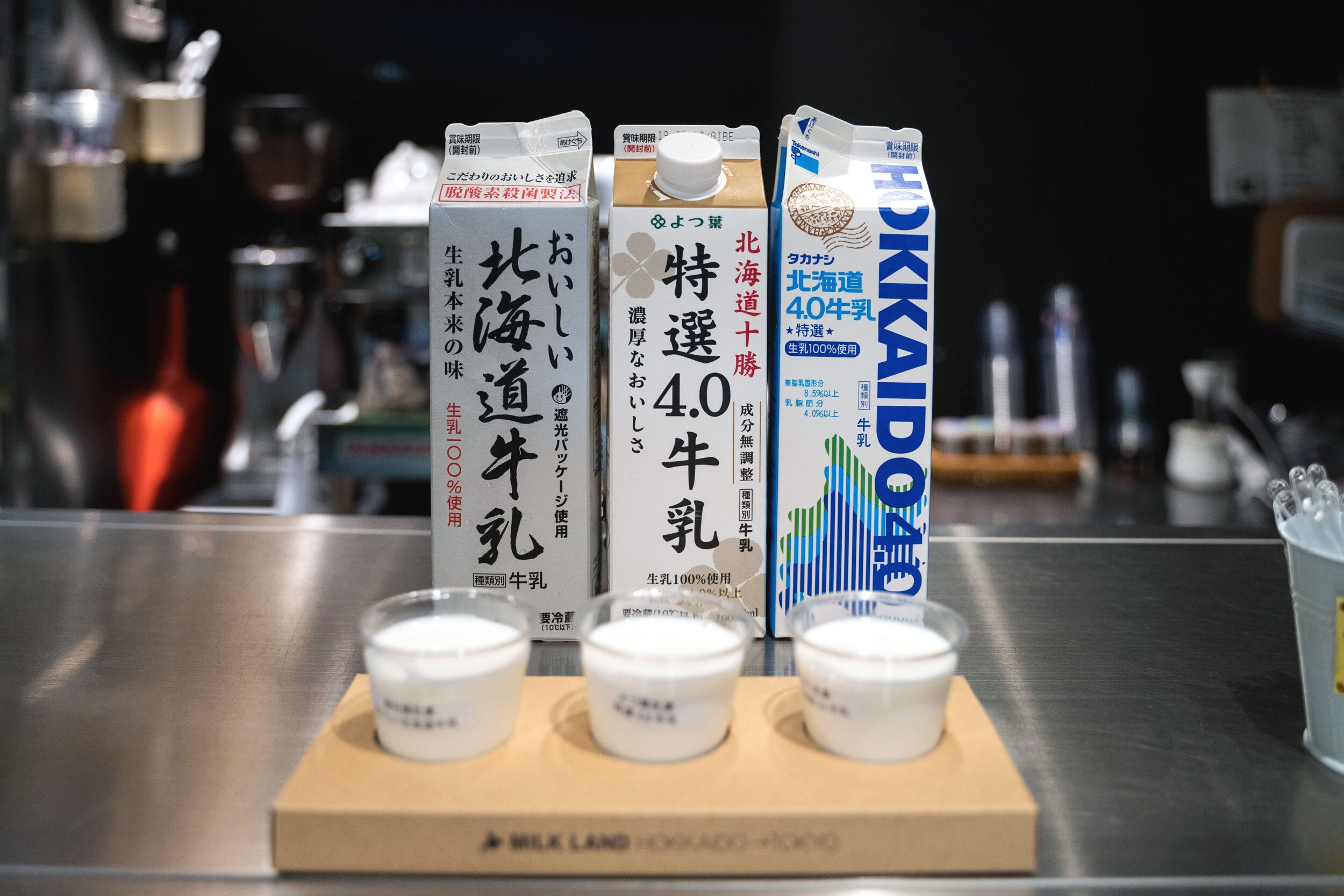
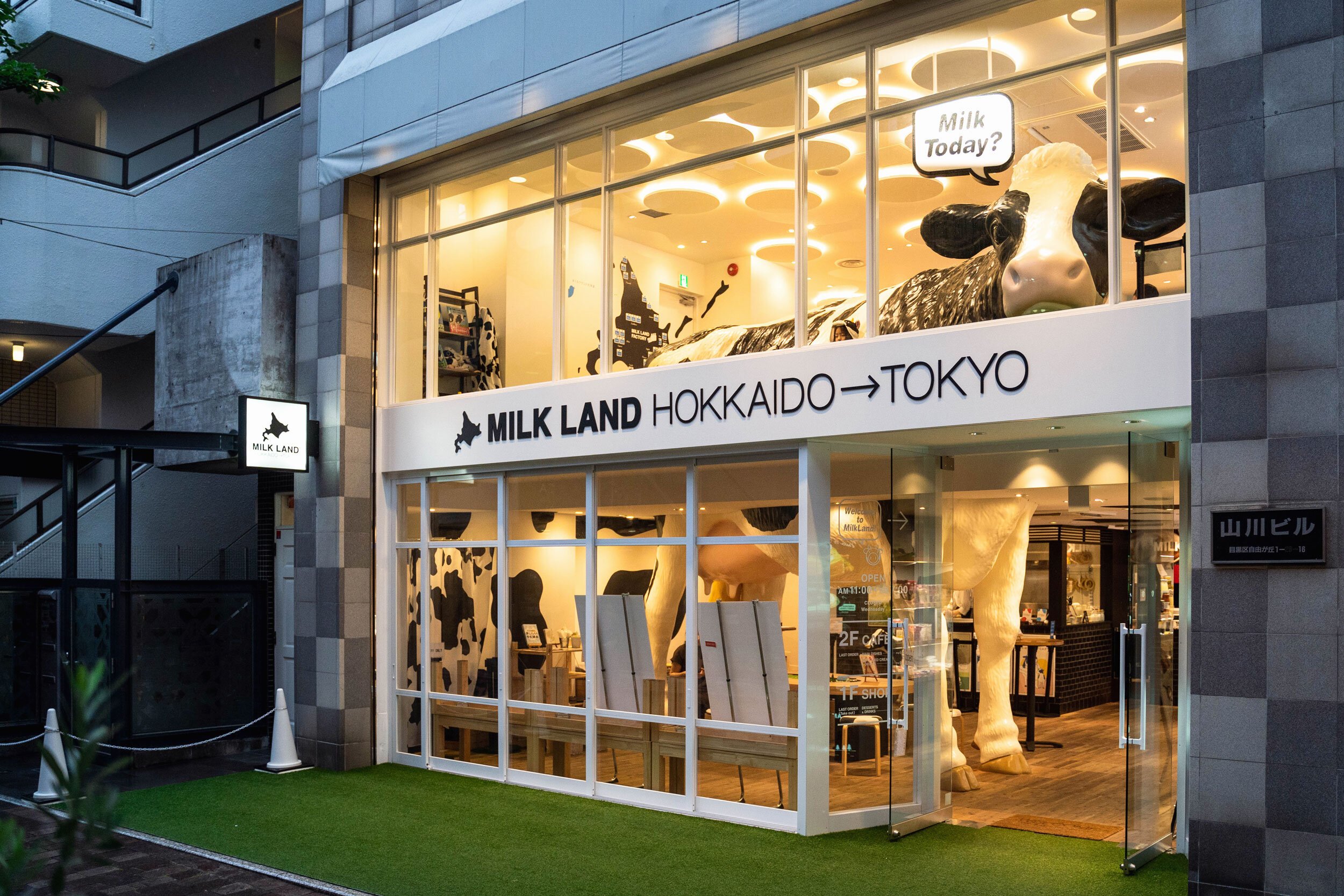
Drinking milk may not be on you “Things to do in Japan” list, but if you like milk, you should. Coming from the US, I’ve realized that Japanese milk is really good.
The best milk in Japan comes from Hokkaido, and Milk Land is a sort of Hokkaido Prefecture shop offering various dairy products from the region. The shop itself is cutely decorated, and there’s a two-floor cow standing in the middle of it.
They have a sampler where you can choose 3 brands of milk to taste. Try that for a rich, creamy experience. Getting some soft-serve won’t be too bad either.
Bareburger
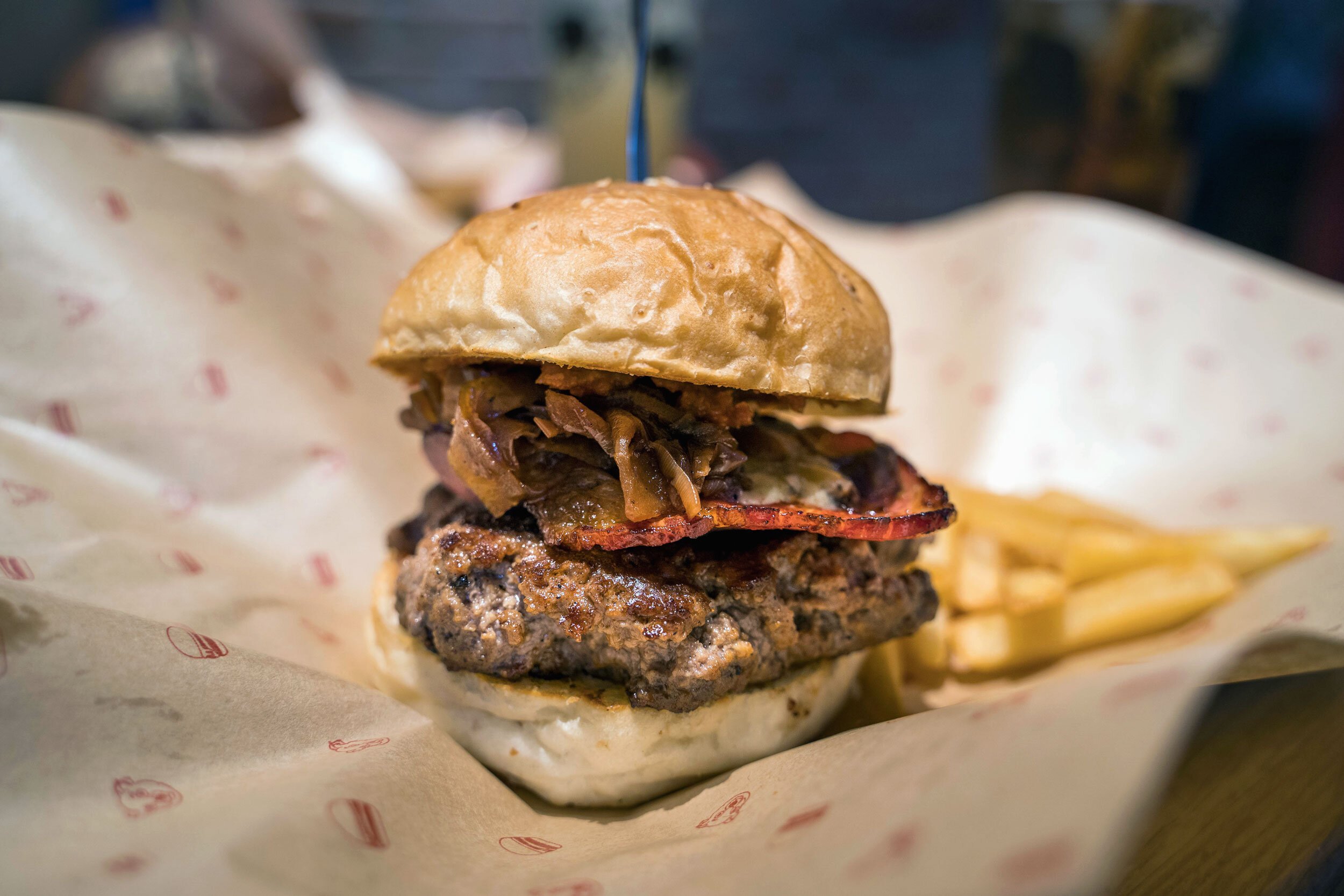
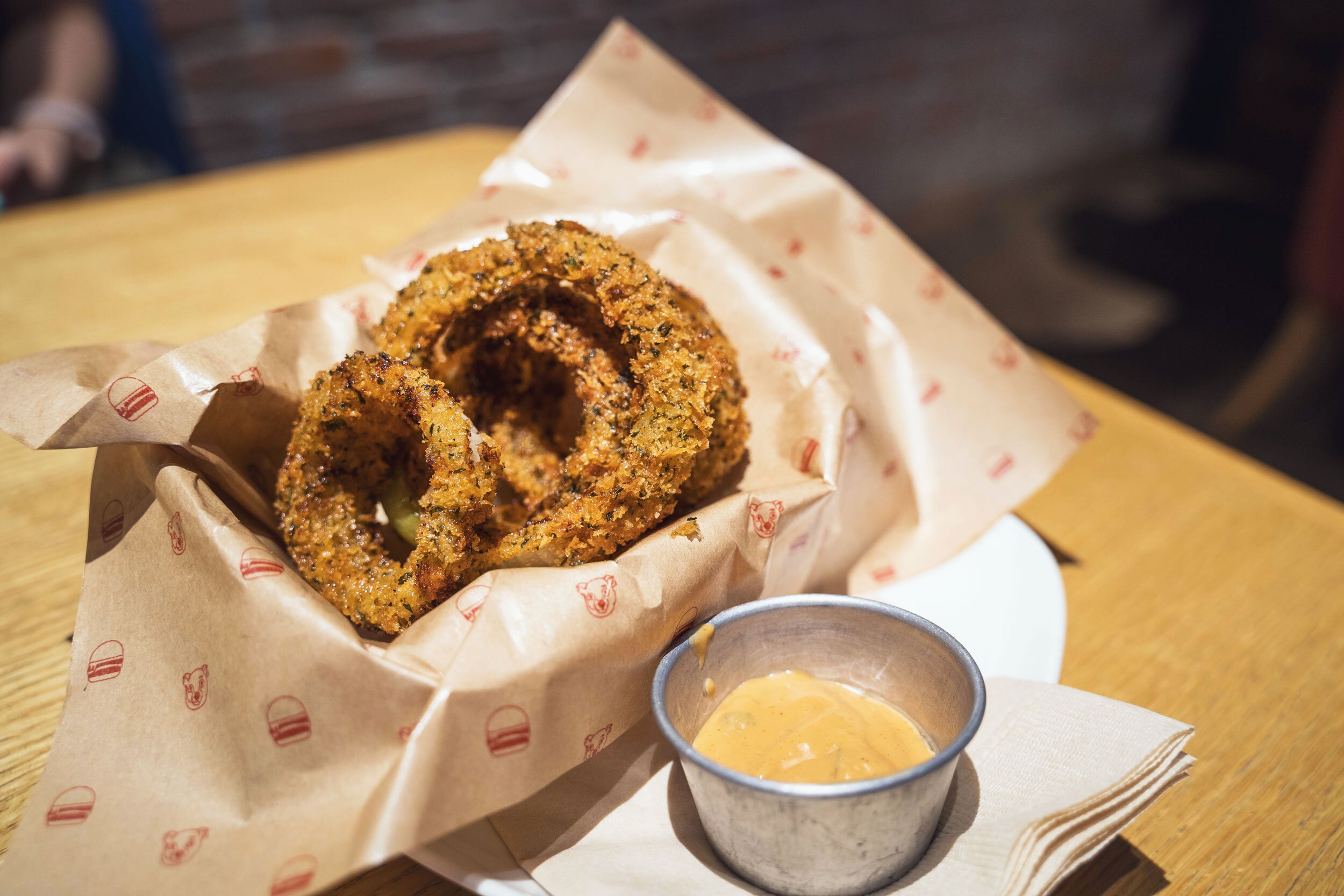
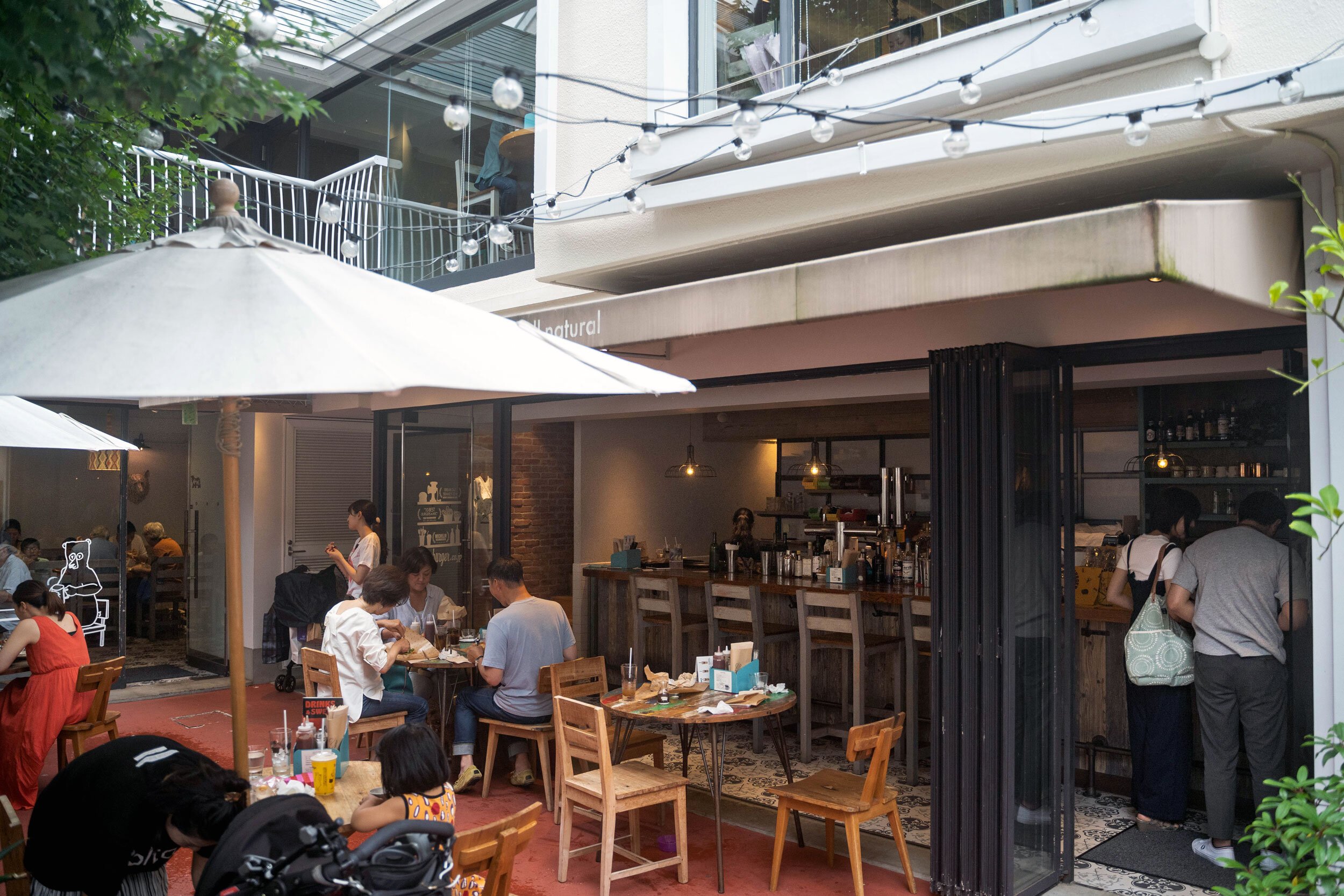
For those that need a break from Japanese food, Bareburger is a good option. The organic burger shop from New York is very selective in where they open, and chose Jiyūgaoka for their first location in Japan.
The shop is a two-floor, indoor-outdoor space located in a small, stylish square along with a few other eateries and fashion boutiques.
Their onion rings are popular amongst Japanese, and they also feature Japan-only items such as a premium Ozaki beef burger.
* This location has closed.
Keep in touch:
More travels:
Shimotakaido, Tokyo
A residential area in the Setagaya Ward, it has some nice kissaten coffee shops, cherry blossoms, and is where I first lived in Tokyo.
Shimotakaido is a residential neighborhood about 15 minutes west of Shinjuku in the Setagaya Ward
The Shimotakaido Ekimae Ichiba fish market and movie theater are a couple reasons people stop by the area
It’s a lesser known cherry blossom spot in Tokyo during the spring
Just a little west from Shinjuku station on the Keio line is a small neighborhood area called Shimotakaido.
I lived just a 3 minute walk away from Shimotakaido station between 2014 and 2018 in a 1K studio apartment. While it’s not a major destination nor a must-visit, it’s a typical Setagaya, Tokyo neighborhood that nearby locals and college students gather at, and gives a taste of real, typical Tokyo life.
How to get there
From Shinjuku, the Keio local and rapid lines stop at Shimotakaido station. Keio line’s Express and Rapid Express won’t stop so there’s a need to transfer at either Sasazuka or Meidaimae stations.
The Setagaya line, a photogenic, 2-car street level train also travels between Shimotakaido and Sangenjaya stations.
About Shimotakaido
Shimotakaido was a post station along the Koshu Kaido travel route that connected present-day Tokyo with neighboring regions long ago during the Edo period. Today, it’s a residential neighborhood that has moments of liveliness due to being near the Nihon University campus.
The area is centered around its main street, Shimotakaido Shōtengai, which travels east-west. It’s painted green and is right outside of the station, so you can’t miss it.
Almost everything is either on this street or a block or so from it, making everything really convenient. There are cafes, small outdoor markets, bars, convenience stores and a 24-hour supermarket - everything that makes for an easy place to live in.
There are plans for many of the stations along the Keio line, including Shimotakaido Station, to undergo major redesigns and renovations. This will likely make the neighborhood even better.
Housing in Shimotakaido
Located in the desirable Setagaya Ward, the average monthly cost for a 1K studio apartment is 76,400 JPY (USD $486) while a 1LDK single bedroom apartment is 155,500 JPY (USD $988) as of June 2024. [J]
Shimotakaido Ekimae Ichiba
The Shimotakaido Ekimae Ichiba fish market is right across from the station’s north exit and has a few shops selling fresh fish and sashimi. There’s also a small meat shop in the ally right behind it, as well as another in front.
Because it’s a typical residential area, it’s not a lively area and there’s not a whole lot of events to see. The two main events are the Shimotakaido Festival in the summer where there’s dancing and several food booths, and the Sakura Festival in the spring with much of the same centered around cherry blossoms.
Shimotakaido cherry blossoms
I learned in my time living there that Shimotakaido is one of Tokyo’s unknown cherry blossom spots.
While it doesn’t have a picturesque lake or grassy hillside or anything like some of these other Tokyo cherry blossom areas, there’s a pretty long tunnel full of the pink flowers covering the street right outside of Nihon University. If you’re not into fighting crowds to see a sakura tunnel, this is a pretty good option.
Japan’s kissaten coffee culture can also be experienced here as there are a few nice kissatens in Shimotakaido. It’s kissaten like these that inspired people such as W. James Freeman, the founder of Blue Bottle Coffee (part of the reason why their first international location was in Japan).
More than simply a coffee shop, kissatens are akin to homey cafes specializing in hand-poured, slow drip coffee and homestyle cooking where you can relax, chat, read or work.
Shimotakaido may not be as exciting as other nearby areas like Shimokitazawa, but it’s a great neighborhood to head to on an early weekend afternoon as people are out and about, and you can truly soak in the authentic Setagaya, Tokyo lifestyle.
Poem
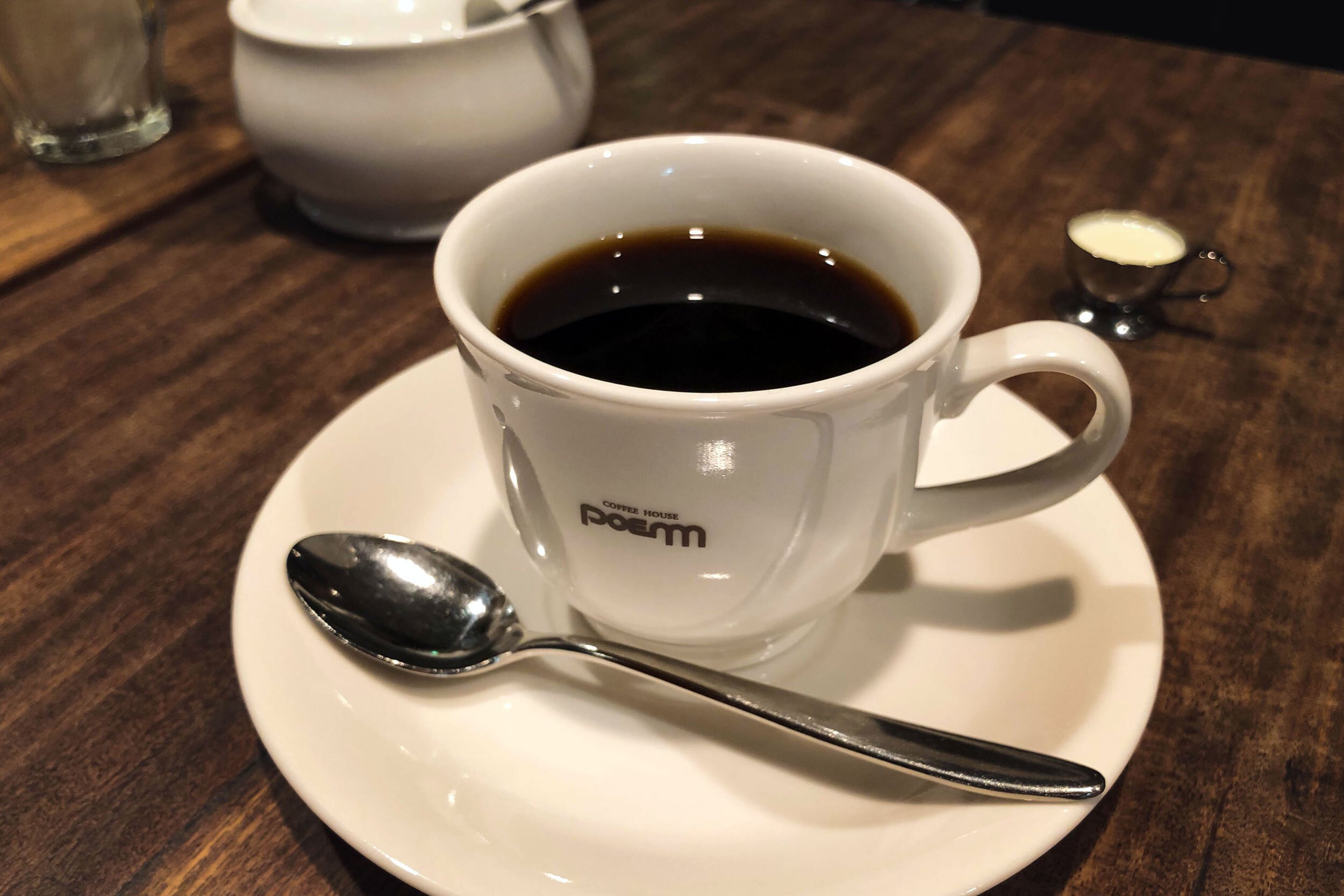
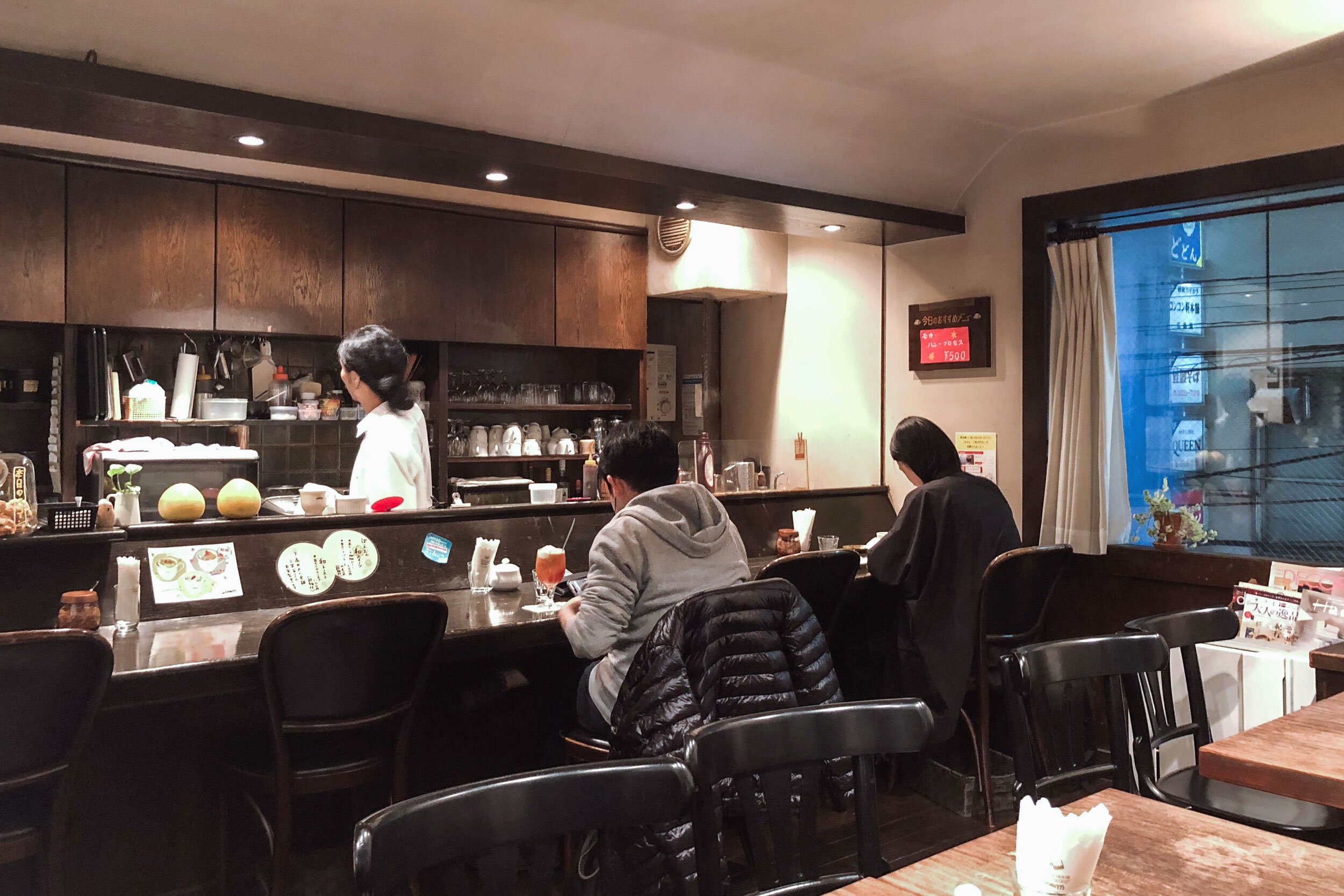

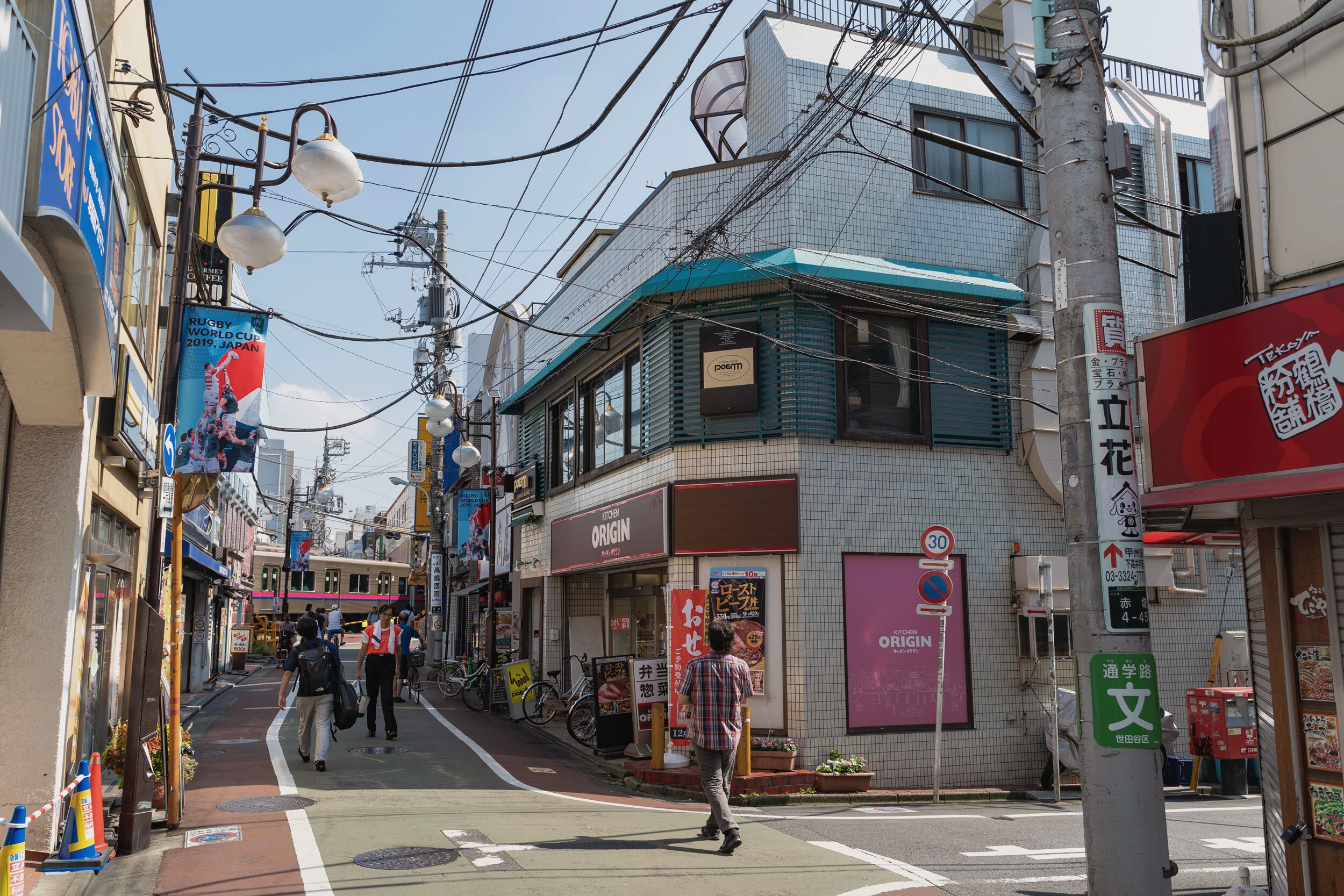
Some of my favorite coffee. If you’re a fan of rich, dark coffee, this is the spot.
More of a kissaten cafe than a trendy coffee shop, Poem’s focus is entirely on the beans. Step inside the shop and the first thing you’ll see is a table seeking their assorted roasts, with the clear plastic bags of their dark roasts coated in coffee bean oil.
The biggest knock on Poem is that they allow unseparated smoking (as of Nov 2019). But otherwise it’s a nice place to kick back and enjoy an amazing cup.
Niku to Sozai no Hotta
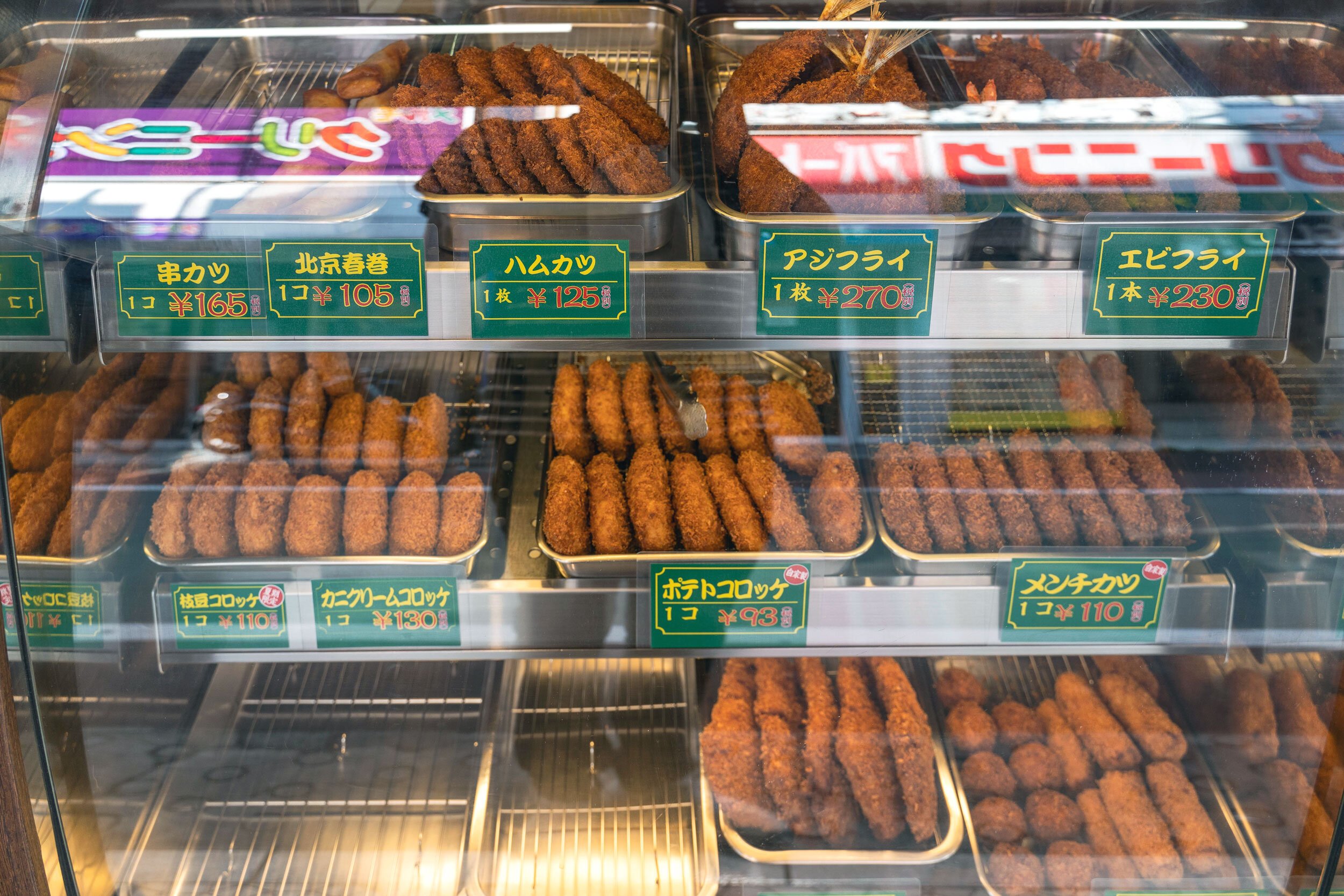
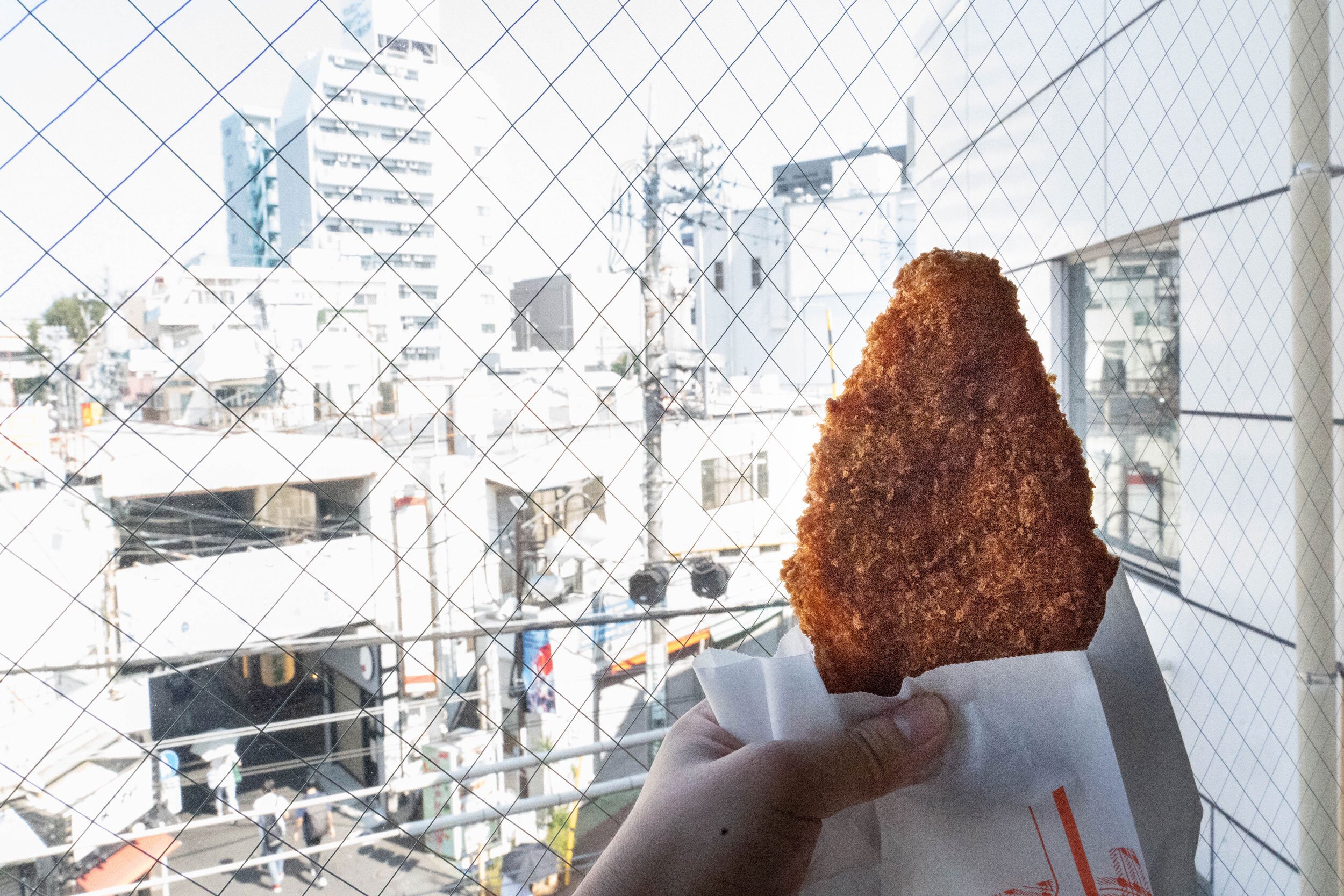
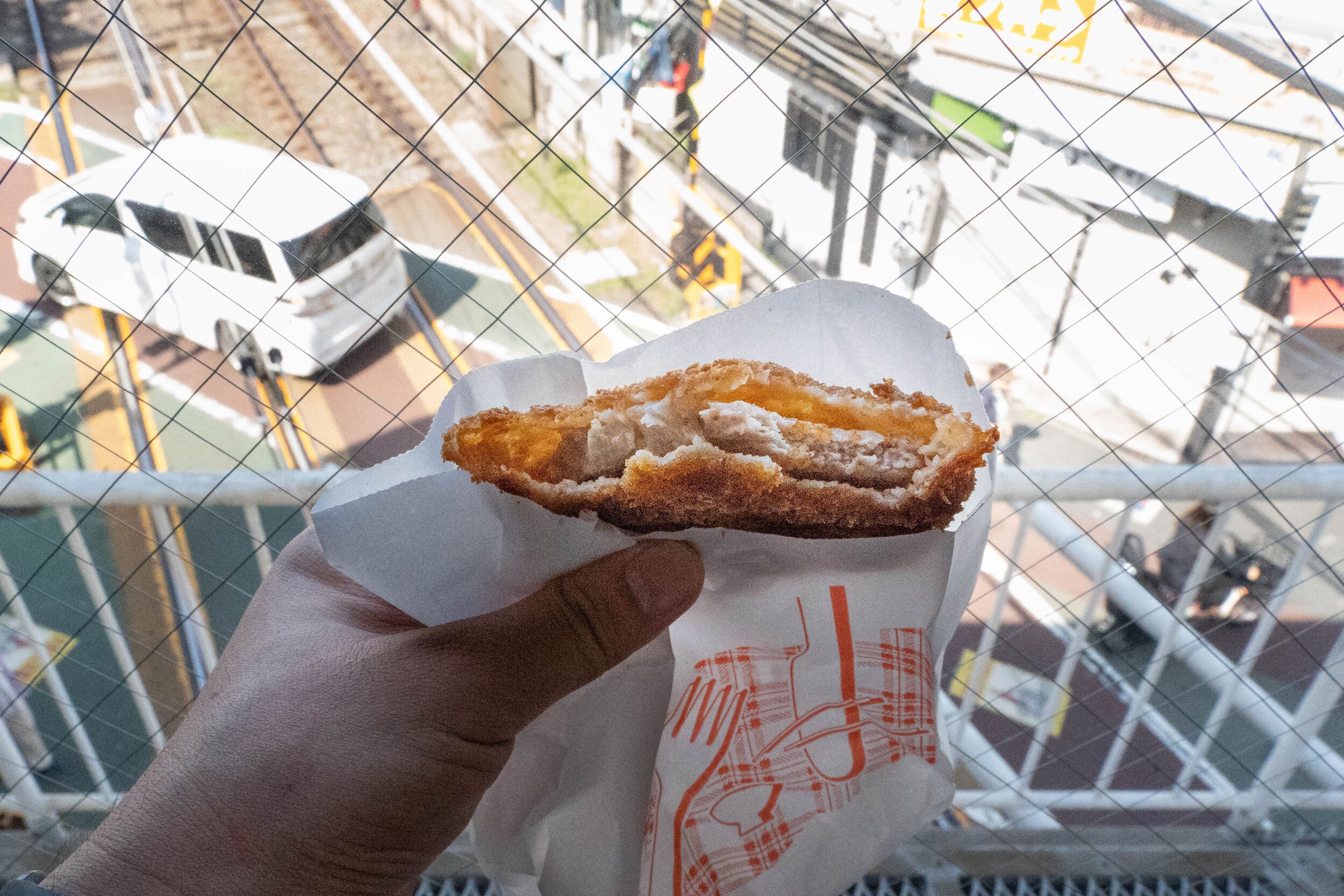
Just out of Shimotakaido Station’s north exit is Niku to Souzai no Hotta, a butcher shop. Of course they have a range of meats, but their croquettes and fried foods are what people love to buy.
In the mornings people line up at their street-side stand, just across the fish market, for everything from crab cream croquettes to tonkatsu. They’re sure to sell out, so if you happen to walk by and and their trays aren’t empty yet, pick one up to take with you on the go.
Coffee & Roaster 2-3
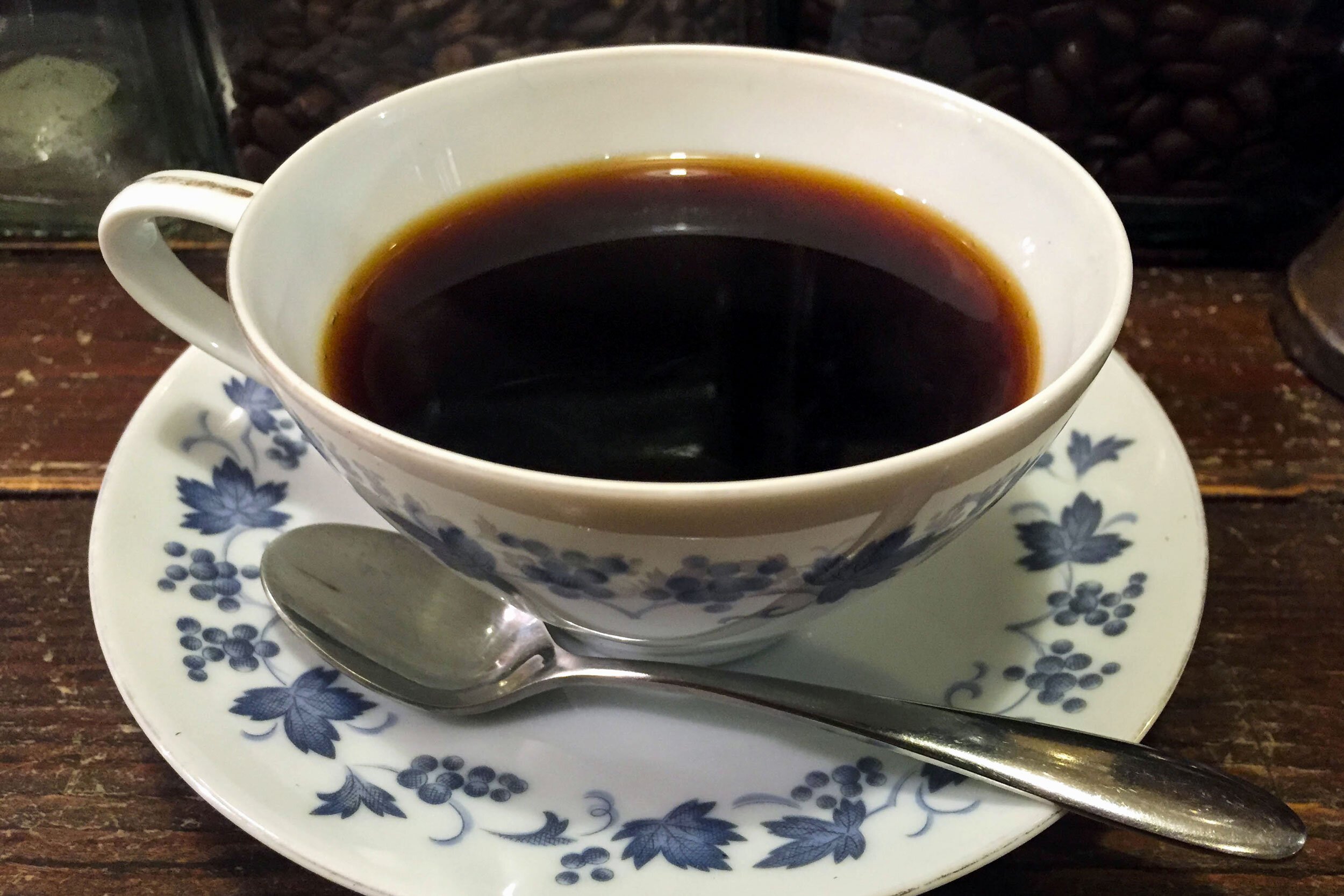
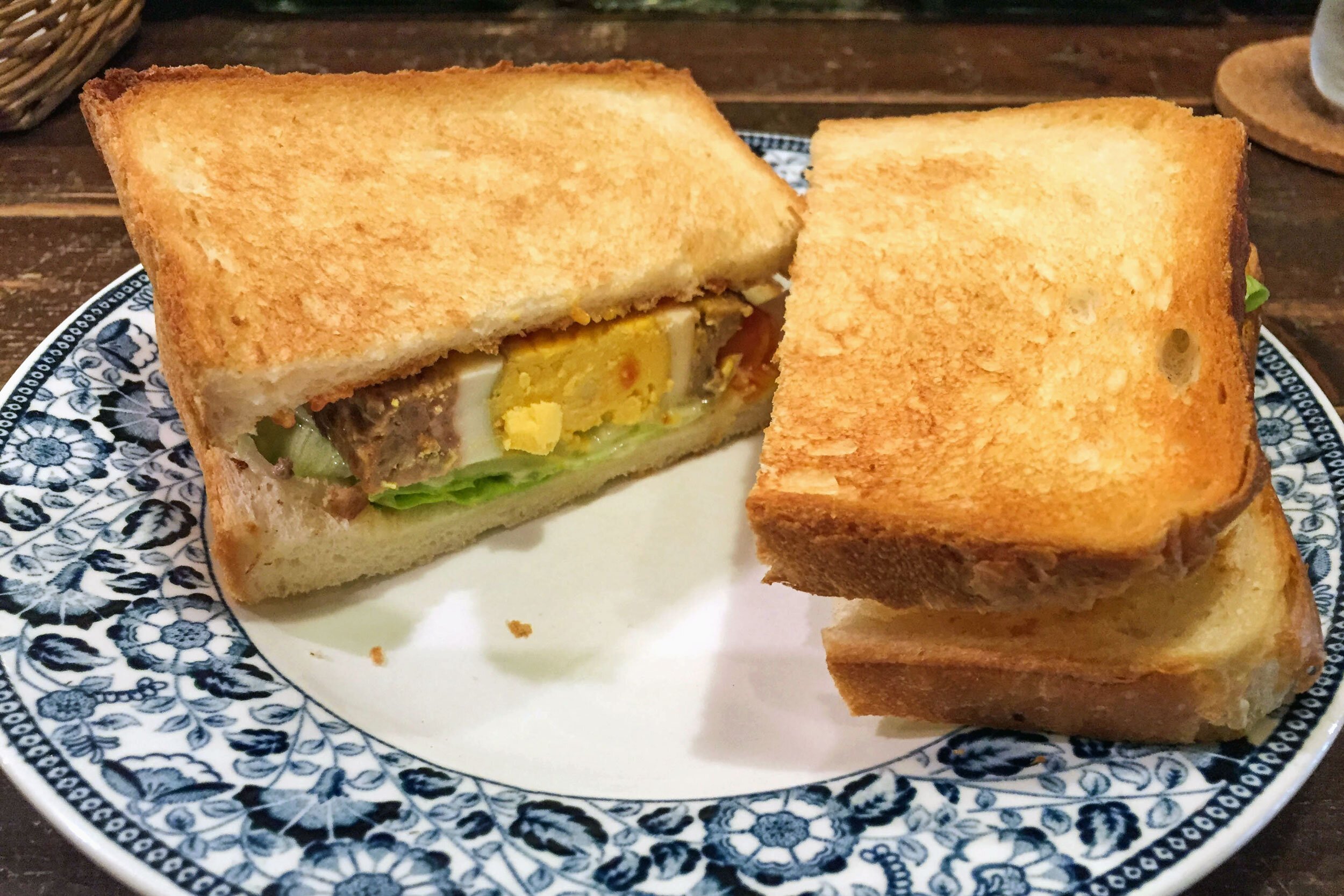
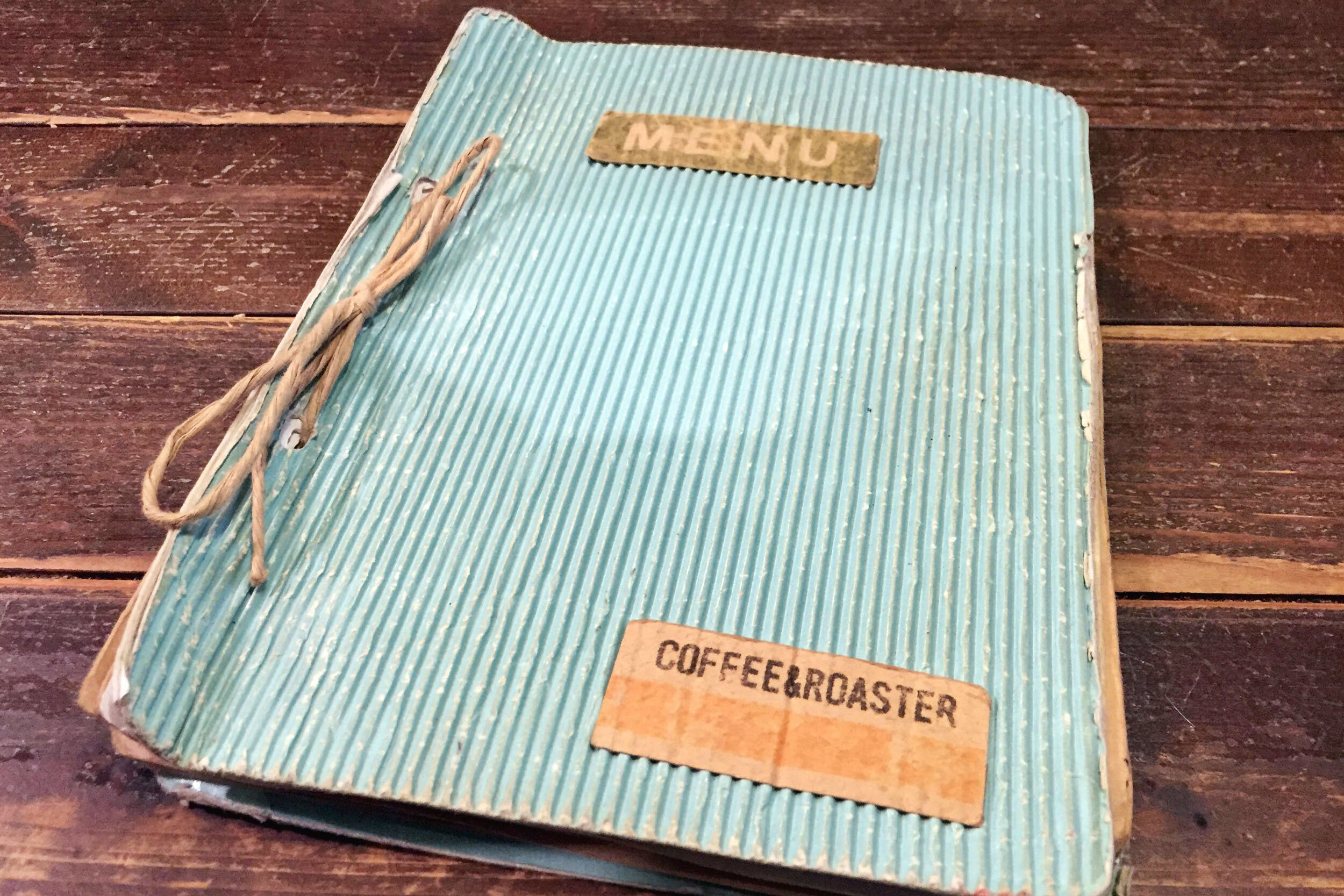
A quaint little kissaten, Coffee 2-3 is a small, quiet shop that lets its customers do their own thing. Seating is separated and not arranged for a lot of conversation or staff interaction, so there are people reading, writing, or just enjoying being alone with their thoughts.
In traditional kissaten style, they have a few dishes with homemade flavor to choose from. I sat at the counter and watched the barista ever so slowly and carefully pour my cup, so I know they put a lot of care into their craft.
Keep in touch:
More travels:
Seoul, Korea: The Food Tour
Seoul food recommendations after two trips eating at places recommended by Japanese and Koreans.
A trip to Seoul is all about the amazing food. Strong flavors, lots of spices, it’s hard to ask for more.
On my first two trips to the city, I’ve realized that following Japanese travel guides and blogs about Seoul are a lot better than English ones.
It makes sense - Seoul hasn’t been a major tourist destination for Westerners for all that long, and Japanese tourists had been exploring their neighbor from before them. There’s even a Japanese word-of-mouth site with reviews for everything from restaurants to shopping to clinics. [J]
Most of the food spots that I’ve been to and have loved have been from Japanese sources, a group known to have high expectations. These are some of the restaurants and cafes that I recommend:
RESTAURANTS
dong myeonok house

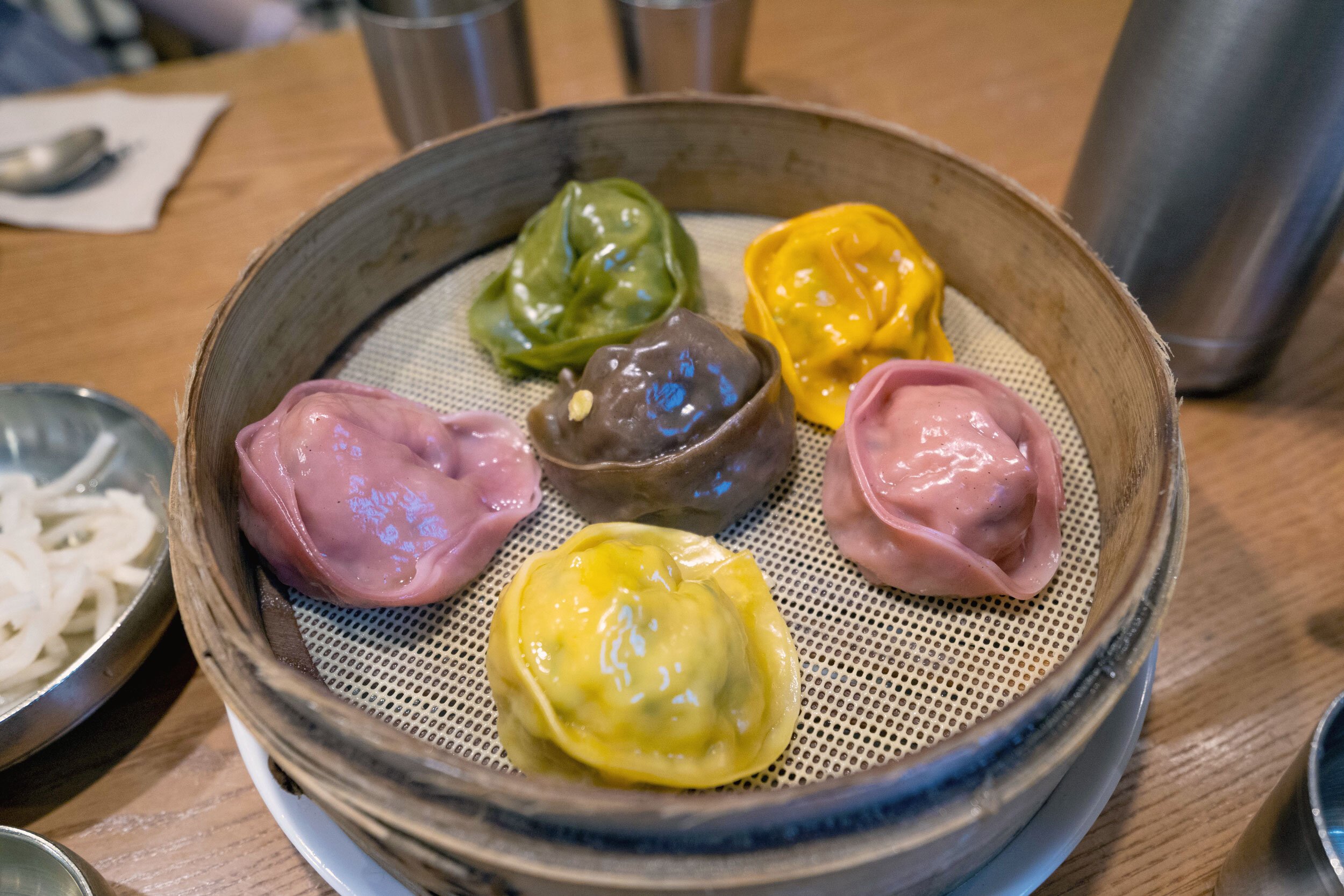
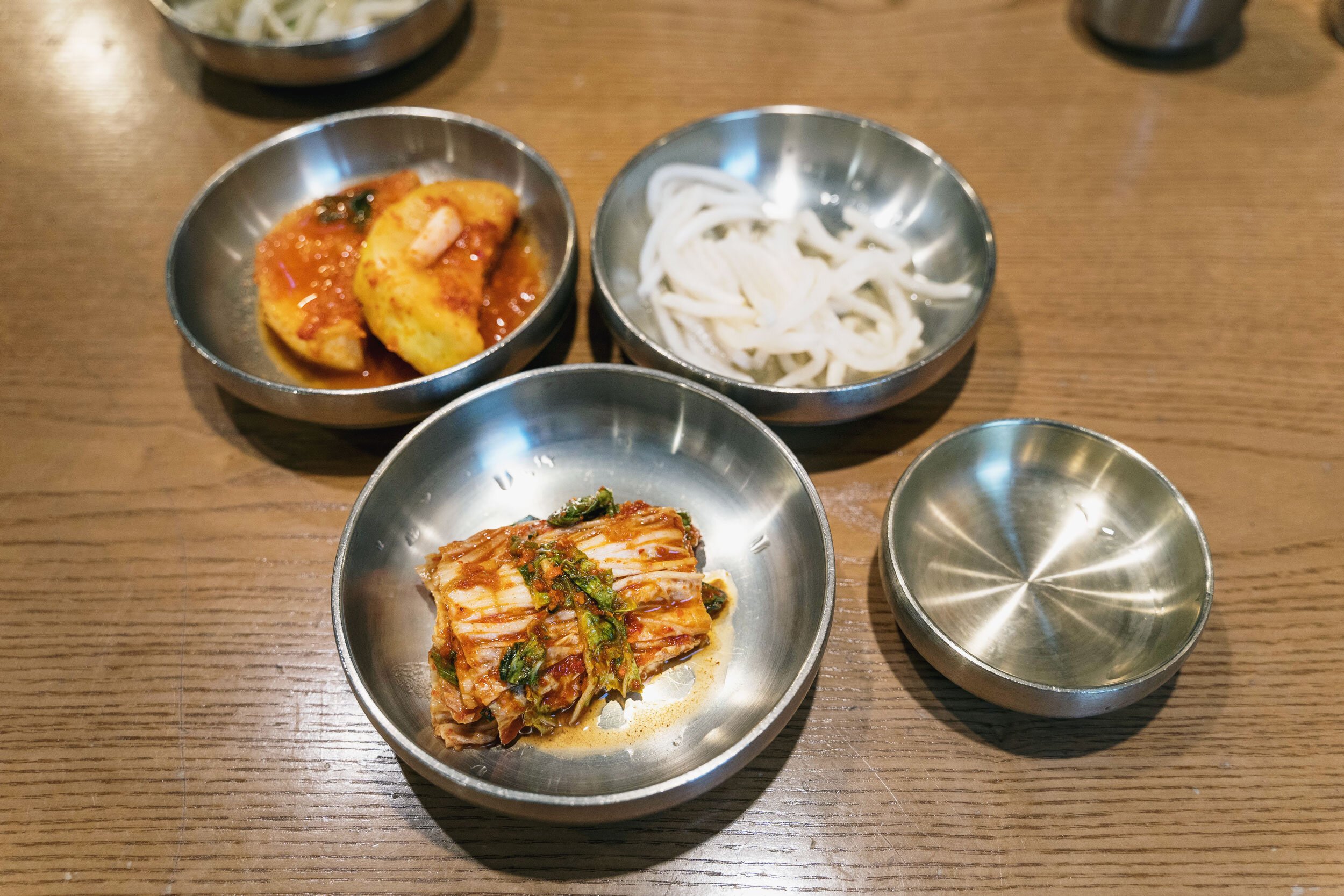
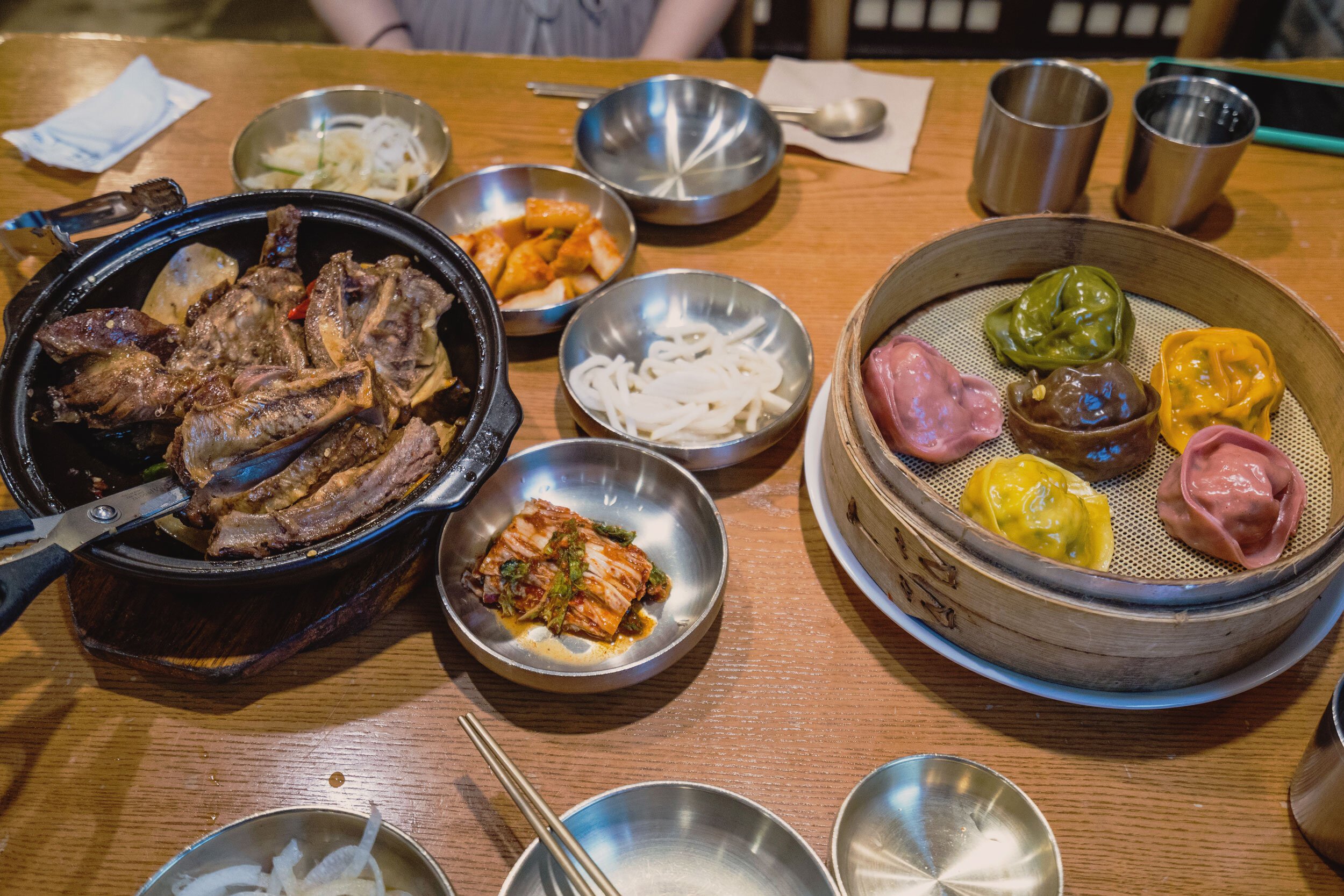
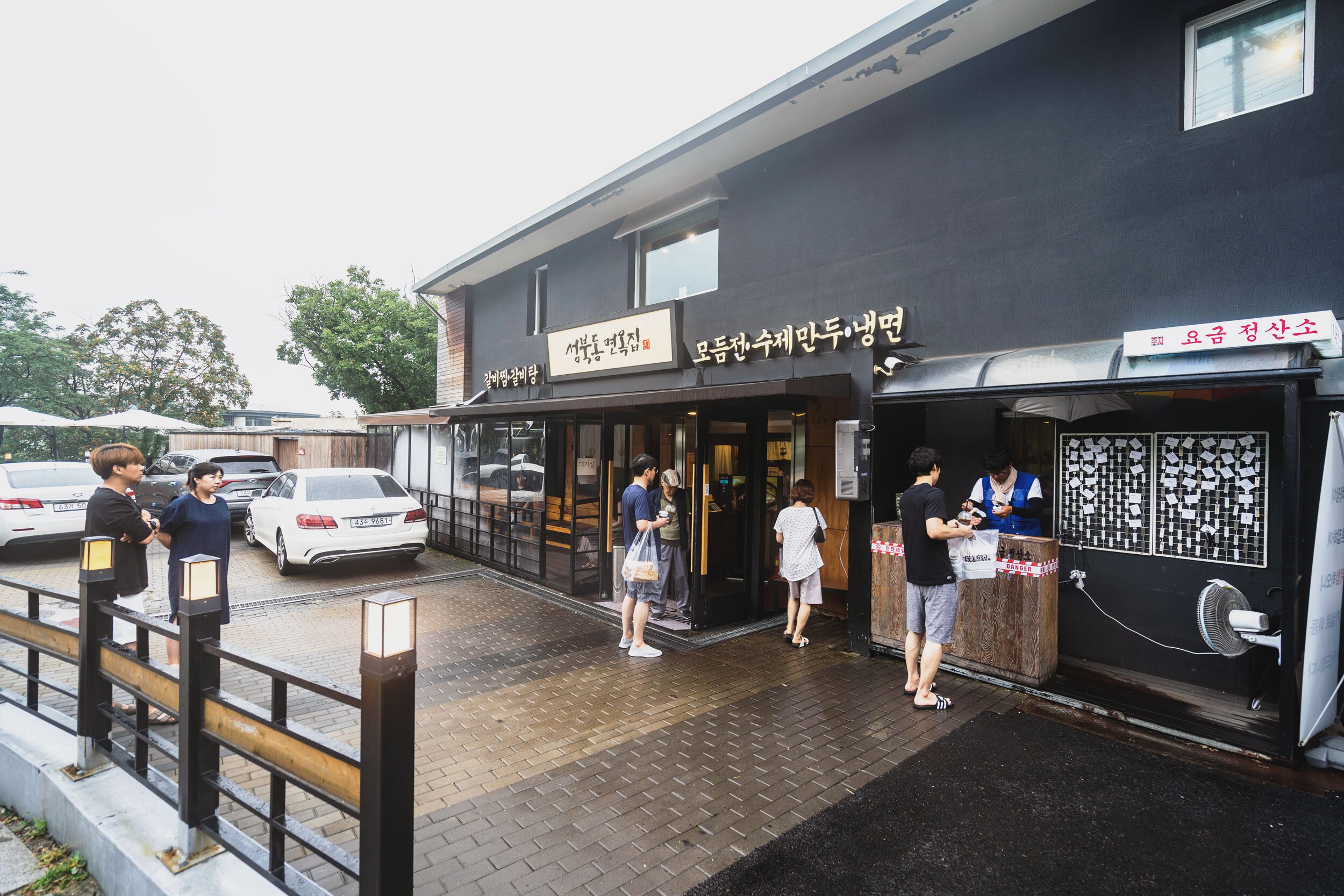
Legit Korean kalbi. You know it has to be when the only other non-Koreans there were American students… with their Korean host family.
Dong Myeonok House is located up a hill in the seemingly upscale residential area of Seongbuk. There’s no major businesses or subway stations around it, so we took a taxi and went for lunch.
We ordered a small order of kalbi and 6-pieces of colorful mandu. The kalbi was melt-off-the-bone tender, tasty with a little hint of sweet, and I couldn’t get enough of the mandu. Thanks to my friend Daniel for the rec, I definitely recommend this place as well.
Area: Seongbuk
MAP
BHC
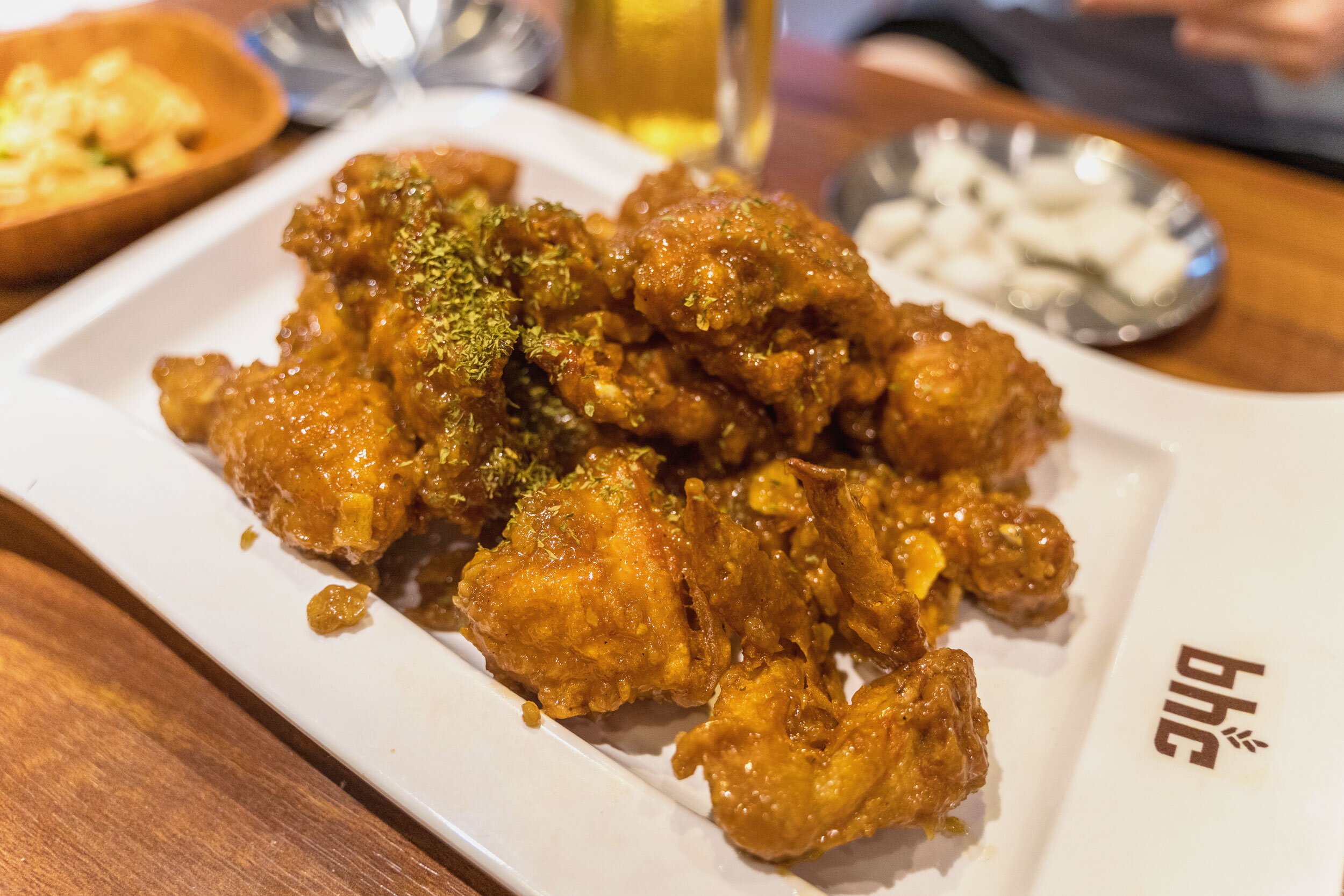
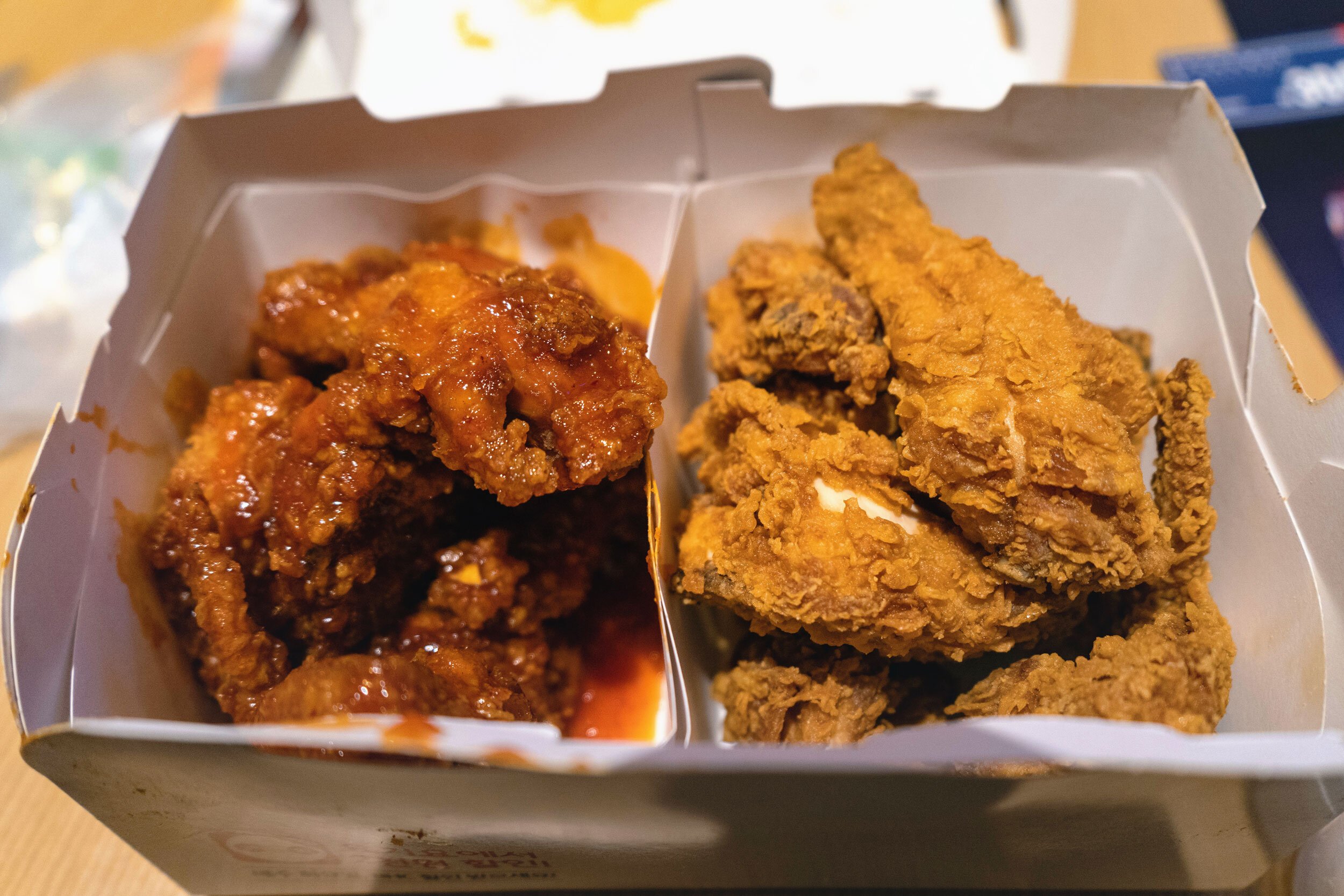
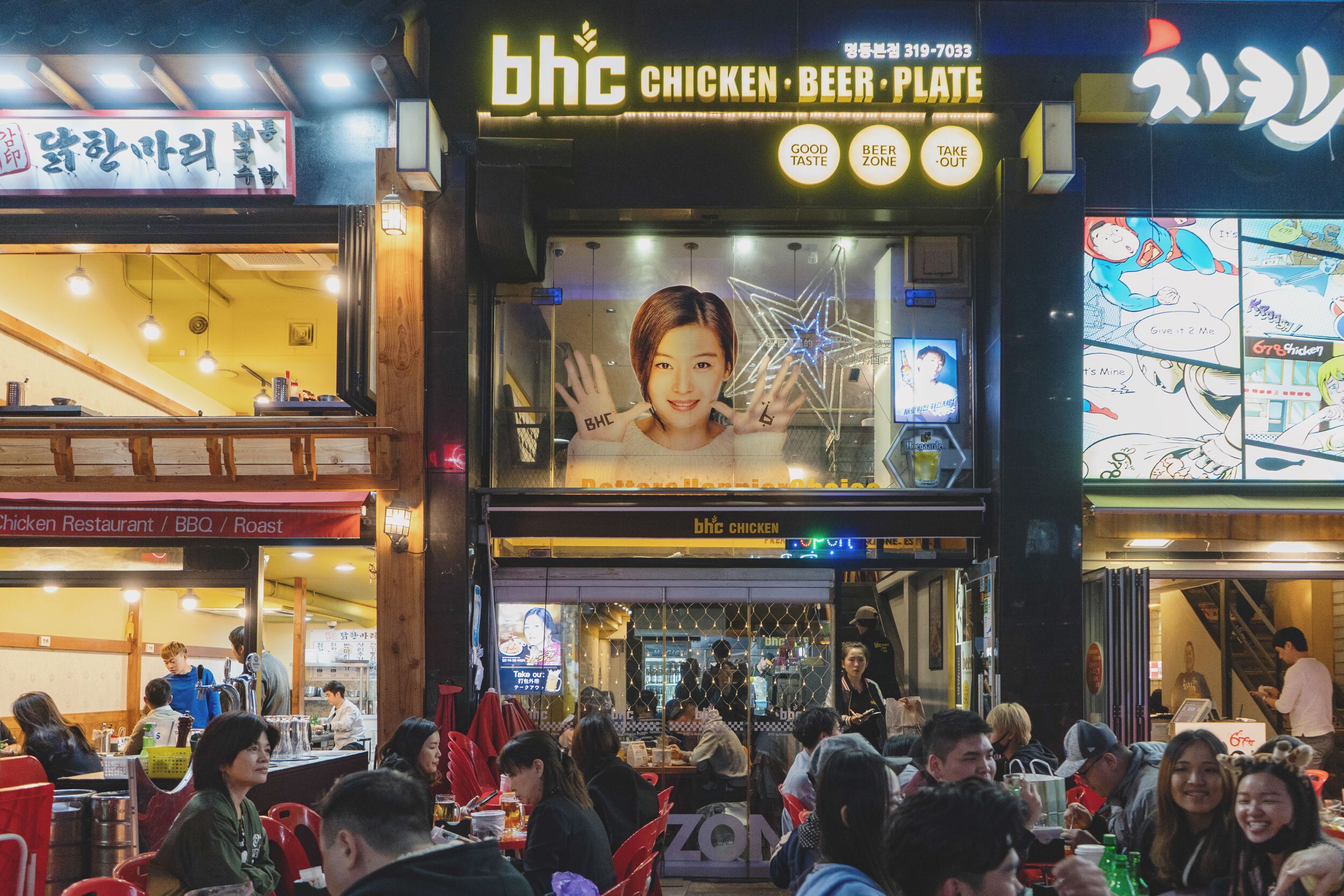
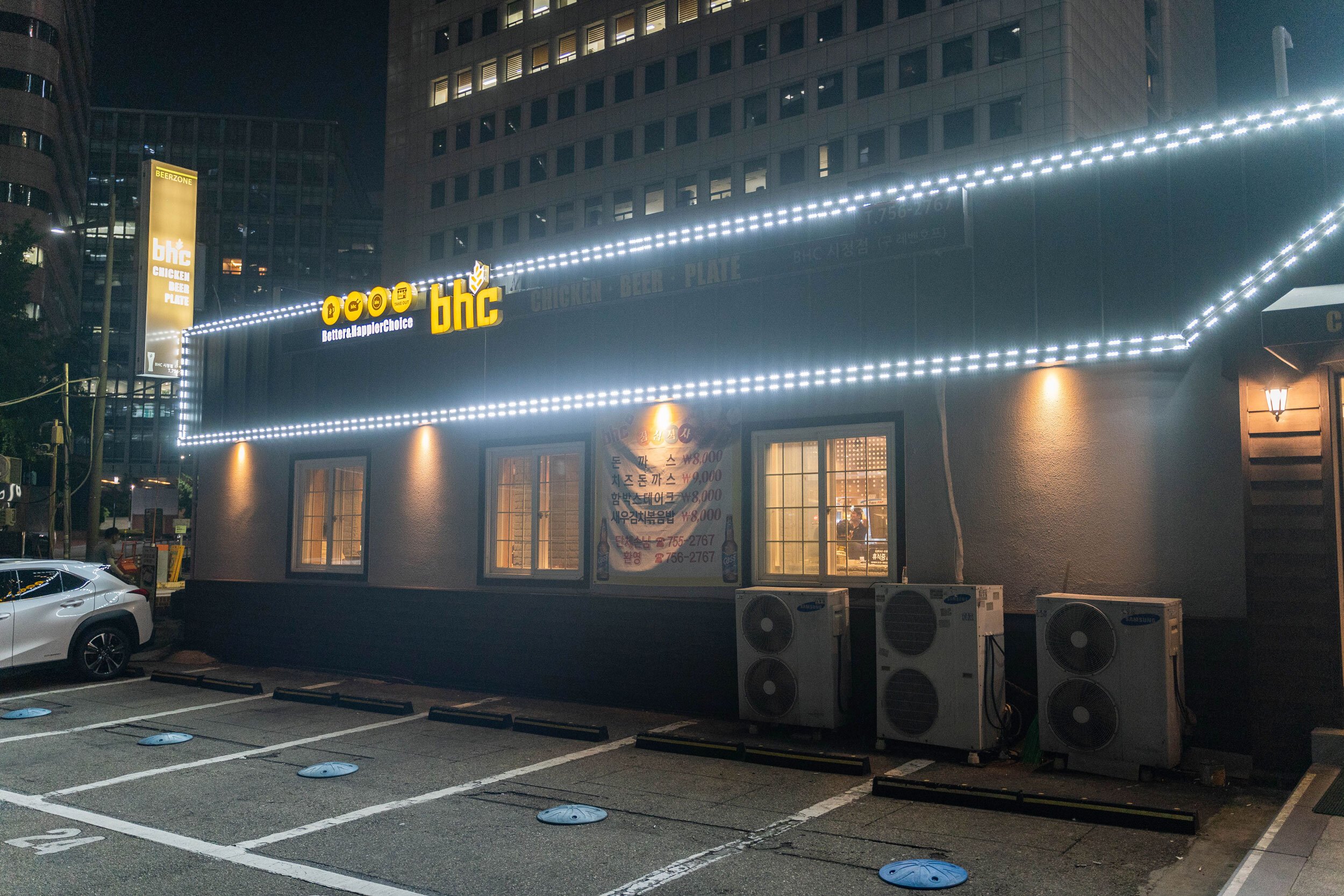
Fried chicken and beer are a thing in Korea, and they do it so well. BHC became my go-to restaurant in Korea, and I’ve managed to go there 3 times during my trips and layovers.
There’s so much flavor in each bite, especially their spicy ones. Some locations like Myeongdong’s let people eat on the outside tables and drink, others are indoors-only, and there’s an option to takeout. Either way, delicious and highly recommended.
http://www.bhc.co.kr/ [KR]
Area: (Chain) Myeongdong, City Hall, etc.
MAP
YAETMAT SEOUL BULGOLGI
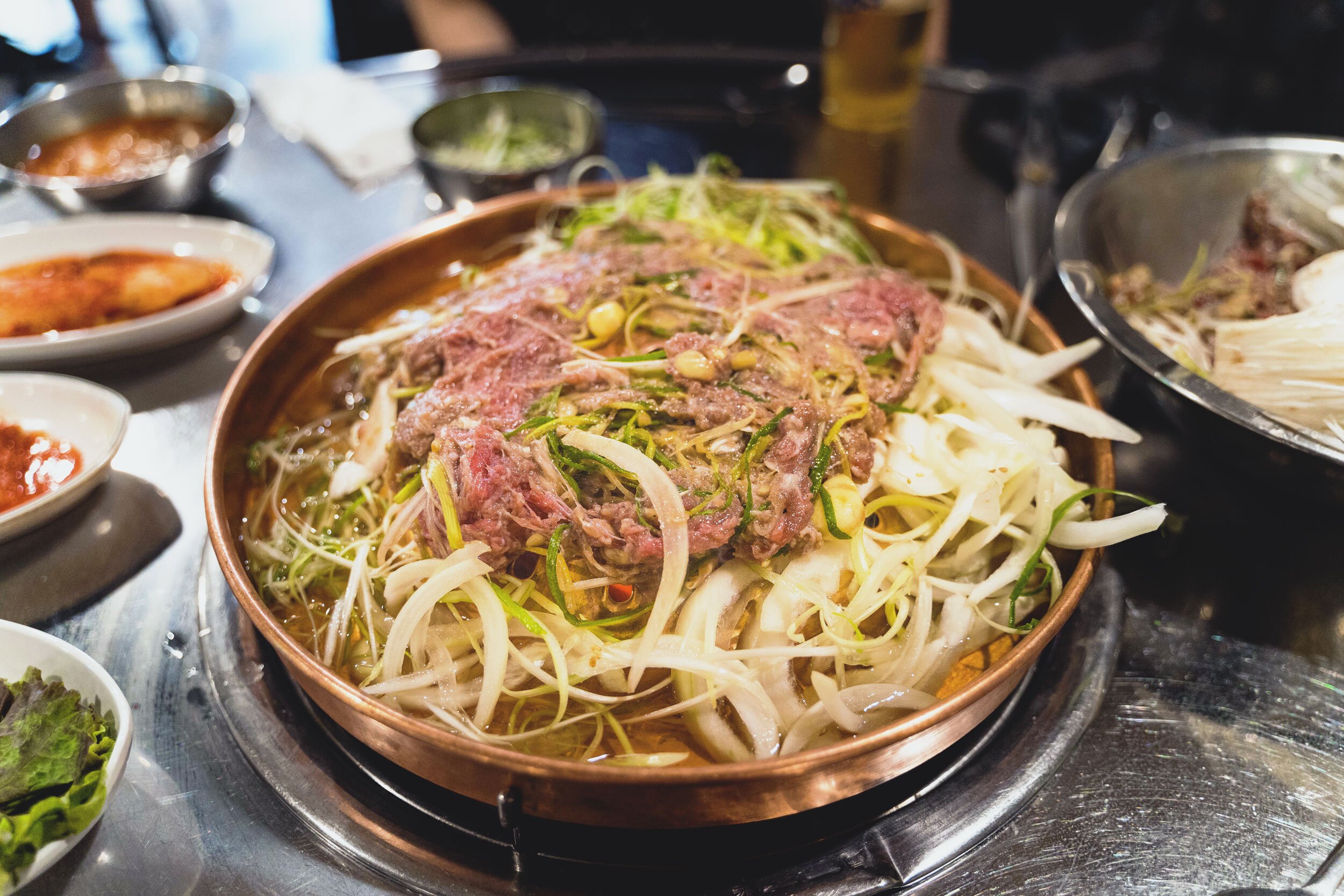
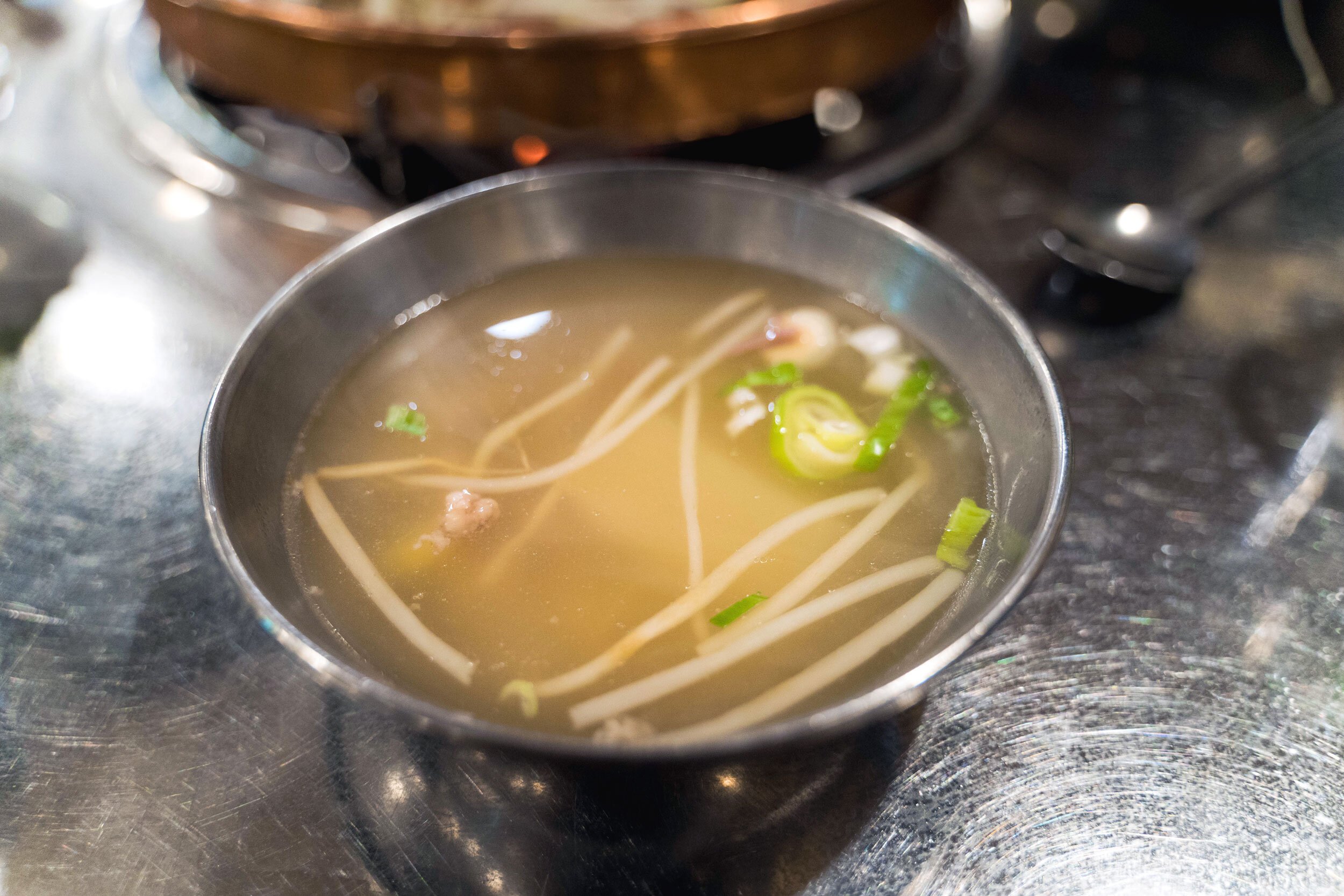
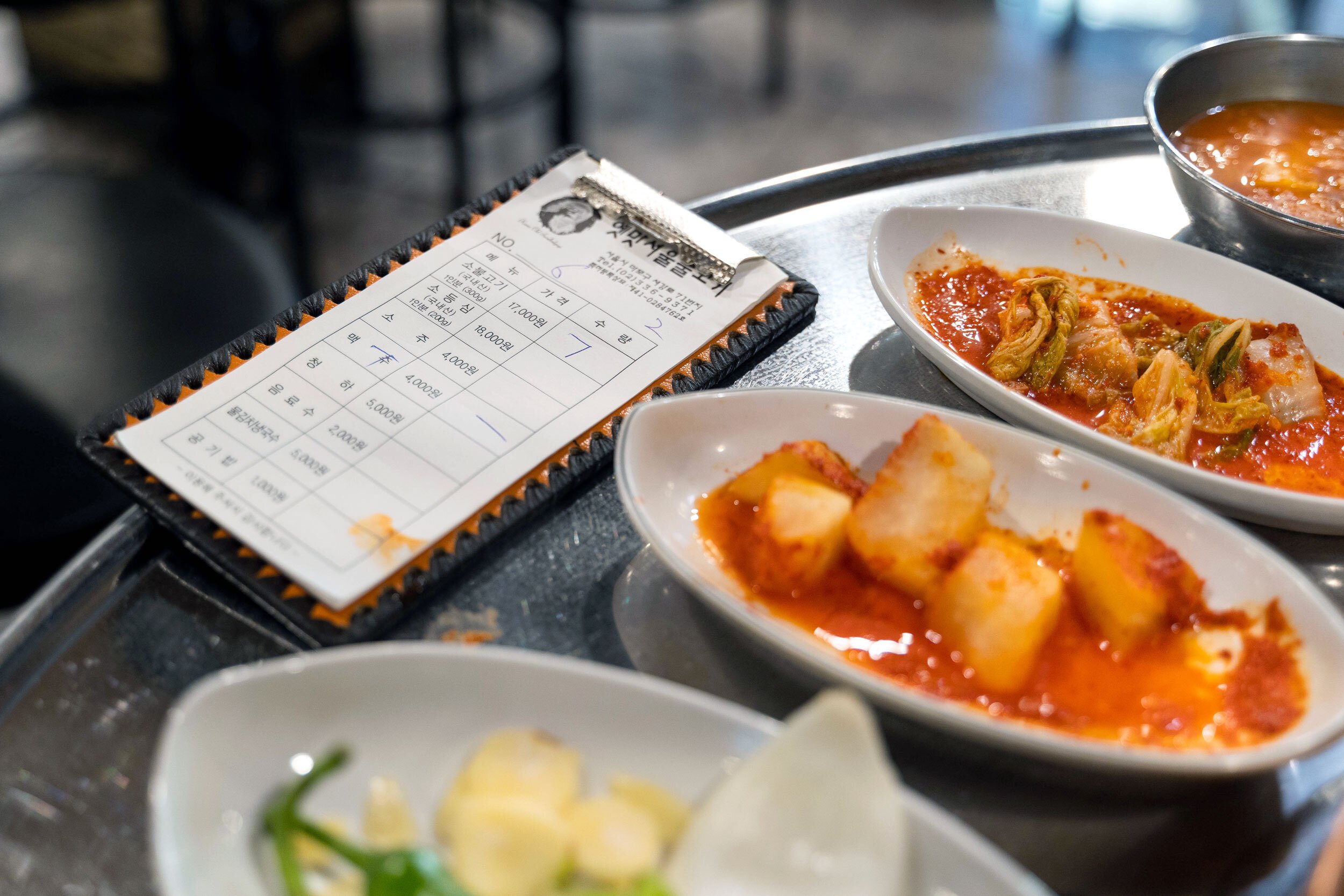

It’s hard to beat self-serve, all-you-can-eat sides and some tasty bulgolgi cooking in front of you. That’s why Yaetmat Seoul Bulgolgi was so good.
Located a couple blocks from Gwangheungchang metro station (광흥창역) on Line 6, Yaetmat Seoul Bulgolgi is a casual restaurant that only had locals - so you know it’s legit.
You sit on stools around a BBQ table and the staff comes by and makes sure everything is cooked properly. There’s a bar of assorted kim chee, greens, onions, garlic and more that’s free for the taking. A very casual, authentic experience and of course, tasty.
* This place has closed.
JINOKHWA HALMAE WONJO DAKHANMARI
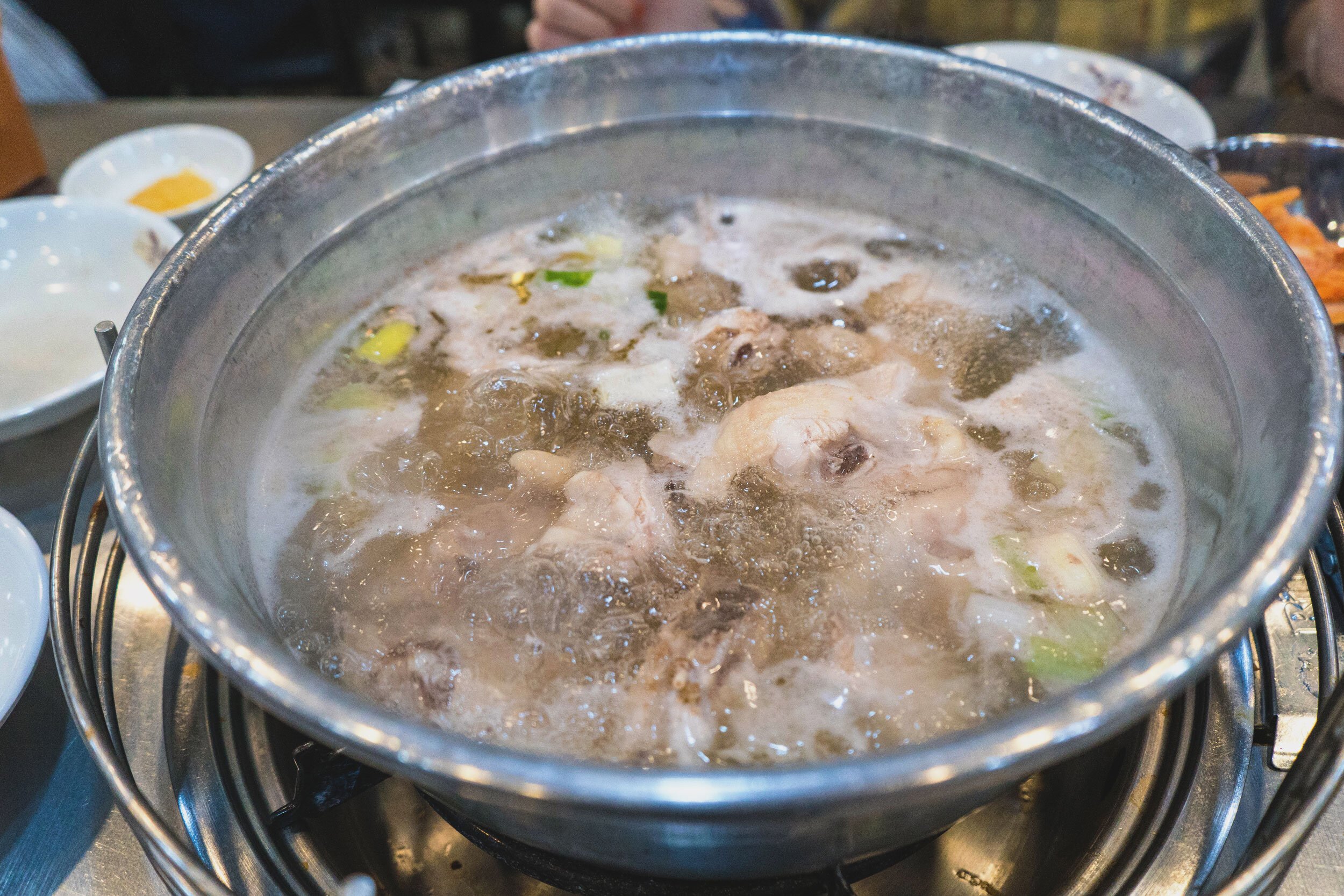
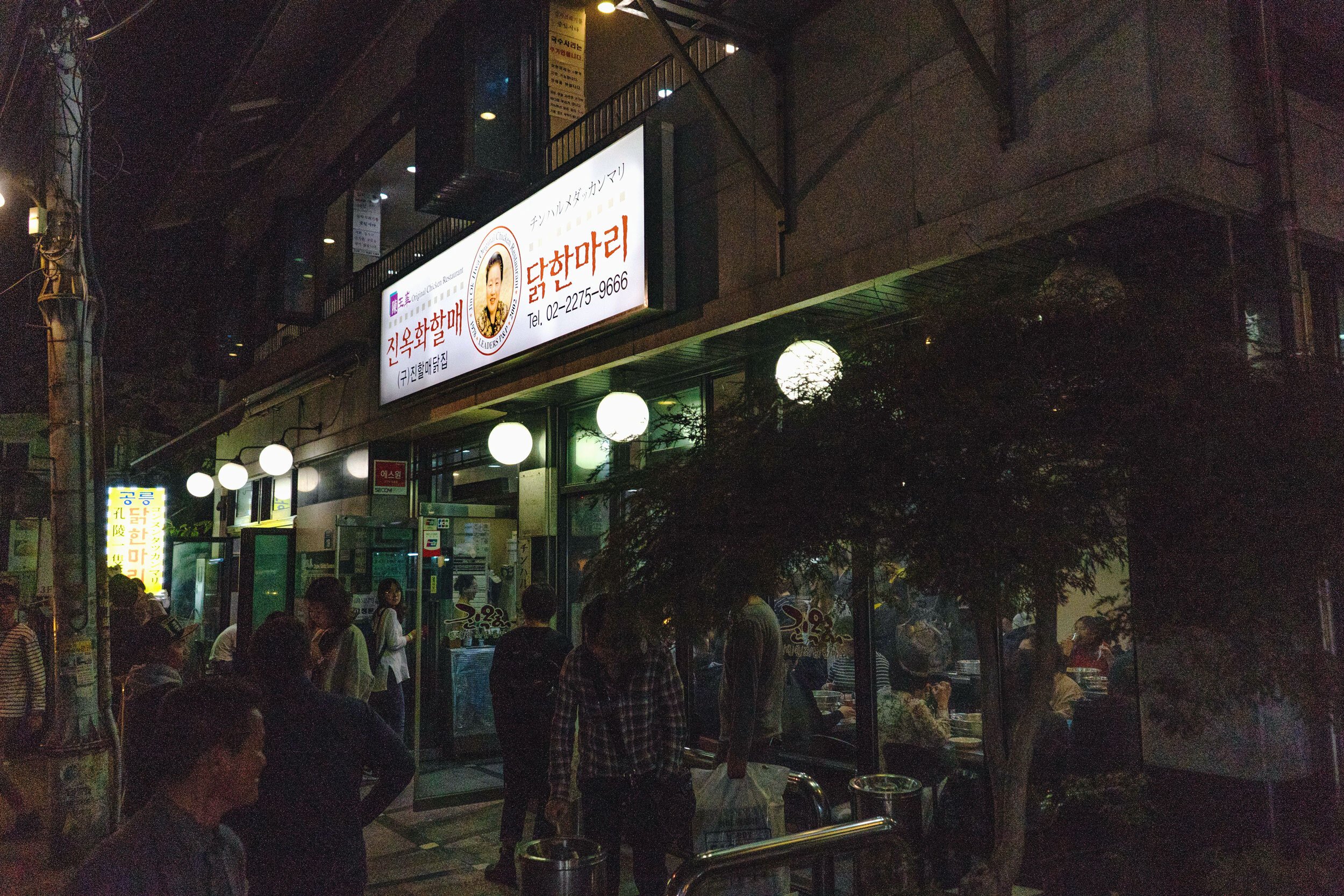
This restaurant only serves one dish: Dakhanmari - Chicken hot pot. They put a pot on your table’s burner with your chicken and vegetables and it starts to cook. It’s your job to mix your dipping sauce and order extras like tteokbokki if you want.
While it’s so simple, it’s so good. There was a large crowd waiting to be seated outside, but with 3 floors of tables, the wait wasn’t that long at all. You could go to the neighboring restaurants serving the same thing, but you can’t lose with this place.
http://www.darkhanmari.co.kr
Area: Jongno 5-ga / Dondaemun
MAP
YEONGCHEON YOUNGHOE
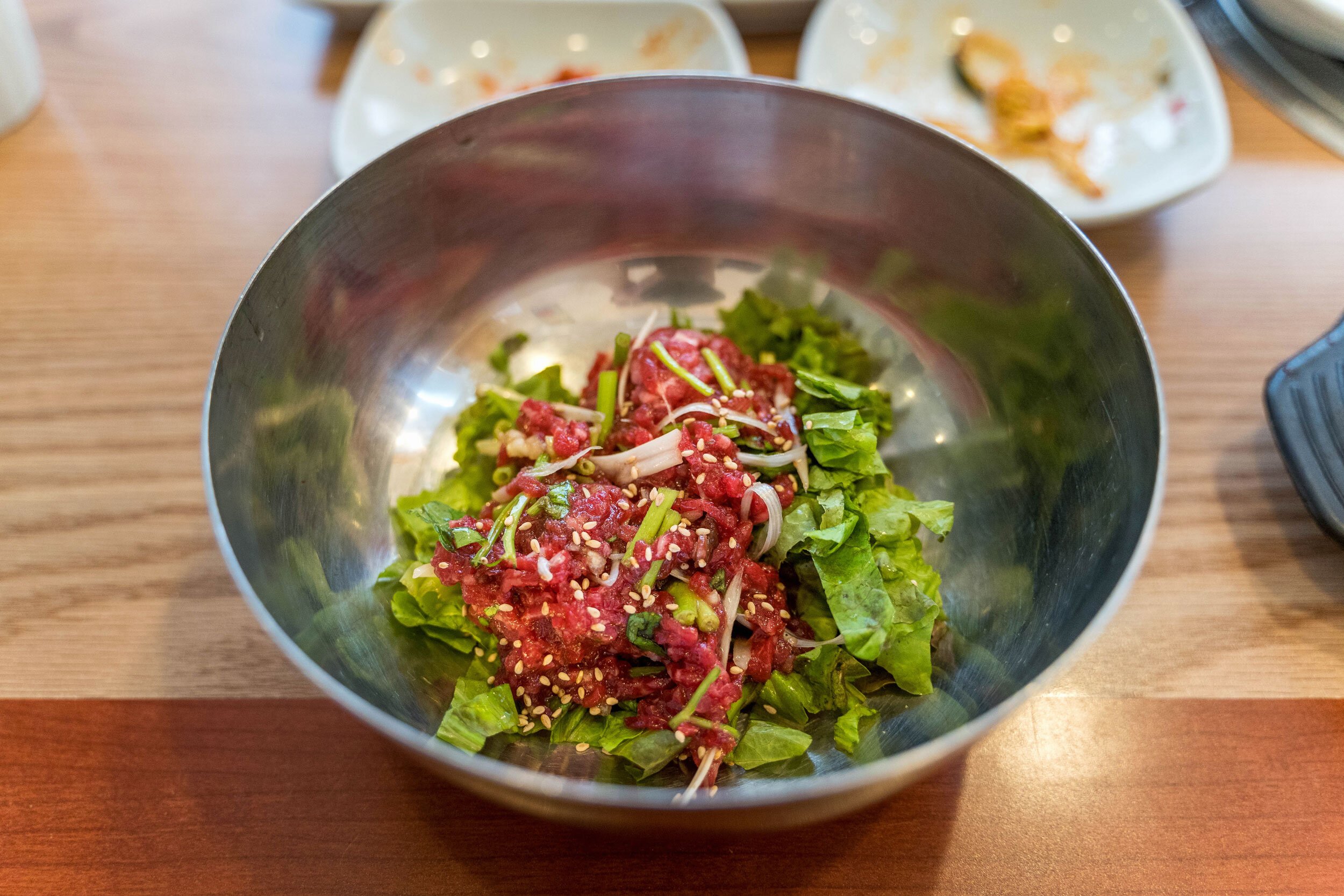
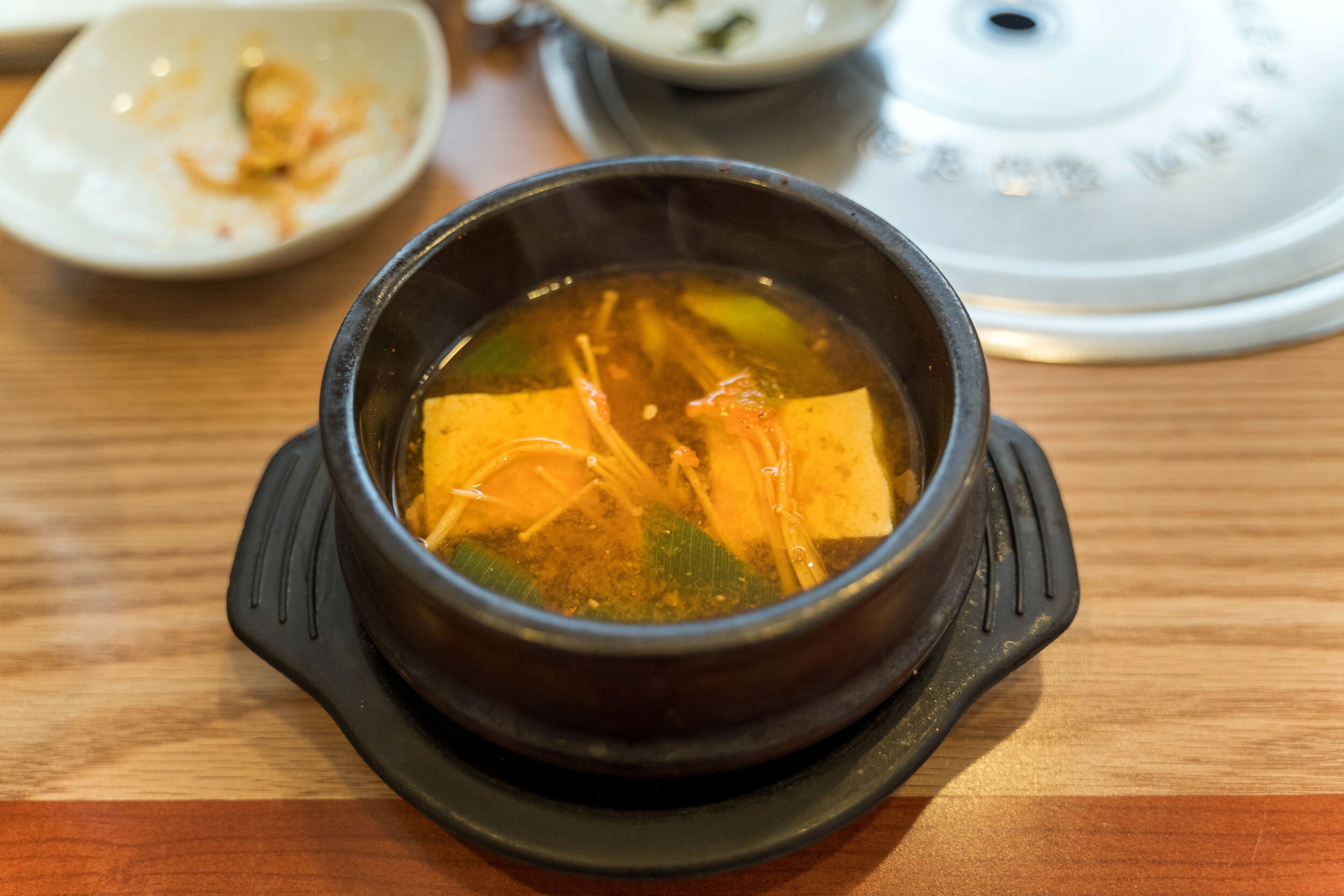
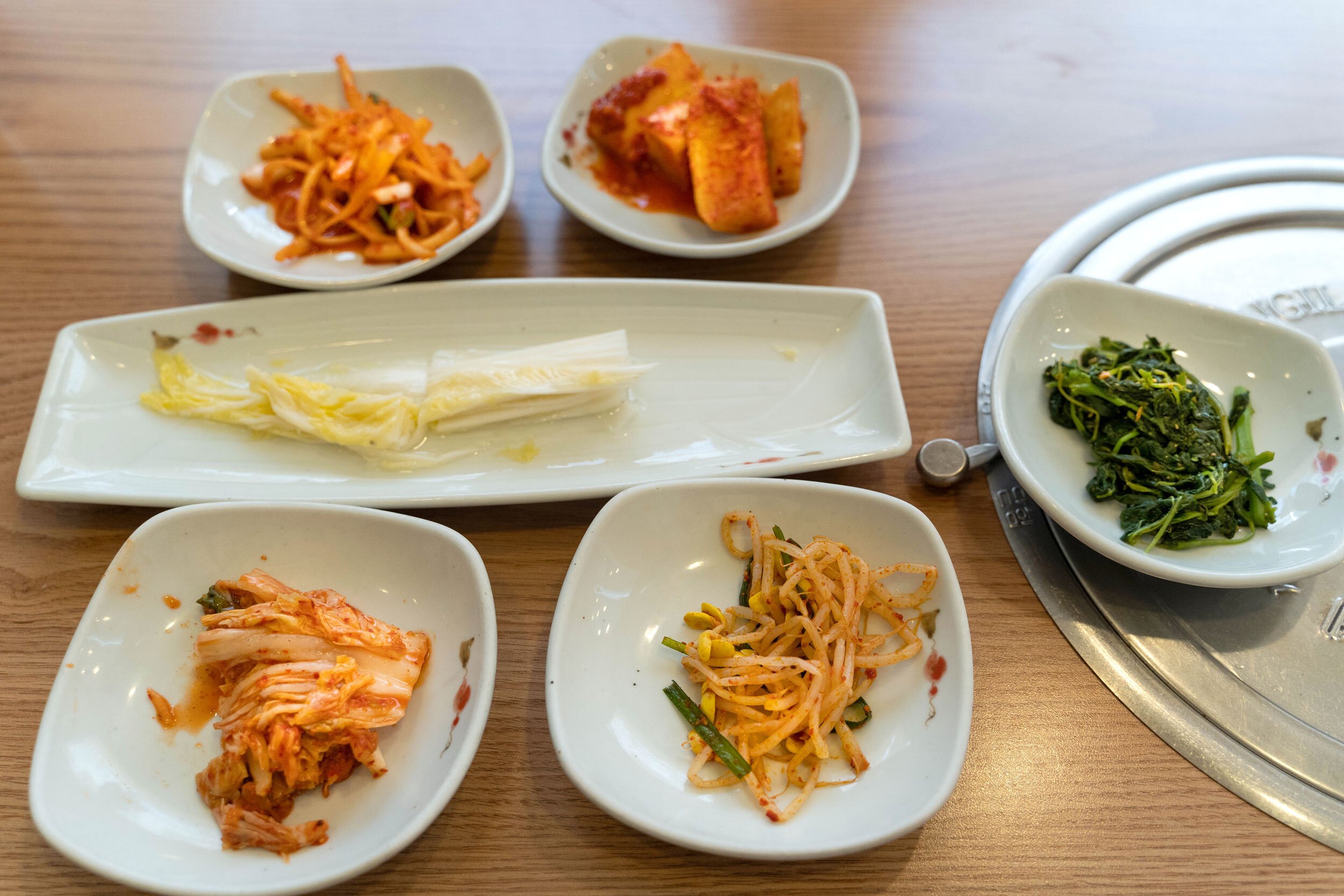
Bibimbap is one of Korea’s famous dishes, and Yeongcheon Younghoe in the upscale Cheongdam area of Gangnam was highly rated and apparently visited by celebrities.
We went for lunch and despite the restaurant being on the larger side, it was full with some waiting. The bimbap had a delicious mix of raw beef and greens - tender and fresh - mixed with rice.
A lot of the bibimbap I’ve seen at food stalls didn’t have beef, so this was a nice chance to have some that did.
https://nuon.tistory.com/209 [KR]
Area: Cheongdam, Gangnam
MAP
SINSEON SEOLLEONGTANG
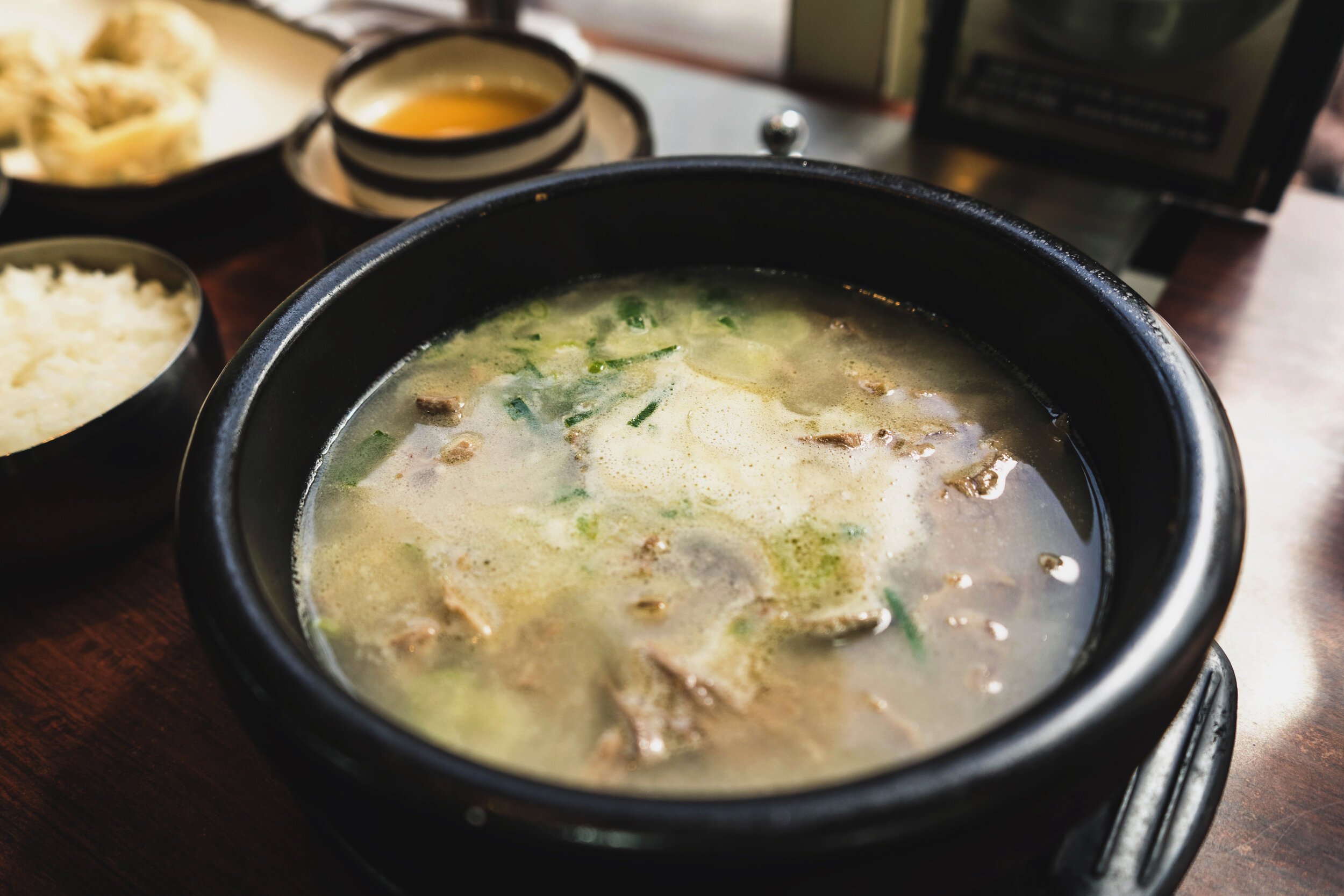
Really good oxtail soup still boiling in the pot. The seolleongtang oxtail soup st this chain was really good, and there’s unlimited kimchee at the table for your taking.
Service is quick and efficient. We went around noon for lunch and there was a line - it’s quite popular and has been featured in a Korean drama - but the line moved really quickly and was totally worth it.
http://www.kood.co.kr
Area: (Chain) Myeongdong
MAP
DAECHI JEONG-YUG SIGDAN
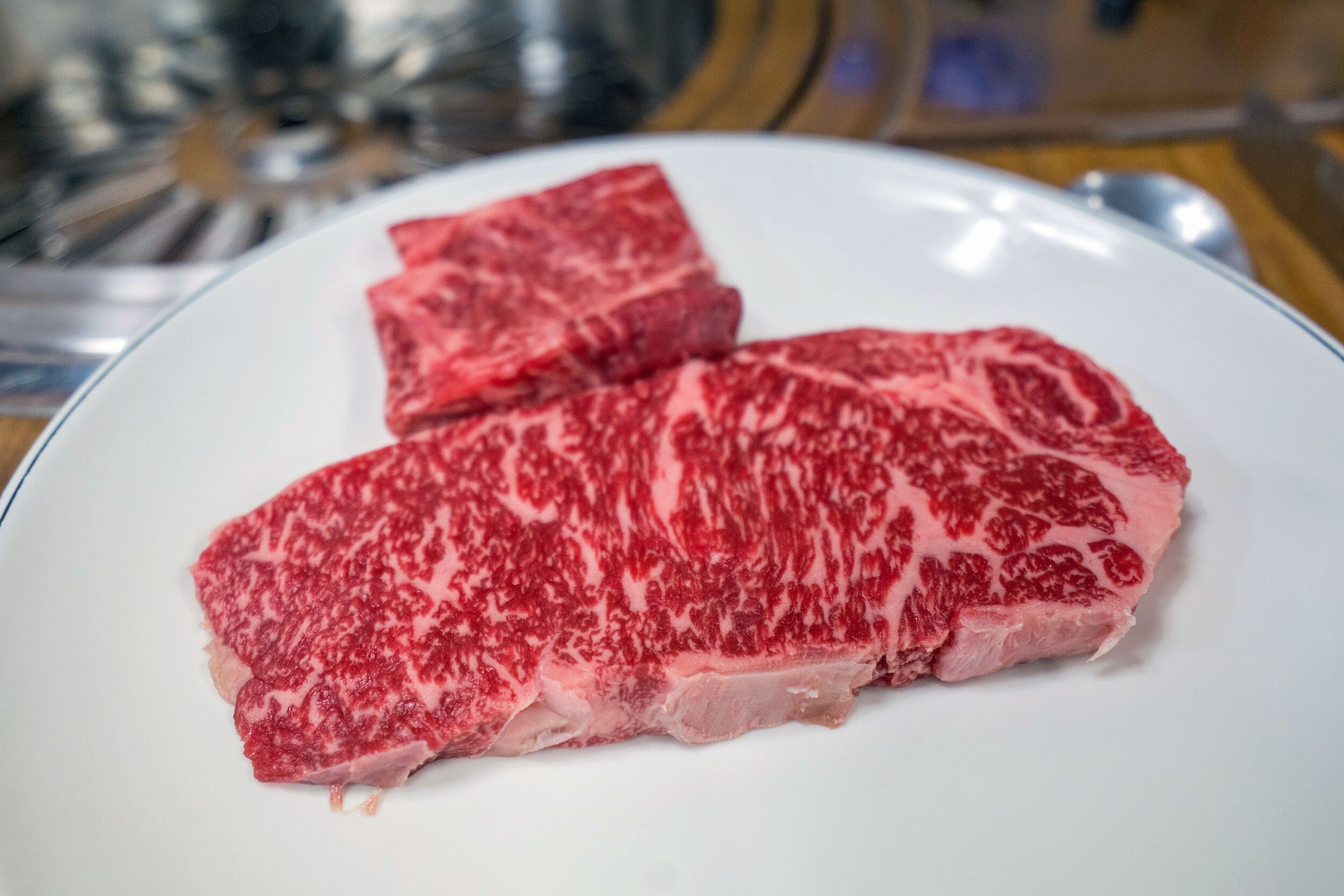
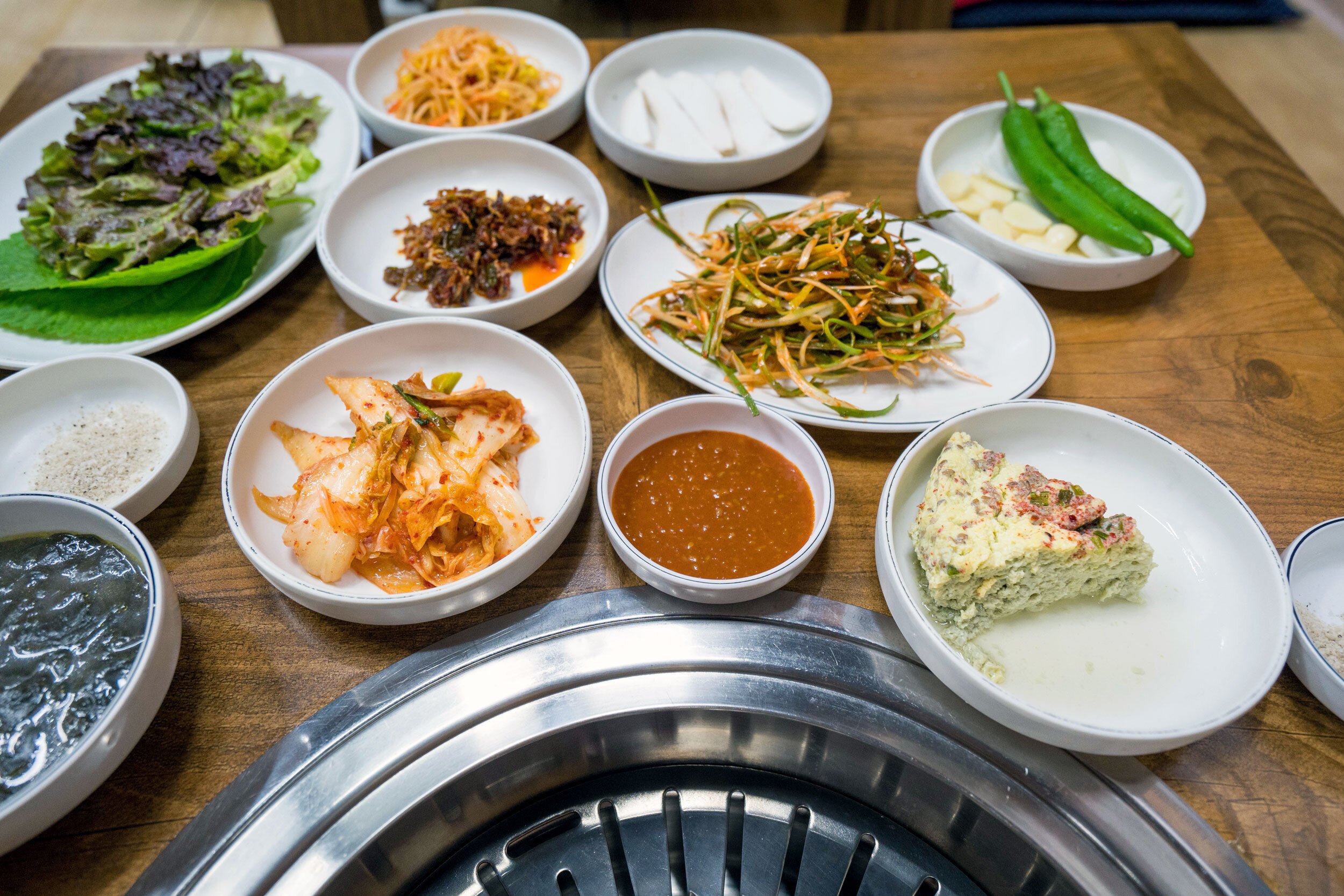
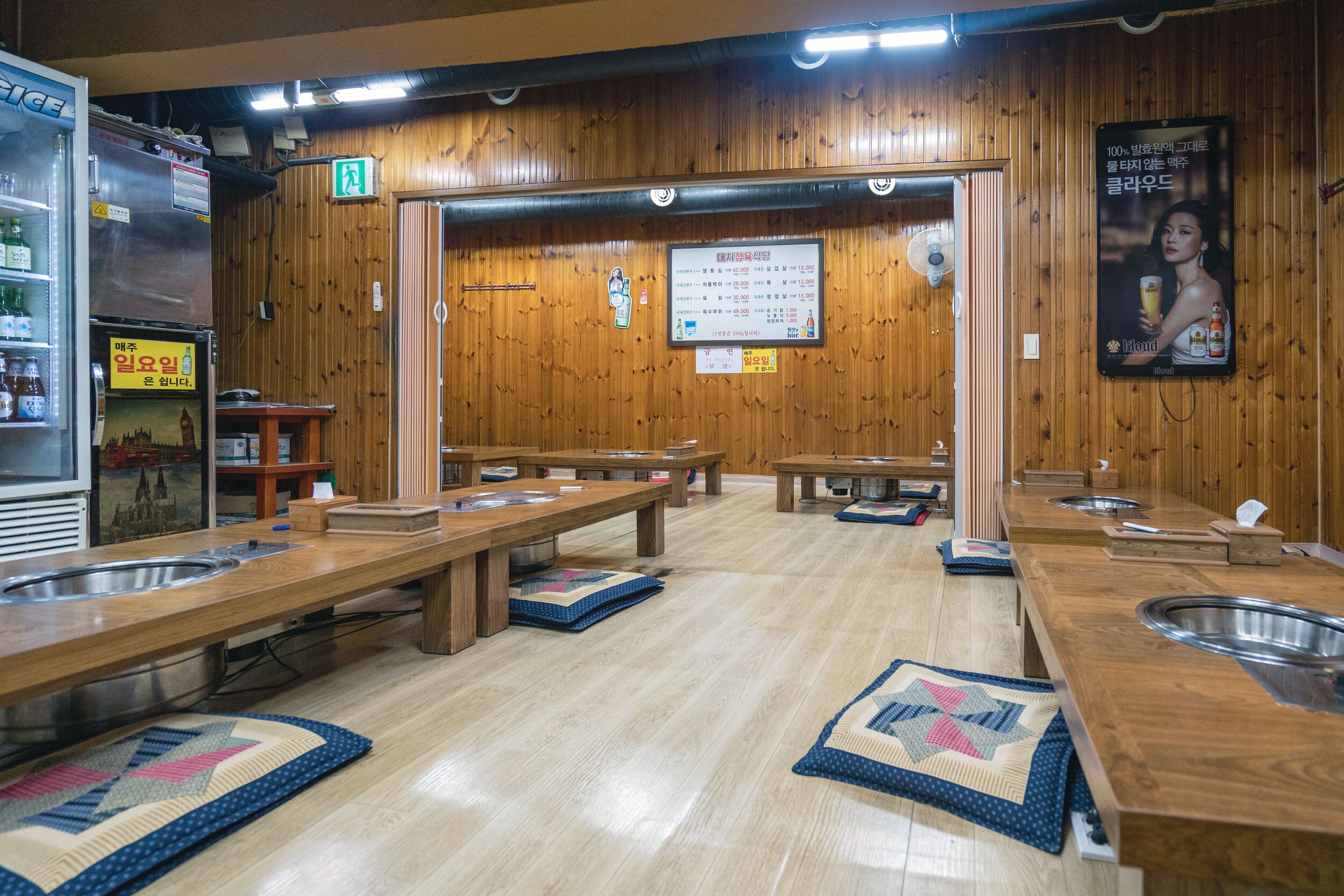
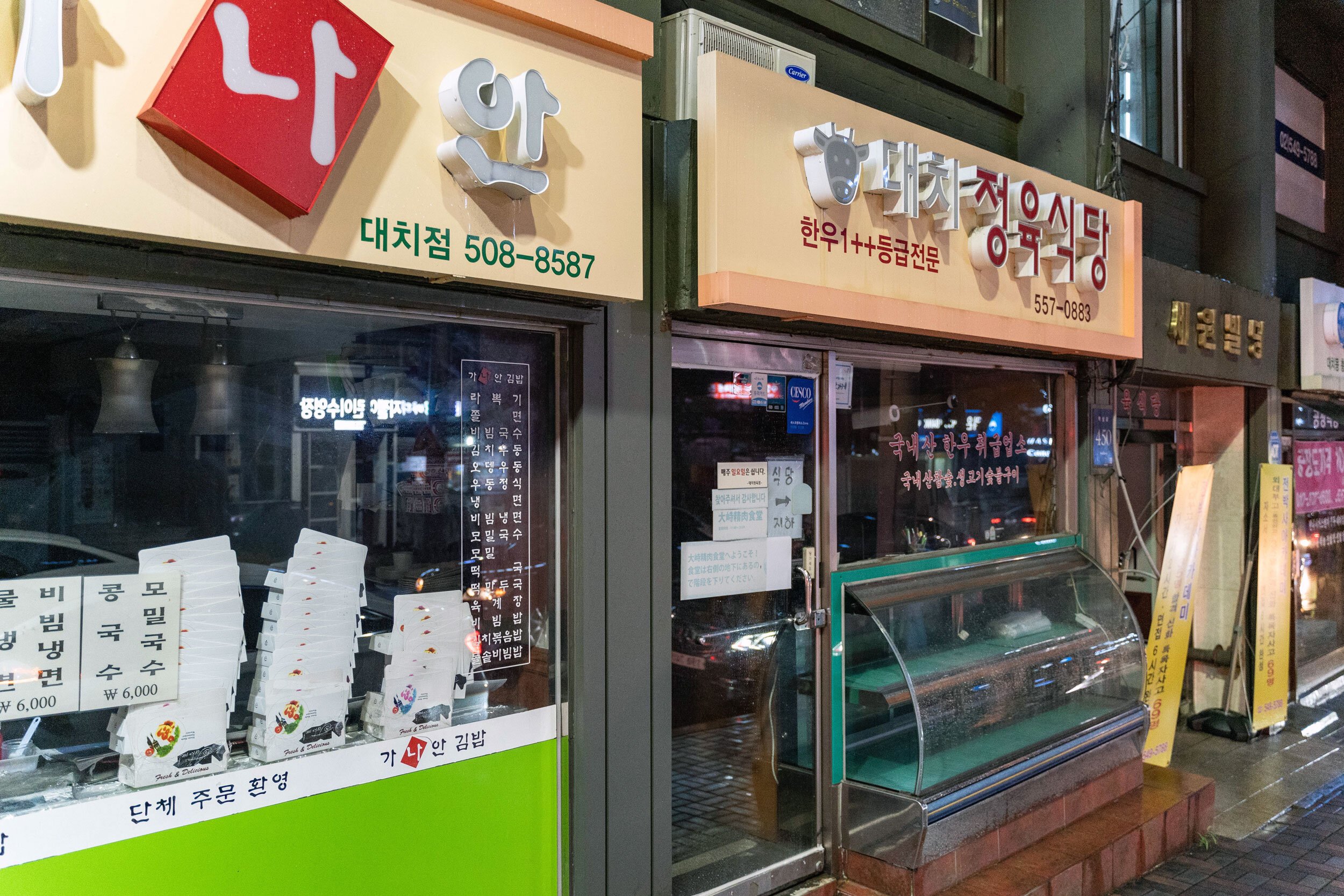
When a butcher shop runs its own Korean BBQ joint, it’s going to be delicious. This is the case with Daechi.
A 15-20 minute walk from COEX shopping mall, Daechi specializes in top grade Korean beef. The beef that they serve are Hanwoo beef and rated 1++ - the highest in the Beef Marbling Standard in Korea. We ordered beef to barbeque as well as yukke, slices of raw beef mixed with raw egg. So good.
Daechi is a bit hard to find - there’s an entrance near the meat shop and it’s down some stairs (last picture, to the right). If you’re around the COEX area, it’s worth checking out.
Area: Seolleung, Gangnam
MAP
DAKKAL WONJONIB
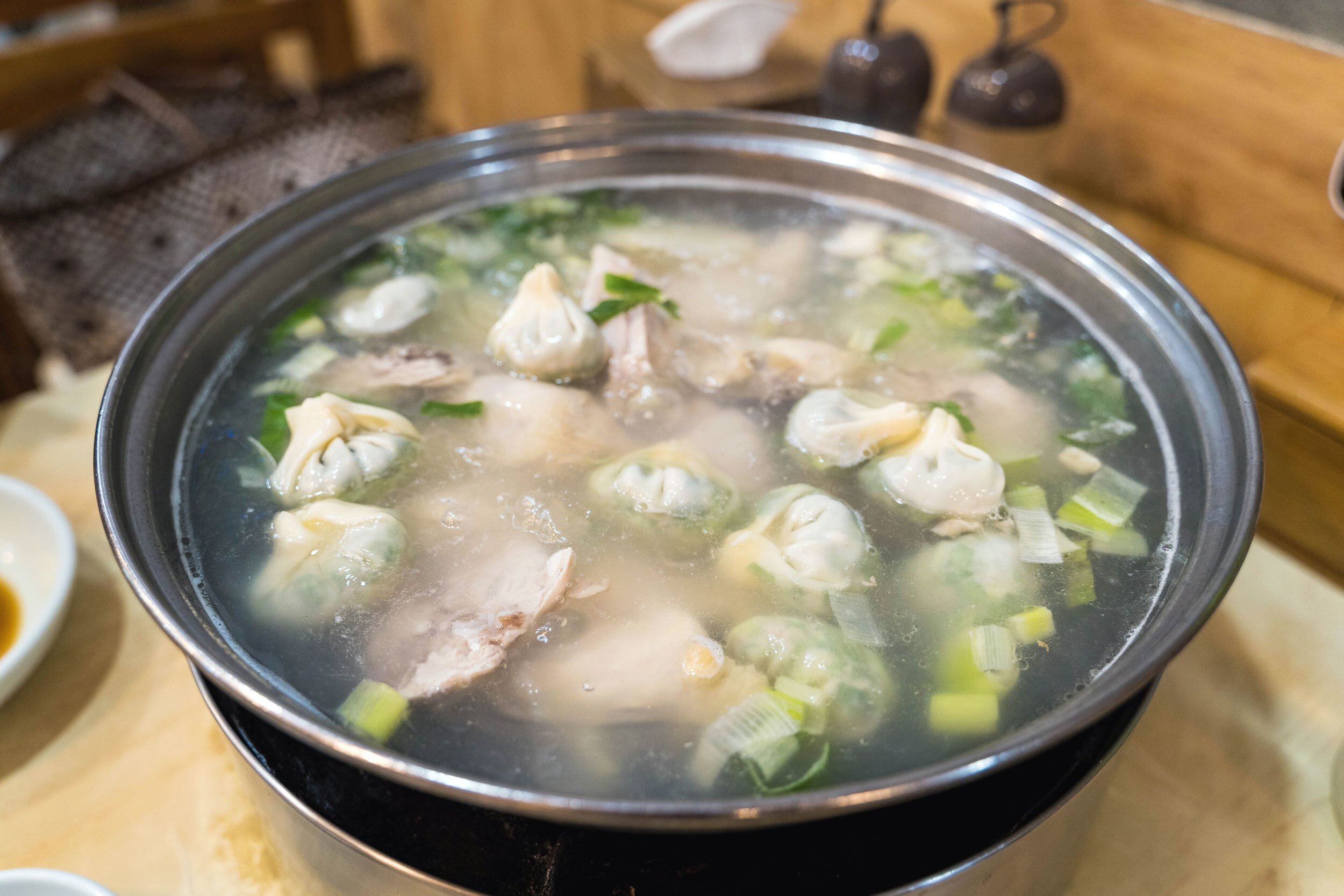
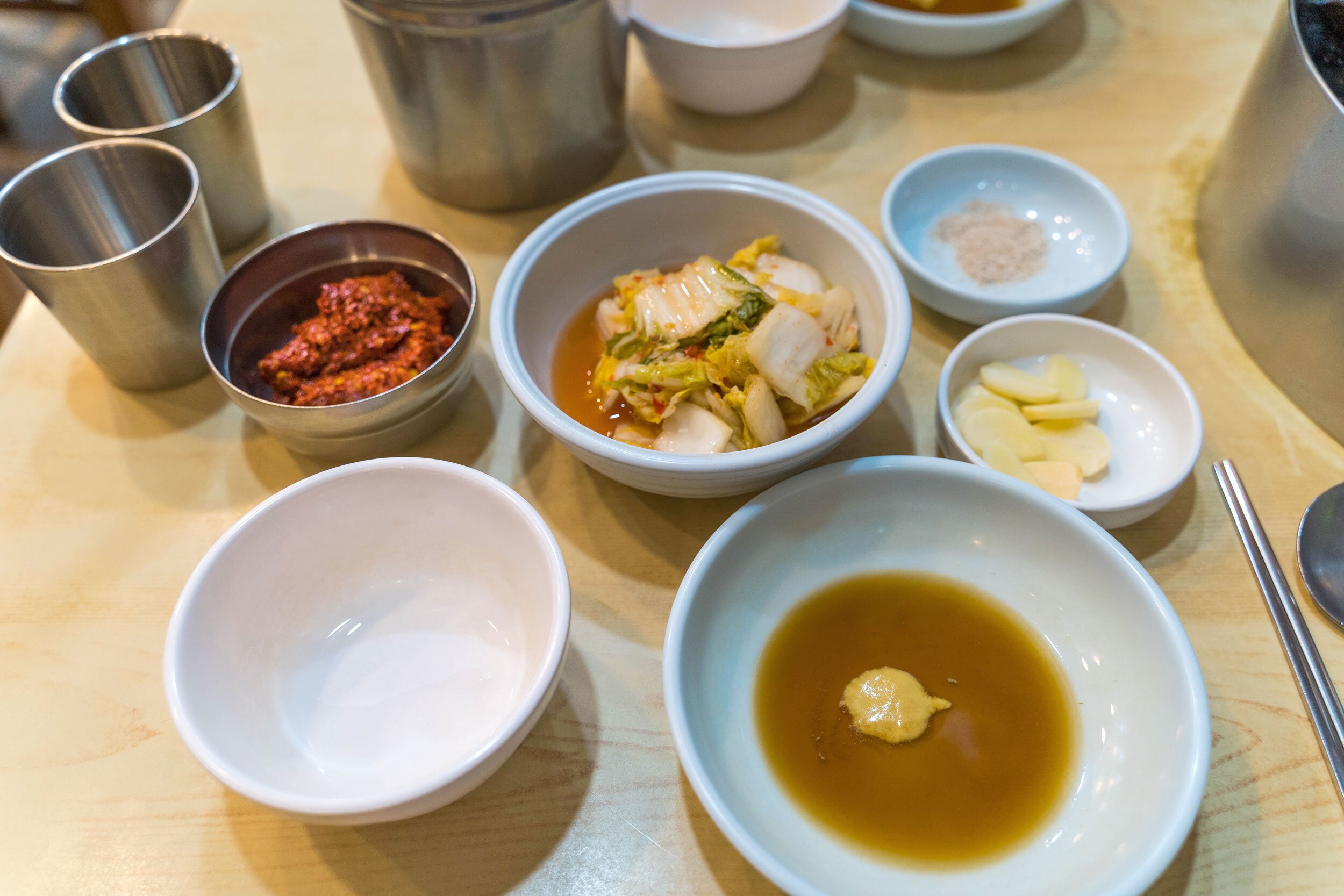
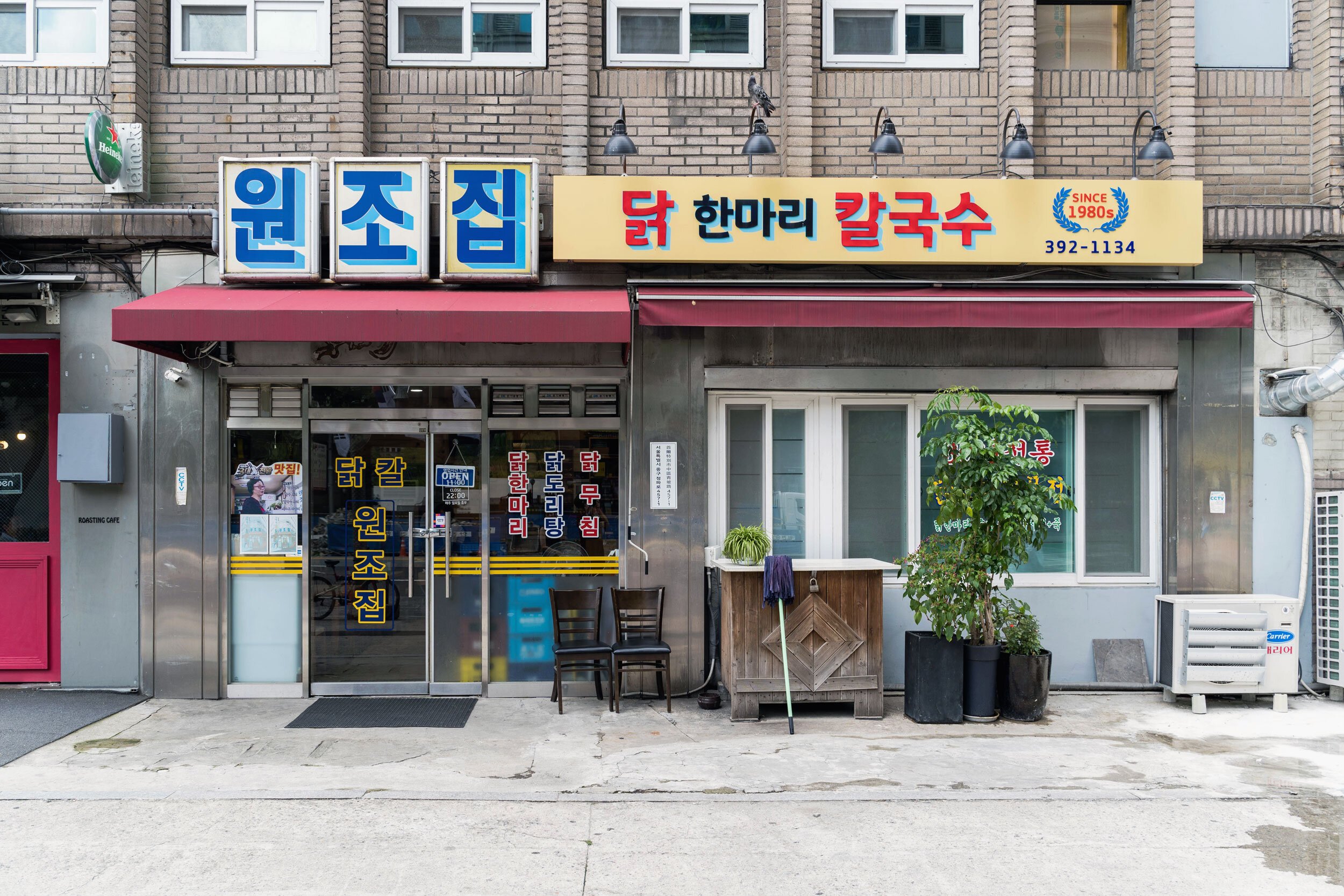
Dakhanmari is probably one of the simplest Korean dishes yet it’s just so good. It’s basically a chicken in a boiling hot pot where you dip into a spicy sauce.
Compared to the more famous Jinokhwa, Dakkal Wonjonib is a smaller, more local restaurant serving the dish. They’re both fantastic, the biggest differences would be that Jinokhwa gives more dipping sauce while Dakkal Wonjonib’s broth has more chicken and garlic flavor in it.
It’s in the Seoul Station area so relatively convenient, making for a nice local option to get some good Korean chicken hot pot.
UKE ZAMEZIP
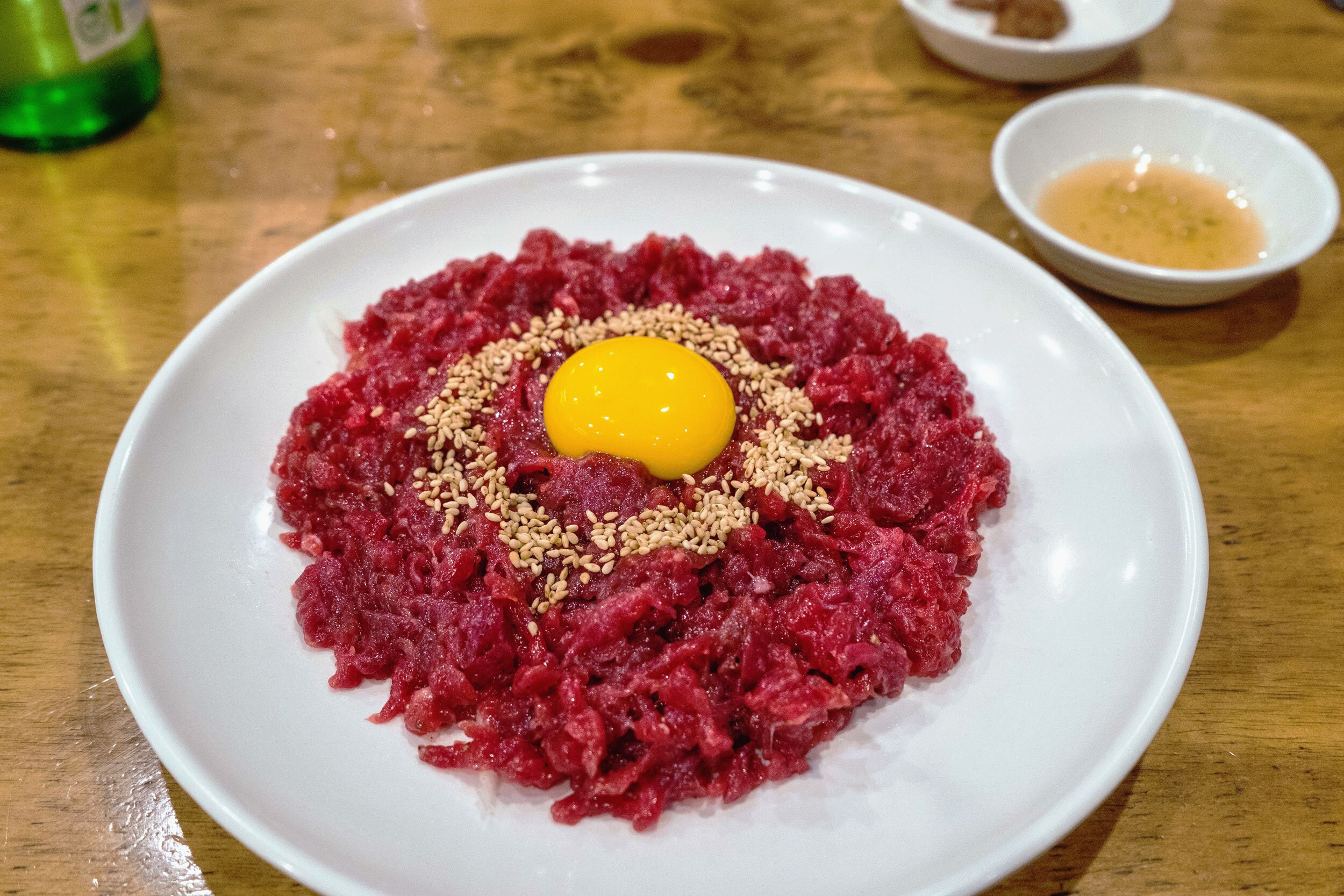
Raw beef mixed with raw egg, dipped in sesame oil and salt. So delicious.
We stopped by Uke Zamezip for some fresh yukhoe while on the way to Gwangjang Market for some street food. It was well worth it. The casual vibe - enjoying yukke over conversation and cheers of soju and beer, was a nice segue to sitting at the food stalls in the nearby Market.
CAFES
CAFE ONION
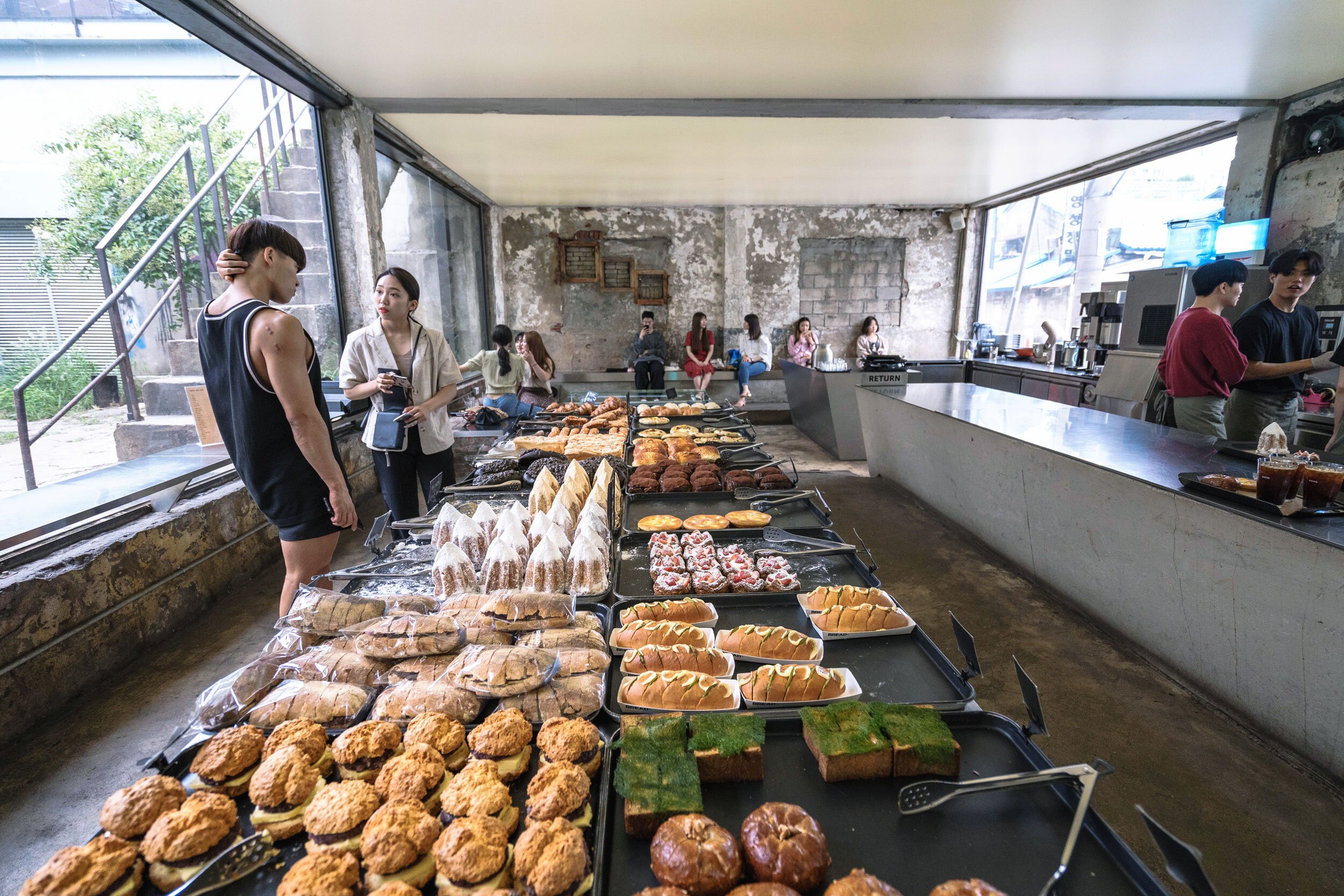
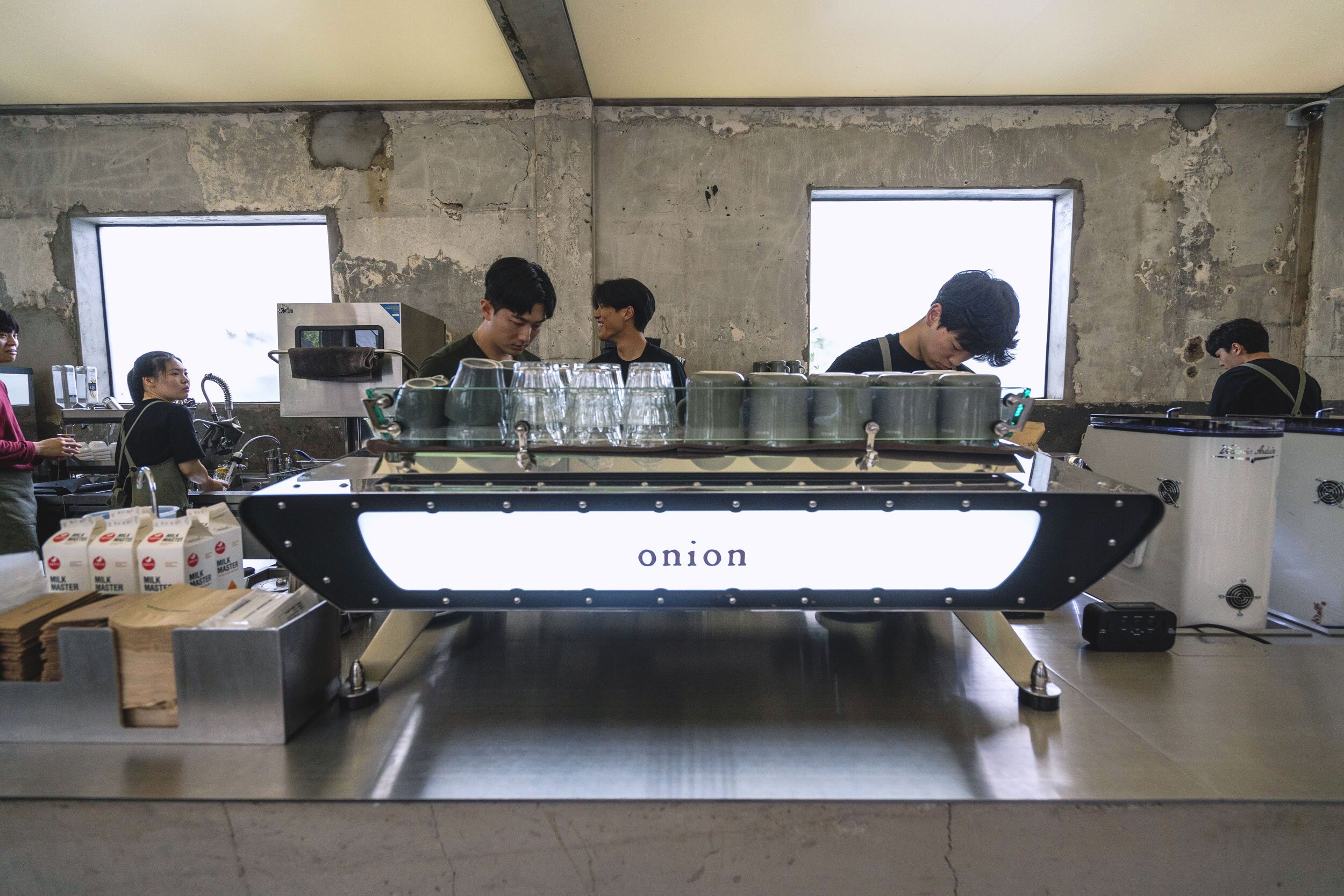
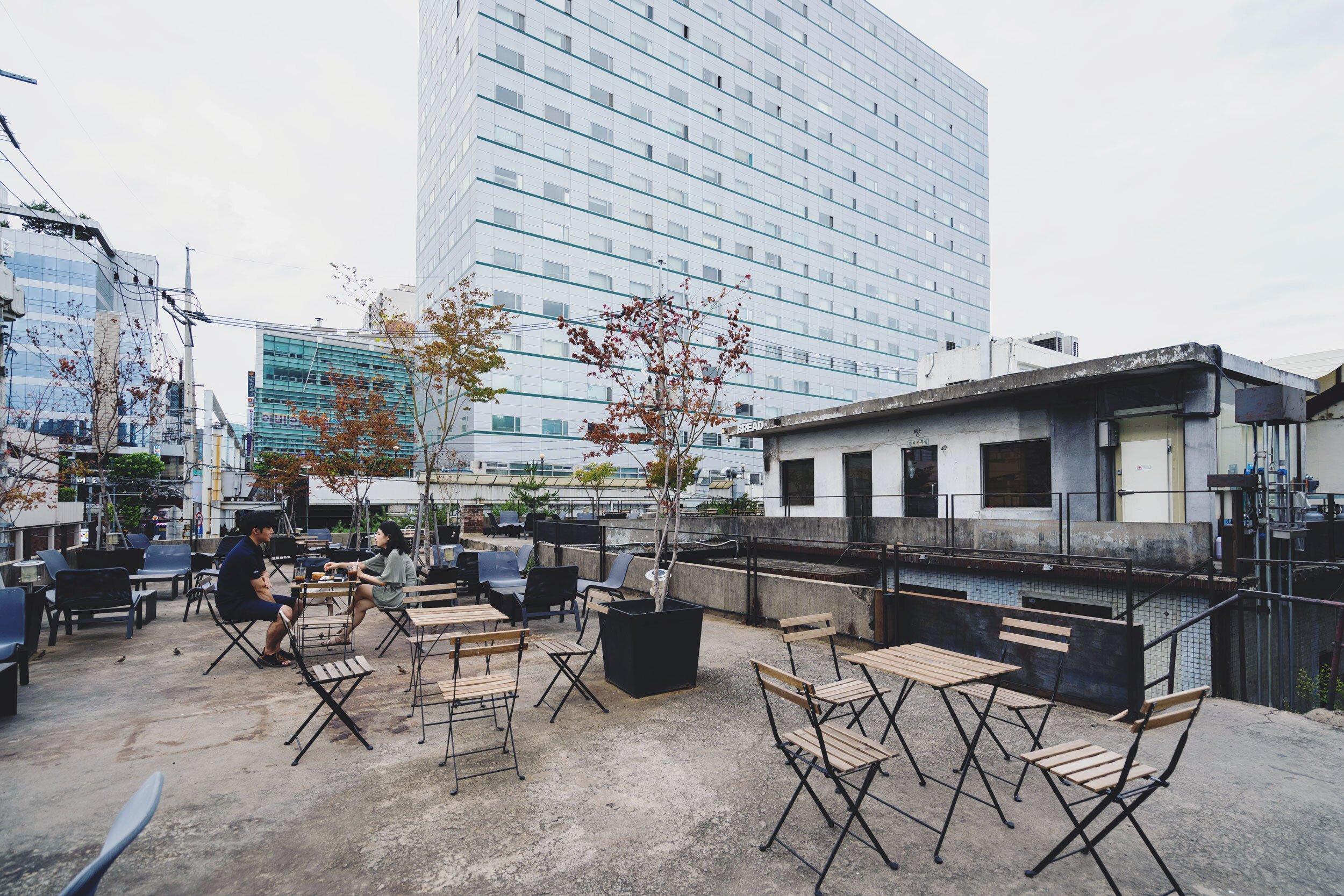
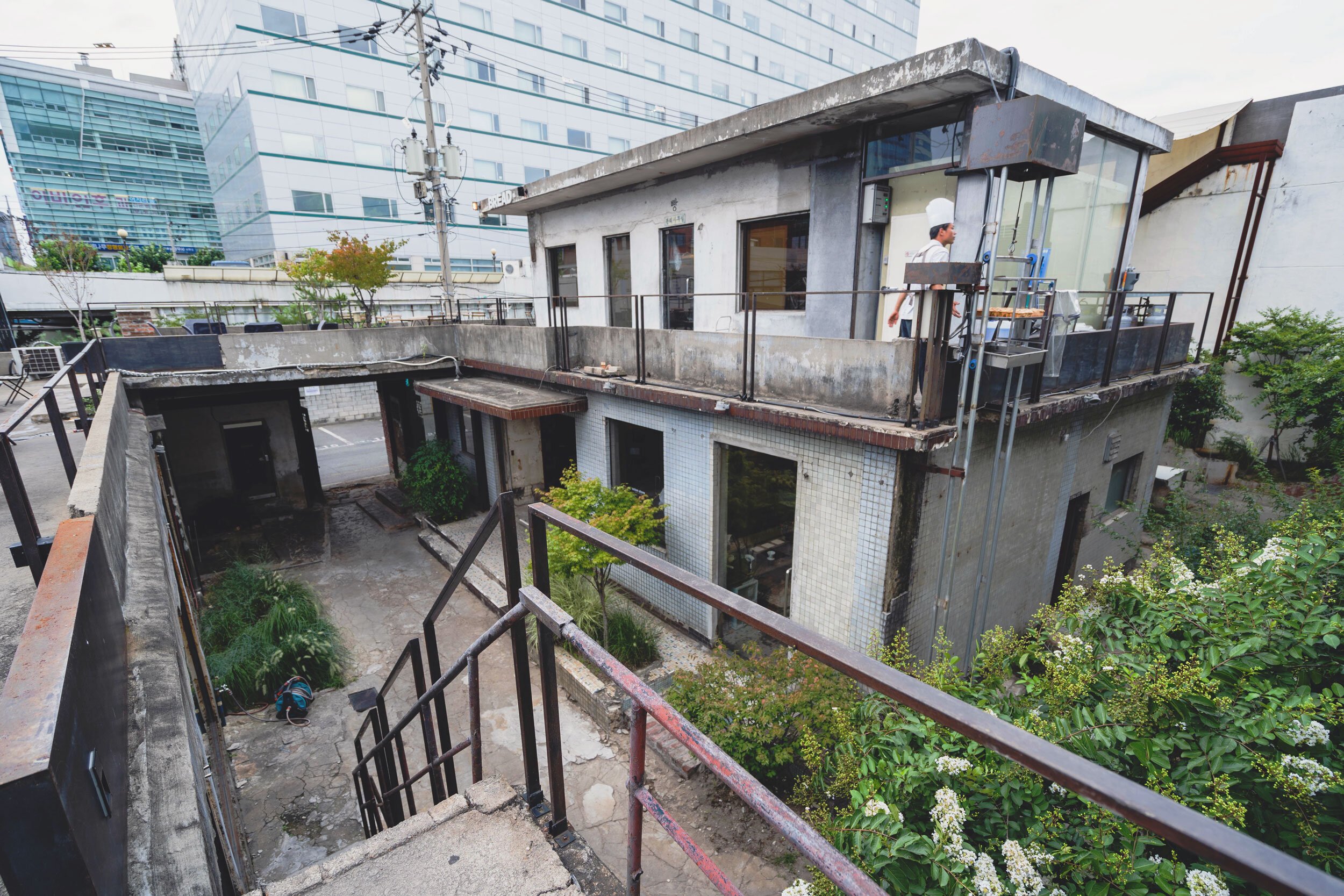
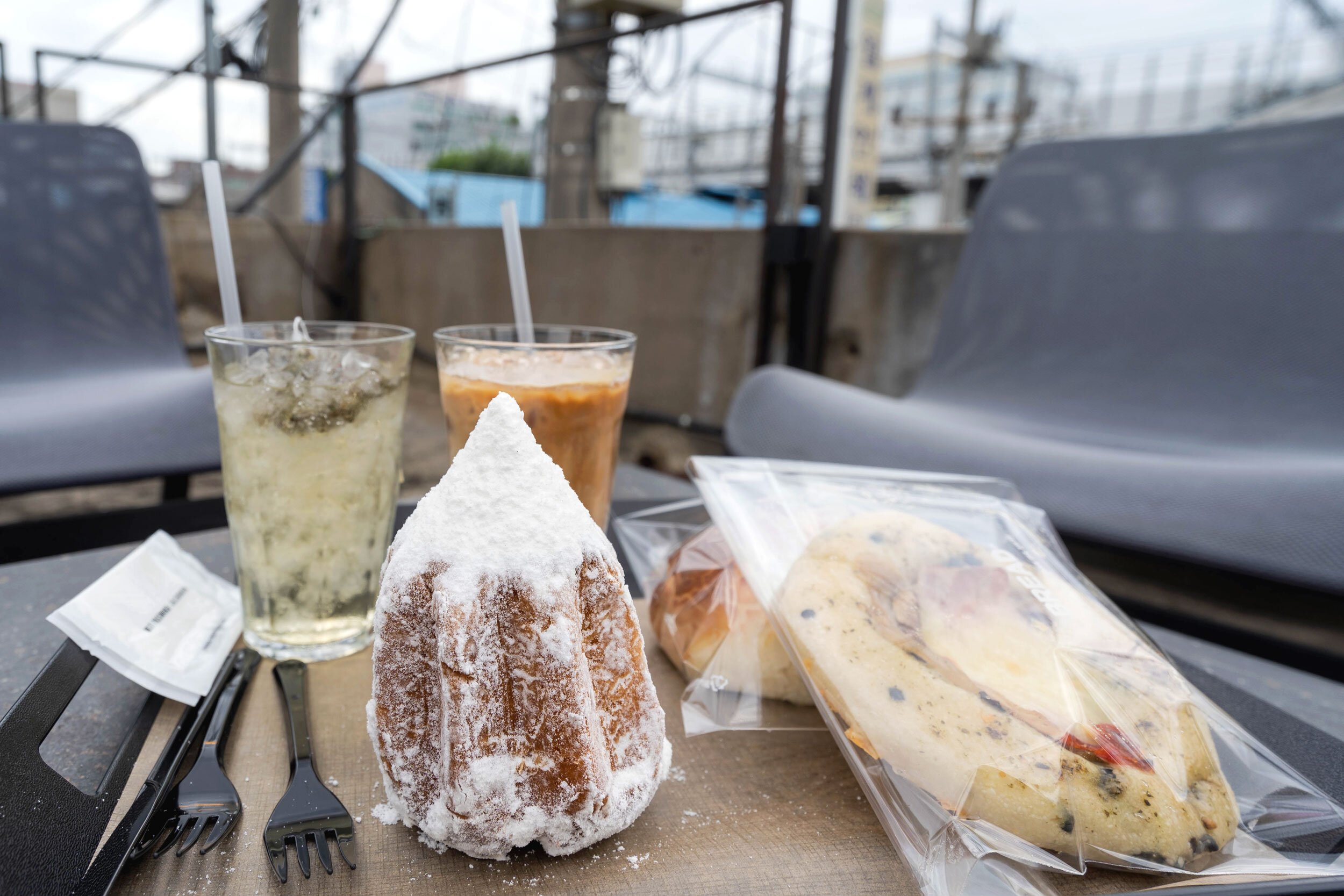
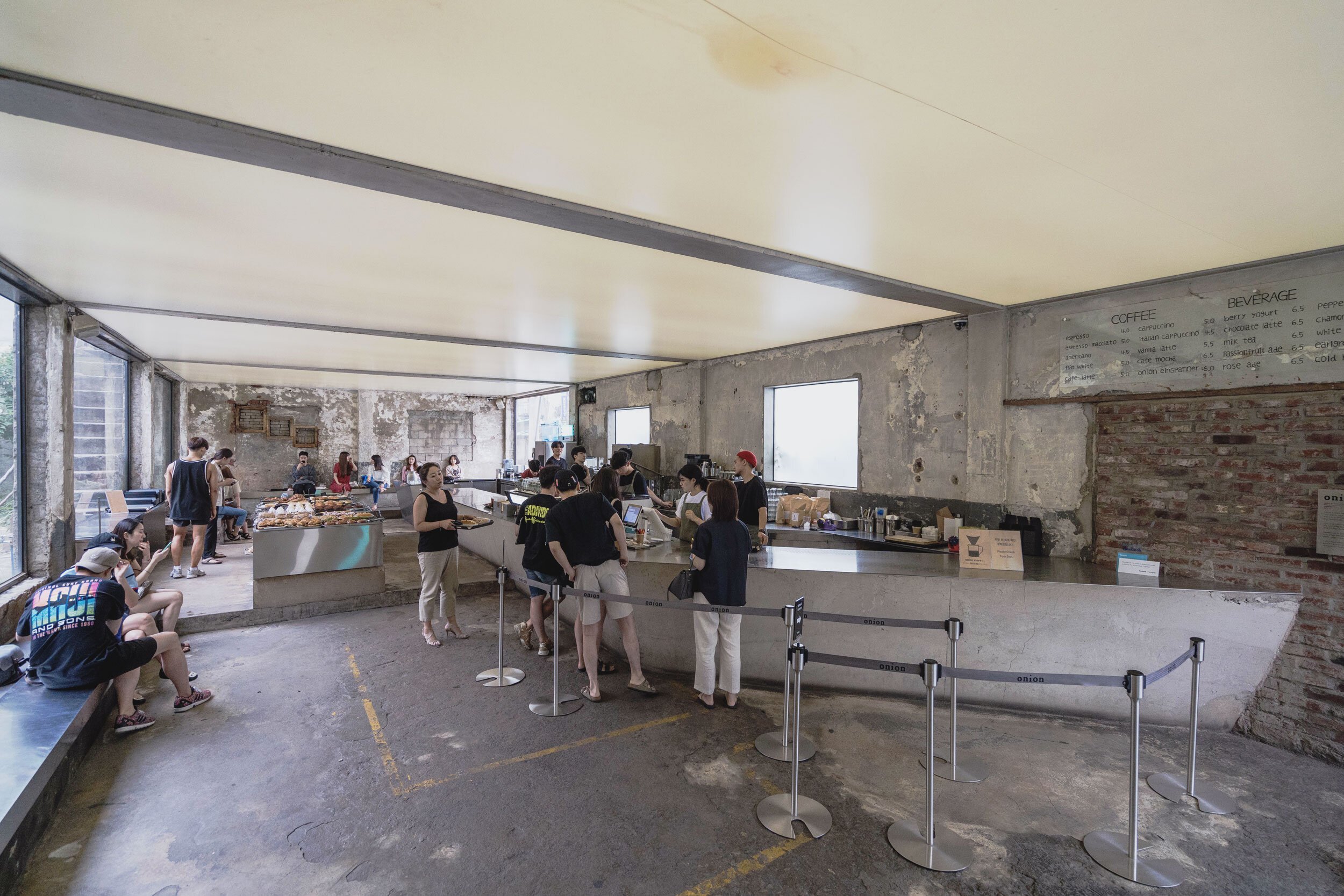

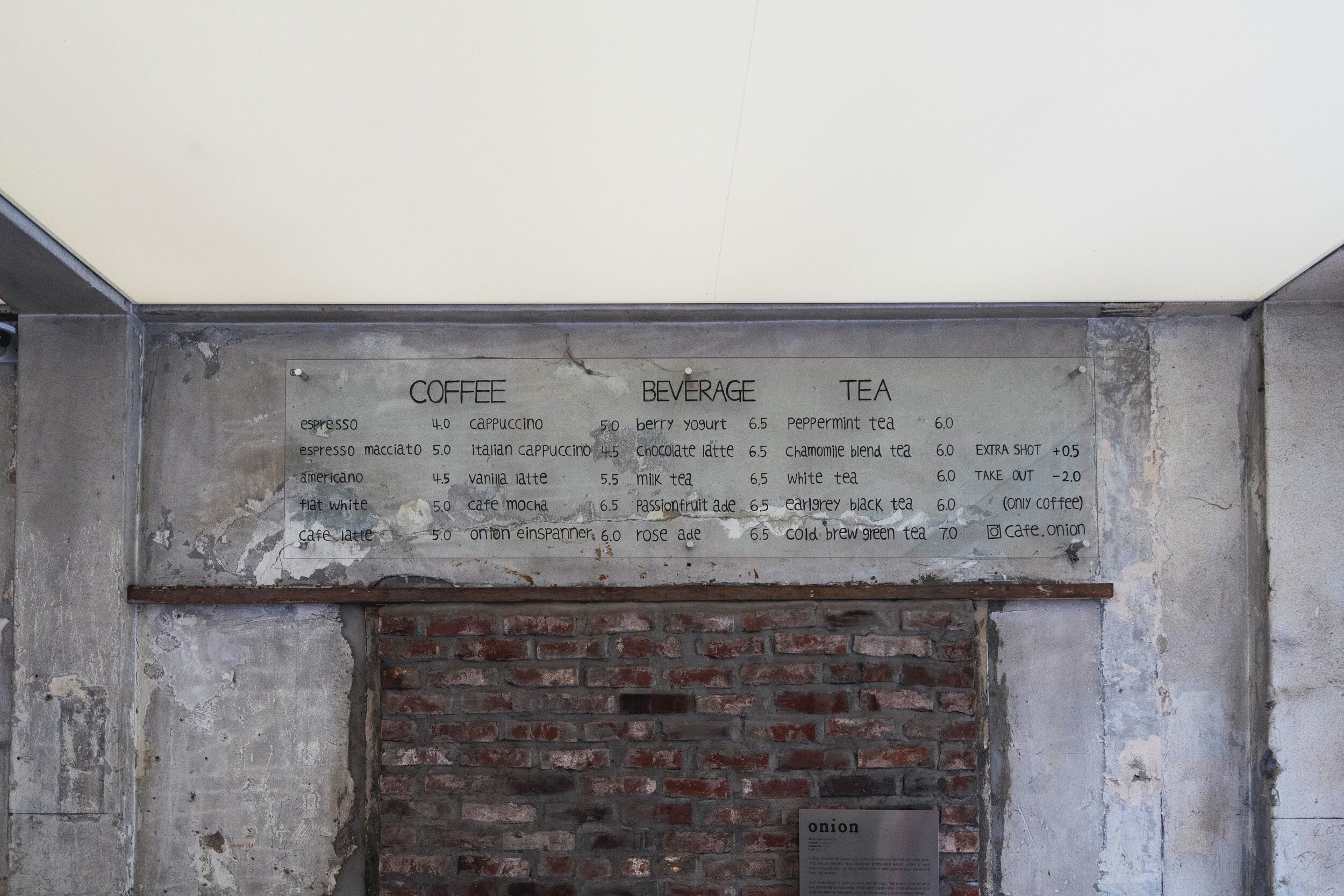

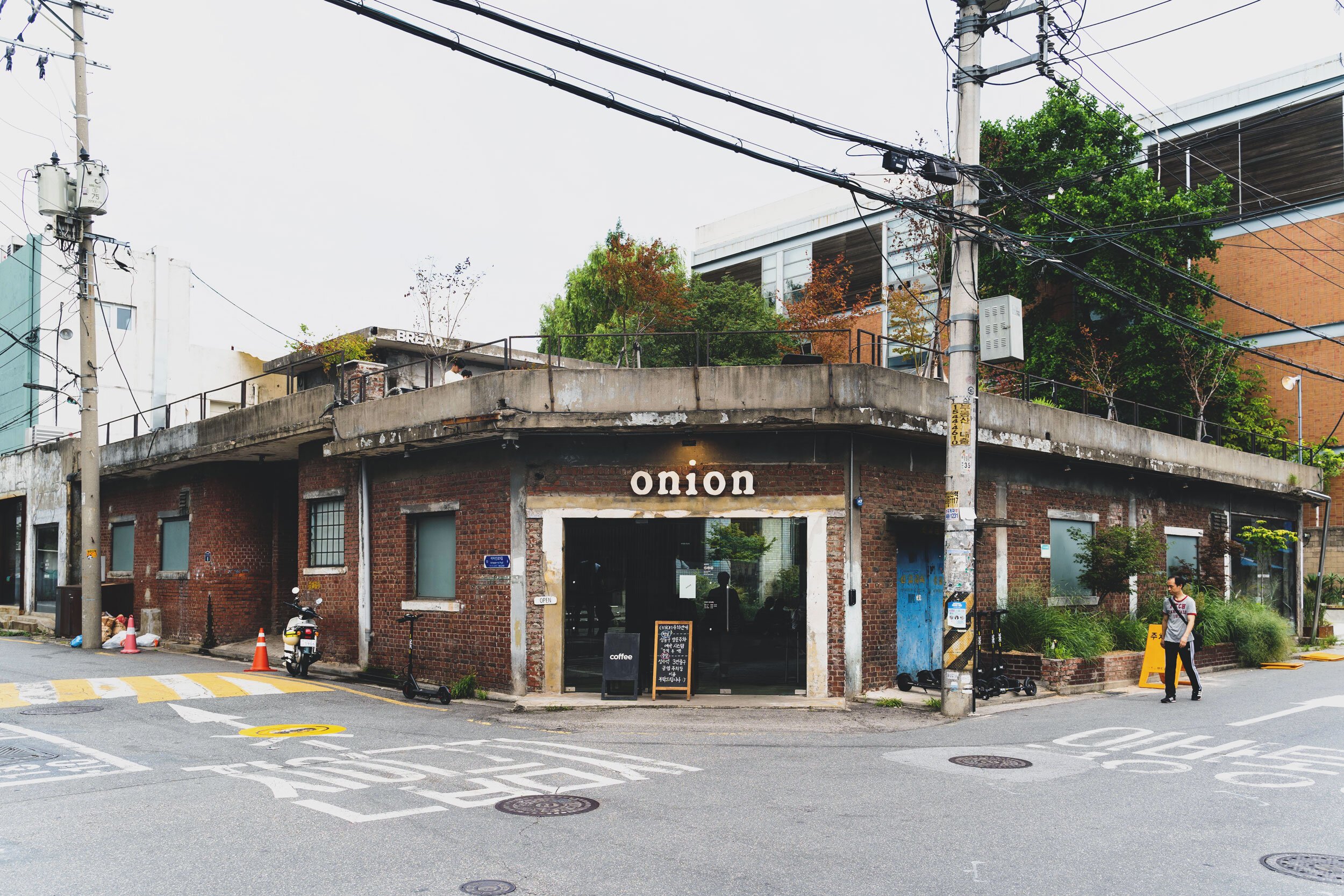
Possibly the hippest cafe chain in the city with locations that are converted old buildings. Their spot in Seongsu, the “Brooklyn of Seoul,” is in a gutted 1970s building that served as a former factory.
Cafe Onion Seongsu manages to balance old and new perfectly, and in doing this, makes for an extremely photogenic hang out. There are multiple seating areas, nooks and a rooftop as well. Their coffees and artisanal, homemade pastries and baked goods are tasty.
Great place to stop by when exploring the area and to take pictures.
TripAdvisor
Area: Seongsu
MAP
CHA TEUL TEAHOUSE

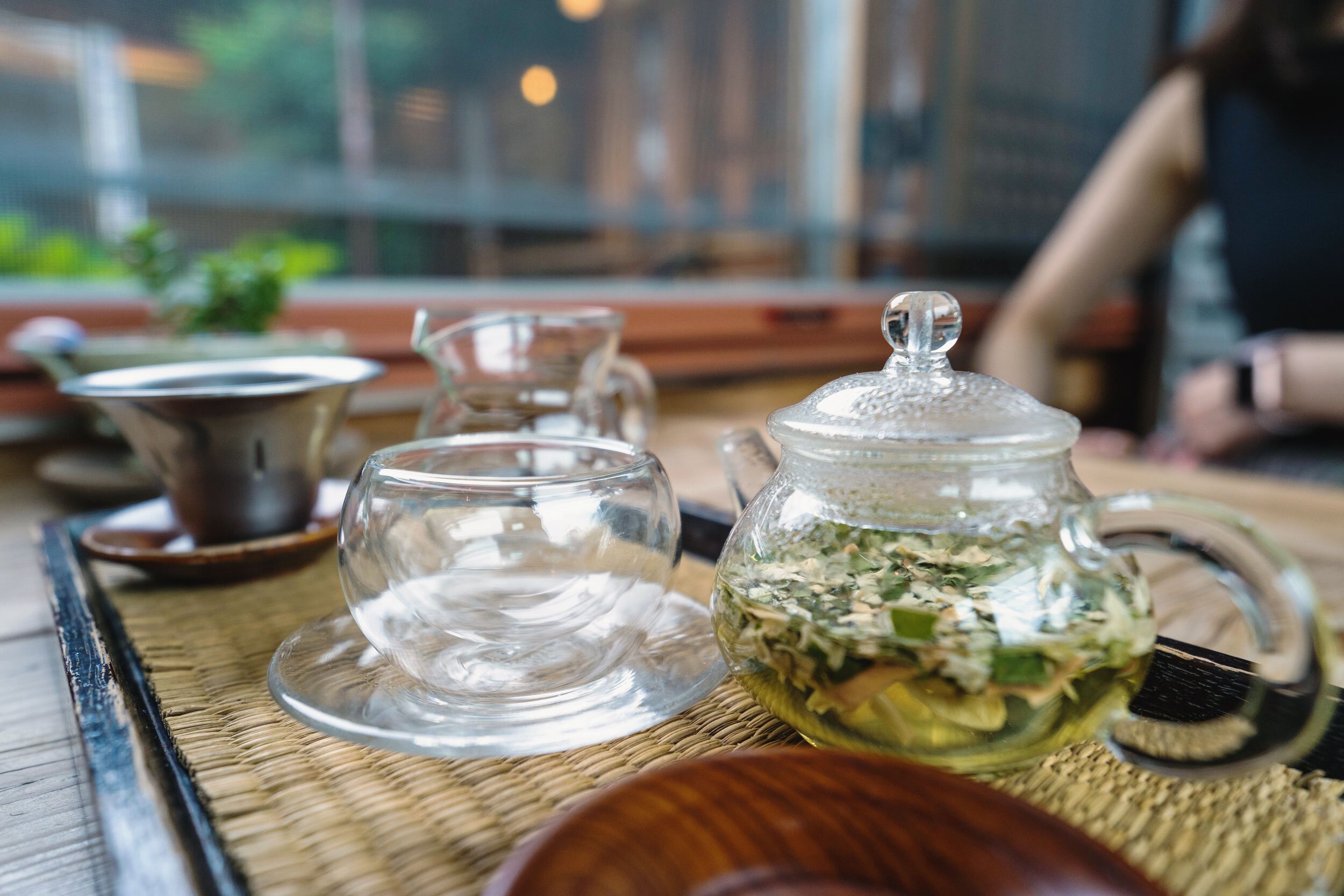
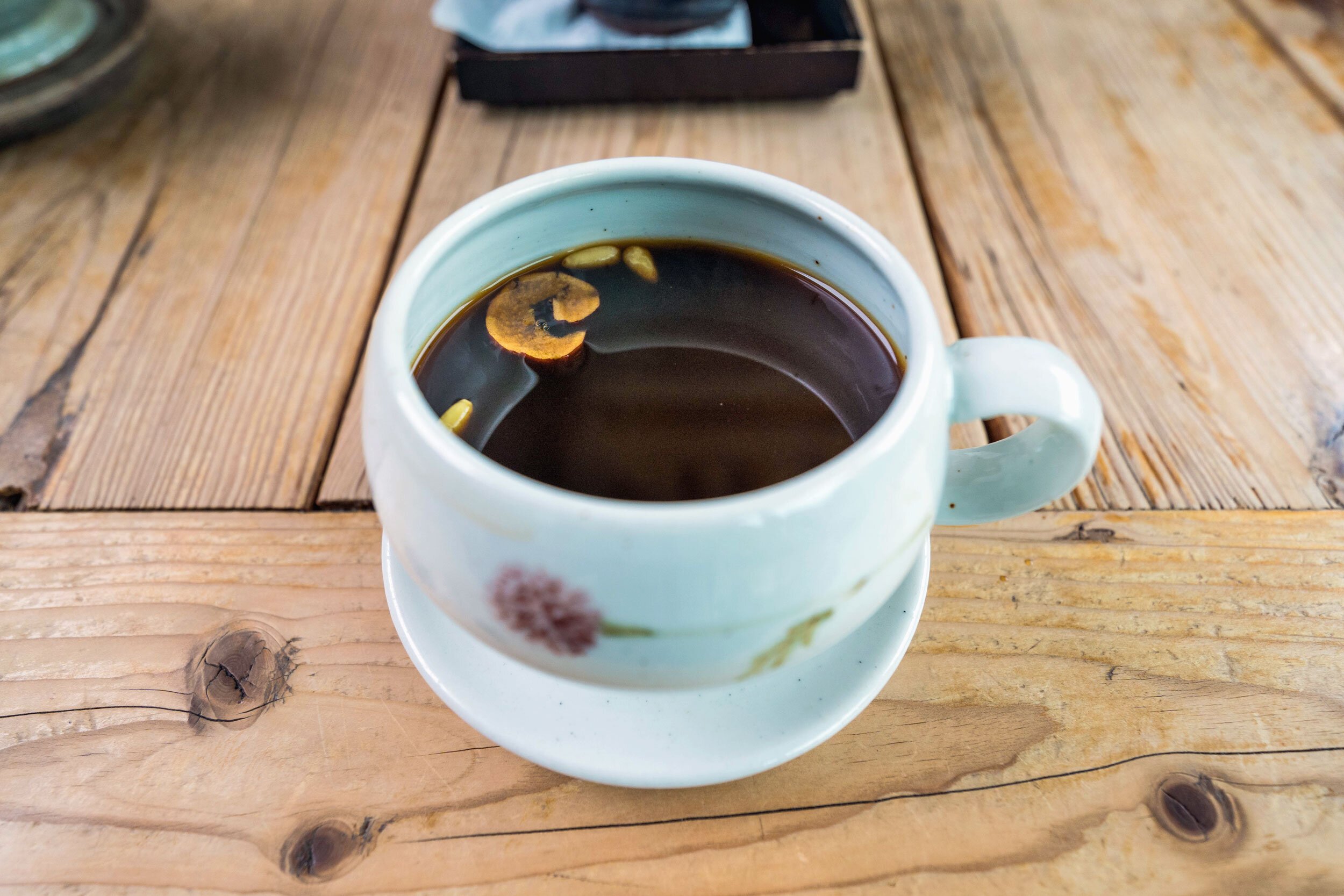
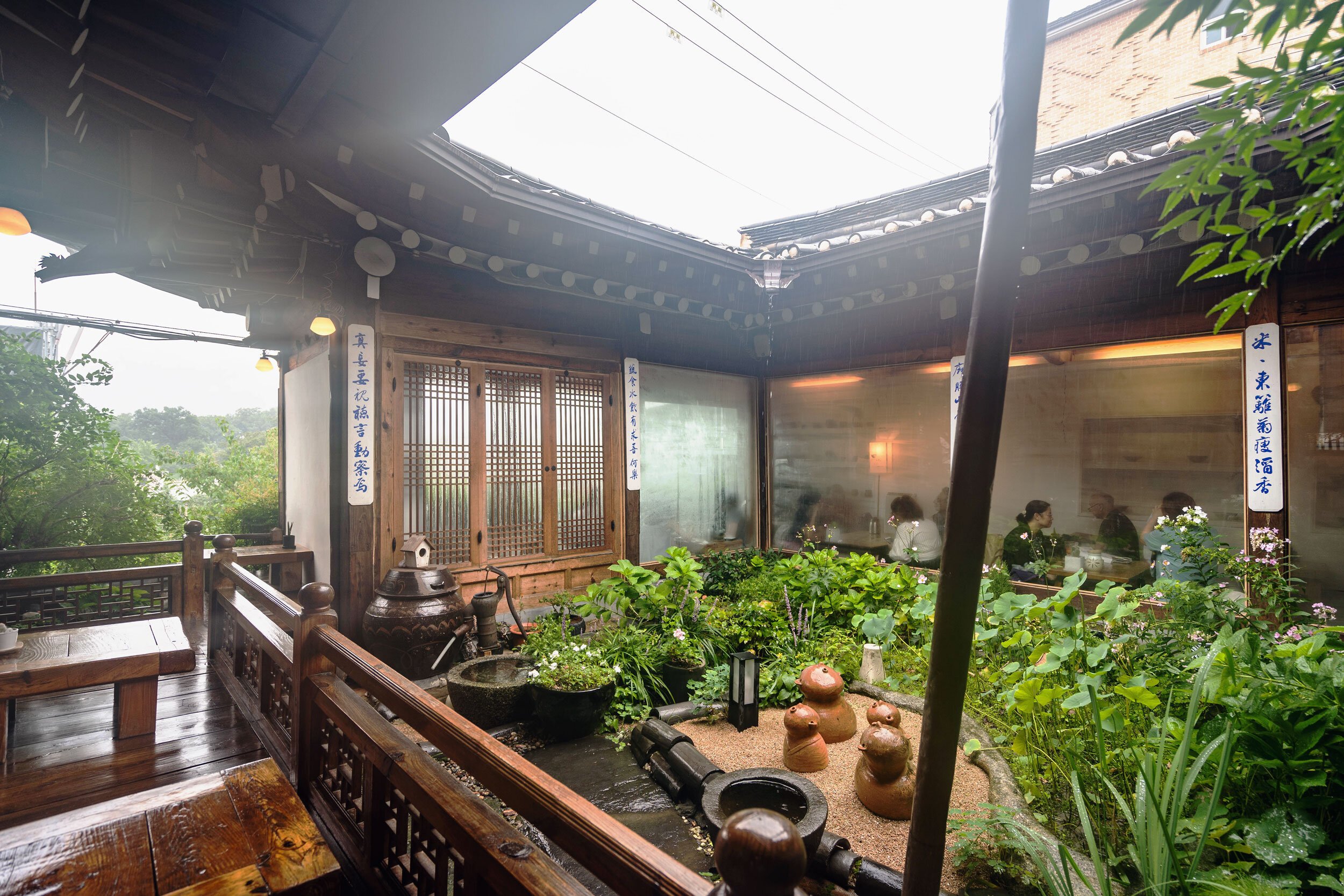

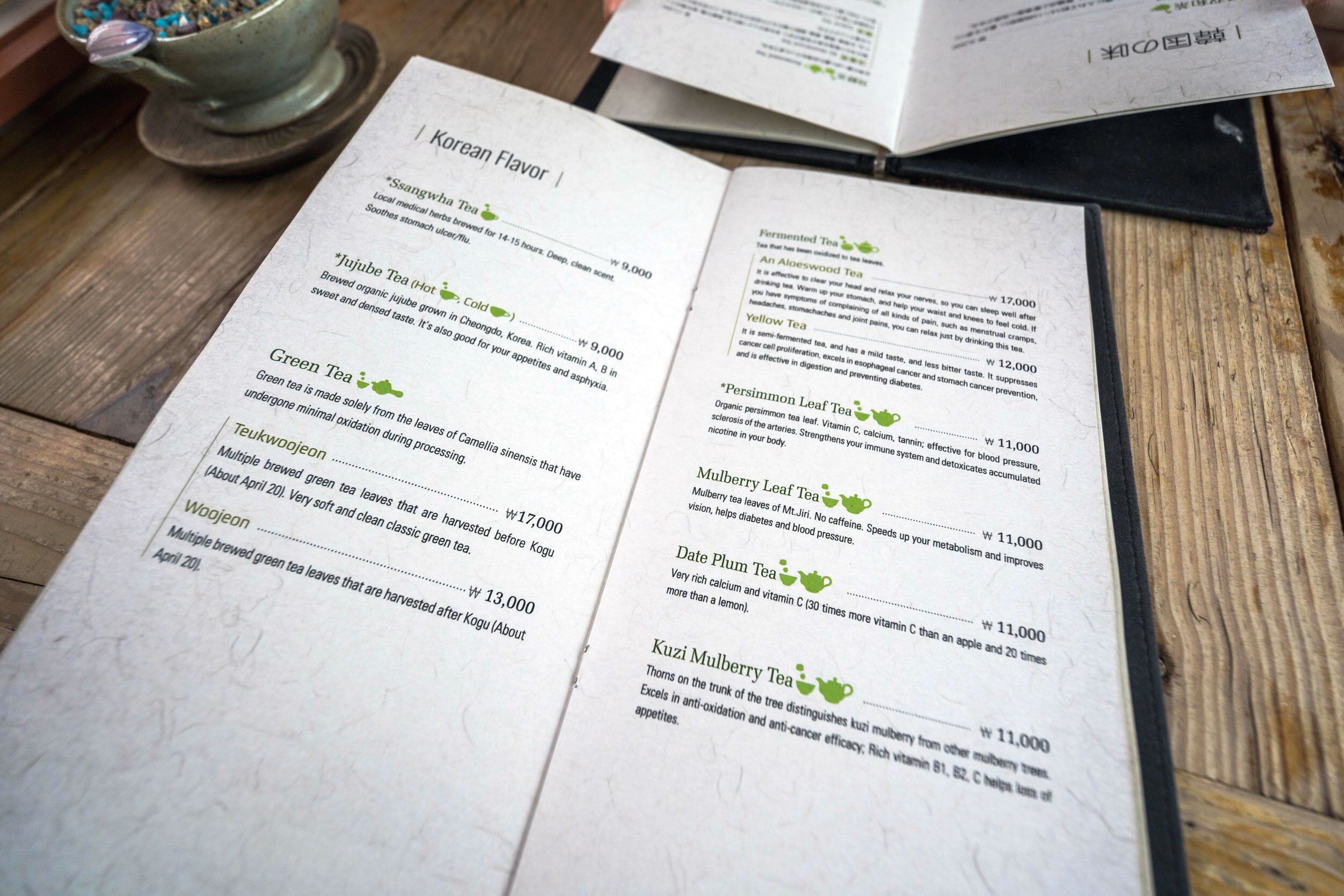
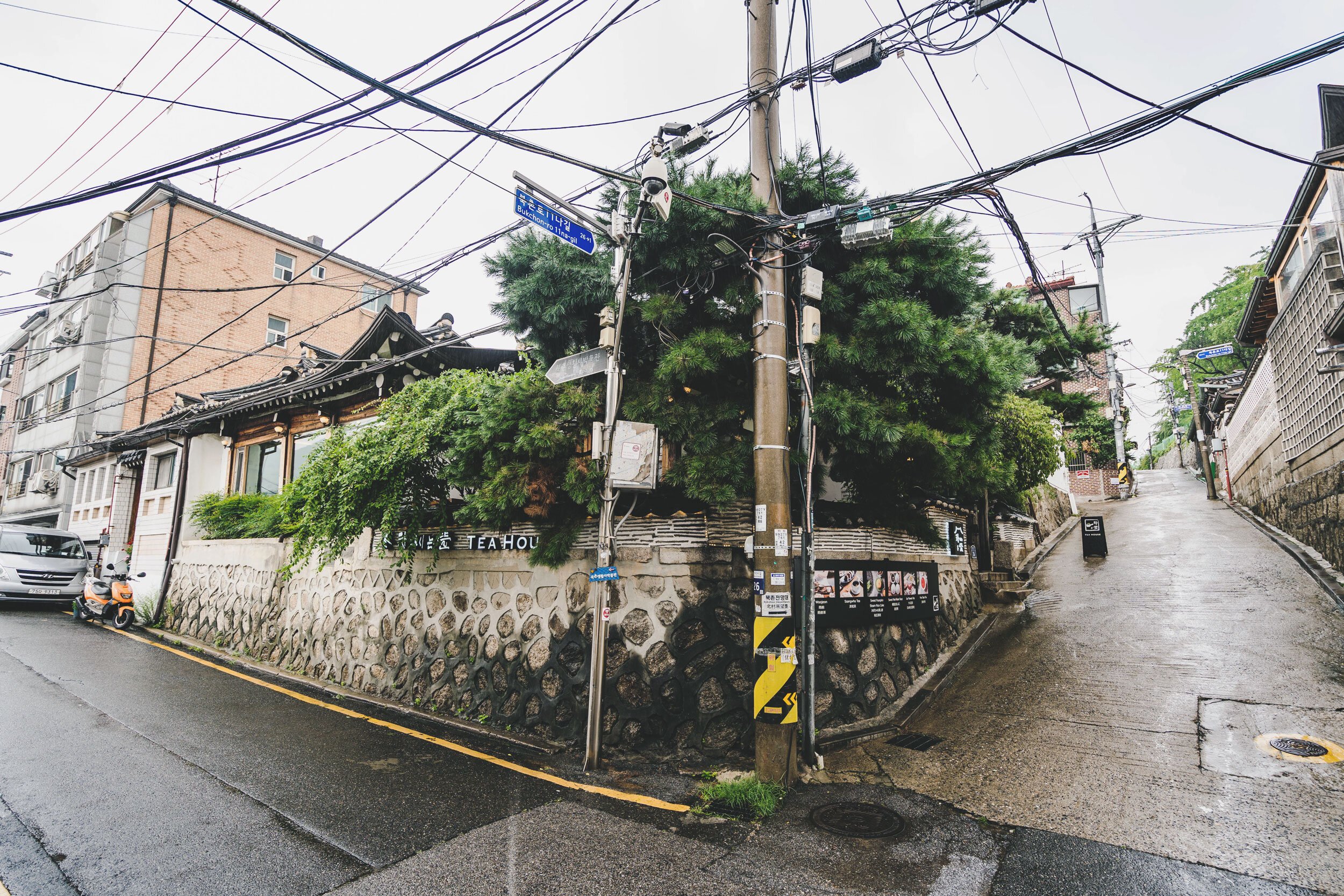
A relaxing cafe set in a traditional Korean hanok house on top a hill in the Bukchon Hanok Village area.
Cha Teul, which means “tea-drinking garden,” is an indoor tea house built around its Korean garden. You take off your shoes before you enter, sit on the floor and enjoy some tea over relaxing views. Making the experience even better, service was very friendly.
We had patibingsu (Korean shaved ice with red beans and mochi rice cakes on top), Ssangwha tea (made of Korean medical herbs brewed for 14-15 hours), and lotus tea.
Perfect place to have a sit down and relax in the afternoon.
TripAdvisor
Area: Bukchon
MAP
GALLERY SAI - BY CREATIVE ART GROUP SAI
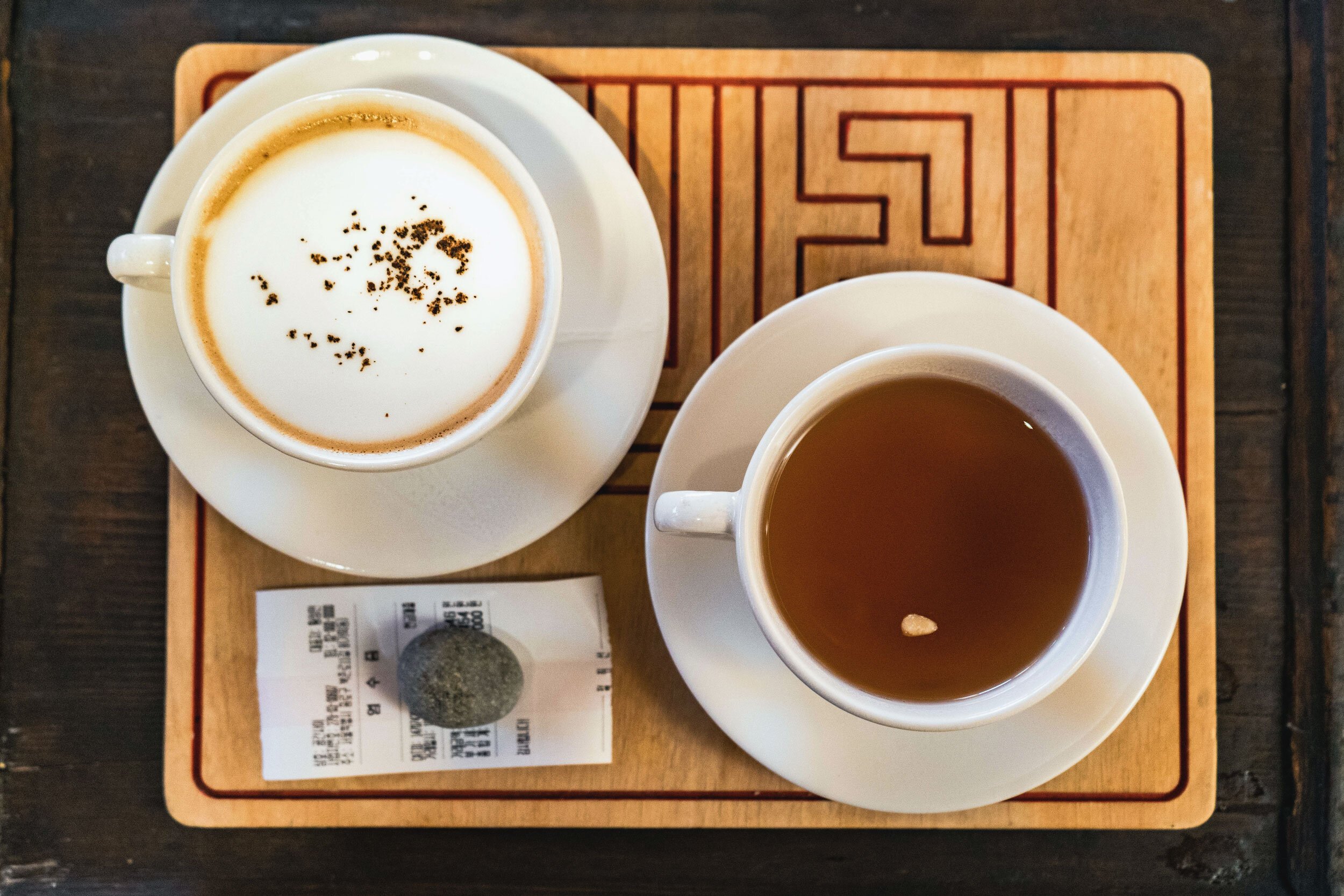
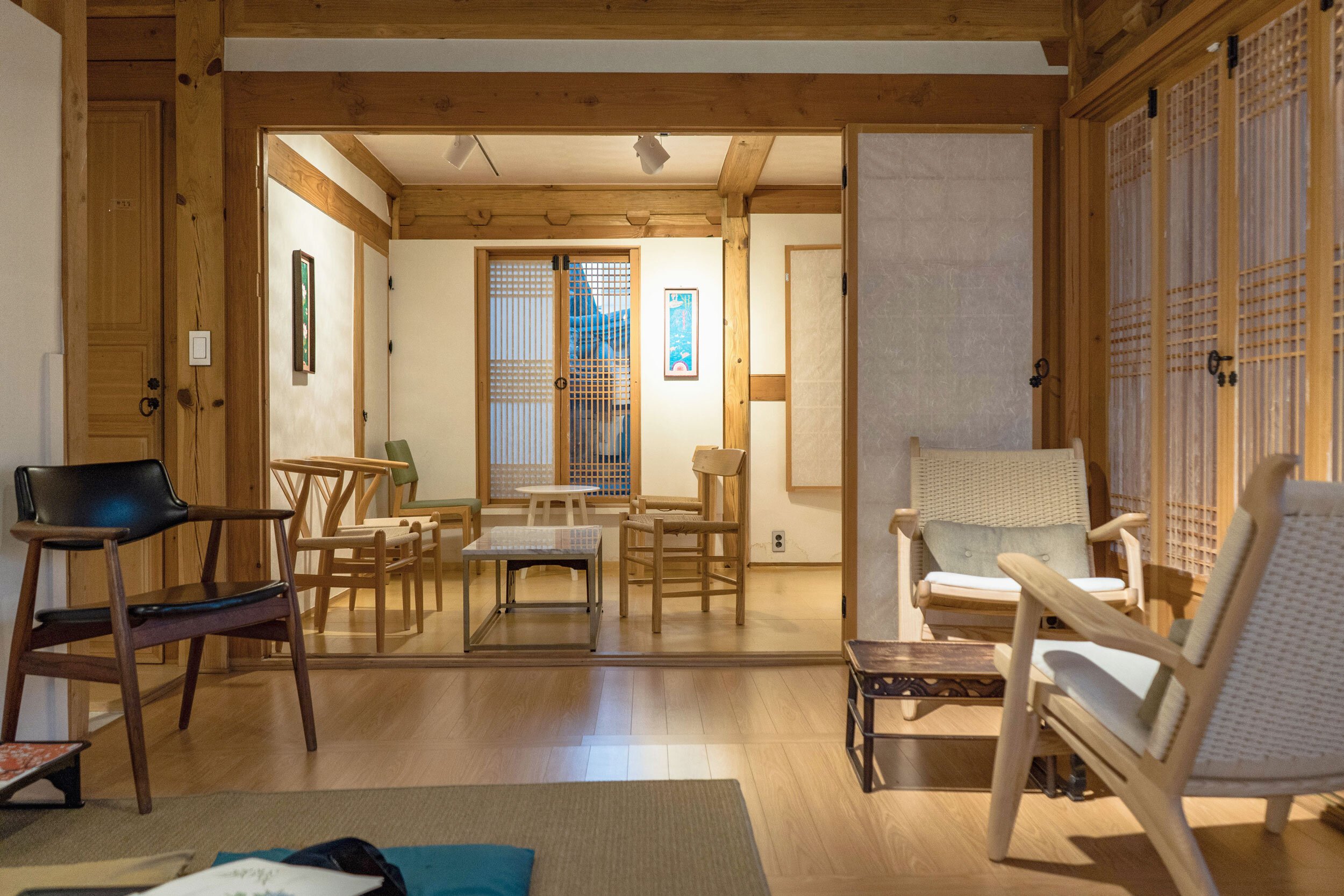
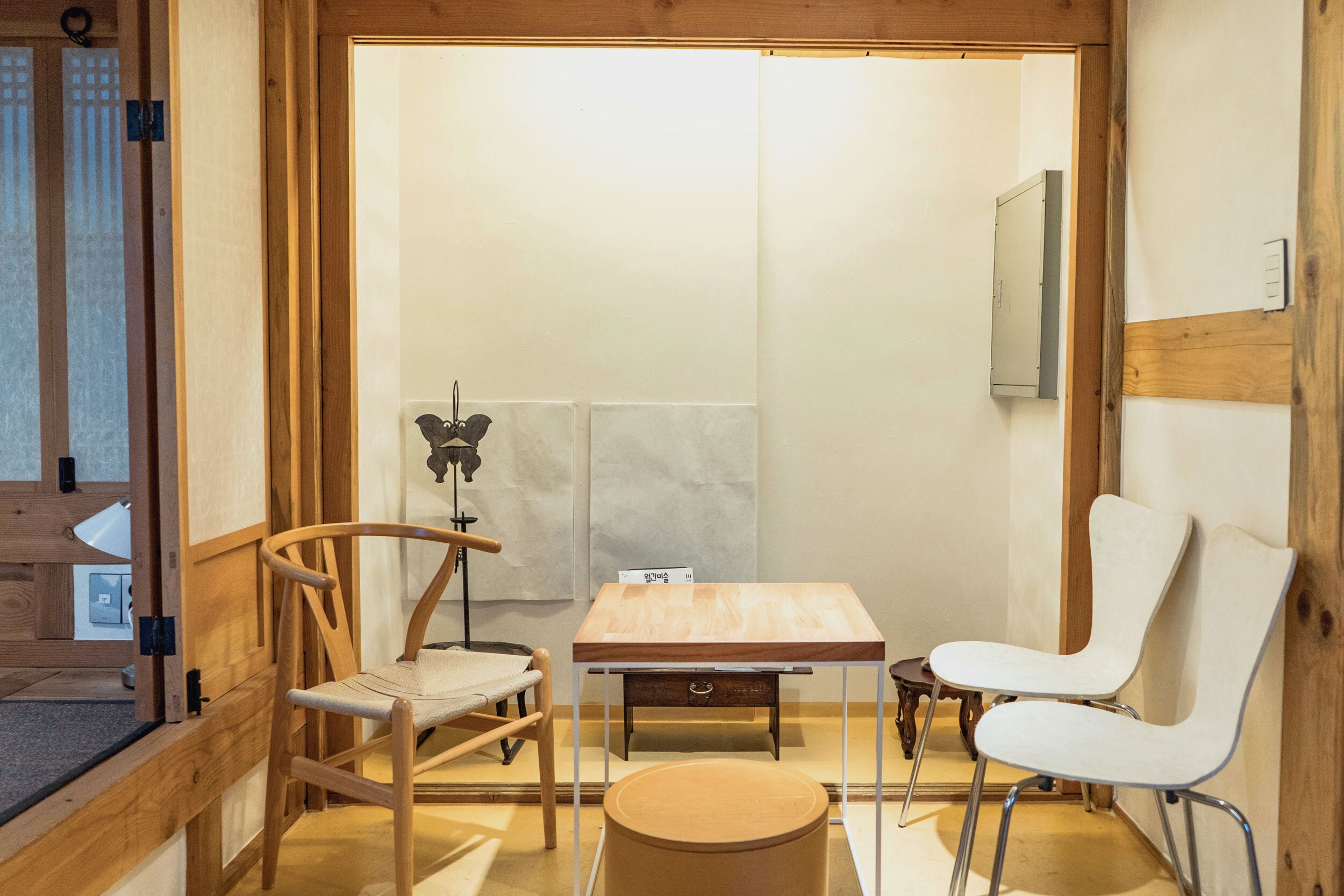
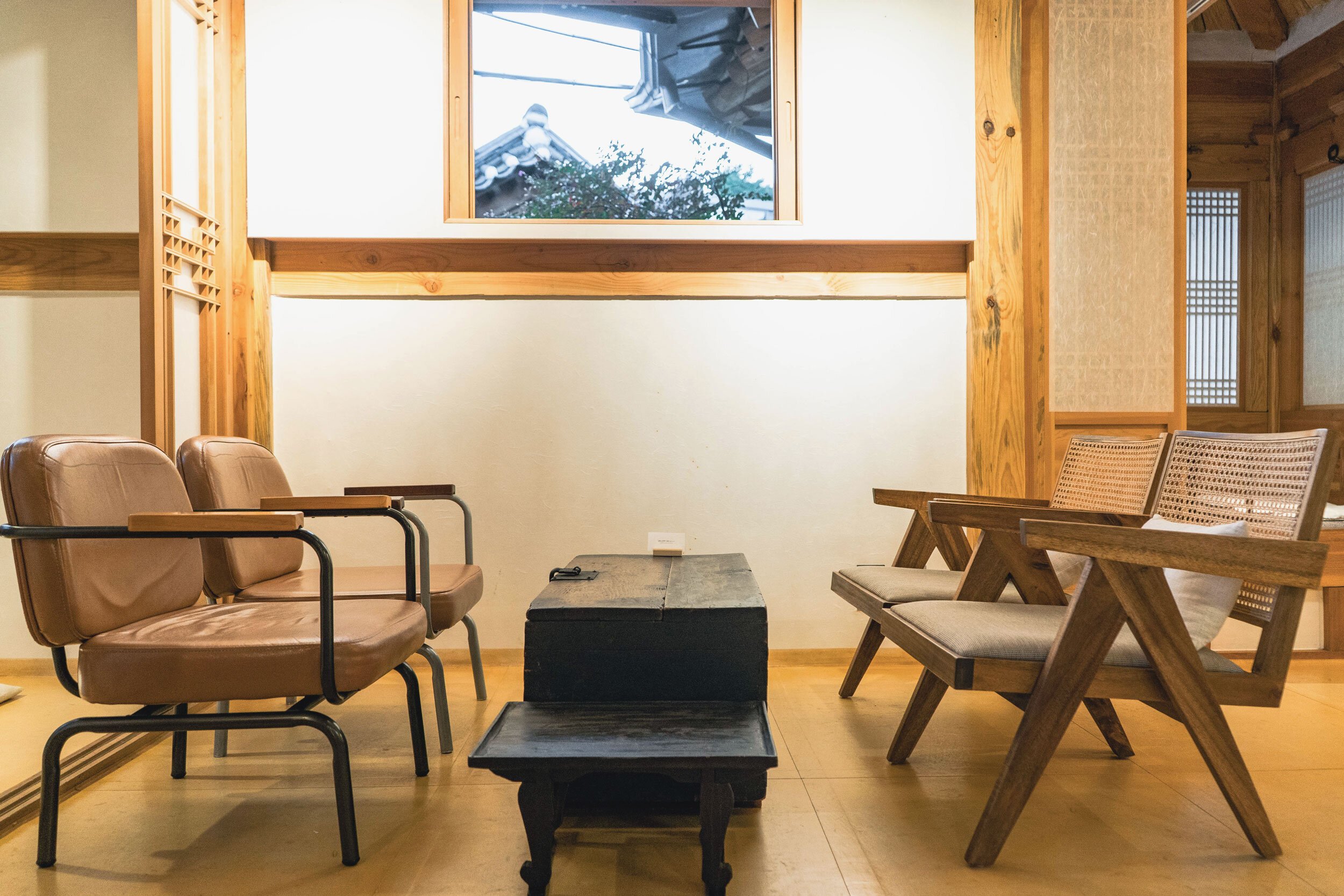
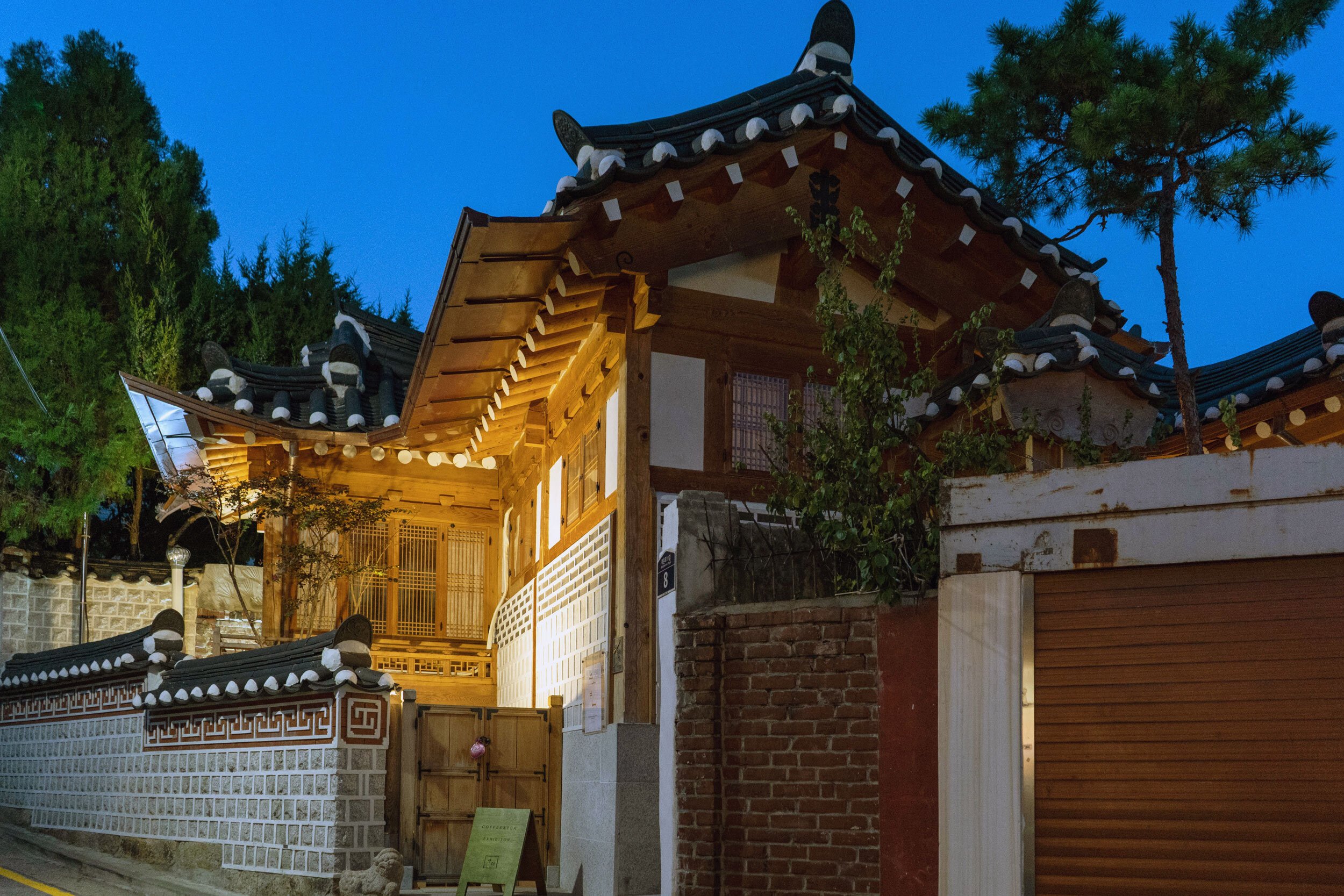
A coffee shop in a traditional Korean house. We randomly stumbled upon Gallery SAI coming down from the Bukchon Hanok village and were pleasantly surprised.
It’s in a converted old house that blends in with much of the area. You take your shoes off and find a table, some of which are on the floor or in a room, and have tea or coffee. A little more costly than a typical coffee shop, but well worth it for the experience.
Keep in touch:
More travels:
Seoul, Korea: A Second Trip
Returning to Seoul to explore new places and get to know the city a little better.
After my first trip to Seoul in late 2018, I knew I had to come back. Less than a year later in 2019, that happened.
This time around, I ventured to explore areas for the first time to add to my experiences in the city.
If you’re visiting for the first time, you can see what I did on my first trip, or maybe these sights are more your style.
Things to know:
Google Maps isn’t as useful - locations are scarce, often don’t translate from Korean, and don’t contain detailed information
There’s a lot of walking - With limited escalators in train stations and trains being long themselves, there’s more walking to the exits
Many restaurants close early on weekends, like fully closed at 8PM on a Saturday night early
Where we stayed:
We stayed in a convenient location near the City Hall subway station on our first trip, so we decided to make our base at the hotel right next door. The Hotel Gracery is a newer hotel owned by a Japanese company, and is between City Hall and Hoehyeon subway stations, and also near the popular Namdaemun Market.
The room was a bit small, but everything was nicely kept and clean. Service is good, the toilet and shower are separate, there’s coin laundry in the lobby and a convenience store downstairs.
Here’s where we explored on my second time in the city.
Banpo Hangang Park
On the south side of the Han River is Banpo Hangang Park [MAP]. We visited in the evening where they have a festival during the warmer months featuring a bunch of food trucks and artists selling homemade crafts.
The Banpo Bridge Rainbow Fountain show is also put on, where streams of water shoot out from the bridge’s sides, illuminated by about 200 LEDs. At 570 meters long, it’s the world’s longest bridge fountain and it’s free. The shows happen every half an hour between 7:30PM-9PM.
The Somesevit (Sebitseom) buildings are illuminated with people sitting around it, enjoying drinks and each other’s company over some open mic karaoke.
Apgujeong, Gangnam
One of the popular shopping areas in the Gangnam area, Apgujeong had stores from Prada to Club Monaco, along with a lot of cafes and plastic surgery clinics. To me, it had a similar feel to Tokyo’s Aoyama area or Los Angeles’ Abbott Kinney or Melrose. It’s definitely on the upscale side.
We visited the area after stopping at the nearby Cheongdam area of Gangnam for some delicious bibimbap at Yeongcheon Younghoe.
After some window shopping, we stopped at the local Tom N Toms coffee chain for some refreshment before heading to Seongsu.
Seongsu
It may not seem like it, but Seongsu is a pretty trendy area for young Koreans. I learned about it while researching for client work, so I decided to check it out.
The neighborhood used to be the location of a lot of handmade shoe factories and warehouses, and those old industrial buildings are slowly being converted into artistic cafes, coffee shops and restaurants. We went to a great one called Cafe Onion (more info below).
Seongsu, while a hot spot for locals, still seems relatively unknown to tourists. I only wish we had more time and space in our stomachs so we could stay here longer.
Itaewon
This is somewhat of an international area of Seoul, and a lot of the restaurants and bars are geared to expats and tourists. There was even a restaurant claiming to serve “authentic Chinese-American cuisine.”
While teens and those in their early twenties may enjoy areas like Myeongdong or Samseong more, Itaewon seemed great for adults looking to grab a bite and a few drinks and have a good time.
We visited this area for dinner. Up until this point, most of the places we ate at were based off of Japanese information, so we decided to try The Maple House, a highly rated Korean BBQ spot that appeared in several English guides. It was alright but not great. I realized English information on Seoul may be lacking, so I wrote some food recommendations based on places I’ve eaten at.
In any case, if you’re looking for a night out with friends at an international-type of spot, this area is lively and might be decent to check out.
While these were some of the main spots that we visited on this trip, there were many others as well.
I wrote about some of them in my blog about my first trip to Seoul, like Myeongdong, Bukchon Hanok, Namdaemun and COEX.
Others like Samseong, a Harajuku-esque area where aspiring K-pop dancers perform on the streets, didn’t work out for us because we went to late or there was bad weather.
Other areas like Seongbuk and Gwangheungchan were simply stops for the food.
Let’s face it, even on my second visit to the city, a trip to Seoul is all about the food.
Cafe Onion






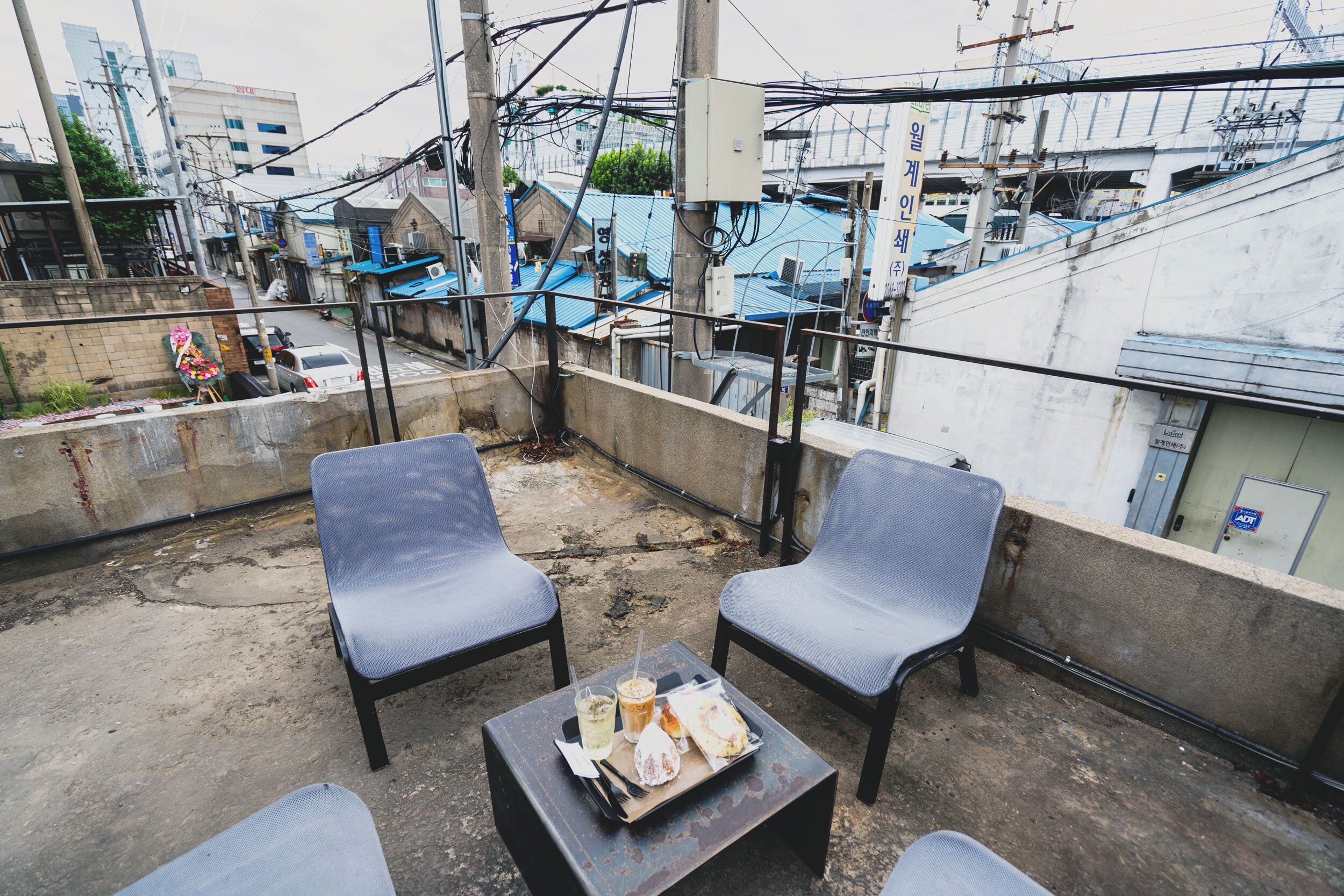

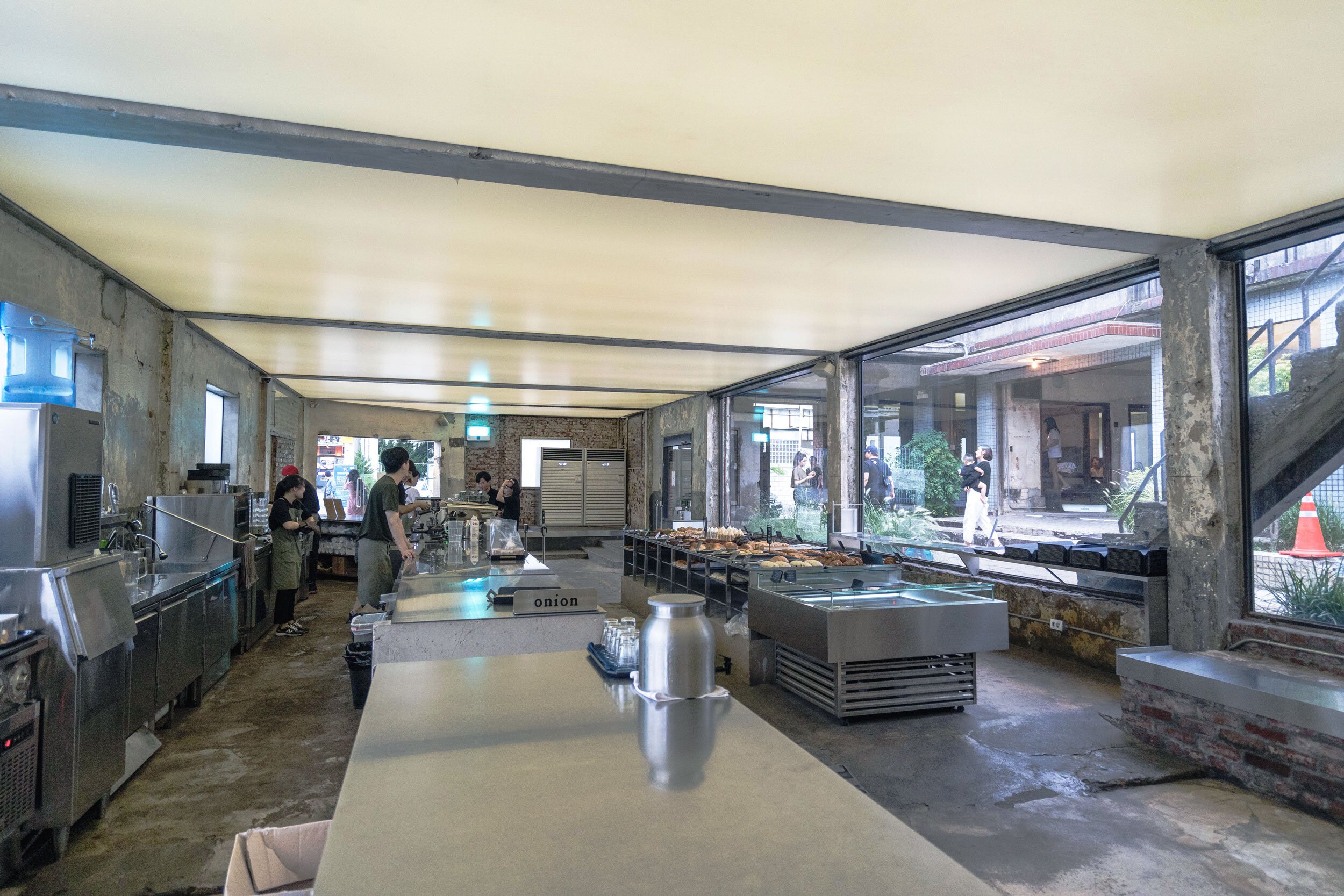

Possibly the hippest cafe chain in the city with locations that are converted old buildings. Their spot in Seongsu, the “Brooklyn of Seoul,” is in a gutted 1970s building that served as a former factory.
Cafe Onion Seongsu manages to balance old and new perfectly, and in doing this, makes for an extremely photogenic hang out. There are multiple seating areas, nooks and a rooftop as well. Their coffees and artisanal, homemade pastries and baked goods are tasty.
Great place to stop by when exploring the area and to take pictures.
dong myeonok house
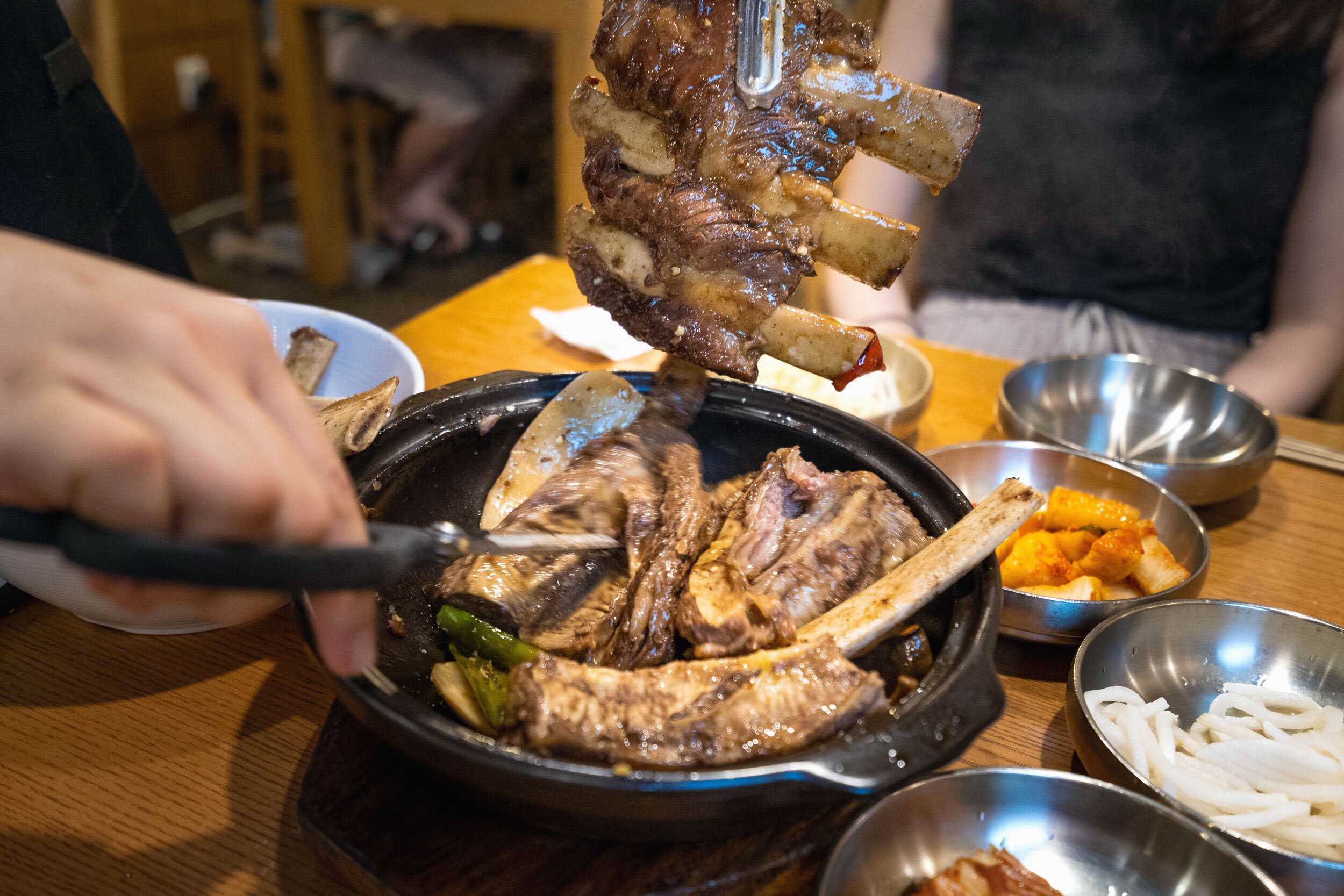




Legit Korean kalbi. You know it has to be when the only other non-Koreans there were American students… with their Korean host family.
Dong Myeonok House is located up a hill in the seemingly upscale residential area of Seongbuk. There’s no major businesses or subway stations around it, so we took a taxi and went for lunch.
We ordered a small order of kalbi and 6-pieces of colorful mandu. The kalbi was melt-off-the-bone tender, tasty with a little hint of sweet, and I couldn’t get enough of the mandu. Thanks to my friend Daniel for the rec, I definitely recommend this place as well.
Cha Teul Teahouse
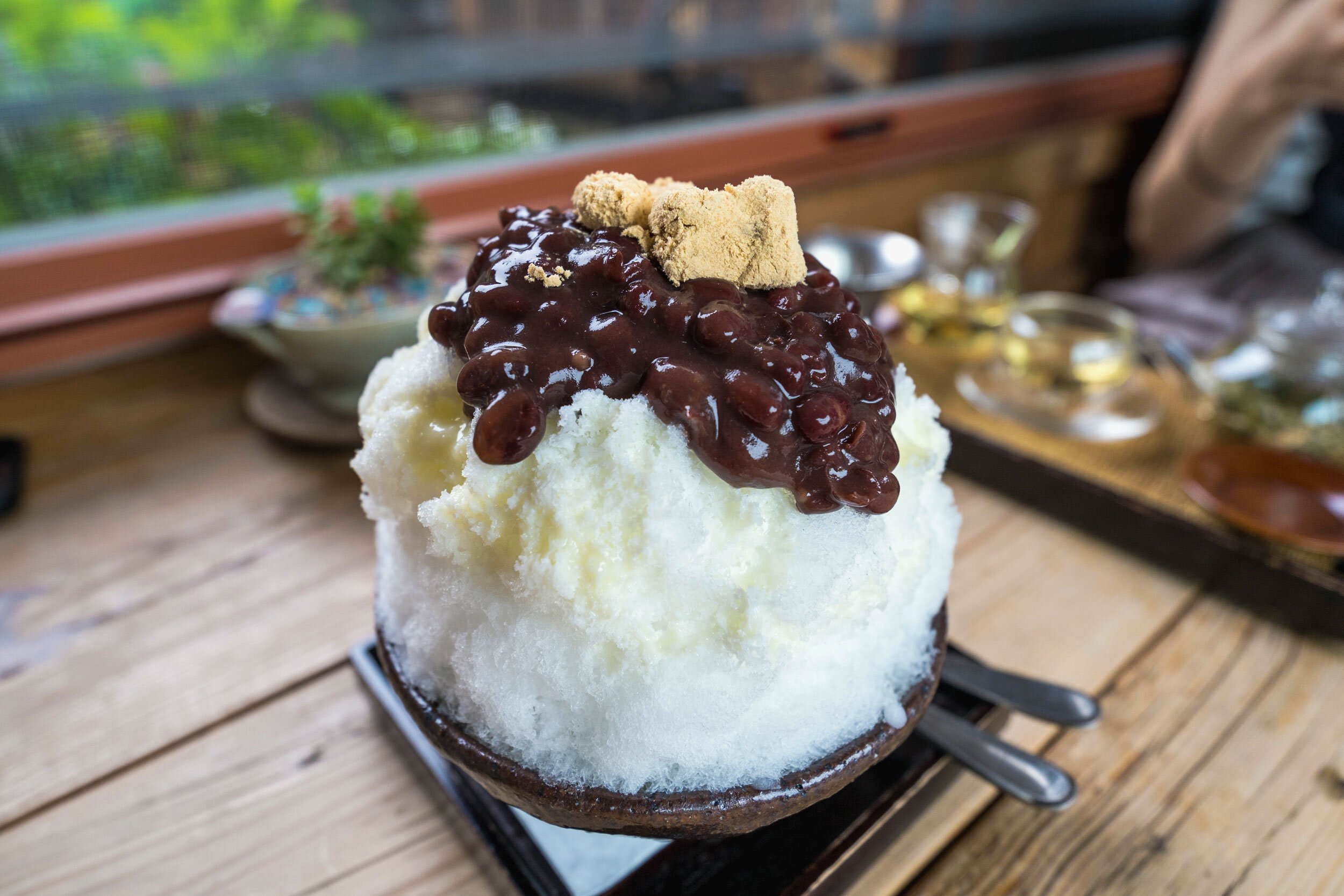



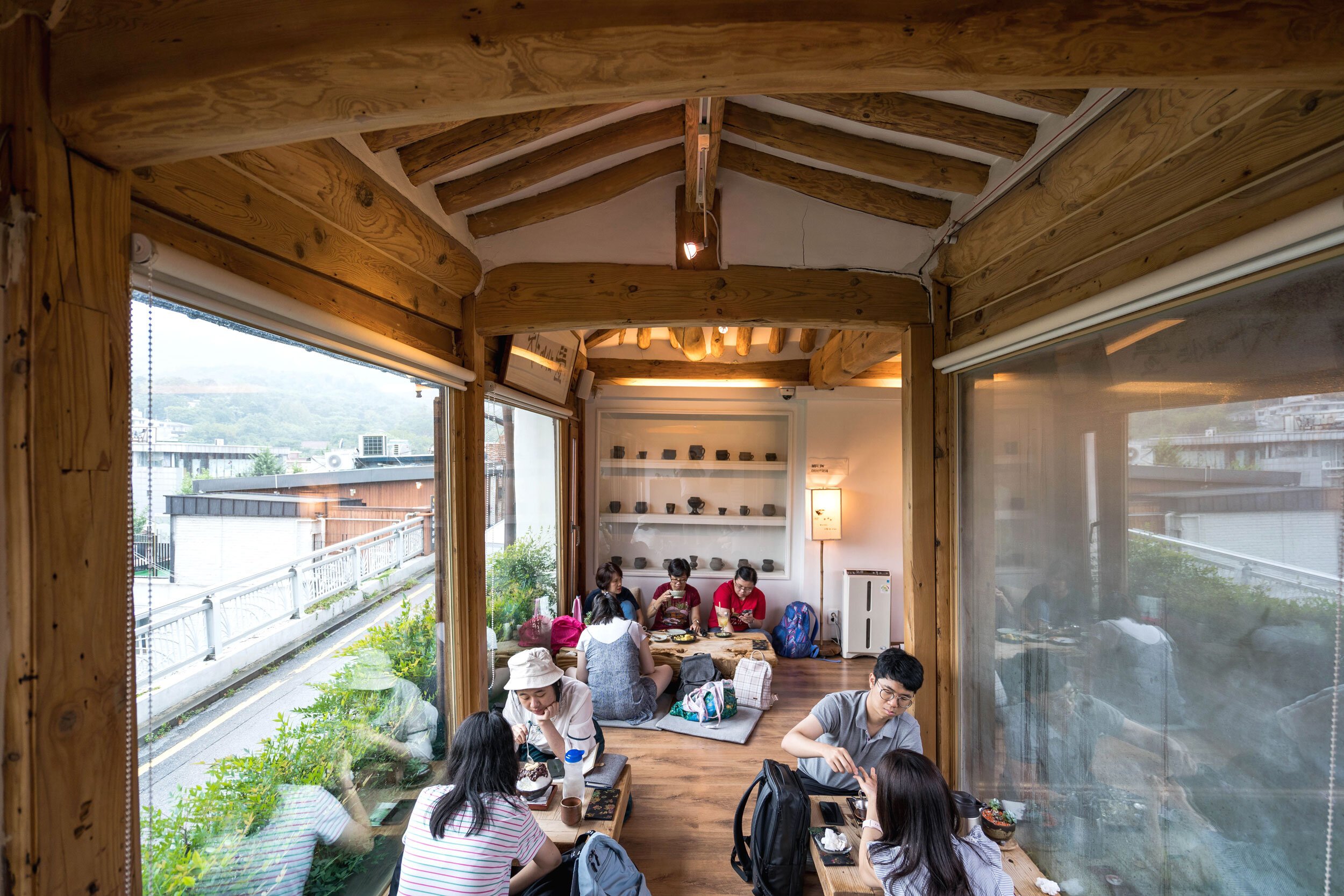


A relaxing cafe set in a traditional Korean hanok house on top a hill in the Bukchon Hanok Village area.
Cha Teul, which means “tea-drinking garden,” is an indoor tea house built around its Korean garden. You take off your shoes before you enter, sit on the floor and enjoy some tea over relaxing views. Making the experience even better, service was very friendly.
We had patibingsu (Korean shaved ice with red beans and mochi rice cakes on top), Ssangwha tea (made of Korean medical herbs brewed for 14-15 hours), and lotus tea.
Perfect place to have a sit down and relax in the afternoon.
Yaetmat Seoul Bulgogi



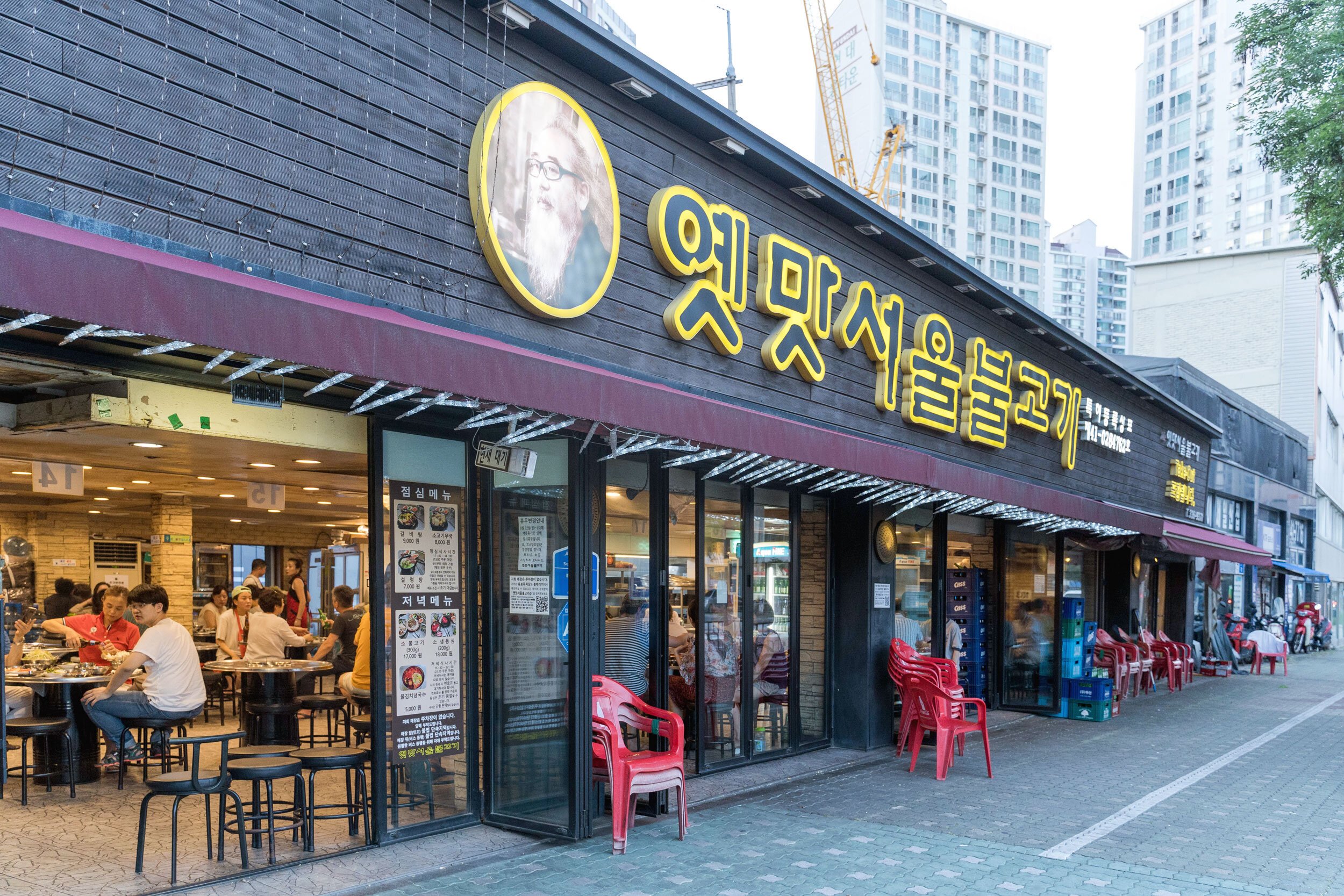
It’s hard to beat self-serve, all-you-can-eat sides and some tasty bulgolgi cooking in front of you. That’s why Yaetmat Seoul Bulgolgi was so good.
Located a couple blocks from Gwangheungchang metro station (광흥창역) on Line 6, Yaetmat Seoul Bulgolgi is a casual restaurant that only had locals - so you know it’s legit.
You sit on stools around a BBQ table and the staff comes by and makes sure everything is cooked properly. There’s a bar of assorted kim chee, greens, onions, garlic and more that’s free for the taking. A very casual, authentic experience and of course, tasty.
* This restaurant has closed.

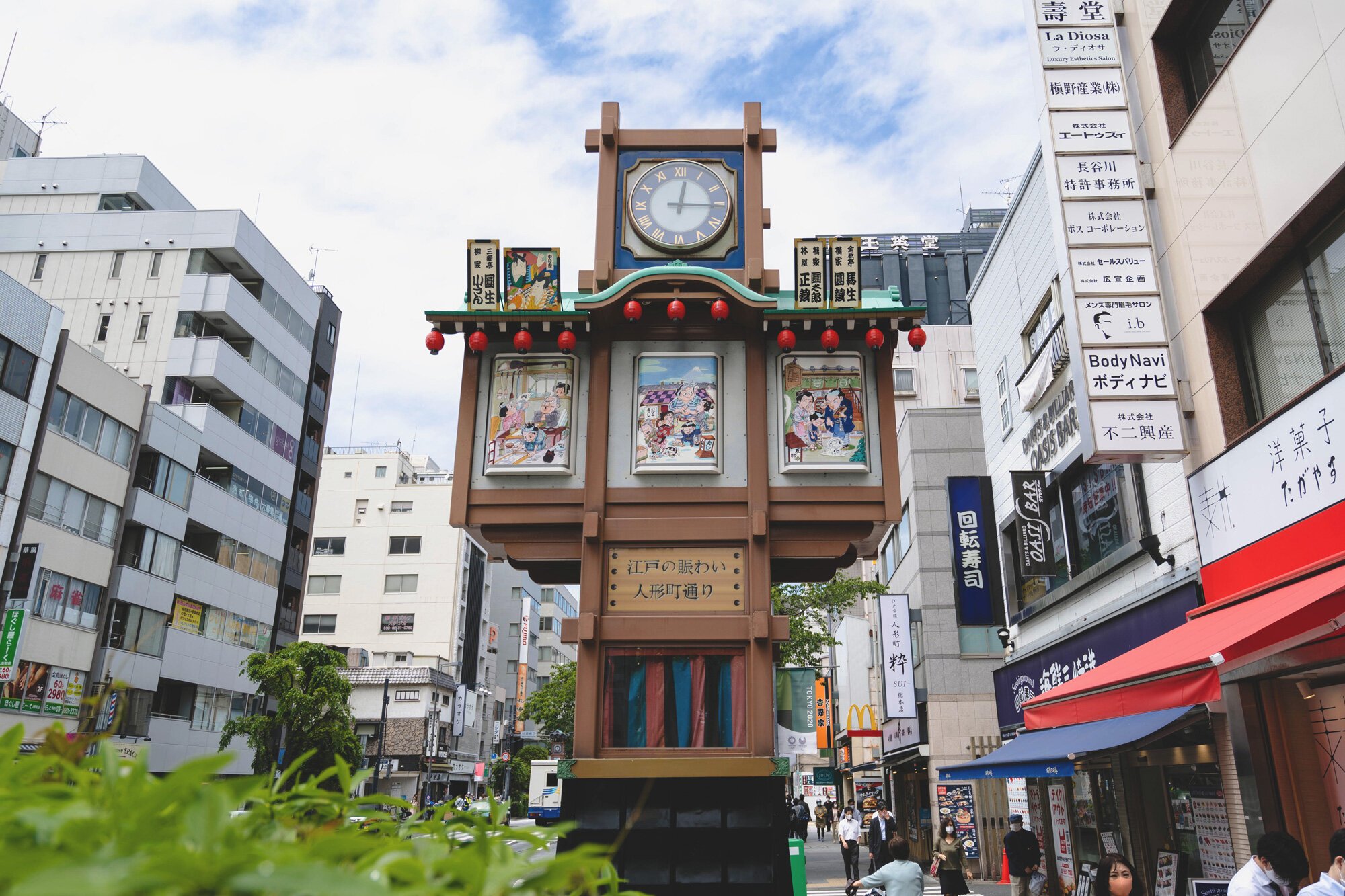


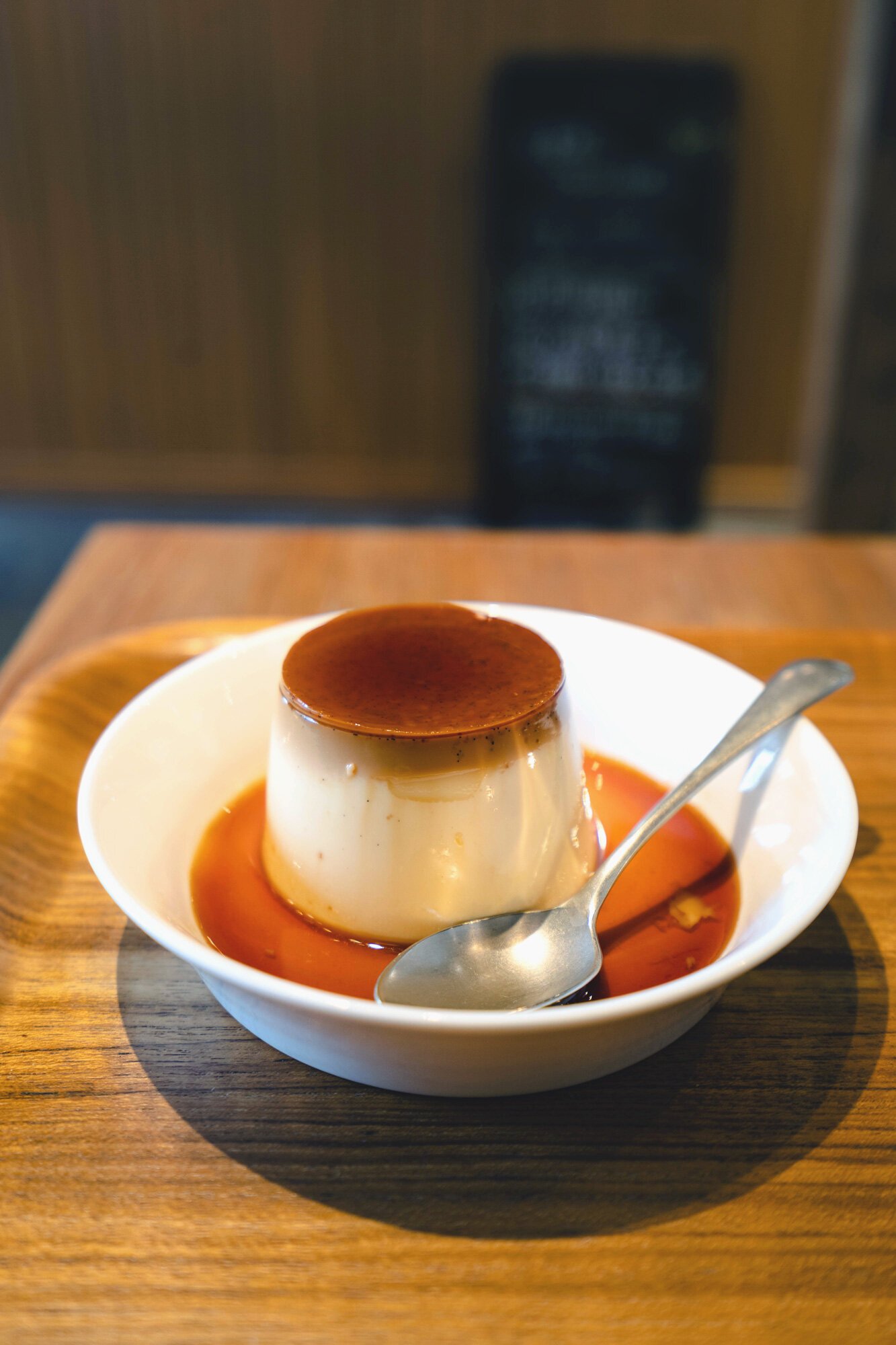








































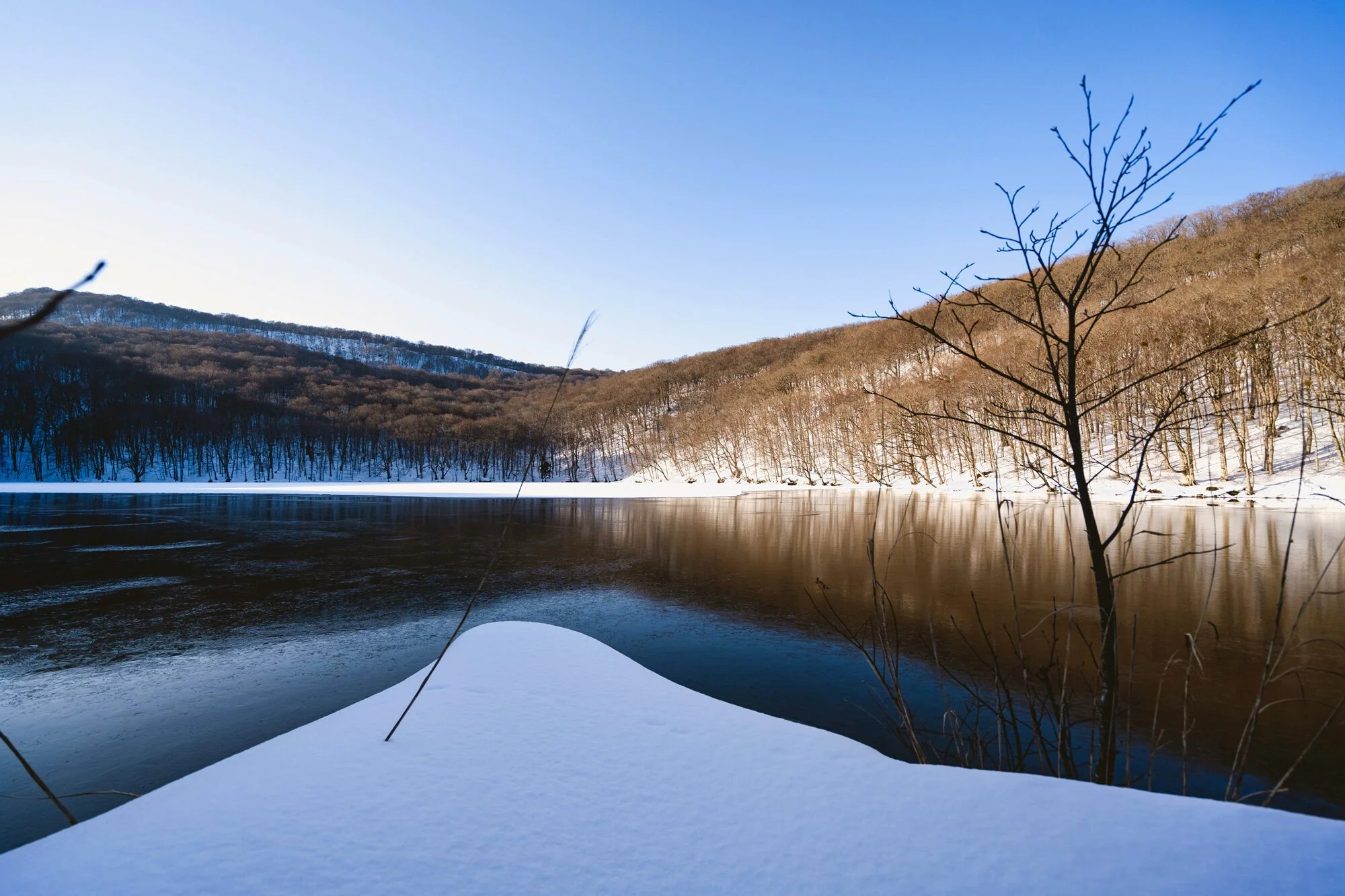


























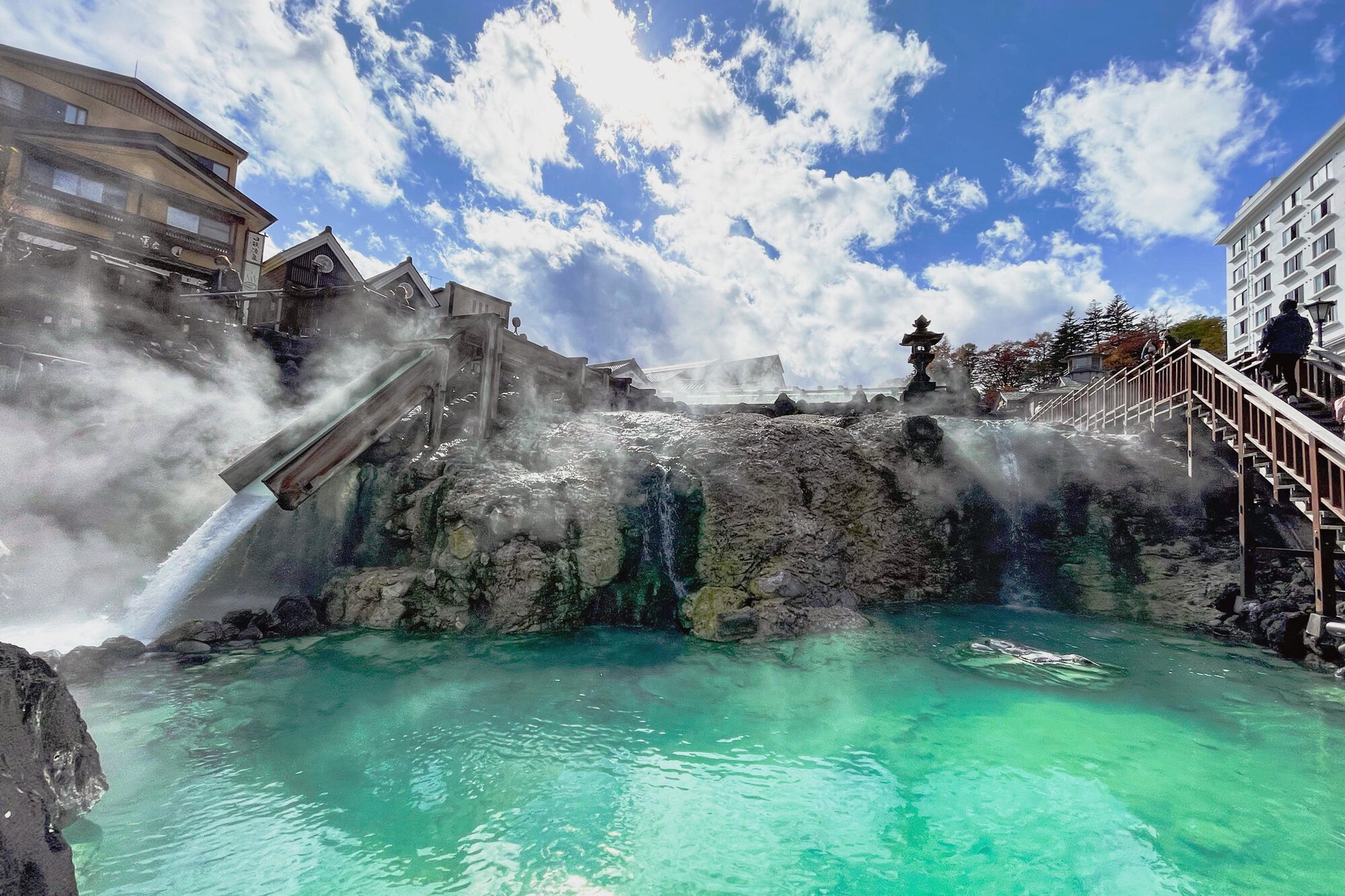





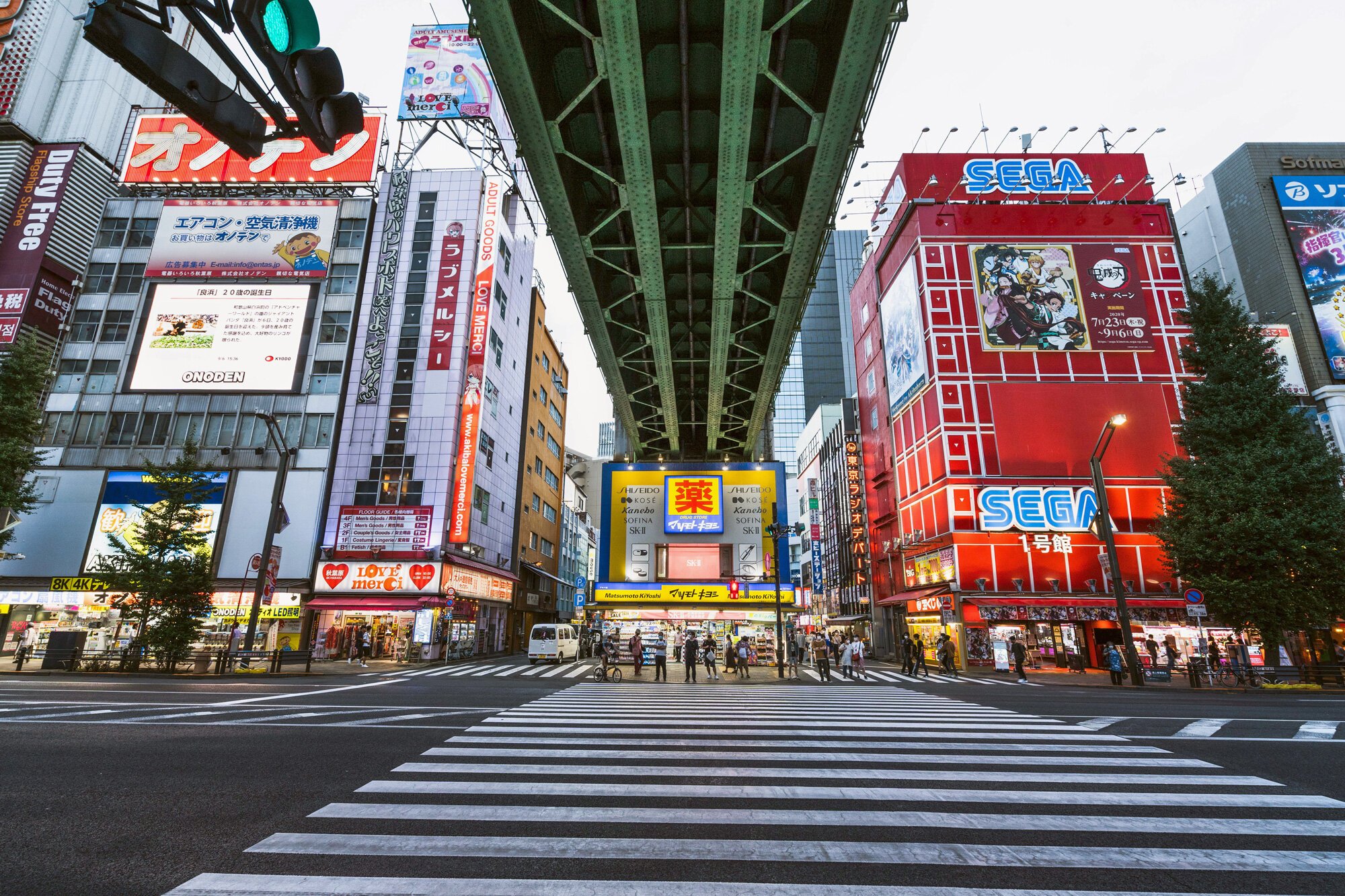

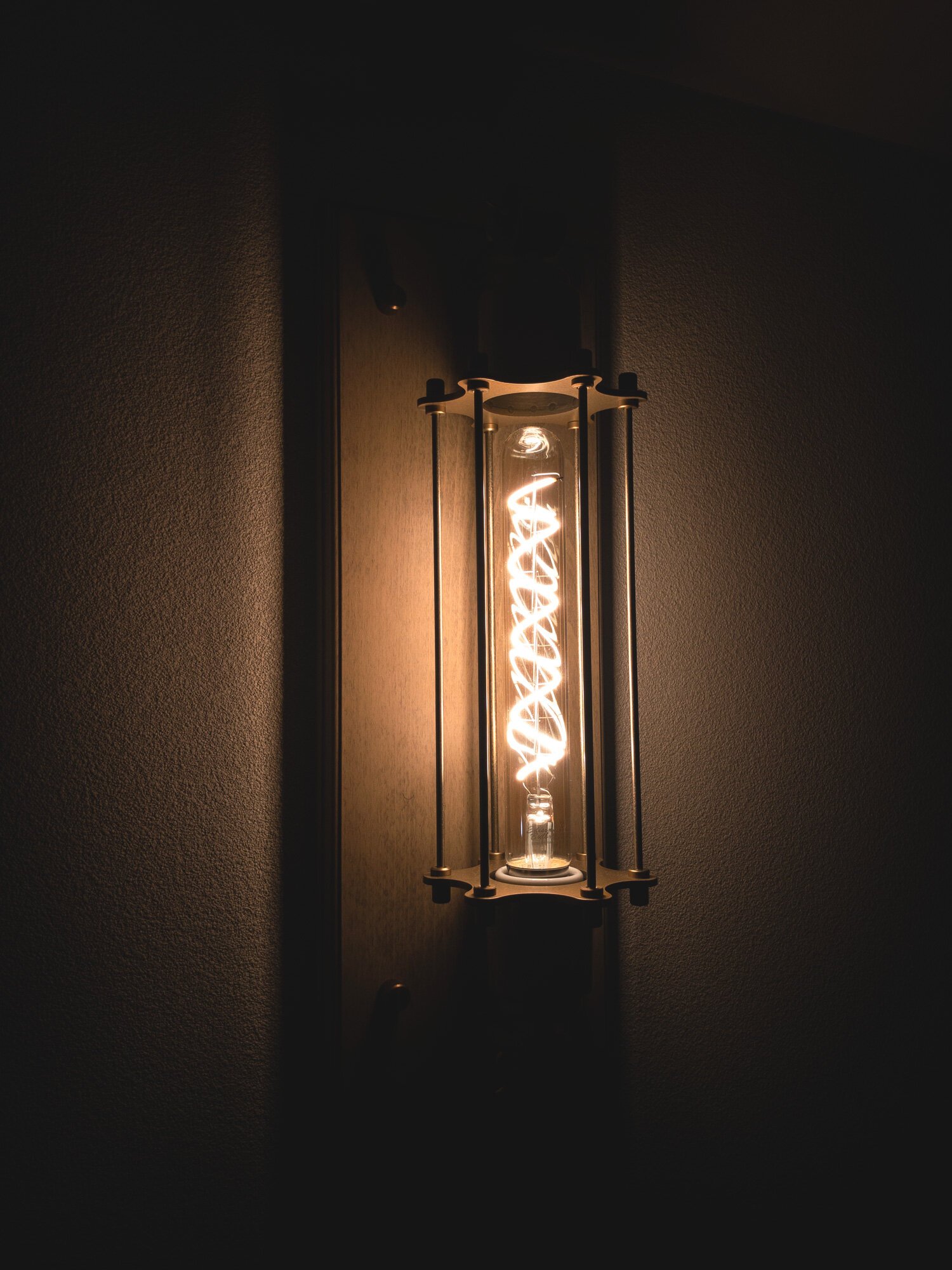





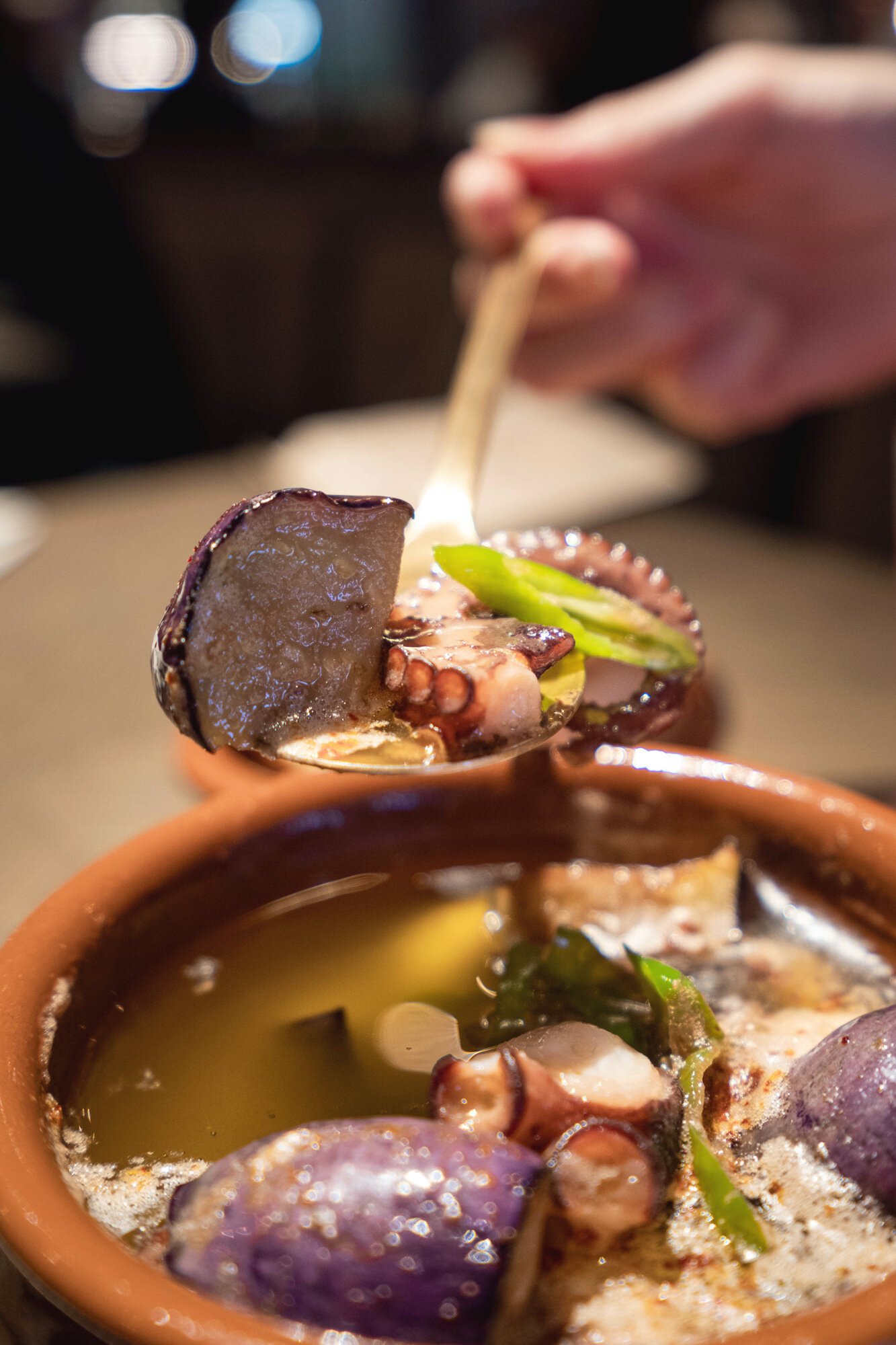

















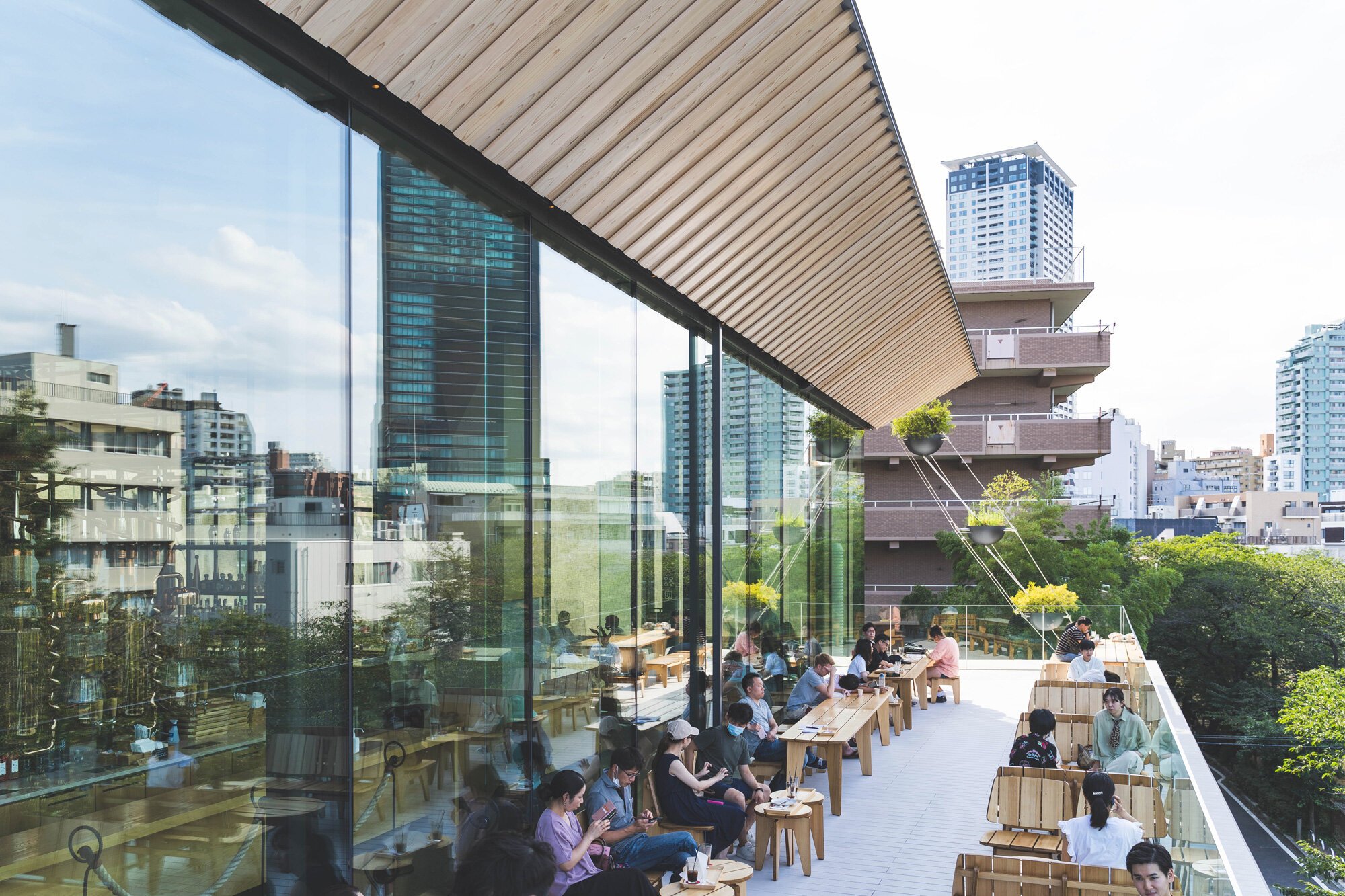




















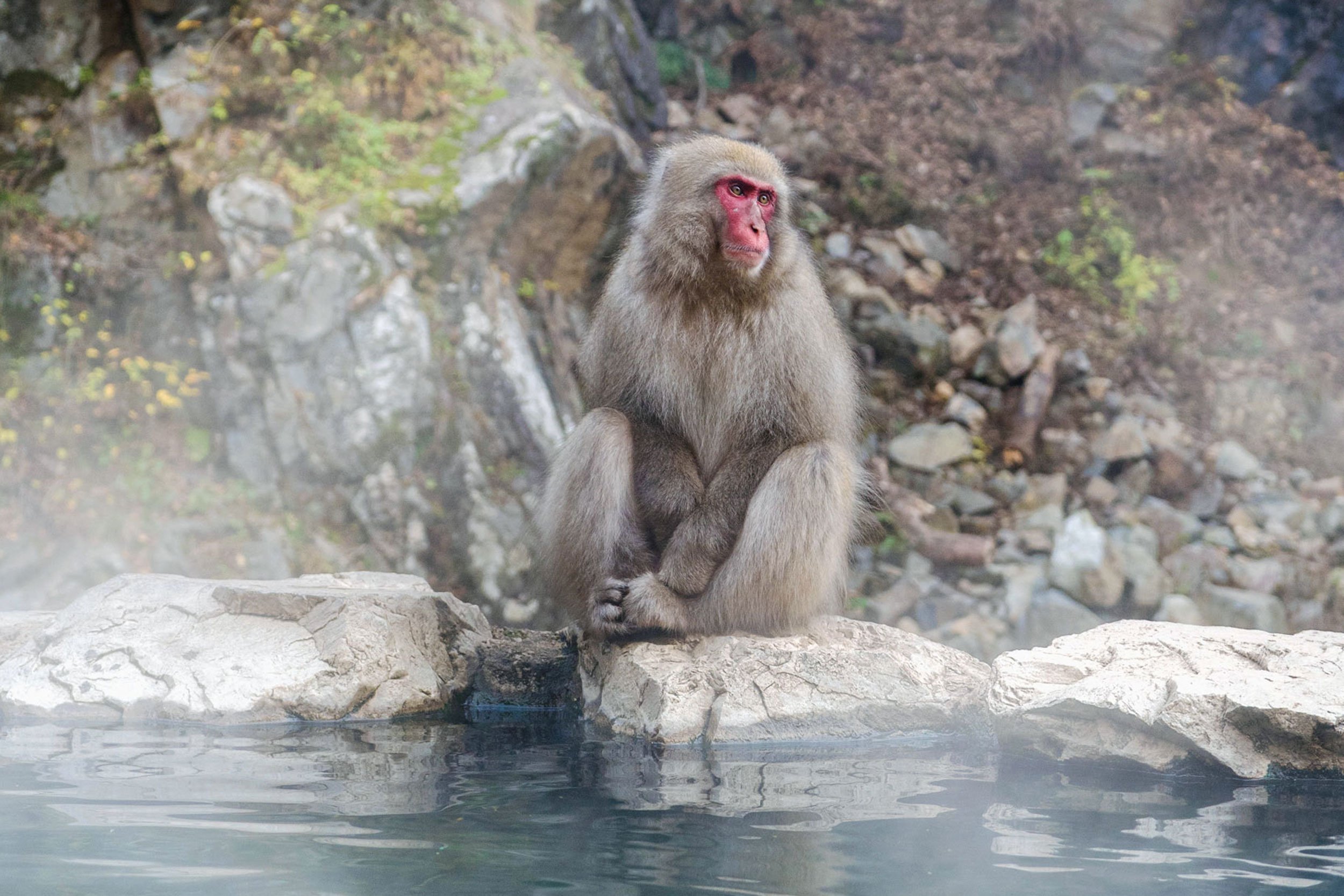

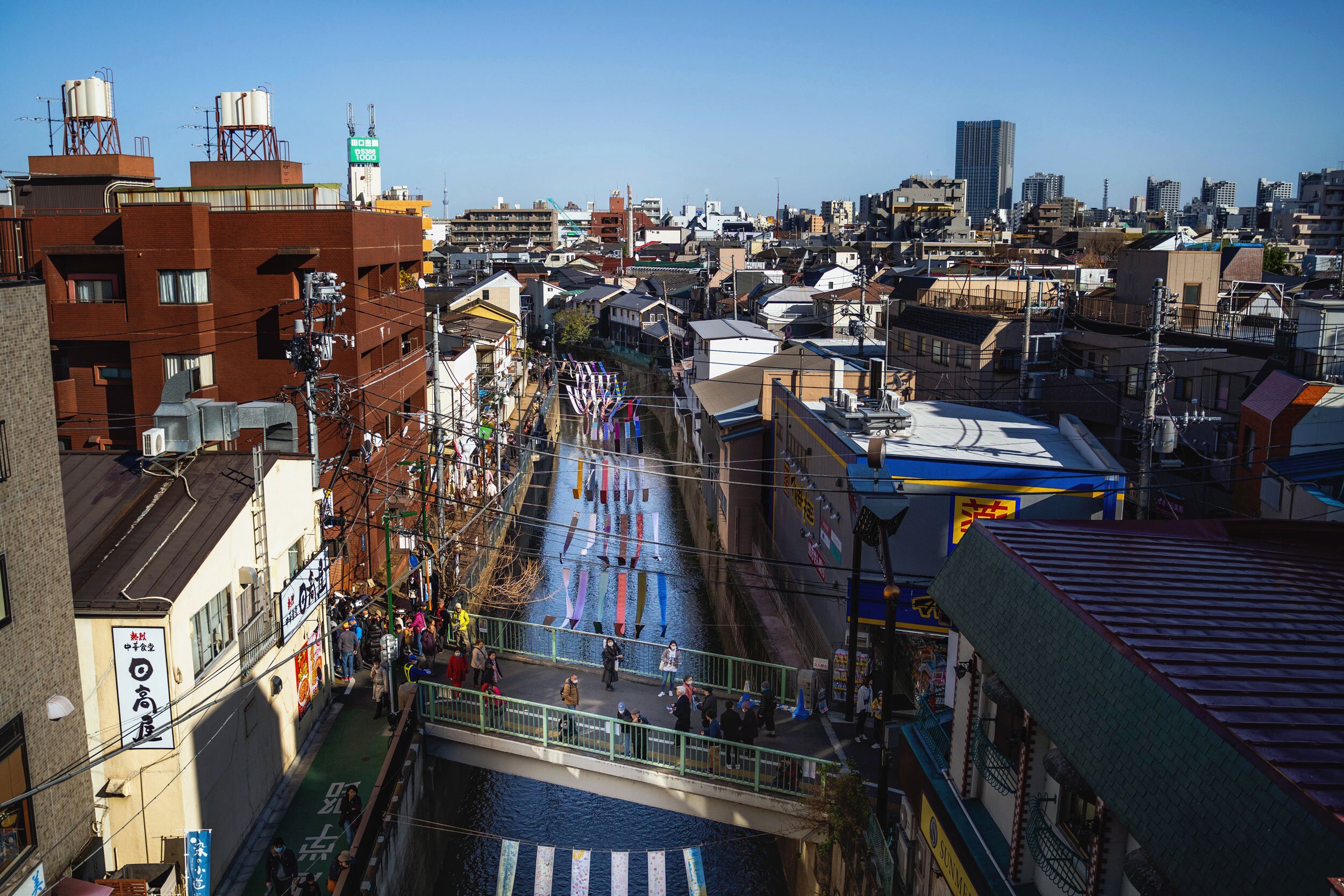
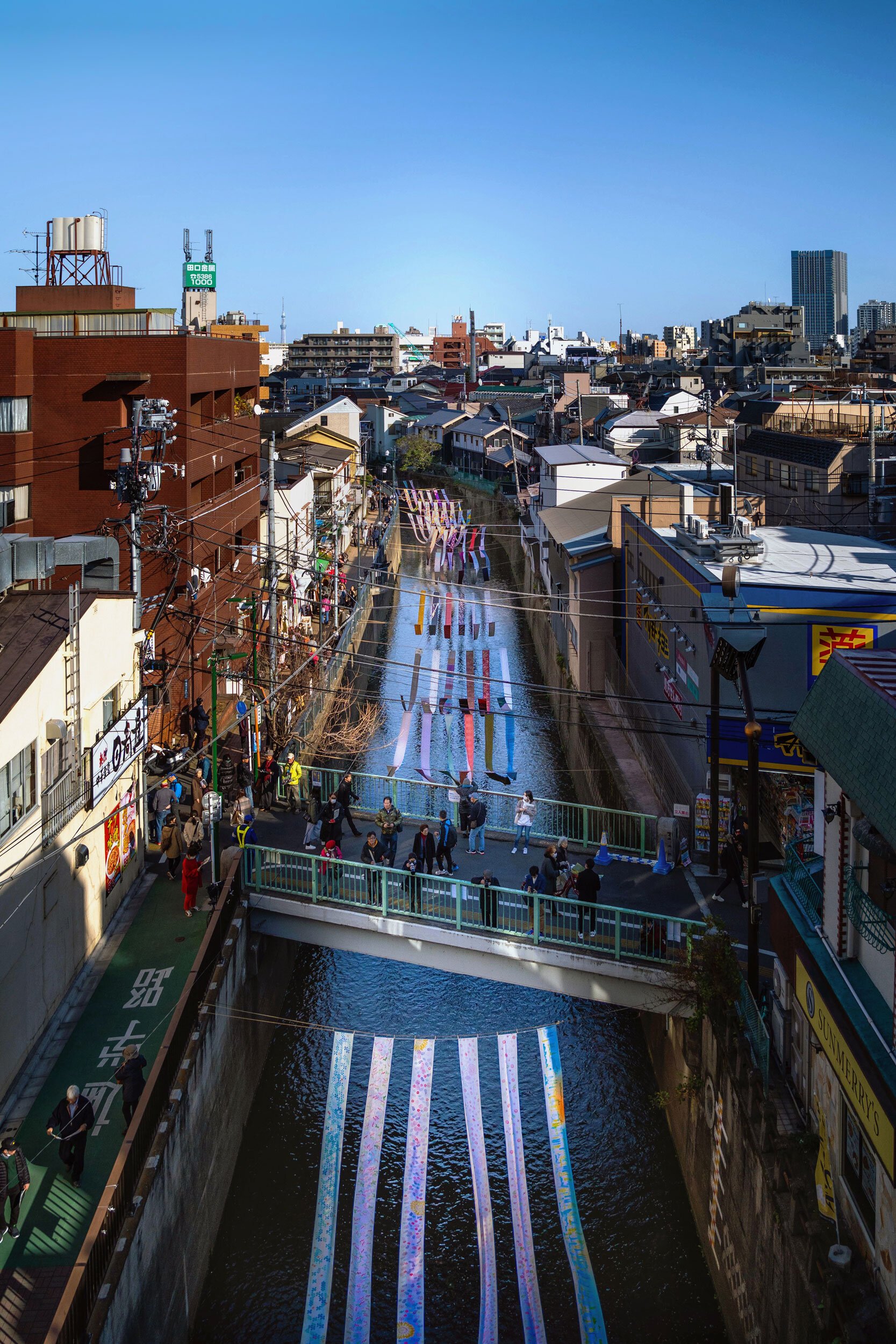









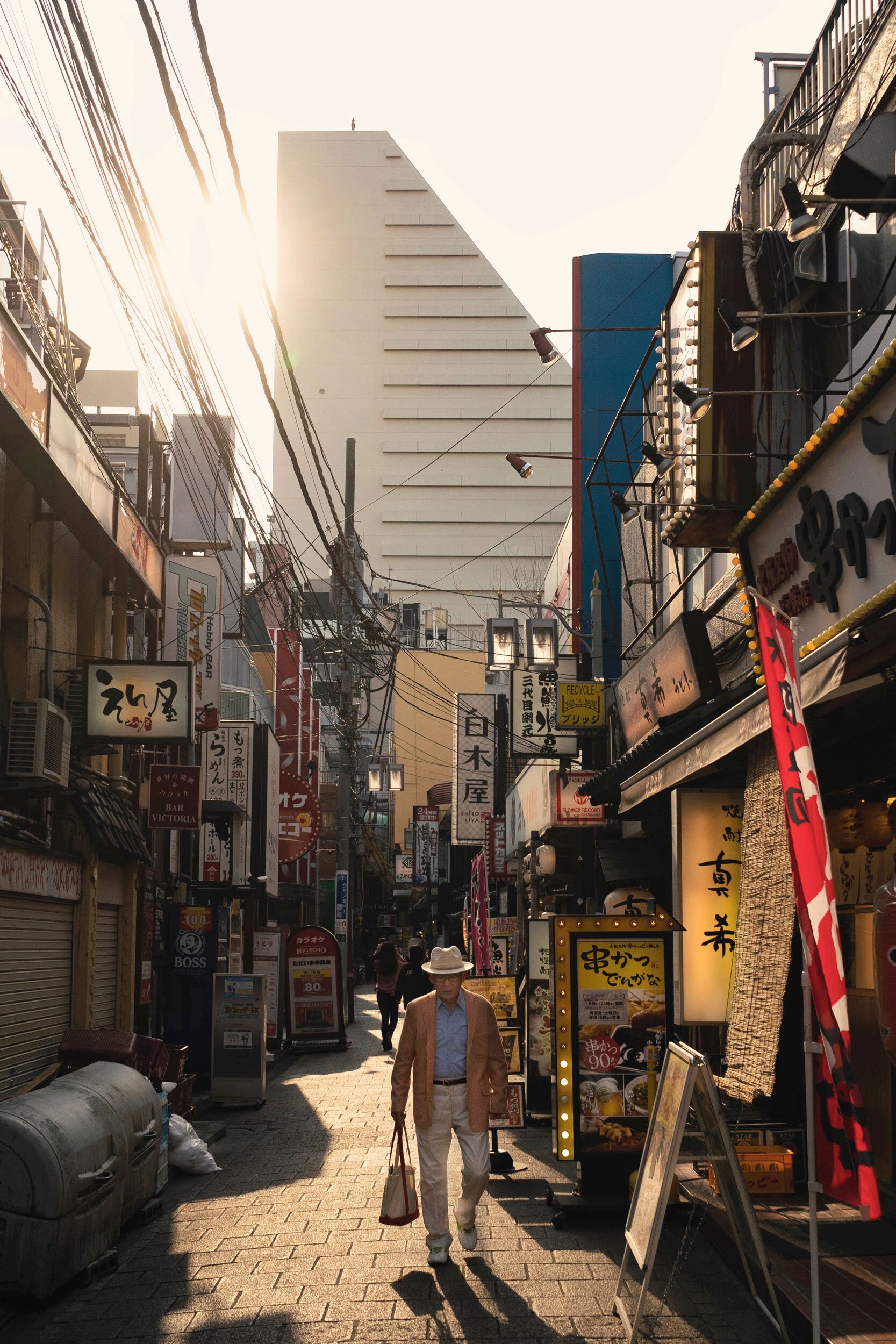

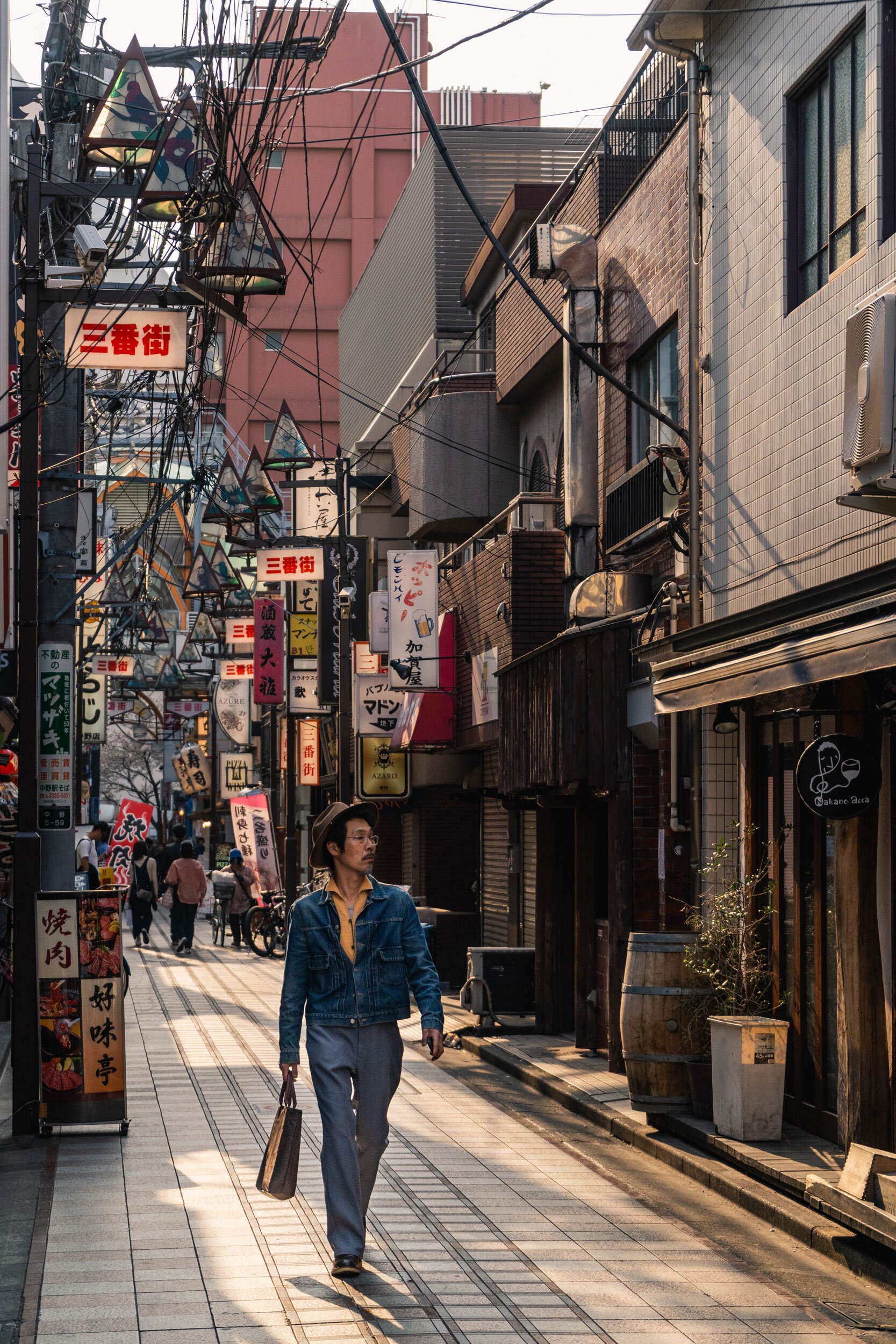

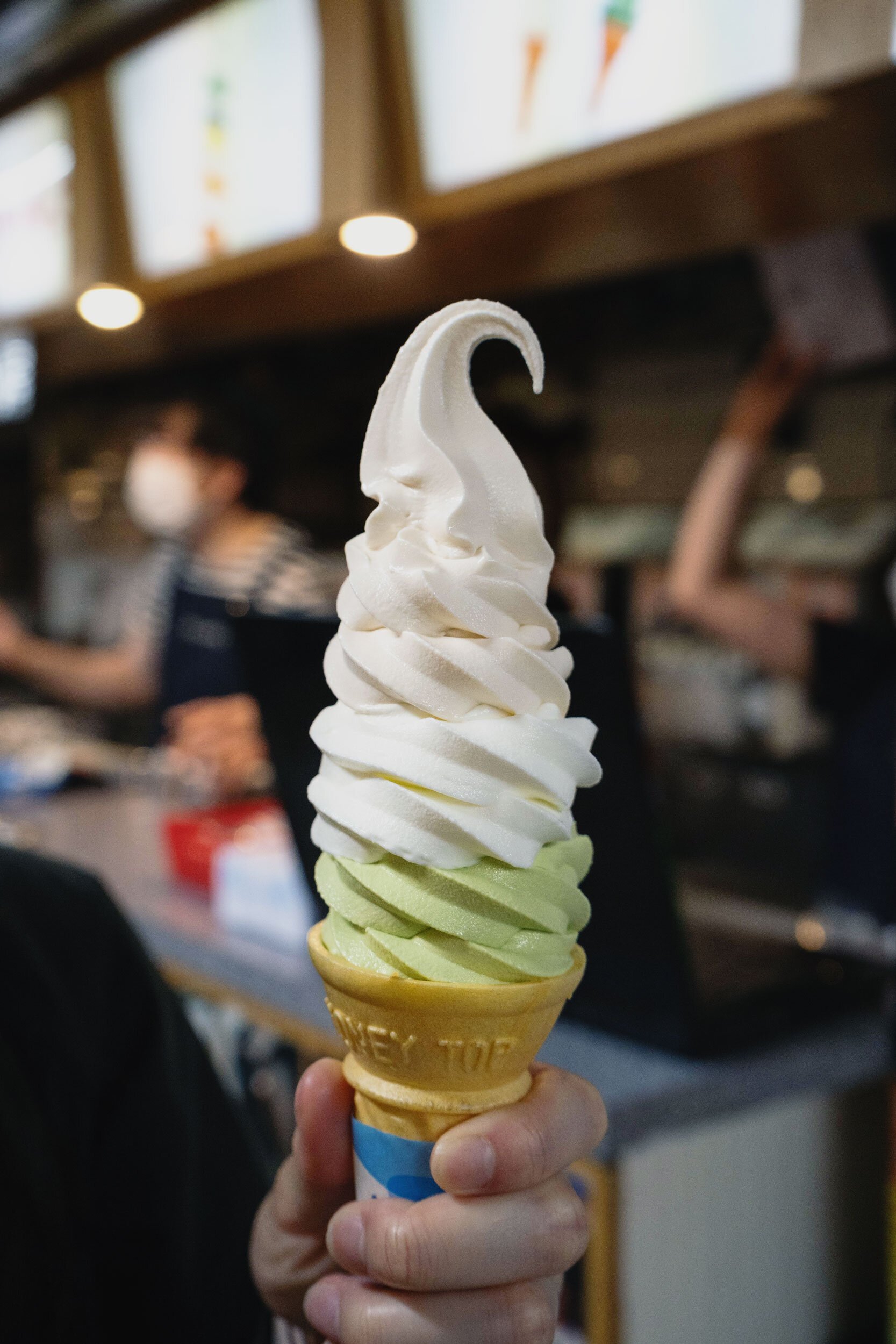



















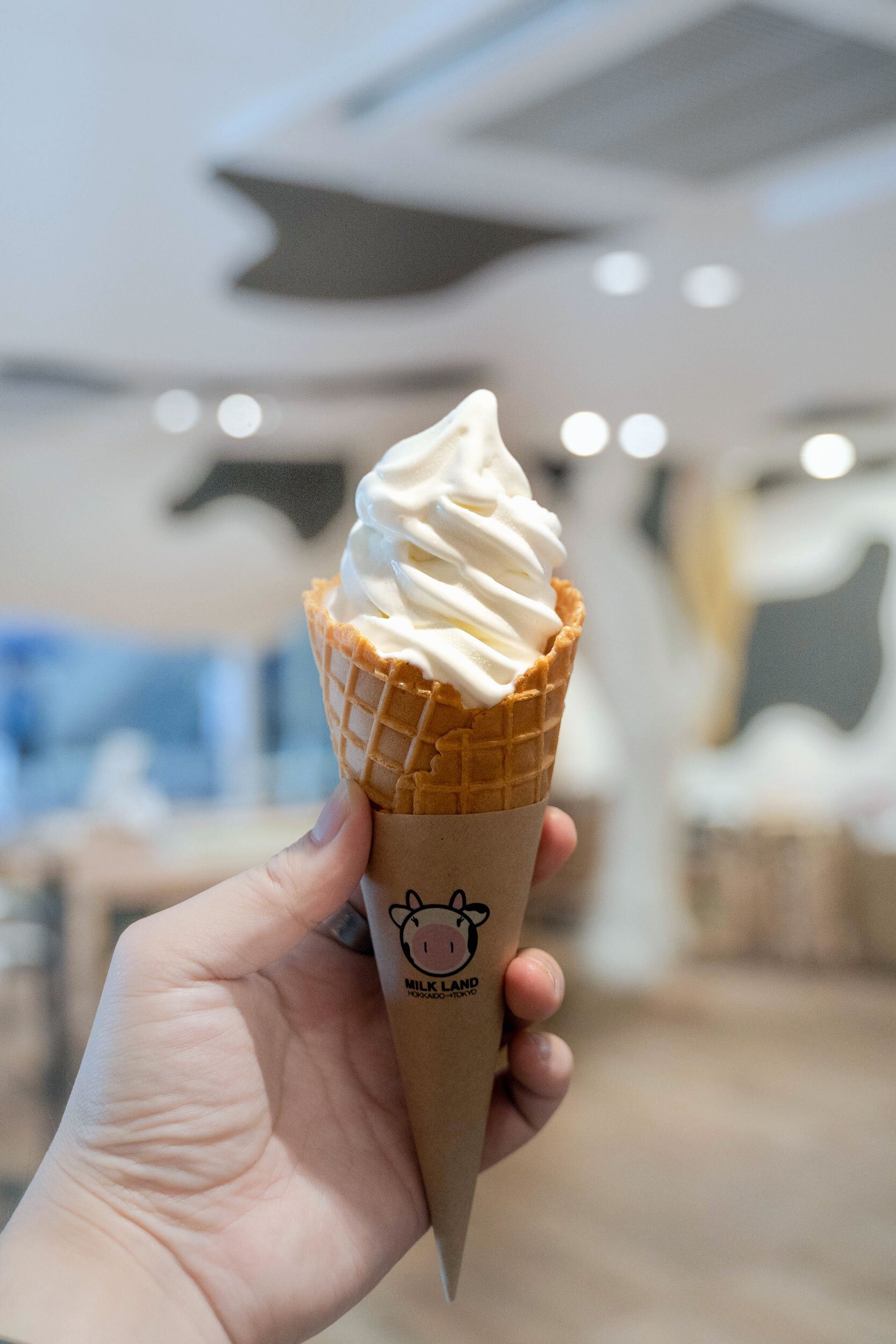









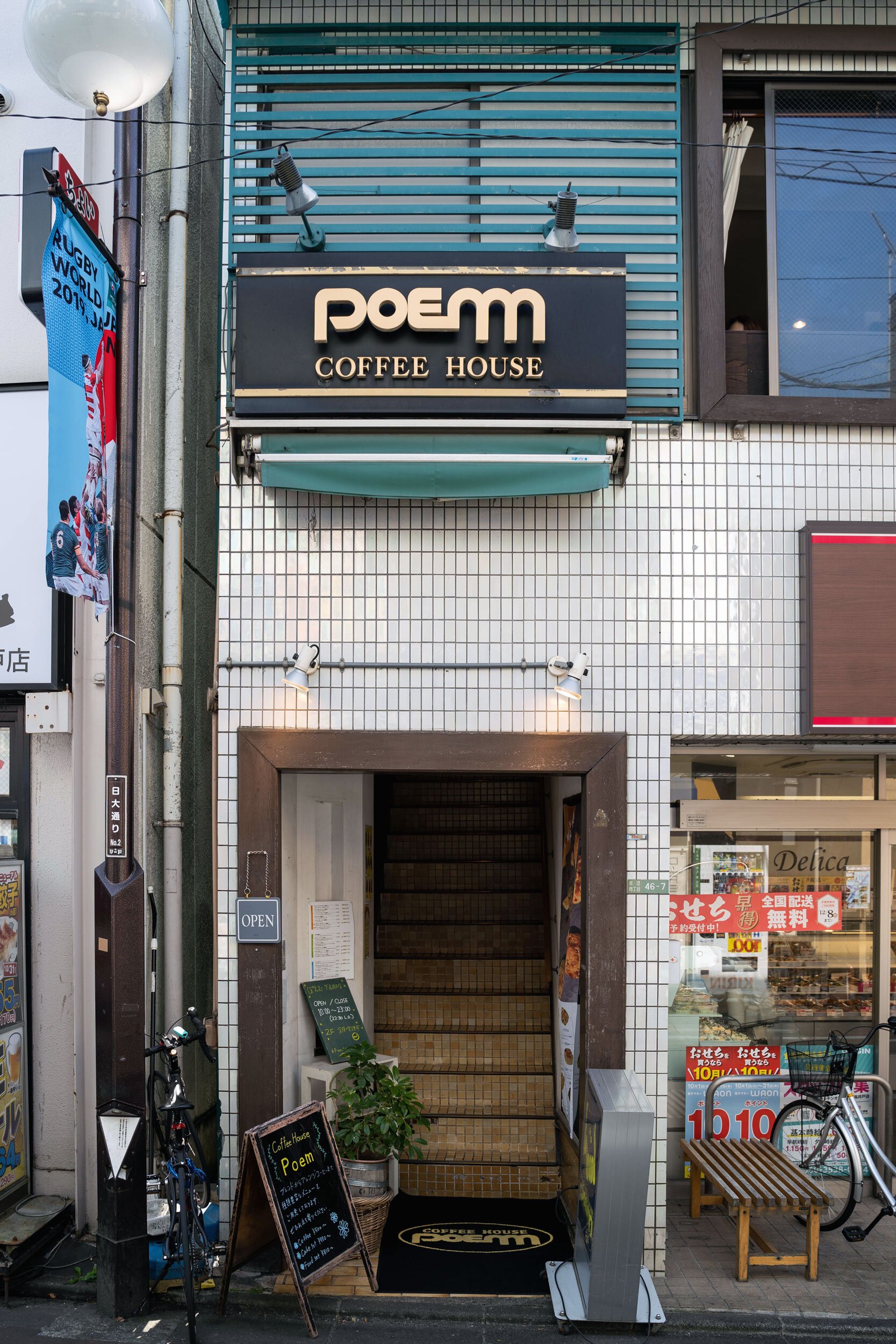
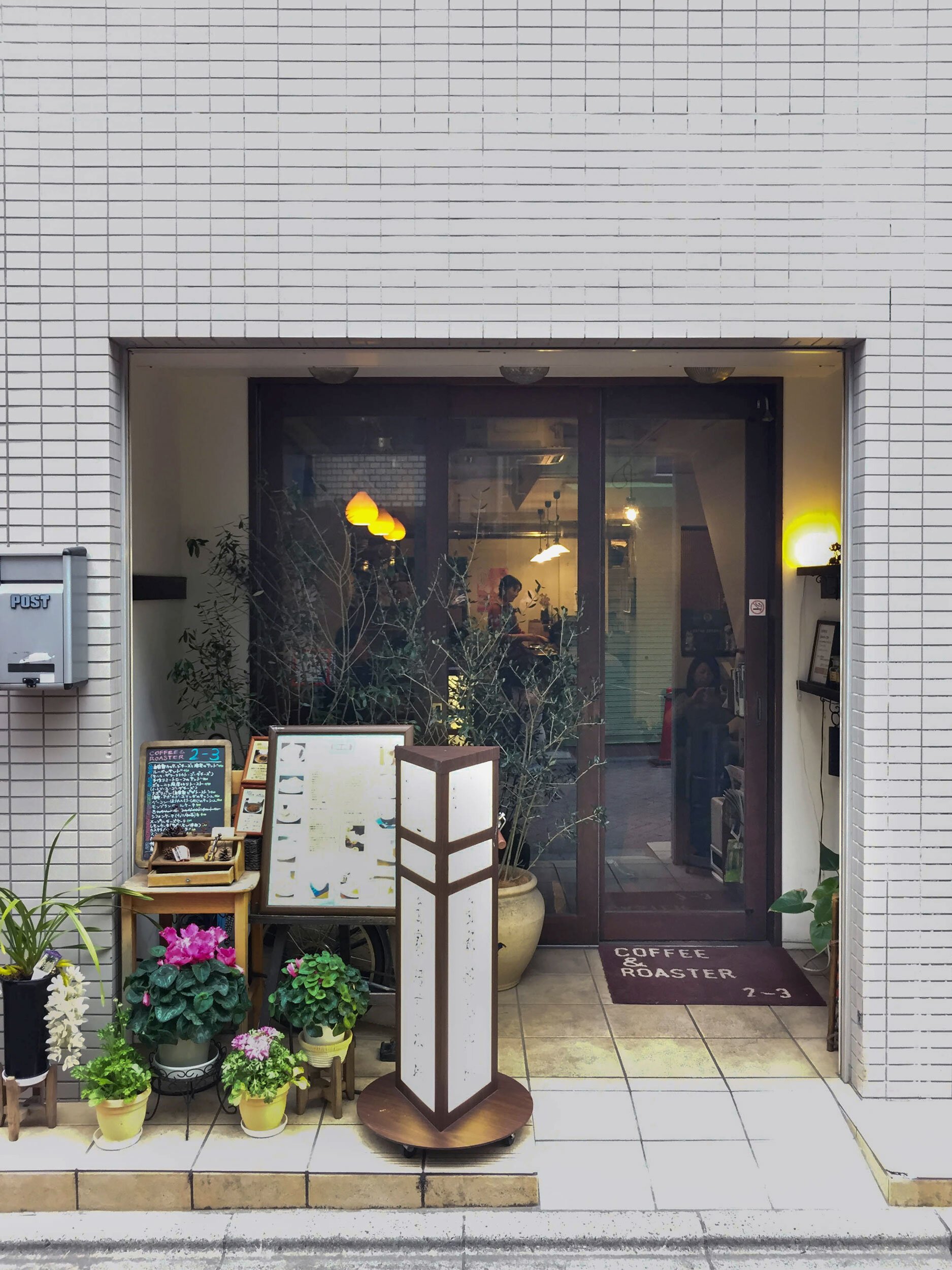


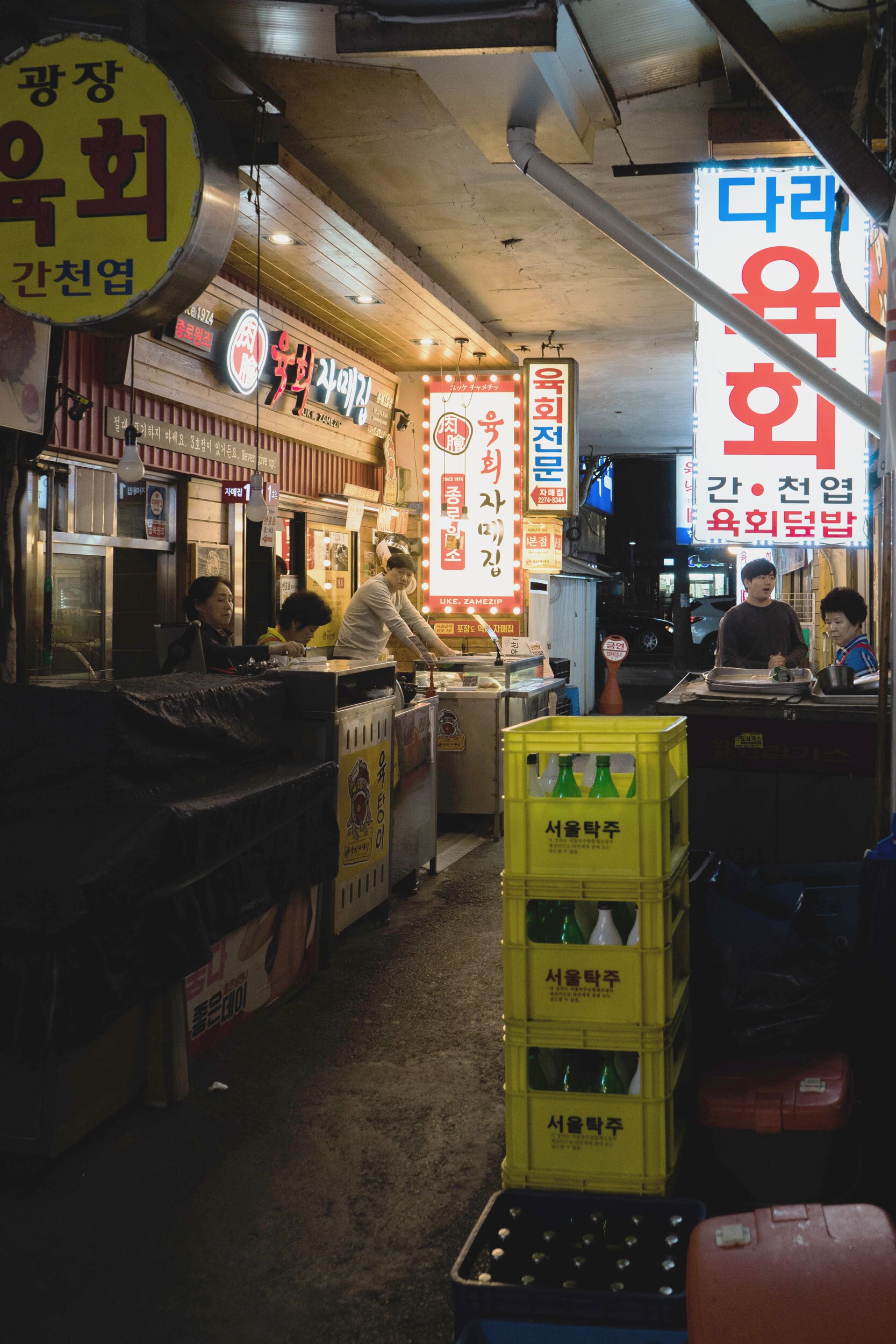













Visiting the Furano area of Hokkaido in the summer, a popular tourist destination for Japanese